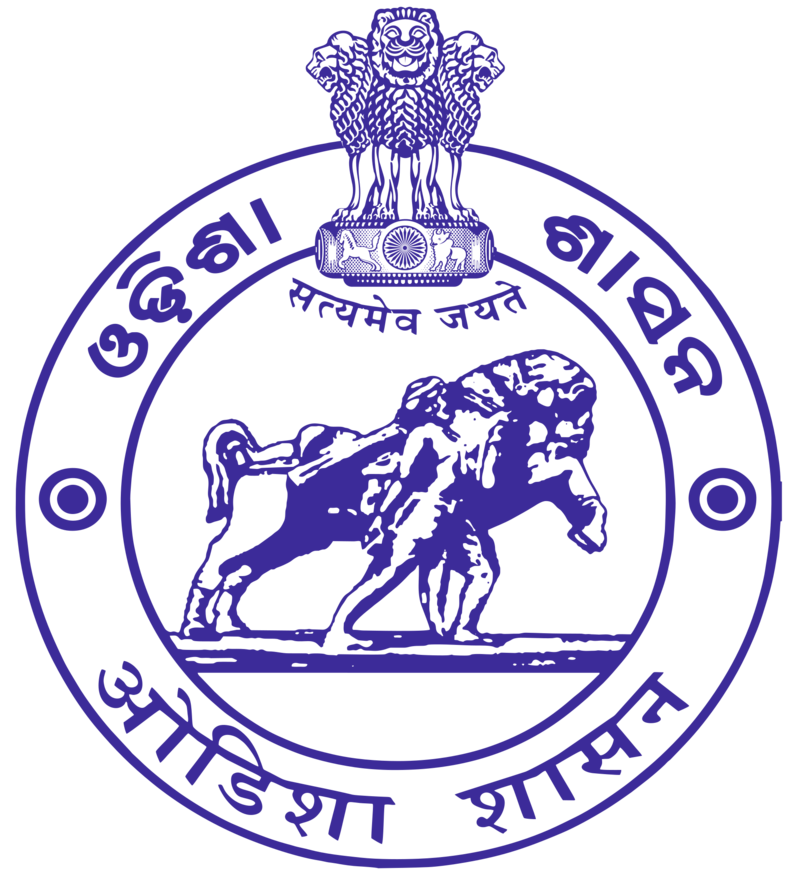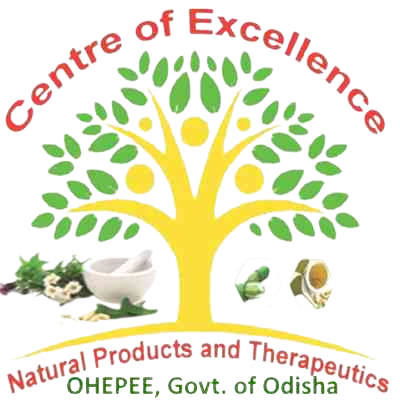| 1. Abelmoschus manihot L. Family: MALVACEAE Flowering & Fruiting: October-November Ecology: Occasional, on lower slopes and foot hills; a new introduction to the flora of Orissa. Description: Robust herbs, prickels minute. Leaves ovate to sub-irbicular, base cordate or hastate, lobes 3-7, triangular. Flowers in terminal racemes. Epicalyx lobes 4, ovate: margin pubescent. Corolla yellow with purple centre. Capsulr ovoid, densly bristly. Medicinal Uses: The bark is said to be emmenagogue. A paste of the bark is used to treat wounds and cuts, with new paste being applied every 2 - 3 days for about 3 weeks. In Nepal the root juice is warmed and applied to sprains. The juice of the flowers is used to treat chronic bronchitis and toothache. IUCN Status: |
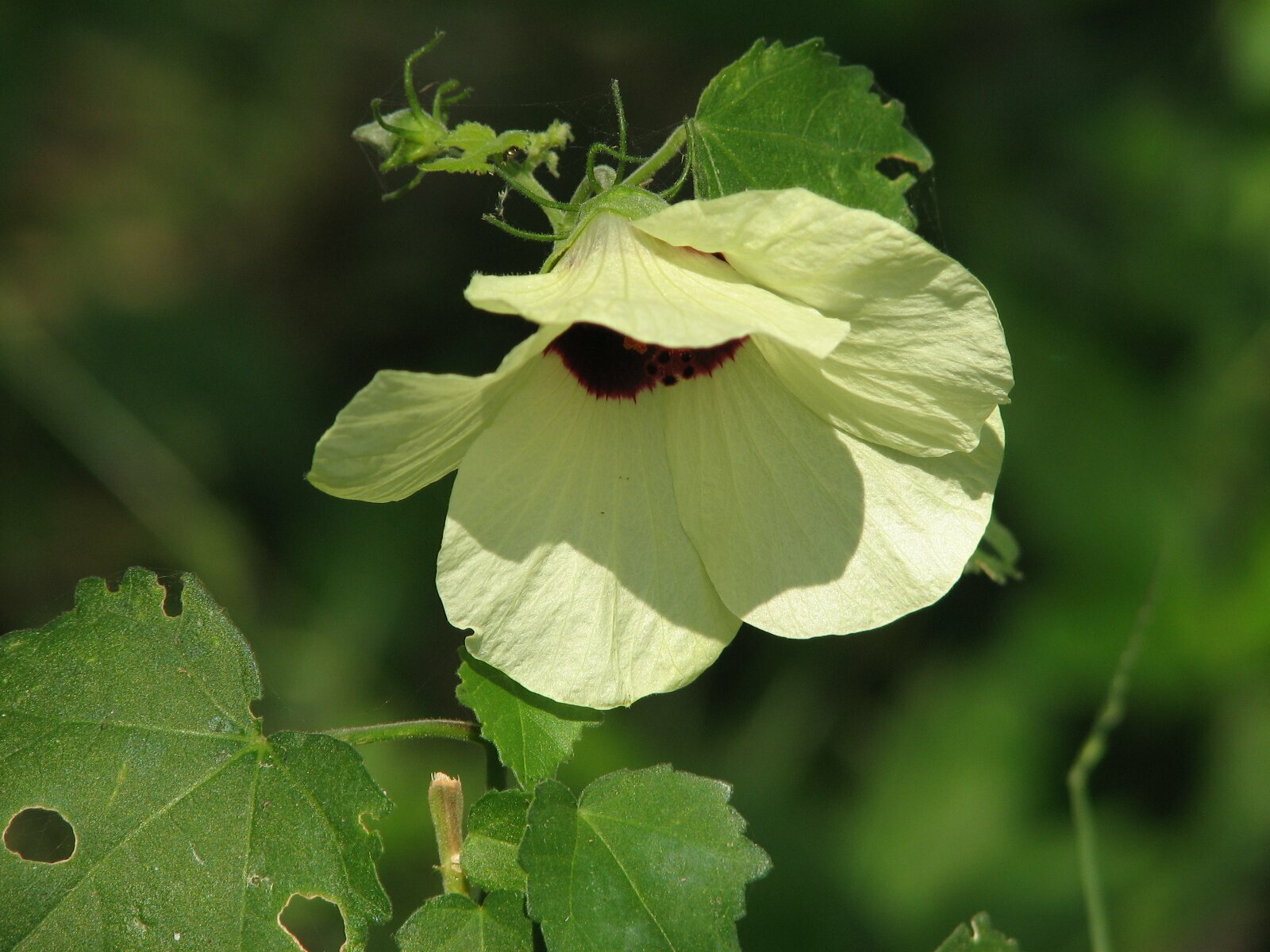 |
|||
| 2. Abelmoschus moschatus Family: MALVACEAE Flowering & Fruiting: August-October Ecology: Common on moist hill lopes. Description: Erect herbs, pubescent with retrorse bristle. Leaves suborbicular, 3-7 lobed, base hastate-cordate, lobes triangular-oblong, dentate. Flowers in terminal racemes. Epicalyx lobes linear, 10. Corolla yellow with purple centre. Medicinal Uses: The seeds are valued medicinally for their diuretic, demulcent and stomachic properties. They are also said to be stimulant, antiseptic, antispasmodic, cooling, tonic, carminative and aphrodisiac. An emulsion made from the seed is antispasmodic and is especially effective in the digestive system. The seeds are also chewed as a nervine, stomachic and to sweeten the breath. The pulverized seeds, mixed with powder, provide a useful remedy to treat prickly heat. The seeds are crushed and mixed with oil then rubbed on a feverish patient. IUCN Status: |
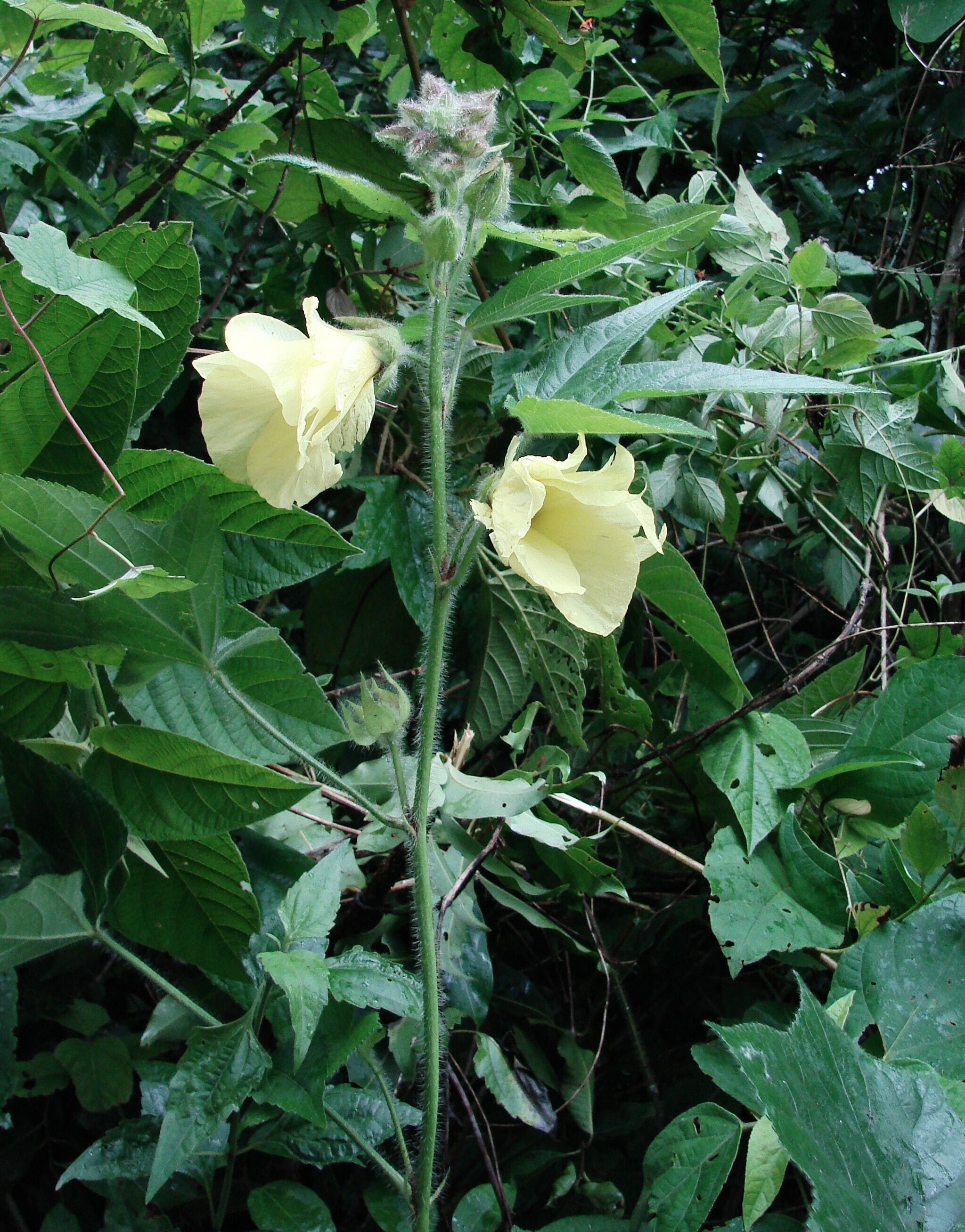 |
|||
| 3. Abutilon hirtum Lam. Sweet. Family: MALVACEAE Flowering & Fruiting: August-January Ecology: Common on wastelands Locality: Hardatal Description: Suffructicose, stellate-tomentose undershrubs. Leaves orbicular, cordate, obscurely crenate, shortly acuminate. Flowers axillay, solitary, orange coloured. Staminal column stellate-hairy at base. Mericarps 22-25 stellate pubescent. Medicinal Uses: The plant is used to ease childbirth and to expel the placenta. The plant is used as a poultice to ease the pain of kidney gravel and is often mixed with glutinous rice and applied to ulcers. The roots are antipyretic and also used in the treatment of cough and toothache. The leaves or flowers are applied to abscesses. IUCN Status: |
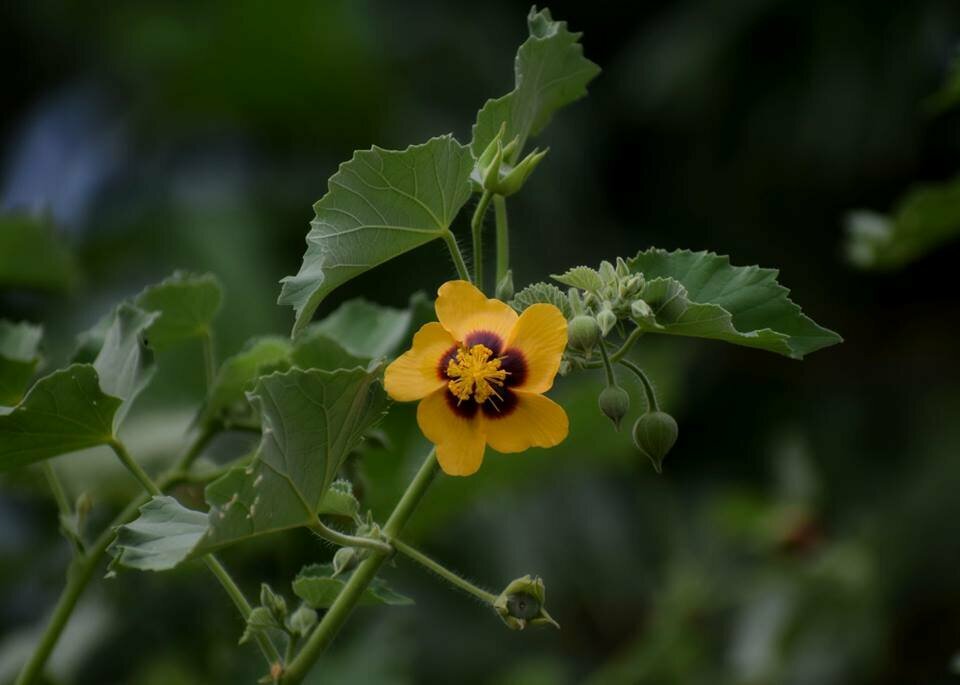 |
|||
| 4. Abutilon Indicum Linn. Sweet. Family: MALVACEAE Flowering & Fruiting: August-October Ecology: An aggressive coloniser of fallow lands. Description: Pubescent undershrubs. Leaves orbicular ovate, cordate, often shallowly 3-lobed dentate, hairy tomentose beneath. Flowers axillary, solitary, orange yellow. Capsule densely pubescent, many slaved. Seeds many, blackish. Medicinal Uses: The juice of the leaves is demulcent and diuretic. A decoction of the leaves is used to treat fever, colic, and for cleaning wounds and ulcers. A paste made of the leaves or seeds is applied to wounds, boils and ulcers. The seeds are laxative and are useful in cases of haemorrhoids and cough. An infusion of the root is used as a treatment for leprosy. It is taken internally as a cooling remedy for coughs and fevers. A decoction of the flowers is used to treat fever, colic, and for cleaning wounds and ulcers. IUCN Status: |
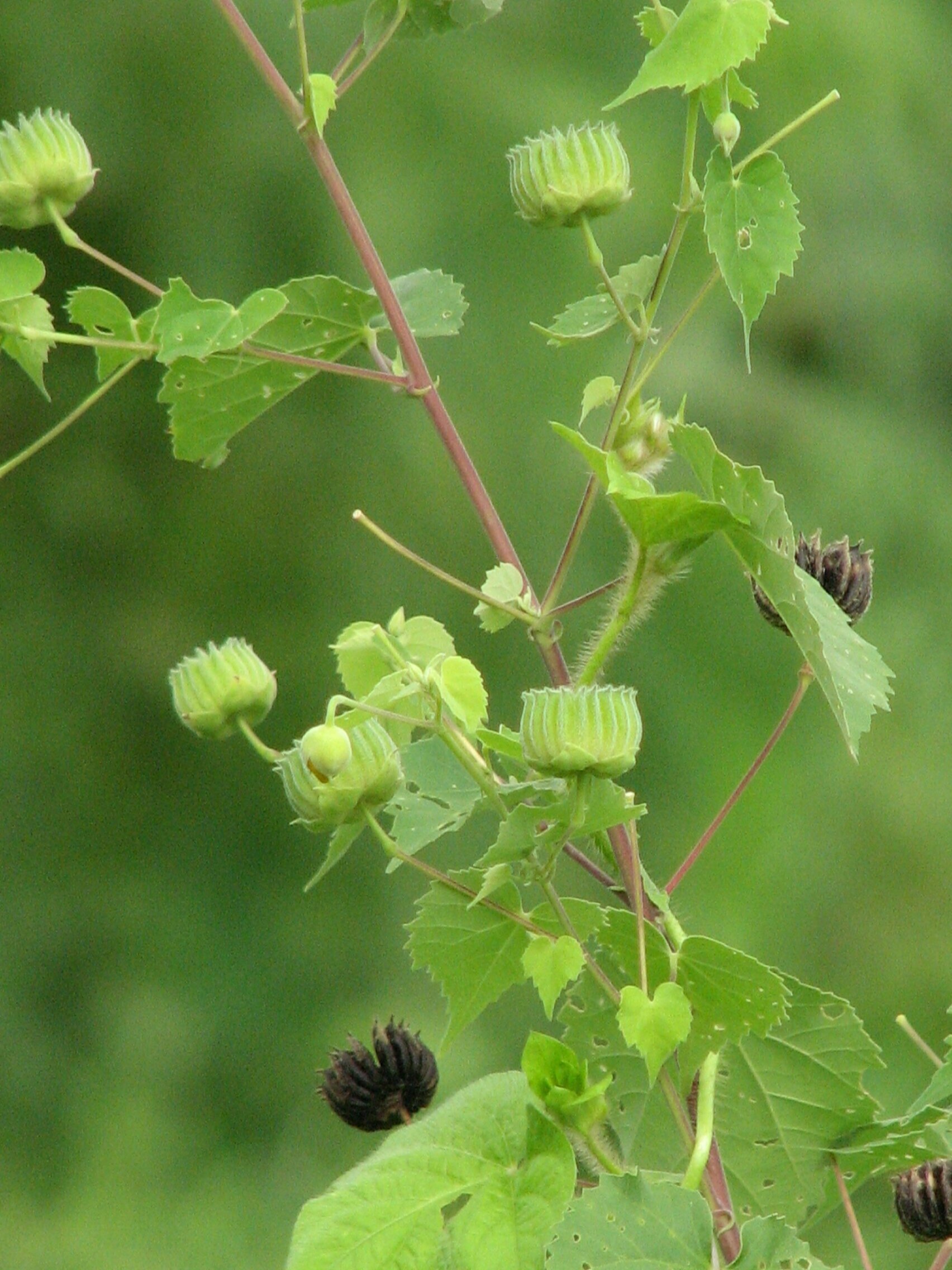 |
|||
| 5. Acacia pennata (Linn.) Family: FABACEAE Flowering & Fruiting: October-November Ecology: Common, in degraded forests and thickets Description: Prickly climbing shrubs. Petiole-gland oblong, below the middle of the petiole; leaflets 50-60 pairs,apex mucronate, Citlale along the margin. Flowers white, in 10-15cm. Long panicle, pod flat strap shaped. Medicinal Uses: It is beneficial in countering digestive disorders and helps in curbing stomach infections and pain. Hyper acidity and flatulence. Acacia Pennata is favorable in lowering the body cholesterole. It also provides relief from loose motions. IUCN Status: |
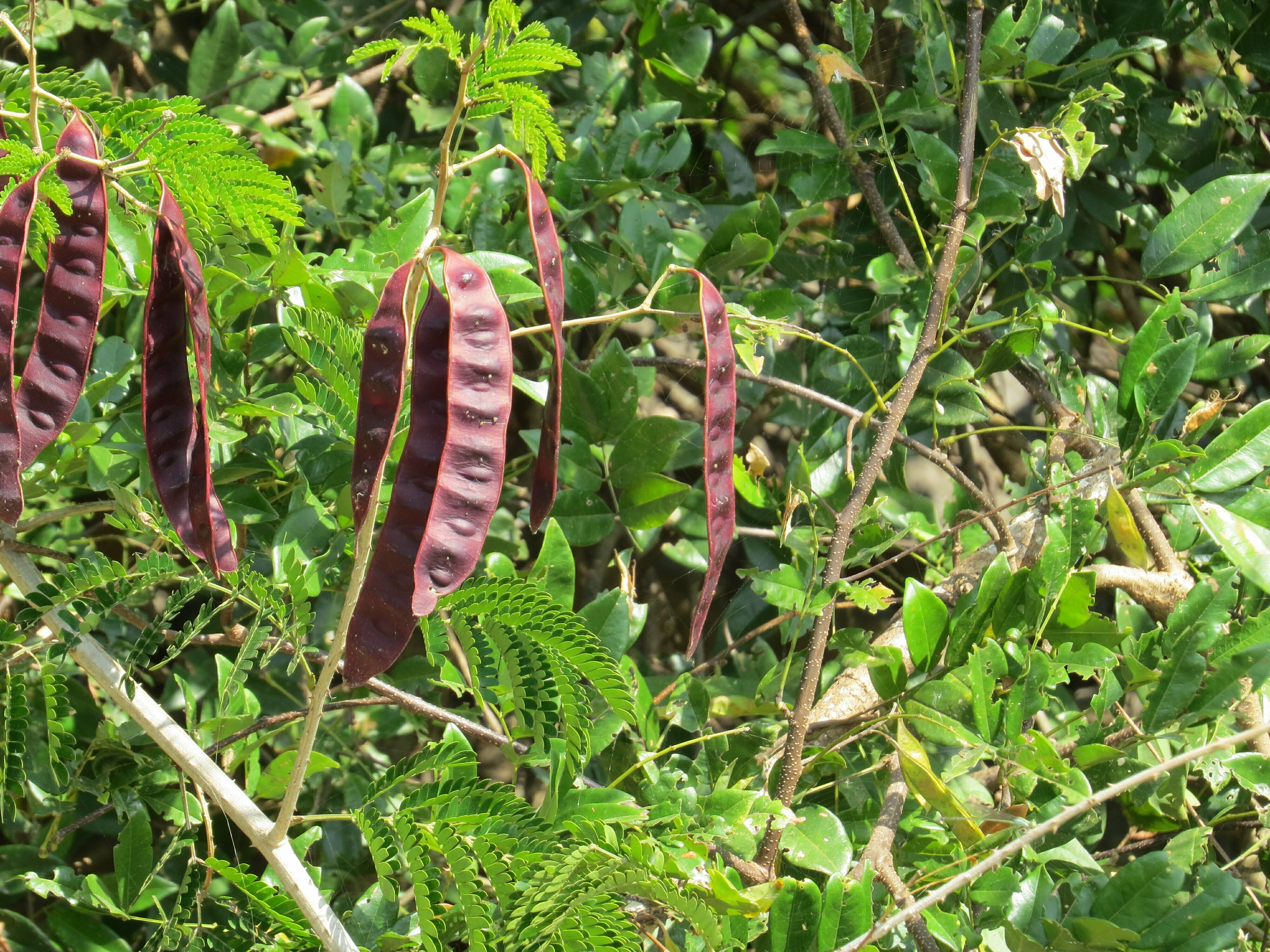 |
|||
| 6. Acacia nilotica (Linn.) Family: FABACEAE Flowering & Fruiting: August-September Fruiting: November-December. Ecology: Common, near foothills & settlements, often planted as avenue trees. Description: Trees, stipular spines straight, rachis grey-pubescent. Glands between first pair & terminal pair of pinnae; leaflets 18-25 pairs, subessile, obtuse. Flowers sessile, yellow. Corolla lobes densely ciliate. Pod thick, many-seeded. Medicinal Uses: In traditional medicine, Acacia Nilotica is widely used. This plant has anti-microbial, anti-plasmodial and antioxidant activity and used for treatment of human immunodeficiency virus, hepatitis C virus and cancer. It is useful for treatment of venereal diseases, nausea, burns and wounds, stomachache and diarrhea. IUCN Status: |
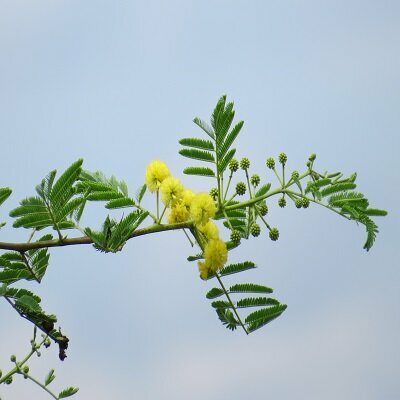 |
|||
| 7. Acanthospermum hispidum DC. Family: COMPOSITAE Fruiting: September-December. Ecology: Very common in waste lands and fallow fields. A Brazilian exotic, thoroughly naturalised. Locality: Nisarga nivas Description: Annual erect herb. Stem striate, dense pubescent. Leaves sessile, opposite, elliptic or ovate pubescent. Heads solitary, axillary radiate, shortly peduncled Involucral bracts few, tubular, 2-horned at tip. Florets pale yellow. Achenes compressed with 2-spines. Medicinal Uses: It is used in traditional medicine for the treatment of jaundice, malaria, vomiting, cephalgias, head-ache, abdominal pain, convulsions, stomachache, constipation, eruptive fever, snake bite, epilepsy, blennorrhoea, hepatobillary disorders, malaria, microbial infections and viral infections. IUCN Status: |
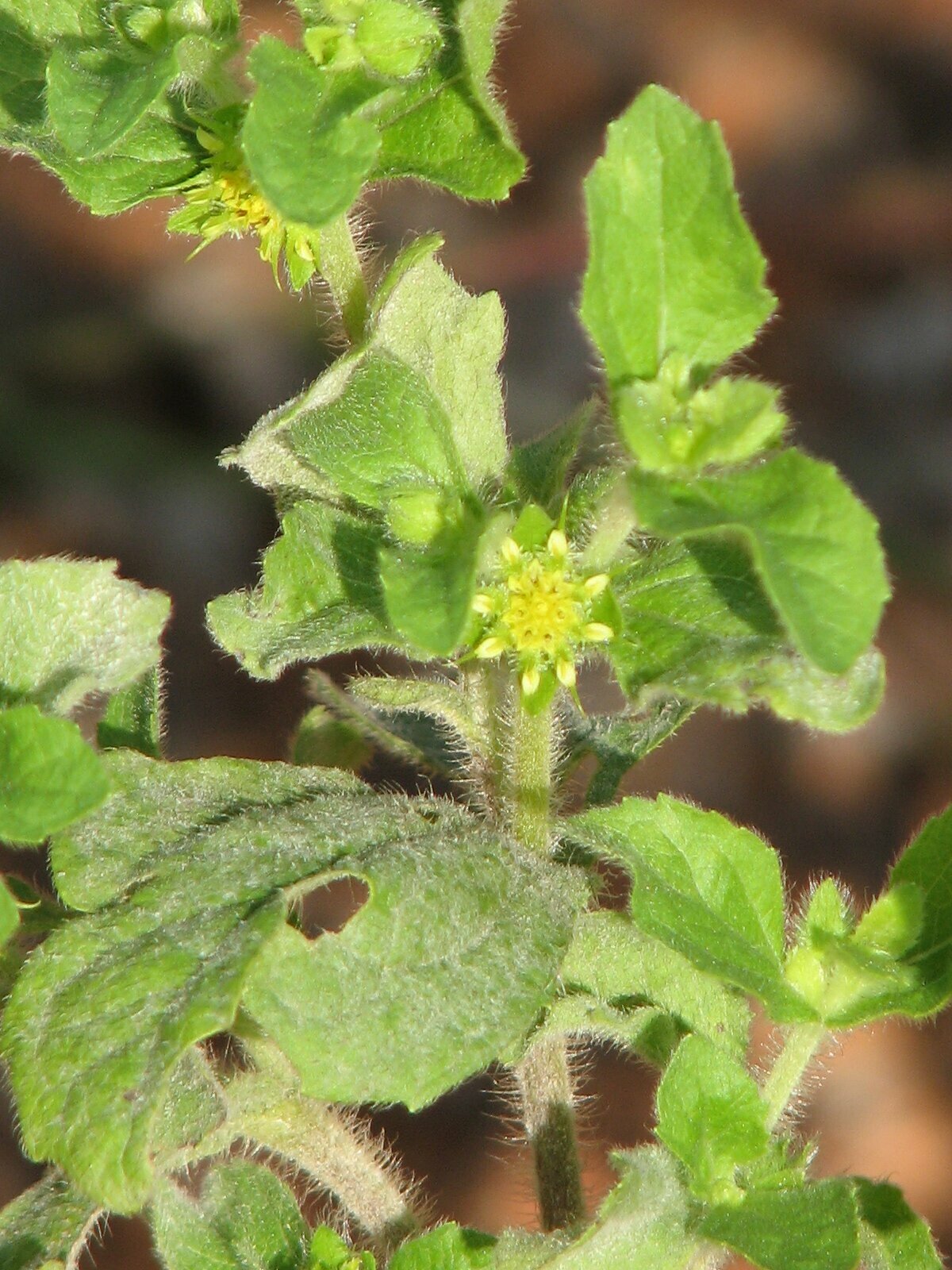 |
|||
| 8. Achyranthes aspera Linn Family: AMARANTHACEAE Fruiting: Round the year Ecology: Common weed of thickets & waste places. Locality: Kendubhata Description: Erect, woody herbs. Leaves opposite. sessile or petiolate, elliptic-lanceolate or obovate, obtuse, pubescent. Flowers bisexual, greenish; bracts & bracteoles spinescent. Stamens 5, alternating with pseudo-staminodes. Urticle indehiscent. Medicinal Uses: It possesses valuable medicinal proporties and used in treatment of cough, bronchitis and rheumatism, malarial fever, dysentery, asthma, hypertension and diabetes in indian folklorw. Present study was designed to evaluate anti-infammatory activity of an aqueous extracts of Achyranthes aspera. IUCN Status: |
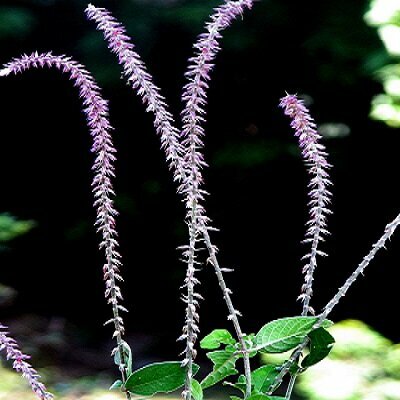 |
|||
| 9. Acmella paniculata Family: ASTERACEAE Local name: Akarkara, Bachh, Sunapatra Locality: Harishankar Flowering & Fruiting: September to January Ecology: It is not confined to wetlands but is frequently found in boggy ground, margins of ponds. Description: Panicled Spot Flower. Panicled Spot Flower is a hairless annual herb. Stems are branched, erect or ascending, up to 30 cm or taller. Heads are disc-like, without any ray-florets, solitary, in leaf axils or at the end of branches, 8.4-12.5 mm tall, 6.9-10 mm in diameter. Medicinal Uses: It is used for food and medicine, and as an insecticide and an ornamental plant. It’s common use as an herbal remedy for toothache and oral infections earned it the nickname toothache plant. IUCN Status: |
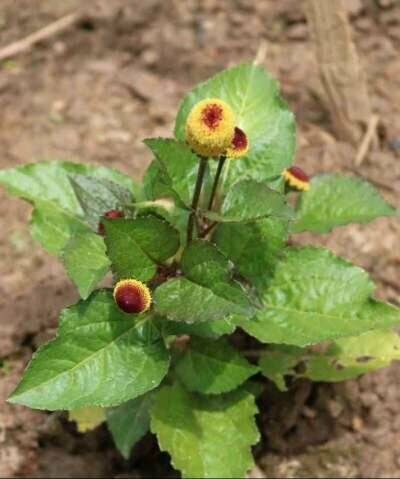 |
|||
| 10. Acorus calamus Family: ARACEAE Local name: Bach, Gad, Devnasan Locality: Nrusinghnath Flowering & Fruiting: July–August Ecology: They are often found at pond margins or along fast-moving streams Description: Acorus calamus is a reed-like, aquatic plant with a pungent smell that has been used medicinally since biblical times. It has many traditional uses all over the world and is well-known as a digestive and carminative. Medicinal Uses: The root (rhizome) is used to make medicine. Despite safety concerns, calamus is used for gastrointestinal (GI) problems including ulcers, inflammation of the stomach lining (gastritis), intestinal gas (flatulence), upset stomach and loss of appetite (anorexia). IUCN Status: |
 |
|||
| 11. Acrocephalus hispidus (Linn.) Family: LAMIALES Flowering & Fruiting: September-December. Ecology: Occasional, in damp places under shade Description: Erect annuals. Stem pubscent. Leaves ovate or lanceolate, dentate, nearly glabrous. Flower minute, pink, in dense subglobose, beads with imbricating bracts. Calyx hairy, tubular in fruit. Nutlets shooth. IUCN Status: |
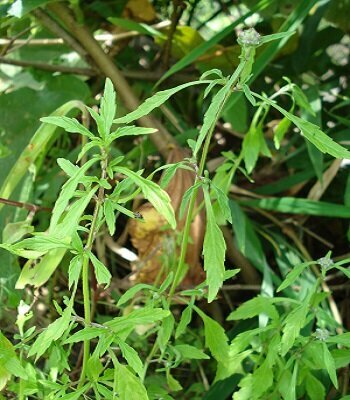 |
|||
| 12. Aristolochia indica Linn. Family: ARISTOLOCHIACEAE Flowering: June-October. Fruiting: November-January. Ecology: Abundant in hedges and bushes. Description: Twining herbs with subterranean root-stock. Leaves alternater oblong to pandur iform palmately 3-5 nerved, acuminate. Flowers irregular in axillary racemes. Perianth tubular greenish at inflated base, purple or brown above, constricted above into a neck. Ovary 6- celled. Capsule oblong, 6-valved Medicinal uses: Despite serious safety concerns, aristolochia is used to prevent seizures, increase sexual desire, boost the immune system, and start menstruation. It is also used to treat snakebite, intestinal pain, gallbladder pain, arthritis, gout, achy joints (rheumatism), eczema, weight loss, and wounds. IUCN Status: |
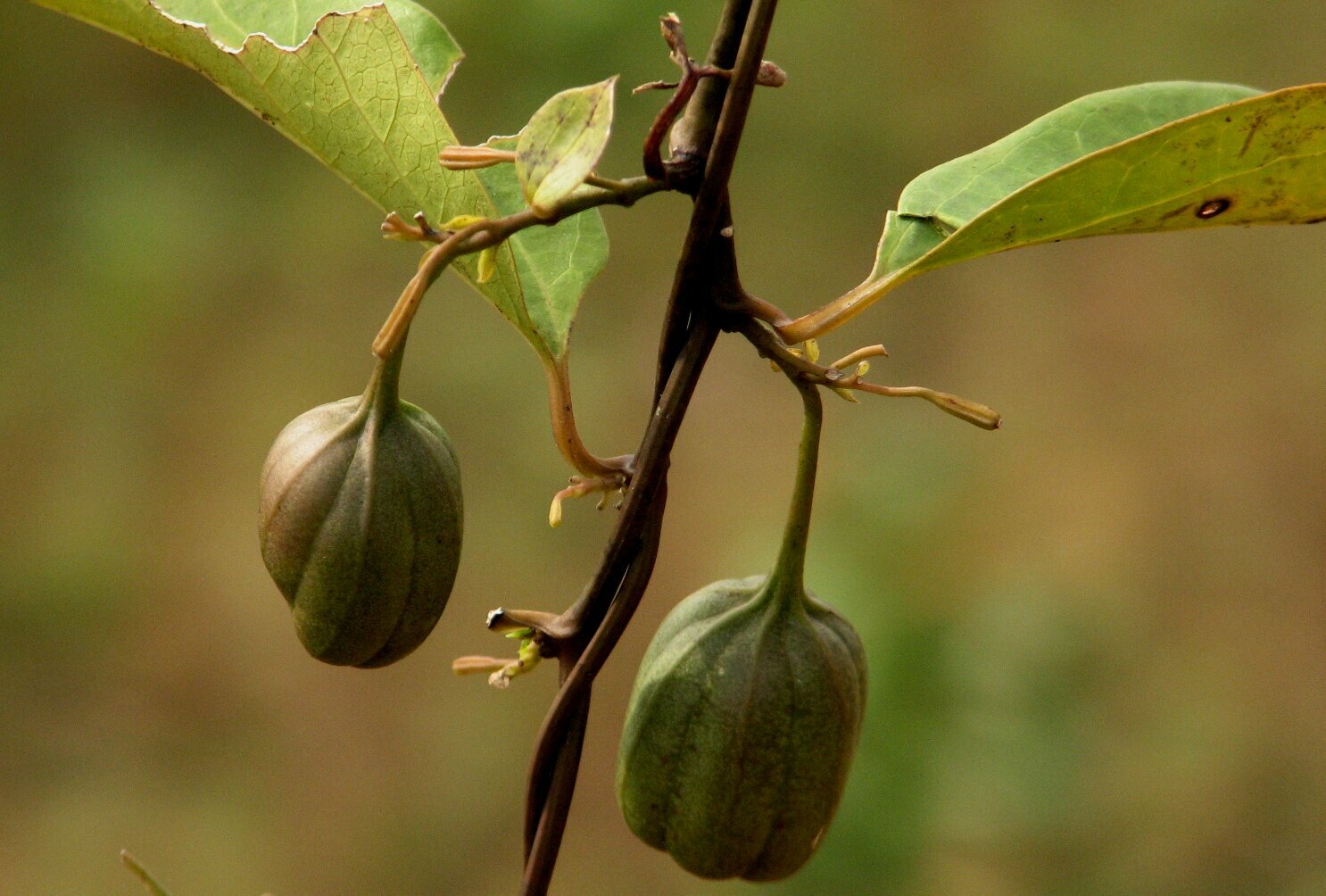 |
|||
| 13. Adenosma indianum (Lour.) Family: PLANTAGINACEAE Fruiting: August-November. Ecology: Common in marshy waste places and grass lands. Description: Erect, pubescent herbs. Leaves elliptic, serrate, cuneate, ciliate. Flowers blue, in axillary or terminal heads. Stamens didynamous. Capsule ovoid, narrow, 2-valved. IUCN Status: |
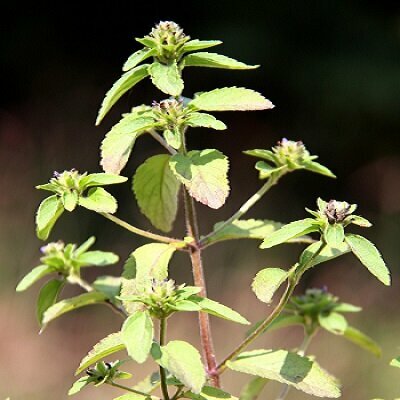 |
|||
| 14. Aegle marmelos Linn. Family: RUTACEAE Local name: Belo, Bel Flowering & Fruiting: May – July Ecology: Common in moist deciduous forest, often planted in temple premises. Description: Small thorny trees. Leaves 3-foliolate; leaflets ovate to elliptic, glandular punctate, subcrenulate. Flowers greenish-white in axillary panicles. Fruit large, globose, rind woody. Seeds wooly, pubescent in a yellow sticky aromatic pulp. Medicinal uses: This plant possesses antidiarrheal, antimicrobial, antiviral, radioprotective, anticancer, chemopreventive, antipyretic, ulcer healing, antigenotoxic, diuretic, antifertility and anti-inflammatory properties. IUCN Status: |
 |
|||
| 15. Aeschynomene indica Linn. Family: FABACEAE Flowering & Fruiting: August-December. Ecology: Abundant in undrained localities & rice fields. Description: Glabrascent herbs. Leaflets linear-oblong about 30 pairs, obtuse. Flowers yellowish with pink striations in Viscid racemes. Keel petals nearly equalling other petals. Pods flattened slightly curved, 4-9 seeded. IUCN Status: |
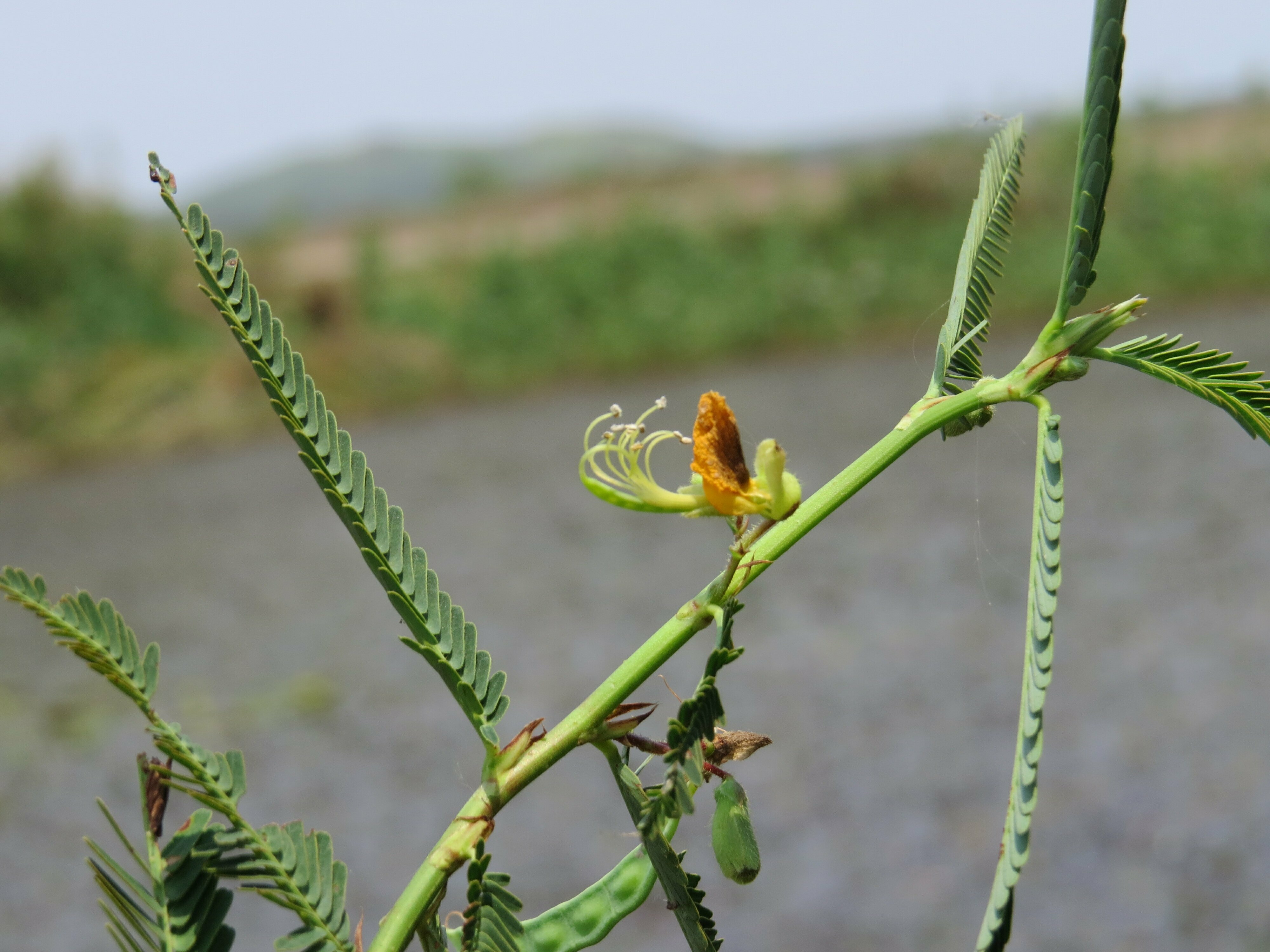 |
|||
| 16. Aganosma caryophyllata (Roxb. ex Sims) Family: APOCYNACEAE Flowering: June - August Fruiting: December - February Ecology: Occasional, on rocky lateritic slopes. Locality: Satyama pat. Description: Large climbers; young shoots tomentose. Leaves ovate or elliptic, base rounded, nerves reddish, acute. Flowers white, fragrant, in terminal corymbose cymes. Follicles curved, yellow tomentose when young. Medicinal uses: In pitta diseases its leaves are used. It induces Vomiting. Flowers are used in eye disorders. Flower bud paste is used in skin infection between the toes. IUCN Status: |
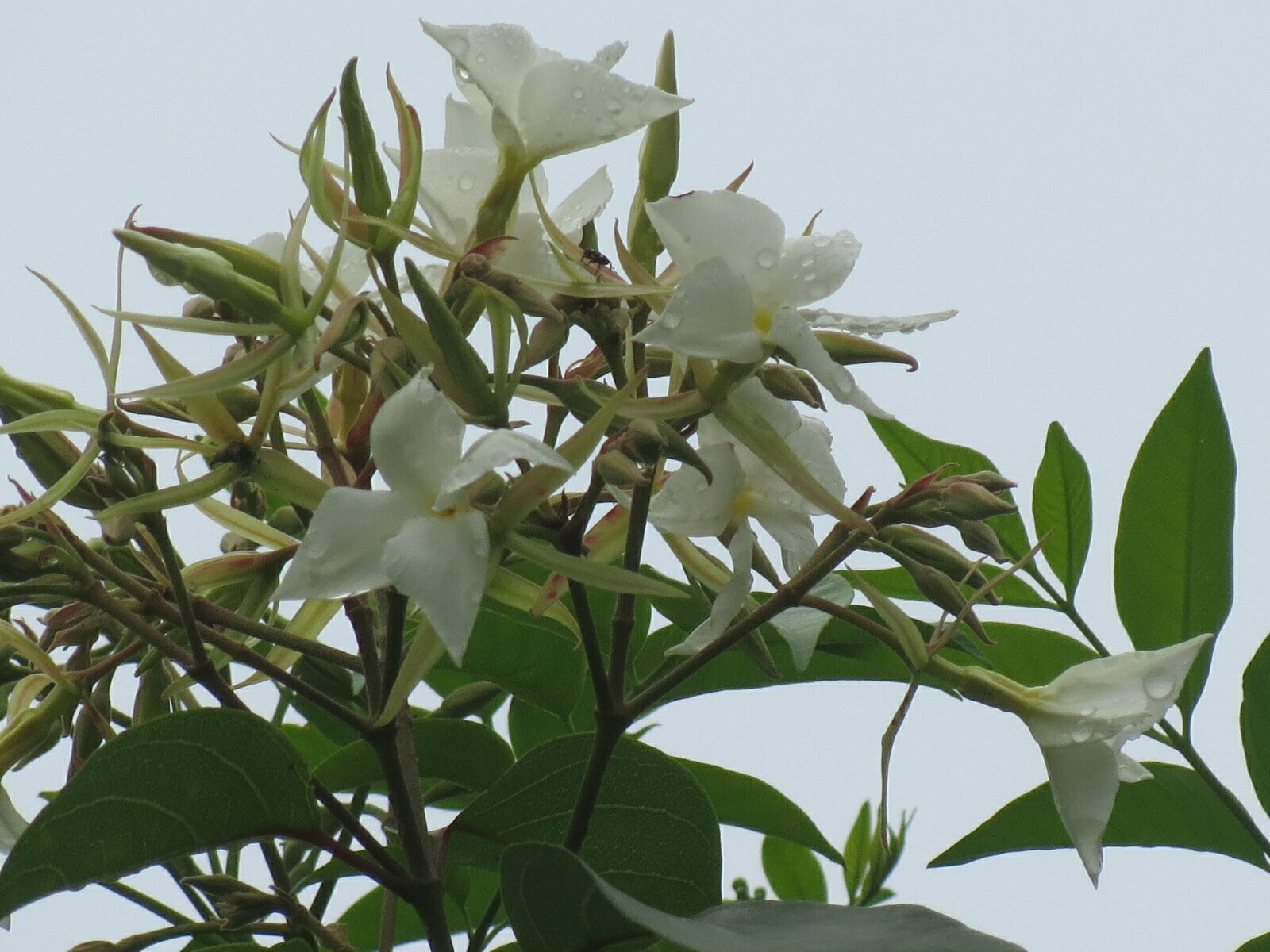 |
|||
| 17. Ageratun conyzoides (L.) Family: ASTERACEAE Local Name: Gandhri, Pukhu sungha, Udasmari Flowering and fruiting: Round the year Ecology: Occurs often gregariously in moist and shady places. Locality: Harishankar Description: Erect herb, young stems pubscent. Leaves ovate, acute at apex, acute to obtuse or subcordately rounded at base, pubscent on both surfaces, glandular dorsally, 2-10 cm long, 1-56 cm wide, on petiole. 1-5 cm long, heads corymbs 4-6mm long, involucre subglabrous, bracts acute-acuminate, 3mm long, florets about 75 per head. Medicinal uses: The plant is used for the treatment of Pneunomia, Burns, Fever, Rheumatism, Headache, Colic, Colds, Diarrhea, Rheumatism, Spasms. A decoction of the leaves is used for the treatment of brain malaria and common malaria. IUCN Status: |
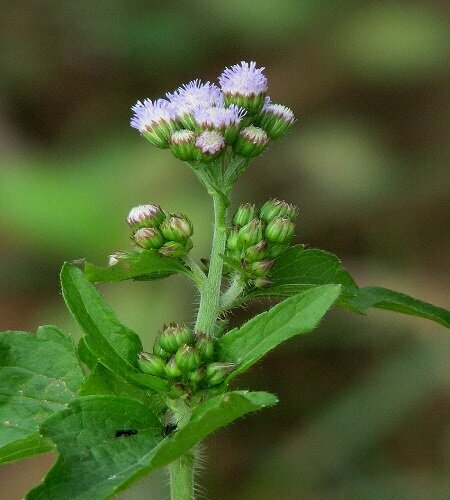 |
|||
| 18. Alangium salvifolium (Linn.f.) Family: ASTERACEAE Flowering: March - April Fruiting: May -June Ecology: Common in waste place and road side near foot hill. Locality: Harishankar Description: Small, deciduous, thorny trees. Leaves alternate, elliptic oblong, acute, palminerved. Flowers creamy fragrant, in axillary fascicled cyme on leafless branches. Drupe subglobose, pulpy, black when ripe. Medicinal uses: This medicinal plant is used for the treatment of hemorrhoids, rheumatic arthritis, loose stools, herpes, blood disorders etc. Each part of the tree has several medicinal values. Seeds are aphrodisiac and provide strength to the body. IUCN Status: |
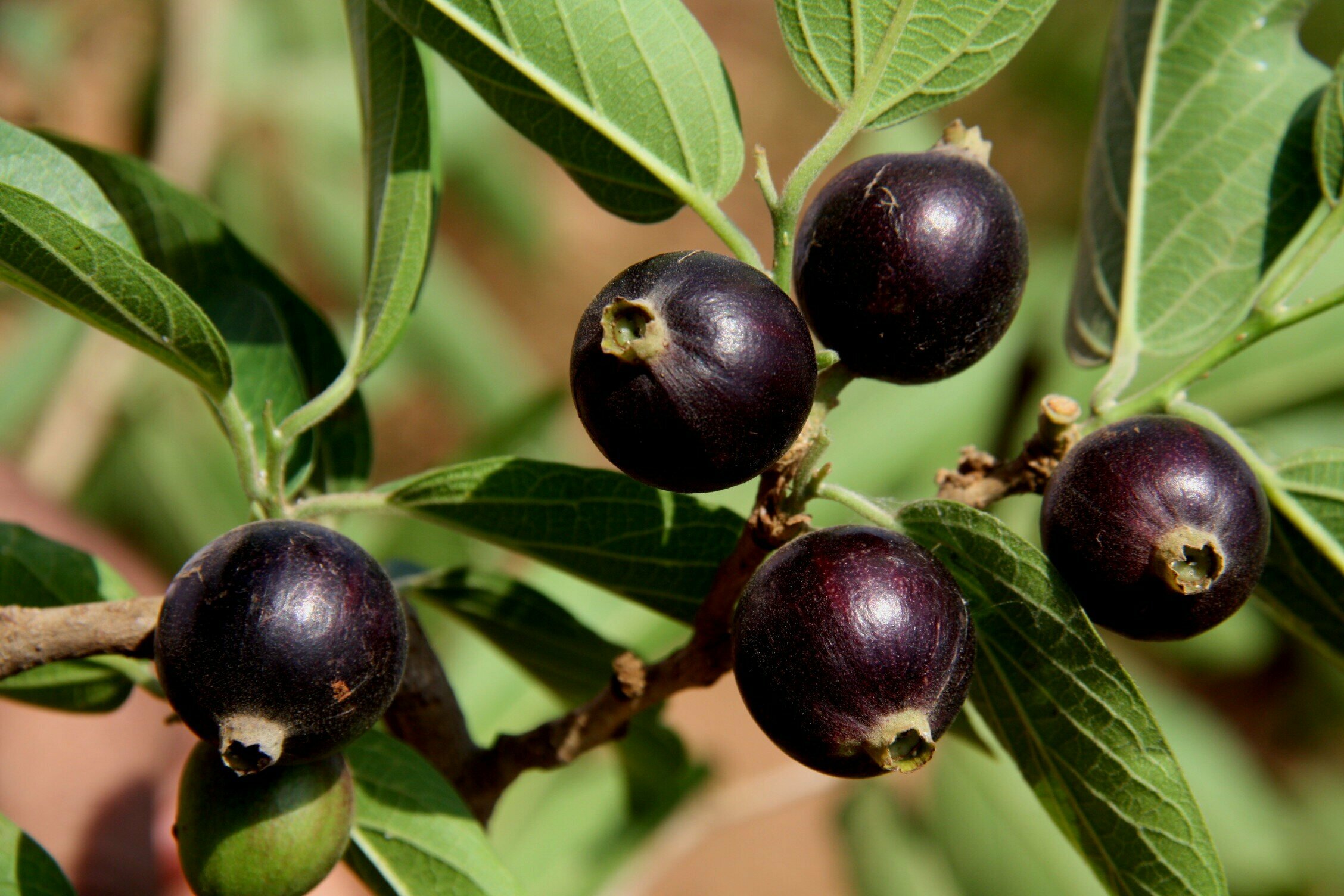 |
|||
| 19. Albizia lebbeck (Linn.) Family: FABACEAE Flowering: January-March. Fruiting: April-January. Ecology: Commonly planted along road sides, wild in drier areas. Locality: Harishankar Description: Branches puberulous. Pinnae 2 pairs: - leaflets obliquely oblong, apex retuse or obtuse, shining, midrib eccentric Heads l- few, fascicled. Corolla twice as long as calyx. Pod flat. Medicinal uses: Lebbeck is an astringent, also used by some cultures to treat boils, cough, to treat the eye, flu, gingivitis, lung problems, pectoral problems, is used as a tonic, and is used to treat abdominal tumors. The bark is used medicinally to treat inflammation. IUCN Status: |
 |
|||
| 20. Alloteropsis cimicina (L.) Stapf Family: POACEAE Flowering & Fruiting: July-October. Ecology: Common grass on hill slopes during monsoon. Locality: Harishankar Description: Ascending, pubescent Culm soft. Leaves ovate lanceolate, base amplexicaul, acute; sheath hairy. Spikes 4-6, digitate, rachis angled. Glume ii dense ciliate,ivawned.Grain suborbicular IUCN Status: |
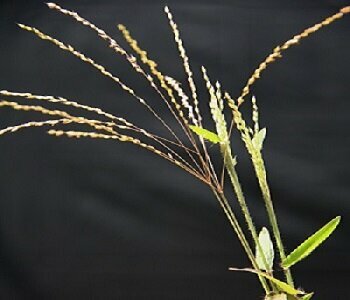 |
|||
| 21. Alstonia scholaris L. Family: APOCYNACEAE Local Name: Chhatiyona Locality: Harishankar Description: The latex obtained from the bark is considered to be powerfully tonic, vermifuge. It has been used for treating neuralgia and toothache. It is also used as an antimalarial drug. The latex is drunk in small amounts as a poison antidote. The latex is applied externally to ulcers and for rheumatic pains. It is applied to sores in order to keep maggots out. The leaves are used for treating beriberi, dropsy and congested liver. A poultice made from the leaves has been reported as a good remedy against skin diseases.An infusion of the crushed leaves is used to clean infected wounds. IUCN Status: |
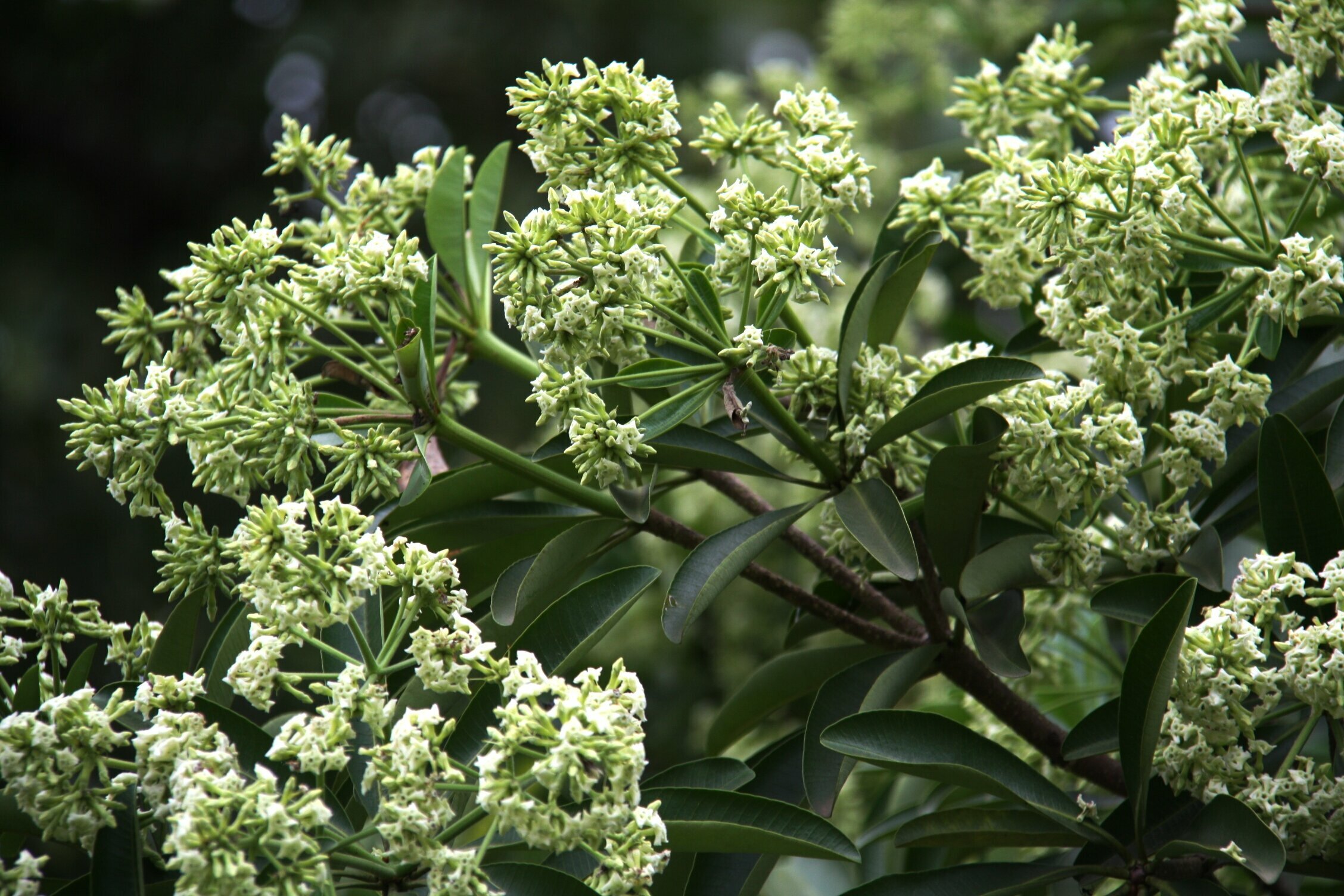 |
|||
| 22. Alternanthera sessilis (L.) Family: AMARANTHECEAE Local Name: Madaranga Ecology: Common in wet lands Description: Alternanthera sessilis is a many-branched, perennial, sometimes annual, herb. It can be erect or prostrate, rooting at the nodes, or may occasionally be a floating or emergent aquatic. In flooded areas, it is a floating herb reaching several meters in length. Medicinal uses: Alternanthera sessilis is used in local medicine in Taiwan, often in mixtures with other medicinal plants, to treat hepatitis, tight chest, bronchitis, asthma and other lung troubles, to stop bleeding and as a hair tonic. IUCN Status: |
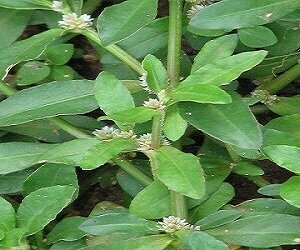 |
|||
| 23. Alternanthera pungens Family: AMARANTHECEAE Flowering & fruiting: October-January. Ecology: Not common, on open rocky slopes. Description: Stem covered with shaggy hairs. Leaves broadly ovate or oblanceolate, cuneate, punctate, apex rounded, pubescent. Flower heads axillary and/or terminal. Tepals glochidiate hairy on back. IUCN Status: |
 |
|||
| 24.Alysicarpus vaginalis Linn. Family: FABACEAE Flowering & Fruiting: October-December. Ecology: Abundant in fallow fields and wasteplaces. Description: Diffuse herbs. Branches glabrous. Leaves ovate, elliptic to oblong-lanceolate, very variable. Racemes downy. Corolla pinkish, changing to pale-violet. Pods subterete, 4-6 seeded, beaked. Medicinal uses: A decoction of the roots is used as a treatment against coughs. The roots are chewed as a treatment for fevers. An infusion of the powdered seeds is used as a remedy for dysentery and colic. The whole plant is used medicinally for treating sword wounds and bone fractures. IUCN Status: |
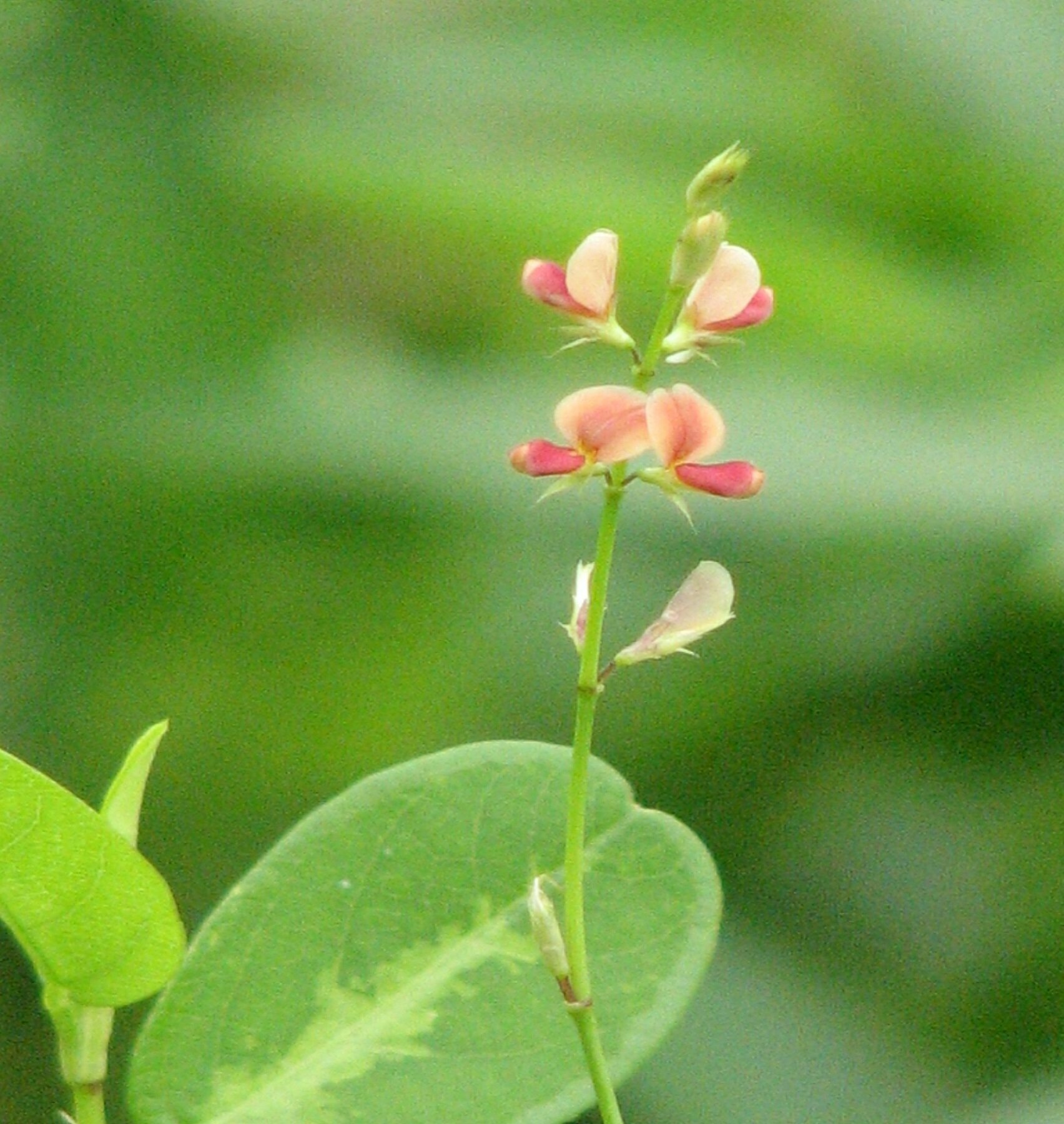 |
|||
| 25. Amorphophallus paeniifolius (Dennst.) Family: ARECACEASE Flowering: April-June Fruiting: November-December Ecology: Occasional at foot hills, in scrub forests; sometimes cultivated. Description: Stout herbs. Leaf 1, 3-partite, lateral segments 2 furcate, pinnatifid, lobes oblong; petiole stout, rough, tubercled.Spathe tube campanulate below with white. Styles purple. Appendag dark purple, sinuately lobe, very large. Berries obovoid, red. Medicinal uses: The root is carminative, restorative, stomachic and tonic. It is dried and used in the treatment of piles and dysentery. The fresh root acts as an acrid stimulant and expectorant, it is much used in India in the treatment of acute rheumatism. Some caution is advised, see the notes above on toxicity. The stem is cut, and the inside of the stem eaten raw, in the treatment of snakebites. The sap from the petiole is fermented and drunk as a treatment for diarrhoea and dysentery. IUCN Status: |
 |
|||
| 26. Anacardium occidentale Linn. Family: ANNACARDIACEAE Flowering: March-April. Fruiting: April-July. Ecology: Planted on denuded hills and wastelands. Description: Leaves elliptic obovate. Rounded emarginated. Flowers polygymous, white in appeared hairy panicles. Stamnes basically connate into a tube. Fruits indehiscent, reniform, attached to swollen. Fleshy raceptacles. Medicinal uses: The leaves of this plant are used as treatment for reducing fever, malaria, toothache, and gum problems and the bark used to reduce blood sugar levels and to detoxify snake bites. Cashew syrup is used as relief from coughs and colds. IUCN Status: |
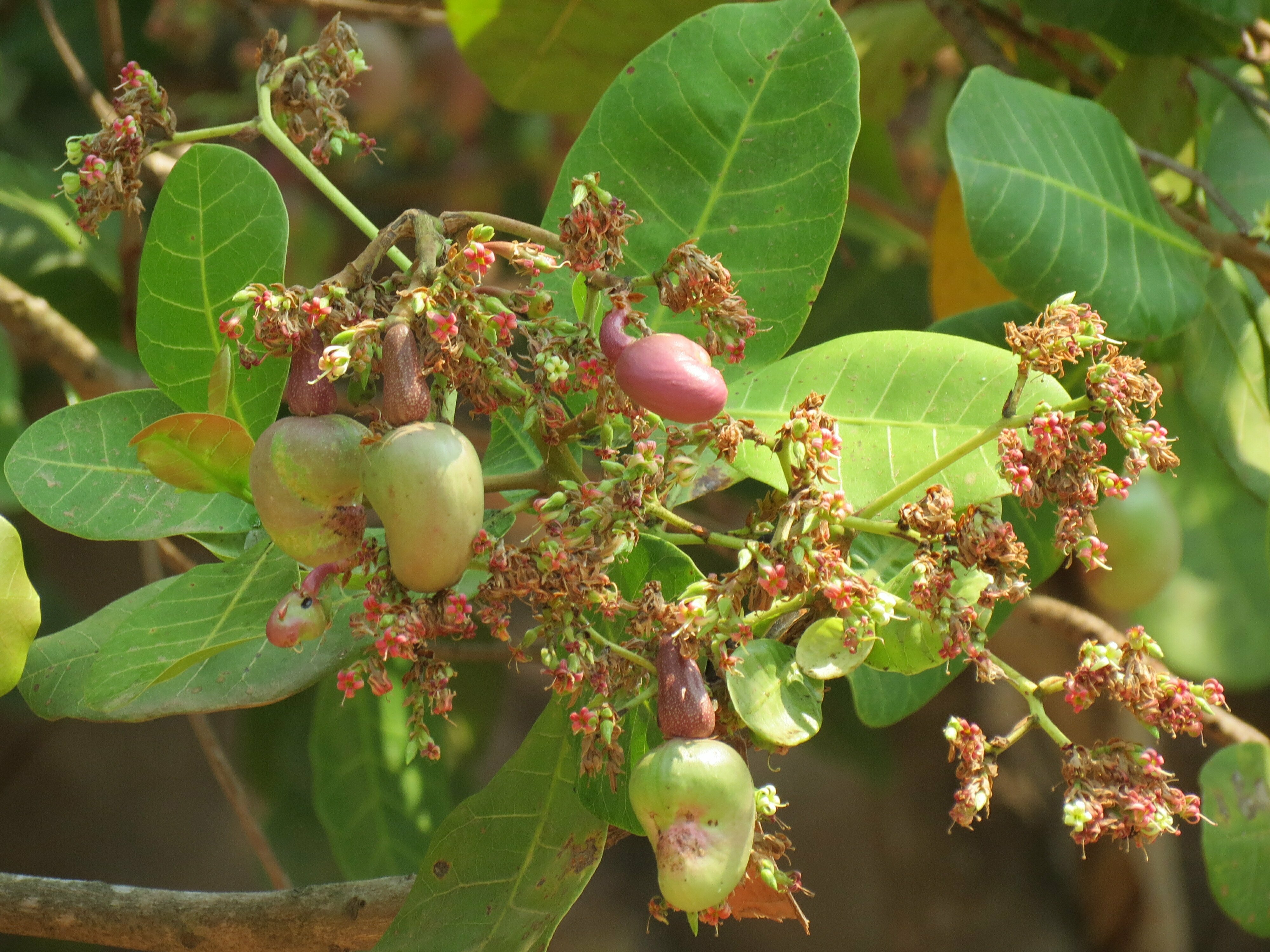 |
|||
| 27. Andrographis paniculata (Burm. f.) Family: ACANTHACEAE Local name: Bhuin neem, Kari bahu, Kalamegh Flowering & Fruiting: September – January Ecology: Quite abundant on forest floor. Description: Erect herbs; stem 4-angled, hairy above. Leaves linear- lanceolate, glabrous, acute. Flowers white. Anthers bearded at base. Capsule gland-hairy. Medicinal uses: This is one of the most popular medicinal plants used traditionally for the treatment of array of diseases such as cancer, diabetes, high blood pressure, ulcer, leprosy, bronchitis, skin diseases, flatulence, colic, influenza, dysentery, dyspepsia and malaria. IUCN Status: |
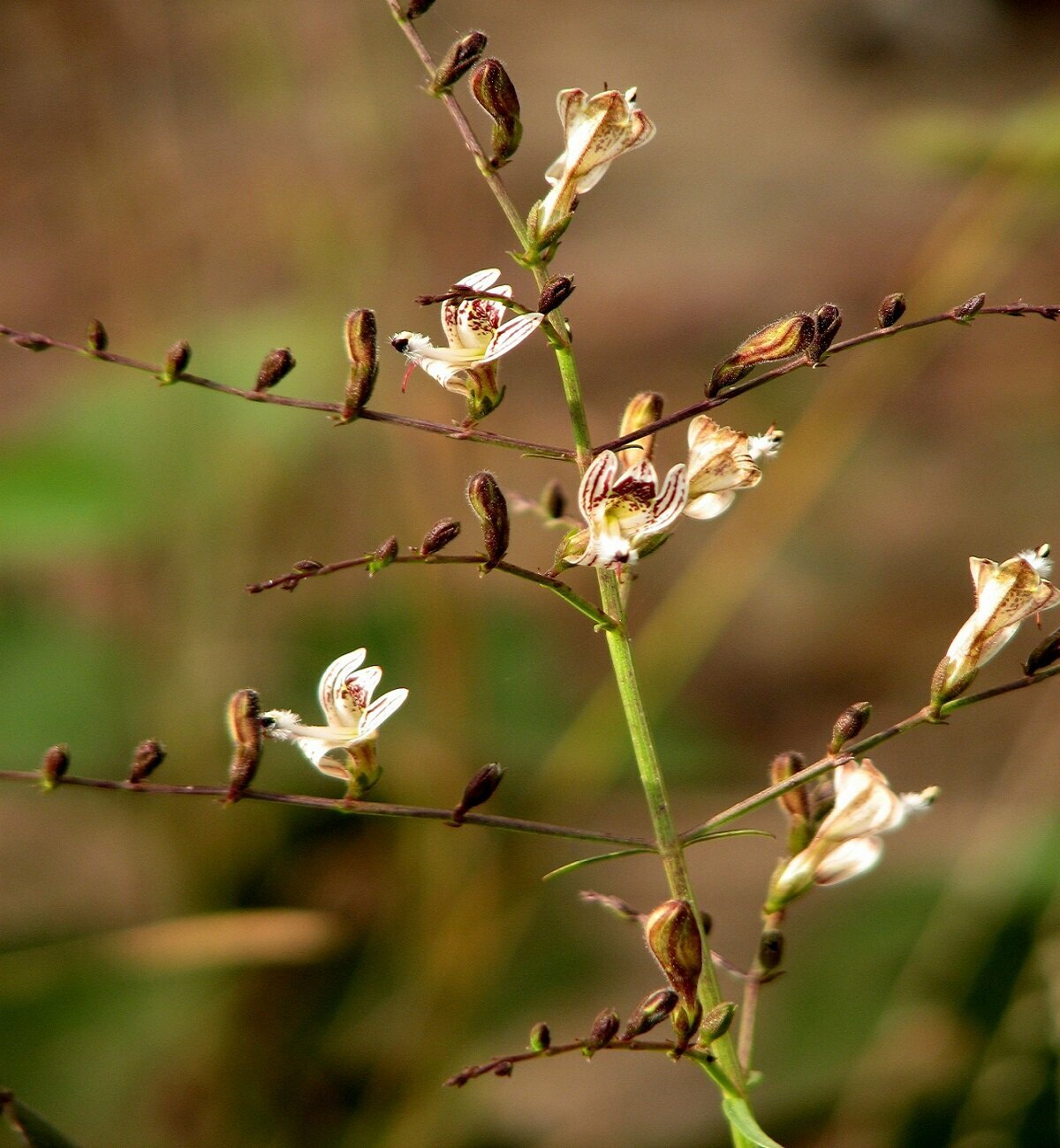 |
|||
| 28. Anisomeles indica (Linn.) Family: LAMIACEAE Flowering & fruiting: September-January. Ecology: Common weed on foot hills. Description: Strong – smelling pubescent herbs. Leaves ovate, coarsely crenate, acuminate, pubescent beneath. Flowers purplish, in axillary whorls and terminal spikes. Filaments bearded. Nutlets black. Medicinal uses: The plant is used traditionally as an analgesic, anti-inflammatory and in skin problems such as snakebites. Medicinally it has been proven to possess various pharmacological activities like antioxidant, antimicrobial, anti HIV, anti Helicobacter pylori and anticancer activity. It is used in chronic rheumatism. IUCN Status: |
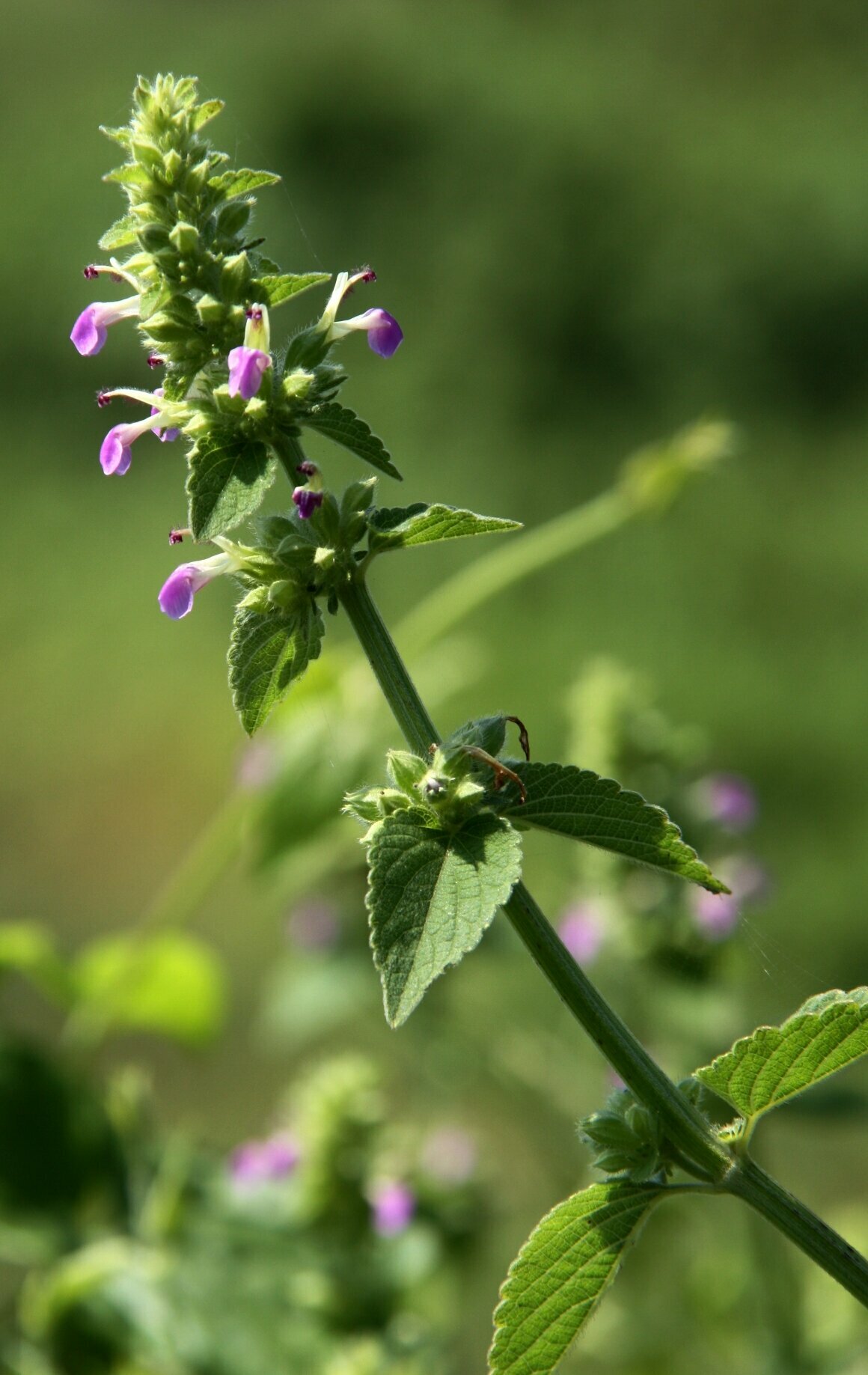 |
|||
| 29. Annona squamosa Linn. Family: ANNONACEAE Fruiting: May – July Ecology: Very common, cultivated for its edible fruits; often wild in the forest and villages as an escape. Medicinal uses: The folkloric record showed that the plant used as an insecticidal, an anti-tumor agent, anti-diabetic, anti- oxidant, anti-lipidimic and anti-inflammatory. IUCN Status: |
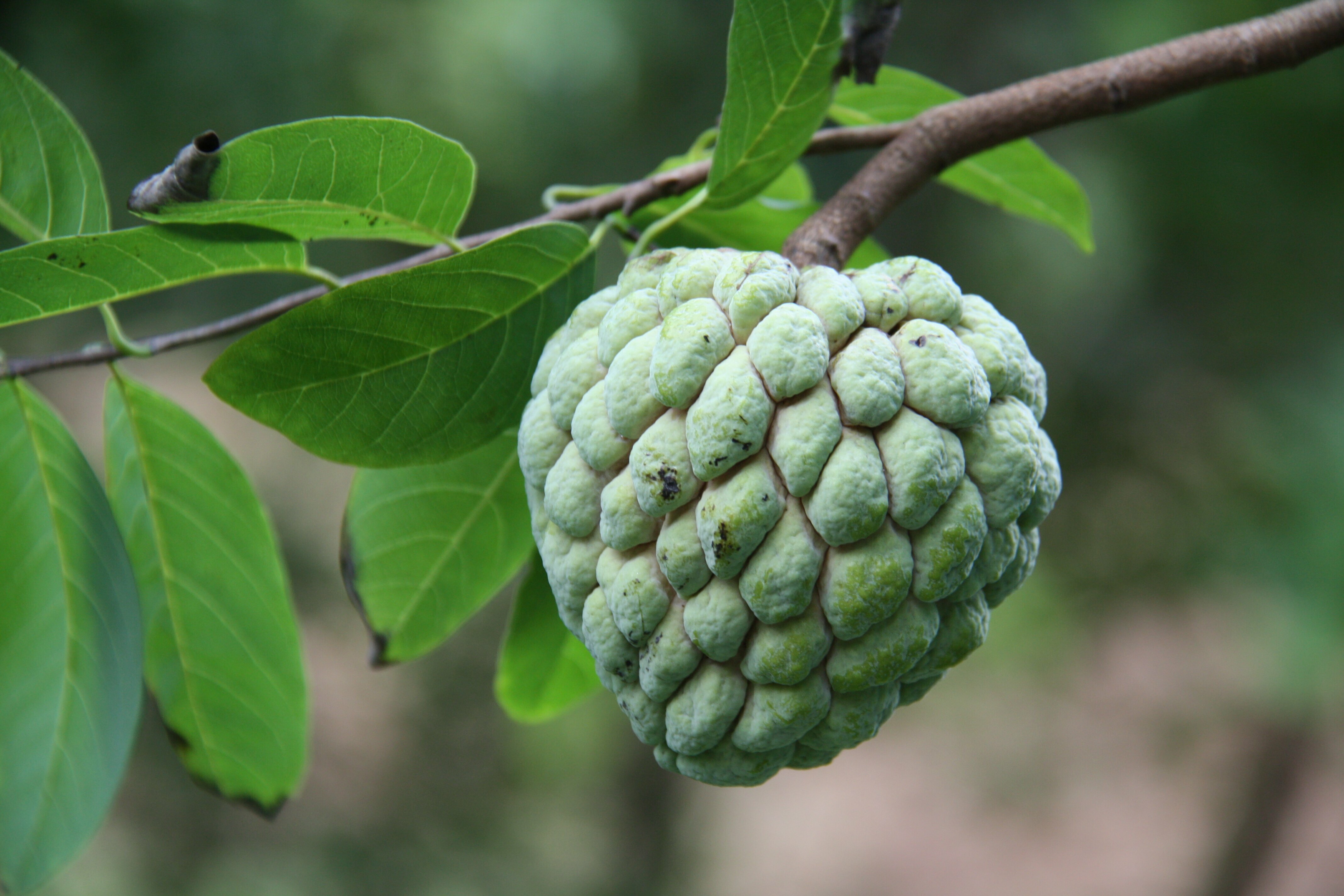 |
|||
| 30. Antidesma acidum Family: EUPHORBIACEAE Flowering: May-July. Fruiting: October-December. Ecology: Common, chiefly in the valleys near stream. Description: Large shrubs. Leaves obovate-lanceolate or rhomboio elliptic, apex acute or obtuse, base cuneate. Flowers green, solitan rarely 2-3 nate racemes. Disc & sepals pilose inside. Fruits red black; subglobose. Medicinal uses: Antidesma acidum is valued by communities that live in its native habitats for its medicinal properties. One can supposedly count on the plant’s remedies to treat dysentery, pneumonia, sores and muscular pains. IUCN Status: |
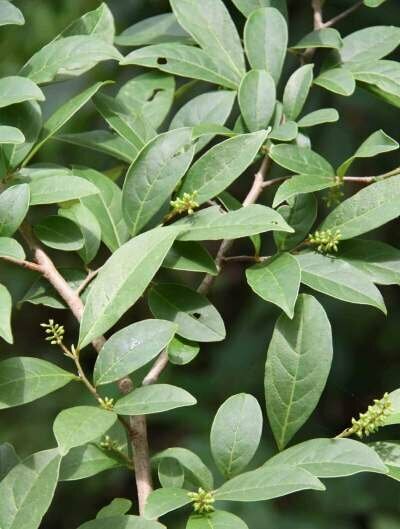 |
|||
| 31. Antidesma ghaesembilla Family: PHYLLANTHACEAE Flowering: April-June. Fruiting: September-october. Ecology: Common in dry-deciduous forests. Description: Small trees. Leaves elliptic-oblong, hoary-tomentose when young. Flowers green, in densely tomentose panicled racemes. Sepals wooly. Fruit oblong, red to black. IUCN Status: |
 |
|||
| 32. Argemone Mexicana Linn. Family: PAPAVERACEAE Flowering & Fruiting: April-July, more or less throughout the year Ecology:Common weed in waste ground, mear settlements. Native of west Indies, thoroughly naturalised. Local Name: Kanta Kusum, Odosomari Medicinal uses: The seeds are taken as a laxative. An Argemone mexicana tea is used by traditional healers in Mali to treat malaria. The whole plant is used to make a tea and as much tea as possible is drunk until symptoms disappear. IUCN Status: |
 |
|||
| 33. Argyreia nervosa Burm.f. Family: CONVOLVULACEAE Local Name: Budha darak Medicinal uses: A woody perennial vine with a maximum length of 9 – 15 m long. Leaves are cordate, measuring 15 – 25 cm long and 13 – 20 cm wide. Upper side of leaves is green and glabrous (smooth and hairless), while the lower side is silver and tomentose like young stems. Stems Younger stem is silvery and tomentose (densely covered by hairs). Flowers are pink or blue to purple, trumpet-shaped (5 cm wide) with darker purple in the centre. Flowers are located at the tips and are arranged in inflorescence known as cymes. IUCN Status: |
 |
|||
| 34. Aristida setacea Flowering & Fruiting: August-January. Ecology: Grecarious in lateritic out crops on slopes and plateau. Description: Stout grasses, simple or fastigiately branched. Panicle contracted, feathery. Spikelets secund. Glume ii tip minutely 2 toothed. Awns scaberulous. Rachilla pungent, white bearded. Medicinal uses: This grass is mainly used in making Brooms. in front of cattle shade to keep the evil spirits away from the cattle by the Lodhas. IUCN Status: |
 |
|||
| 35. Artocarpus heterophyllus Family: MORACEAE Flowering & fruiting: December-May. Ecology: Usually planted; often found in moist valleys in forests, probably introduced. Description: Crown dense, rounded. Leaves elliptic, entire, coriaceous, dark shining green above; stipules long sheathing. Male raceptacle cylindric, ebracteolate, tepals 2. Fruiting raceptacle tubercled. Medicinal uses: Jackfruit (Artocarpus heterophyllus) is commonly grown in home gardens of tropical and subtropical countries. Jackfruit has diverse medicinal uses especially anti-oxidant, anti-inflammatory, antimicrobial, anti-cancer and anti-fungal activity. IUCN Status: |
 |
|||
| 36. Asparagus racemosus Willd. Family: ASPARAGACEAE Local name: Satabari Flowering & fruiting: September-January. Ecology: Common in forests and scrub jungles. Description: Slender, scrambling, perennials; shoots woody, prickly. Cladodes 3-quetrous, falcate, acicular, divaricate, fine acuminate. Flowers white, fragrant, on racemes. Berries scarlet. filiform articulate pedicel in short racemes. Medicinal uses: People use asparagus racemosus for upset stomach (dyspepsia), constipation, stomach spasms, and stomach ulcers. It is also used for fluid retention, pain, anxiety, cancer, diarrhea, bronchitis, tuberculosis, dementia, and diabetes. Some people use it to ease alcohol withdrawal. IUCN Status: |
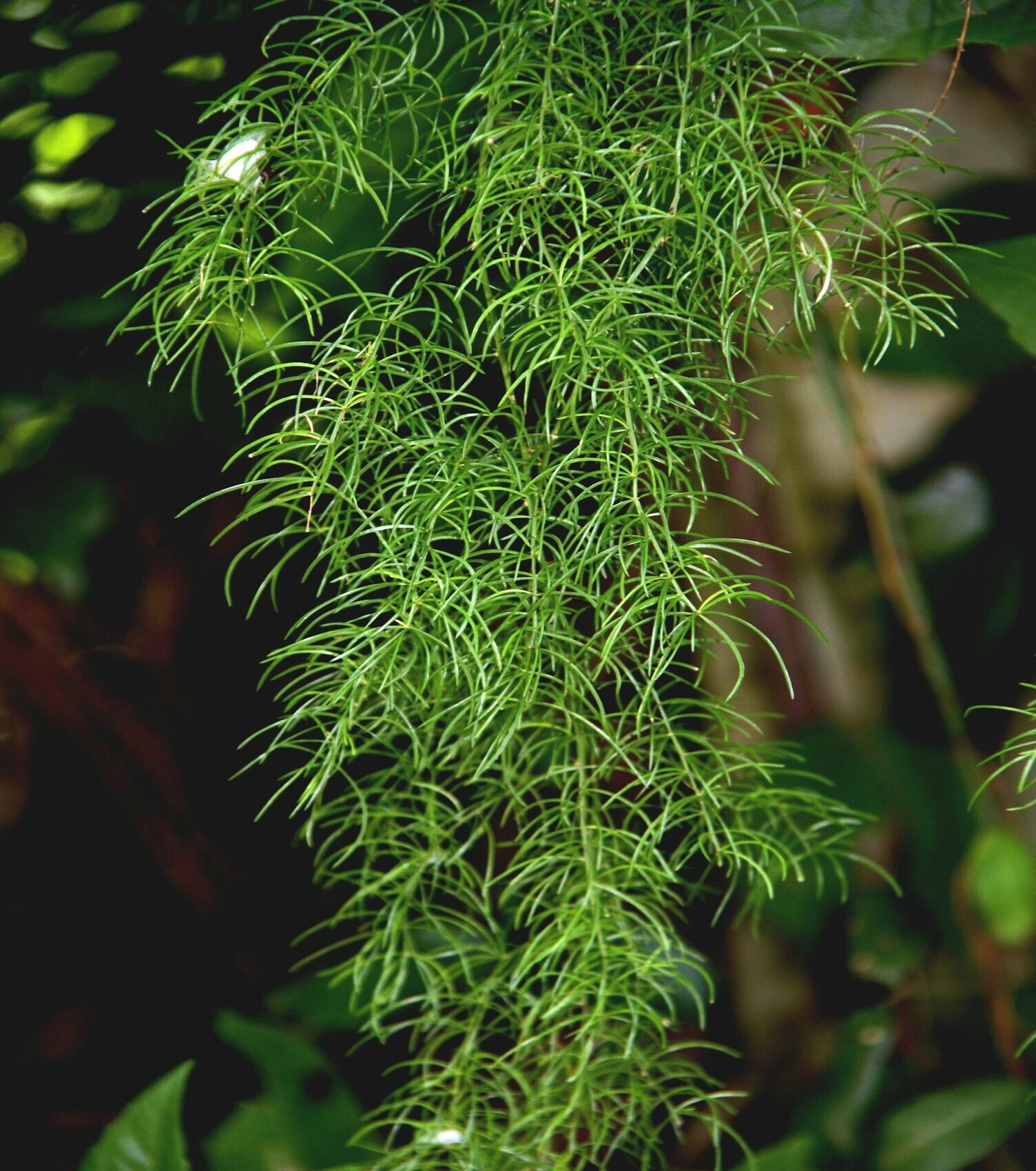 |
|||
| 37. Atylosia scarabaeoides Linn. Family: FABACEAE Flowering & Fruiting: September-January. Ecology: Quite abundant in forest blanks, thickets and eroded lands. Description: Pubescent twiners, Leaflets ellitic to elliptic oblung, acute to obtuse grey, pubescent beneth. Flowers yellow, axillary, solitary or in 2-3 natecyme. Calyx densely villous. Pods brown tomentose, oblong. Seeds oblong, grey-brown. Medicinal uses: The whole plant is used in the treatment of swelling and pain in the leg during pregnancy; night fevers; renal stones; eye diseases; dropsy; anaemia; hemiplegia; burns and wound; small-pox; syphilis; gonorrhoea; spermatorrhoea; gravel; cholera; dysentery; snake-bite and rinderpest. A paste of the fresh stem and leaves is applied to sores and to areas affected by venereal diseases. The powdered root is taken orally in order to improve the digestion, treat stomachache and reduce abdominal gas. An extract of the crushed roots is used as ear drops in the treatment of deafness. The crushed seeds are used as a parasiticide to rid the body of tapeworm. IUCN Status: |
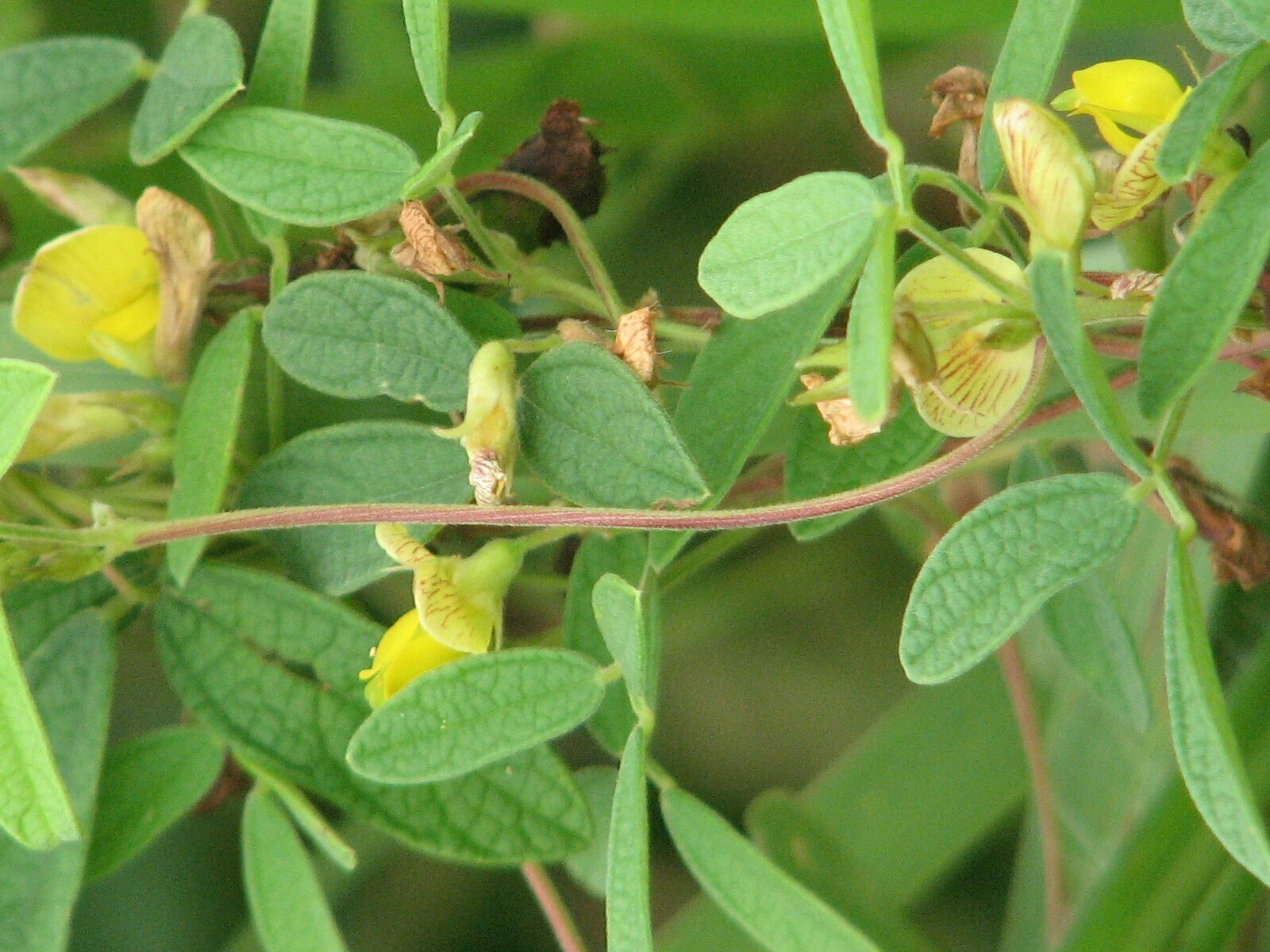 |
|||
| 38. Azadirachta indica Family: MELIACEAE Local name: Neem, Nimba Flowering & Fruiting: March-July. Ecology: Very frequent in villages and gardens occurs willd on foot hills. Description: Deciduous trees. Leaves pinnate; leaflets 6-10 pairs, coarsely serrate, sub-opposite, ovate, acute. Flowers small, white scented on axillary panicled cymes. Drupes ovoid, fleshy, yellow on maturity. Medicinal uses: Neem whole plant is extensively used in Ayurvedic System Medicine for various skin disorders and diabetes. Nature has served this plant with various organic Compounds that are used as insecticides and pesticides. IUCN Status: |
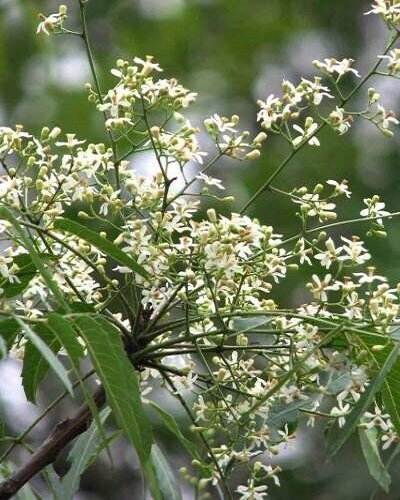 |
|||
| 39. Anogeissus latifolia Roxb. Family: COMBRETACEAE Flowering & Fruiting: July-October. Ecology: Common on foot hills in scrub forests. Description: Woody climbers. Stem fistular, reedish, nodes swollen. Leaves ovate, lobed, base cordate, serrate, palmi-nerved. Inflorescence leaf-opposed, panicled cyme. Calyx campaunualte. Petals deep brown to red. Berries succulent, black. Medicinal uses: Anogeissus latifolia one of the important medicinal plant as since Ayurveda in cardiac disorder. The plant is useful in UTI infections, skin diseases, liver complaints, fever, epileptic fits etc. The plant is rich in pharmacologically active phenolic phytoconstituent-ellagic acid. IUCN Status: |
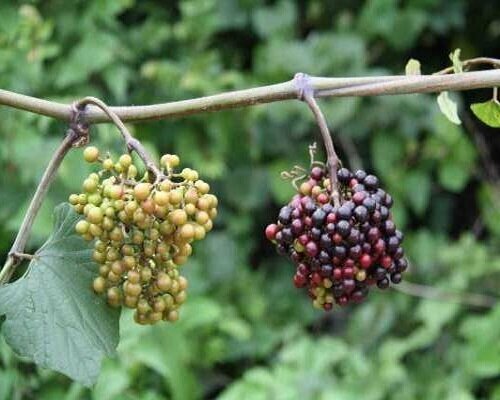 |
|||
| 40. Allophylus serratus Roxb. Family: ELAEOCARPACEAE Flowering & Fruiting: July-November Ecology: Occasional in forest periphery Description: Bushy shrubs; young shoot rusty-tomentose. Leaflets elliptic, cuneate, glabrous expect the nerves, acute. Flowers 1-sexual, 4-merous, irregular, clustered, white, in axillary racemes. Petals spathulate, ciliate. Drupe globose, arillate, re when ripe. Medicinal uses: ALLOPHYLUS SERRATUS is a medicinal plant used for the treatment of various risk factors like analgesia, inflammation, ulcers, and wounds. The aqueous extract of the leaf was investigated for its anti-inflammatory and analgesic activities in animal models. IUCN Status: |
 |
|||
| 41. Bacopa monnieri (L.) Family: PLANTAGINECEAE Local Name: Brahmi Ecology: commonly grows in marshy area. Description: Bacopa monnieri is a non-aromatic herb. The leaves of this plant are succulent, oblong, and 4–6 mm (0.16–0.24 in) thick. Leaves are oblanceolate and are arranged oppositely on the stem. The flowers are small, actinomorphic and white, with four to five petals. Medicinal uses: This is one of the most important medicinal plant that has been consumed for thousands of year as a memory enhancing, anti-inflammatory, analgesic, antipyretic, sedative and anti-epileptic agent. IUCN Status: |
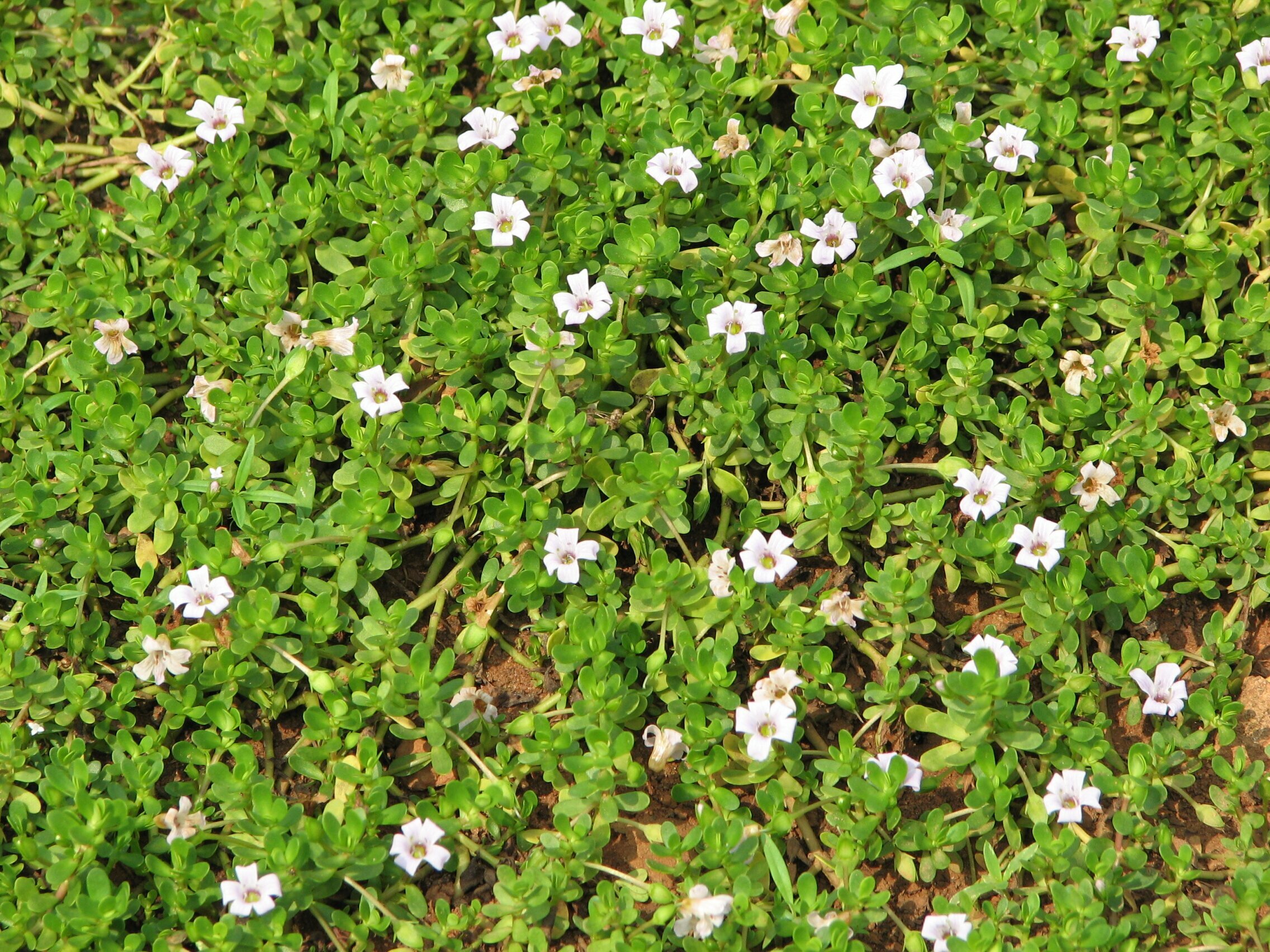 |
|||
| 42. Baliospermum montanum (Willd.) Family: EUPHORBIACEAE Flowering & fruiting: December-March. Ecology: Abundant on the damp forest floor. Description: Erect undershrubs. Leaves variously lobed, mostly elliptic oblong or lanceolate, lobulate, sinuate or serrate. Flowers green, fascicled, axillary, in the bract axils or in leafless panicles. Capsules 3-lobed, pubescent. Seeds carunculate. Medicinal uses: Danti is blood purifier and paste of danti roots and seeds are used to reduce edema and pain. Both act as analgesics to relieve pain. This herb has antipyretic properties and used to treat fever. This herb is also anti-inflammatory and used to reduce inflammation. IUCN Status: |
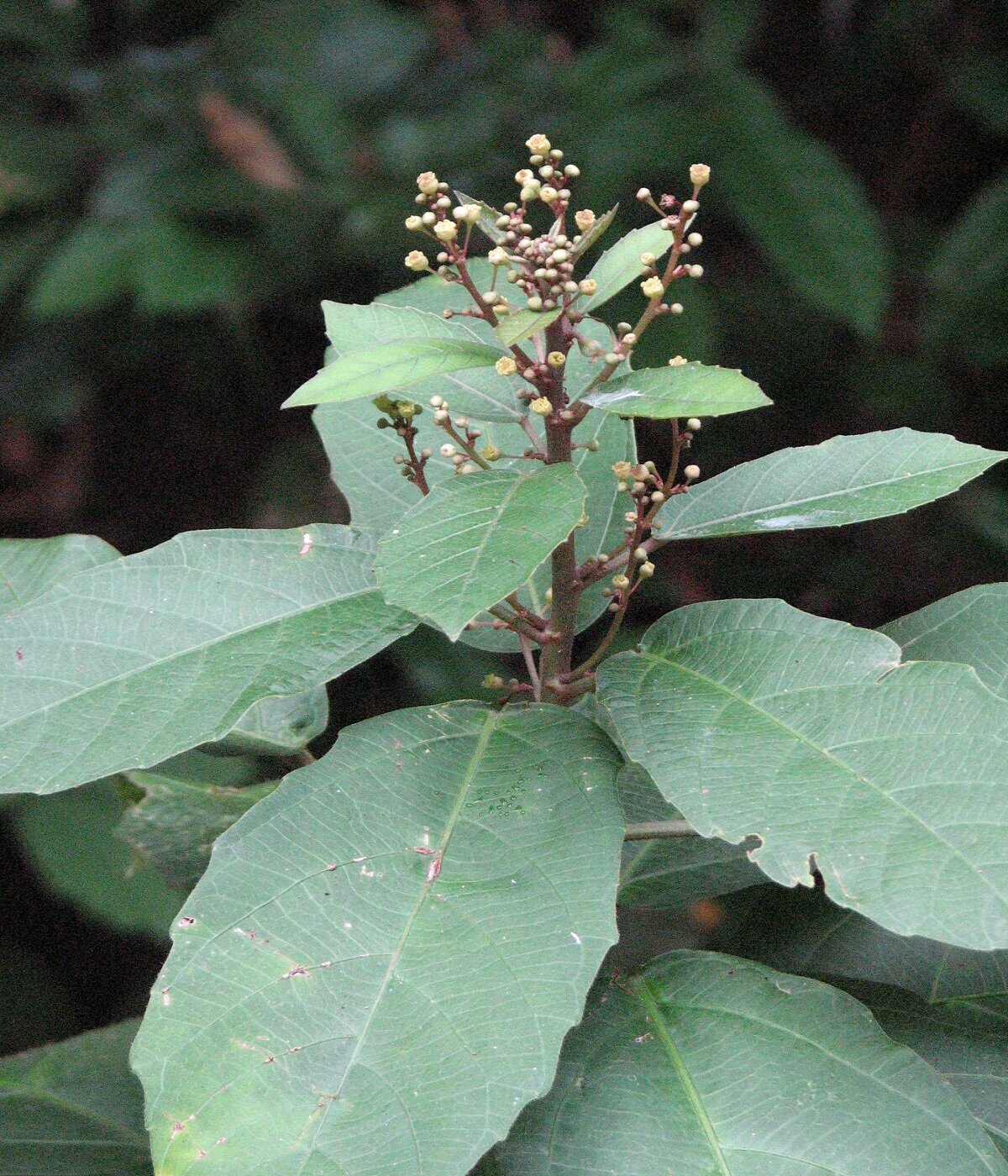 |
|||
| 43. Bambusa arundinacea (Retz.) Willd. Family: POACEAE Flowering & Fruiting: In large intervals, mostly during June. Ecology: Quite gregarious, in pure format ions covering small areas on moist slopes, valleys and in thickets. Description: Very large, densely caespitose bamboo. Branches armed with strong, 1-3-nate, recurved thorns: internodes short. Stem-sheaths long-ciliate. Leaves linear-lanceolate, pubescent beneath. Spikelets sessile, fascicled. Flowering glumes 3-7, lower 2-sexual, upper male. Anthers yellow. Grain linear-oblong. Medicinal uses: Bambusa arundinacea is a plant mentioned in Ayurveda for the treatment of cough, skin diseases, wounds, digestive disorders, nausea, gynecological disorders and fever. IUCN Status: |
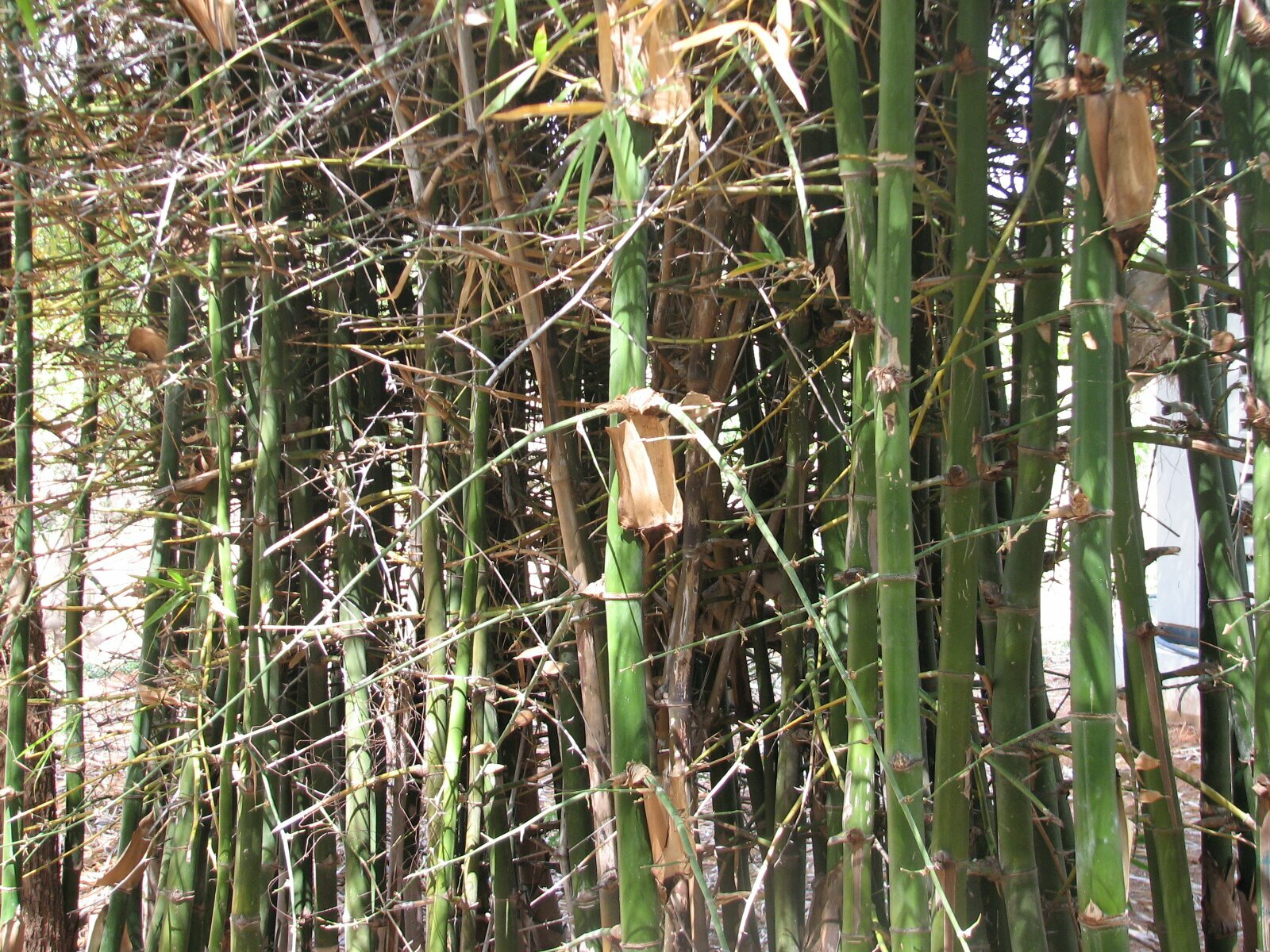 |
|||
| 44. Barringtonia acutangula (Linn.) Family: LECYTHIDACEAE Flowering: April Fruiting: July-August. Ecology: Ecology: Common along streams in semi-evergreen forests and water-logged areas. Description: Small trees. Leaves crowded at branchlet apex, elliptic or obovate, crenulate, cuneate, apex acute. Hypanthium shallowly campanulate. Fruit sharply, angled. Medicinal uses: Barringtonia acutangula Linn is a plant traditionally used for the cure and treatment of many ailments like hemolytic disease (various diseases of blood), abdominal colic, lumbar pain, syphilis, blennorrhoea, febrifuge, malarial and diabete. The bark in decoction is given as a stomachic. IUCN Status: |
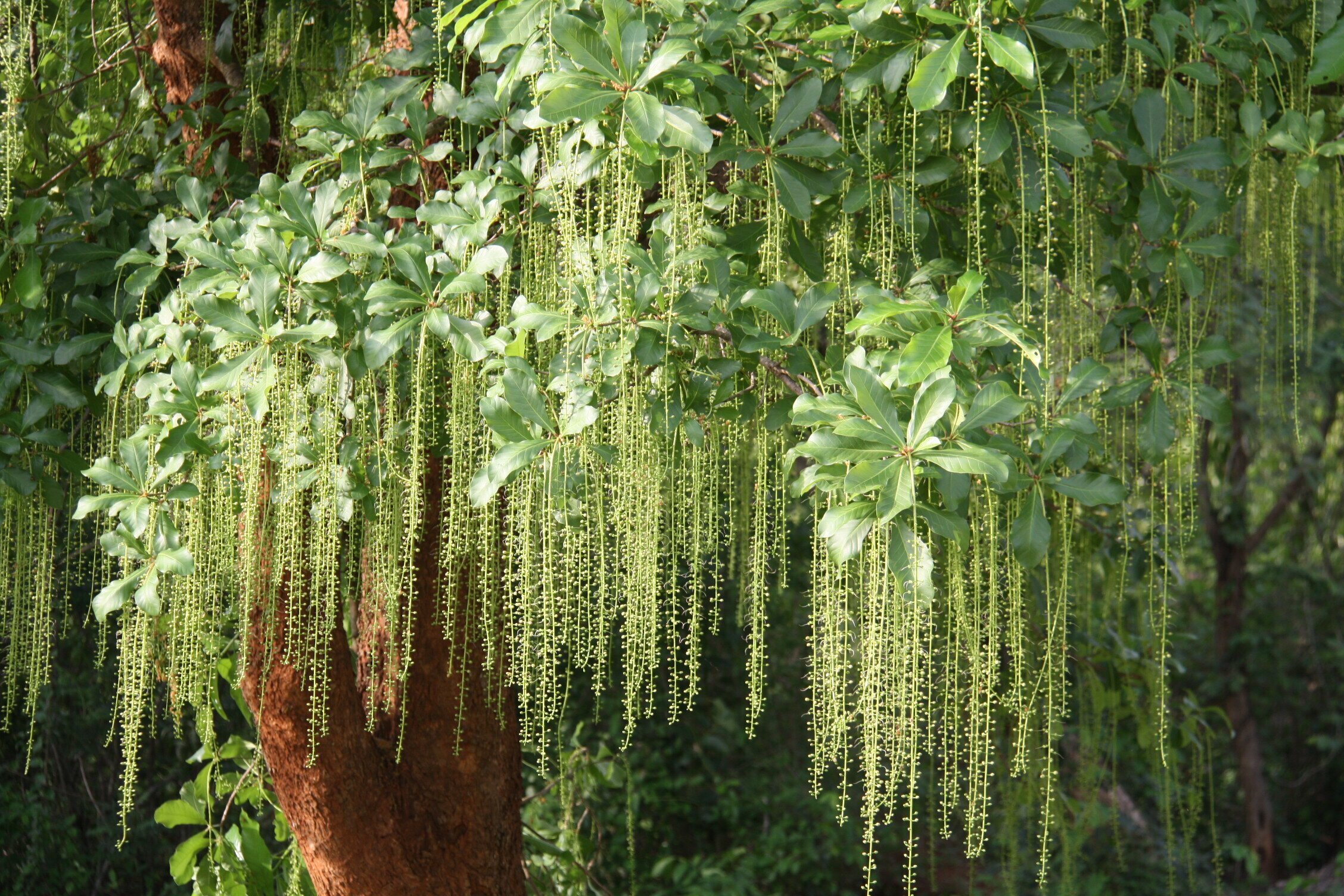 |
|||
| 45. Barleria cristata Linn. Family: ACANTHACEAE Flowering & Fruiting: November-February Ecology: Abundant, in shady and moist localities Description: Erect or diffuse under shrubs. Leaves subsessile, elliptic to oblong-lanceolate. Flowers bright-rosy solitary or paired, in dense spikes. Corolla-tube funnel shaped above. Capsule shining, compressed. IUCN Status: |
 |
|||
| 46. Barleria prionitis Linn. Family: ACANTHACEAE Local name: Kanta malti Flowering & Fruiting: October - December Ecology: Common, in wastelands and rocky places. Description: Prickly under shrubs. Leaves elliptic, often spine-tipped, punctulate. Flowers 1-3, in terminal spikes; bracts linear-oblong, spine-tipped. Corolla pubescent outside. Capsule beaked. Medicinal uses: The whole plant or its specific parts (leaf, stem, root, bark and flower) has been utilized for treatment of toothache, catarrhal affections, whooping cough, inflammations, glandular swellings, urinary infection, jaundice, fever, gastrointestinal disorders and as diuretic and tonic. IUCN Status: |
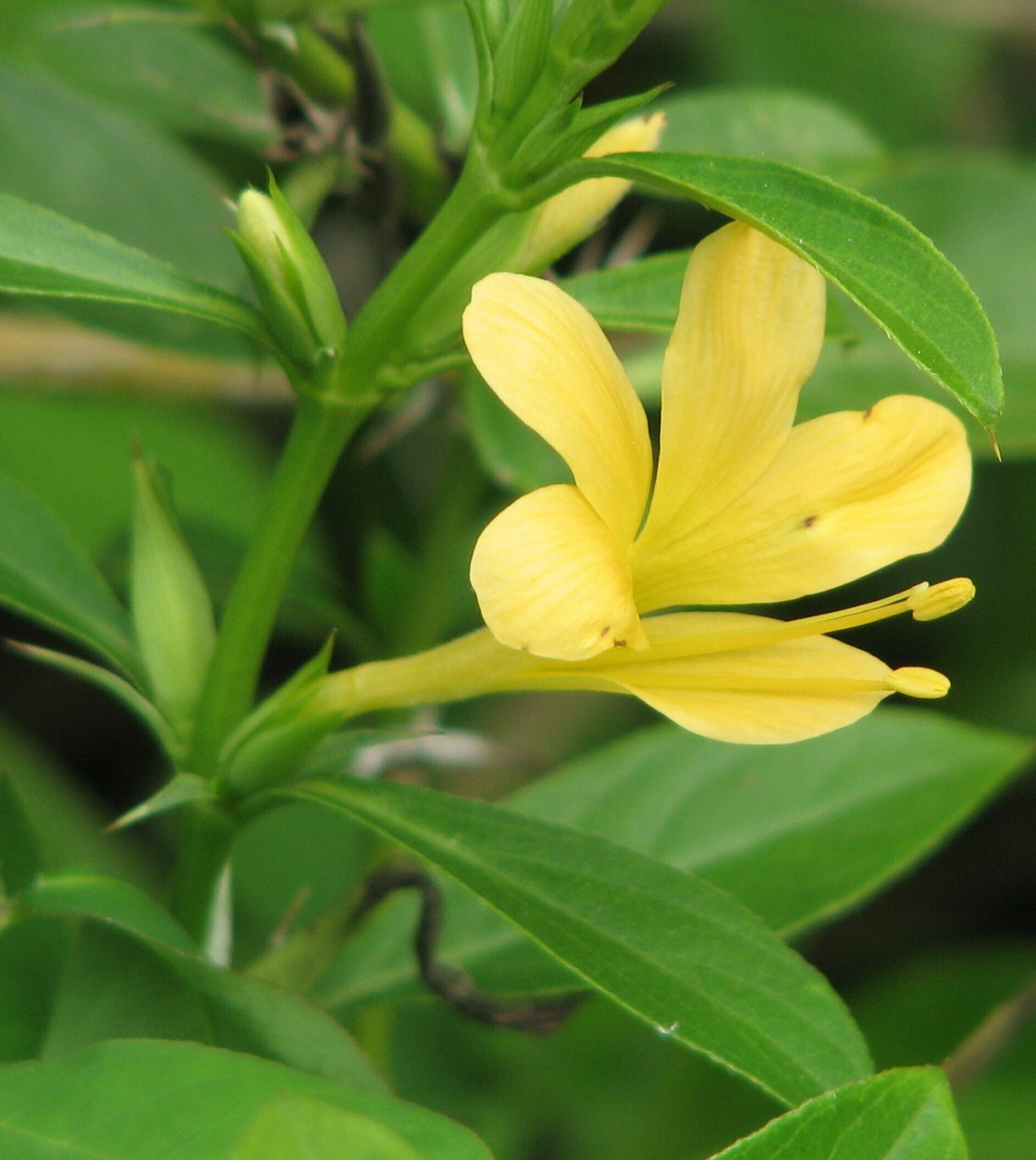 |
|||
| 47. Basella alba Linn. Family: BASELLA Linn. Flowering & fruiting: March-November. Ecology: Common on trellises and hedges. Description: Fleshy twiner. Stems red. Leaves ovate to orbicular, base cordate or rounded, entire, shining. Flower purple, urceolate, in spikes with coloured bracteoles. Perianth 5-fid. Fruit ovoid, black with purple juice. Medicinal uses: It is used to treat conditions like Dysentery. Basella Alba has Laxative attributes. Its leaves and stem are cooked and used to treat Constipation. It is effective for Diuresis. IUCN Status: |
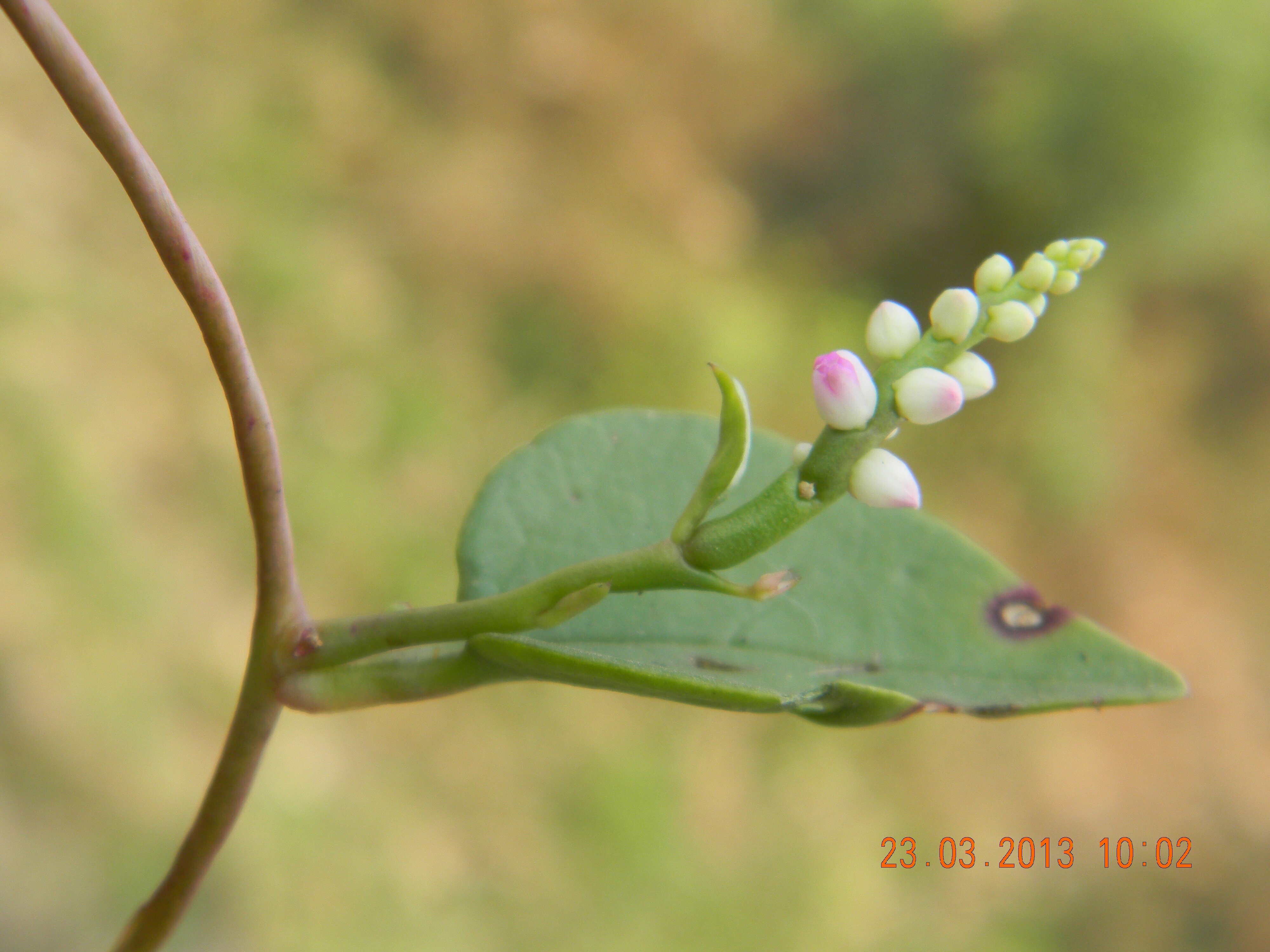 |
|||
| 48. Bauhinia purpurea Linn. Family: FABACEA Flowering: October-December Fruiting: January-March Ecology: Occasional, along lower slopes and foot hills Medicinal uses: Bauhinia purpurea is a species of flowering plant is used in several traditional medicine systems to cure various diseases. This plant has been known to possess antibacterial, antidiabetic, analgesic, anti-inflammatory, anti-diarrheal, anticancerous, nephroprotective and thyroid hormone regulating activity. IUCN Status: |
 |
|||
| 49. Bergia ammannioides Roxb. Family: ELATINACEAE Flowering & Fruiting: March – June Ecology: Very common in fallow lands during post-monsoon period. Description: Herbs stem diffuse secumbent, wiry, glandular pubescent, reddish. Leaves oblanceolate, acute, serrulate, base attenuate, sub sessile. Flowers fascicled, small, rose coloured, in a funnel shaped mypaanthium. Capsule globose, grooved, turning red on maturity, many seeded. IUCN Status: |
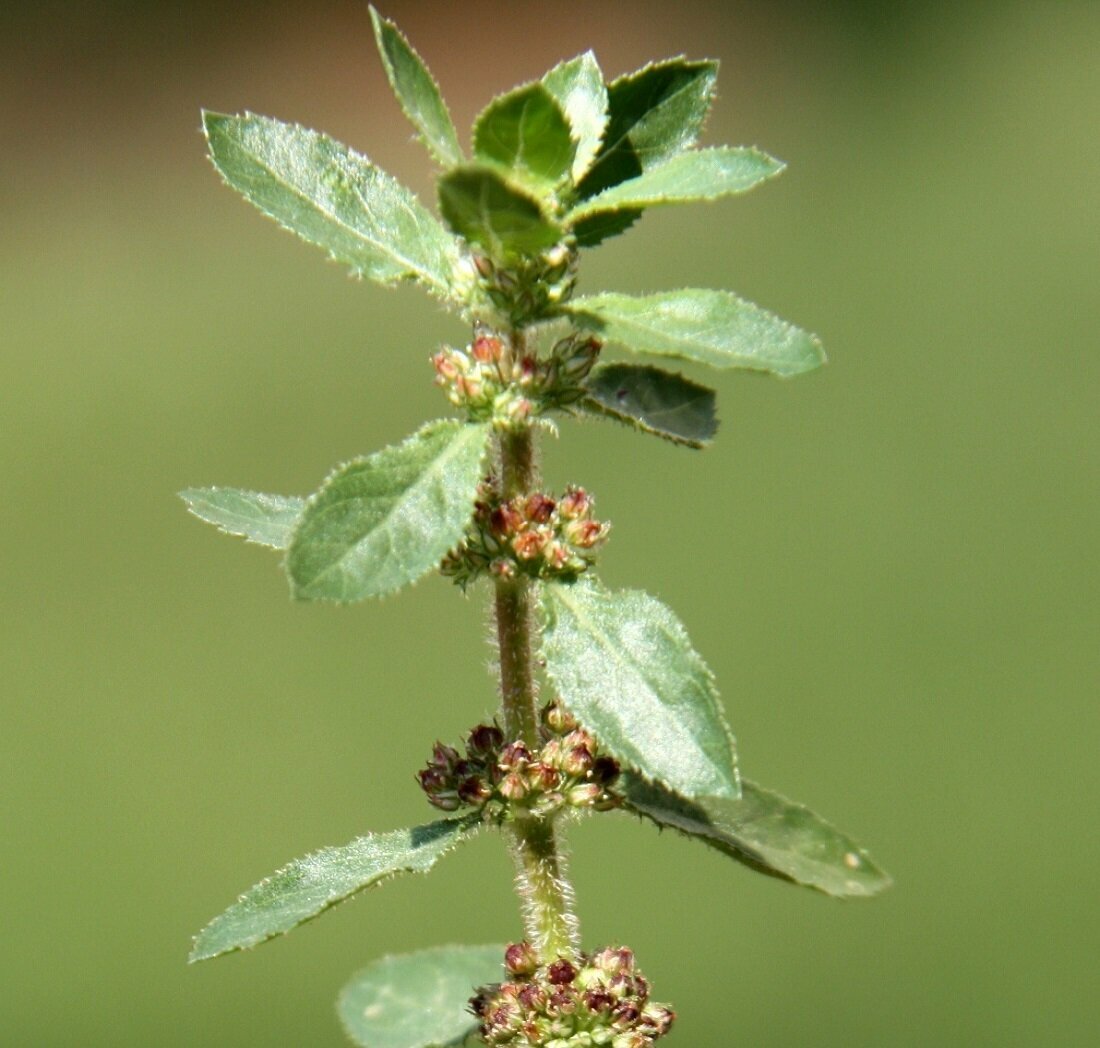 |
|||
| 50. Bidens biternata (Lour.) Family: COMPOSITAE Flowering & fruiting: October- February Ecology: Common on foot hills & rock crevices. Description: Erect annuals. Stem angular, striate. Leaves opposite, 3- foliolate, pinnate or pinnatifid; leaflets ovate, lanceolate, dentate, acute- acuminate. Heads pedunculate, in corymbs. Ray florets-3, pale-yellow. Achenes blackish. Medicinal uses: The plant extract is used against inflammation, infections, diabetes, malaria, leprosy, ulcers, diarrhea, digestive disorders. IUCN Status: |
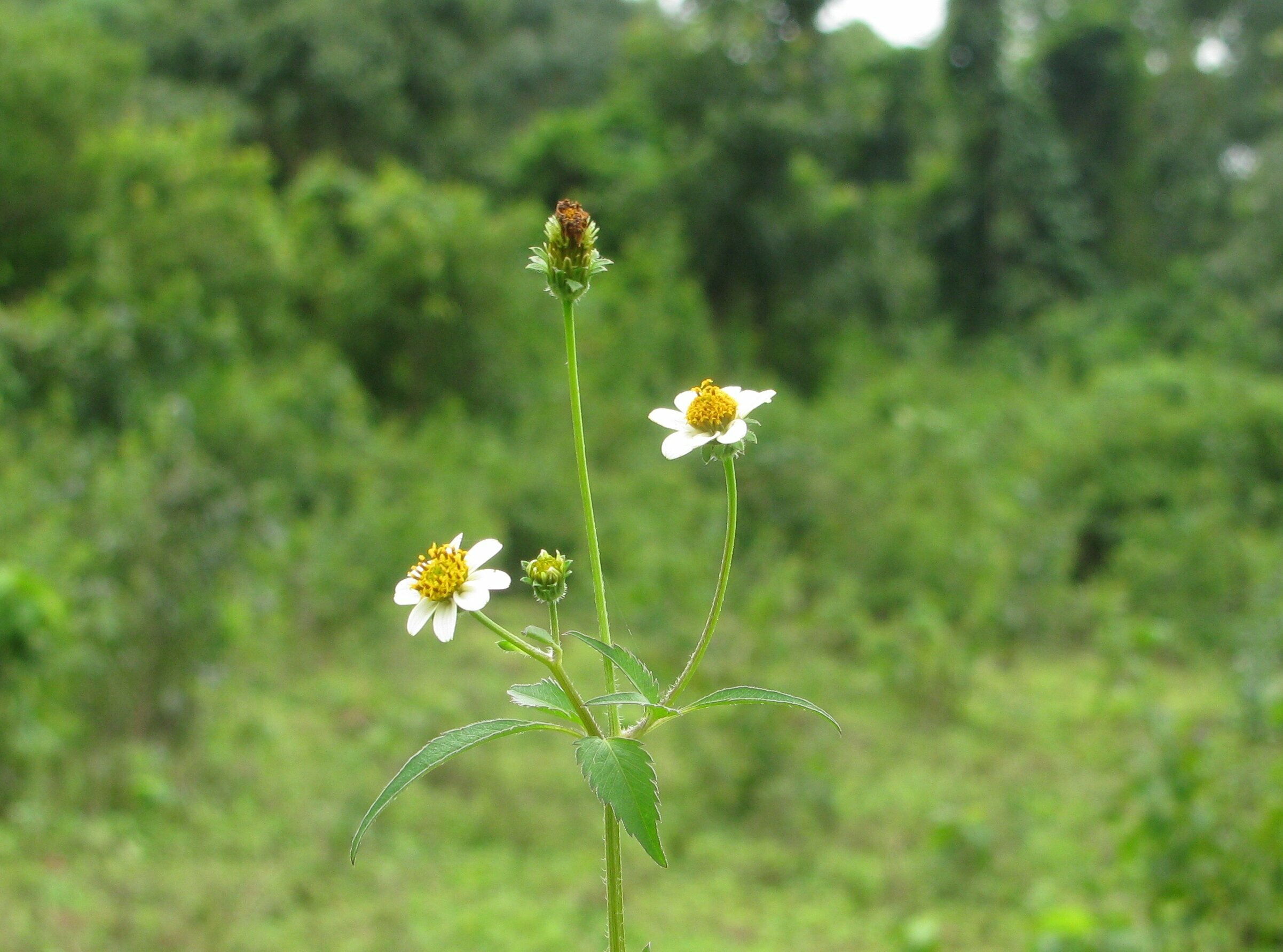 |
|||
| 51. Biophytum senstitivum Linn. Dc. Family: OKALISACEAE Local name: Chhota Lajakuli Flowering & Fruiting: July - November Ecology: Very common in moist pasture lands, fallow field. Description: Erect low herbs with single stem, downy pubescent. Leaflets 8-14 pairs, crrownd at apex, sessile, obtuse, apiculate, pale beneath, rachis hairy. Medicinal uses: The powdered seeds are used as a vulnerary. A decoction of the roots is used to treat gonorrhoea and stones in the bladder. A decoction of the plant is said to cure diabetes mellitus. It is also used to treat diseases of pregnancy; to diminish the female libido; to treat chest-complaints. The ashes of the plant, combined with lime-juice, are used to treat stomach-aches. The plant is also a reputed medicine for tuberculosis. The whole plant is used as an anti-inflammatory in the treatment of sore throat, abscesses, chronic wounds and fever. IUCN Status: |
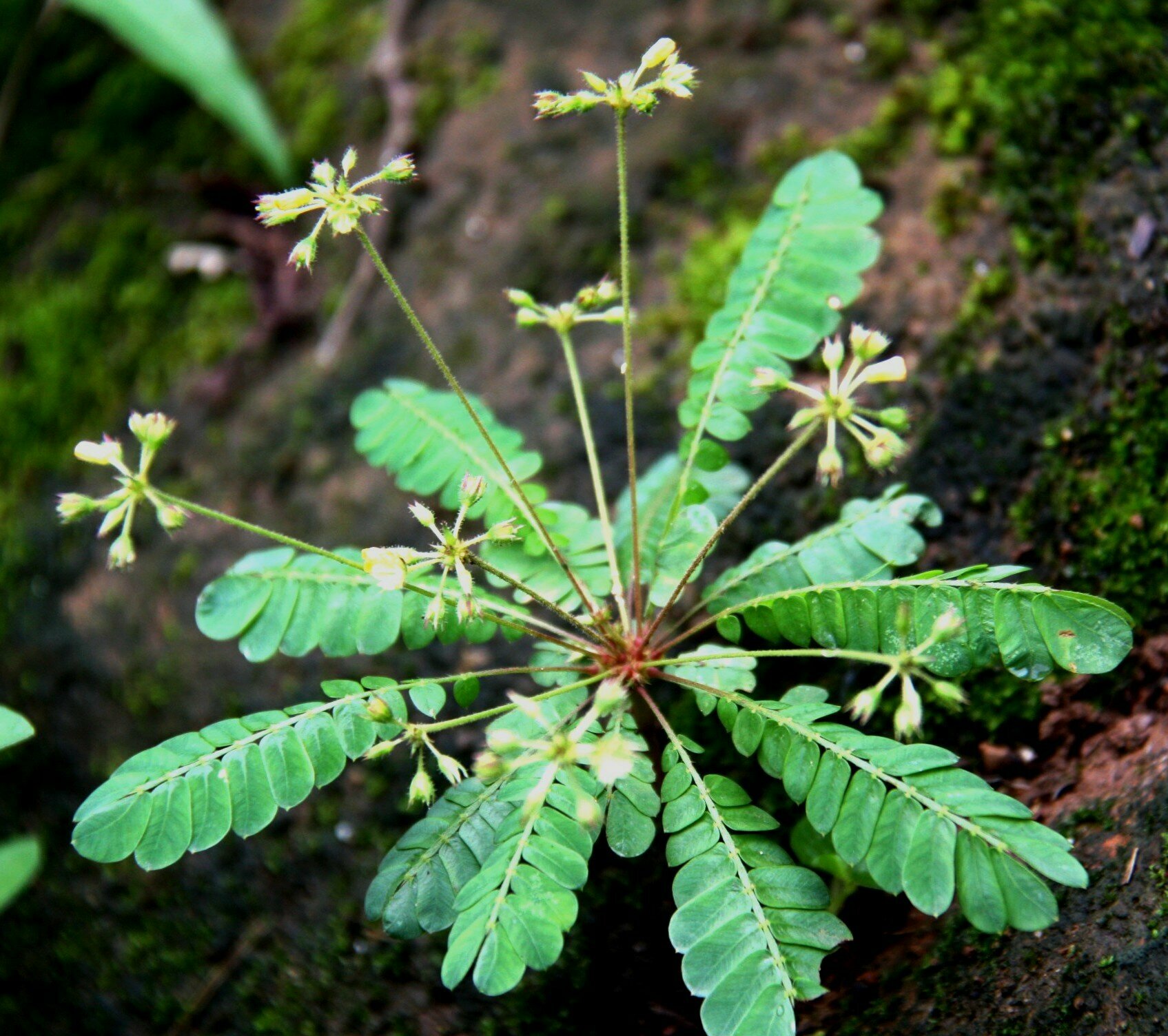 |
|||
| 52. Bixa Orellana Linn. Family: BIXACEAE Local name: Jhapra, Kumkum Flowering & Fruiting: Novemver- February Ecology: Often cultivated as ornamental, sometimes wild. Description: Large shrubs. Leaves ovate, cordate, acuminate, palmately 5-nerved. Flowers fragrant, rosy-white, in terminal panicled cyme. Sepals obovate, caduceus. Filaments curved, anthers horse-shoe straped. Ovary 1 celled. Capsule echinate, 2-valved, many seeded. Seeds arillate, red powdery. Medicinal Uses: Traditionally this plant used for antipyretic, aphrodisiac, antidiarrheal, antidiabetic, and insect repellent. IUCN Status: |
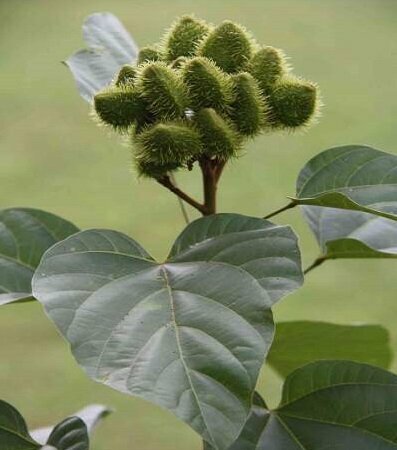 |
|||
| 53. Blepharis maderaspatensis (Linn.) Family: ACANTHACEAE Local name: Jhapra, Kumkum Flowering & Fruiting: October-February Ecology: Very common on hill sloeps. Description: shrubs; stems diffuse: root stock creeping. Leaves in a whorl ic-oblong, acute, remotely serrate, hispid-hairy above. Flowers white, rateate spikes; bracts setaceous. Capsule ellipsoid, 2-seeded. IUCN Status: |
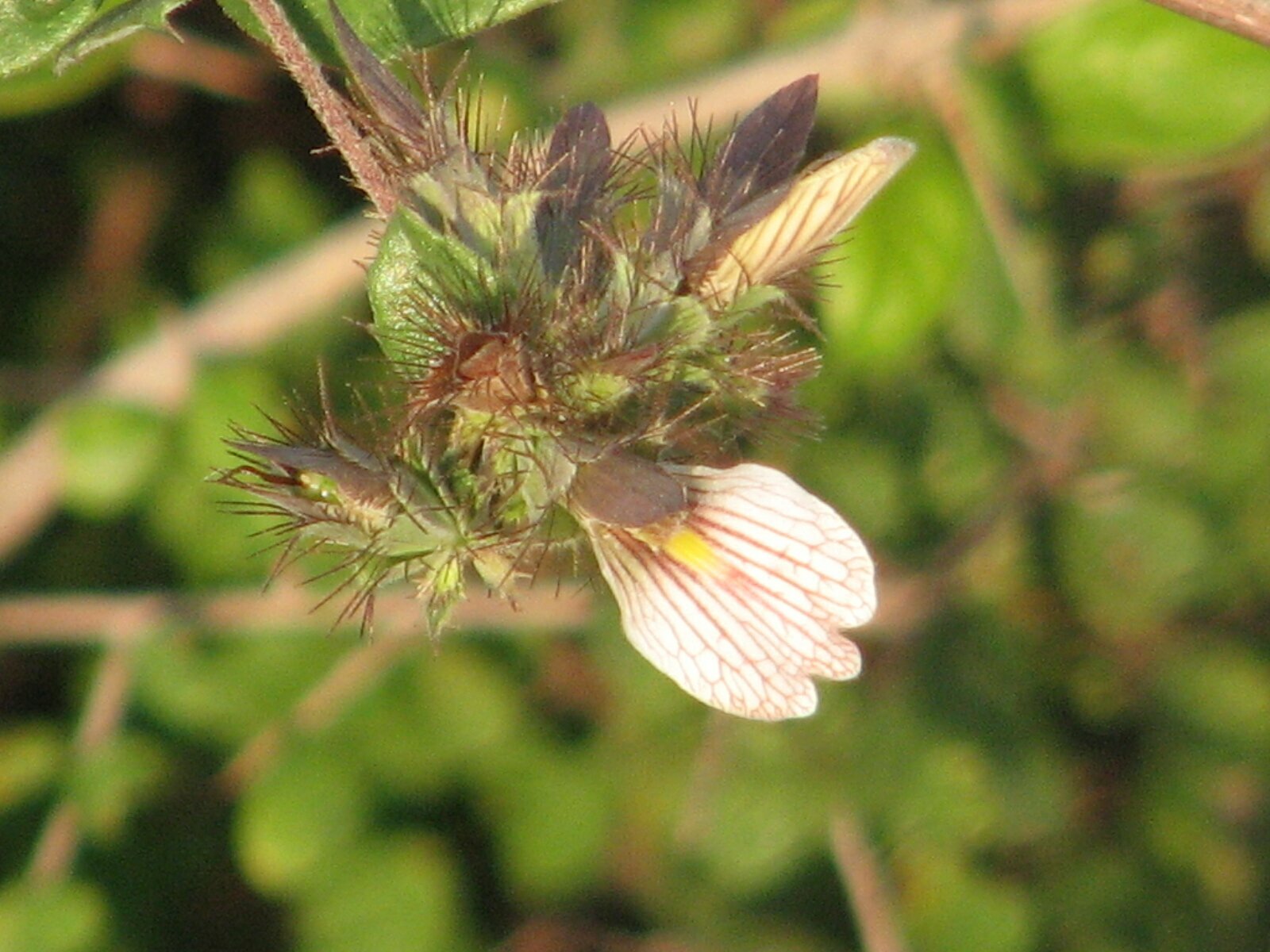 |
|||
| 54. Blumea fistulosa (Roxb.) Family: COMPOSITAE Flowering & fruiting: March – May Ecology: Very common on hill sloeps. Description: Erect, annuals. Stem densely hairy. Lower leaves long, petioled, lyrate pinnatifid; upper one obovate, denticulate. Heads sessile, in auxillary clusters. Involucre purple. Florets orange yellow. Anhenes 8-10 ribbed. Medicinal uses: It is described by Ayurveda experts hot, pungent and bitter; antipyretic; good for bronchitis, diseases of the blood, fevers, thrist and buring sensations. The root kept in the mouth is said to cure disease of the mouth. IUCN Status: |
 |
|||
| 55. Blumeopsis flava Family: COMPOSITAE Flowering & fruiting: September - December Ecology: Common in flor Description: Erect annuals. Leaves subsessile or short petiolate, obovate-rounded, spinulose denate, base amplexiual. Heads golden yellow in a compound corymbose panicle. Anther tailed. Achenes minute, pappus white. Anther tailed. Achenes minute, pappus white. IUCN Status: |
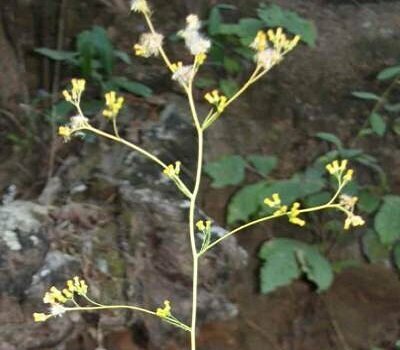 |
|||
| 56. Blyxa echinosperma Family: HYDROCHARITACEAE Flowering & fruiting: October-Noveber. Ecology: Abundant in slow running stream water, at foot hills. Description: Submerged, atoloniferous herbs. Leaves linear, finely acuminate. Flowers bisexual, one in each spathe. Spathe long, linear. Stamens 3, 2 atheriferous. Seeds spinescent, tailed. IUCN Status: |
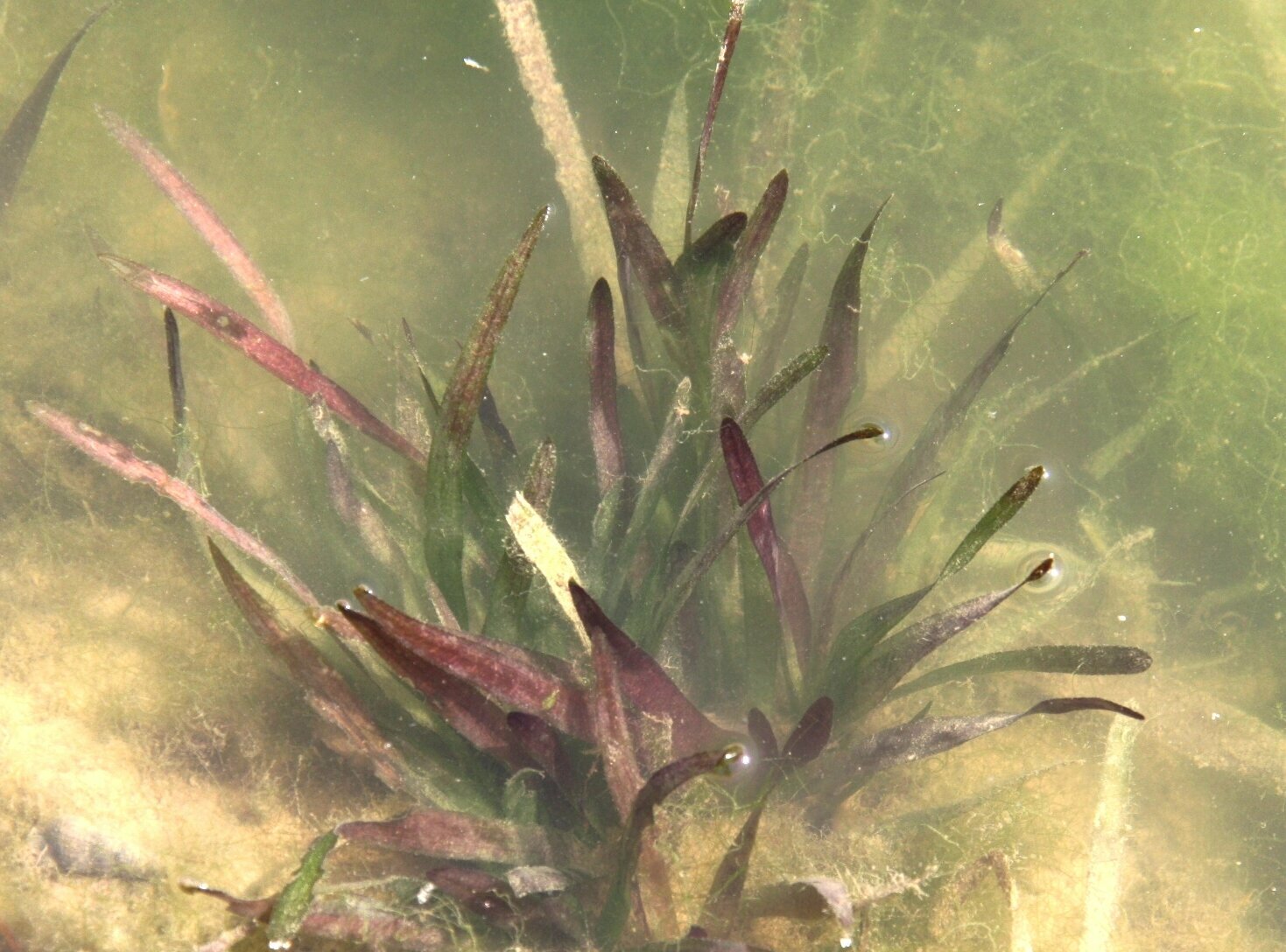 |
|||
| 57. Breynia vitis-idaea (Burm. f.) Family: PHYLLANTHACEAE Flowering & fruiting: July-December Ecology: Common along the streams in forests. Description: Shrubs. Leaves elliptic-ovate, rounded, base obtuse or aneate, pale beneath, distichous, glabrous - Flowers minute, monoecious, green, solitary, rarely fascicled. Male turbinate. Female campanulate, 6-lobed; ovary large, exceeding the erect calyx, Stigmas 3. Berry globose-ovoid, red. Medicinal uses: The leaf paste is used to treat boils and skin diseases. The bark is astringent and anti-inflammatory. It is used for rheumatism and to stop the bleeding. IUCN Status: |
 |
|||
| 58. Breynia retusa (Dennst.) Family: PHYLLANTHACEAE Flowering & fruiting: April-July. Ecology: Occasional, in scrub forests. Description: Undershrubs. Branchlets somewhat 4-angled. Leaves elliptic ablong. Male flowers many, pedicels slender. Female much large; calyx spreading; style central, arms-3, short, 2-fid. Fruits brillant carmine when ripe. Medicinal uses: Breyniaretusa is galactagogue, astringent and spasmogenic. The fresh plant juice is given as eye drop in eye diseases and conjunctivitis. The leaves juice is used in skin inflammation, skin diseases and taken for swollen testicles. The macerated leaves squeezed in water are taken for body pain. IUCN Status: |
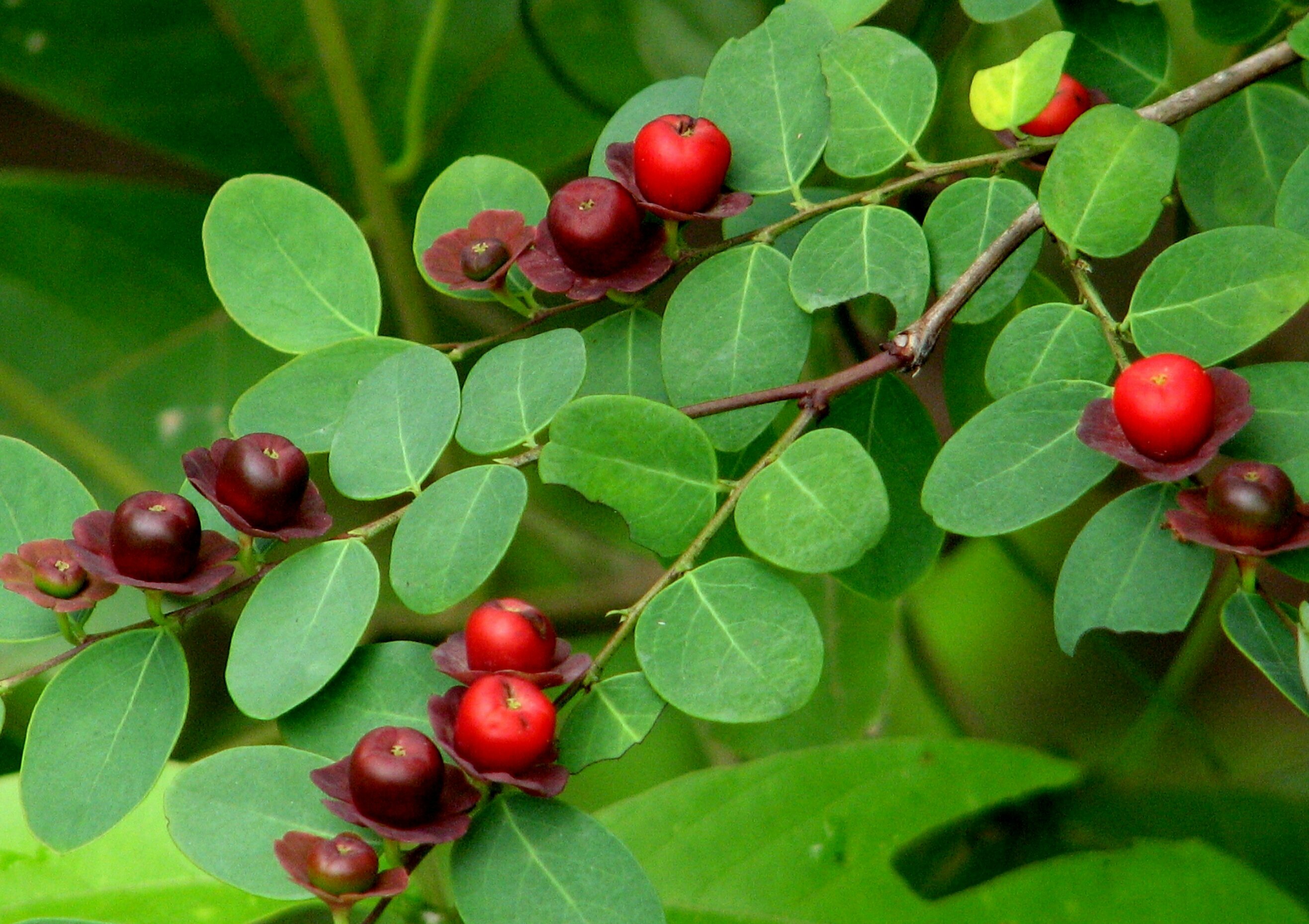 |
|||
| 59. Boerhavia diffusa L. Family: NYCTAGINACEAE Local name: Thinthini sag, Purani, Puni-gochh Flowering & Fruiting: August-December Ecology: Moist & Dry Deciduous forests and also in the Plains. Description: Herbs with long trailing branches; stem reddish, tomentose. Leaves unequal, ovate, obtuse, undulate along margins, truncate to subcordate at base, tomentose; petiole to 1 cm long. Flowers 4 mm long, 4-10 together, in axillary or terminal, peduncled umbels; bracts 5, ovate, glandular, perianth pink, stamens 3, capsule 3 x 1 mm, clavate, 5-ribbed, glandular. Medicinal uses: It is an herb found in Ayurveda and other traditional medicines. Historically, Boerhaavia diffusa has been used for its anti-diabetic and diuretic properties. In different areas of the world, Boerhaavia diffusa has also been used for pain relief, anti-inflammation, and treating indigestion. IUCN Status: |
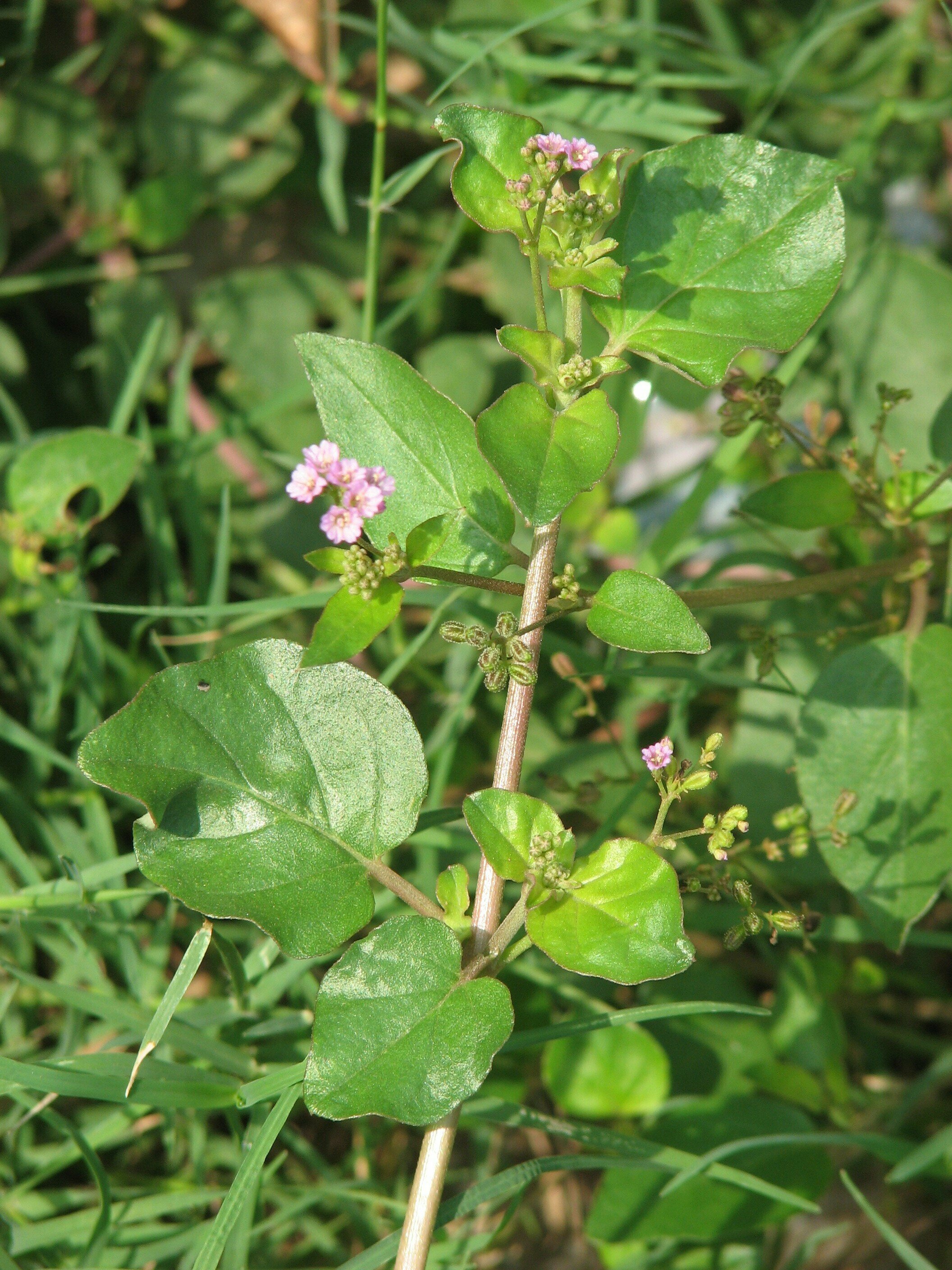 |
|||
| 60. Bombax ceiba Linn. Family: BOMBACACEAE Flowering: January – March Fruiting: March – May Local Name: Semuli Ecology: Common tree, in valley & hills slopes in moist deciduous forest. Description: Prickly, warty deciduous tress. Leaves 5-7 digitate, sub-sessile, elliptic lanceolate, thin coriaceous, entire, acuminate. Flowers scarlet, solitary or clustered. Medicinal uses: The flowers are astringent and refrigerant. They are used to treat cutaneous troubles. The young roots are diuretic and tonic. They are used in the treatment of cholera, tubercular fistula, coughs, urinary complaints, nocturnal pollution, abdominal pain due to dysentery, and impotency. The gum is astringent, demulcent and tonic. It is used in the treatment of dysentery, haemoptysis in pulmonary tuberculosis, influenza and menorrhagia. IUCN Status: |
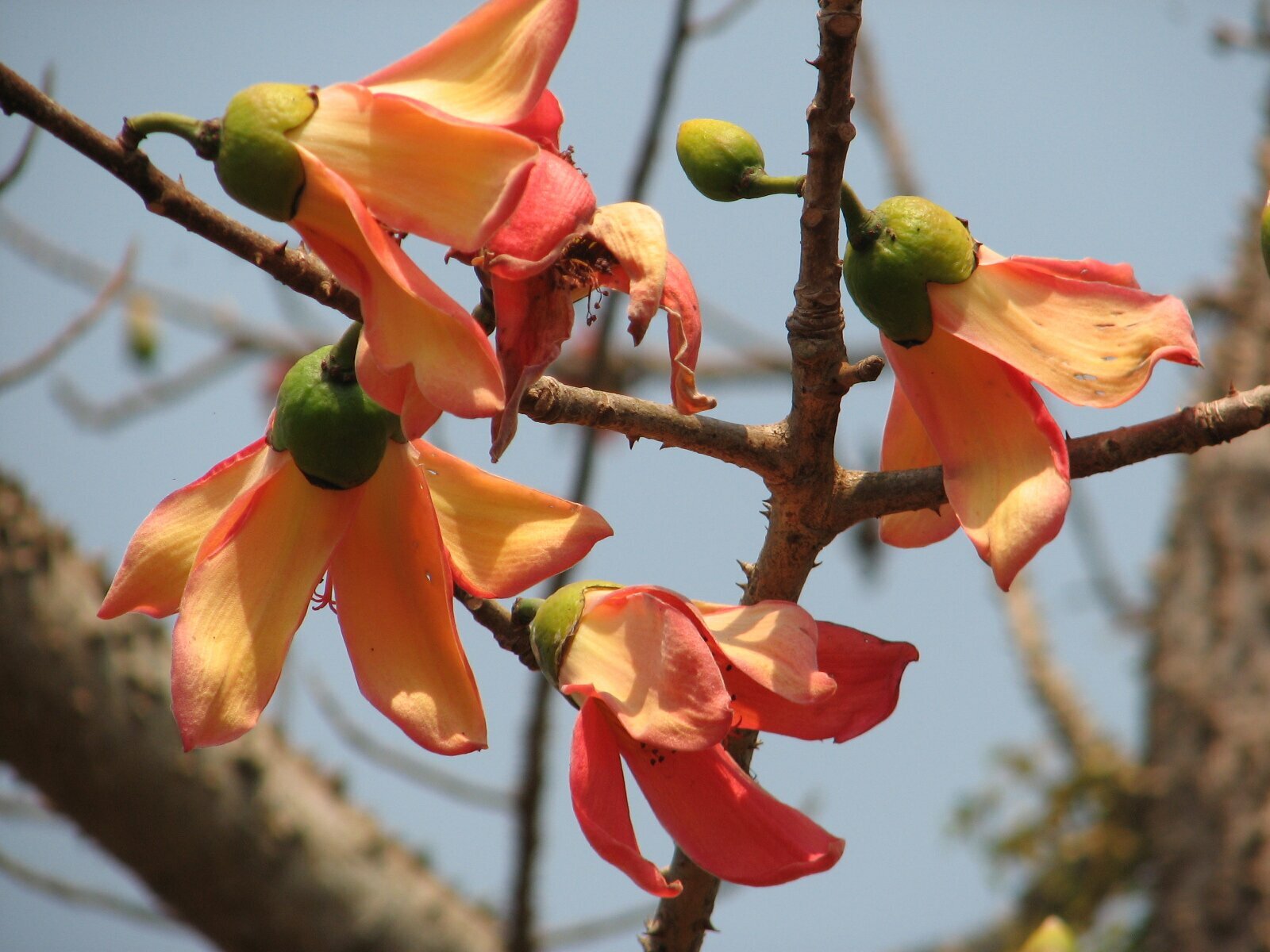 |
|||
| 61. Borassus flabellifer Linn. Family: ARECACEASE Local name: Tal Flowering: March-May & August-September Ecology: Occasional, cultivated in plains along bnds of nalas. Description: Largely palm; trunk stot, marked with sheath scars. Leaves fan shaped, segments linear-lanceolate, fold along the midrib; petiole long, semiterete, stout, edges spinosely serrate. Male spadix clustered; bracts broad, truncate. Petals spreading Medicinal uses: Young roots are anthelmintic and diuretic. A decoction is given in certain respiratory diseases. Dried roots can also be smoked to heal nasal complaints. The ash of the flower is taken to relieve heartburn and enlarged spleen and liver. A charcoal made of the bark serves as a dentifrice. Sap from the flower stalk is prized as a tonic, diuretic, stimulant, laxative and anti-phlegmatic and amoebicide. Sugar made from this sap is said to counteract poisoning and it is prescribed in the treatment of liver disorders. IUCN Status: |
 |
|||
| 62. Boswellia serrata Roxb. Family: BURSERACEAE Flowering: January-March Description: Deciduous trees; bark grey or reddish, peeling off in thin flakes. Leaflets 9-16 pairs, oppoite, coarsely crenate-serrate. Flowers small, white in pubescent racemes, in leafless branches. Disc scarlet, fleshy, papillose. Fruit 3-gonous, 3-valved; pyrenes 3- winged. Medicinal uses: Boswellia serrata is most commonly used for medicine. Boswellia is taken by mouth for brain injury, osteoarthritis, rheumatoid arthritis, joint pain, swelling of the fluid-filled pads in the joints (bursitis), and swelling of tendons. IUCN Status: |
 |
|||
| 63. Brachiaria ramosa (Linn.) Family: POACEAE Flowering & Fruiting: July-November. Ecology: Abundant on moist hill slopes during rains. Description: Stem leafy, base decumbent, nodes pubescent. Leaves lanceolate, sheaths finely pubescent on edges. Spikelets geminate, sessile and pedicellate, elliptic-obovoid, apiculate, pedicel hairy. Glume iv apiculate, minutely trabeculate. IUCN Status: |
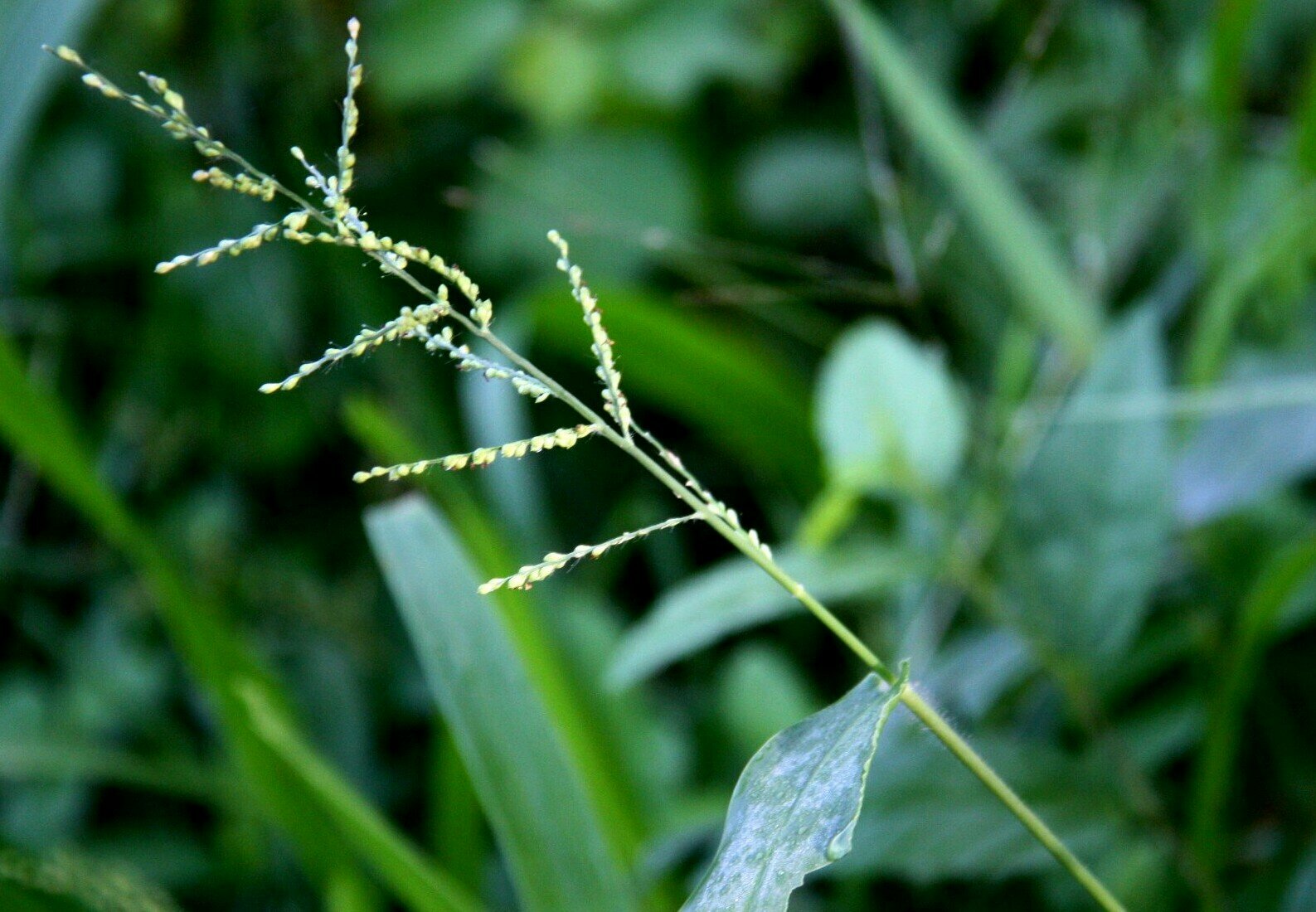 |
|||
| 64. Bulbostylis barbata (Rottb.) Family: CYPERACEASE Flowering & Fruiting: July-September. Ecology: Abundant among grasses at hill top. Description: Non-rhizomatous herbs. Stem tufted, striate, leafy. Leaves filiform. Spikelets sessile, aggregated into a head, reddish brown on maturity. Glumes spirally imbricate, ovate, keeled. Stigmas 3, filiform. Nut sessile, 3-gonous, pale brown. Medicinal uses: A decoction of the plant is drunk to treat dysentery. IUCN Status: |
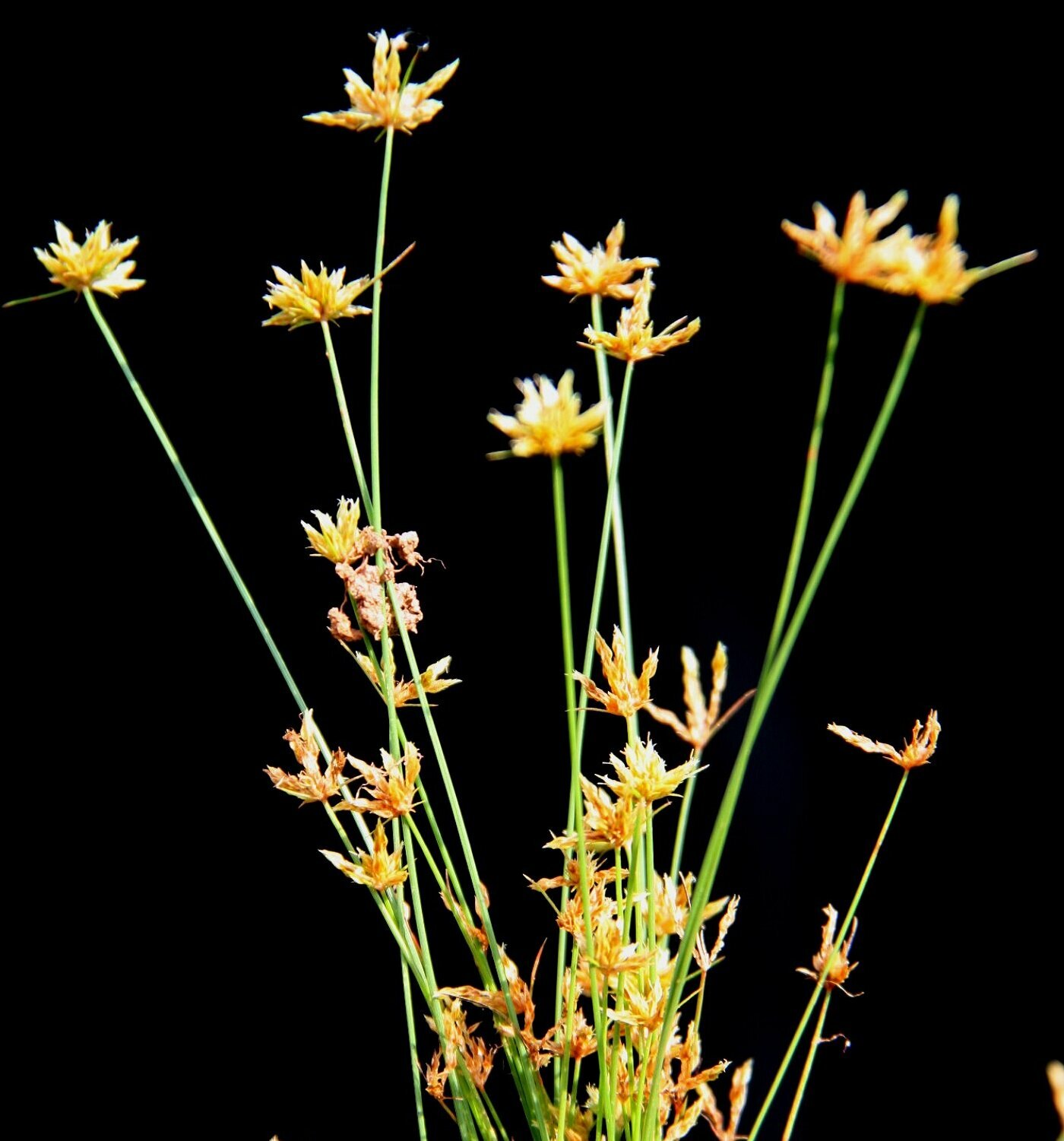 |
|||
| 65. Butea monosperma Lam. Family: FABACEAE Flowering: February- April. Fruiting: May-July. Ecology: Common on lower hill slopes in dry deciduous forests. Medicinal uses: Butea gum, or Bengal kino, an exudate from the tannin-rich vesicles in the bark, is used medicinally. A powerful astringent, it is used in the treatment of diarrhoea and wounds. The seeds, ground into a paste with honey, are used for their anthelmintic, antifungal, antibacterial and purgative properties. The seed paste, mixed with lemon juice, are used as a rubefacient. The seeds contain around 18% oil. Called ‘moodoga oil’, it is an effective treatment for hookworms. IUCN Status: |
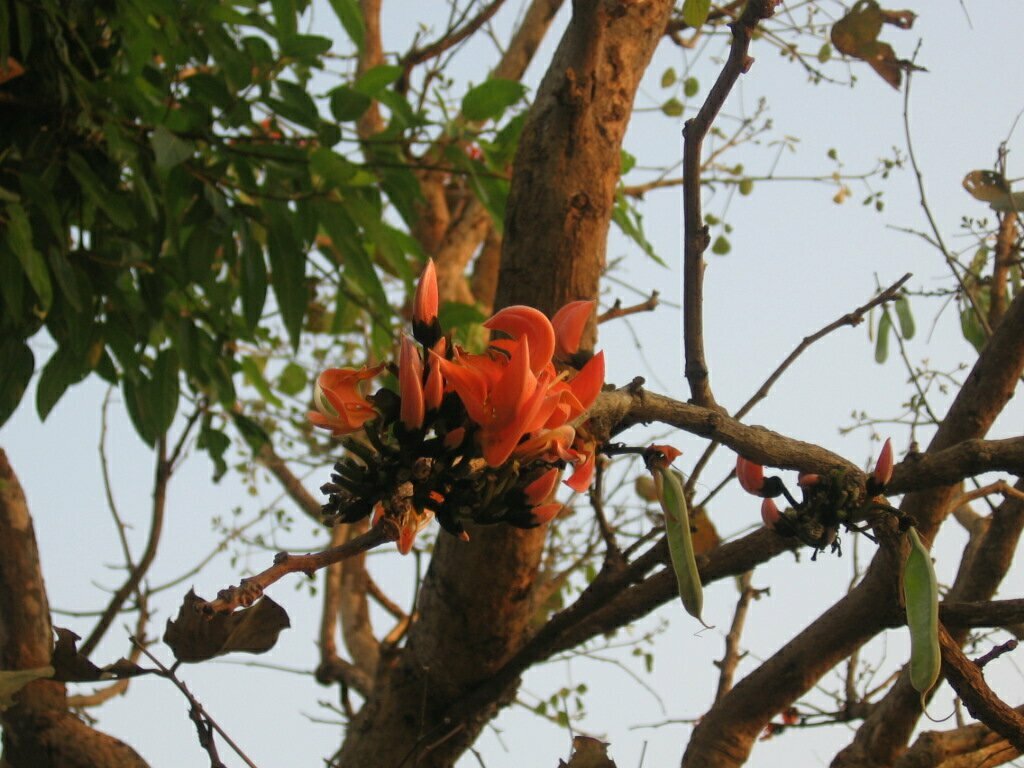 |
|||
| 66. Butea superba Roxb. Family: FABACEAE Flowering: March-April. Fruiting: May-June. Ecology: Common in dense deciduous forests. Medicinal uses: A gum obtained from the bark is astringent. The root is used as a rejuvenative. A spoonful of a paste made from the root is taken in a cup of water by a woman to facilitate an easy delivery. The root is combined with an equal proportion of the roots of Nyctanthes and Woodfordia floribunda, the seeds of Cassia tora and Vernonia anthelmintica, and the stem juice of Trichosanthes palmata – these are made into a paste with cow’s urine and used as a local application to treat the poisonous bites of animals. The plant has potential as an active ingredient in preparations for the treatment of skin-ageing in post-menopausal women. IUCN Status: |
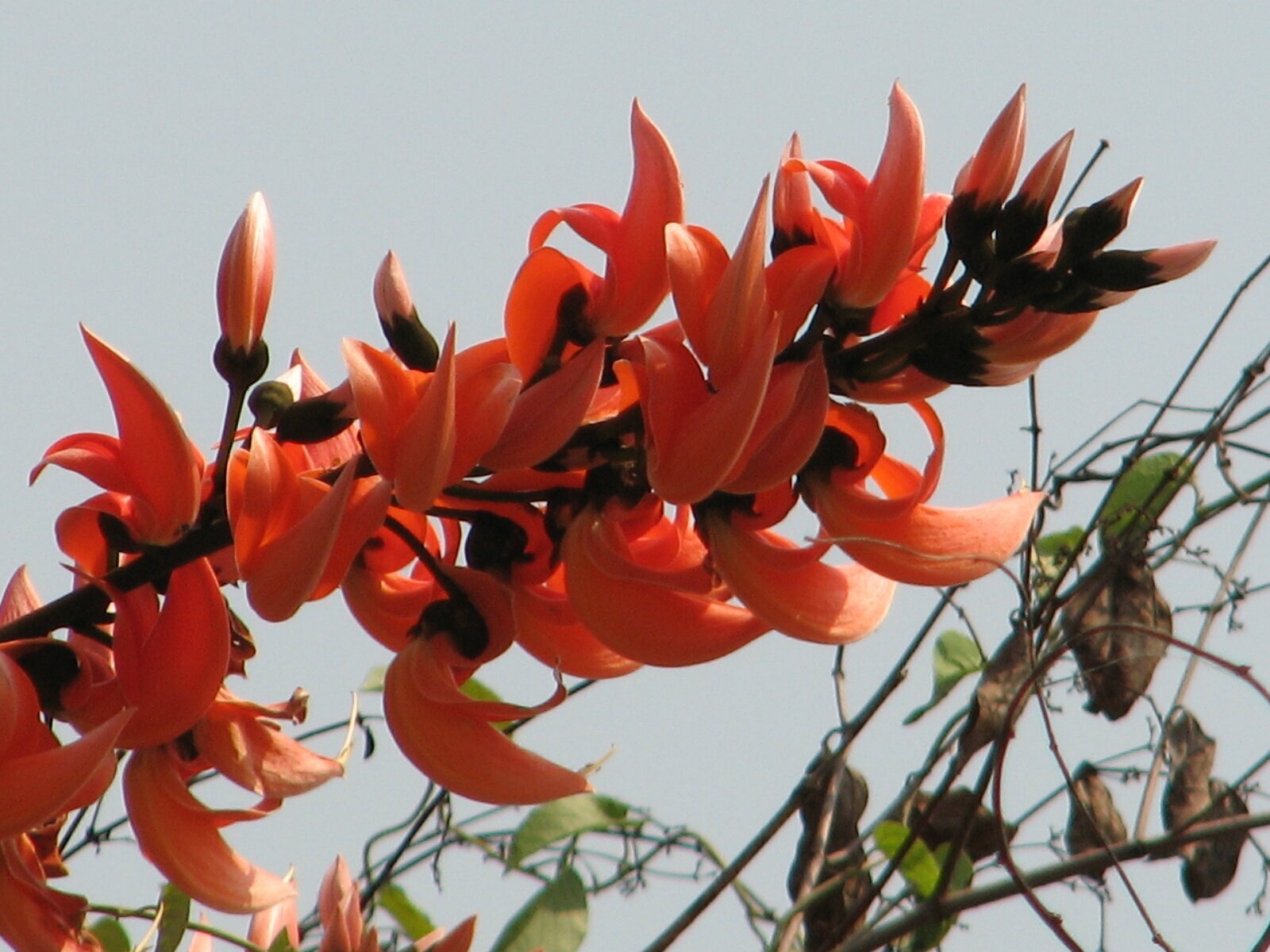 |
|||
| 67. Caesalpinia bonduc L. Family: CEASALPINIACEAE Local Name: Pansuka, Gila Flower & Fruiting: August - December Medicinal uses: Root bark is useful in amenorrhoea, dysmenorrhoea, fevers, cough, asthma, intestinal worms, colic, flatulence and dyspepsia. Leaves are useful in elephantiasis, intestinal worms, splenomegaly, hepatomegaly, amenorrhoea, dysmenorrhoea, fevers and pharyngodynia. Seeds are useful in vitiated conditions of tridosa, arthralgia, inflammations, hydrocele, cough, asthma, leucoderma, leprosy, skin diseases, dyspepsia, dysentery, colic, haemorrhoids, intestinal worms, hepatopathy, splenopathy, diabetes and intermittent fevers. The seeds powder used for increase the quality and concentration of semen. IUCN Status: |
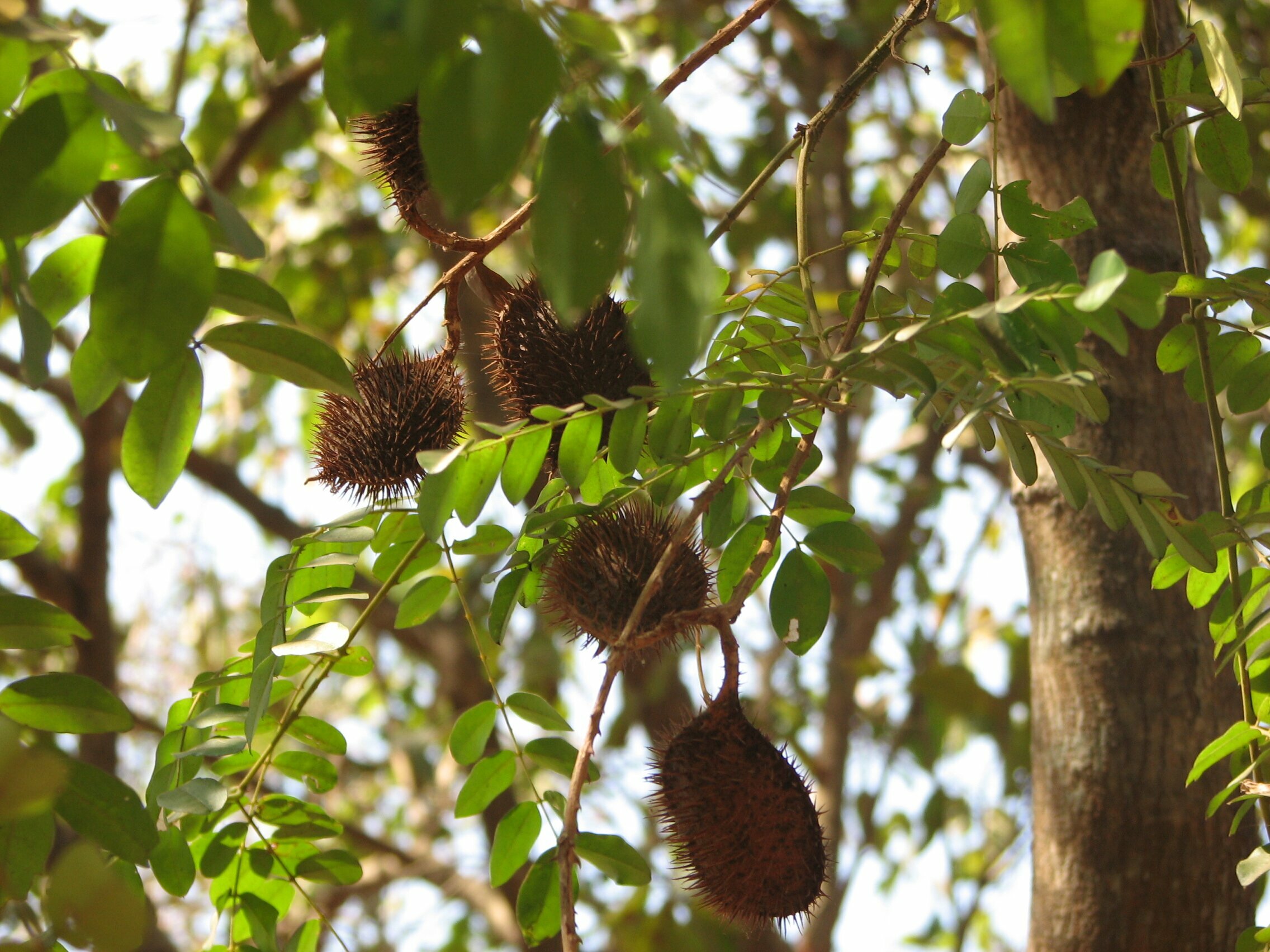 |
|||
| 68. Caesulia axillaris Roxb. Family: COMPOSITAE Flowering & fruiting: January – March Ecology: Common in marshy lands at foot hills near stream. Locality: Batipathar Description: Erects or decumbent ascending annuals. Stem brown-streaked flaccid. Leaves sessile, lanceolate, cuneate remotely denticulate; base sheathing, semi amplexicaul. Heads axillary, globose, compound. Florets tubular, white. IUCN Status: |
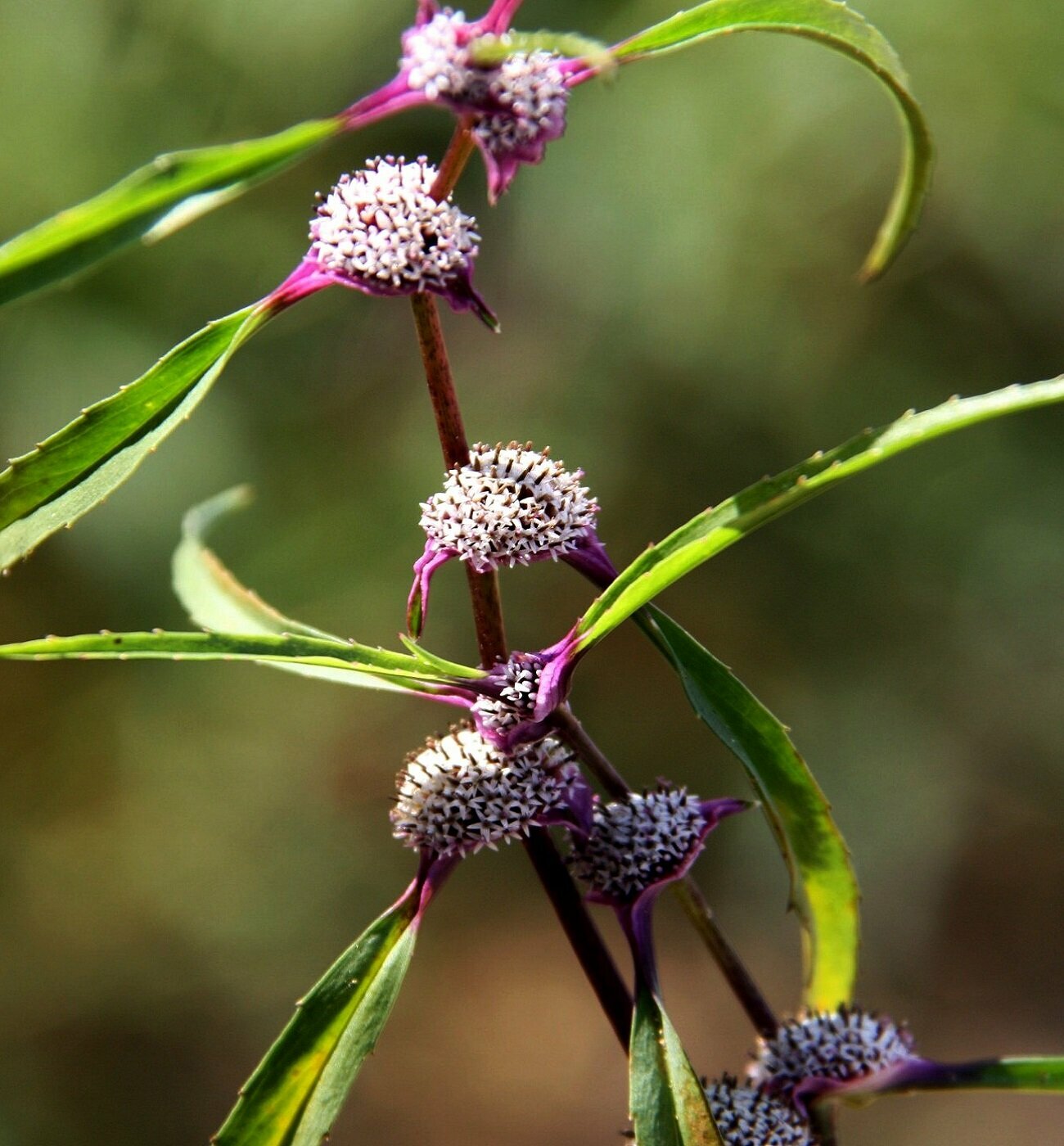 |
|||
| 69. Cajanus scarabaeoides Family: FABACEAE Ecology: Occure on open grassland, dry scrub forest Description: It is an annual to perennial climbing plant with twining stems up to 2 metres long growing from a woody rootstock. Stems often reddish, covered with short ferruginous pubescence. Medicinal uses: The whole plant is used in the treatment of swelling and pain in the leg during pregnancy, night fevers, renal stones, eye diseases, dropsy, anaemia, hemiplegia, burns and wound, small-pox, syphilis, gonorrhoea, spermatorrhoea, gravel, cholera, dysentery, snake-bite and rinderpest. A decoction of the whole plant, combined with honey, is taken orally as tonic after a woman has given birth. Combined with black pepper (Piper nigrrum), a decoction of the plant is used in the treatment of diarrhoea and dysentery. The juice of the plant is used as a treatment for diarrhoea and dysentery. IUCN Status: |
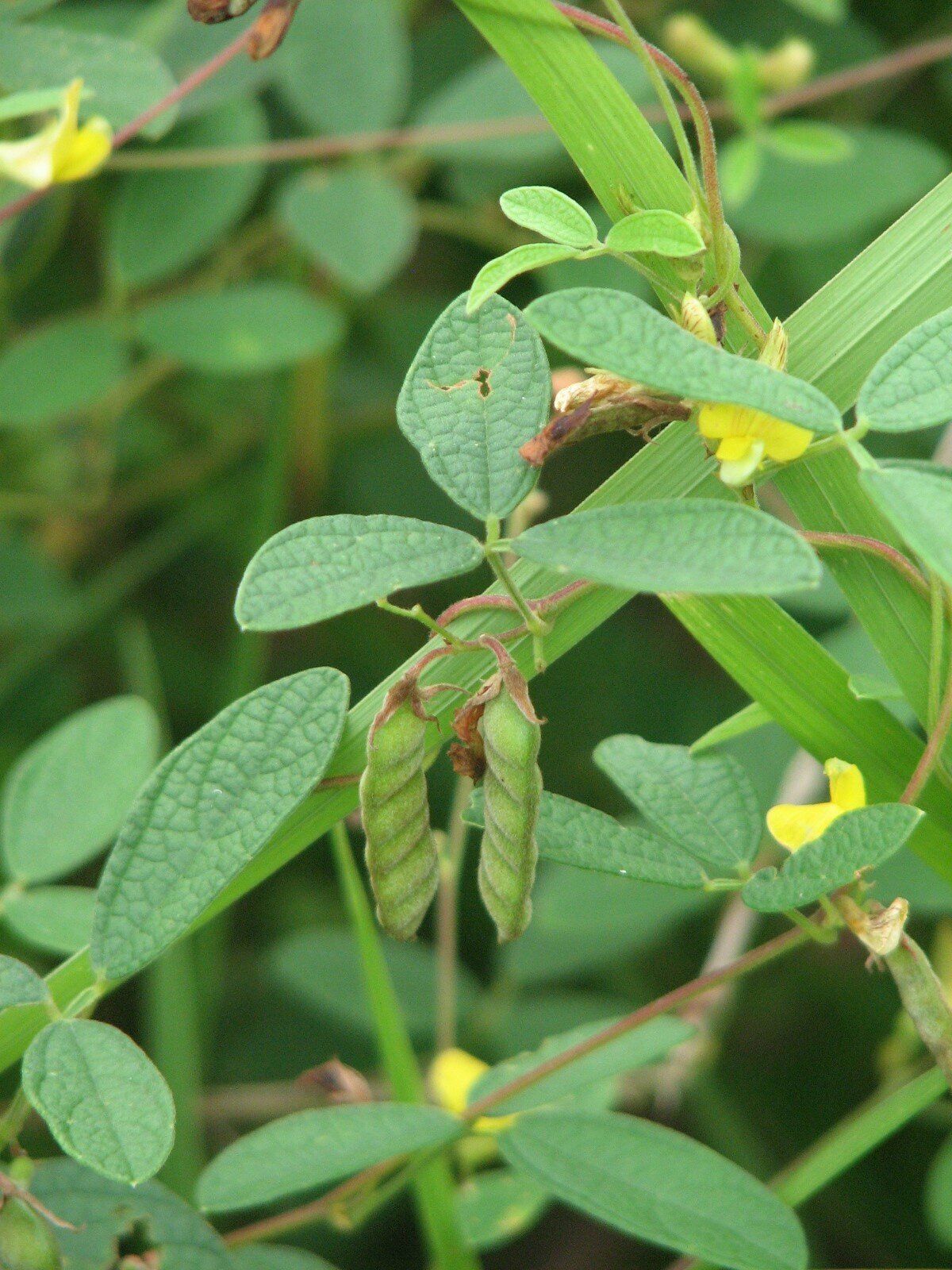 |
|||
| 70. Calamus guruba Buch Family: ARECACEASE Flowering & fruiting: March-April & November-January. Ecology: Occasional, along streams at foot hills. Description: Large climbers. Stems covered with leaf sheaths and flattened spines. Leaves large; leaflets 30-40 linear, dark-green, smaller upwards, margins setose; petioles and rachis spiny beneath. Spathes brown, shining. Fruit globose, scales yellowish-green. IUCN Status: |
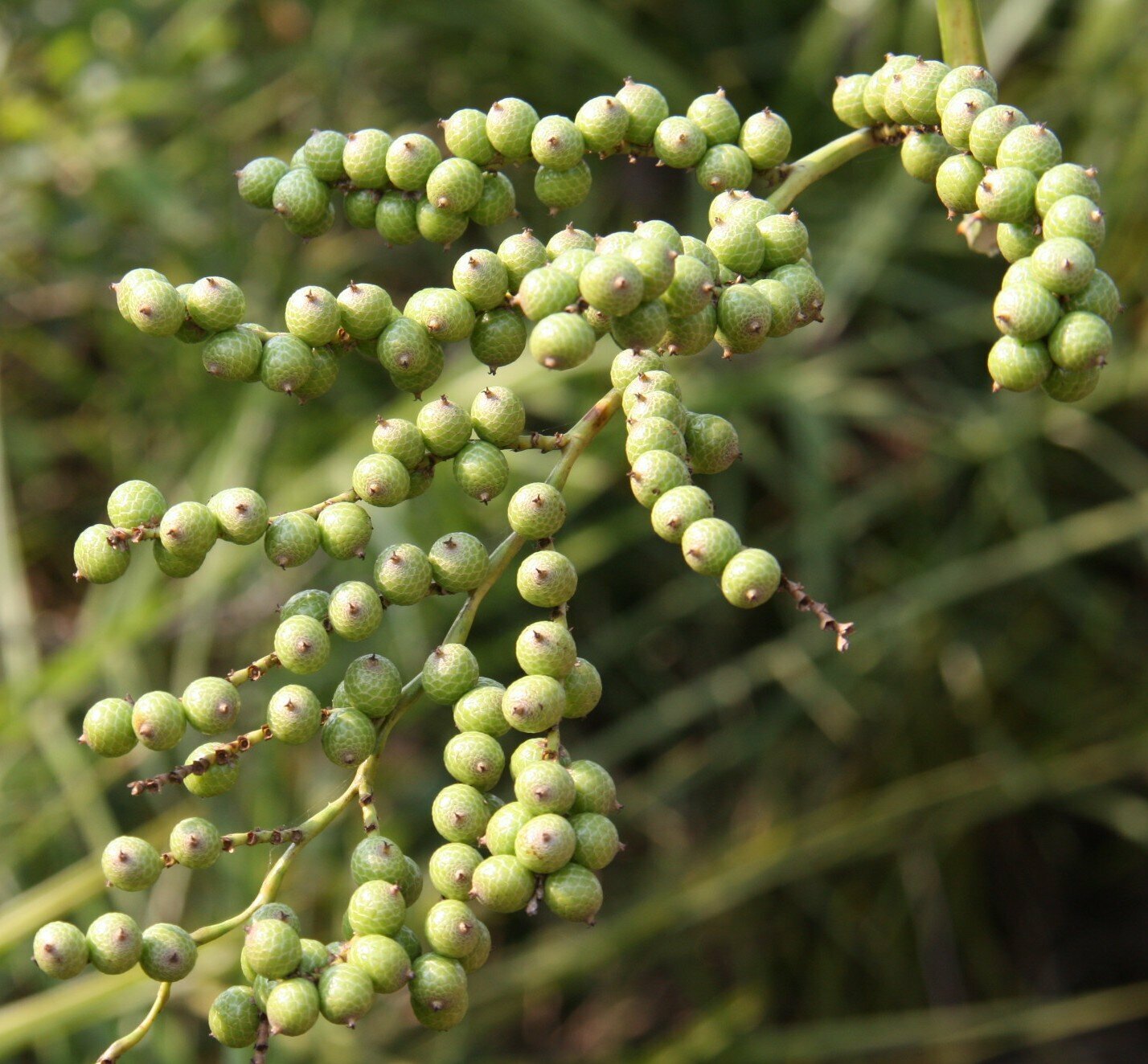 |
|||
| 71. Calotropis gigantea (Linn.) Family: APOCYNACEAE Local name: Akand, Arakh Flowering & fruiting: Around the year. Ecology: Abundant in thickets and waste places. Description: LaRigid bushy shrubs; young shoots, leaves and inflorescences cottony pubescent; latex milky. Leaves sessile, decussate, ovate elliptic, coriaceous. Flowers pale -violet, in axillary and terminal umbellate cymes. Medicinal uses: People use the bark and root bark for medicine. Despite serious safety concerns, calotropis is used for digestive disorders including diarrhea, constipation and stomach ulcers; for painful conditions including toothache, cramps, and joint pain; and for parasitic infections including elephantiasis and worms. IUCN Status: |
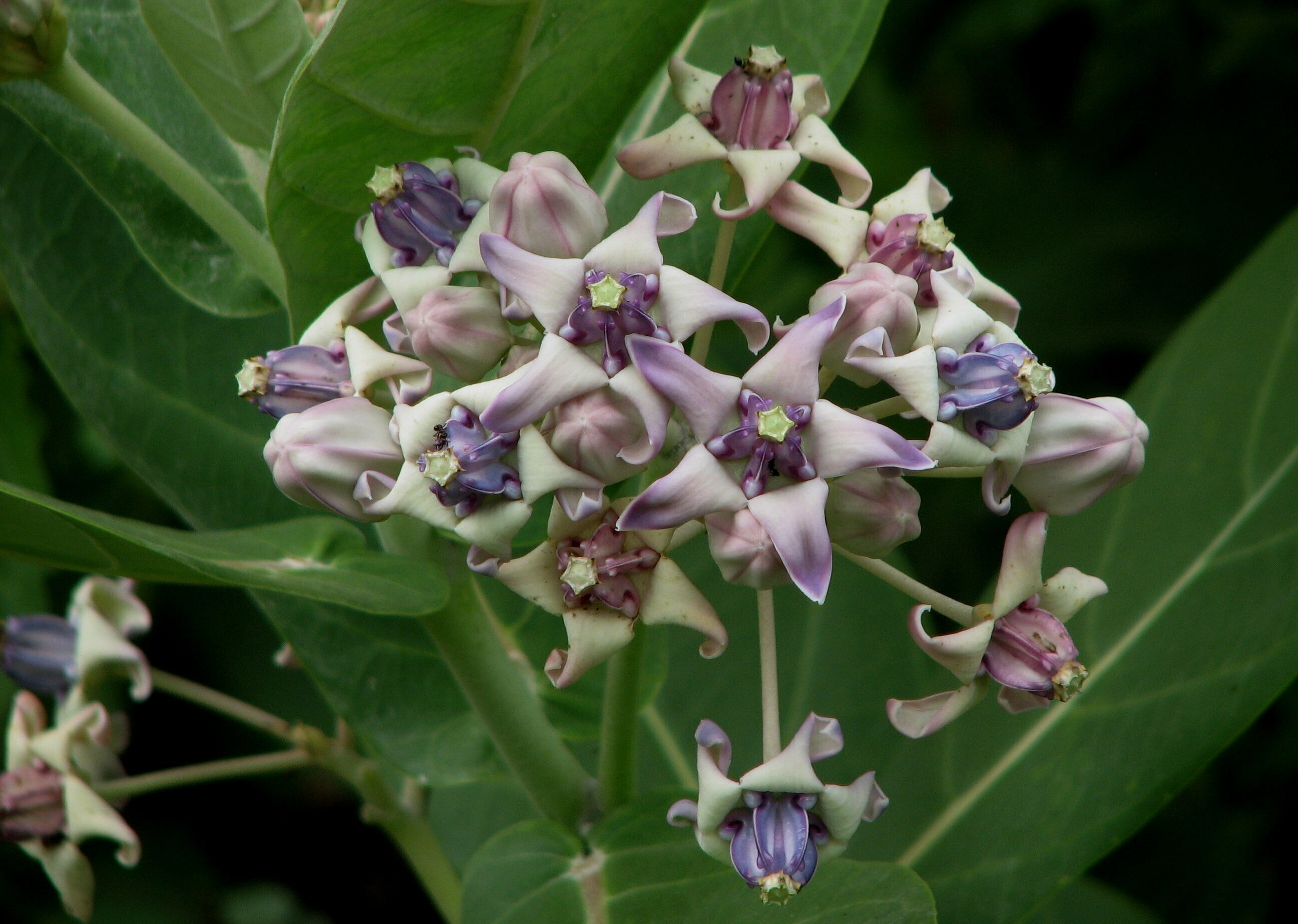 |
|||
| 72. Calotropis procera Family: APOCYNACEAE Flowering: March-April Fruiting: November-January. Ecology: Occasional, along streams at foot hills. Description: It is an upright, spreading, milky-sapped, evergreen shrub or small tree of the milkweed family. It typically grows to 6-8’ (rarely to as much as 15’) tall. Medicinal Uses: This plant is is used for digestive disorders including diarrhea, constipation and stomach ulcers; for painful conditions including toothache, cramps, and joint pain; and for parasitic infections including elephantiasis and worms. The leaves are used for the treatment of joint pain and the pills made from the dried latex of the plant, are taken before sleep are used for the treatment of fistula. IUCN Status: |
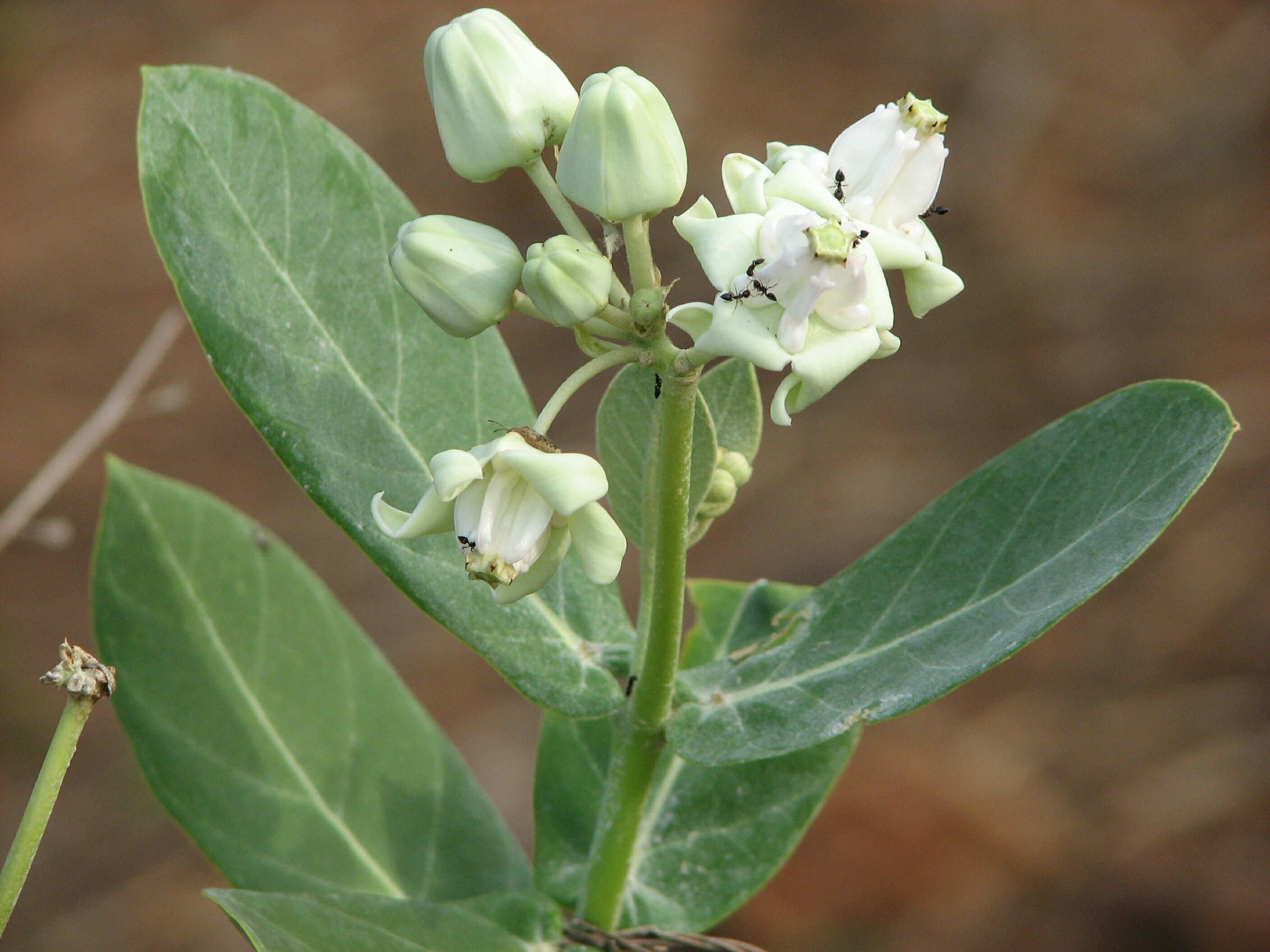 |
|||
| 73. Calycopteris floribunda (Roxb.) Family: COMBRETACEAE Flowering: March-May Fruiting: May-July. Ecology: Common in dry hilly forests and thickets. Description: Large scandent shrubs; young parts rusty-tomentose. Leaves opposite, elliptic or ovate, acute, base rounded, pubescent. Inflorescence terminal and axillary, panicled cymes. Calyx yellowish white; hypanthium tubular villose. Fruit oblong-ellipsoid, ribbed, crowned by persistent calyx. Medicinal uses: The leaves are bitter, astringent, laxative, anthelmintic, depurative, diaphoretic and febrifuge. They are useful in intestinal worms, colic, leprosy, malarial fever, dysentery, ulcers and vomiting. The fruits are useful in jaundice, ulcers, pruritus and skin diseases. IUCN Status: |
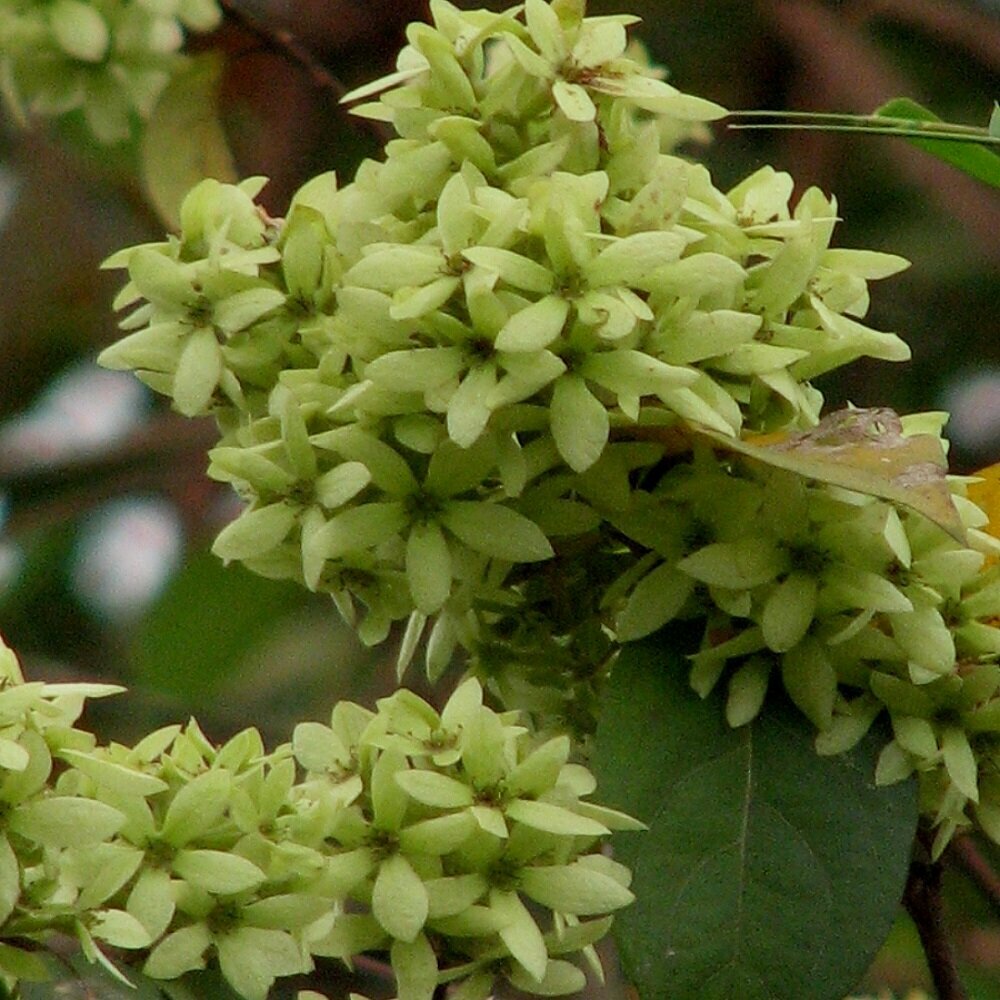 |
|||
| 74. Canavalia virosa Roxb. Family: FABACEAE Flowering: August-October. Fruiting: December-March. Ecology: Common in hedges and dense scrubs. Description: Extensive twiner. Leaflets ovate, yellow-pubescent beneath, base rounded acuminate. Flowers in axillary racemes. Calyx yellowish brown, 2-lipped. Petals clawed, auricled, pink. Pod oblong, compressed, dehiscent. Medicinal uses: The leaves of the plant are used for the treatment of peptic ulcers. IUCN Status: |
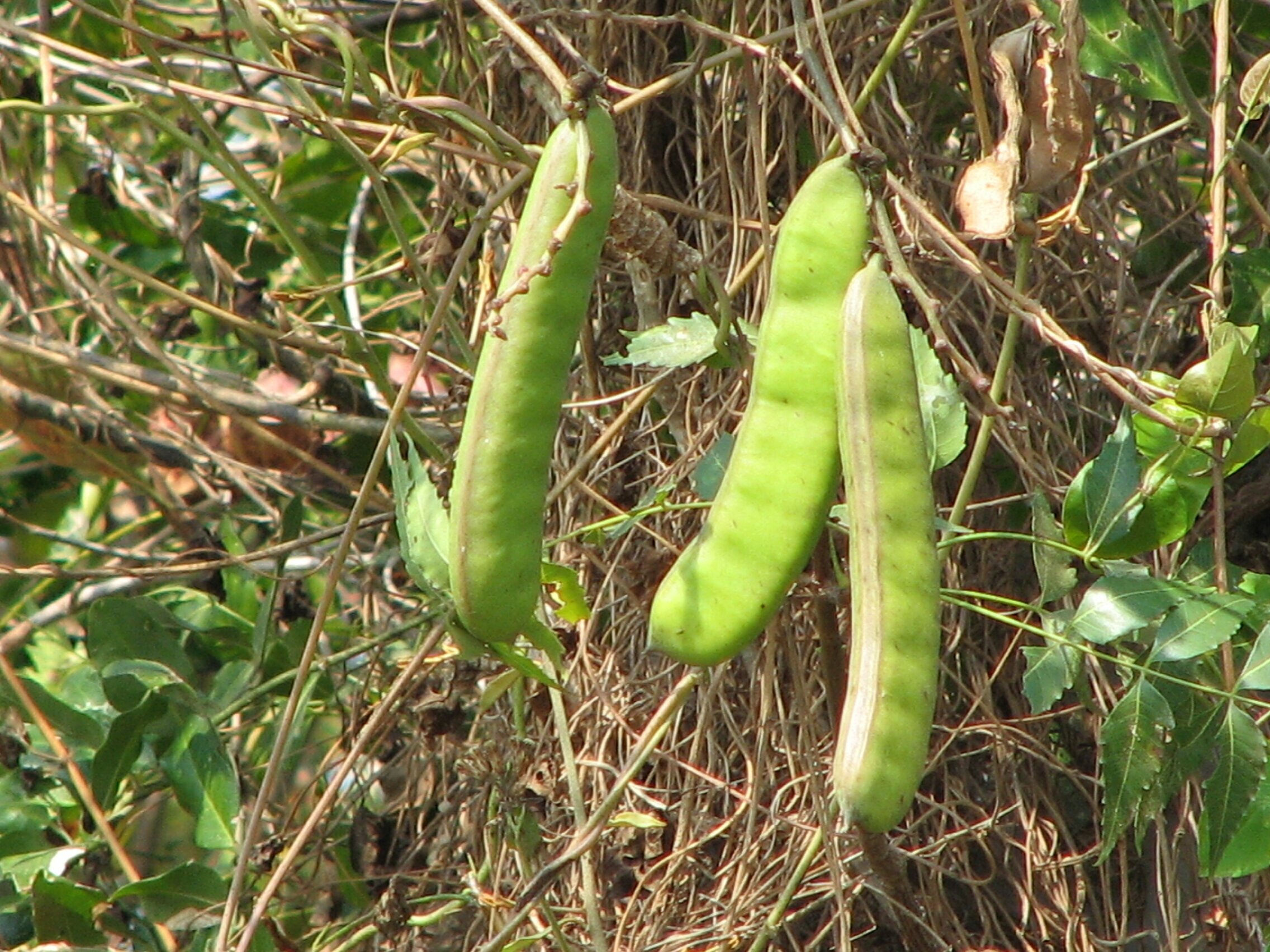 |
|||
| 75. Canscora diffusa (Vahl) Family: GENTIANACEAE Flowering & Fruiting: September-March. Ecology: Quite common on moist moss-covered rocky faces. Locality: Harishankar, Manbhang. Description: Erect, repeatedly dichotomously branched annuals. Stem 4 angled. Leaves elliptic-ovate to oblong. Flowers pink, in a leafy paniculate cyme. Calyx ribbed. Capsule as long as calyx. Medicinal uses: The plant possesses immunomodulatory, analgesic, anticonvulsant, antitubercular, antiinflammatory, spermicidal, central nervous system–depressive, and cardiostimulant properties. Clinical trials of marketed formulation showed very encouraging results. IUCN Status: |
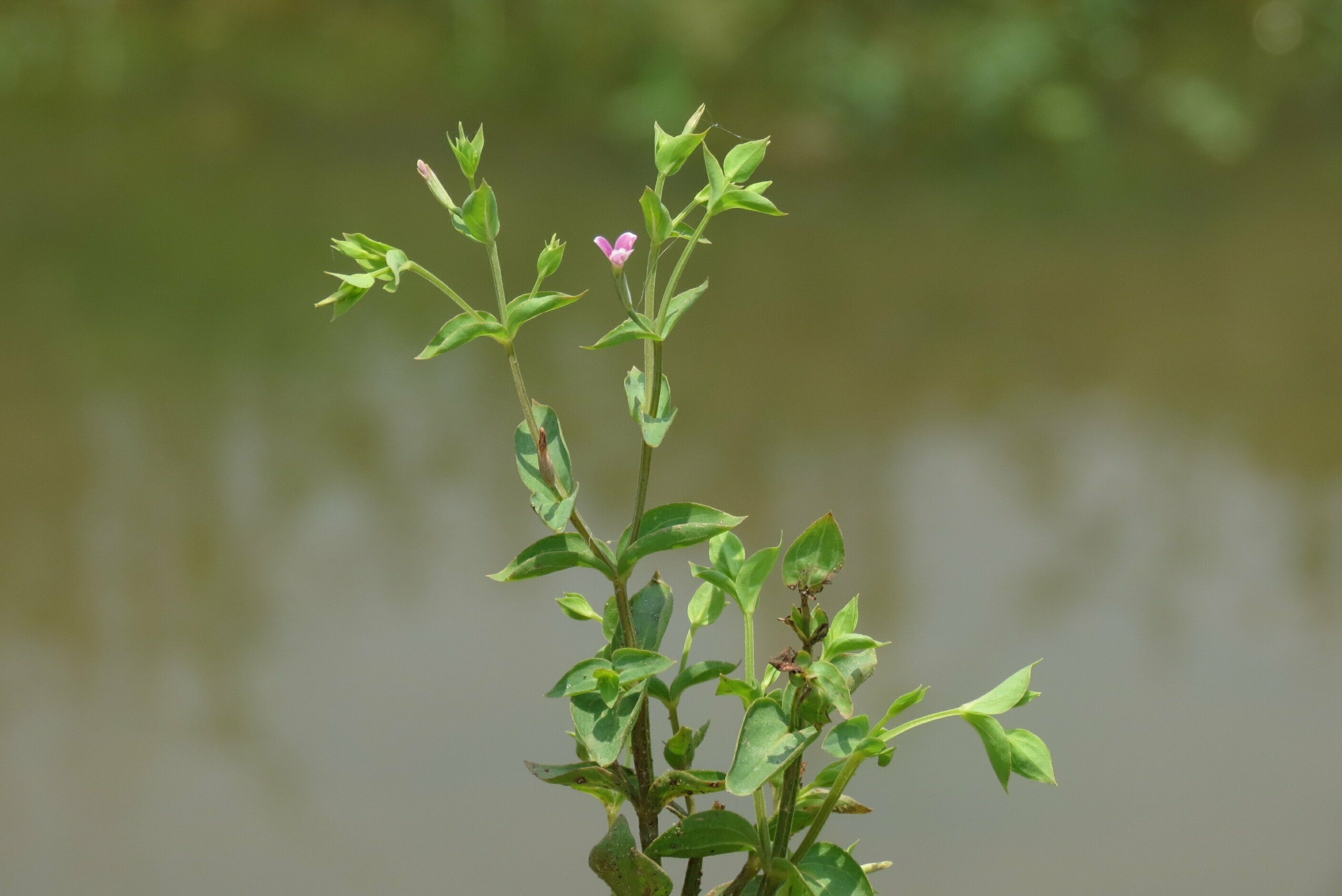 |
|||
| 76. Canthium đicoccum (Gaertn.) Family: RUBIACEAE Local Name: Beniman Flowering: February – April. Fruiting: May – June Ecology: Common along perennial streams in damp forests. Description: Small trees. Leaves bifarious, ovate or ovate-lanceolate, acuminate, base rounded or cuneate. Flowers 5-merous, greenish white in pubescent cymes. Fruit globose, black, pyrenes-2. Medicinal uses: This herbal medicine is used for the treatment of diabetes among the major tribal groups. The plant extract cures diarrhea and fever. The bark extract and root extract is effective against anti-diarrheal, anti-pyretic, febrifuge. IUCN Status: |
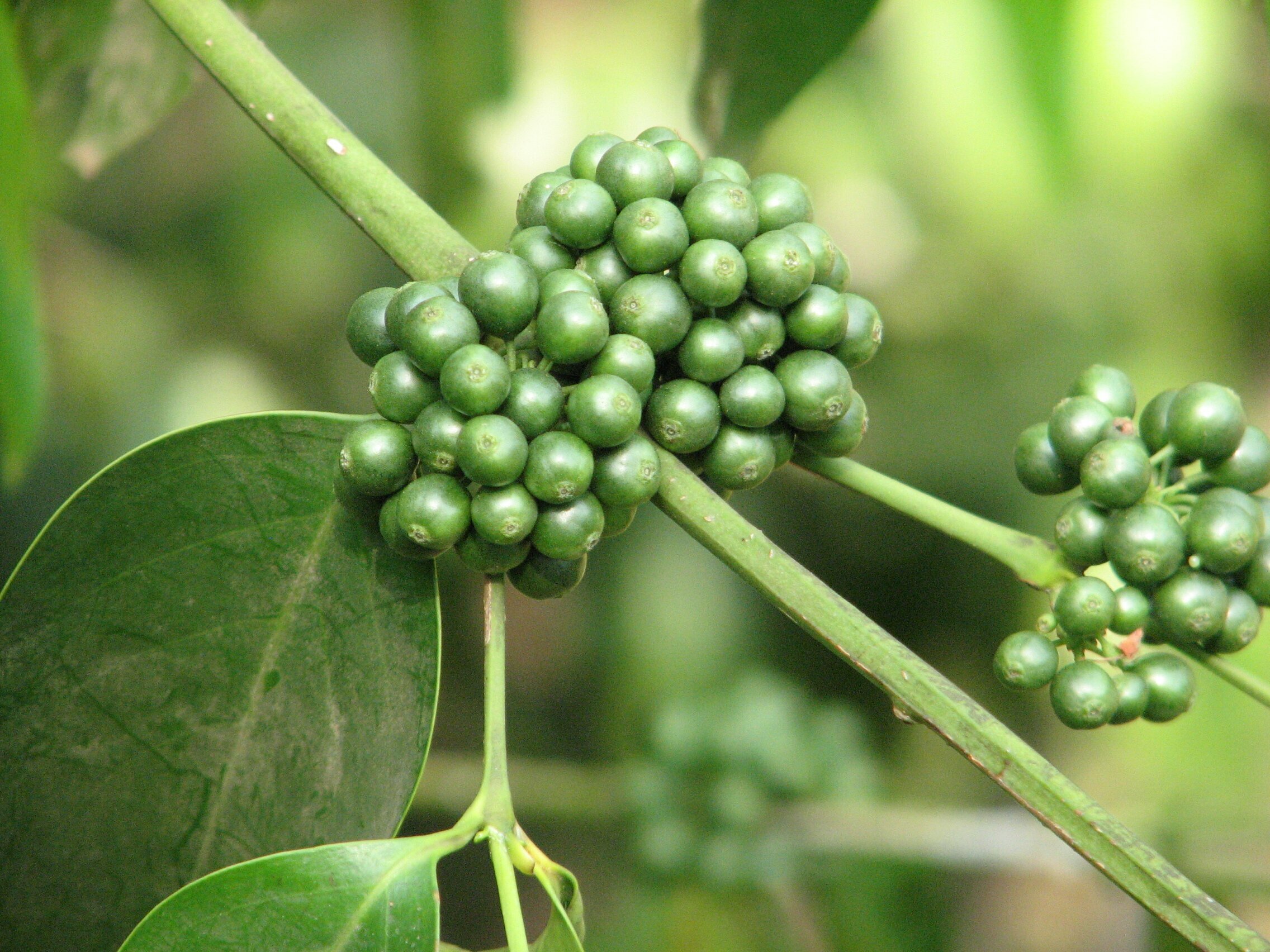 |
|||
| 77. Capparis brevispina DC. Family: CAPPARACEAE Flowering: March-May Fruiting: May – June Ecology: Common in bushes. Description: Shrubs. Leaves elliptical or ovate oblong, coriaceous. Sepals red-margined. Petals with white yellow patch at base, undulate. Ovary oblong, pubescent. Berry irregularly ovoid many seeded. Medicinal uses: Traditionally, it is used to cure swelling of testicle, small pox, boils, cholera, colic, hemiplagia, neuralgia, sores, pneumonic & Pleurisy. The root bark was used in small pox and swelling of testicles. IUCN Status: |
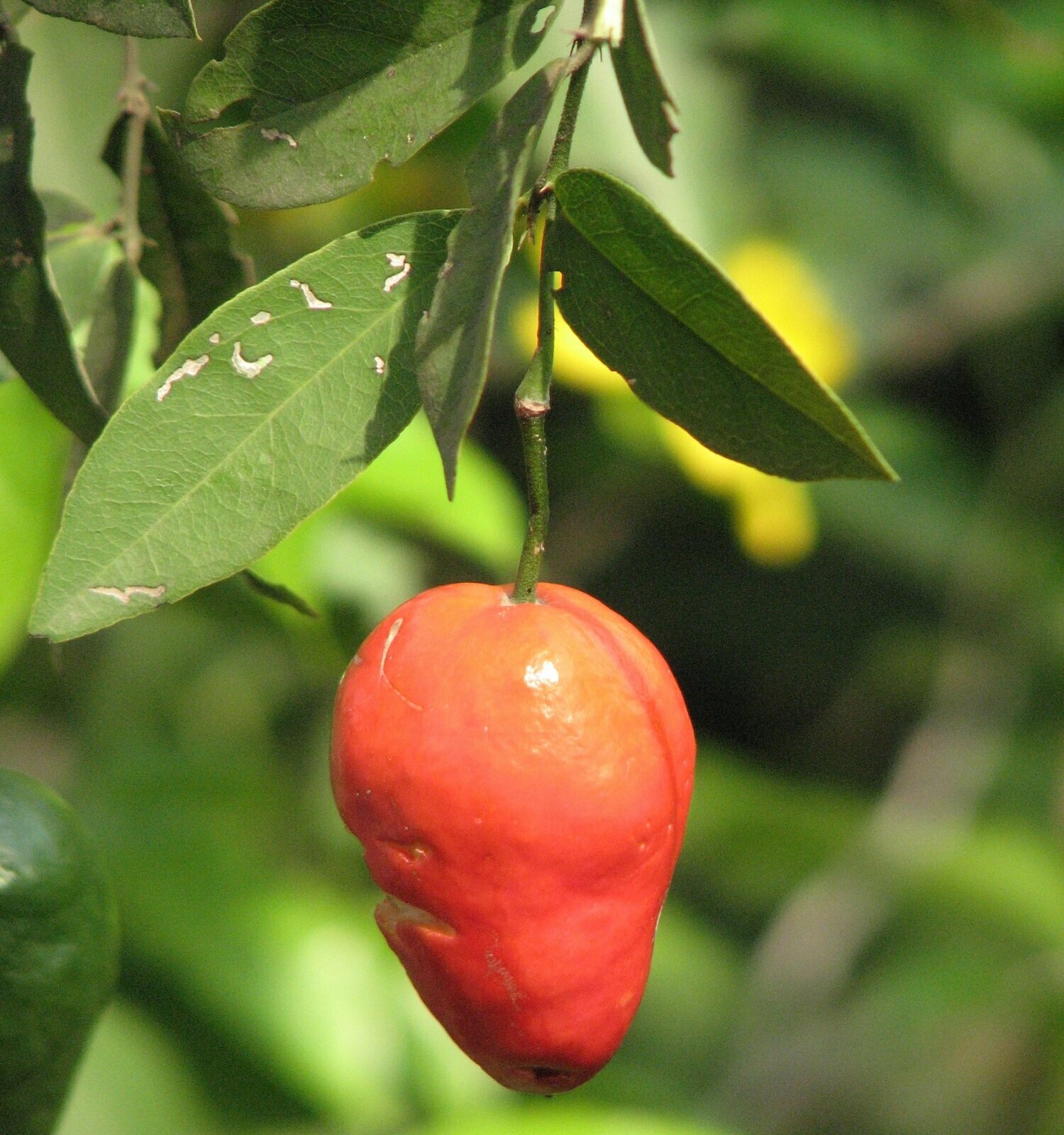 |
|||
| 78. Capparis sepiaria Linn. Family: CAPPARACEAE Flowering & Fruiting: March-August Ecology: Quite frequent in scrub forests. Description: Subscandent tomentose shrubs. Leaves elliptical, obtuse or obscurely emarginated. Outer sepals enclosing the bud. Petals white margin ciliated. Filamnets coiled. Berries subglobose 1-2 seeded black when ripe. Medicinal uses: This plant is used as blood purifier, stomachic, tonic and appetizer. It′s flowers, leaves and roots are used in cough and toxemia and also it is used as a cure for the snakebite. IUCN Status: |
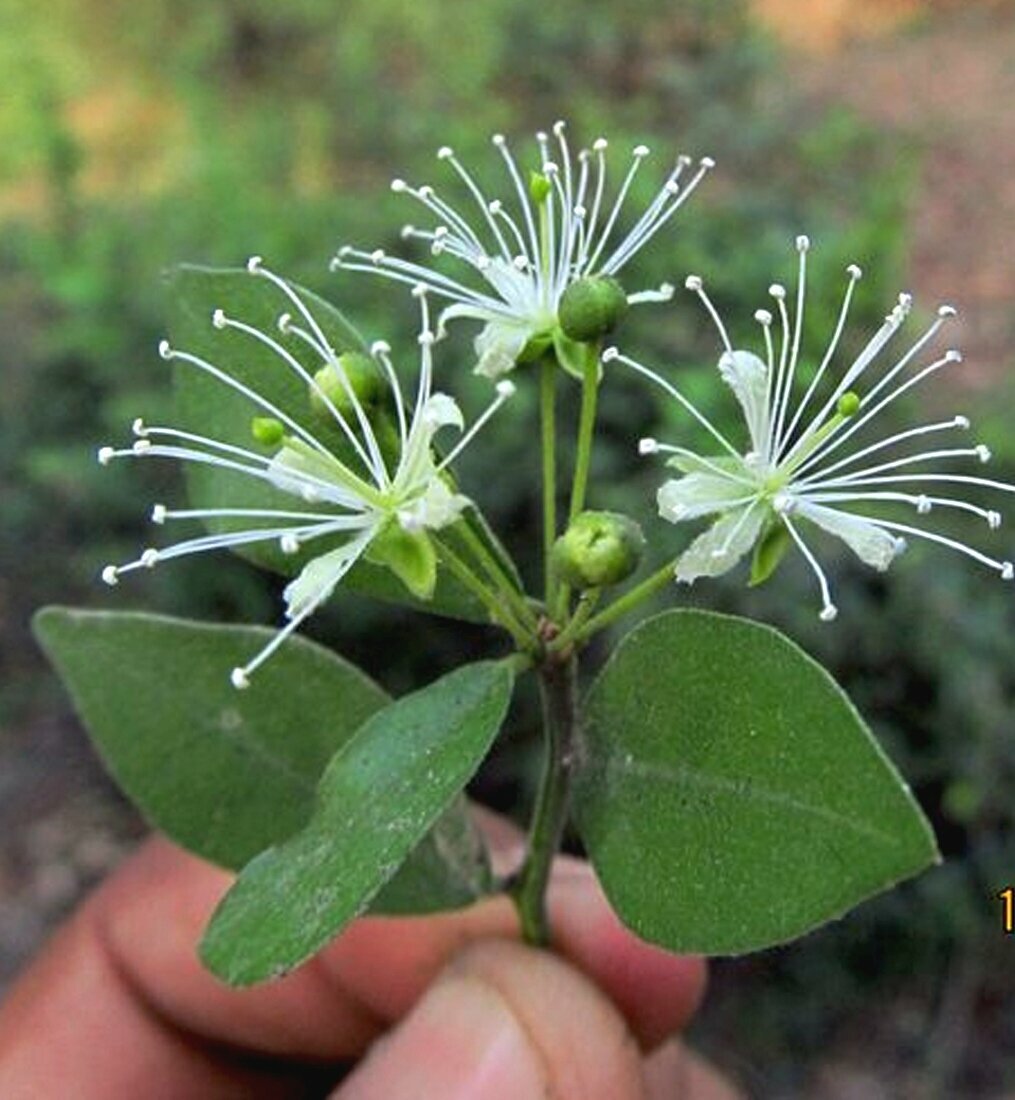 |
|||
| 79. Capparis zeylanica L. Family: CAPPARACEAE Local Name: Asaduwa Flowering and fruiting: March-May Ecology: Occur on dry deciduous forests. Description: Alternately arranged elliptic leaves are 3-6 cm long, with rounded base and short stalk. Beautiful flowers, which are essentially a spreading spray of pink-white stamens, are 4-5 sm across, and appear solitary in leaf axils. The flowers turn dark pink while fading. Medicinal uses: In traditional medicine system, leaves used as cataplasm for boils, swelling and hemorrhoids. Decoction of root-bark used for vomiting and for improving the appetite. Leaves also used to improve the appetite. A paste made up from stem bark is used for the treatment of gout. IUCN Status: |
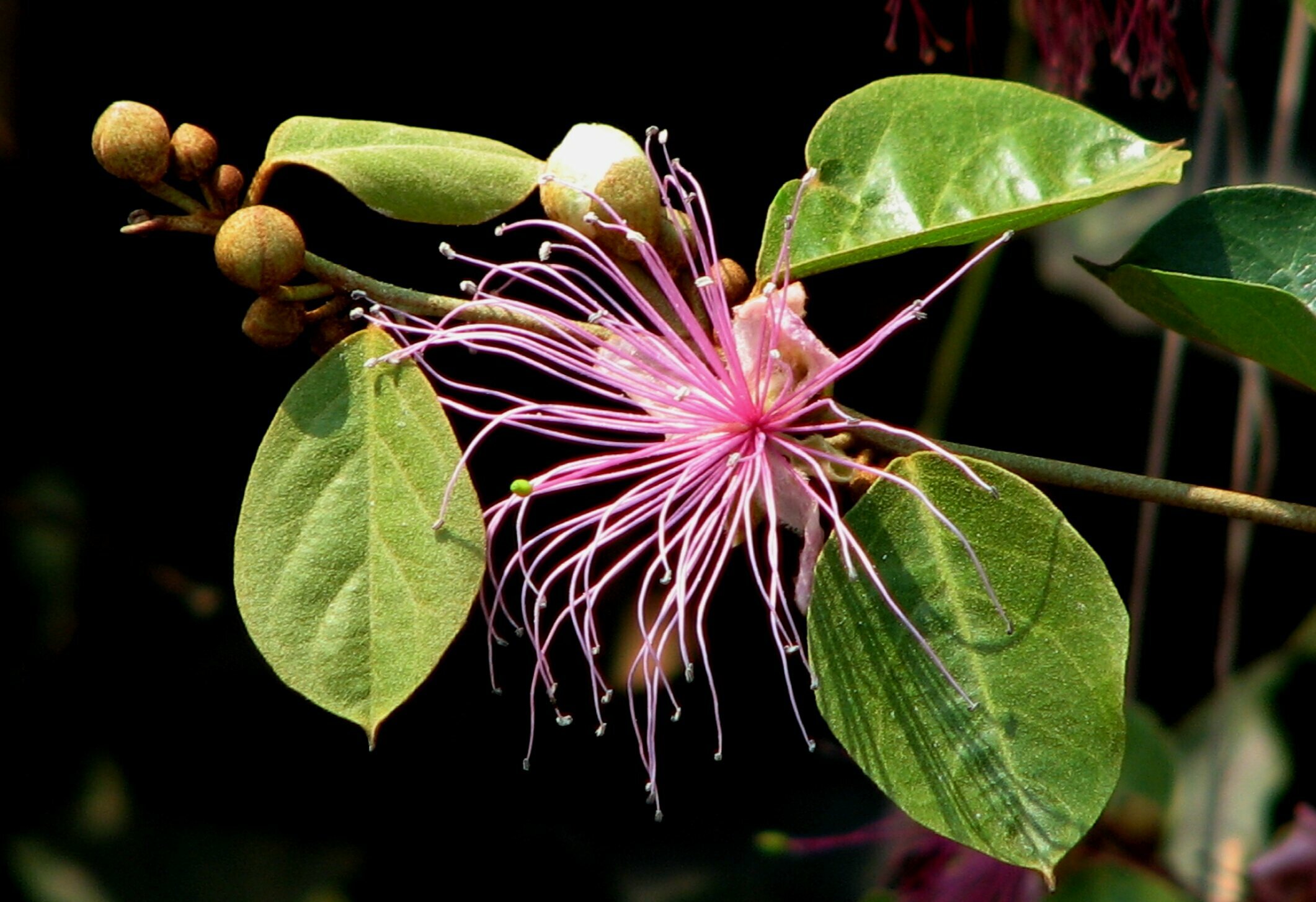 |
|||
| 80. Cayratia pedata Lam. Family: CUCURBITACEAE Flowering & Fruiting: August-November. Ecology: Occasional on dry hill slopes. Description: Large climers. Leaves 7-foliolate; leaflets oblong lanceolate acuminate, cordate assymetrical, pubescent. Flowers greenish white. Berry subglobose, green 2seeded. Medicinal uses: Cayratia pedata is an indigenous medicinal plant commonly known as Birdfoot Grapevine. The leaves of this plant have been used as a traditional medicine for the treatment of ulcers, diarrhea and inflammation. IUCN Status: |
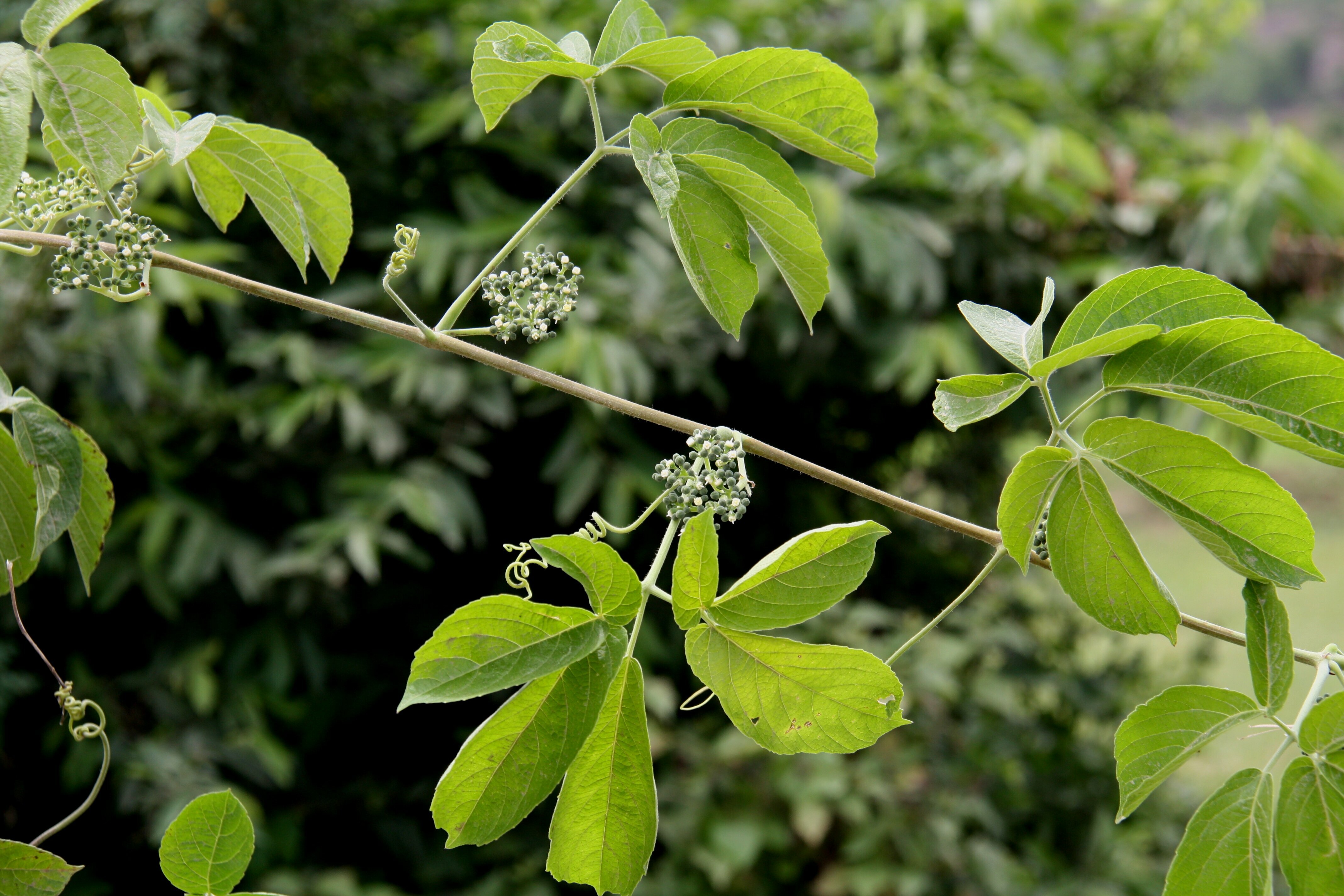 |
|||
| 81. Cardiosperum helicacabum Linn. Family: SAPINDACEAE Local name: Phutuphutika Flowering & Fruiting: July-October. Ecology: Very common in fallow fields and waste places. Description: Herbs, woody at base. Leaflets lobed, thinly pubescent, glaucous beneath, terminal larger than the laterals. Flowers polygymous, white, in axillary, lomg-peduncled cymes. Capsule pyriform, inflated, 3-lobed, bearing 3-fid stigma. Seeds globose, black, arillate. Medicinal uses: The plant used for the treatment of rheumatism, nervous diseases, stiffness of the limbs and snakebite. IUCN Status: |
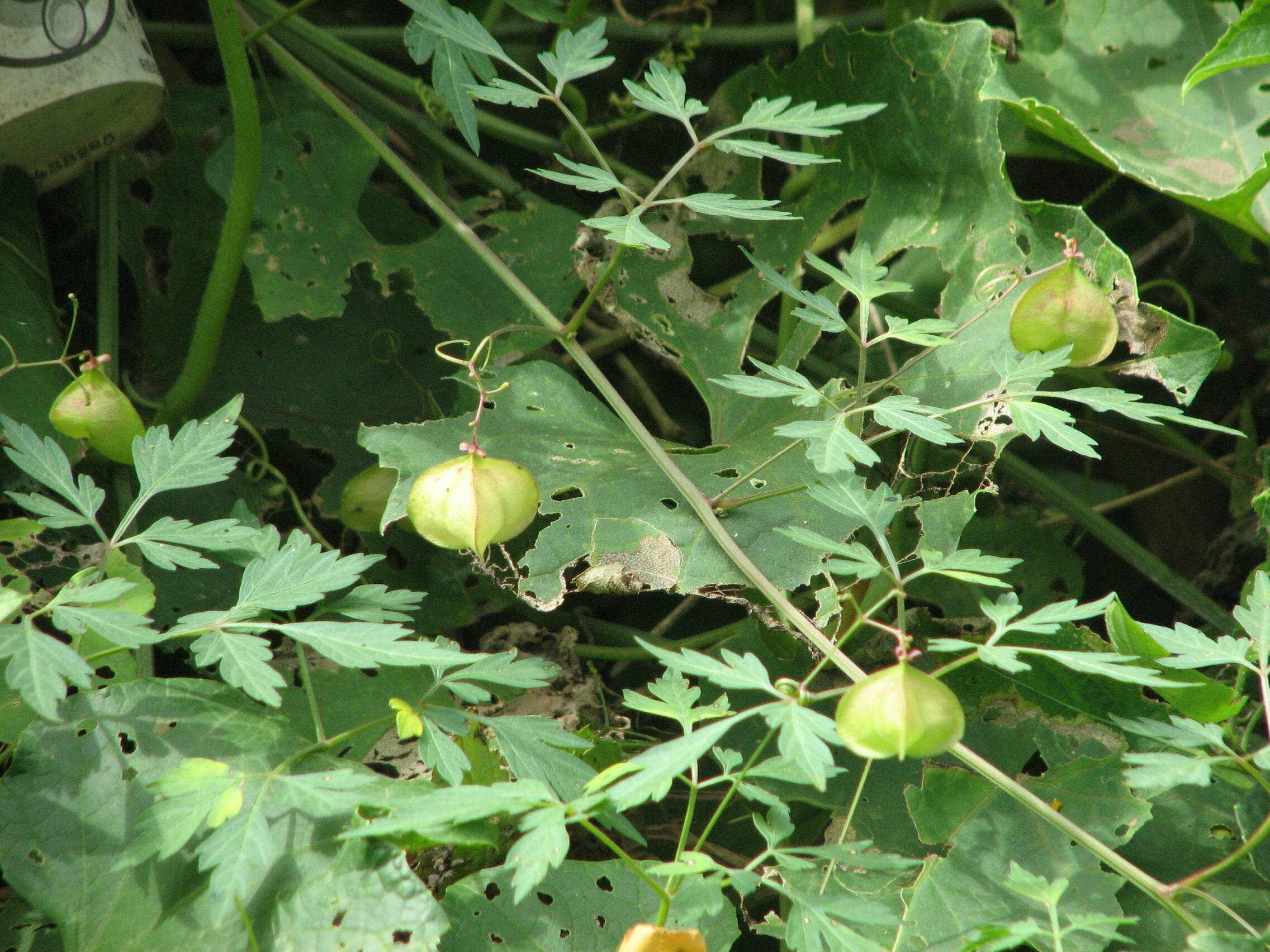 |
|||
| 82. Careya arborea Roxb. Family: LECYTHIDACEAE Local name: Kumbhi Flowering: March-May Fruiting: May-August. Ecology: Common in valleys and lower hili slopes. Medicinal uses: Kumbhi tree – Careya arborea is an Ayurvedic herb used for the treatment of ulcer,cough, eruptions in the skin, wound and promotes digestion. The fibrous bark has been applied medicinally for relieving body swellings. The juice of the bark, and the calices of the flowers, are astringent and mucilaginous. They are often used internally in India for treating coughs and colds, and are applied externally as an embrocation. An astringent gum exudes from the fruit and stem. IUCN Status: |
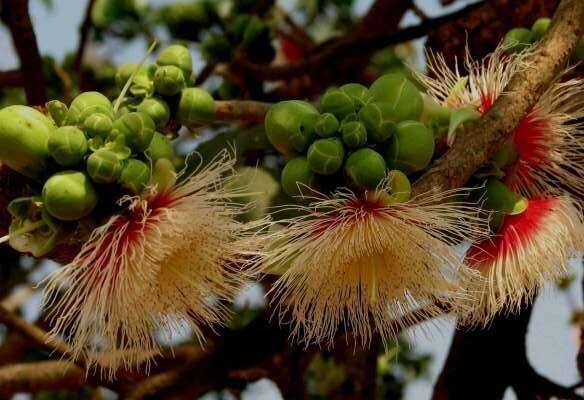 |
|||
| 83. Carmona retusa Linn. Family: FABACEAE Flowering & Fruiting: July-December. Ecology: Occasional in waste places and shrubs land. Description: Undershrubs; braches furrowed, appressed white pubescent. Leaves obovate-lanceolate, chartaceous, retuse apex. Racemes terminal, 18-26 flowered. Pod glabrous, many-seeded. Medicinal uses: Roots are used against coughing up blood, leaves mixed with those of C. quinquefolia L. act internally as well as externally against fever, scabies, lung diseases and impetigo. IUCN Status: |
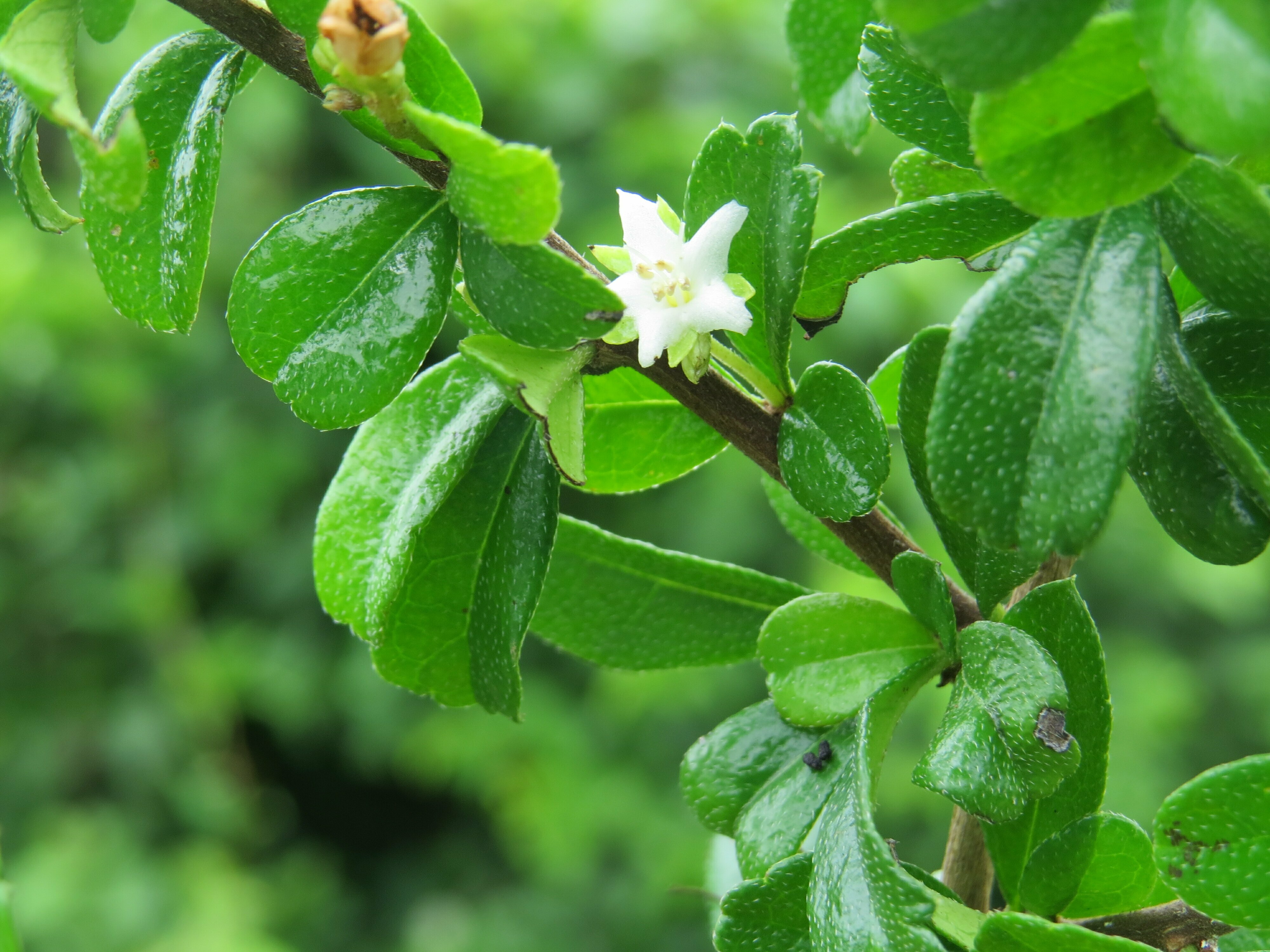 |
|||
| 84. Casearia elliptica Willd. Family: FLACOURTIACEAE Local name: Banjali, Khakara Flowering & Fruiting: February-June Ecology: Very common in scrub jungles and waste grounds Description: Large shrubs, branchelets tomentose. Leaves broadly elliptic, acute, crenate-serrate, thin-coriaceous, bas cuneate. Flowers green. Sepals broadly elliptic, pubescen. Capsule ribbed, orange when ripe. Medicinal uses: The fruits of this plant are used as fish poison. It possesses anti diabetic, anti-microbial and diuretic property. It is used in diabetes, ringworm, ascites, ulcers, wound, snake bite, fever. IUCN Status: |
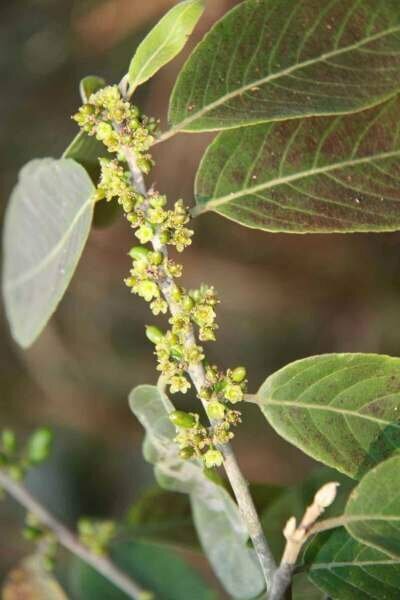 |
|||
| 85. Cassia absus Linn. Family: CASSIACEAE Ecology: Commonly occure in climate range Description: Annualherbs. Rachis with a gland between the lowest pair of leaflets. Leaflets elliptic-ovate, oblique, subacute, pubescent beneath. Flowers reddish yellow in terminal or axillary short raceme. Pod flat, oblique. Seeds black. Medicinal uses: Cassia absus is a plant of the family fabaceae with Ayurvedic ethnomedical records. It is used in traditional medicine for the treatment of bronchitis, asthma, cough, conjunctivitis, leucoderma, renal and hepatic diseases, constipation, tumors, venereal ulcer, headache, hemorrhoids and wound healing. IUCN Status: |
 |
|||
| 86. Cassia fistula Linn. Family: FABACEA Local name: Sunari, Sonari Flowering: April-July. Fruiting: August-December. Ecology: uite gregarious in dry deciduous forests, often planted along road sides. Medicinal uses: Cassia fistula has many medicinal properties like are astringent, cooling, purgative, febrifuge, tonic, laxative, anthelmintic, emetic, antiperiodic, febrifuge, diuretic, depurative, carminative, anti-inflammatory, diuretic and ophthalmic. The root-bark, leaves and flowers also have laxative properties, but to a lesser extent. In modern medicine, the fruit pulp is sometimes used as a mild laxative in paediatrics. The bark or leaves are widely applied to skin problems. Broken bones and tropical ulcers are bandaged with bark scrapings and leaf sap. The heartwood is traditionally applied as an anthelmintic. A decoction of the roots is applied to purify wounds and ulcers. In India the roots are used to treat fevers. The bark powered along with dried ginger are orally taken for the treatment of lumbago. IUCN Status: |
 |
|||
| 87. Cassia mimosoides Linn. Family: FABACEA Flowering & fruiting: August-October. Ecology: Common on lateritic hill slopes & plateau. Locality: August-October. Description: Prostrate herbs. Leaves with gland at tip of petiole: rachis winged; leaflets puberulous: midrib eccentric. Inflorescence extra-axillary, 1-2 flowered cyme. Stamens 10, fertile, antheriferus. Stigma truncate. Pod flat, pubescent. Medicinal uses: It is used to treat a wide variety of ailments, such as diarrhea, dysentery and gastrointestinal problems. IUCN Status: |
 |
|||
| 88. Cassia occidentalis Linn. Family: FABACEA Flowering: August-October. Fruiting: October-December. Ecology: Quite common in waste places & fallow lands during monsoon. Description: Under shrubs. Leaflets 4-6 pairs, elliptic-ovate, acuminate, base cuneate; petiole glandular. Flowers yellow, in short raceme. Stamens 6-7 . Pod linear, brown, turgid but compressed. Medicinal uses: Cassia occidentalis L. is an Ayurvedic medicinal plant used as a traditional medicine for the treatment of various diseases. This plant extracts are known to have antibacterial, antifungal, antimalarial, anti-inflammatory, antioxidant, hepatoprotective and Immunosuppression activity. IUCN Status: |
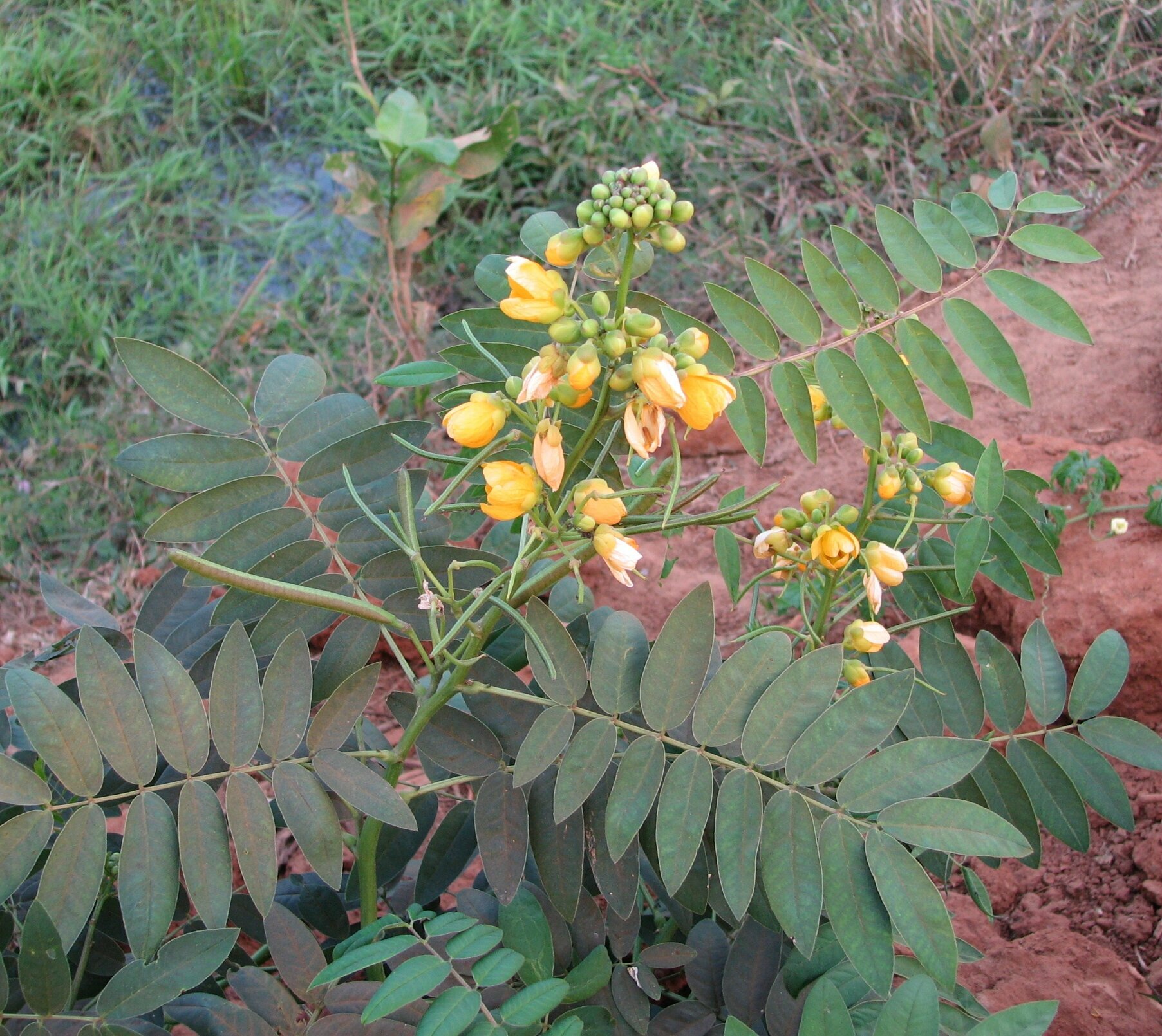 |
|||
| 89. Cassia tora Linn. Family: FABACEA Flowering & fruiting: September-December. Ecology: Quite common in waste lands and forest blanks. Description: Annual undershrubs. Glands subulate between the leaflets; leaflets 3-5 pairs, obovate-oblong, obtuse, apex apiculate. Flowers pale yellow, in axillary pairs. Stamens 6-7. Pod apiculate, sub tetragonal. Medicinal uses: Since Cassia tora has an external germicide and antiparasitic character, it has been used for treating skin diseases such as leprosy, ringworm, itching and psoriasis and also for snakebites. Other medicinal provisions from plant parts include balm for arthritis using leaves of Cassia tora. This plant is used for treating skin diseases such as leprosy, ringworm, itching and psoriasis and also for snakebites. IUCN Status: |
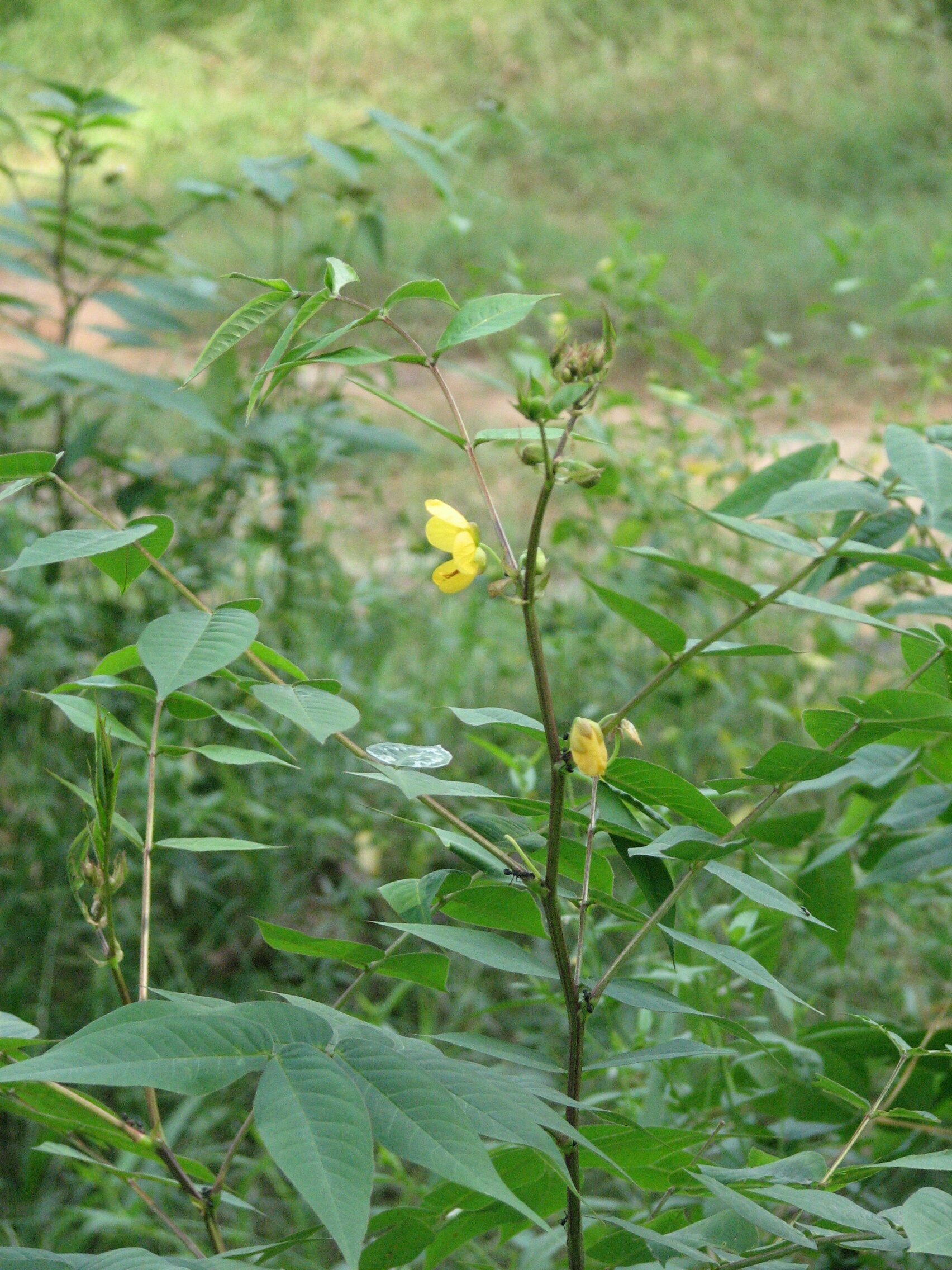 |
|||
| 90. Cassine albens Retz. Family: CELASTRACEAE Flowering: September-December. Fruiting: January-February. Ecology: Occasional along upper slopes and hill tops. Description: Unarmed small trees. Leaves ovate-oblong, crenate or serrulate, acute acuminate. Flowers greenish white or browinish 5-merous in corymbose cymes. Disc. Cusnion-like sinuate. Drupe ovoid 1 seeded. Medicinal uses: It is an antiparasitic medicine, used for the treatment of parasitic worm infections. It works by killing the worms that cause infections and stops the infection from spreading. IUCN Status: |
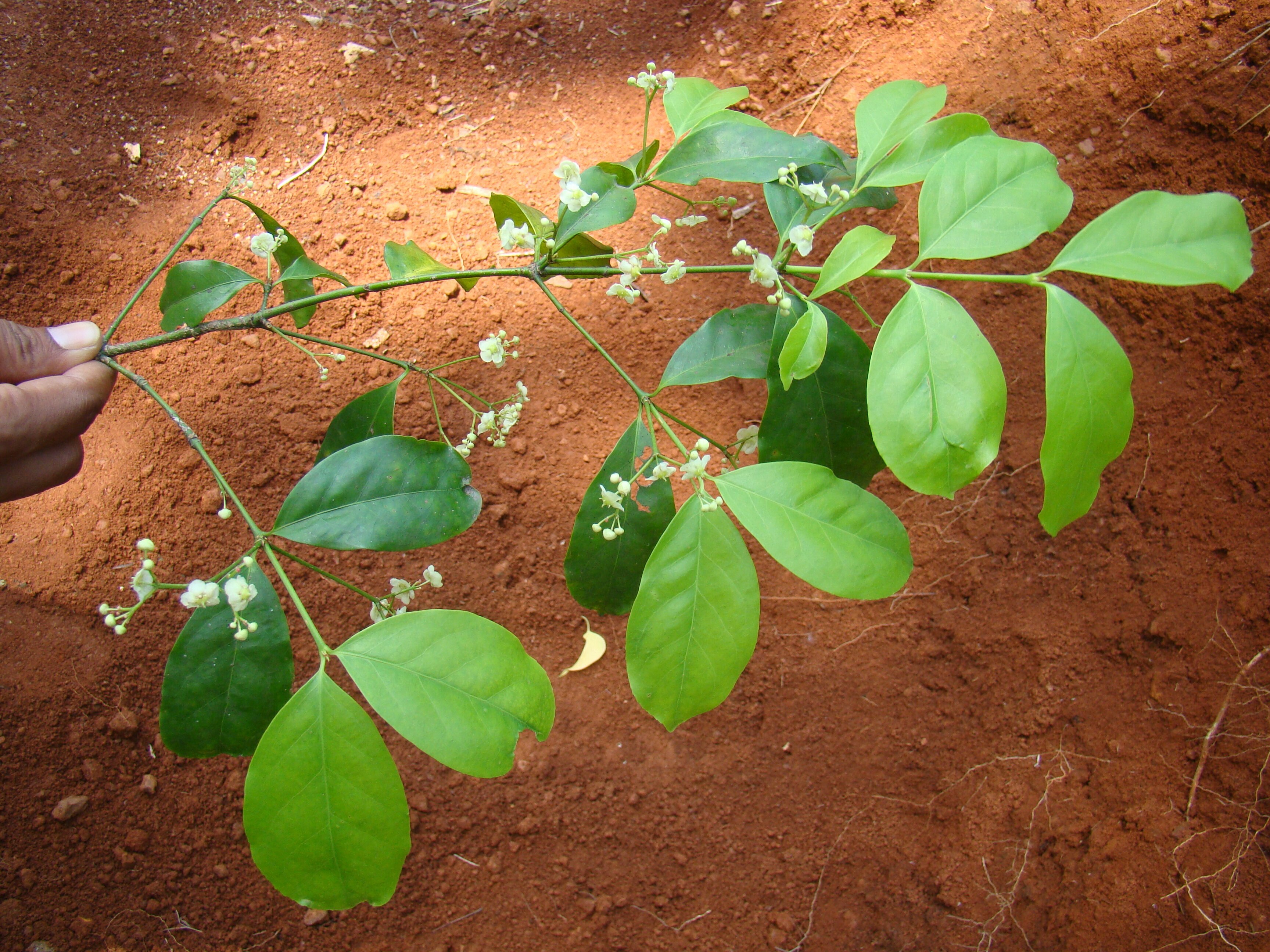 |
|||
| 91. Cassytha filiformis Linn. Family: LAURACEAE Flowering & fruiting: Round the year. Ecology: Very common in thickets, parasitic on Holarrhena antidysenterica and Syzygium cumini. Description: Stem pubescent, deep green, attached to host plant by suckers. Leaves scaly or 0. Flowers bisexual, sessile, white, in pubescent spikes. Stamens 9 in 3 whorls, outer extrose; anther 2-celled. Drupe globose, enclosed. Medicinal uses: Cassytha filiformis L. (Lauraceae), a medicinal plant is traditionally used for the treatment of cancer, African trypanosomiasis and many other related diseases. Thus,Cassytha filiformis is medicinally used as an antiplatelet, vasorelaxant, alpha- adrenoreceptor antagonist and also as a antitrypnosomal agents. IUCN Status: |
 |
|||
| 92. Catharanthus pusillus (Murr.) Family: APOCYNACEAE Flowering & fruiting: July – October Ecology: Occasional in waste places at foot hills during monson. Description: Annual herbs, stem grooved. Leaves lanceolate, tapering to both ends, glaucous beneath. Flowers white, in axillary and terminal lax cyme. Corolla-tube swollen above. Follicles diverging, glabrous. Medicinal uses: Latex and seeds are poisonous. Leaf extract is used as a medicine for fever. The decoction of dried leaves boiled in oil is used to cure joint and muscle pain in the lower back. The Catharanthus pusillus possesses both hypoglycaemic and anti-diabetic activities. IUCN Status: |
 |
|||
| 93. Celastrus paniculatus Willd. Family: CELASTRACEAE Flowering & Fruiting: July-December. Ecology: Abundant in open scrub and hedges. Description: Leaves obovate, crenulated, cuneate, membraneous, suddenly sacuminate. Flowers polygamous, 5-merous, white in terminal, panicles cymes. Disc lobed. Anthers dull-yellow. Capsules sub-globose, yellow 6-seeded. Seeds red-arillate. Medicinal uses: The plant has shown significant pharmacological activities like anti-arthritic, wound healing, hypolipidemic, and antioxidant. The root bark powder along with root of Withania somnifera, crystal sugar and cloves used to increase the number of sperm in semen. The seed oil is extracted and applied externally to keep body warmth in winter season. It is also applied to relieve pain and proper circulation of blood in the body. Seed oil is massaged on the part affected by gout and rhe umatismup to complete cure. IUCN Status: |
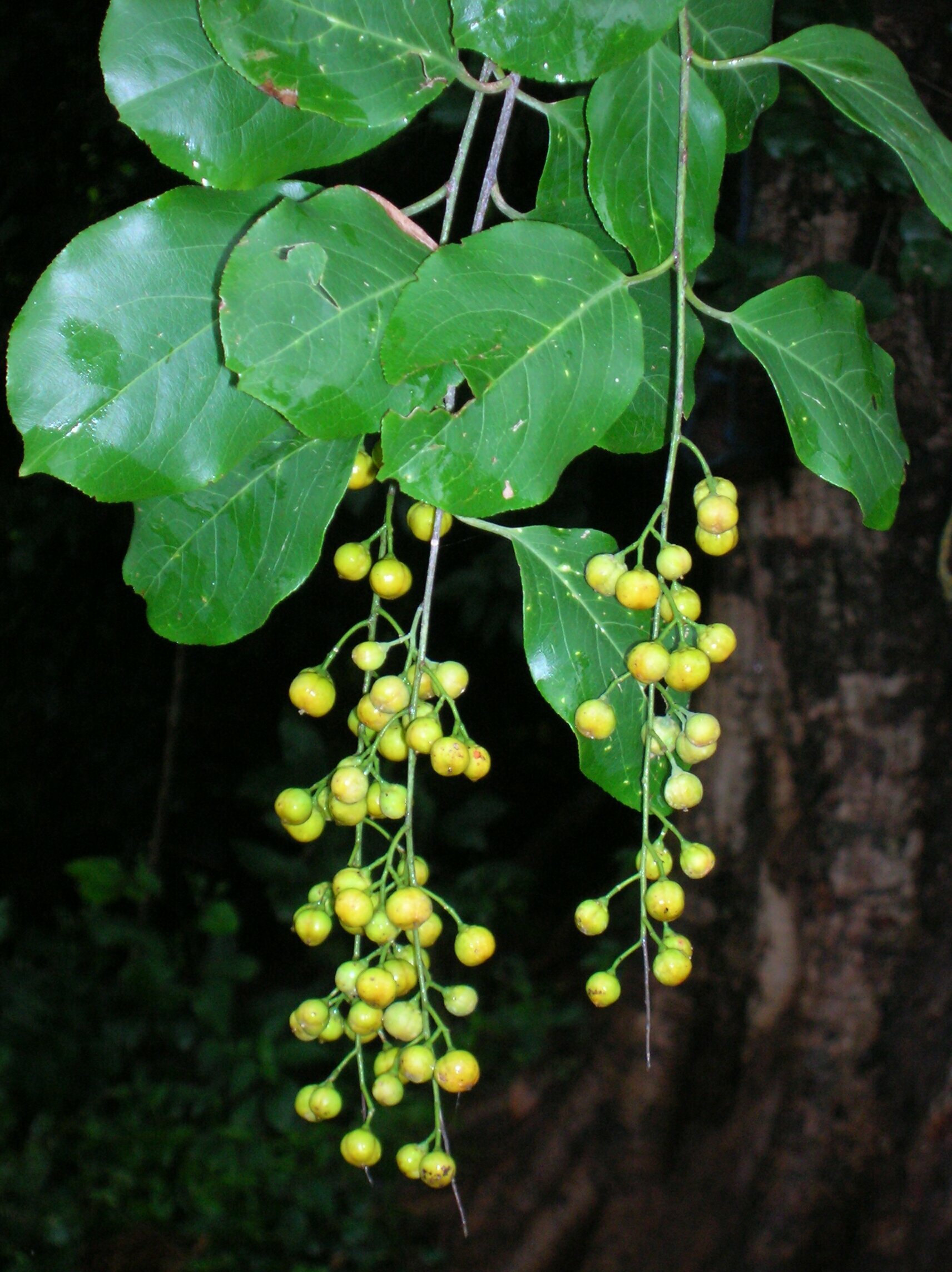 |
|||
| 94. Callicarpa tomentosa (Linn.) Family: LAMIACEAE Flowering.: April-June Fruiting.: December-January. Ecology: Abunndant on lower hill slopes & foots. Description: Small trees; branchlets 4-angled, densely tomentose. Leaves large ovate-oblong, entire, subacuminate, stellate-tomentose beneath. Flowers small, lilac-purple, in 2-chotomous corymbos cymes. Drupe purple. Medicinal uses: Effective. Aphthous Ulcers. Fever. Hydrocele. Leucorrhoea. Liver Diseases. Malaria. Paralysis. Effective. Anthelmintic. Antiperiodic. Antispasmodic. Emmenagogue. Emollient. Febrifuge. Liver Tonic. IUCN Status: |
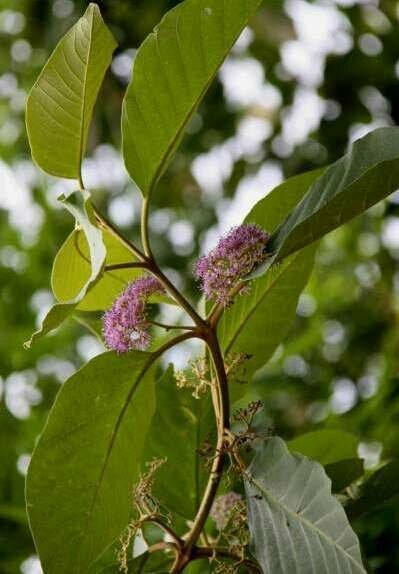 |
|||
| 95. Celosia argentea Linn. Family: AMARANTHACEAE Flowering & fruiting: November-February. Ecology: Abundant on lateritic hill plateau among grasses. Description: Erect annuals. Stem angular, striate. Leaves alternate, elliptic-lanceolate to ovate-orbicular, cuneate, acuminate. Inflorescence axillary & terminal, conical spikes, shining white when old. Flowers bisexual, pinkish, 5-merous. Capsule ellipsoid. Seeds black. Medicinal uses: It is a unique source of Semen Celosiae whose contributions include purging the hepatic pathogenic fire, improving eyesight, and treating other eye diseases. IUCN Status: |
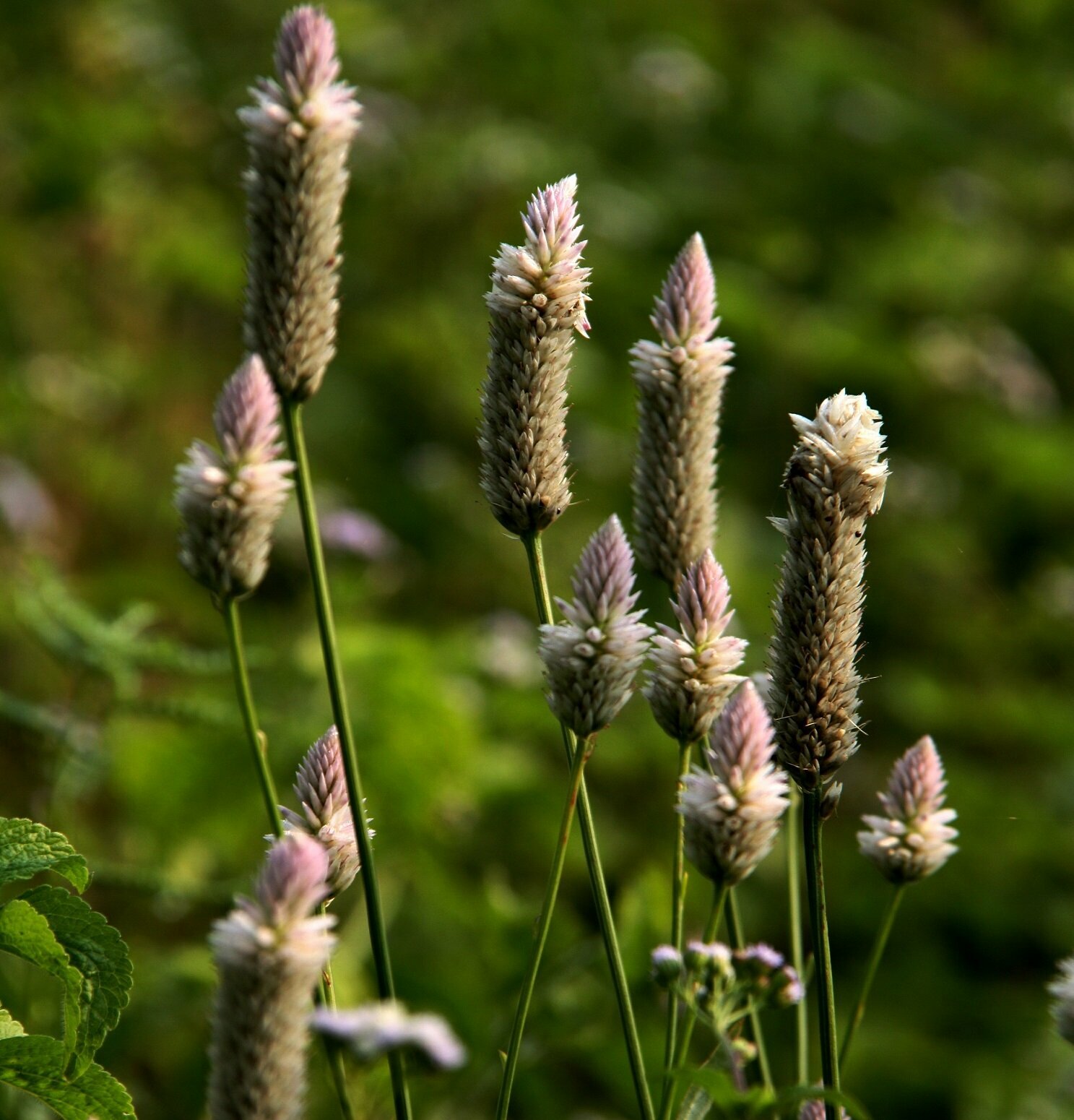 |
|||
| 96. Ceratophyllum demersum Linn. Family: CERATOPHYLLACEAE Flowering & fruiting: Almost year round. Ecology: Abundant in ditches near foot hills. Description: Densely leafy, aquatic herbs. leaves bifurcate, whoreled, segments denticulate. Flowers minute, axillary, dioecious. Perianth 10-12 fid. Stamens 10-30, anthers white. female: ovary I- cancelled. Fruit ellipsoid, nuts appendaged. Medicinal uses: It is antimicrobial, antibacterial, antibilious, and purgative. The whole plant has been traditionally used in the treatment of wounds, fever, burning sensation, hemorrhoids or piles, intrinsic hemorrhages, hyperdipsia, epistaxis, and hematemesis. IUCN Status: |
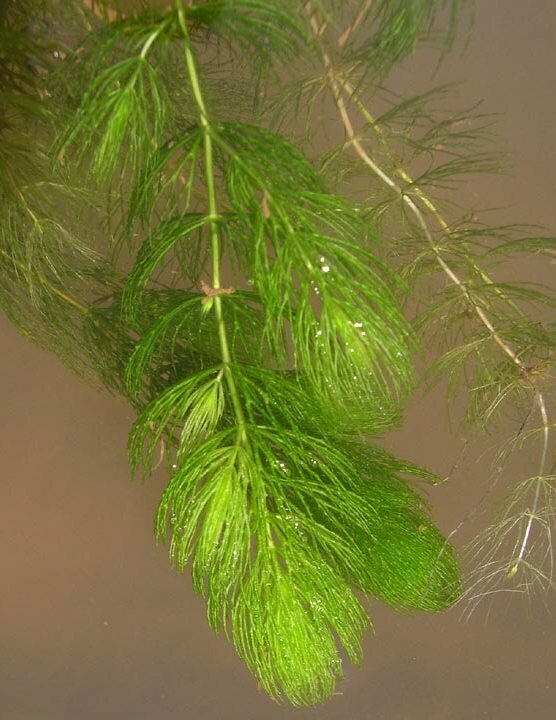 |
|||
| 97. Centranthera tranquebarica (Spreng.) Family: AMARANTHACEAE Flowering & fruiting: November-February. Ecology: Abundant on lateritic hill plateau among grasses. Description: Erect annuals. Stem angular, striate. Leaves alternate, elliptic-lanceolate to ovate-orbicular, cuneate, acuminate. Inflorescence axillary & terminal, conical spikes, shining white when old. Flowers bisexual, pinkish, 5-merous. Capsule ellipsoid. Seeds black. Medicinal uses: It is a unique source of Semen Celosiae whose contributions include purging the hepatic pathogenic fire, improving eyesight, and treating other eye diseases. IUCN Status: |
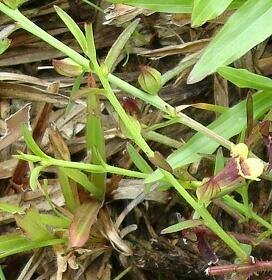 |
|||
| 98. Ceropegia candelabrum Linn. Family: APOCYNACEAE Flowering & fruiting: October-February. Ecology: Occasional, in hedges near villages. Description: Slender twiners. Leaves opposite, elliptic-lanceolate, shining, acute at both ends. Inflorescence axillary, peduncle umbelliform cymes. Corolla greenish -white, purplish striped on the tube upper part light yellow. Gynostegium stipitate Follicles slightly curved, smooth. Medicinal uses: The tuberous roots are edible and are eaten especially by the poorest raw or cooked. The plant is also used for various medicinal purposes, so for hemorrhoids, indigestion, headaches and against bites of poisonous animals. Ceropegia candelabrum is now in the original area has become quite rare. IUCN Status: |
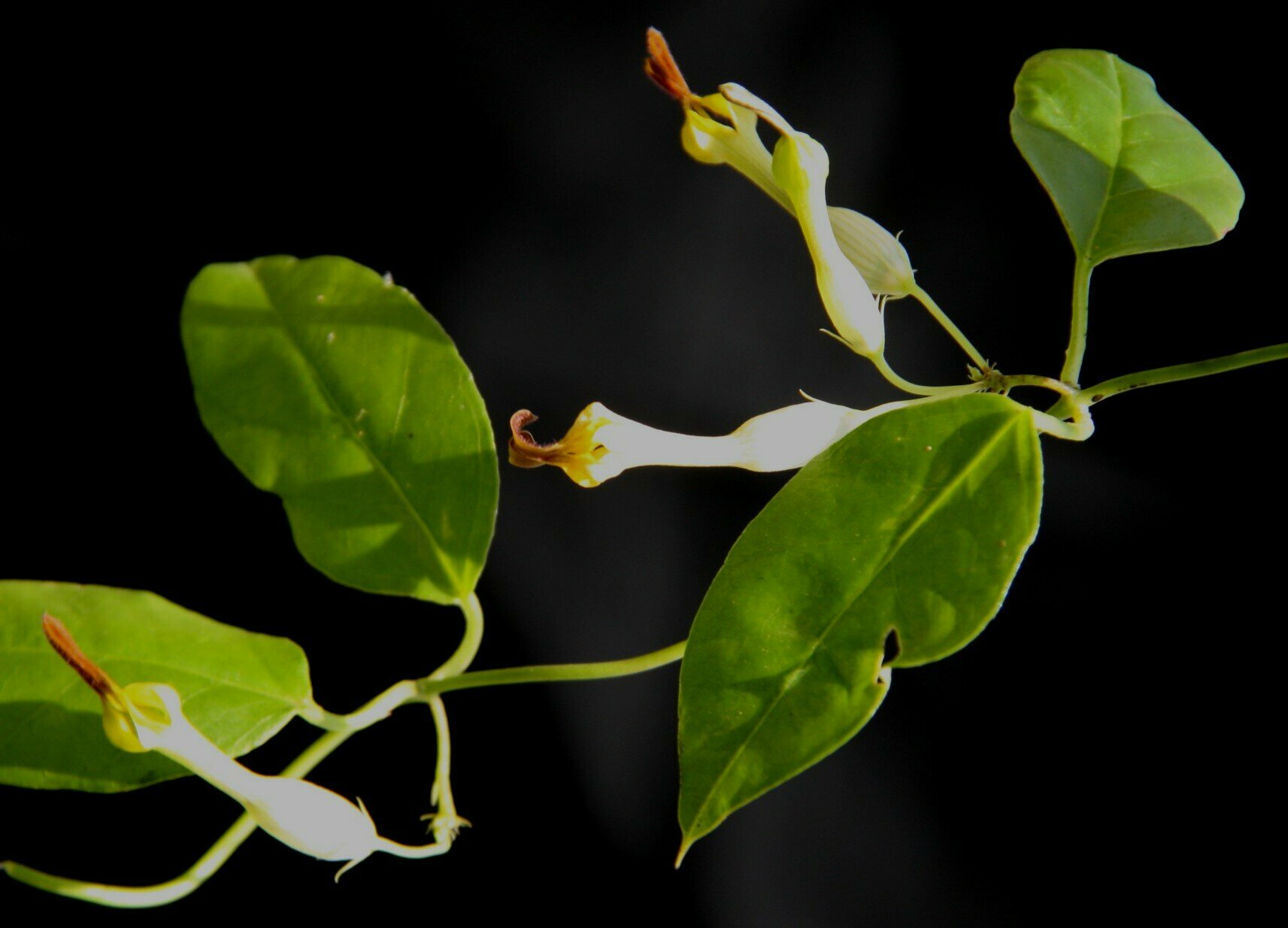 |
|||
| 99. Cetella asiatica Family: APIACEAE Local name: Brahmi, Gotu kola Flowering & fruiting: March – August Ecology: Common, along the side of nalas on the hill slopes. Description: Prostrate, stoloniferous herbs; rooting at nodes. Leaves orbicular- reniform, crenate – dentate, base cordate, petiole sheathing. Flowers white or purple tinged, in dichasial umble. Fruits orbicular to ellipsoid. Medicinal uses: It has a variety of benefits for the body. It is used to repair nervous tissue due to spinal injury, neuromuscular disorders and to increase general brain function and memory. It is also used in skin treatments for a wide spectrum of skin conditions. IUCN Status: |
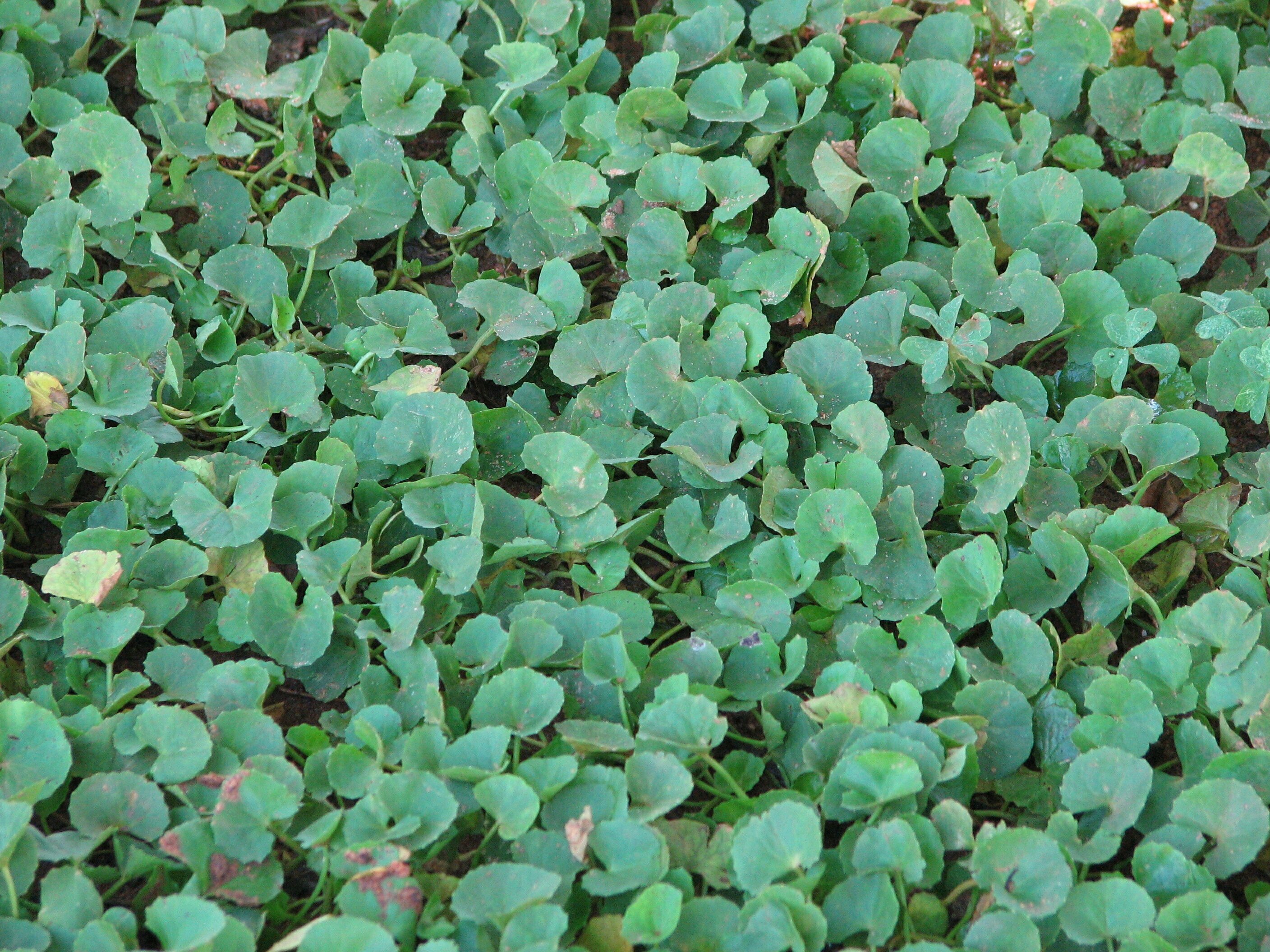 |
|||
| 100. Cheilocostus specious (J. Konig) Family: COSTACEAE Local: Kewu, Kou, Koukouka Flowering and fruiting: August-December Description: It is a large perennial herb, with stems up to 4 m tall. Its alternate, shortly-stalked leaves spiral up the stem, and have elliptic leaf blades that are 20–25 cm long. Its flowering shoot is ovoid-oblong, and 12–15 cm long. The white flower has a lip of 6–8 cm long. Medicinal uses: The juice of rhizome is applied to head for cooling and relief from head-ache, bruised leaves are applied in fever, decoction of stem is used in fever and dysentery, patients with high fever mostly utilize leaf infusion or decoction as a sudorific or in a bath, sap from leaves. And also dried rhizomes powder along with honey are given for stomach pain. IUCN Status: |
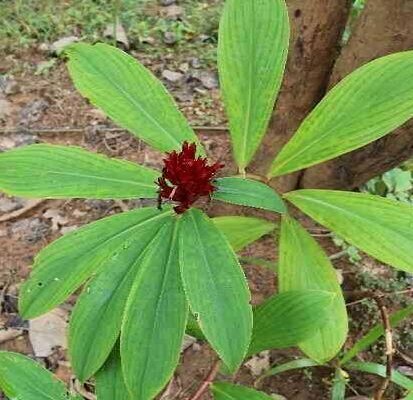 |
|||
| 101. Chrysopogon aciculatus (Retz.) Family: POACEAE Flowering & Fruiting: August -November. Ecology: Abundant on hill plateau and forest blanks. Description: Leaves densely tufted, linear, obtuse, ciliolate. Panicle, lax, purlish. Spikelets 3, central sessile, two laterals Pedicellate, lanceolate. Sessile spikelets 4 glumed, awned. Pedicellate spikelets awnless; iii & iv villous, male. Medicinal uses: In Malaysia, the plant is burnt with lalang and the ashes swallowed as a remedy for rheumatism. Roots. In China and Taiwan, a decoction of the roots is used to treat poisonous snake bites. Seeds. In Indochina, the “seeds” are used to expel intestinal roundworms. IUCN Status: |
 |
|||
| 102. Chloris barbata (Linn.) Family: POACEAE Flowering & Fruiting: August-December. Ecology: Very common in grasslands on hill plateau. Description: Branches geniculately ascending. Leaves linear, lanceolate keeled, acuminate. Spikelets secund, short pedicelled. Palea lanceolate-obovate. Fertile glumes awned, densely bearded, purplish on maturity. Stigma plumose. Medicinal uses: This plant is used for the treatment of rheumatism, while juice from the plant is used as an antibacterial and antimicrobial to treat skin disorders. The species is also said to possess anti-diabetic properties. IUCN Status: |
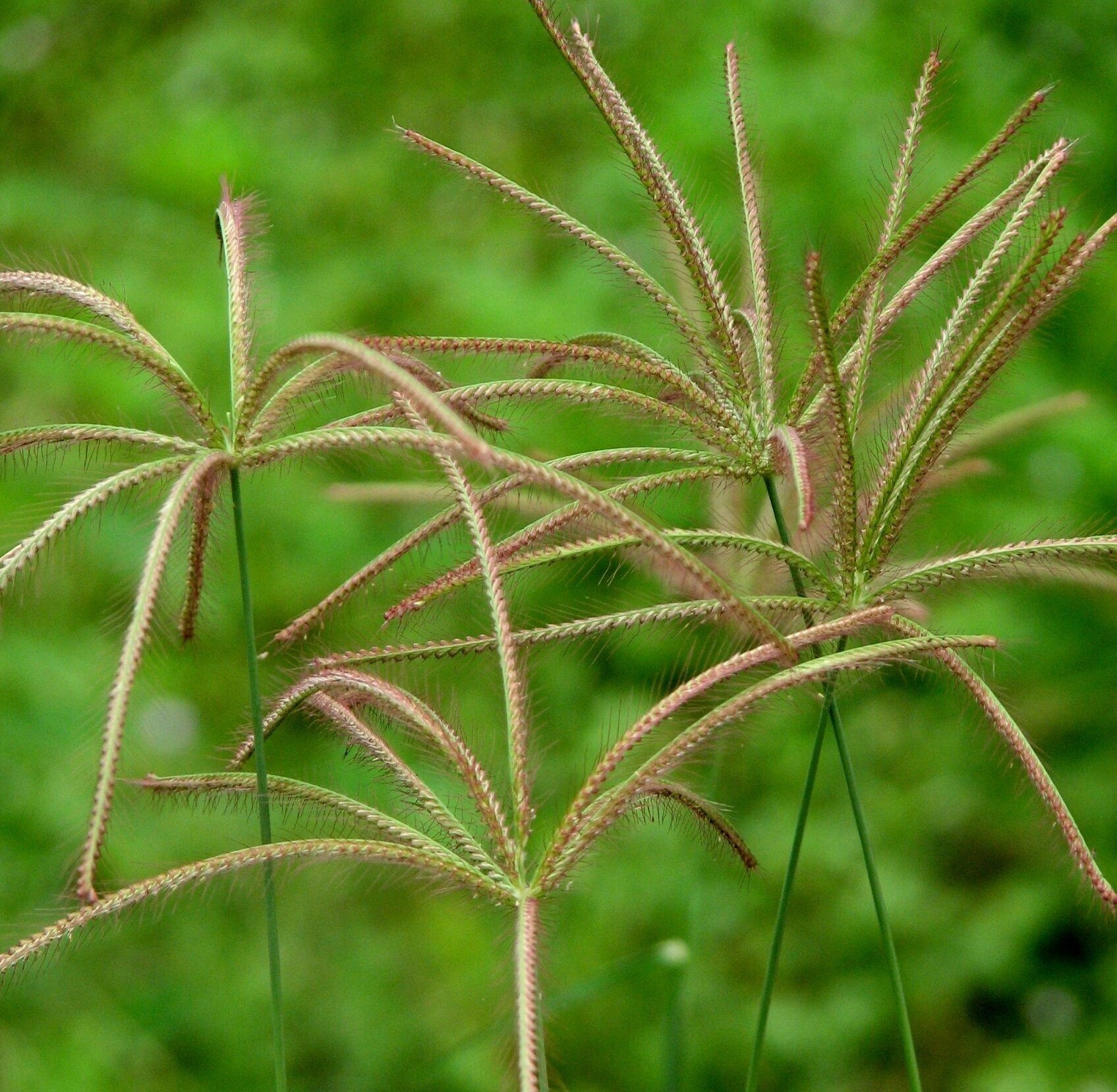 |
|||
| 103. Chromolaena odorata (Linn.) Family: COMPOSITAE Local name: Bada Pokasungha Flowering & fruiting: September – December Ecology: Quite abundant weed, in thickets, forests blanks and disturbed habitats. Description: Shrubs. Stem woody. Leaves deltoid – ovate, base cuneate, attenuate, acuminate, toothed near the broadest part, glandular beneath. Capitula in dense terminal corymbs. Involucre 4-5 seriate. Flowers pale bluish – mauve, rarely white. Achenes 4- angled, blackish. IUCN Status: |
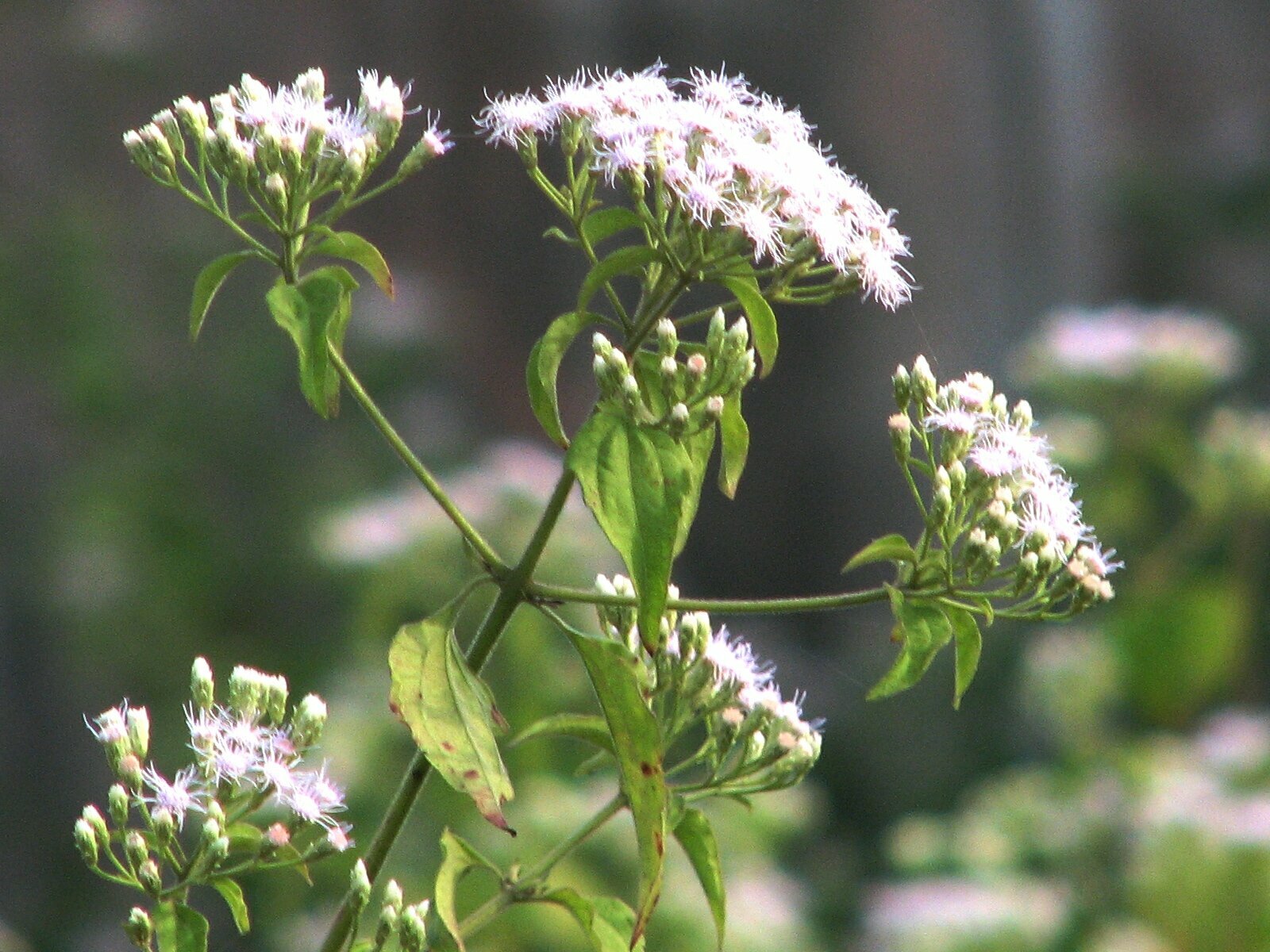 |
|||
| 104. Cipadessa baccifera Roth. Family: MELIACEAE Local name: Nahal beli Flowering: June-August. Fruiting: August-November. Ecology: Quite abundant in all types of forests. Description: Large shrubs. Leaves imparipinnate leaflets 7-13, sub-opposite, ovate, cuneate, toothed. Flowers white small in axillary long peduncled cymes. Berry globose, fleshy, Scarlet-red on maturity. IUCN Status: |
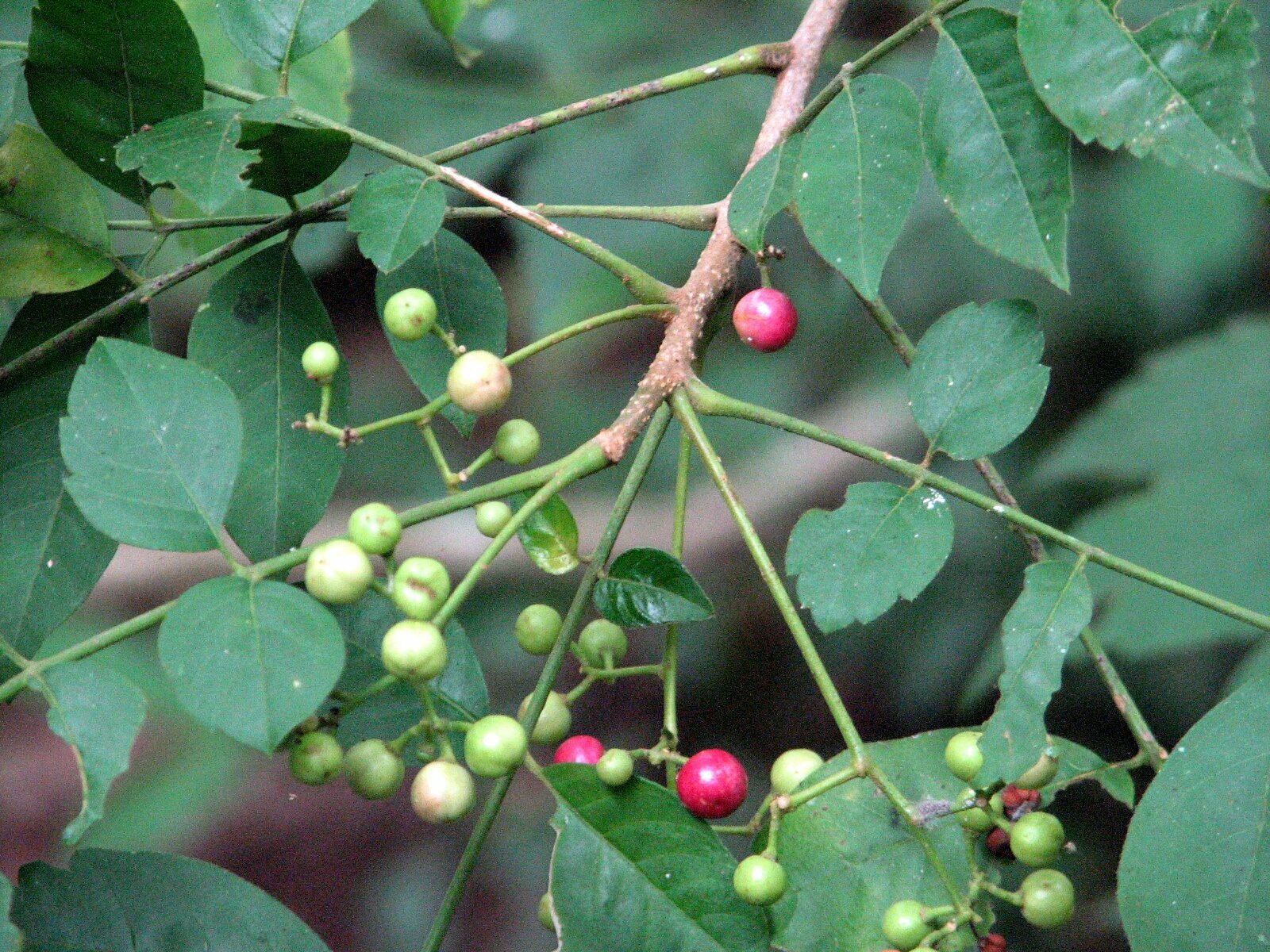 |
|||
| 105. Cissampelos pareria Linn. Family: MENISPERMACEAE Flowering: August-October Fruiting: November – January Ecology: Frequent throughout the region in open woodlands. Medicinal uses: The plant contains a number of alkaloids with medicinal activity, some of which have shown potent antileukaemic activity. People take an infusion of the bitter rhizome, and sometimes of leaves and stems, to cure gastro-intestinal complaints such as diarrhoea, dysentery, ulcers, colic, intestinal worms and digestive complaints, and also urogenital problems such as menstrual problems, venereal diseases, infertility, uterine bleeding and threatening miscarriage. Combined with a hot water extract of the roots and leaves of Launaea cornuta, it is given orally to treat epilepsy. Juice form macerated leaves and stem is mixed with a little water and used as an anti-conjunctivitis or as a treatment for sore eyes. Juice from macerated leaves and stem is used an as an anti-inflammatory. Leaves and stem are macerated in water a used as an anti-infective agent. Tribal people in India use the plant to prevent pregnancy. IUCN Status: |
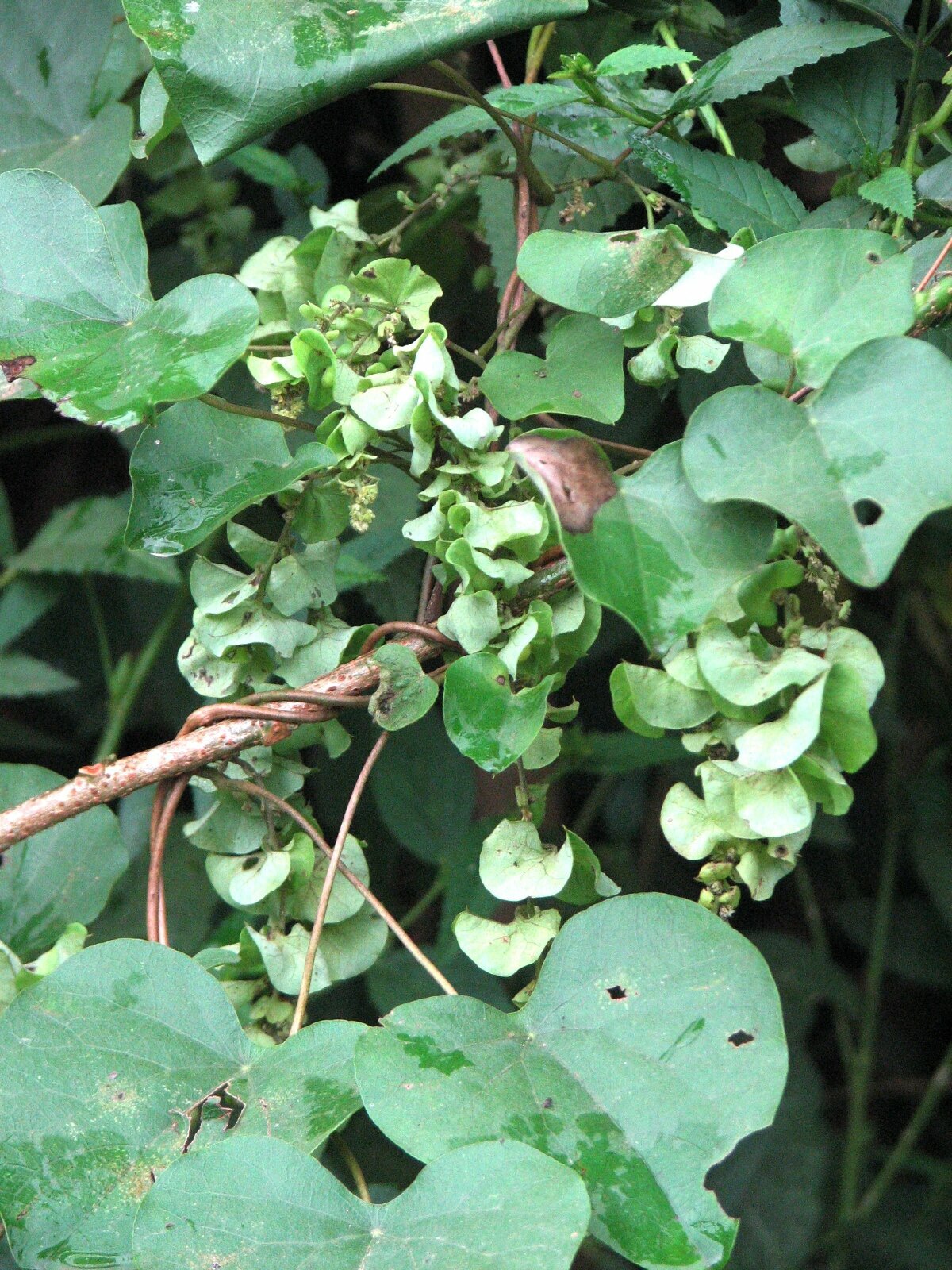 |
|||
| 106. Cissus quadrangularis Linn. Family: VITACEAE Ecology: Commonly occurs in savannas in arid and semi-arid conditions. Description: Rambling shrubs; root stock stout. Stem 4-angled. Leaves orbicular, thick, crenate. Calyx tube, obscurely 4-lobes. Petals greenish-white, red tipped. Berries globose, apiculate; seeds smooth. Medicinal uses: The plant is commonly used for bone health and weight loss. It is also used for conditions such as diabetes, high cholesterol, hemorrhoids. IUCN Status: |
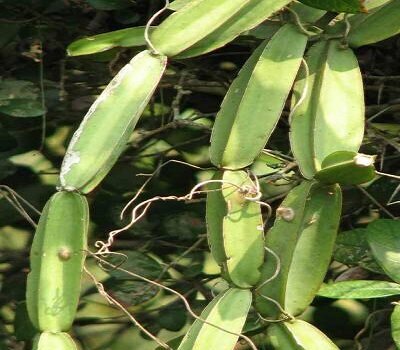 |
|||
| 107. Cissus vitiginea Linn. Family: VITACEAE Flowering: August-September. Fruiting: October-December. Ecology: Occasional on foot hills in eoded sandy areas. Description: Hoary pubescent climbers. Leaves membranous, cordate, lobed coarsely dentate. Flower 4-merous, white in compound umbellate cymes. Petals yellow. Fruits pale-purple, on deflexed pedicels. Medicinal uses: Cissus vitiginea L. is a perennial climber with potent medicinal values and used in Indian traditional systems of medicines to cure wounds, diabetes, cardiovascular illness, cancers, particularly bone diseases and arthritis. IUCN Status: |
 |
|||
| 108. Clerodendrum indicum (Linn.) Family: VERBENACEAE Local Name: Bhaurimal Flowering: July-August. Fruiting: September -December. Ecology: Occasional, in scrub forests near water course. Medicinal uses: The root of chingari is stomachic, expectorant, antiinflammatory, anti-bronchitis, febrifuge, hence useful for asthma, cough, and scrofulous affections. The root increases appetite and lowers fever (Unani medicine). The leaves and roots are used externally to treat tumours and certain skin diseases. IUCN Status: |
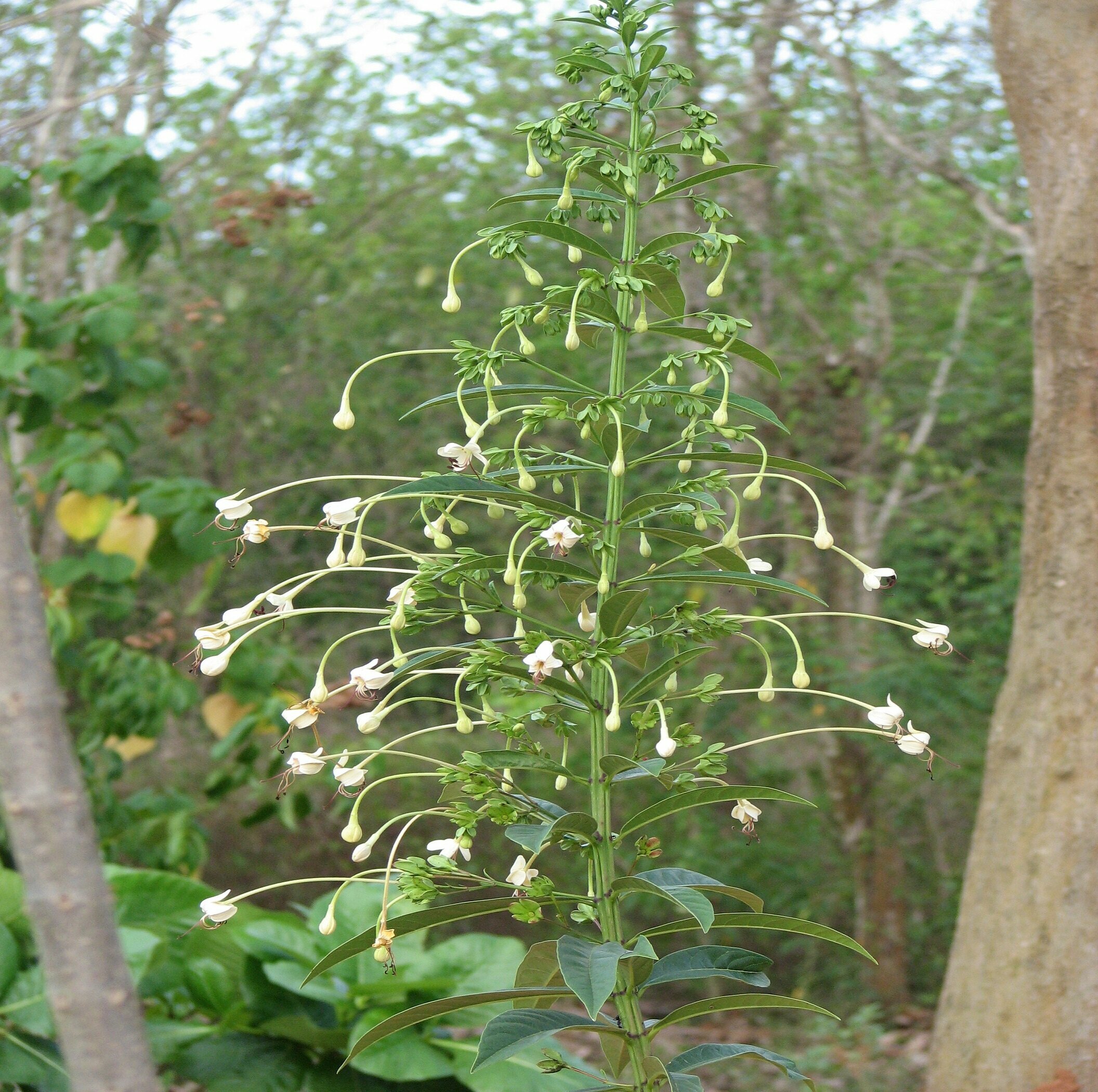 |
|||
| 109. Clerodendrum viscosum Vent. Family: VERBENACEAE Local Name: Bhaurimal Flowering: February-April. Fruiting: May-July. Ecology: Gregarious in forest edges, shifting cultivated areas and shady moist places. Description: Robust shrubs or undershrubs, branches densely fulvous-hairy. eves hairy, dentate. Flowers white or pink-spotted, in subcorymbose tomentose panicles. Drupe black, enclosed by calyx. Medicinal uses: Clerodendrum infortunatum is used in Ayurvedic and Siddha traditional medicines. Fresh leaves are given for diarrhea, liver disorders, and headache. IUCN Status: |
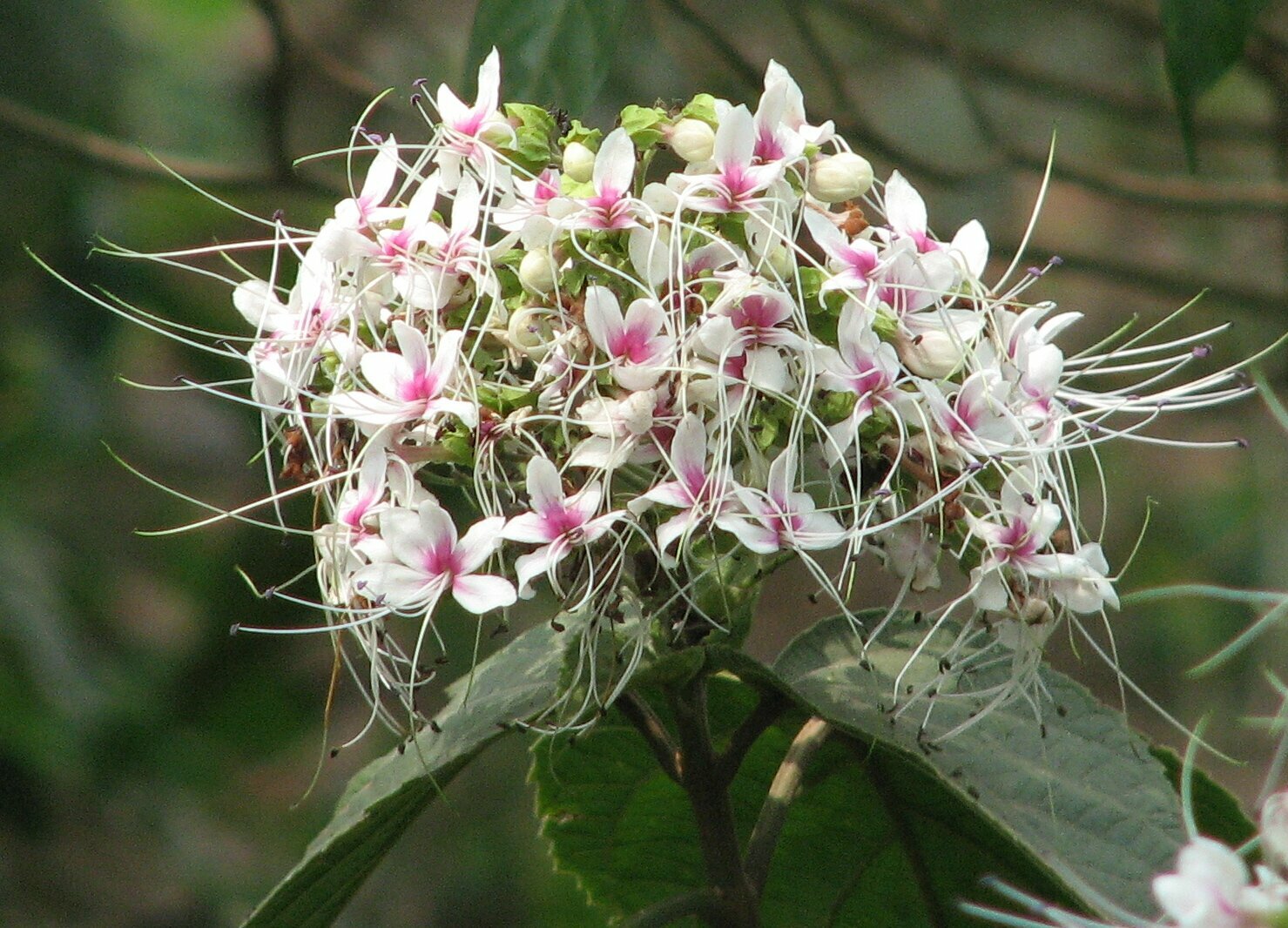 |
|||
| 110. Clitoria ternatea Linn. Family: FABACEAE Flowering & Fruiting: round the year. Ecology: Common in hedges and dense scrubs. Description: Glabracent slender twiner. Leaflets 5-7, elliptic, obtuse or retuse pubescent beneath. Flowers solitary, axillary. Corolla exserted, white or blue with white base; wings adherent to keel. Pod compressed, pubescent, styled. Seeds browm o black. Medicinal uses: Clitoria ternatea L. (CT) (Family:Fabaceae) commonly known as ‘Butterfly pea’, a traditional Ayurvedic medicine, has been used for centuries as a memory enhancer, nootropic, antistress, anxiolytic, antidepressant, anticonvulsant, tranquilizing and sedative agent. IUCN Status: |
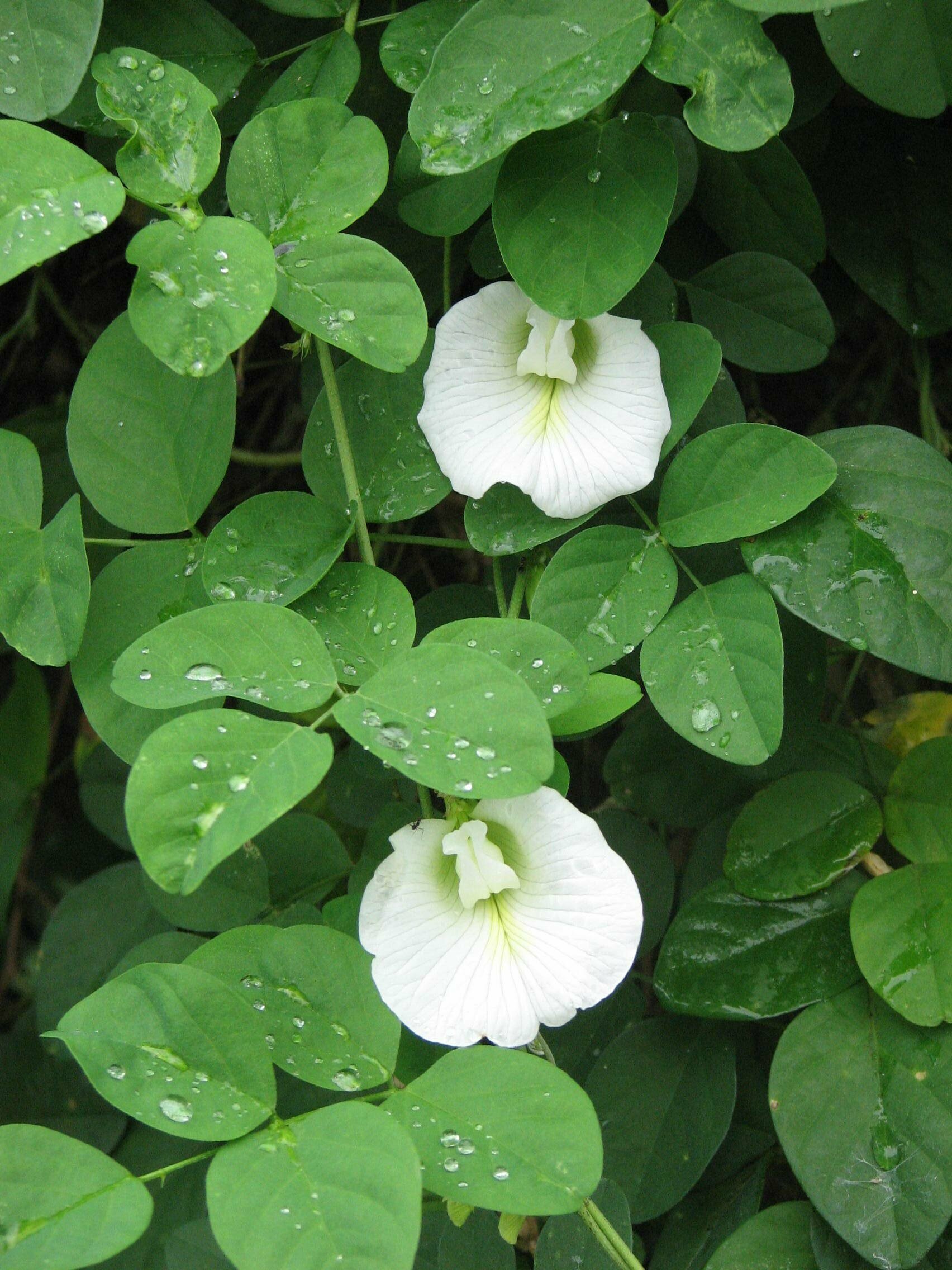 |
|||
| 111. Coccinia grandis (Linn.) Family: CUCURBITACEAE Flowering:August November. Fruiting: November-December. Ecology: Quite common in thickets and hedges. Description: Slender climbers. Stem angular, rugose. Leaves cordate, angled or lobed, denticulate, apex mucronate. Flowers solitary. Petals with prominent green veins. Filaments connate, anthers coherent. Berry oblong, green with white stripes. Medicinal uses: The fruits, stems and leaves have medicinal uses such as to reduce high blood pressure and to treat abscesses. Roots are believed to heal illnesses associated with endocrine system disorders such as diabetes mellitus, and are used in Niger to treat intestinal troubles. IUCN Status: |
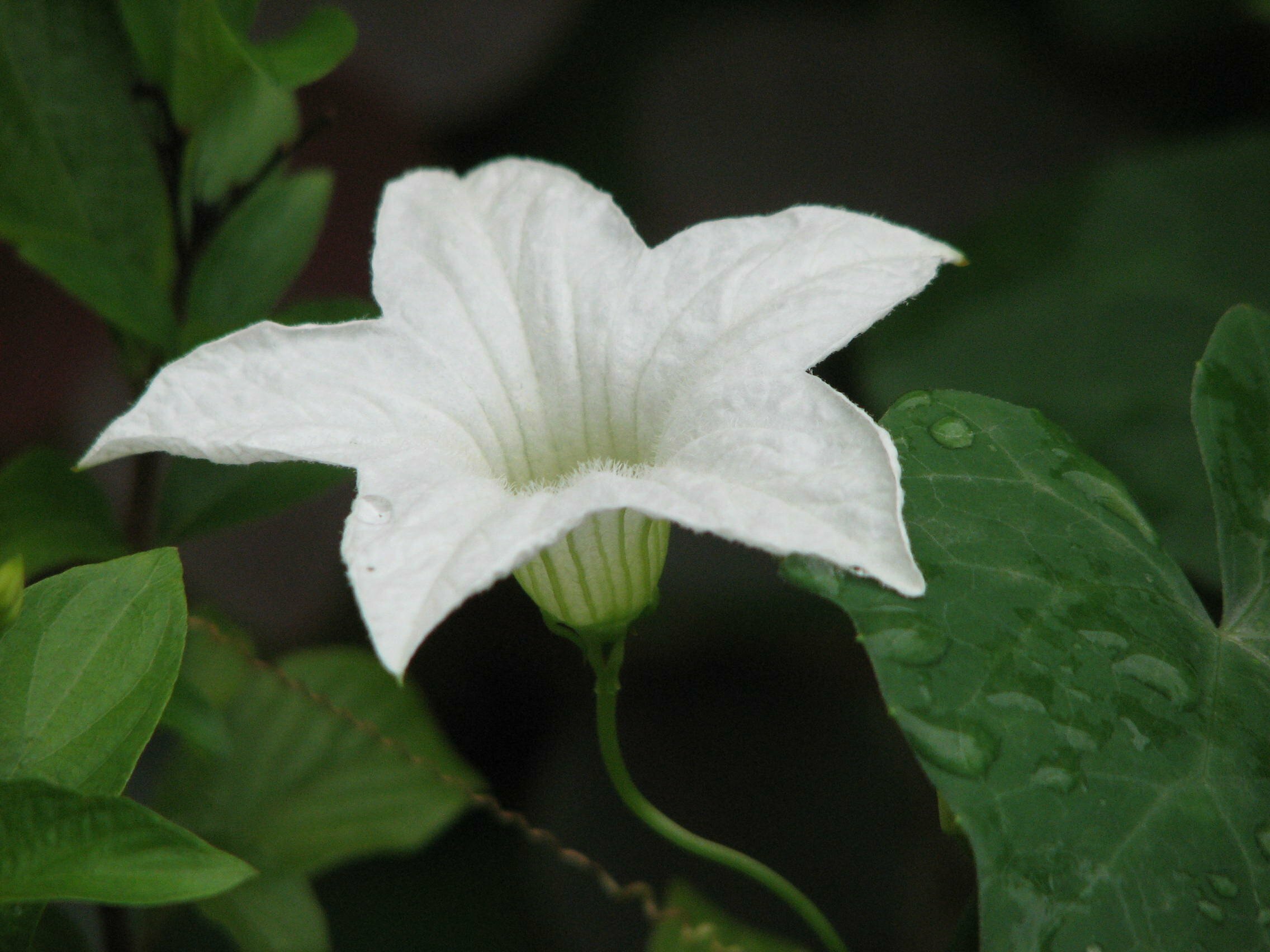 |
|||
| 112. Cocculus hirsutus Linn. Family: MENISPERMACEAE Flowering: November – January Fruiting: February – April Ecology: Very common on bushes in scrub forest. Description: Slender dioecious climbers, villosely tomentose. Leaves ovate-oblong, margine ciliate. Male flowers greenish in axillary short peduncled cymes; petals auricled at base; anthers dehiscing vertically. Female flowers in axillary fascicles or racemes. Drupe laterally compressed, dark purple when mature. Medicinal uses: The leaves of this plant are used to treat skin infections and itchy skin including eczema, rheumatism and gonorrhoea, the roots are taken as a tonic and alterative and as a diuretic and laxative. IUCN Status: |
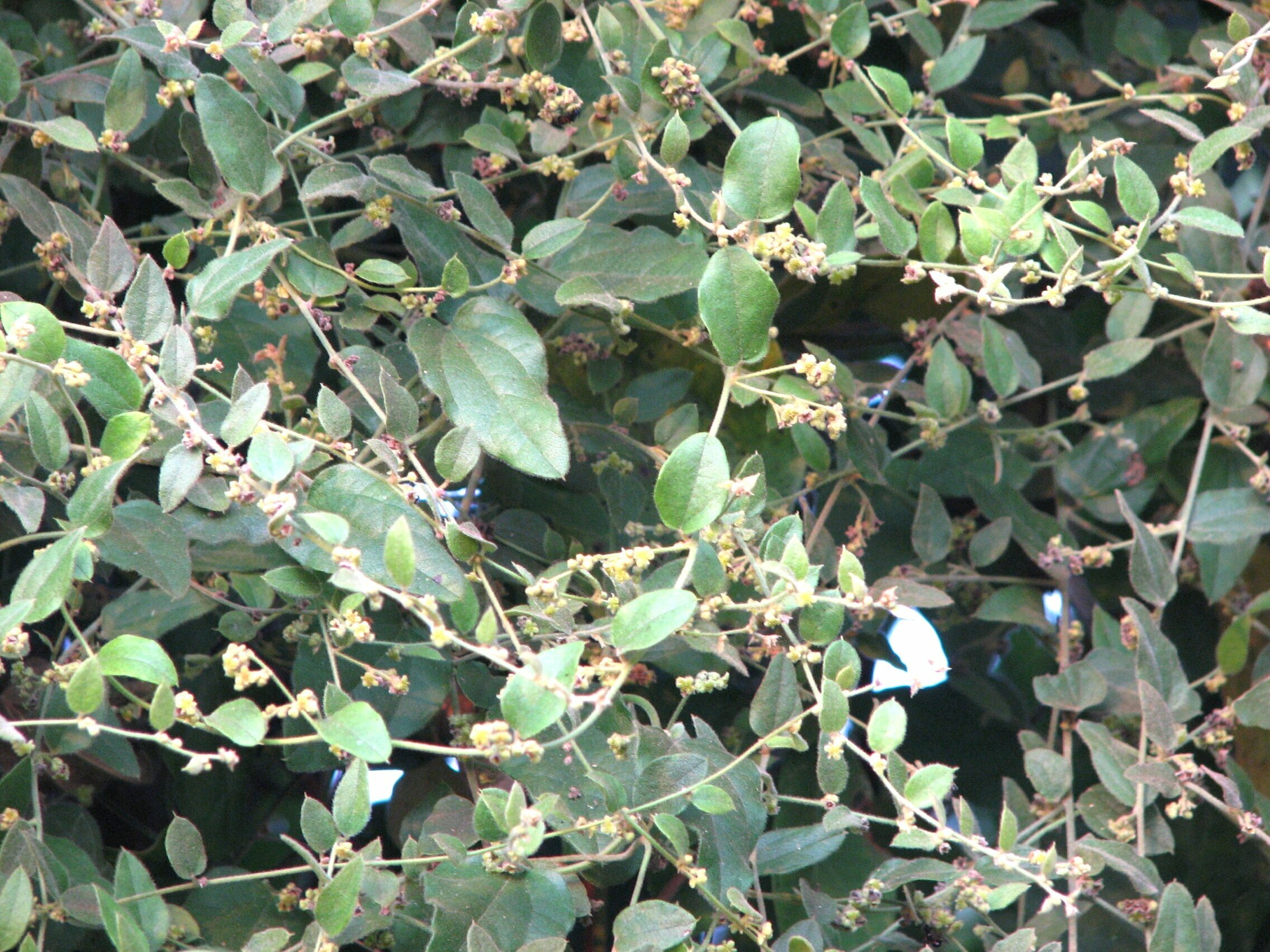 |
|||
| 113. Cocos nucifera Linn. Family: ARECACEASE Flowering & Fruiting: Round the year. Ecology: Planted near the houses. Description: Unarmed palms; trunk tall. Leaves in terminal crown; petiole stout, long; leaflets linear- lanceolate, long, equidistant. Spikes droping, bearing female with few hermaphrodite flowes at base and male flowers upwards. Fruit large, avoid, obtusely 3-quetrous, 1- seeded. Medicinal uses: The roots are considered antipyretic and diuretic. Milk of young coconut is diuretic, laxative, antidiarrhoeic and counteracts the effects of poison. The oil is used to treat diseased skin and teeth and mixed with other medicines to make embrocations. IUCN Status: |
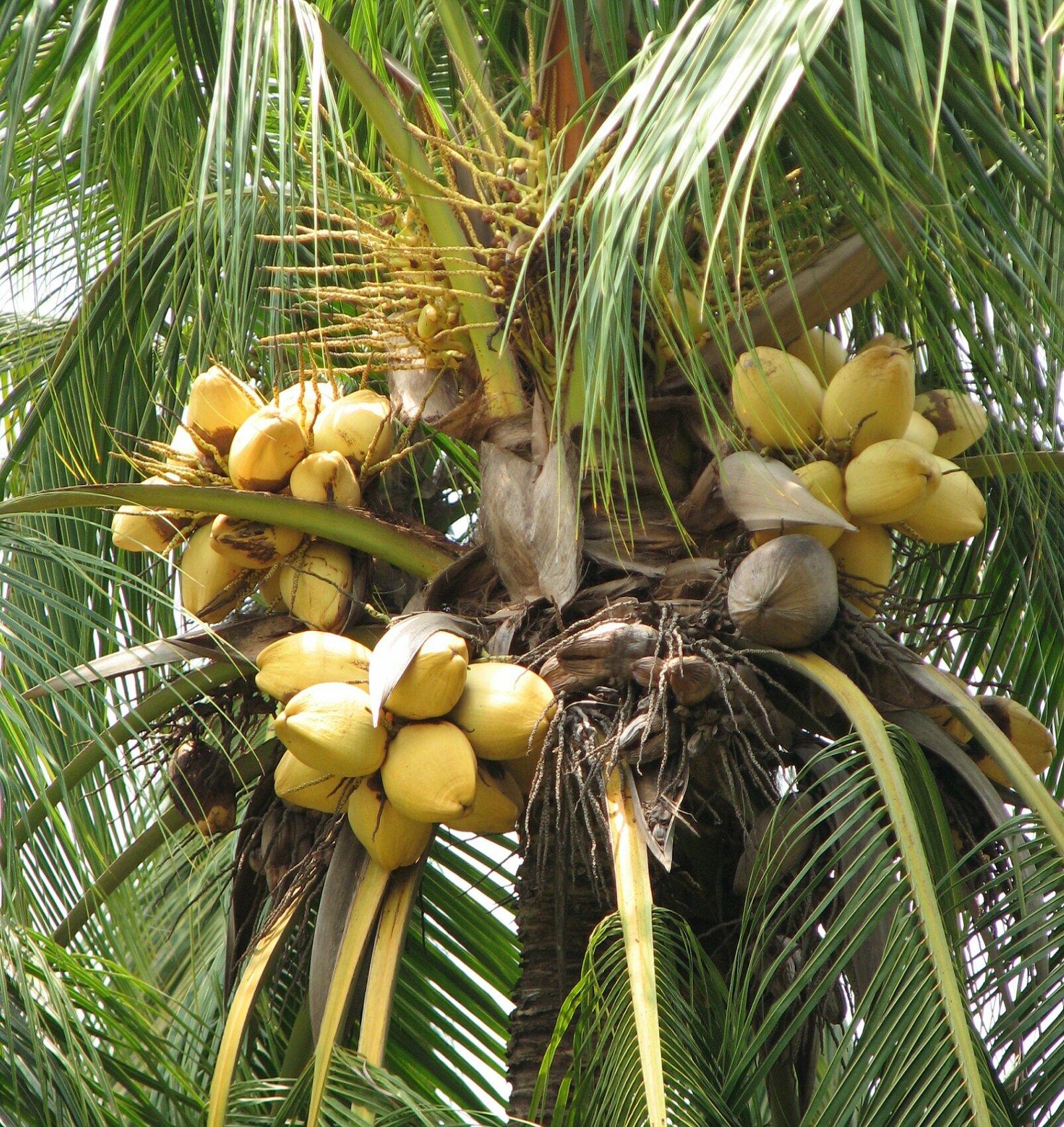 |
|||
| 114. Coix lachryma-jobi Linn Family: POACEAE Flowering & Fruiting: July-November. Ecology: Gregarious along slow-flowing nalas at foot hills. Description: Tall, robust herbs. Leaves broadly lanceolate, flat, acute. Spikes axillary. Spikelets unisexual. Female: solitary, ovate, acuminate, 4-glumed. Caryopsis polished, ashy white. Male: sessile, 2-3 nately angled, awnless, ovate, straw coloured, 4-glumed. Medicinal uses: A tea from the boiled seeds is drunk as part of a treatment to cure warts. It is also used in the treatment of lung abscess, lobar pneumonia, appendicitis, rheumatoid arthritis, beriberi, diarrhoea, oedema and difficult urination. The plant has been used in the treatment of cancer. IUCN Status: |
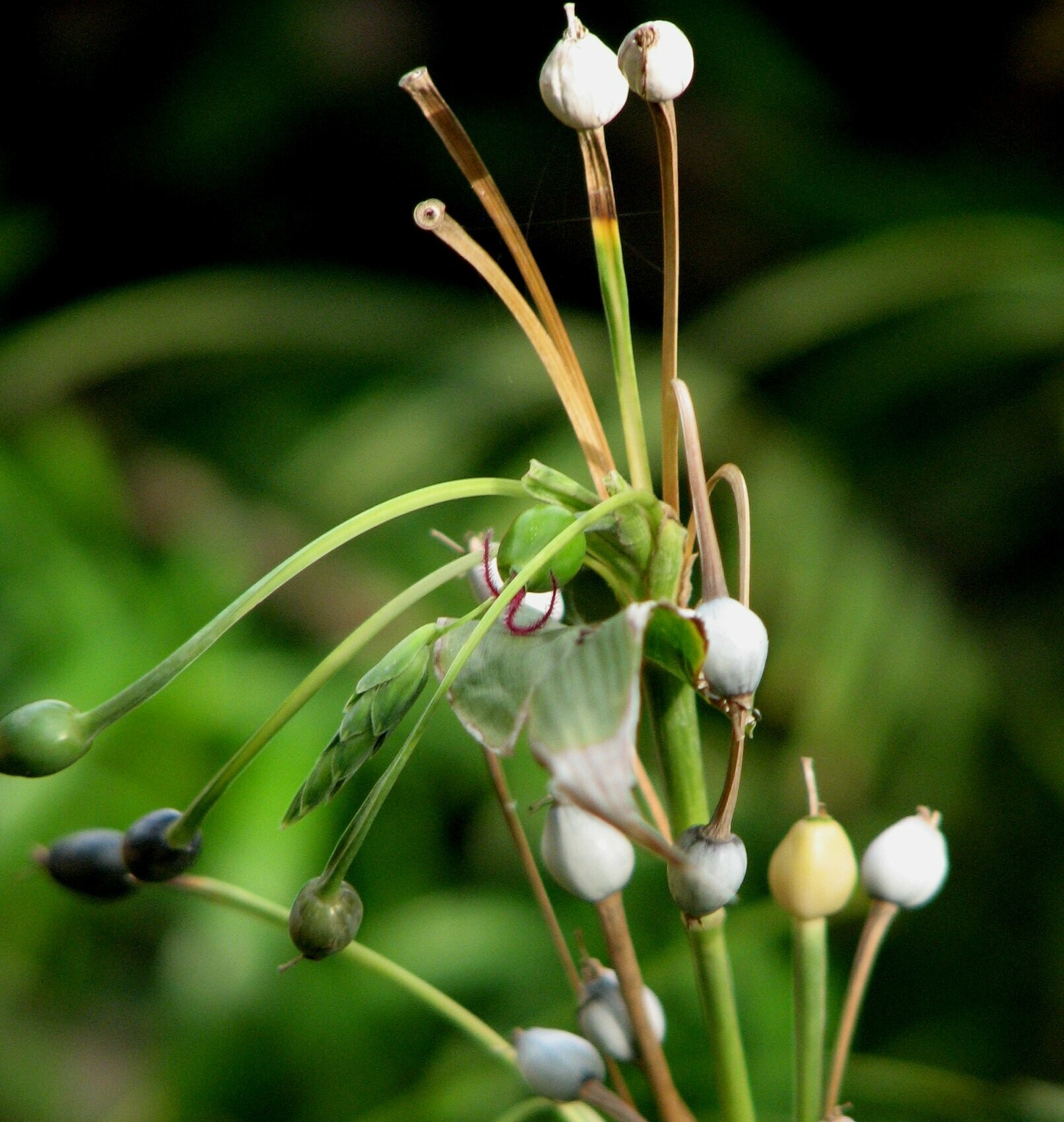 |
|||
| 115. Coldenia procumbens Linn. Family: BORAGINACEAE Flowering & Fruiting: August-April Ecology: Abundant in waste grounds and fallow fields. Description: Prostrate scabrid herbs; branchlets densely pilose. Leaves alternate, elliptic-obovate, pilose, serrate-crenate, apex obtuse emarginate. Flowers axillary, solitary, 4-5-merous, white. Ovary conic. Drupe pyramidal; pyrenes one seeded. Medicinal uses: Coldenia procumbens is commonly found as a weed and it is widely distributed in India, Africa and Malaysia. The whole plant has been used in traditional medicine for the treatment of inflammation, rheumatism, diabetes. IUCN Status: |
 |
|||
| 116. Colocasia esculenta (Linn.) Family: ARECACEASE Flowering: August-October. Ecology: Common in plains, both wild and cultivated. Description: Tuberous herbs. Stolen O. Leaves entire, peltate, ovate and cordate or sagittate, dark green above, petiole purplish below, Spathe pale yellow, base tubular. Spadix free, shorter than spathe. Synandria obpyramidal, stamens 3-6. Ovary 1-celled, stigma 3-5 rayed. Seeds abluminous. Medicinal uses: A decoction of the leaves is drunk to promote menstruation. A decoction, together with some parts of other plants, is taken to relieve stomach problems and to treat cysts. The leaves are heated over a fire and are applied as a poultice to boils. The sap of the leaf stalk is used in treating conjunctivitis. The scraped stem, together with some parts of other plants, is used to create an appetite. The plant is used to treat wounds. IUCN Status: |
 |
|||
| 117. Combretum roxburghii Spreng. Family: COMBRETACEAE Local Name: Ban Jui, Atundi Flowering:December-February. Fruiting: March-June. Ecology: Quite abundant in scrub lands, deciduous & semi-evergreen forests. Description: Climbing shrubs. Young innovation densely brown-tomentose. Leaves opposite, elliptic or suborbicular, shining above. Inflorescence terminal and axillary, panicled spike. Bracts foliaceous, creamy. Medicinal uses: Combretum roxburghii (roxburgh) belongs to a medicinally important family Combretaceae. Combretum and Terminalia genera of the family have been used in the treatment of syphilis, abdominal pains, diarrhea and other ailments. IUCN Status: |
 |
|||
| 118. Commelina bengahlensis Linn. Family: COMMELINACEAE Flowering & Fruiting: August – November Ecology: Fairly plenty in damp places. Description: Medicinal uses: The plant is astringent, demulcent, laxative and mucilaginous. The plant is used to counter infertility in women. In India it is said to be beneficial for leprosy, and in the Philippines it is used as an emollient suppository for strangury. The sap is used for the treatment of eye ailments, sore throat and burns and as a topical application for thrush in infants. The plant is used as a poultice for sore feet. The leaves are pounded and soaked in warm water and then the solution is drunk to treat diarrhoea. A decoction of the root is used for the relief of stomach disorders. The liquid contained in the flowering spathe is used to treat eye complaints. IUCN Status: |
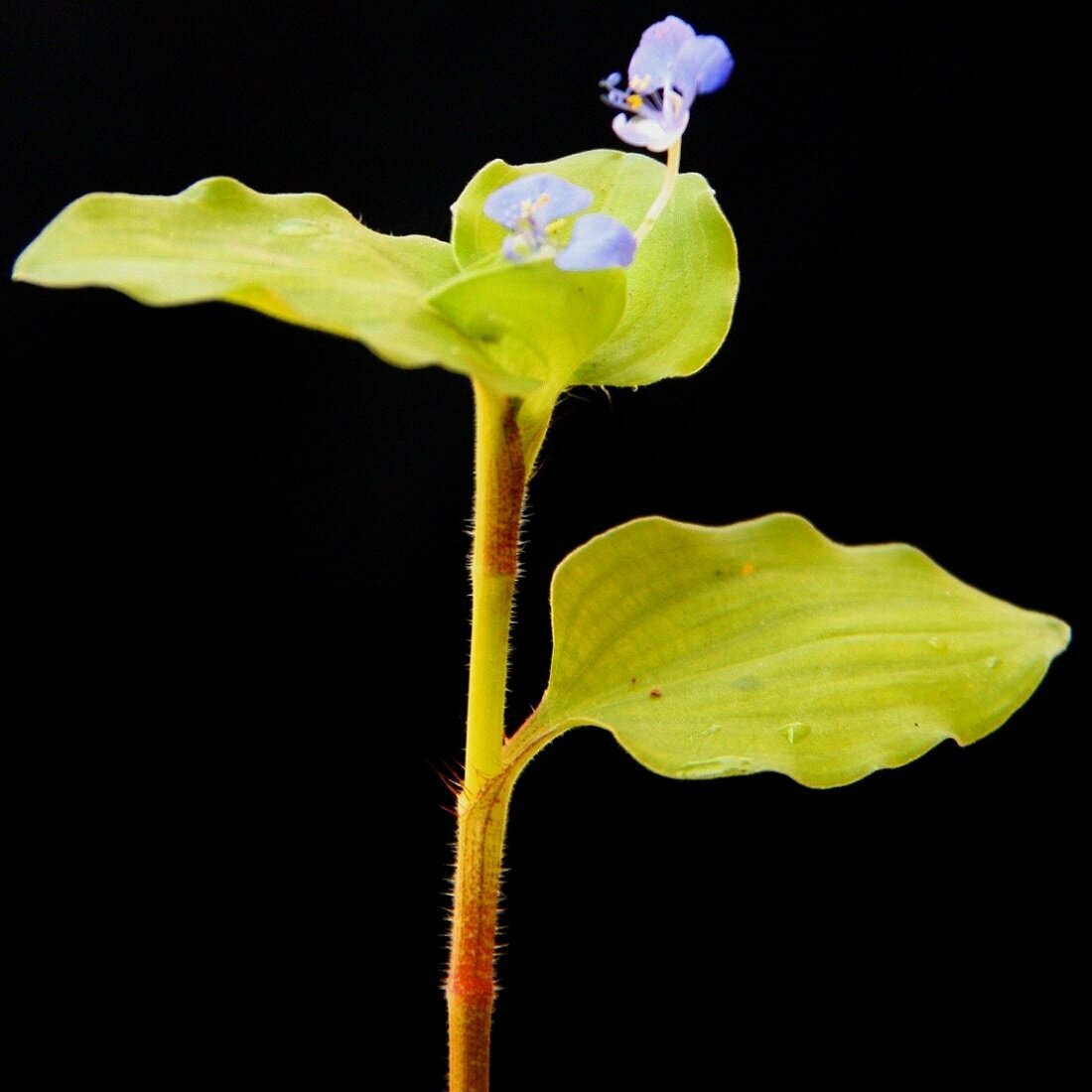 |
|||
| 119. Commelina diffusa Burm. Family: COMMELINACEAE Flowering & Fruiting: August-October Ecology: Occasional, among grasses on moist slopes. Description: Succulent, creeping herb. Leaves lanceolate, sheathing. Flowers blue, in 2-forked cymes, upper barren and 3 lower fertile. Spathes ovate, cordate. Capsule 3-celled, 2 celled 2-seeded, 1 cell 1-seeded. Medicinal uses: This plant has been used for many years to heal swelling, treatment of urinary tract infection and respiratory tract infections, diarrhea, enteritis, and hemorrhoids. The plant has also been used in fever, malaria, insect, bug bites, rheumatoid arthritis, gonorrhea, influenza, and bladder infection. IUCN Status: |
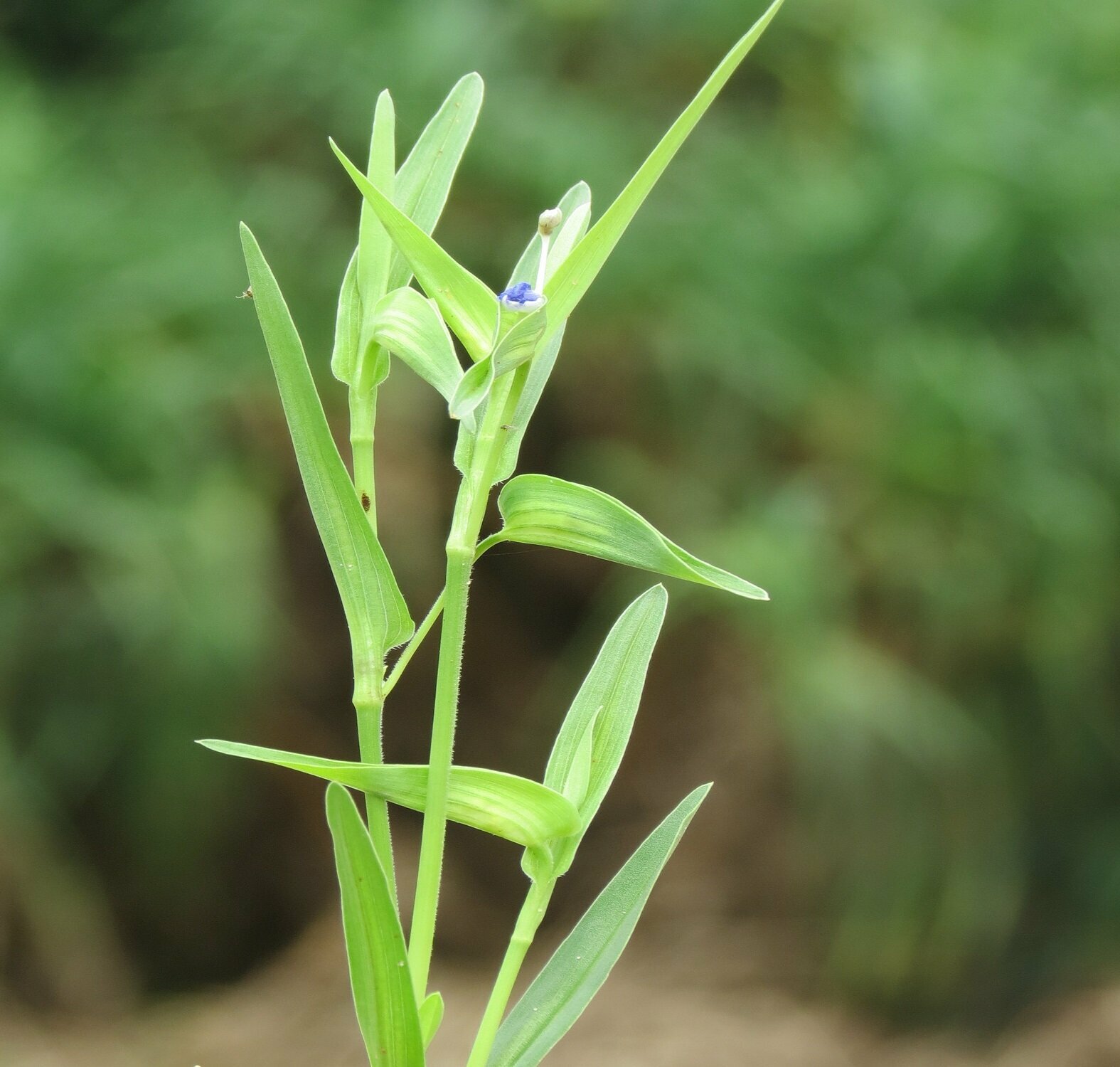 |
|||
| 120. Commelina erecta Linn. Family: COMMELINACEAE Flowering & Fruiting: August-February Ecology: Common, on moist rock surfaces. Description: Stout herbs. Leaves variable, lanceolate acute or caudate pilose beneath. Spathes in crowded heads, funnel shaped. Capsule 3- celled, 2-valved, scabrid. Medicinal uses: The plant is emollient and vulnerary. It is used in the treatment of wounds. A decoction is used as an external wash for mycoses. It is macerated in rum and then rubbed on spider bites to bring relief. The sap is used as an oral contraceptive. IUCN Status: |
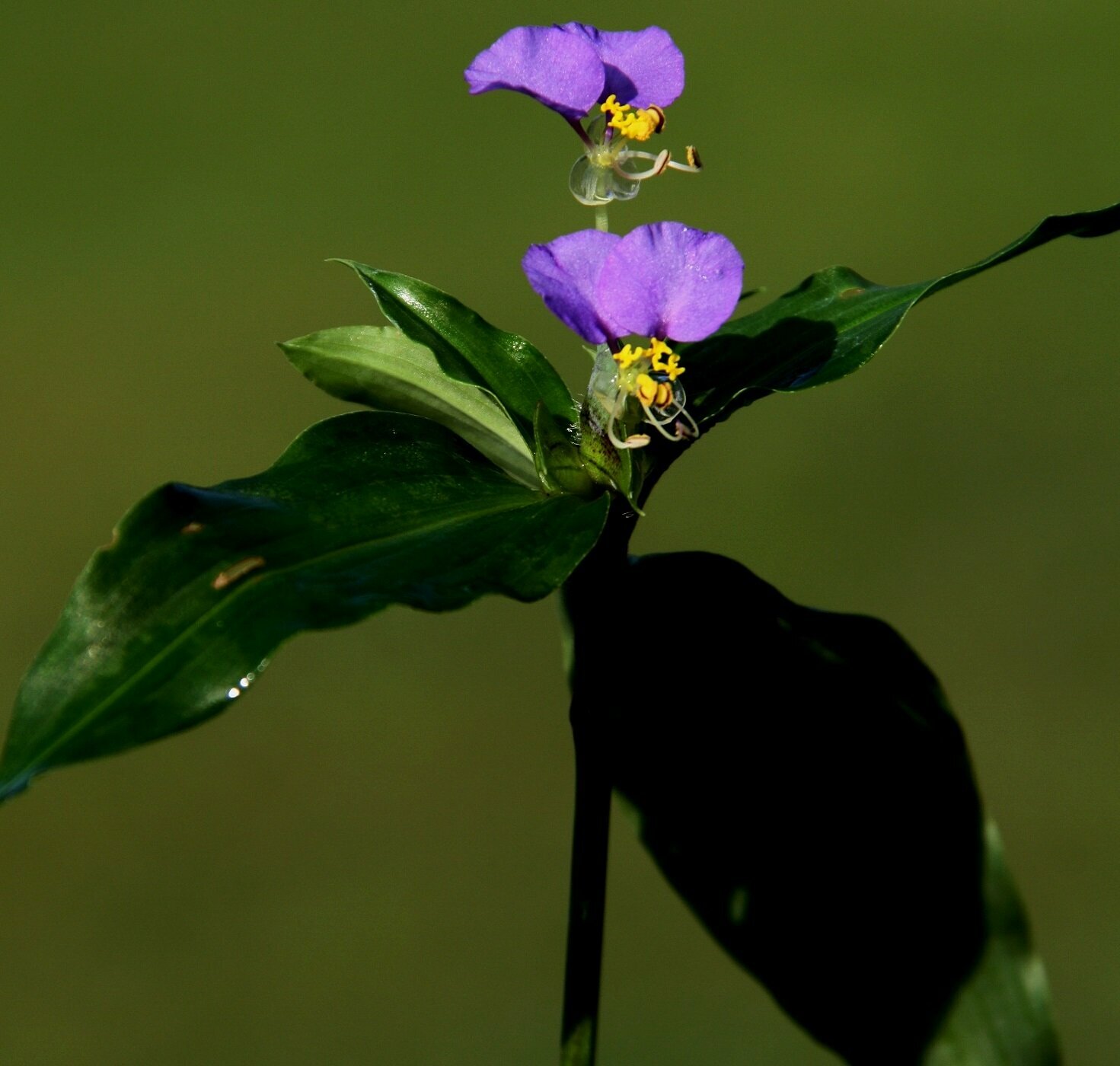 |
|||
| 121. Commelina longifolia Lamk, Family: COMMELINACEAE Flowering & Fruiting: October-December Ecology: Frequent, in wet places along stream banks. Description: Stems diffuse, internodes long. Leaves linear-lanceolate, glabrous; sheaths ciliolate. Flowers blue, 1-2 on the cyme branches. Spathe complicate, lanceolate, solitary. Seeds smooth, black. IUCN Status: |
 |
|||
| 122. Commelina paludosa Bl Family: COMMELINACEAE Flowering & Fruiting: August-December Ecology: Occasional, straggling among bushes. Description: Diffuse herbs. Leaves 8-13 x 3-4 cm, lanceolate, apex acute or acuminate, base narrowed, scabrous or softly villous; sheaths to 2 cm, mouth rufous haired. Spathes to 2 x 1.5 cm, infundibular, base cordate, solitary in terminal heads. IUCN Status: |
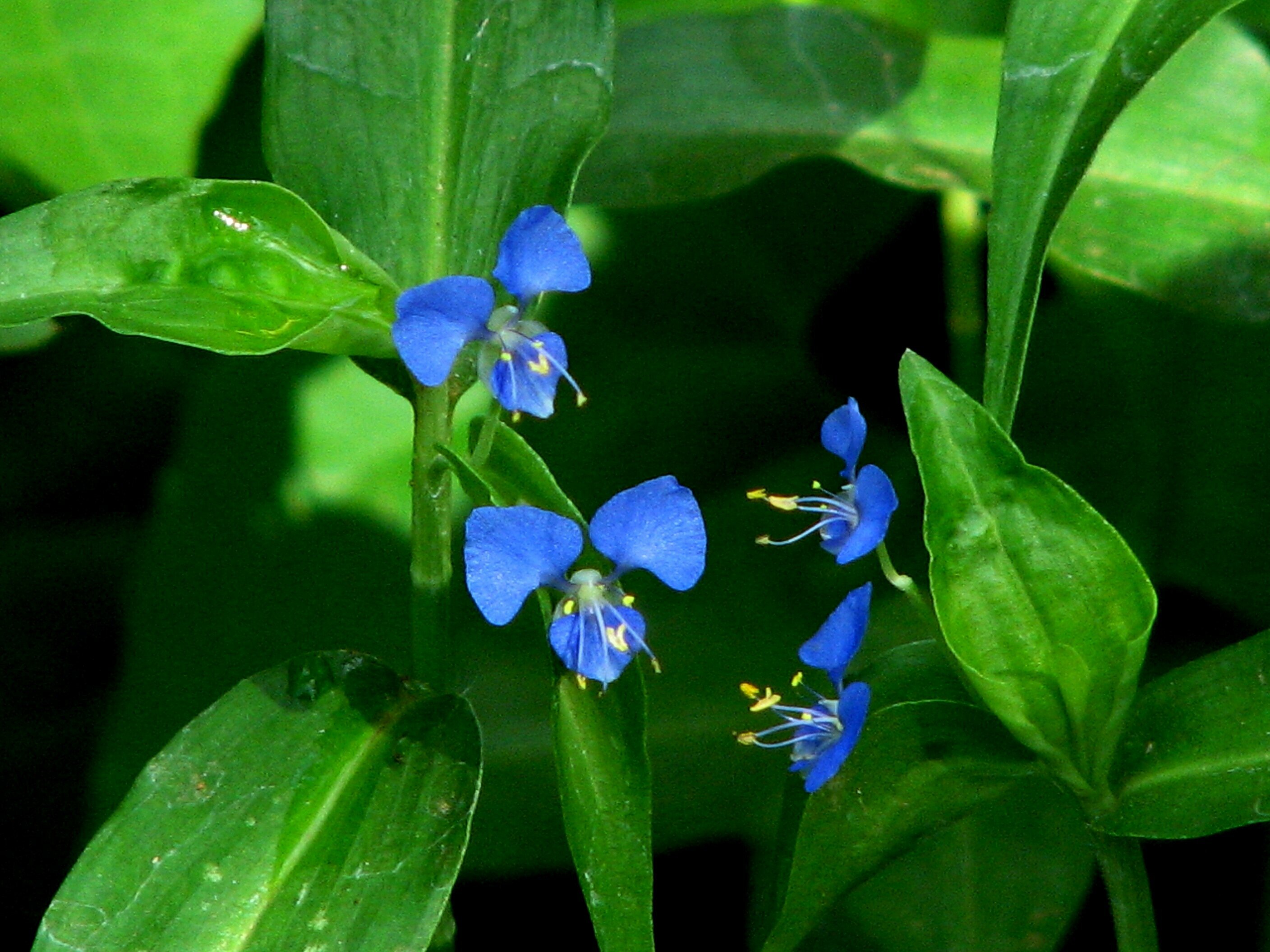 |
|||
| 123. Corchorus aestuane Linn. Family: TILIACEAE Flowering & Fruiting: July-November Ecology: Common in moist places, often gregarious in fallow fields. Description: Erect herbs. Leaves oblong-ovate, chartaceous, crenate dentate, pubescent, acute. Flowers yellow in 2-3 flowered cymes. Ovary angular, 3-celled. Capsule 6- angular, – winged, ending in 3 radiating horns. Seeds truncate. Medicinal uses: The leaves of this plant serve against headache, and the seeds, in the form of powder or in decoction, as a tonic, carminative and febrifuge. IUCN Status: |
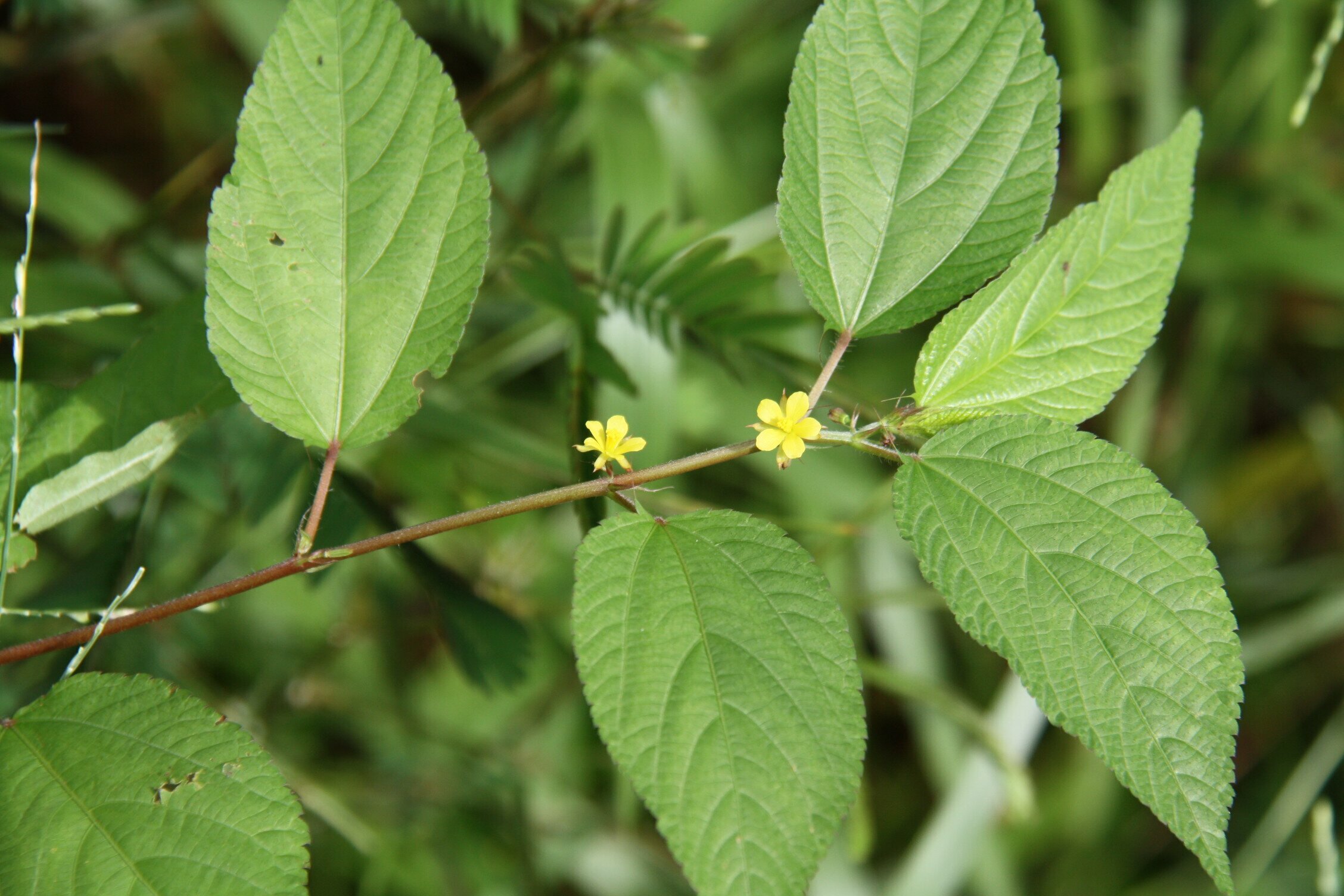 |
|||
| 124. Crateva magna Lour. DC Family: CAPPARACEAE Local name: Barun Flowering & Fruiting: March-June Ecology: Occasional, along rivers and streams, often planted in temple premises Description: Deciduous trees. Bark grey with white lenticles. Leaves 3-foliolate; leaflets elliptic-ovate, glabrous. Flowers cream coloured, in terminal corymbs, appearing when leafless. Medicinal uses: Traditionally this plant used for inflammation, fever, arthritis, bronchitis, urinary calculi and cough. It is also useful in disorders of urinary organs, urinary tract infections, pain, intermittent fever, asthma, bronchitis, renal and vesicle calculi. IUCN Status: |
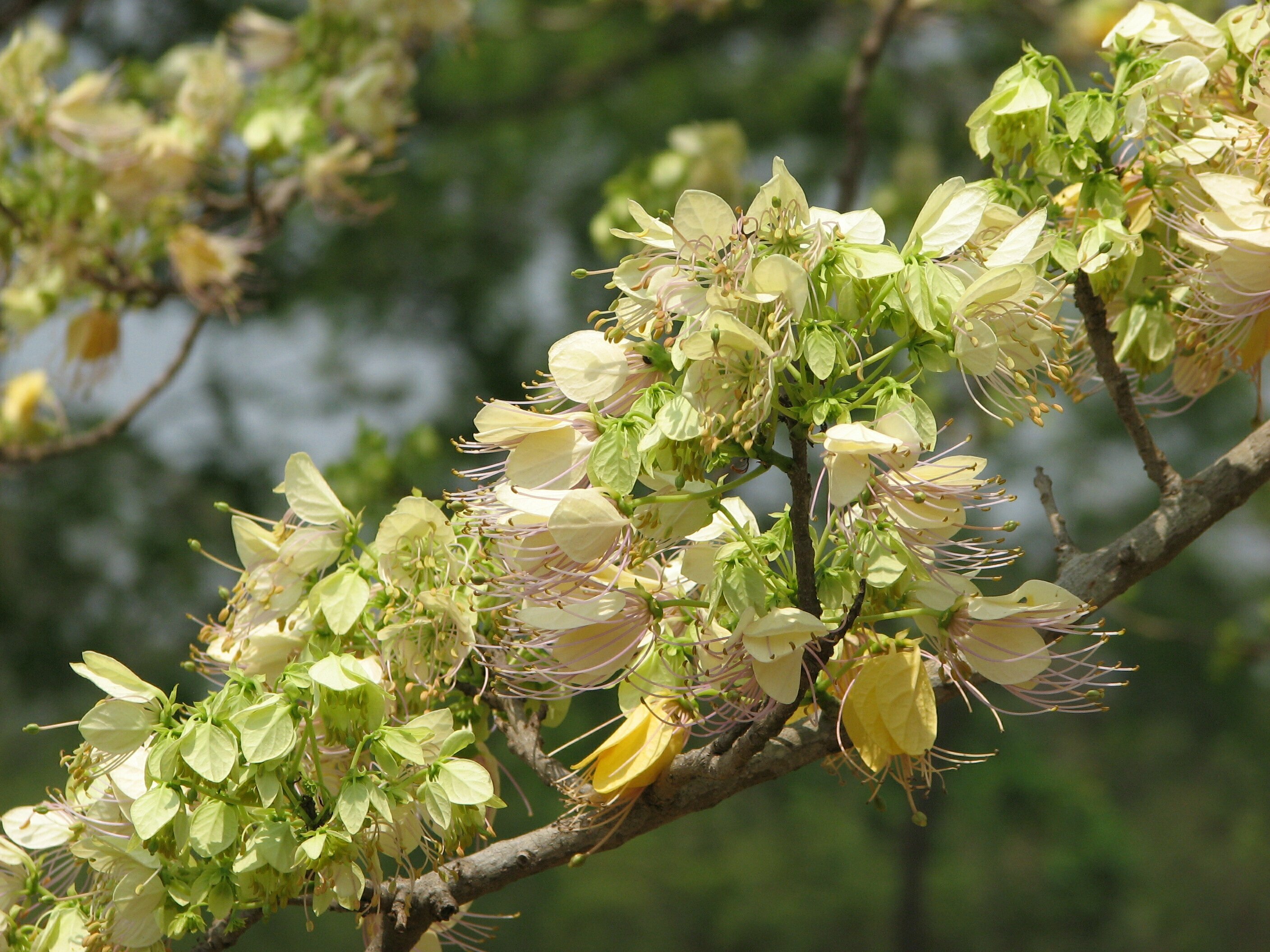 |
|||
| 125. Crotalaria verrucosa Linn. Family: FABACEAE Flowering & Fruiting: March-May. Ecology: Occasional in fallow fields. Description: Herbs or bushy undershrubs; branches 3-4 angled. Stipules foliaceous. Leaves ovate or rhomboid, acute or obtuse, margin undulate. Racemes 8-14 flowered, leaf-opposed. Pod pubescent, 16-20 seeded. Medicinal uses: The roots are used as a treatment against fever and stomach pains. The plant (part not specified) is blood purifier, emmenagogue. It is used to purify the blood and to cure skin diseases. The plant produces a neutral seed-gum polysaccharide and the flowers produce kaempferol. IUCN Status: |
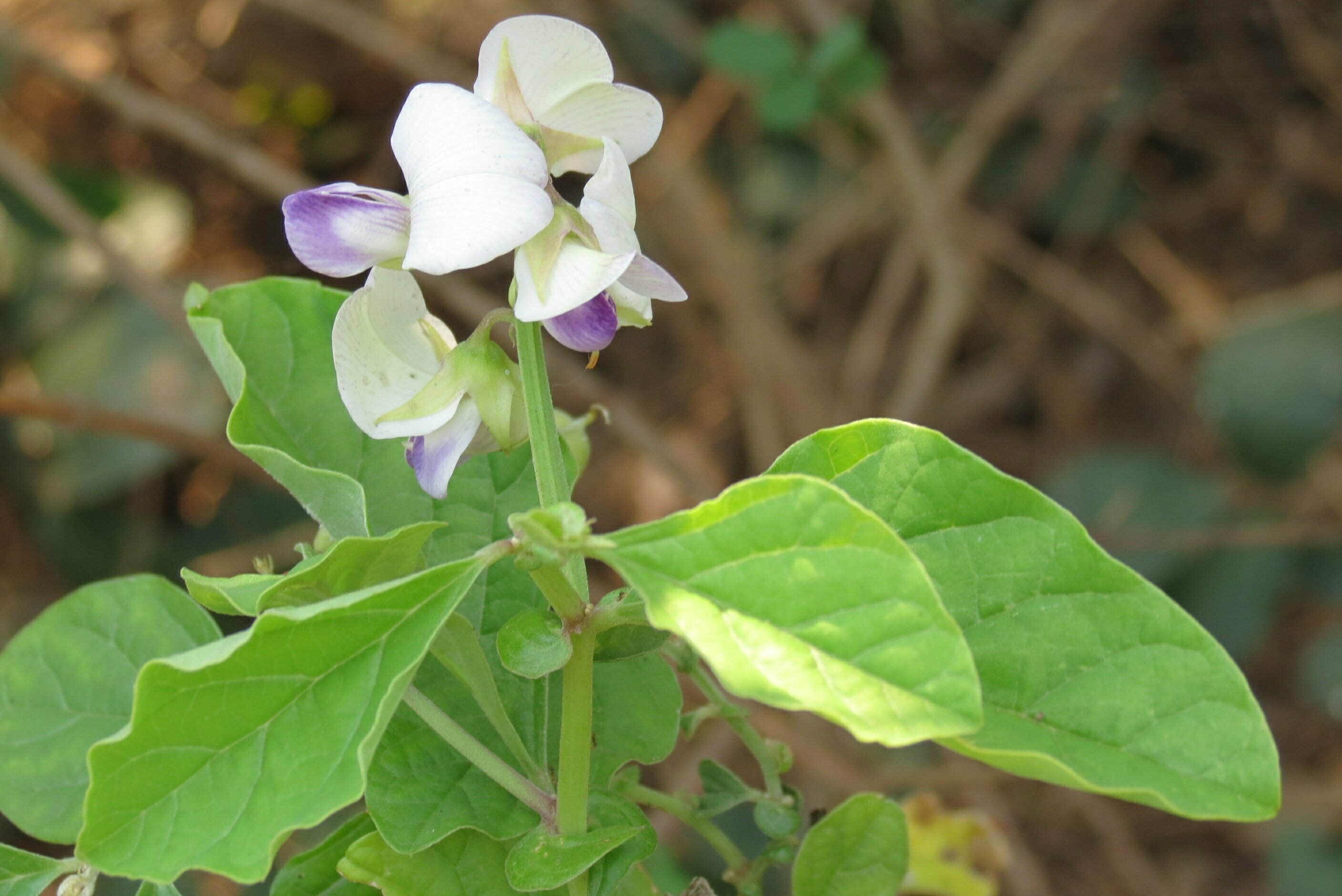 |
|||
| 126. Croton bonplandianus Family: EUPHORBIACEAE Flowering & fruiting: Almost year round. Ecology: Common weed in open wast eplaces & roadsides. Introduced, thoroughly naturalised. Description: Branches ribbed with stellate hairs. Leaves lanceolate, wavy, toothed, sparsely stellate-hairy beneath. Male flowers fascicled, petals linear-oblong. Female solitary, apetalous. Medicinal uses: The plant Croton bonplandianum (Euphorbiaceae) is treat liver disorders, skin diseases including ring worm infection, to cure the swelling of body, bronchitis and asthma. The seeds are used for the treatment of jaundice, acute constipation, abdominal dropsy and internal abscesses. IUCN Status: |
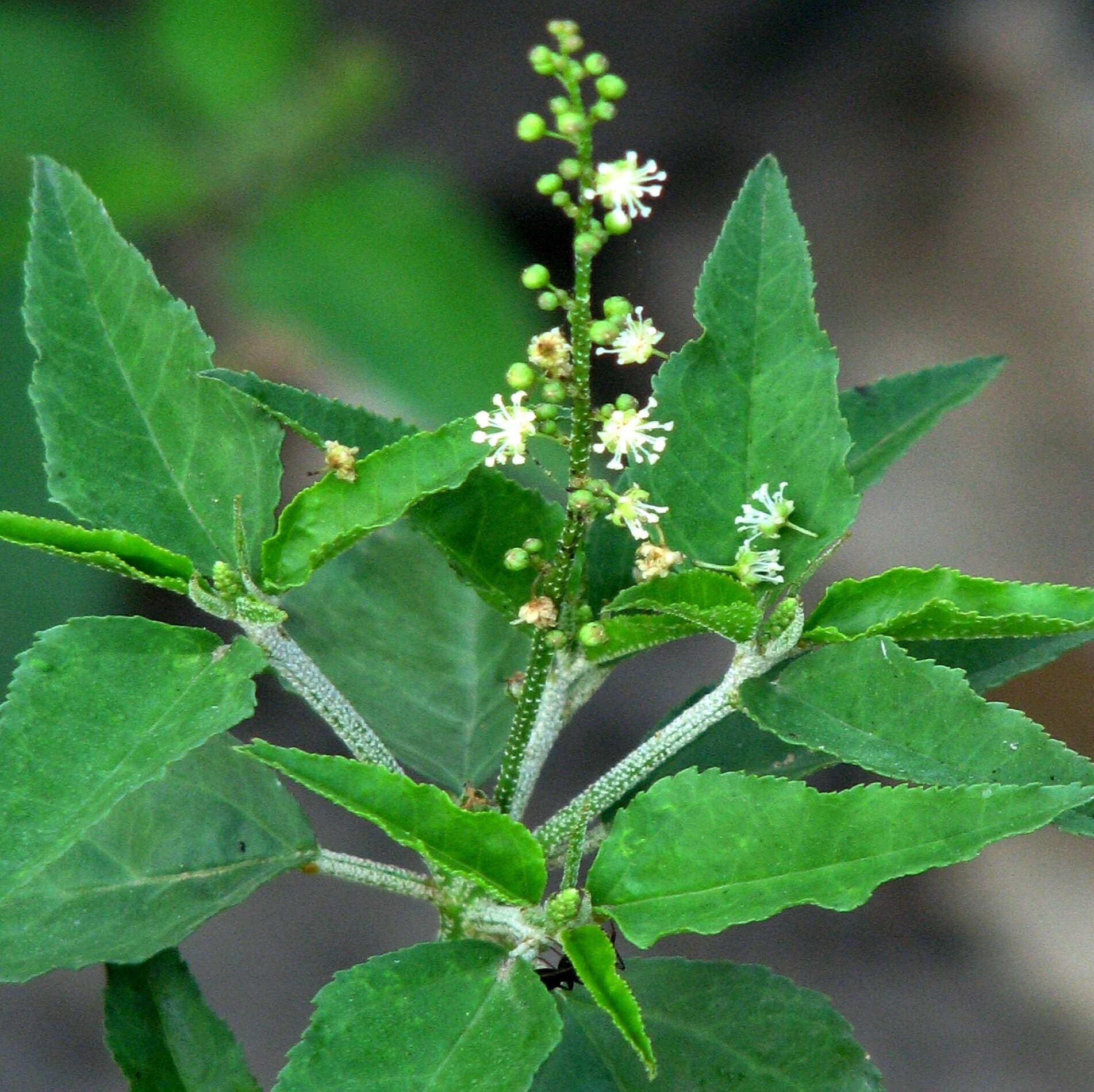 |
|||
| 127. Curculigo orchioides Gaertn. Family: HYPOXIDACEAE Local name: Kuakand Flowering: May-August. Fruiting: August-October. Ecology: Fairly abundant, appear after forest fire. Description: Small herbs, root stock tuberous. Leaves radical, plicate lanceolate or linear. Flowers unisexual, bright yellow. Scape sheathed with lanceolate, hairy bracts. Hypanthium distinctly beaked. Capsule sessile, beaked, 1-4 seeded. Medicinal uses: Curculigo is used as a rejuvenating tonic, aphrodisiac drug, and diuretic. It is useful in general debility, cough, jaundice, asthma, and piles. IUCN Status: |
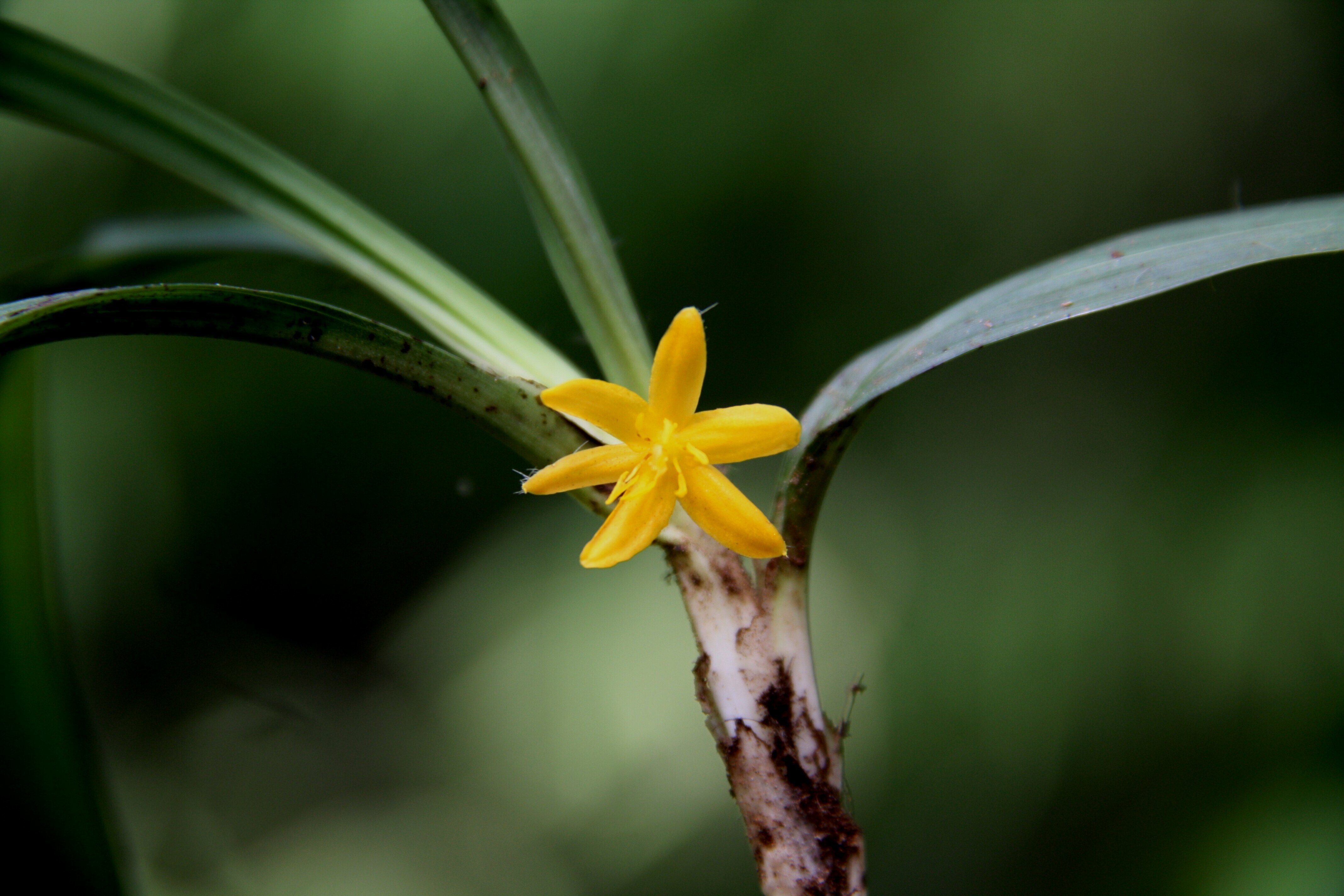 |
|||
| 128. Cuscuta reflexa Roxb. Family: CONVOLVULACEAE Local name: Nirmuli Flowering & Fruiting: October-January Ecology: Very common parasite, twining usually on Alstonia scholaris, Morinda tinctoria & Holarrhena antidysenterica. Description: Leafless, yellow-green, rootless parasites. Stem twining, slender. Flowers sessile or subsessile, fragrant, white or pinkish, in small globose groups or racemiform cymes. Calyx cupulate. Corolla lobes reflexed, scaly. Fruit fleshy, globose, 4-seeded. Medicinal uses: Cuscuta reflexa is called as miracle plant in the ethnobotany. The whole plant is purgative. It is used internally in treating protracted fevers and externally in the treatment of body pains and itchy skin. The plant is employed in Ayurvedic medicine to treat difficulty in urinating, jaundice, muscle pain and coughs. IUCN Status: |
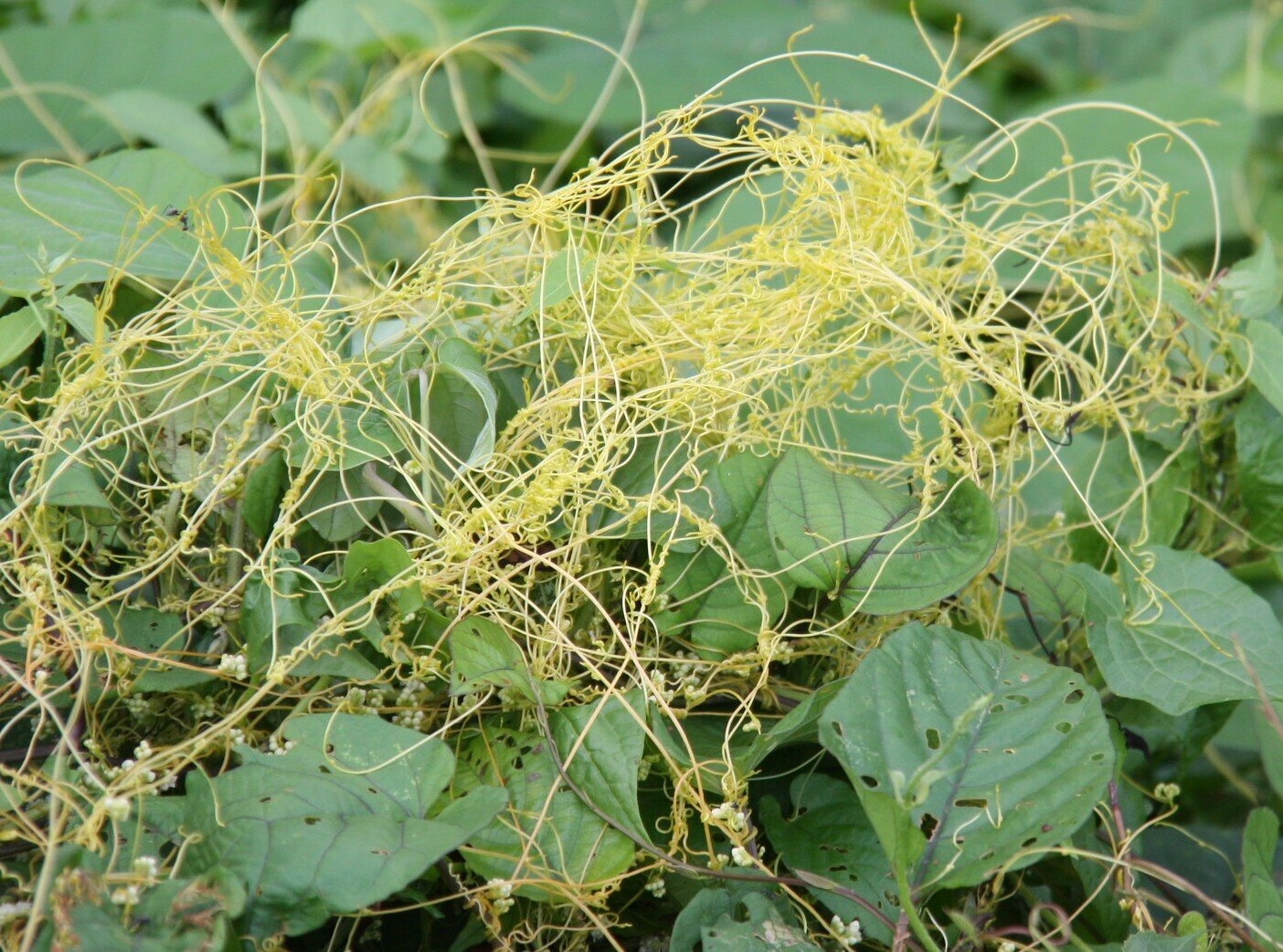 |
|||
| 129. Cymbidium aloifolium (Linn.) Family: ORCHIDACEAE Flowering: June-July. Fruiting: July-December. Ecology: Common epiphyte on Mangifera indica Linn. and Terminalia arjuna (Roxb.) Wt. & Arn. in damp valleys of semi-evergreen forest. Description: Epiphytic herbs; stem pseudobulbar. Leaves narrow, leathery.Flowers purple with yellow ting, in pendant racemes. Sepals and petals free: lip 3-lobed, column long. Pollinia 2, cleft or 4 in unequal pairs. Fruits pendulous green. Medicinal uses: Cymbidium aloifolium is a potent medicinal epiphytic orchid plant in the Indian systems of medicine. Traditionally this plant was used in the treatment of Anti-inflammatory, Paralysis, joining fractured bones, fever, weakness of eyes, chronic illness, burns, sores etc. IUCN Status: |
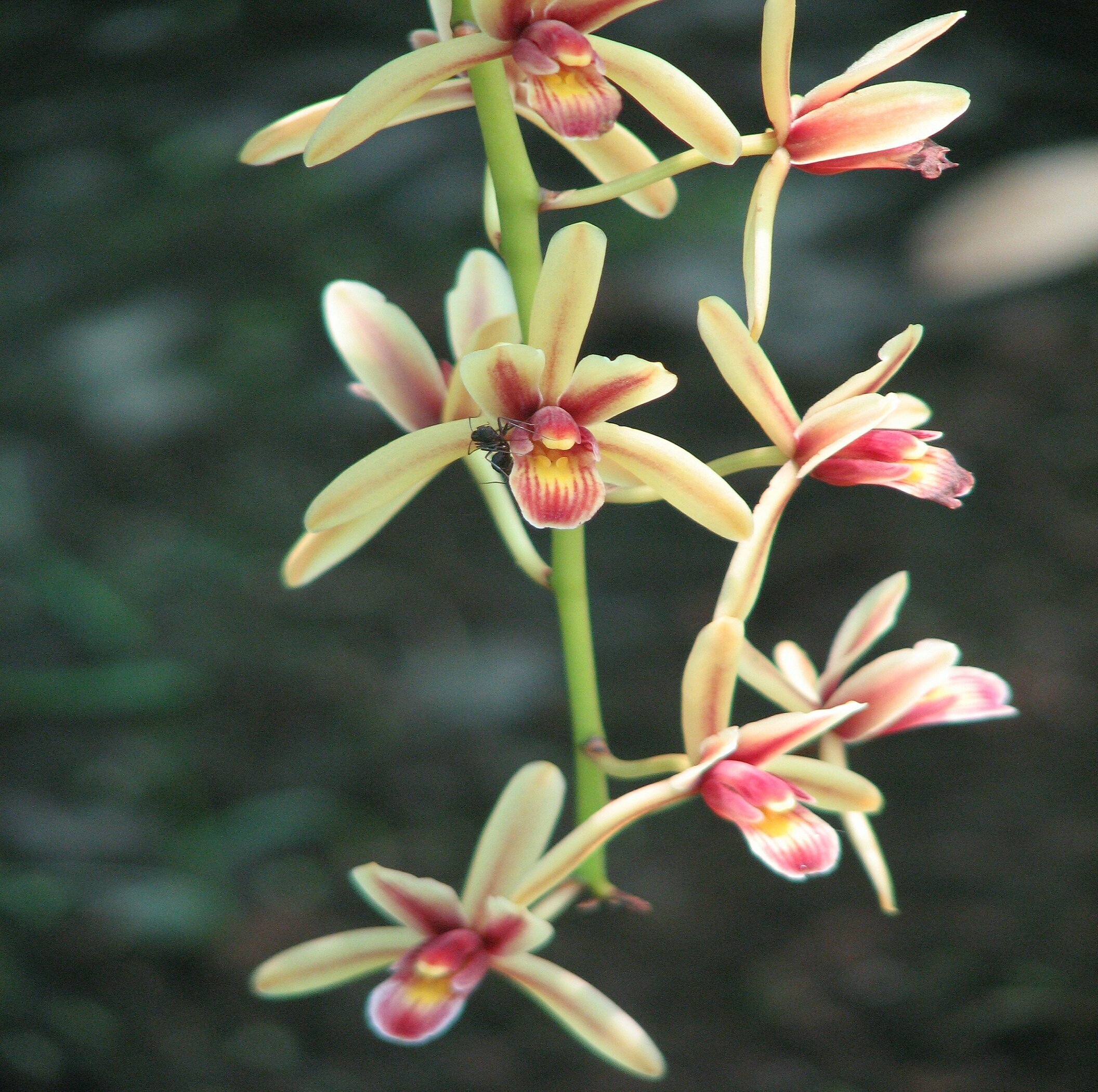 |
|||
| 130. Cynodon barberi Rang. Family: POACEAE Flowering & Fruiting: Throughout the year. Ecology: Common, on lateritic hill plateau. Description: Creeping or ascending grass, rhizomes absent. Leaves spreading, Spikelets close. Upper glume equal to or longer than the lemma, keels and margins of lemma clavallate hairy. Grain brown. Medicinal uses: According to Unani system of medicine, Cynodon plant is bitter, sharp hot taste, good odor, laxative, brain and heart tonic, aphrodisiac, alexipharmic, emetic, emmenagogue, expectorant, carminative and useful against grippe in children, and for pains, inflammations, and toothache. IUCN Status: |
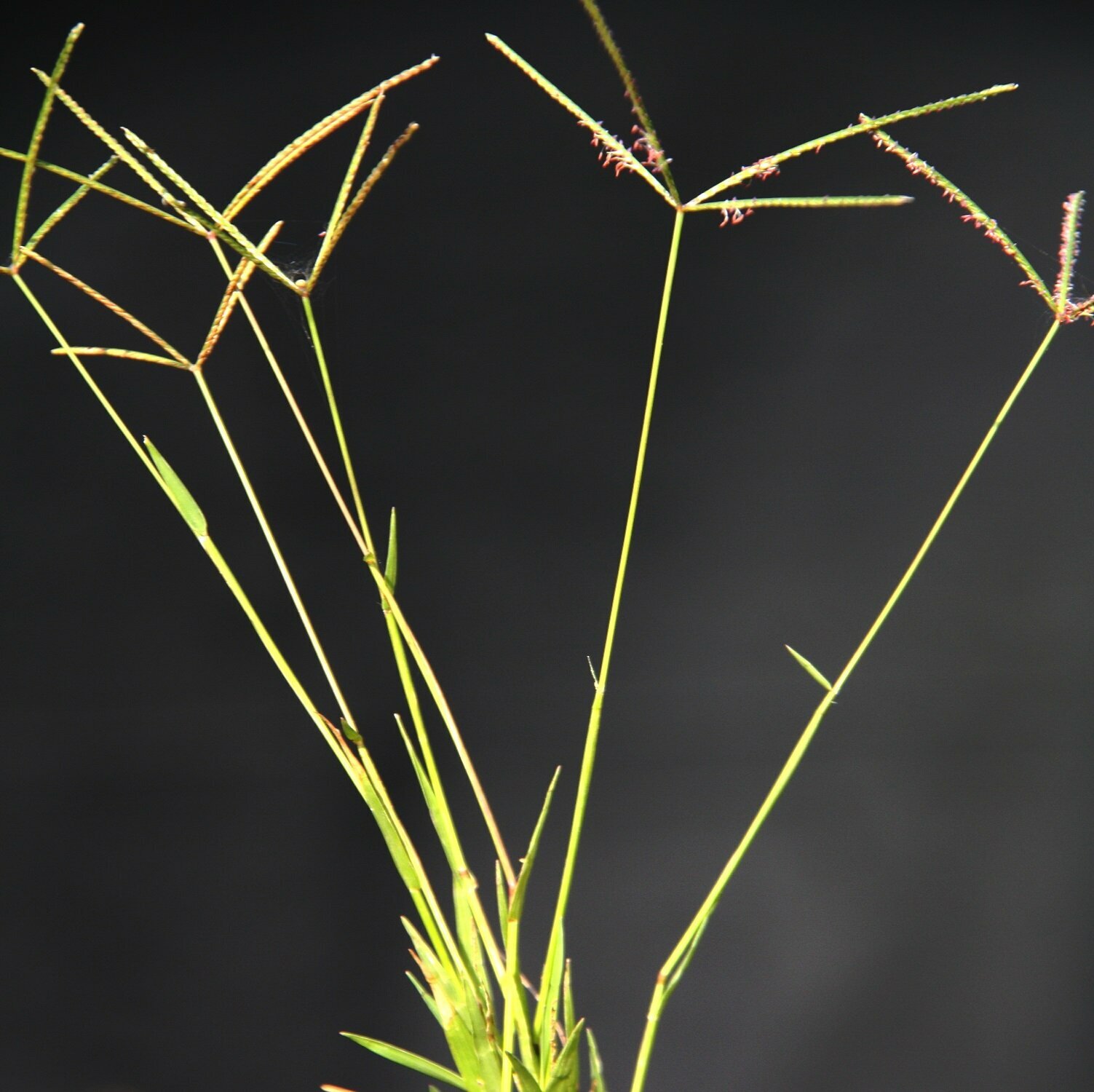 |
|||
| 131. Cynodon dactylon (Linn.) Family:POACEAE Local name: Dub Ghas Flowering & Fruiting: Throughout the year. Ecology: Very common, inhabiting all types of habitats throughout the region. Description: Creeping or ascending grass. Stems widely spreading, matted. Leaves spreading, subulate, glaucous, linear or lanceolate acuminate. Spikes sometimes winged. Spikelets close. Glume iii largest, cymbiform, keel ciliate. Grain brown, fusiform-oblong Medicinal uses: The plant has been long used in the traditional medicines to treat various ailments such as anasarca, cancer, convulsions, cough, cramps, diarrhea, dropsy, dysentery, epilepsy, headache, hemorrhage, hypertension, hysteria, measles, rubella, snakebite, sores, stones, tumors, urogenital disorders, warts and wounds. Leaves are chewed and the paste with saliva is applied on fresh cut to stop bleeding. IUCN Status: |
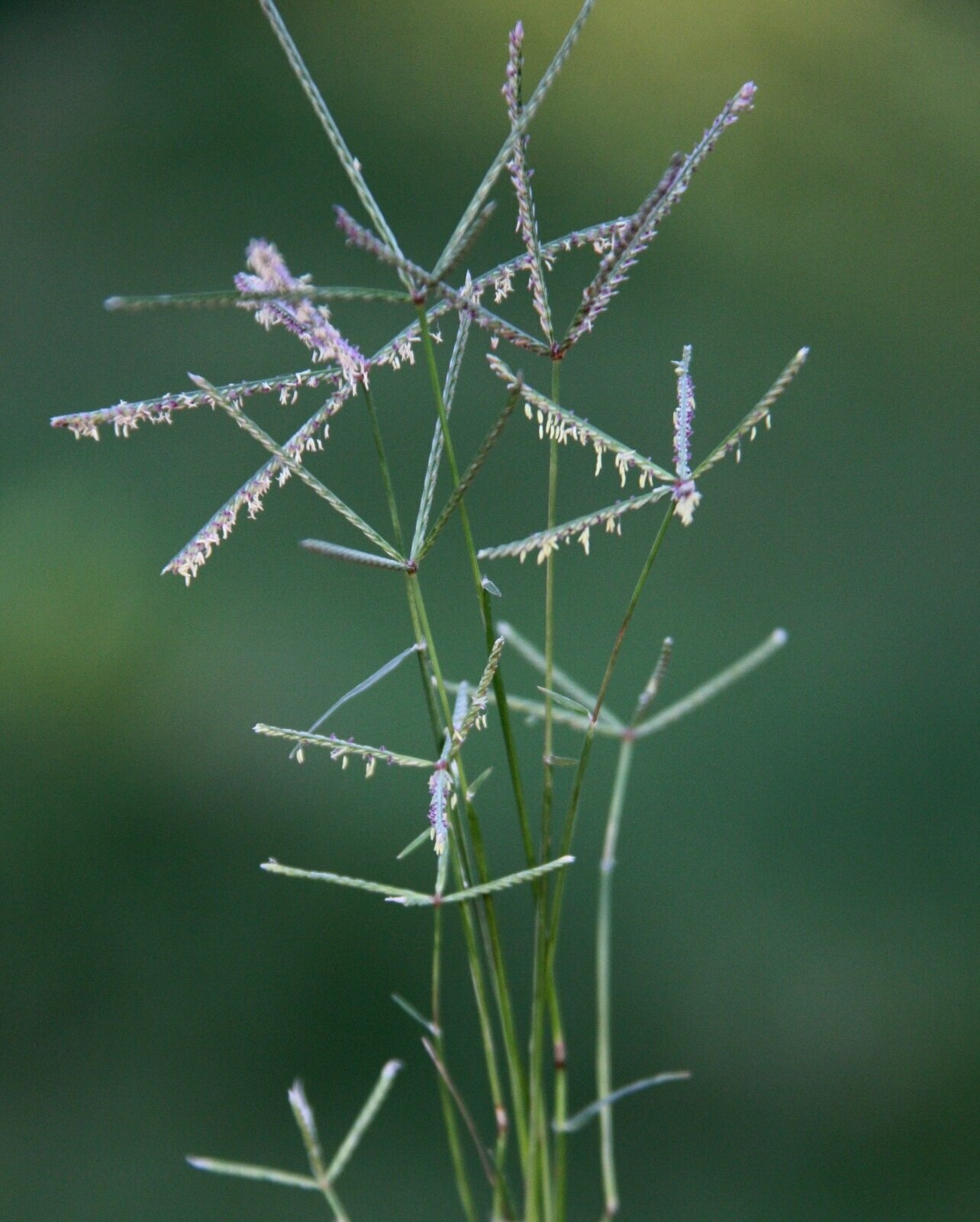 |
|||
| 132. Cyperus castaneus Willd Family:CYPERACEASE Flowering & Fruiting: August-September. Ecology: Common in moist places. Description: Non-rhizomatous, delicate herbs. Stem tufted. Leaves filiform, glabrous. Umbels simple, ray’s unequal. Spikelets sessile, shining, chestnut brown, linear-oblong, compressed. Glumes compact, awned, crimson red, ovate, keeled. Nut ellipsoid, 3-gonous, pale brown. IUCN Status: |
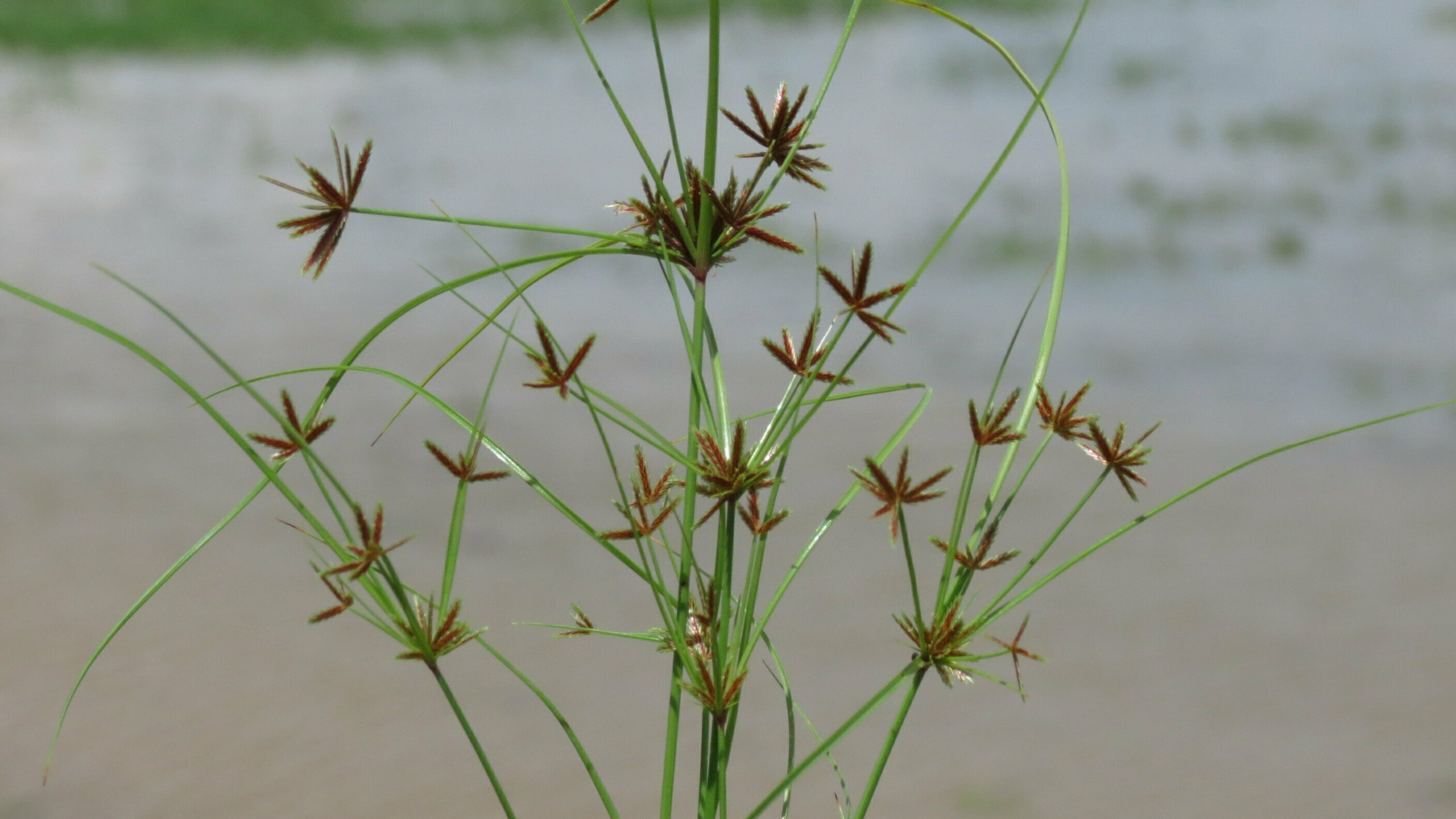 |
|||
| 133. Cyperus compressus Linn. Family: CYPERACEASE Flowering & Fruiting: July-August. Ecology: Common, in moist wasteplaces and field bunds Description: Rhizome absent. Stem tufted, 3-gonous. Leaves entire, acuminate. Umbel simple. rays unequal, bracts leafy. Spikelets subdigitate, greenish, compressed. Glumes closely plicate, ovate, awned, keeled, margin hyaline. Nut 3-gonous, deep brown. Medicinal uses: This plant is for the treatment of various diseases like dysentery, stomach ache, malarial fever, whooping cough, heart diseases, tumours. IUCN Status: |
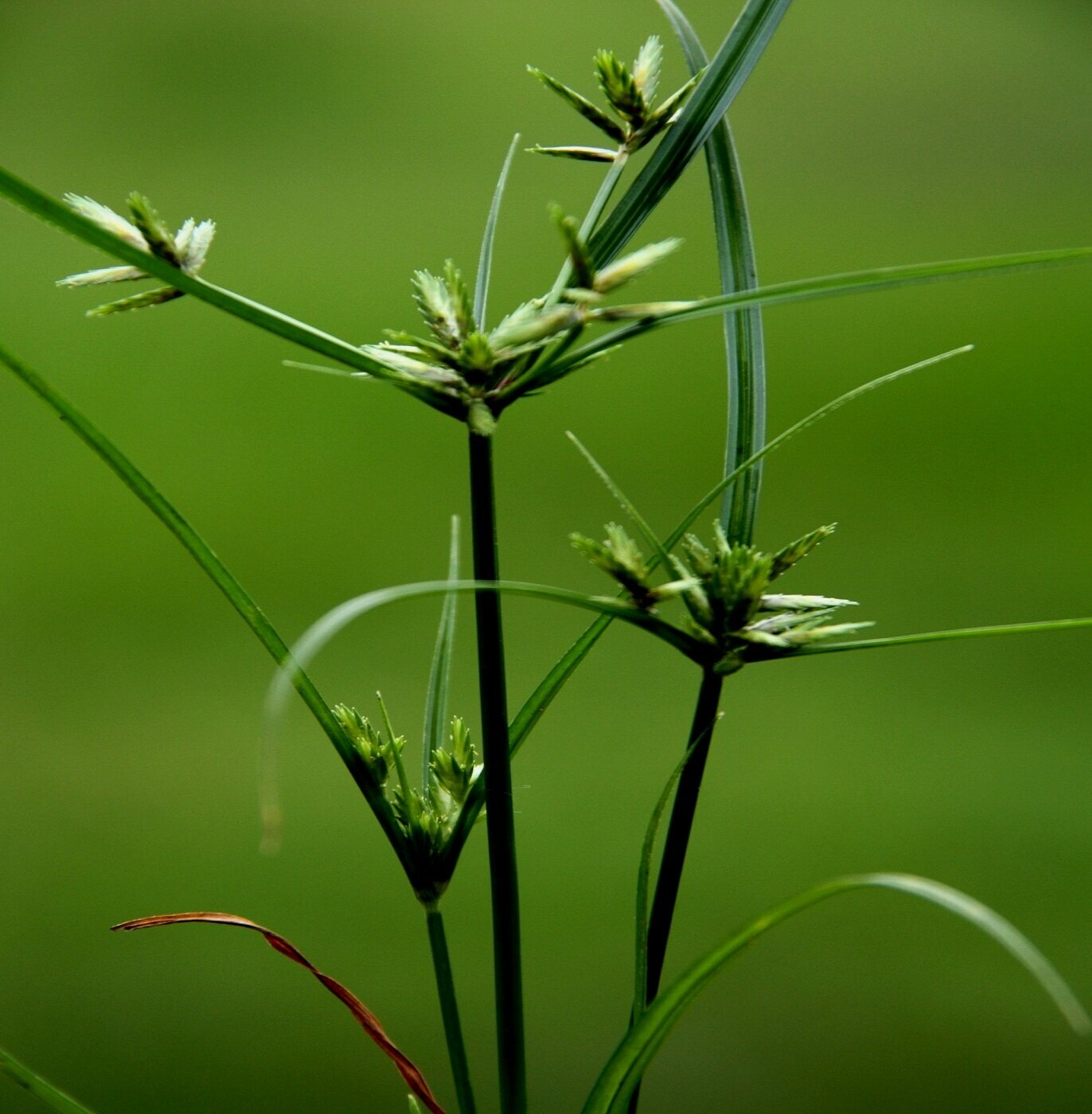 |
|||
| 134. Cyperus difformis Linn Family: CYPERACEASE Flowering & Fruiting: April-August. Ecology: Abundant in stream beds. Description: Suberect herbs. Stem 3-quet rous, leafy. Leaves acuminate, basal. Umbel simple, rays unequal, bracts unequal. Spikelets many, linear-oblong, ashy brown. Glumes distichous orbicular, keeled, hyaline margined. Nut sessile, 3-gonous, pale brown. IUCN Status: |
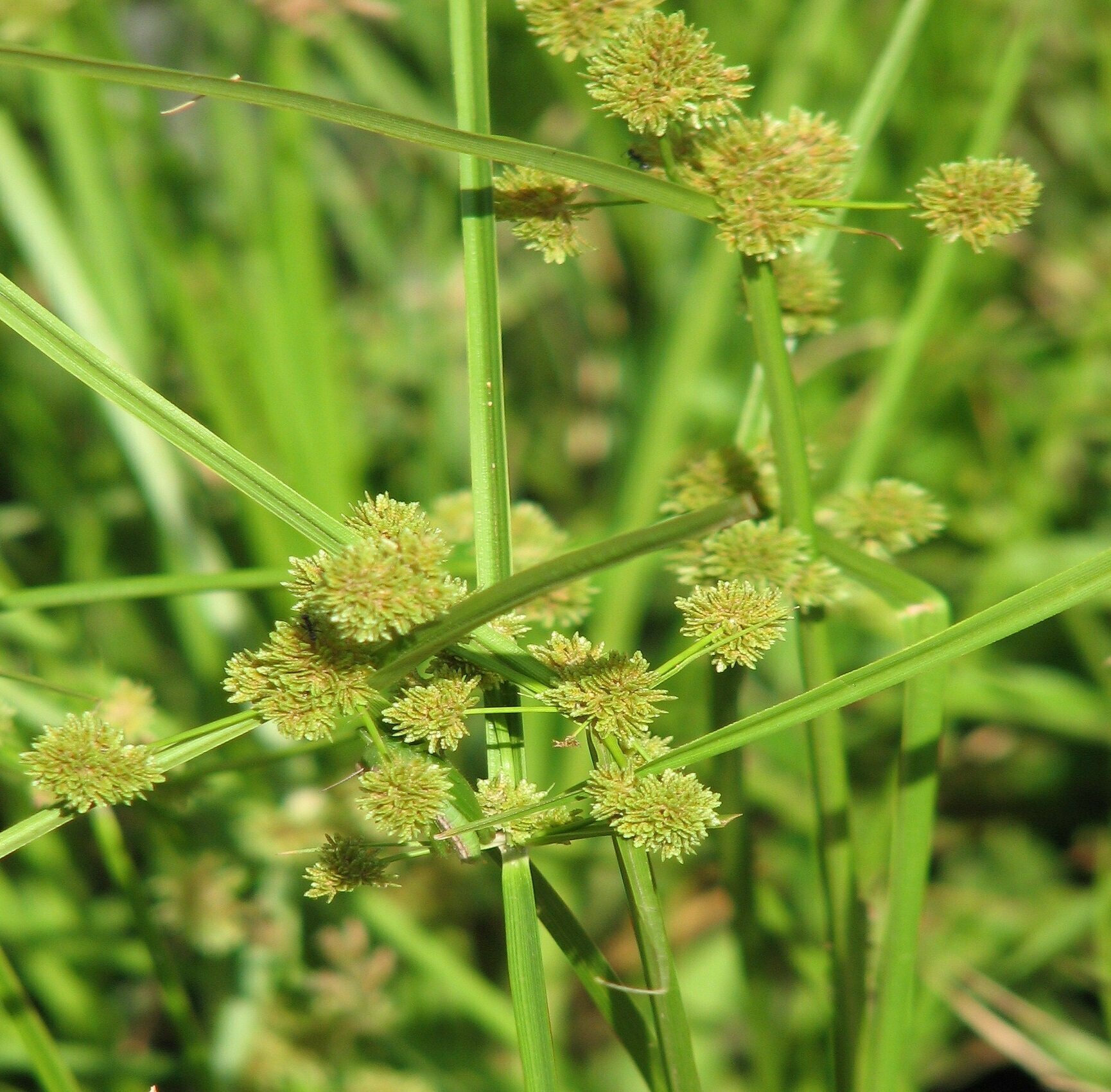 |
|||
| 135. Cyperus diffusus Vahl. Family: CYPERACEASE Flowering & Fruiting: July-September. Ecology: Very common, on all types of habitats. Description: Diffuse, non-rhizomatous herbs. Stem 3-gonous, leafy. Leaves acute, ribbon like. Umbel compound, rays unequal; bracts broader, unequal. Spikelets linear-oblong, dark brown. Glumes bifarious, ovate, margin hyaline, awned, keeled. Nut 3-quet rous, deep brown, smooth. Medicinal uses: The roots are used as an antipyretic, antitussive, analgesic, cardiotonic, diuretic. The roots are used to treat diseased lips. IUCN Status: |
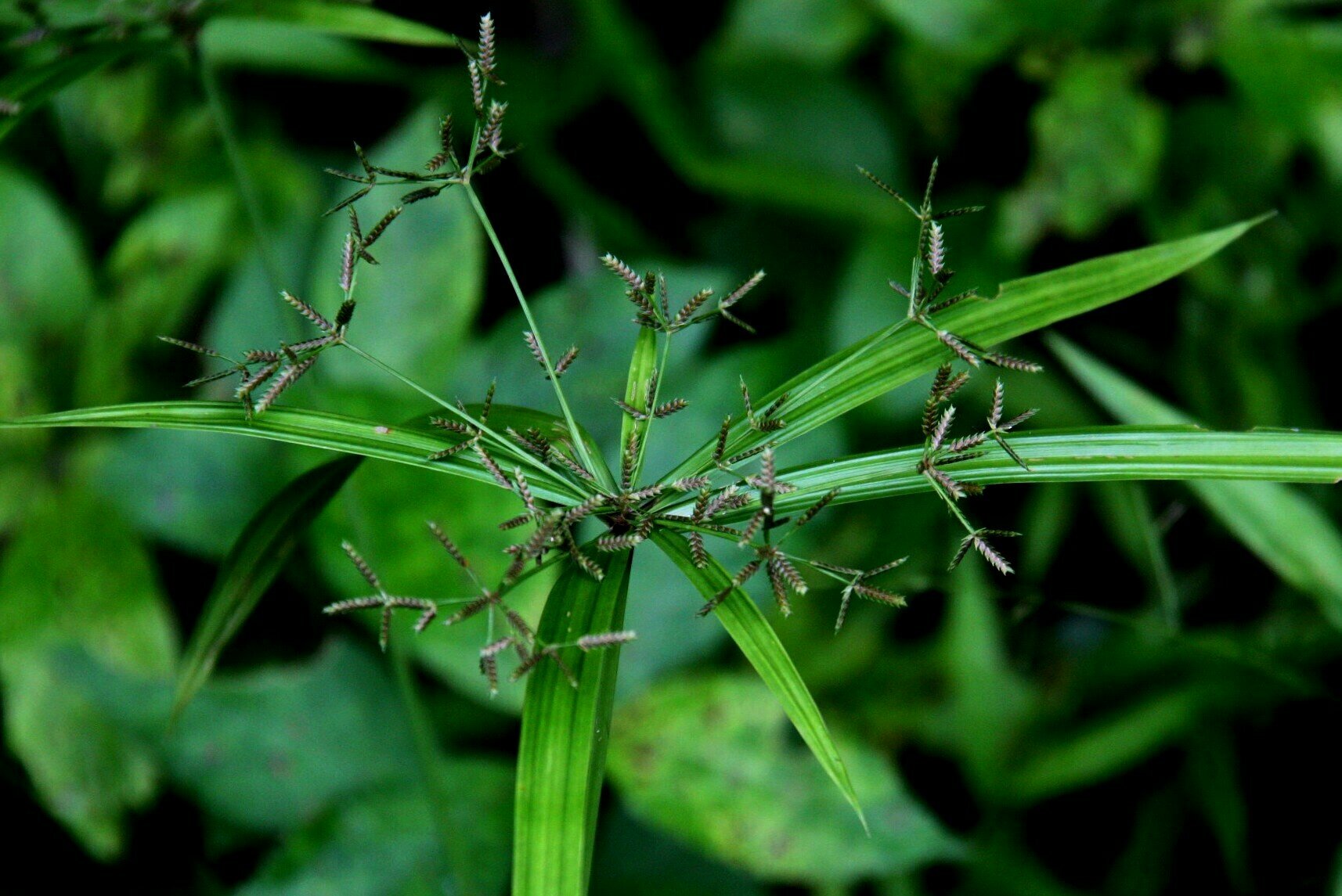 |
|||
| 136. Cyperus distans Linn. Family: CYPERACEASE Flowering & Fruiting: July-September. Ecology: Common in damp places under shade. Description: Tall herbs. Rhizome creeping. Stem 3-quetrous, leafy at base. Umbel compound. Spikelets laxly spicate, linear, reddish brown. Glumes plicate, obtuse, concave, reddish-brown. Nut ellipsoid, 3-gonous, pale yellow. Medicinal uses: The juice of the root is used in the treatment of fevers. IUCN Status: |
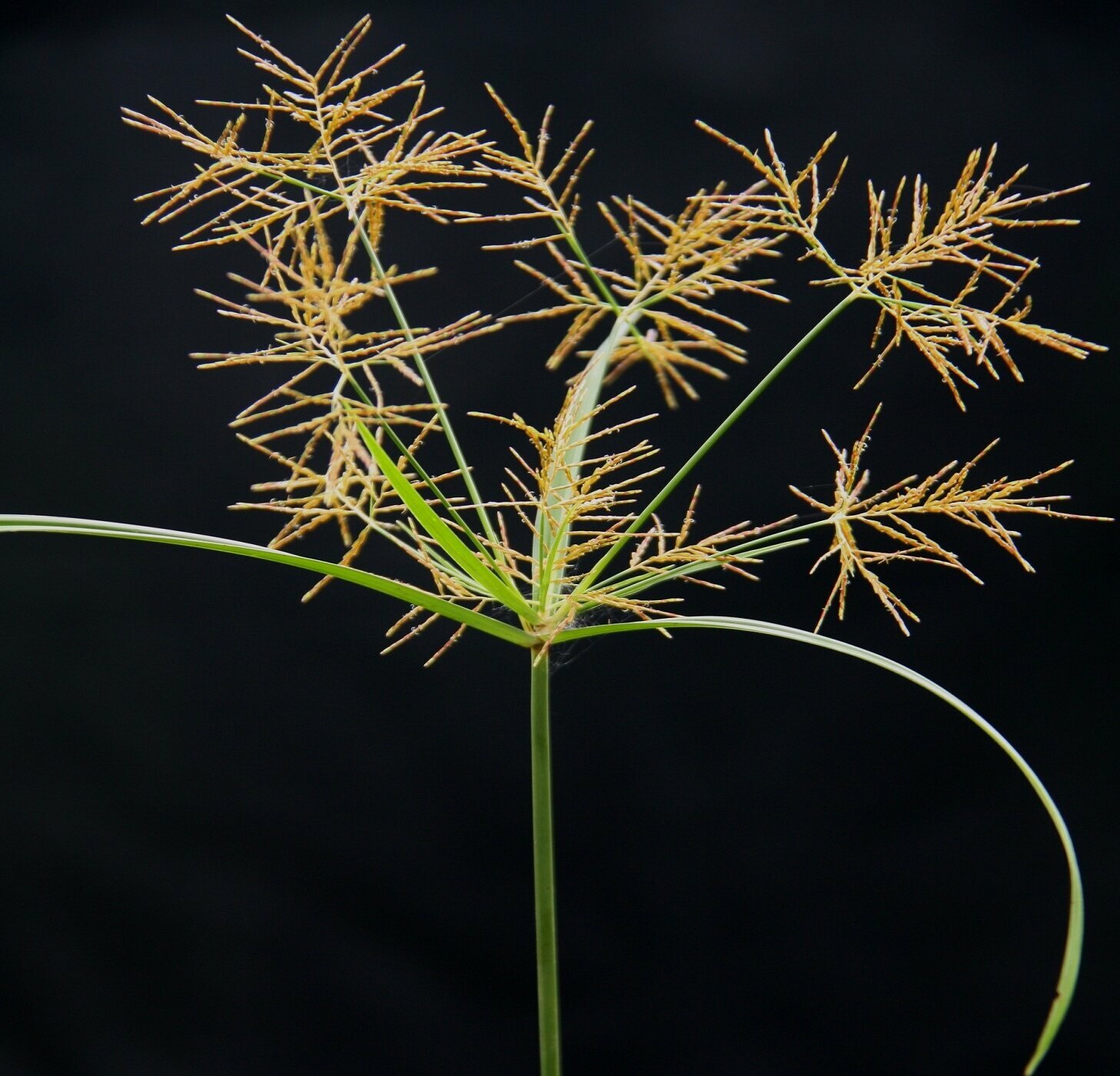 |
|||
| 137. Cyperus haspan Linn. Family: CYPERACEASE Flowering & Fruiting: July-September. Ecology: Common in swampy places near foot hills Description: Delicate herbs. Rhizome creeping. Stem 3- gonous, tufted. Leaves basal, entire. Umbel simple and compound; bracts small. Spikelets sessile, linear, compressed, digitate, chestnut brown. Glumes plicate, keeled. Nut obovoid, 3-gonous. Medicinal uses: Smoke from the pith of the plant is used as a febrifuge. A decoction of the plant is used internally against shingles. IUCN Status: |
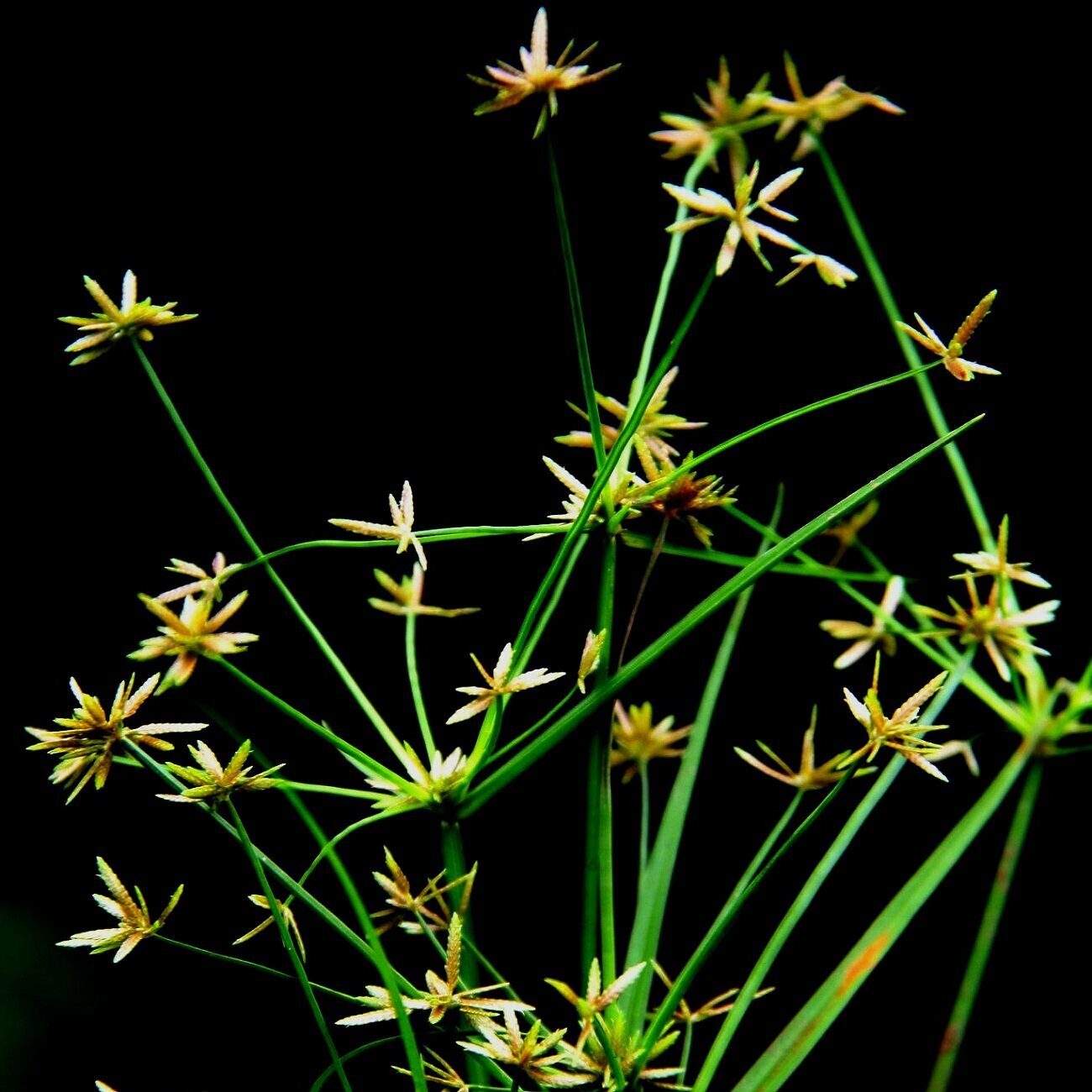 |
|||
| 138. Cyperus iria Linn Family: CYPERACEASE Local name: Mutha Flowering & Fruiting: July-September Ecology: Abundant, along stream banks Description: Rhizome absent. Stem tufted, 3-quetrous, leafy. Leaves entire, acuminate. Umbel compound, primary ray’s unequal. Spikelets lax, compressed, spicate. Glumes distichous, ovate, keeled, hyaline margined. Nut sessile, 3-quet rous, dark brown. Medicinal uses: Smoke from the pith of the plant is used as a febrifuge. A decoction of the plant is used internally against shingles. IUCN Status: |
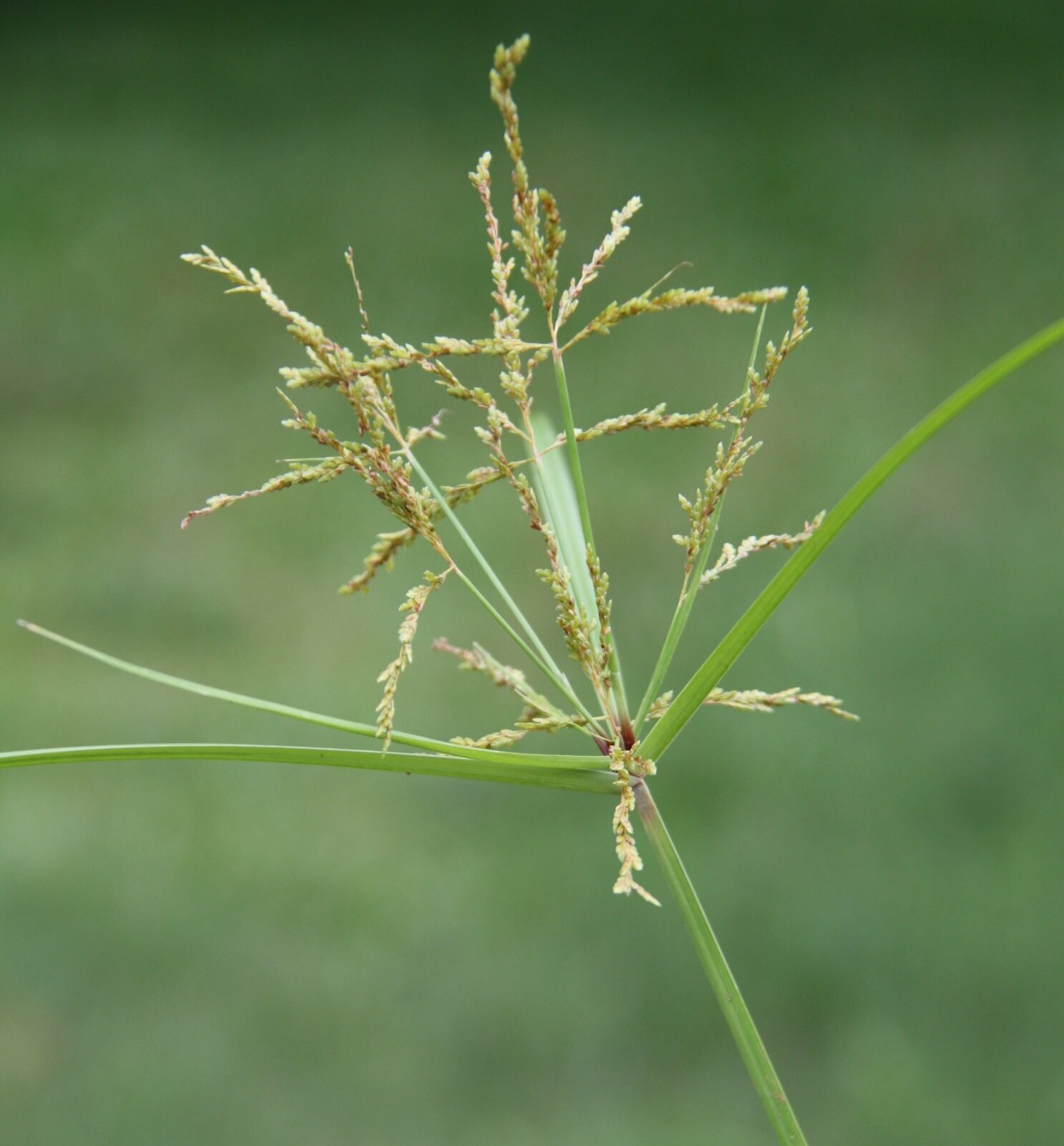 |
|||
| 139. Cayratia trifolia Linn. Family: VITACEAE. Local name: Mutha Flowering: July-August. Fruiting: September-October. Ecology: Common on upper hill slopes and pleatue in degraded areas. Description: Climbers young branches pubescent. Leaflets ovate, serrate, base rounded or cuneate; laterals unequal sided. Calyx lobed. Petals white. Berries globose, smooth. Medicinal uses: The bark extract shows the antiviral, antibacterial, antiprotozoal, hypoglycemic, anticancer and diuretic activity. This article focuses on the upgraded review on chemical and biological properties of Cayratia trifolia Linn. and triggers further investigation on this plant. IUCN Status: |
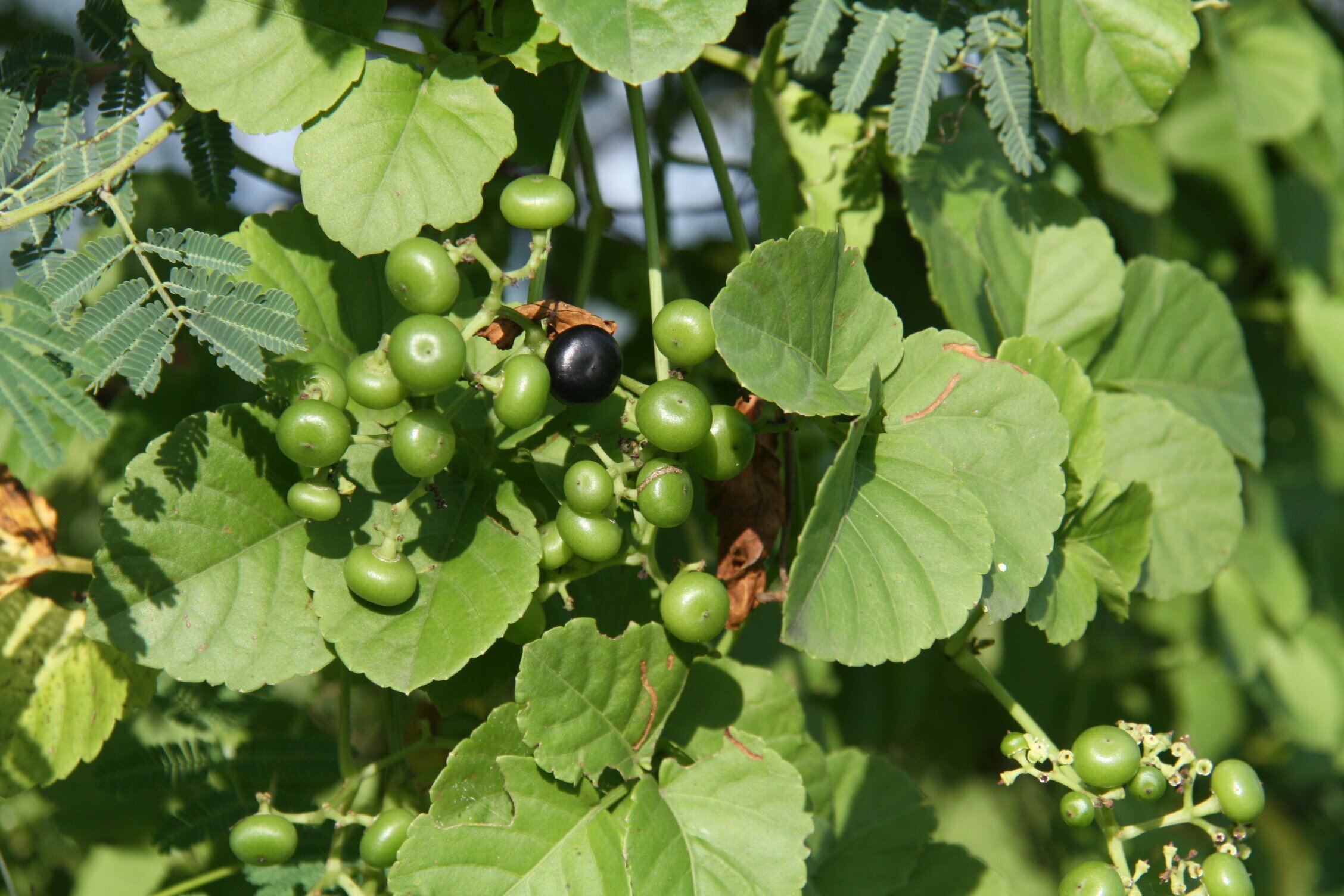 |
|||
| 140. Cissus vitiginea Linn. Family: VITACEAE Flowering: August-September. Fruiting: October-December. Ecology: Occasional on foot hills in eoded sandy areas. Description: Hoary pubescent climbers. Leaves membranous, cordate, lobed coarsely dentate. Flower 4-merous, white in compound umbellate cymes. Petals yellow. Fruits pale-purple, on deflexed pedicels. Medicinal uses: Cissus vitiginea L. is a perennial climber with potent medicinal values and used in Indian traditional systems of medicines to cure wounds, diabetes, cardiovascular illness, cancers, particularly bone diseases and arthritis. IUCN Status: |
 |
|||
| 141. Dactyloctenium aegyptium (Linn.) Family: POACEAE Flowering & Fruiting: August-October. Ecology: Common weed in pastures & fallowlands during rains. Description: Erect, annuals; branches geniculate ascending, nodes thickened. Leaves ciliated, acuminate, sheath hairy. Spikes 4, digitate, sessile, secund. Spikelets sessile, 3-flowered. Floral glumes ovate, mucronate. Caryopsis subglobose, reddish-brown. Medicinal uses: Decoction of seeds used to relieve pains in the region of the kidney; stems and leaves applied externally for treatment of ulcers. Seeds used for making chapattis or haluwa and eaten as a cooling agent. Juice of fresh plants is prescribed in fevers. Decoction of the plant is given in small pox. IUCN Status: |
 |
|||
| 142. Dalbergia lanceolata Family: FABACEAE Local name: Dhoboni Flowering & Fruiting: April-May & September-December. Description: It is a medium-sized tree growing to 20m tall and is native to: India, Sri Lanka, Nepal, Burma and Indo-China. Medicinal uses: Stem bark is pasted with water and the lotion is externally applied on leukoderma. IUCN Status: |
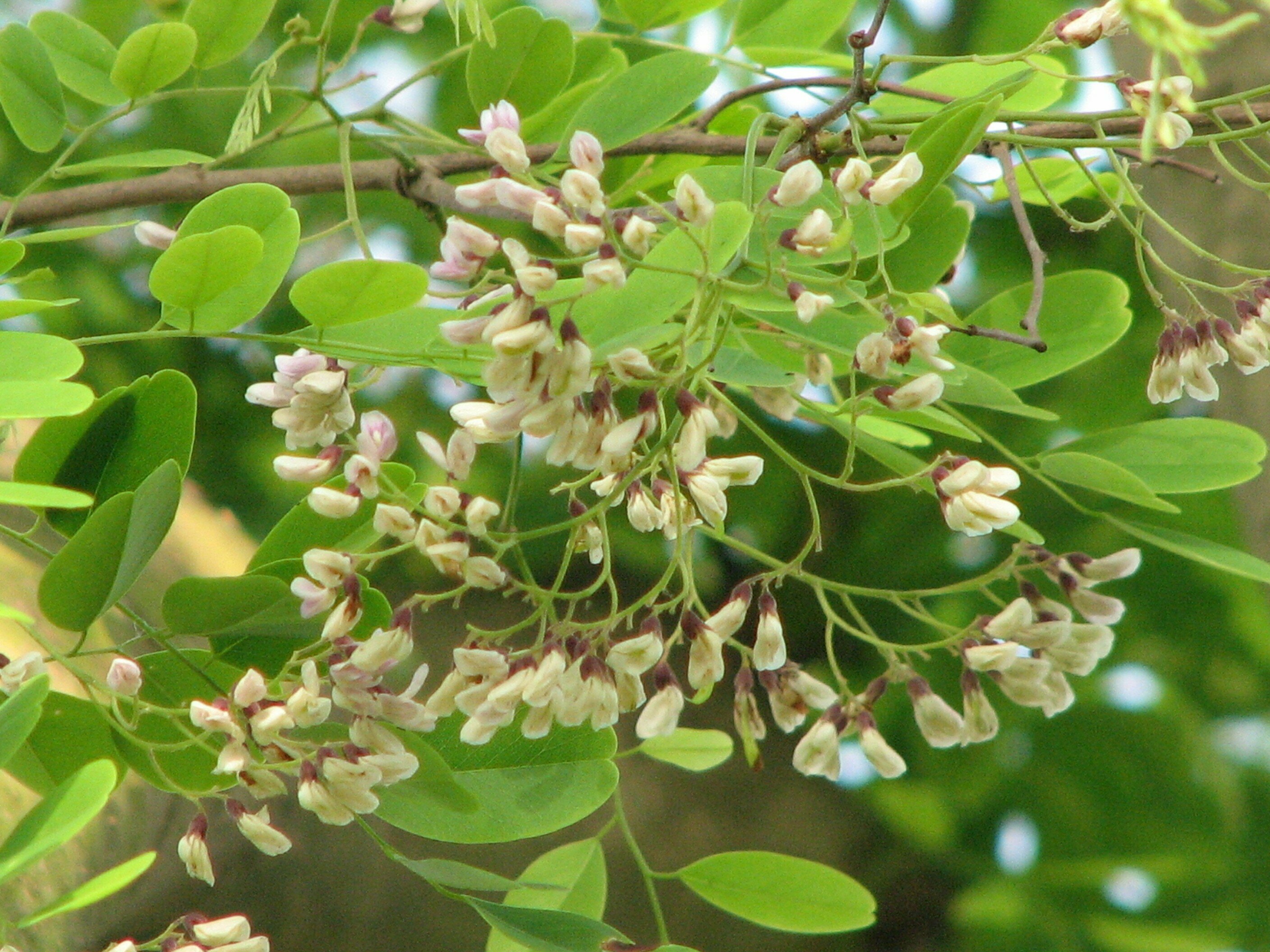 |
|||
| 143. Dalbergia sissoo Roxb. Family: FABACEAE Local name: Sisu Flowering: March-May. Fruiting: June-October. Ecology: Common on hills often planted on road sides. Description: It is a medium-sized tree growing to 20m tall and is native to: India, Sri Lanka, Nepal, Burma and Indo-China. Medicinal uses: Stem bark is pasted with water and the lotion is externally applied on leukoderma. IUCN Status: |
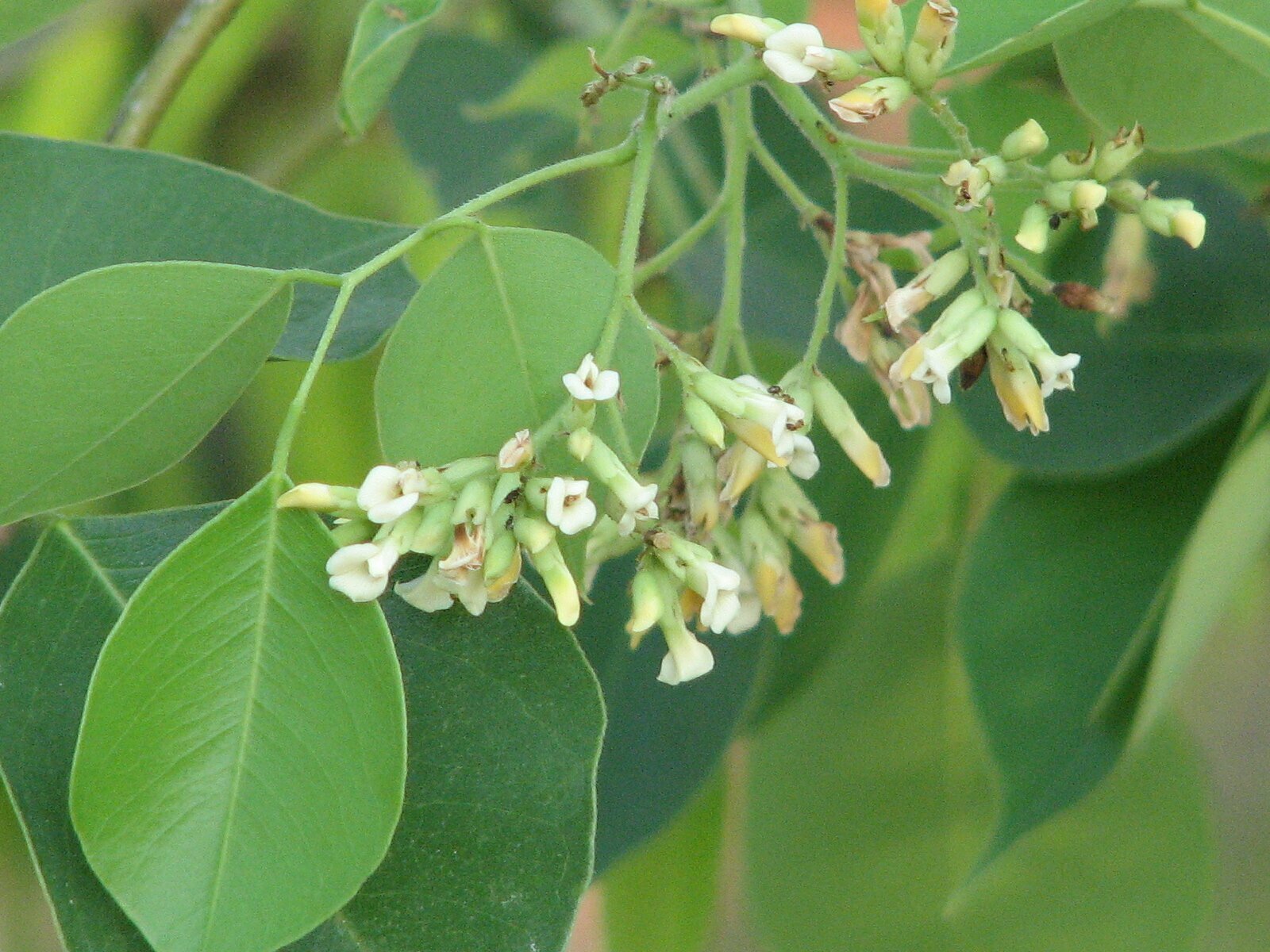 |
|||
| 144. Datura metel Linn. Family: SOLANACEAE Flowering & Fruiting: Round the year Ecology: Very common, in waste places at foot hills. Description: Shrubs. Leaves ovate, oblique, angled or irregularly toothed. Corolla white, fragrant. Capsule with deltoid spines; seeds compressed, auricled, brown. Medicinal uses: Datura metel has similar medicinal applications, and it is used additionally to treat hydrophobia, epilepsy, convulsion, syphilis, inflammation of the breasts, smallpox, mumps and leprosy. Datura metel is also widely used as a pesticide. IUCN Status: |
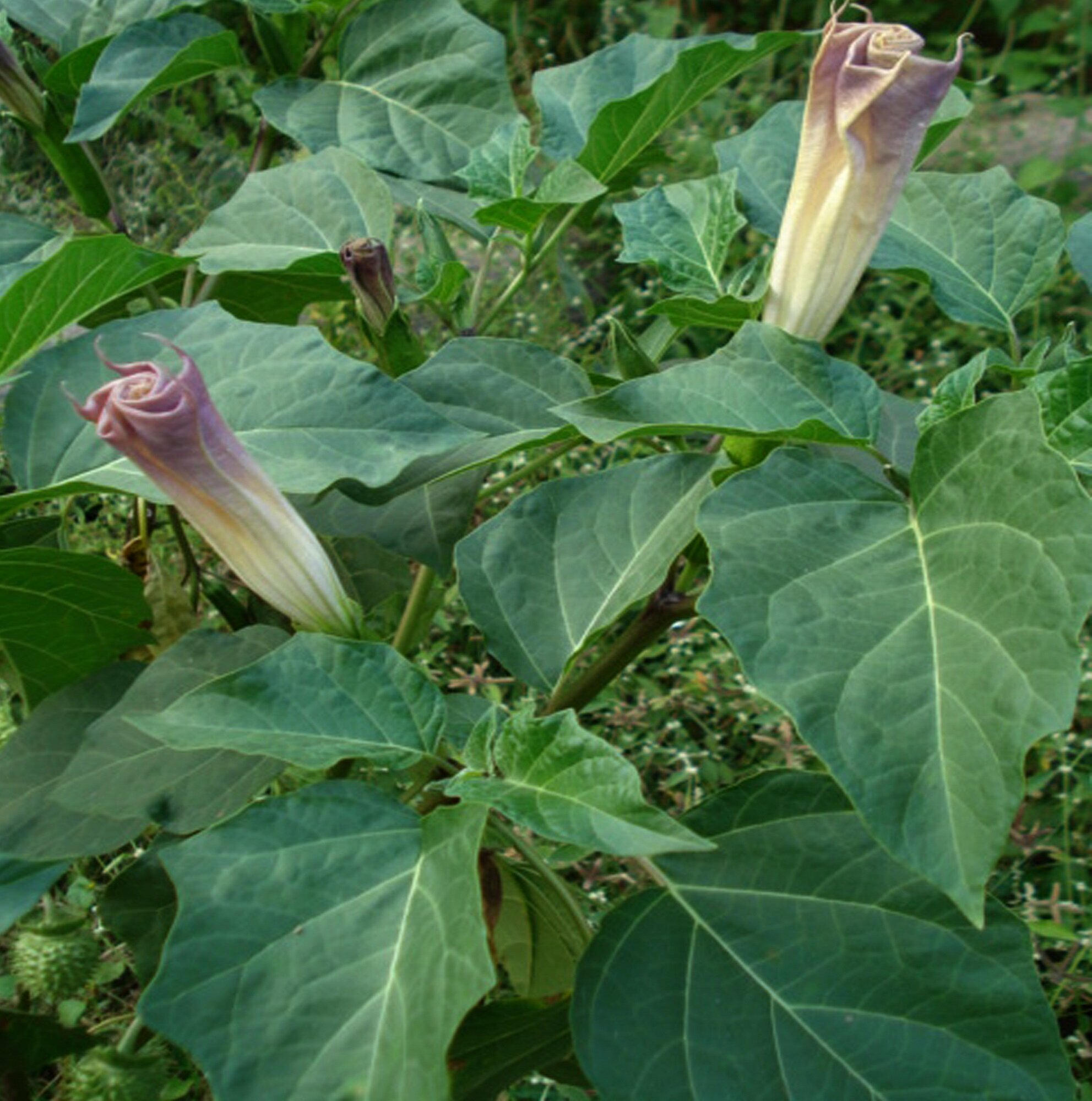 |
|||
| 145. Datura stramonium Linn. Family: SOLANACEAE Local name: Dhala Durdura Flowering & Fruiting: September – December Ecology: Occasional, along road sides and in disturbed habitats. Description: Shrubs. Leaves lanceolate, base cuneate, blade sinuate, acute, membranous. Corolla white, fragrant, cuspidate. Capsule spinosus; seeds black, reniform. Medicinal uses: The paste of roasted leaves is applied over the area to relieve pain. It is used as herbal medicine, especially in the case of Ayurveda for asthma and bonesetting. Jimson weed is used to treat spasm of bronchitis in asthma. Datura seeds and leaves are used as antiasthmatic, antispasmodic, hypnotic and narcotic. IUCN Status: |
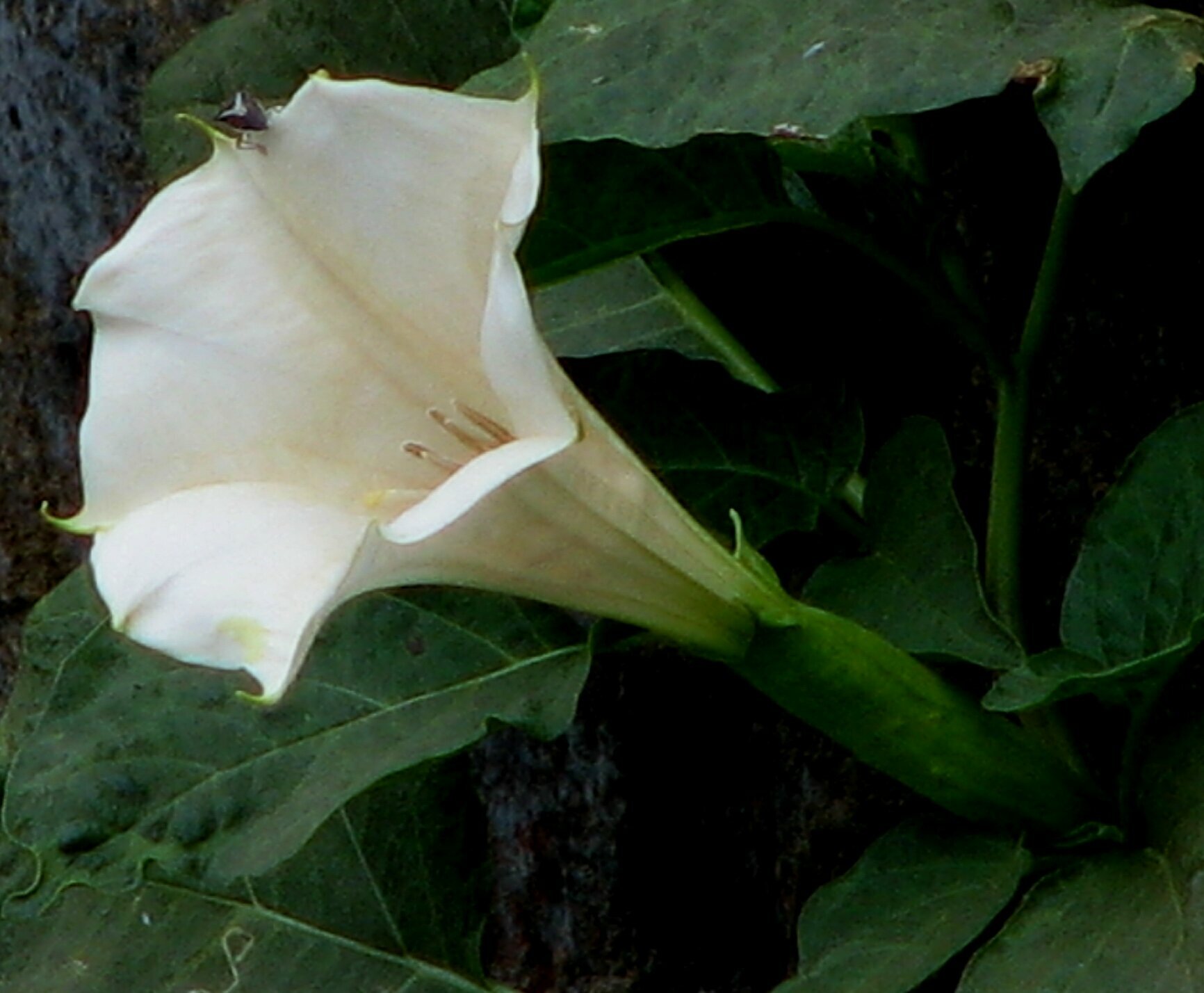 |
|||
| 146. Dendrocalamus strictus (Roxb.) Family: POACEAE Local name: Sadwa Bans, Dhaba Bansa, Banso Flowering & Fruiting: Irregular, flowers sporadically every year during November-December. Ecology: The commonest wild bamboo, gregarious on hill slopes; often found in pure communites covering large areas. Description: Arborescent, huge, caespitose bamboo. Culm woody, lumen narrow, turning pale-yellow on edge, nodes swollen, sheath 3-angular auricled. Leaves narrowly oblong, base rounded, subsessile. Spikelets in globose spinescent heads, fertile and sterile intermixed. Flowering glumes 2, spinescent. Grain small Medicinal uses: It is eaten to avoid cancer. Leaves are boiled and the decoction is given with honey and jiggery after delivery to flush out all filthy blood and normalize the bulgy belly. The bamboo bursts are used for the treatment of T.B. IUCN Status: |
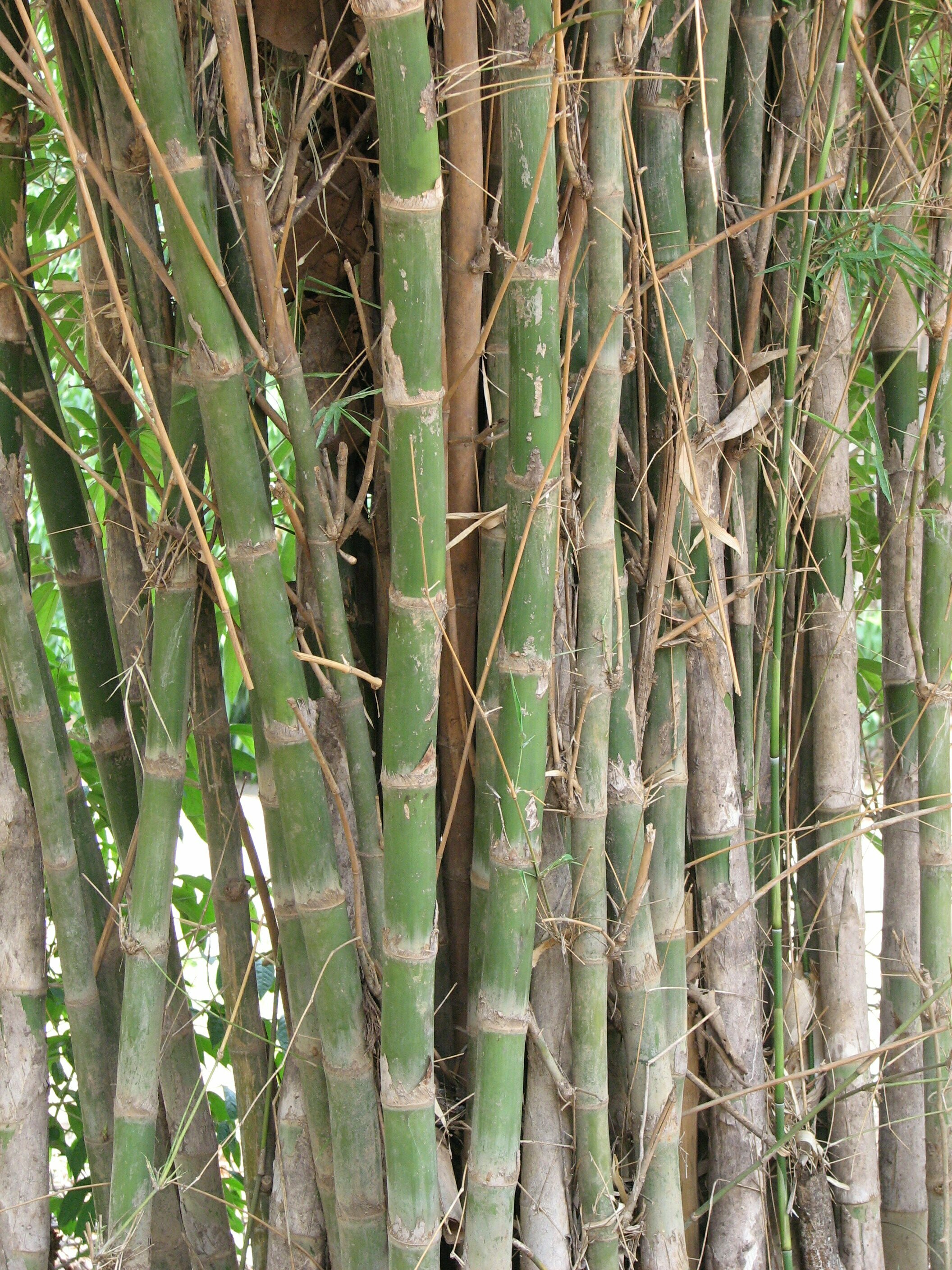 |
|||
| 147. Dendrophthoe falcata (Linn. f.) Family: LORANTHACEAE Local name: Madanga Flowering & fruiting: December-April. Ecology: Abundant in forests, parasitic on Shorea robusta, Terminalia alata and Diospyros melanoxylon. Description: Evergreen, woody, stem-parasitic shrubs. Leaves opposite or alternate, sessile or subsessile, ovate to lanceolate, thickly coriaceous, base sometimes amplexicaul, midrib red. Medicinal uses: The whole parasitic plant Dendrophthoe falcata is used in indigenous system of medicine ascooling, bitter, astringent, aphrodisiac, narcotic and diuretic and is also useful in pulmonary tuberculosis, asthma, menstrual disorders, swelling wounds, ulcers, renal and vesicle calculi and vitiated conditions of kapha. IUCN Status: |
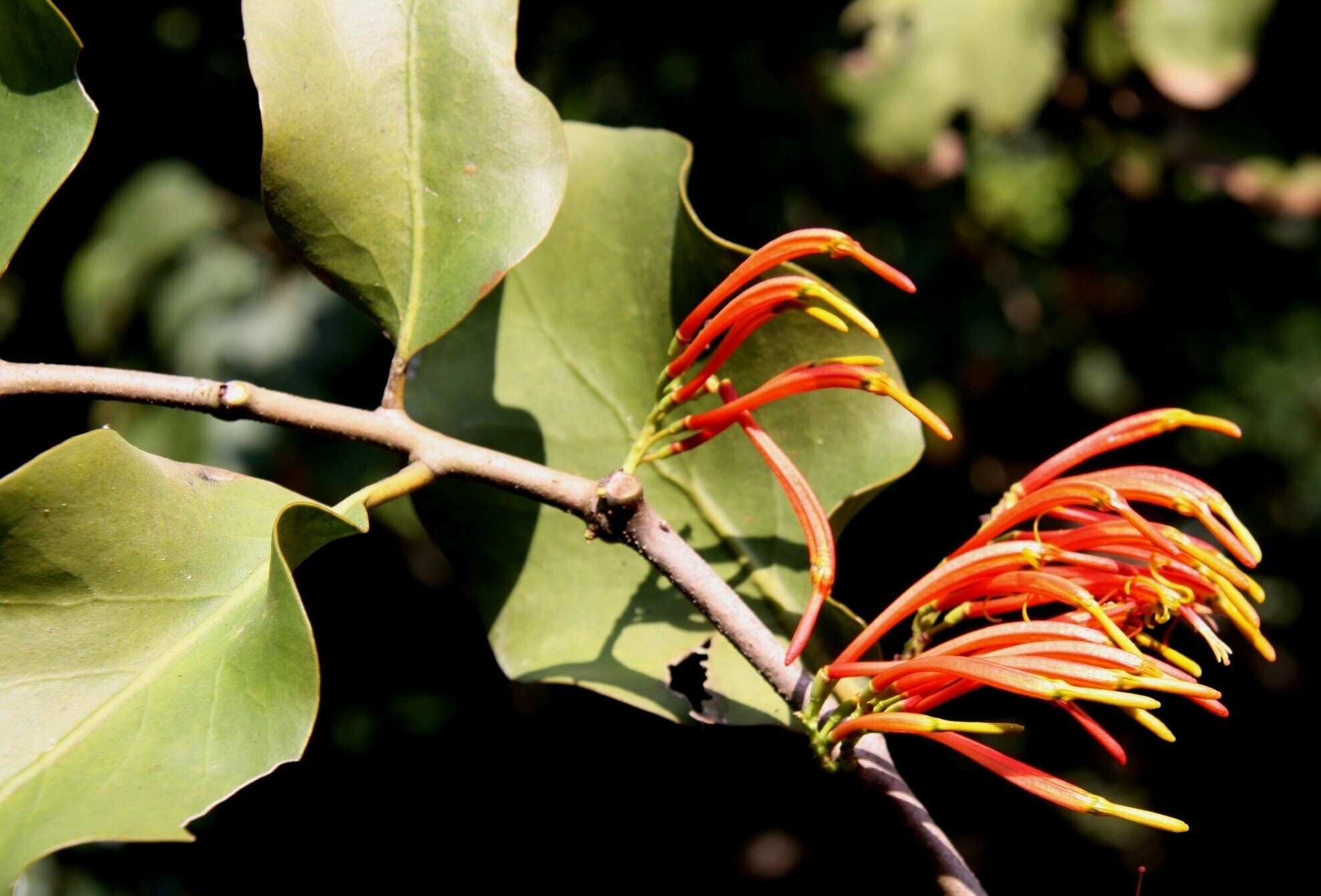 |
|||
| 148. Dentella repens (Linn.) Family: RUBIACEAE Flowering & fruiting: September – January Ecology: Abundant in moist soils on stream bed, forming mats Description: Strigose, prostrate Leaves narrowly elliptic oblong-lanceolate, thick, base cuneate, 1-nerved; stipules scarious Flowers white, sessile, solitary, axillary. Capsules dry, globose indehiscent. Seeds angular. IUCN Status: |
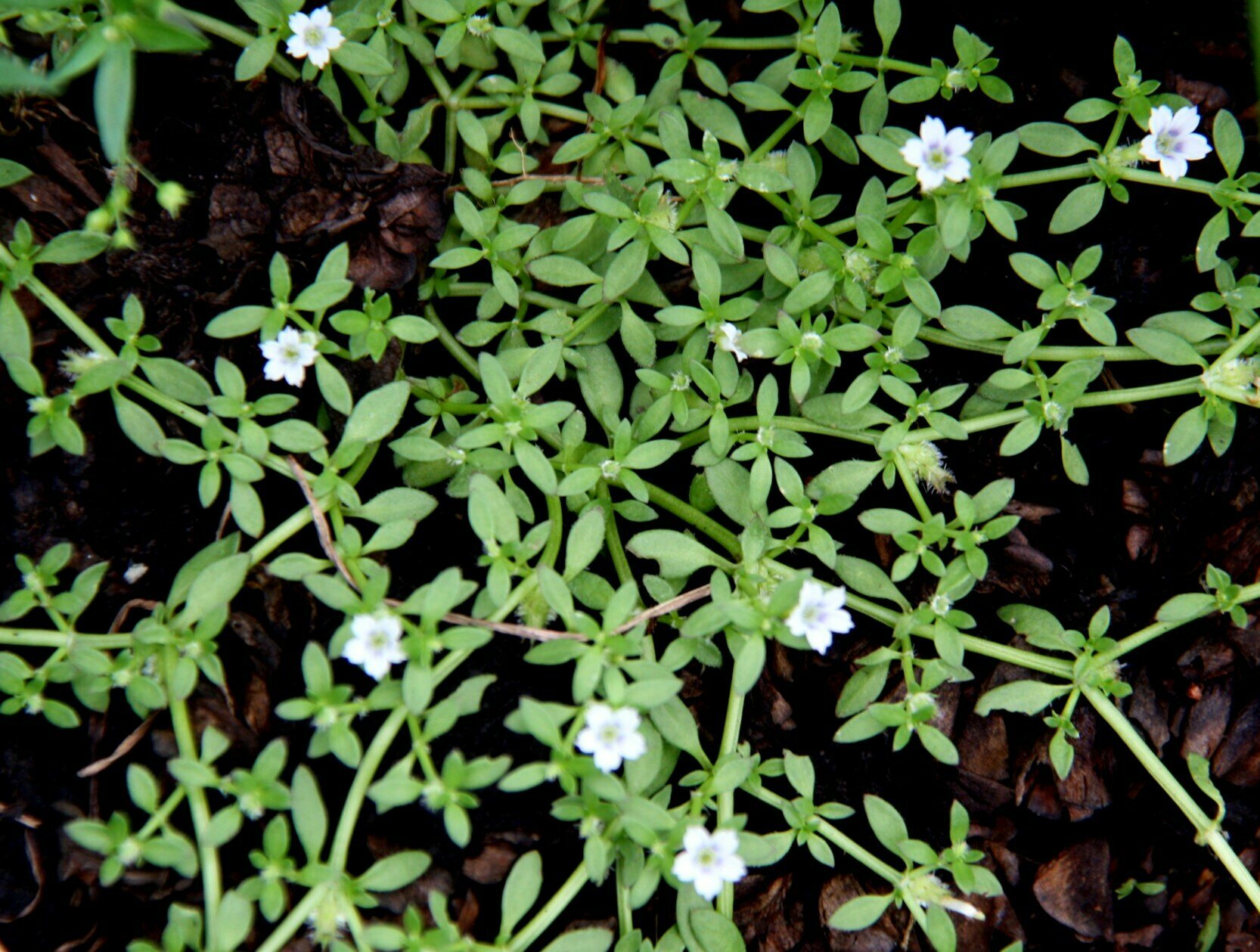 |
|||
| 149. Desmodium gangeticum (Linn.) Family: FABACEAE Flowering & fruiting: Round the year. Ecology: Quite abundant in forest edgeo & blanks. Description: Erect undershrubs; branches pubescent. Leaves variable, acute-acuminate. Racemes elongate. Flowers 2 per bract, pink, violet or white. Pod moniliform, reticulate with hooked hairs. Medicinal uses: The plant has febrifuge, aphrodisiac, analgesic, diuretic, antiinflammatory, and haemorrhagic properties. It is used in postnatal complaints, diarrhoea, chronic fever, biliousness, cough, vomiting, and asthma. It is an important ingredient of dasmoolarishta and chyavanprash. IUCN Status: |
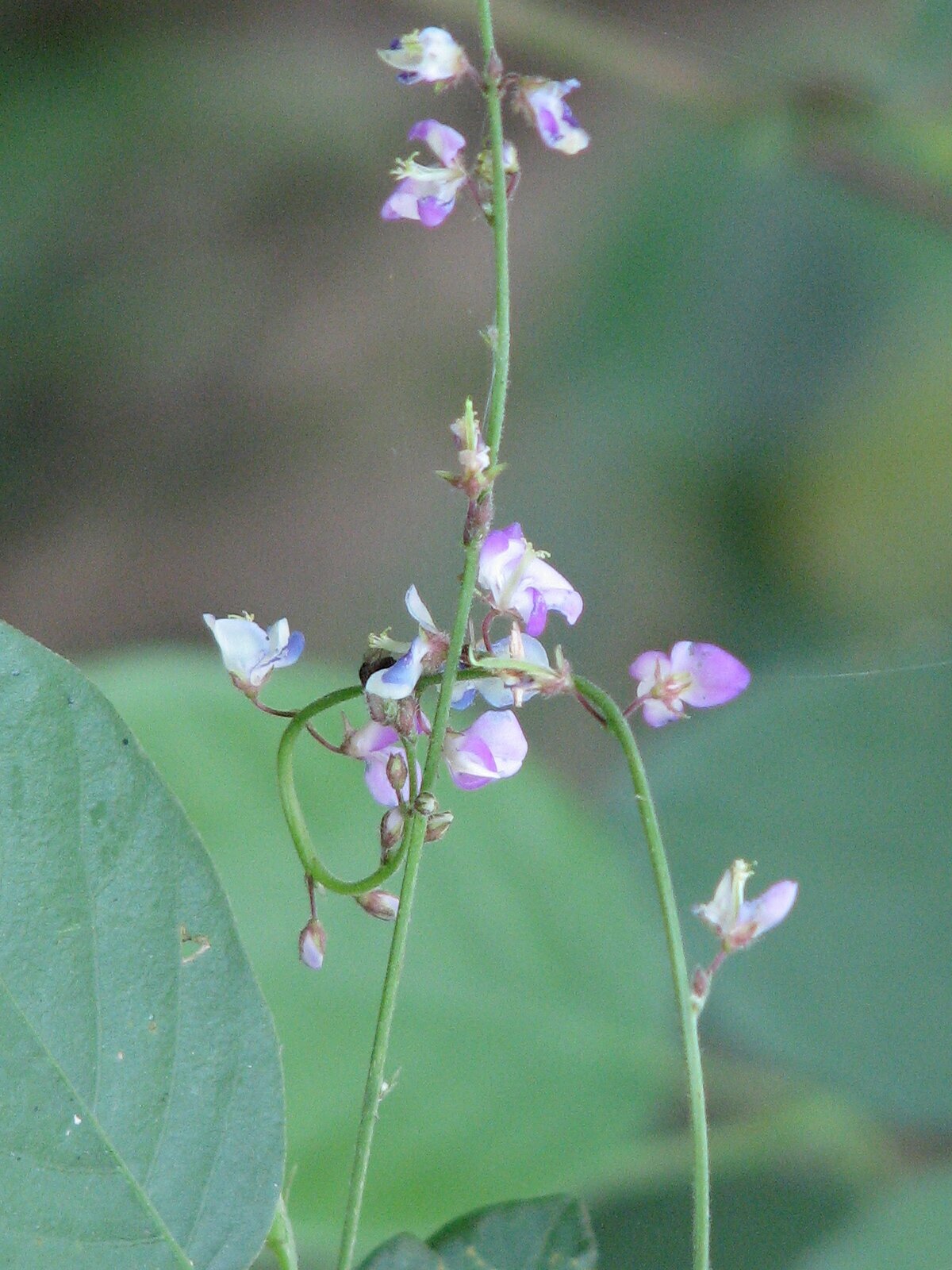 |
|||
| 150. Desmodium triflorum (Linn.) Family: FABACEAE Flowering & fruiting: August- December. Ecology: Quite abundant among grasses on hill slopes & plateau. Description: Prostrate wiry herbs. Leaflets subequal, obovate, apex obtuse or emarginated, base cuneate, glaucous beneath. Standard purplish; other petals blue. Pod linear, 4-5 jointed, reticulate. Medicinal uses: The plant is having antipyretic, antiseptic, expectorant properties. A decoction is commonly used to treat diarrhoea and dysentery; quench thirst; and as mouthwash. The crushed plant, or a poultice of the leaves, is applied externally on wounds, ulcers, and for skin problems. IUCN Status: |
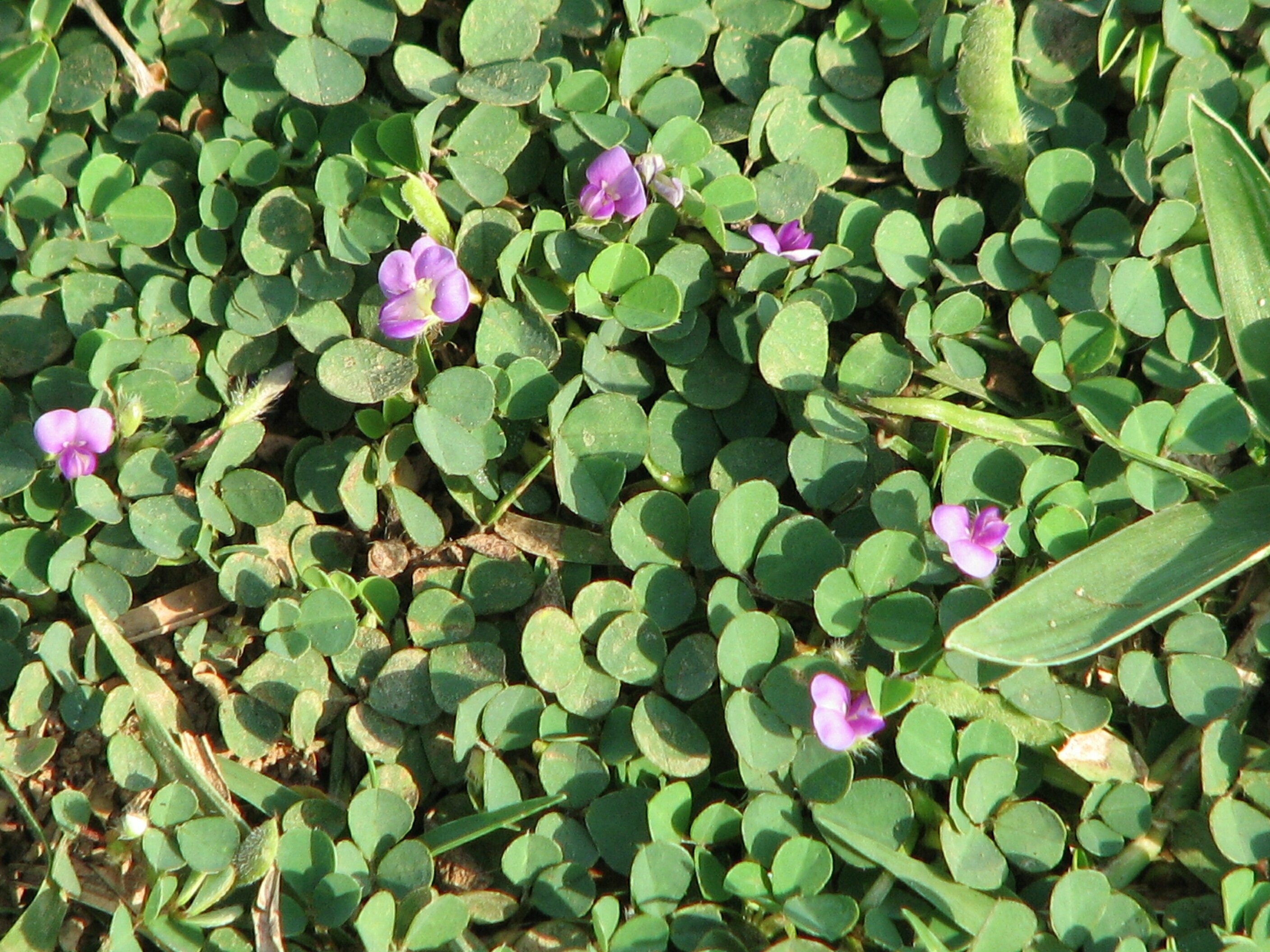 |
|||
| 151. Dillenia pentagyna Family: DILLENIACEAE, Flowering: April-May Local name: Karkat, Rai Description: A tree some 6-15m tall, with tortuous twigs, the bark is grayish and smooth, exfoliating. Branches are glabrous and stout. Leaves are deciduous, petiolate, oblong to obovate-oblong, glabrous, 30-5cm long, flowers appear before the leaves, 2–7 in number, yellow coloured petals. Medicinal uses: Leaves are spread over the paddy fields to ward off the harmful insects. A branch is tied on ceiling of cow shed to ward of all worms, insects and eradicate all diseases. IUCN Status: |
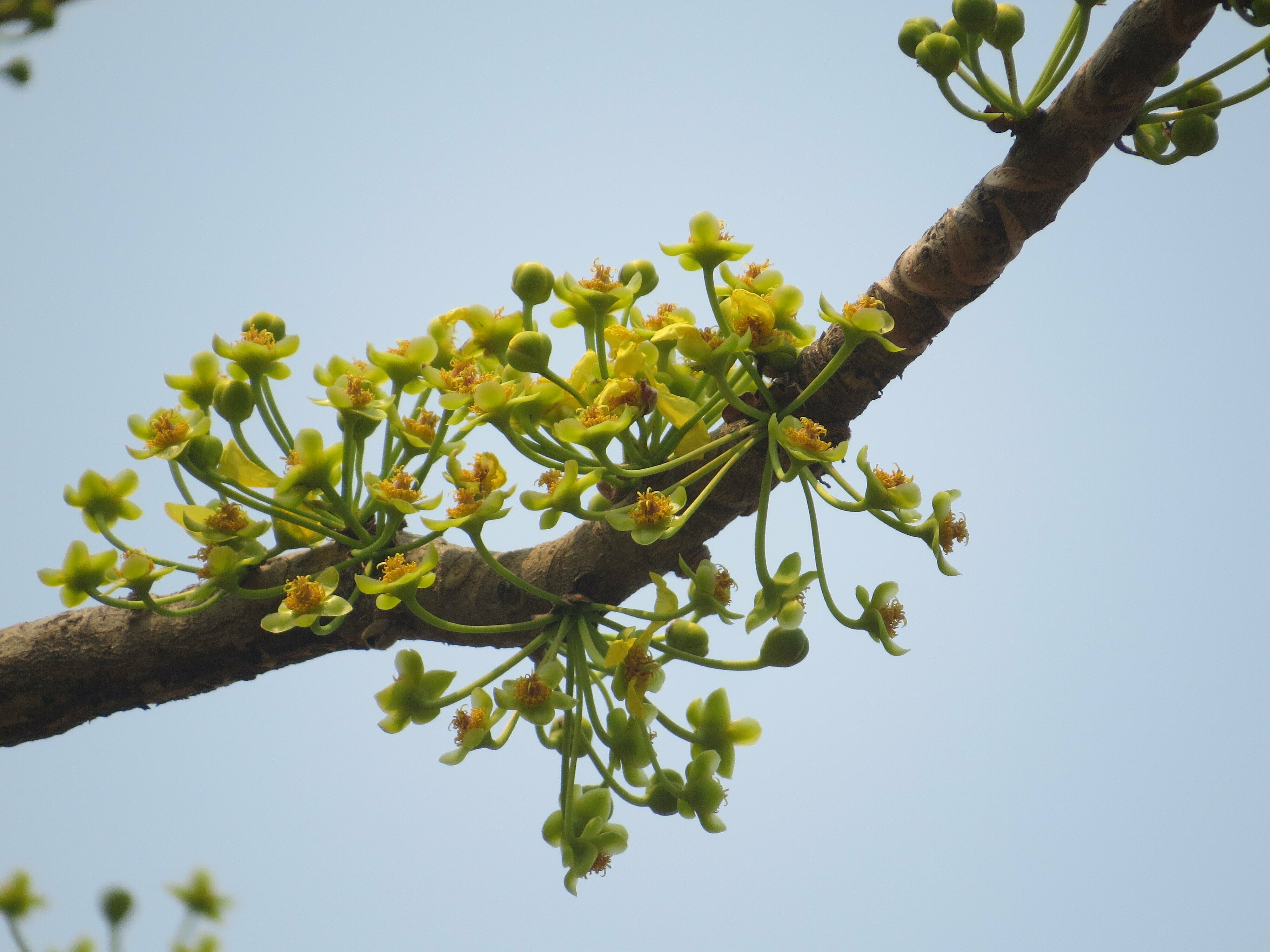 |
|||
| 152. Dillenia indica Linn. Family: DILLENIACEAE, Flowering & Fruiting: July – October Ecology: Common in the villages gardens and road sides; grown for its edible fruits Description: Small, evergreen trees. Leaves oblong lanceolate, acute, serrate, shining above, glaucous beneath. Flowers solitary pendant. Sepals fleshy, orbicular, concave, acidic. Fruits green, turning yellow when ripe, fragrant, edible. Medicinal uses: The plant used for the treatment of relief of indigestion, asthma, influenza, dysentery, jaundice, promeho, weakness and rheumatic pain. IUCN Status: |
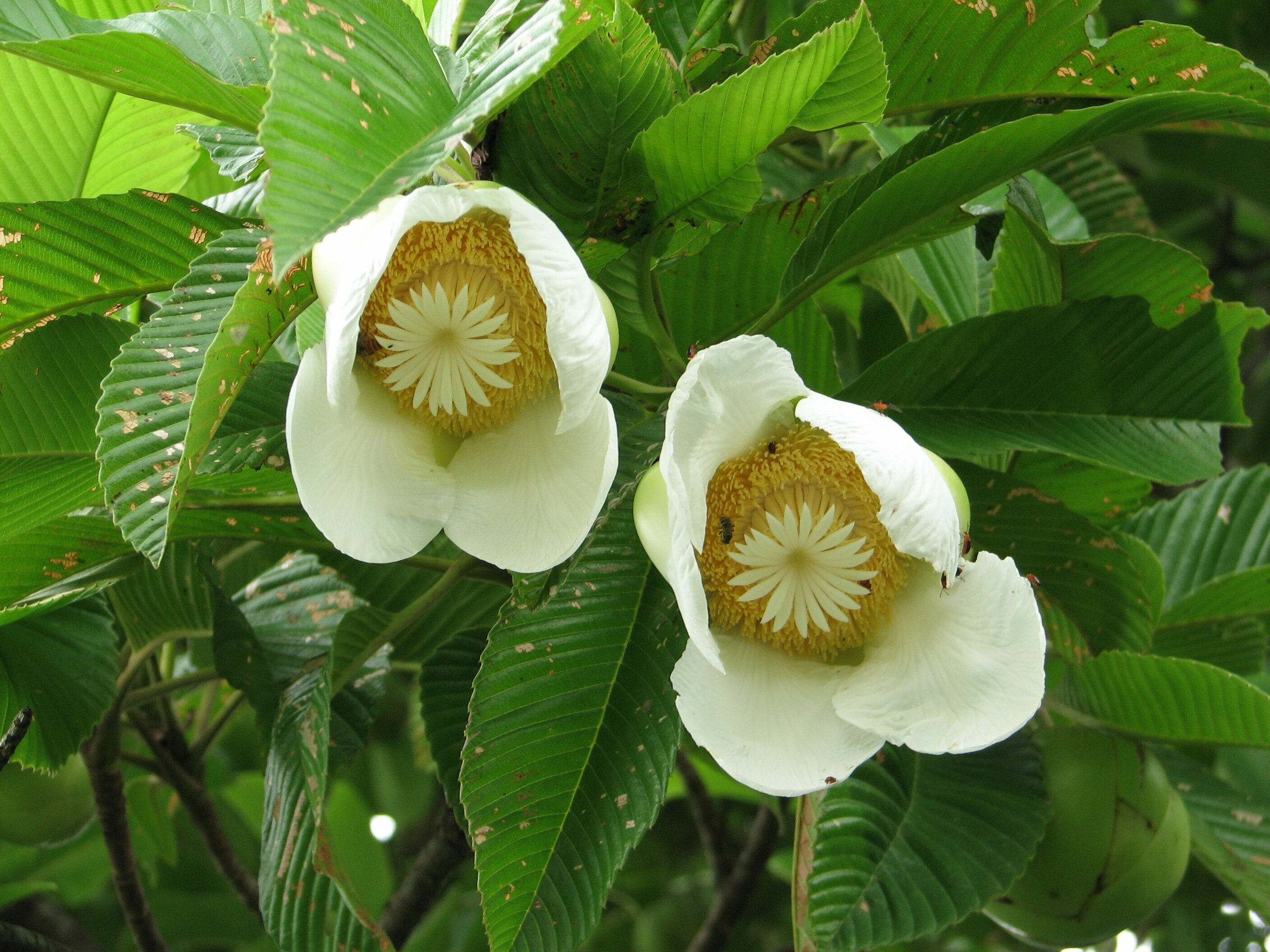 |
|||
| 153. Digitaria ciliaris (Retz.) Family: POACEAE, Flowering & Fruiting: August-December. Ecology: Very common on lateritic hill slopes and plateau. Description: Culm soft, ascending. Leaves linear-lanceolate, acute, sheath glabrous except mouth. Spikes 3-4, secund, digitate. Spikelets pedicellate, narrowly elliptic, acute. Pleural glumes pubescent, concave, acute. Caryopsis narrowly ovate, dull brown. Medicinal uses: A decoction of the plant is used in the treatment of gonorrhoea. A folk remedy for cataracts and debility, it is also said to be emetic. IUCN Status: |
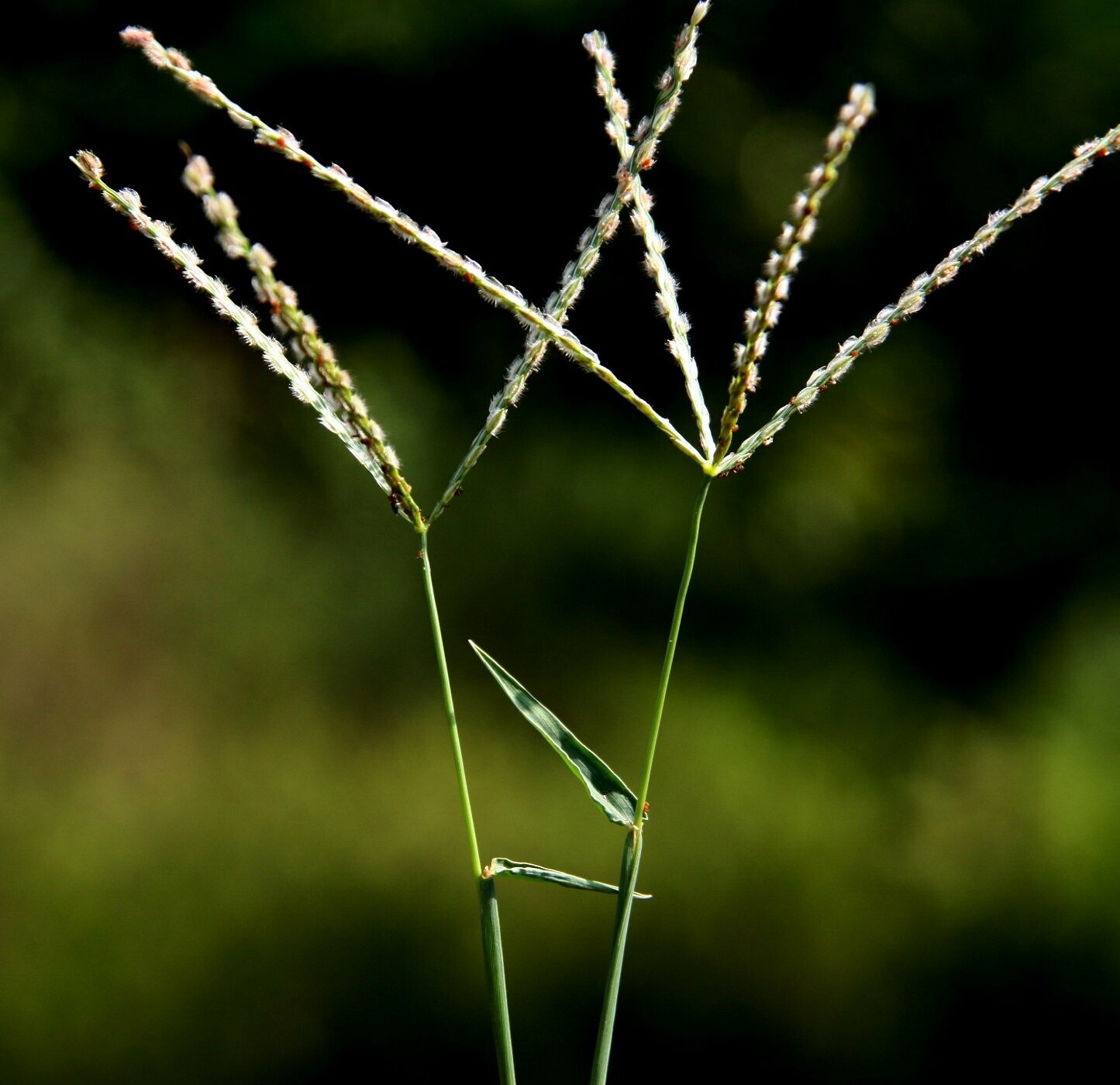 |
|||
| 154. Digera muricata (Linn.) Family: AMARANTHACEAE, Flowering & fruiting: August-September. Ecology: Occasional, a weed in waste places. Description: Erect annuals. Leaves alternate, ovate or elliptic. Flowers minute, pink, axillary, in spike-like bracteate racemes. Perianth lobes 5. Stigmas 2, recurved. Nut globose, rugulose. Medicinal uses: Muricata is used internally against digestive system disorders and in India seeds and flowers are used to treat urinary disorders. Leaf paste is applied locally to prevent pus formation. IUCN Status: |
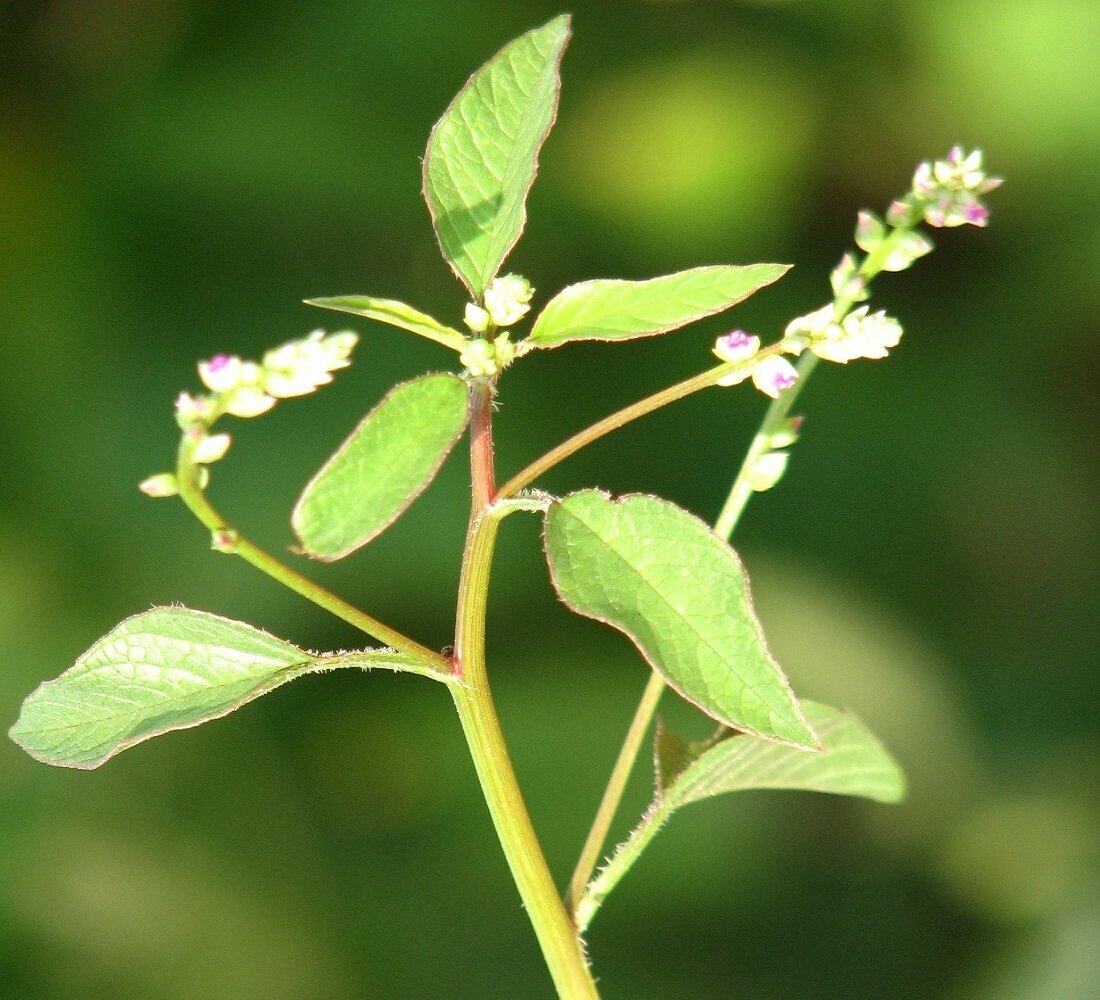 |
|||
| 155. Dimorphocalyx glabellus Family: EUPHORBIACEAE Flowering & fruiting: March-May. Ecology: Very rare, in damp ravines. Description: Small trees. Young shoots with brown, shining scales. Leaves elliptic or ovate, acuminate, pale beneath, dark green. Male flowers solitary or fascicled, white, stamens 10-12. Females solitary, sepals 5. Capsule globose, 3-lobed, strigose-hairy. IUCN Status: |
 |
|||
| 156. Dioscorea alata Linn. Family: DIOSCOREACEAE Flowering & fruiting: September-December. Ecology: Common in village hedges; found under cultivation. Description: Stout twiners, tubers large. Stem prick below, 4-many winged above. Leaves glabrous, lower broadly ovate, cordate, cuspidate, upper smaller narrower. Flowers subglobose. Female spikes axillary, solitary. Fruit beaked, winged. Medicinal uses: Dioscorea alata has been used as a moderate laxative and vermifuge, and for fever, gonorrhea, leprosy, tumors, and inflamed hemorrhoids. IUCN Status: |
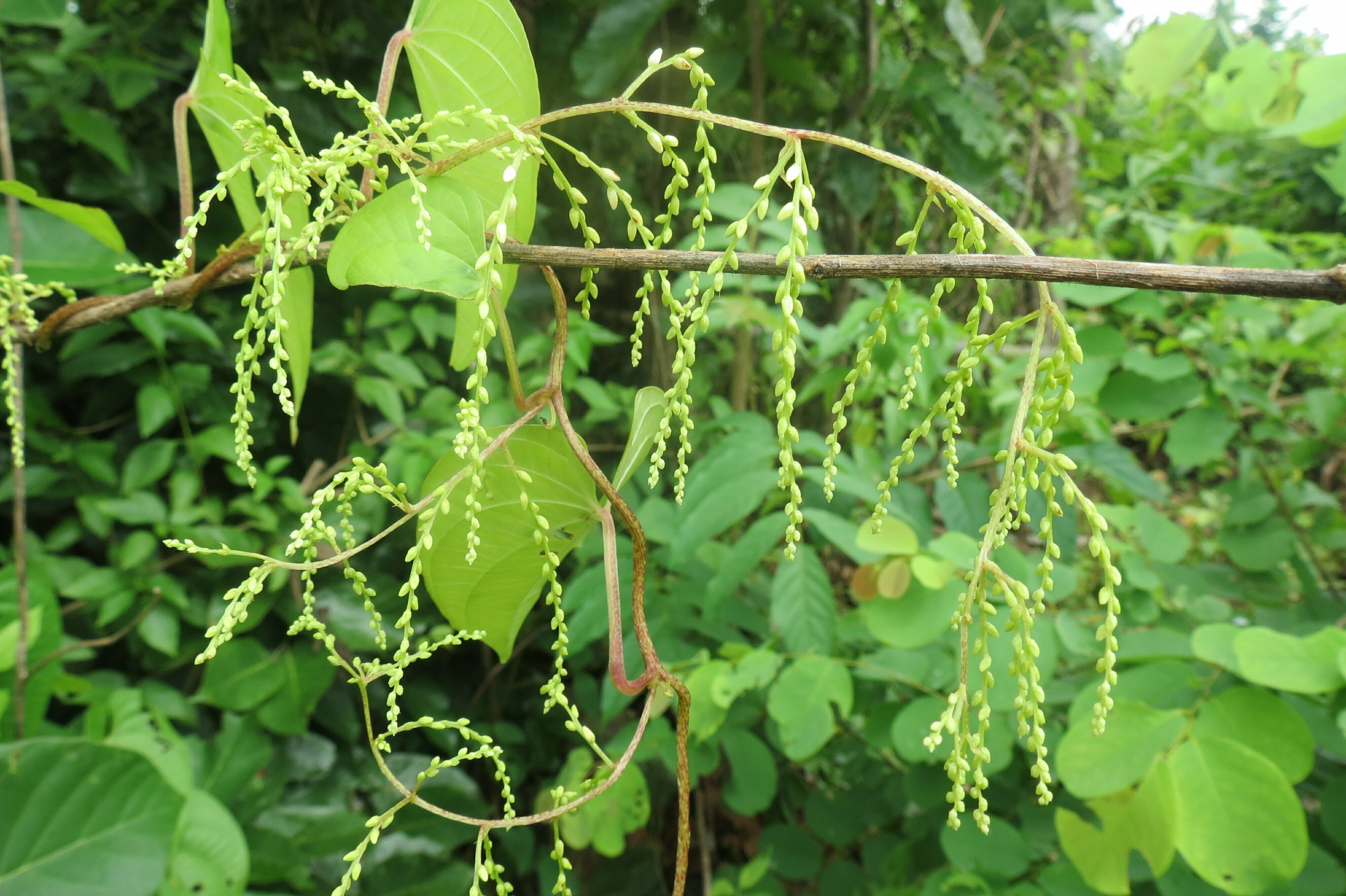 |
|||
| 157. Dioscorea oppositifolia Linn. Family: DIOSCOREACEAE Flowering & fruiting: August-November. Ecology: Fairly abundant on moist hill slopes. Description: Stems unarmed, puberulous, swollen at nodes often purplish. Leaves oblong to broadly elliptic, cuspidate, shining. Male spikes dense, subverticillate. Flowers yellow-green, fragrant; bracts cuspidate. Female beaked. Capsule depressed. Seeds winged. Medicinal uses: The tuber is sometimes used as an herbal tonic. It stimulates the stomach and spleen and has an effect on the lungs and kidneys. The tuber has been eaten for the treatment of poor appetite, chronic diarrhoea, asthma, dry coughs, frequent or uncontrollable urination, diabetes, and emotional instability. IUCN Status: |
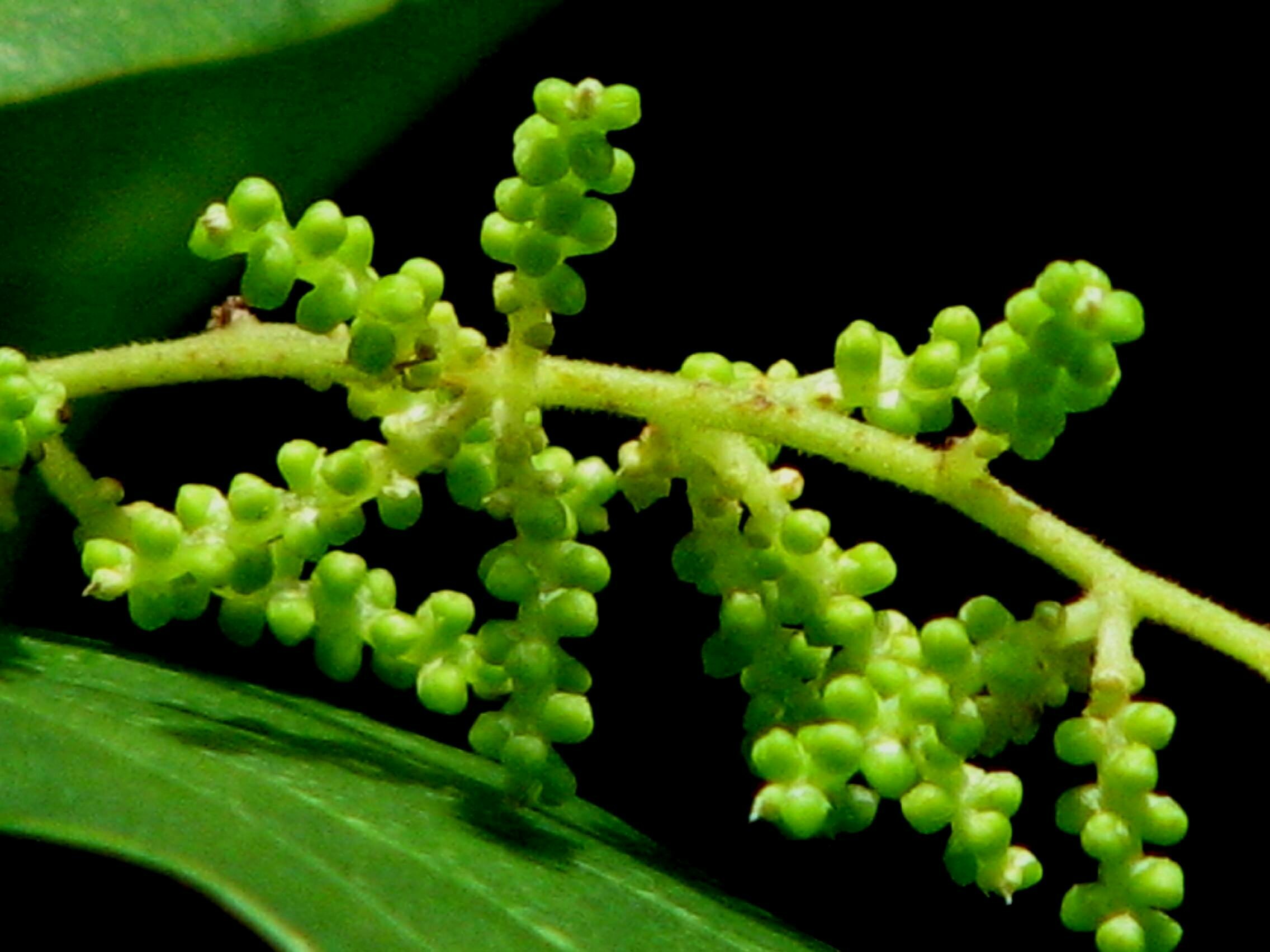 |
|||
| 158. Dioscorea pentaphylla Linn. Family: DIOSCOREACEAE Local name: Ban alu Flowering & fruiting: August-December. Ecology: Quite abundant in bushes, hedges and damp forests. Description: Stem prickly below. Leaves 3-5 foliolate, pubescent beneath. Leaflets obovate or elliptic, base cuneate, cuspidate or acuminate, 1- or 3-costate. Male spikes in long axillary racemes. Female spikes solitary or 2-nate panicled. Capsule oblong, deflexed. IUCN Status: |
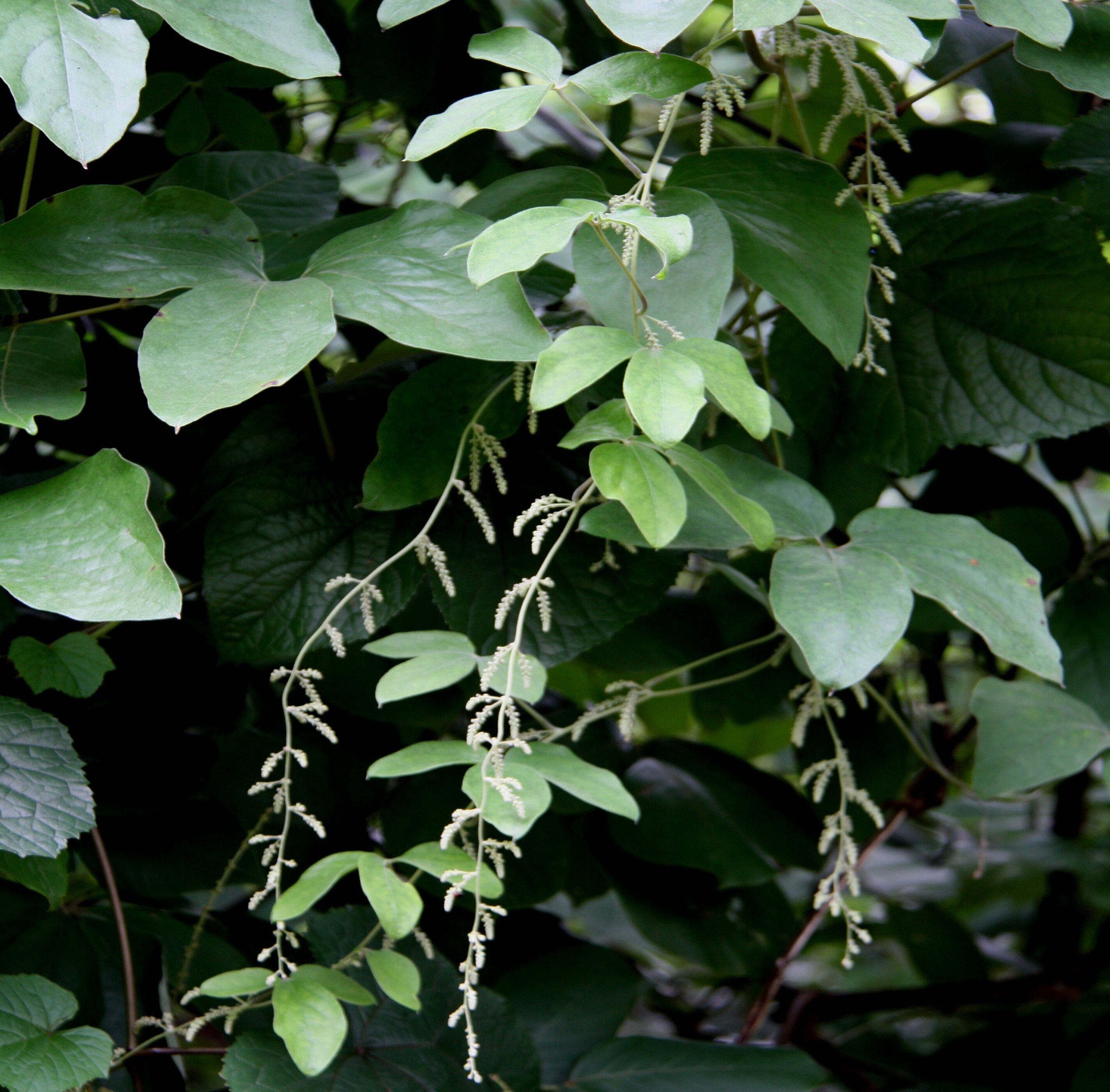 |
|||
| 159. Dioscorea wallichii Family: DIOSCOREACEAE Local name: Ban alu Flowering & fruiting: November-February. Ecology: Common, in valleys and foot hills. Description: Stems stout, woody, often thorny below. Leaves large, petioles articulate, suborbicular or broadly ovate, cuspidate or caudate, coriaceous. Male spikes lax. Flowers subglobose. Female spikes panicle, rachis ridged. Capsule apex depressed. Seeds winged all round. IUCN Status: |
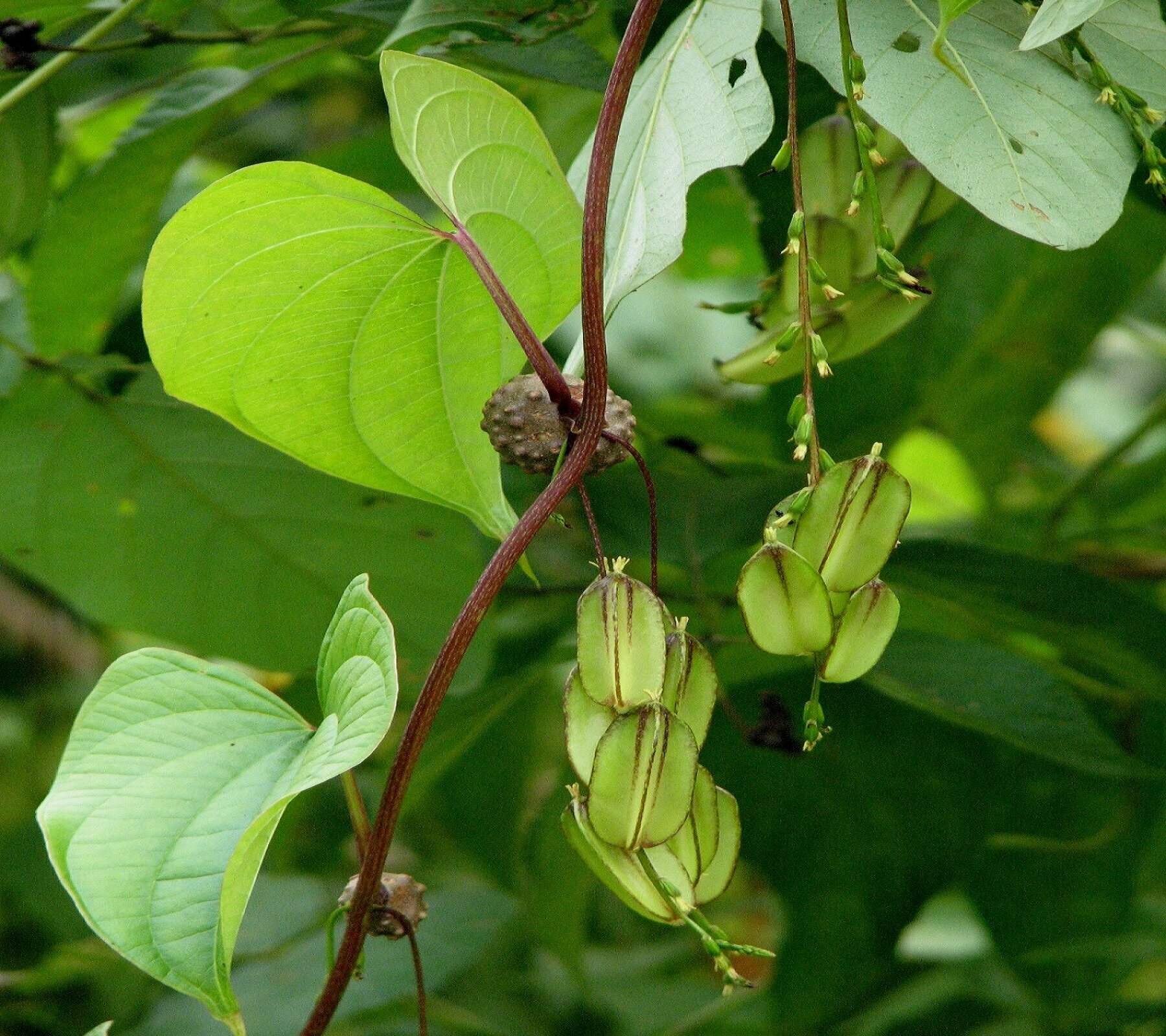 |
|||
| 160. Diospyros malabarica (Desr.) Family: EBENACEAE Local name: Makarkendu Flowering: April-May, Fruiting: February – April Ecology: Quite abundant along streams in semi-evergreen forests Description: Large, evergreen trees. Leaves alternate, oblong-lanceolate, obtuse, coriaceous, glabrous. Flowers 4-merous, fragrant, yellow, on 1 many flowered tomentose cyme. Stamens about 40, in pairs. Fruits globose, fleshy: seeds 4-8. Medicinal uses: When ripe, the fruit is beneficial in treating diarrhoea and dysentery; blood diseases; gonorrhoea and leprosy. The fruit is also said to break fever, to be an antidote for snake poisoning, and to be demulcen. The juice of the fresh bark is useful in the treatment of bilious fevers. IUCN Status: |
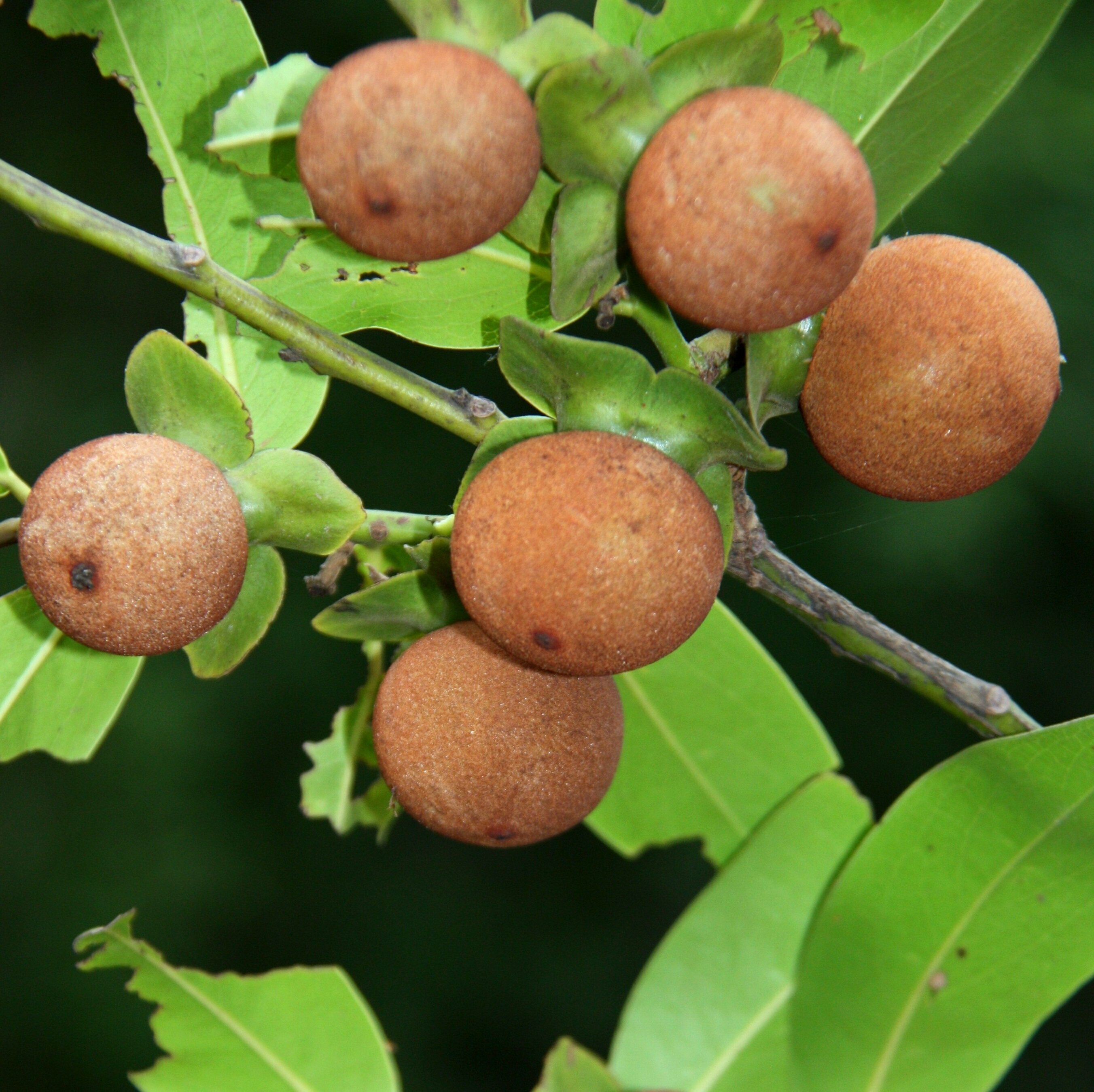 |
|||
| 161. Diospyros melanoxylon Family: EBENACEAE Local name: Kendu Flowering & Fruiting: April-June Description: Soft leaves are collected and sold for the preparation of country cigarette. Young leaves decoction mixed with rice bran oil is administered in empty stomach for ten days against conjunctivitis. IUCN Status: |
 |
|||
| 162. Diospyros montana Roxb. Family: EBENACEAE Flowering:March – May, Fruiting:November – January Ecology:Common along nalas and ravines, in deciduous forests. Description: Deciduous trees. Leaves elliptic-ovate, base subcordata, obtusely acute, glabrascent. Flowers 4-merous,greenish-white, stamens 16. Ovary 8-celled. Berry globose, orange-yellow. Medicinal uses: Diospyros montana is used in Ayurveda and Siddha medicines. The fruits of Diospyros montana are poisonous,bitter, astringent, febrifuge, abortifacient. The fruits are applied externally to boils and spider stings. The barkpaste is given with boiled rice for swelling of the body. IUCN Status: |
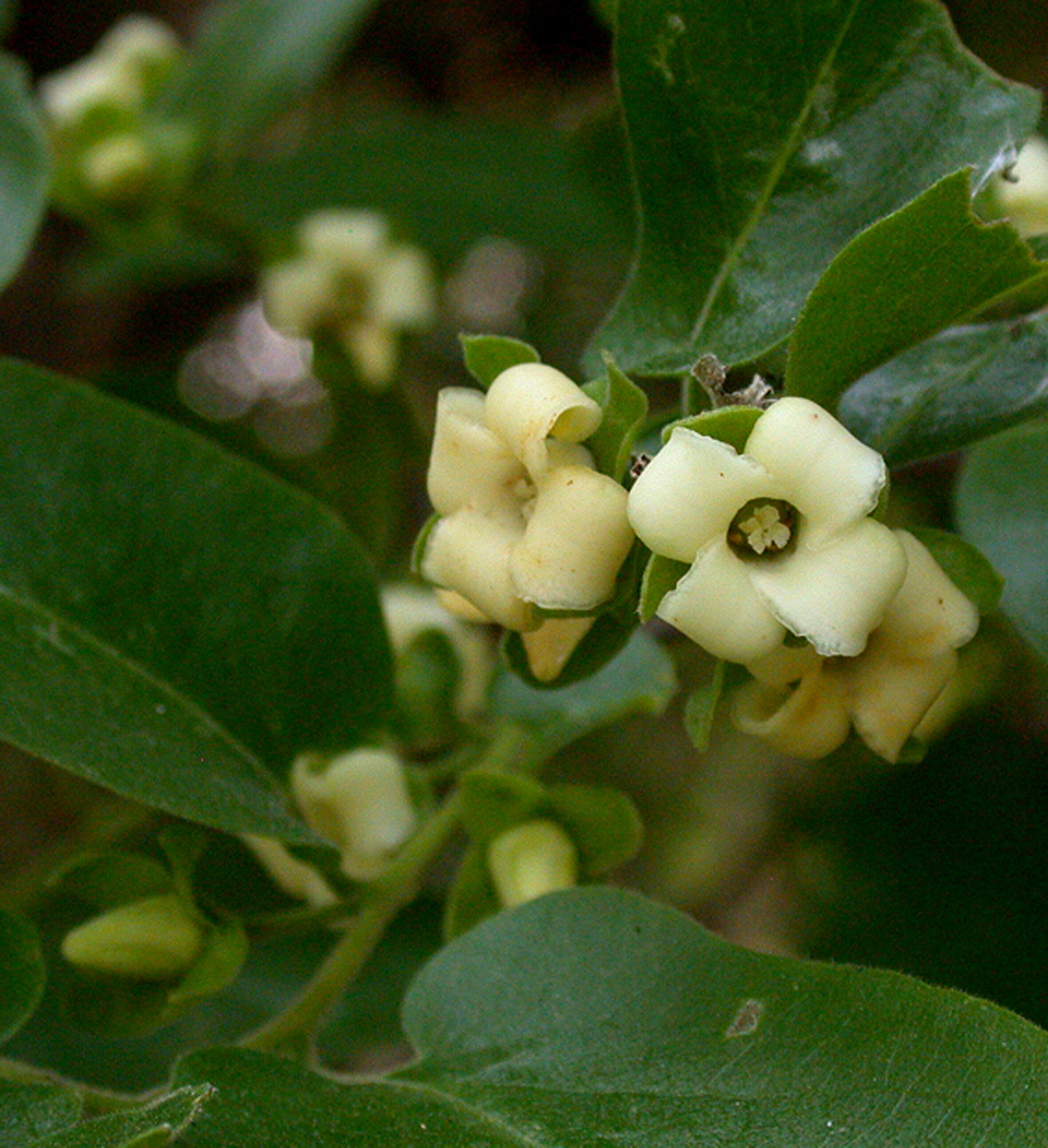 |
|||
| 163. Diospyros sylvatica Roxb Family: EBENACEAE Local name: Kauchia Flowering: April-May Fruiting: January – March Ecology: Occasional, along streams in damp forests Medicinal uses: The fruits and leaves are used to cure stomachache, stems are used as an expectorant, fruits are used as alaxative and seeds are febrifuge. The aerial plant parts are potentially utilized for several purposes such as forAphrodisiac and tonic, Constipation, Stomach problem, Diarrhoea, Malaria fever etc. IUCN Status: |
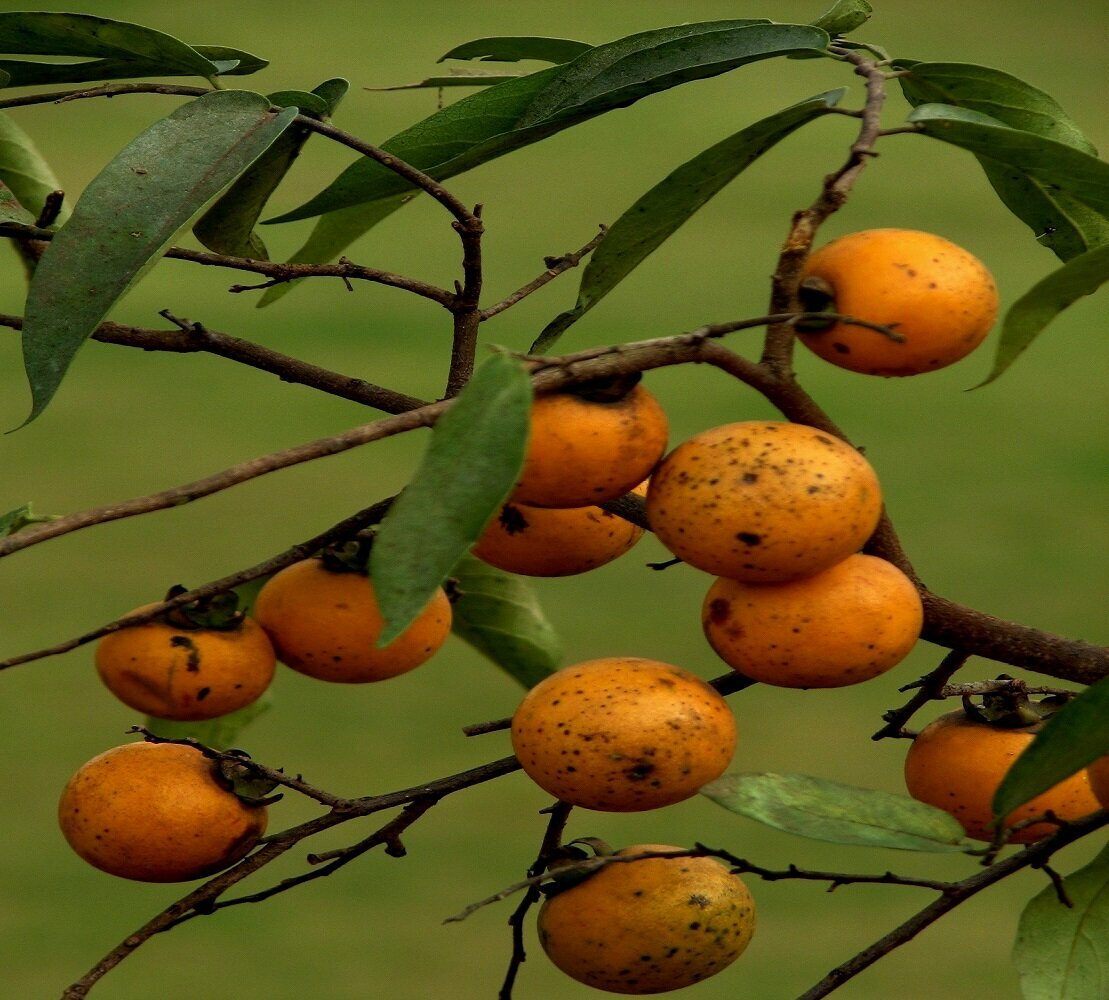 |
|||
| 164. Diplocyclos palmatus (Linn.) Family:CUCURBITACEAE Local name: Kauchia Flowering:August- October. Fruiting:November. Ecology: Common, in thickets. Description: climbers. Leaves palmately 5-lobed, membranous, scabrid above; lobes elliptic-oblong, cordate, denticulatesubcrenulate; tendril 2-fid. Flowers monoecious, in clusters. Calyx-tube campanulate. Corolla greenish-yellow.Stamens 3; one anther l-celled, others 2-celled. Fruit globose, with vertical greenish and white patches. Seedsobovoid. Medicinal uses: Diospyros melanoxylon, D. peregrina, D. sylvatica, D. tomentosa have been used extensively in Indiantraditional medicine to treat for a variety of diseases including diarrhea, cholera, dysentery, intermittent fevers,bleeding gums, bronchitis, carbuncles, cough, cramps, pneumonia, syphilis, tumors, etc. IUCN Status: |
 |
|||
| 165. Dolichos trilobus Linn. Family: FABACEAE Flowering & fruiting: October-February Ecology:Frequent in bushes, hedges & thickets. Description: Glabrascent slende twiner. Leaves pinnately 3-foliate: Leaflets ovate-deitold, acute, obscurely lobed. Flowerspale violet to bluish white, in axilarry 2-4 flowered lax cyme. Calyx 2 lipped, standard auricled, keel curved.Stamens 9+1. Pod flattened, 6-8 seeded. Medicinal uses: The tubers are pounded and used as medicine to treat chickenpox. IUCN Status: |
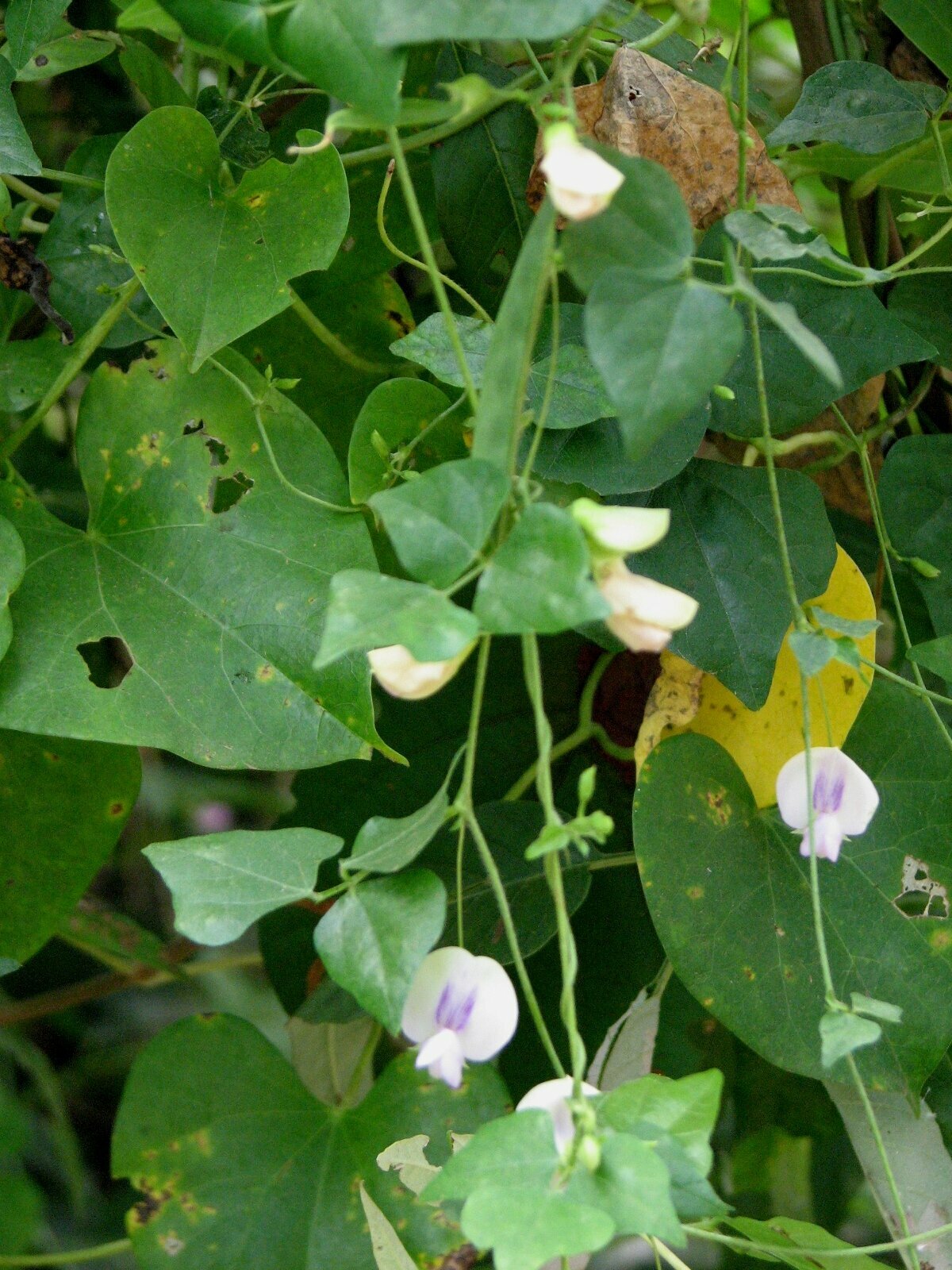 |
|||
| 166. Echinochloa colona (Linn.) Family: POACEAE Flowering & Fruiting: July-February. Ecology: Common, on foot hills during monsoon. Description: Caespitose annuals. Culm ascending, soft. Leaves lanceolate, flat, penninerved, acute. Spikes subsessile, alternate. Spikelets secund, shortly pedicellate, ovate, acute, awnless, hispidulous, 4 glumed. Grain broad-elliptic. Medicinal uses: It is a valuable fodder and traditionally used in spleen and hemorrhage problems. Recently found that it has wound healing, antioxidant and antimicrobial property. IUCN Status: |
 |
|||
| 167. Ecbolium viride Family: ACANTHACEAE Local name: Das Karandi Description: A textual diagnostic description of the species that is not necessarily structured. Woody undershrubs. Leaves opposite, 3-4 x 2-2.5 cm, sessile, ovate, acute, base truncate, puberulous. Flowers in dense terminal spikes; bracts shortly aristate, broadly ovate, minutely dentate, shortly acuminate, 2 x 1.5 cm. Medicinal uses: Whole plant is powdered and given with water in the treatment of high blood pressure and gout. The extract of plant is applied on teeth and gum in the treatment of pyorrhea. IUCN Status: |
 |
|||
| 168. Eclipta prostrata (Linn.) Family: COMPOSITAE Local name: Kesatura Flowering & fruiting: Round the year Ecology: Very common in wet places along nalas. Description: Erect or decumbent ascending herbs, rooting at lower nodes. Leaves sessile, opposite, entire elliptic lanceolate, cuneate, narrowly acute, appressed pilose. Heads axillary and terminal solitary, white. Involucral bracts multiseriate. Achenes blackish, 3-angular pappus 0. IUCN Status: |
 |
|||
| 169. Eichhornia crassipes (Mart.) Family: PONTEDERIACEAE Flowering & fruiting: March-May. Ecology: Very common in marshes, swamps and tanks in pure communities. Description: Rhizome creeping, free-floating. Leaves broadly spoon-shaped, petioles swollen. Flowers violet-blue, on a sessile sheathed scape. Capsule ovoid or oblong. Medicinal uses: Water hyacinth has also been reported to contain compounds with anticancer properties. These studies confirm Eichhornia as a valuable resource for natural compounds of desirable medicinal properties like antioxidants, antiaging and anticancer. IUCN Status: |
 |
|||
| 170. Elephantopus scaber Family: ASTERACEAE Local name: Aamtaliya jadi, Mayur chulia, Amtalia Kukur Chulia, Aam tadia Flowering & Fruiting: September – December Ecology: occur mainly in dry localities. Description: A rigid herb, perennial with short root stock. Leaves: obovate-oblong, radical forming a spreading rosette on the ground, hairy on both surfaces. Medicinal uses: Roots are pasted with water and given ½ spoons to children in the treatment of diarrhea. Roots are said to be poisonous, so boiled with cow urine for 2 and ½ hours and then washed and boiled with milk and given in the treatment of rheumatism. Roots are dried and pasted with rice powder and prepared rounded ball locally called ‘Ranu’ used to accelerate the fermentation of rice beer. Root paste is given against spermatorrhoea. Roots are cleaned and pasted and given with mother’s milk to feeding baby in the treatment of loose motion or diarrhea. IUCN Status: |
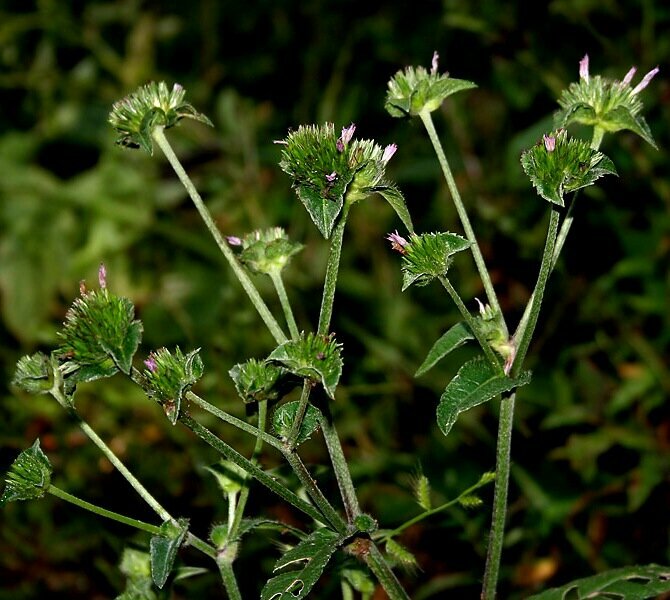 |
|||
| 171. Eleusine indica (Linn.) Family: POACEAE Flowering & Fruiting: Round the year. Ecology: Abundant in moist waste places and rock surfaces. Description: Caespitose annuals. Leaves distichous, linear, glabrous acuminate, sheath hairy. Spikes 5-8, digitate. Spikelets 2-seriate secund, shortly pedicellate. Caryposis oblong, 3-gonous, reddish brown. Medicinal uses: It is used in traditional medicine as a diuretic, anti-helminthic, febrifuge and for treating cough. Polyscias fulva, Harms, is used in traditional medicine to fight against venereal infections and against dermatoses. IUCN Status: |
 |
|||
| 172. Embelia tsjeriam-cottom Family: MYRSINACEAE Local name: Bidang Description: Embelia tsjeriam-cottam – Malabar Embelia. Malabar Embelia is a shrub found in peninsular India, particularly on the Malabar region. It is also found in the Himalayas, from Kashmir to Sikkim, at altitudes of 400-1600 m. Leaves are generally at the end of branches, ovate, pointed, with entire margins. Medicinal uses: The fruits are anthelmintic, antispasmodic and carminative. The finely powdered berries are formulated as an ointment for treating pleuritis. The bark of the root is reportedly used to treat toothache. The leaves, in combination with ginger (Zingiber officinale), are used as a gargle for remedying sore throats. The dried bark of the root is used as a remedy for toothache. Seeds are powdered and ½ g is given with honey to kill intestinal worms. IUCN Status: |
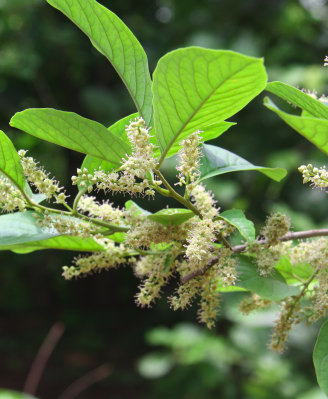 |
|||
| 173. Emilia sonchifolia (Linn.) DC. Family: COMPOSITAE Flowering & fruiting: July – November Ecology: Common in wastelands and forests clearing. Description: Weak, pilose herbs. Stem striate. Leaves alternate, irregularly lobed, terminal 3-angular, caulines sessile, auriculate. Heads pinkish, peduncled, corymbose. Achenes brown, 5-ribbed, pappus white. IUCN Status: |
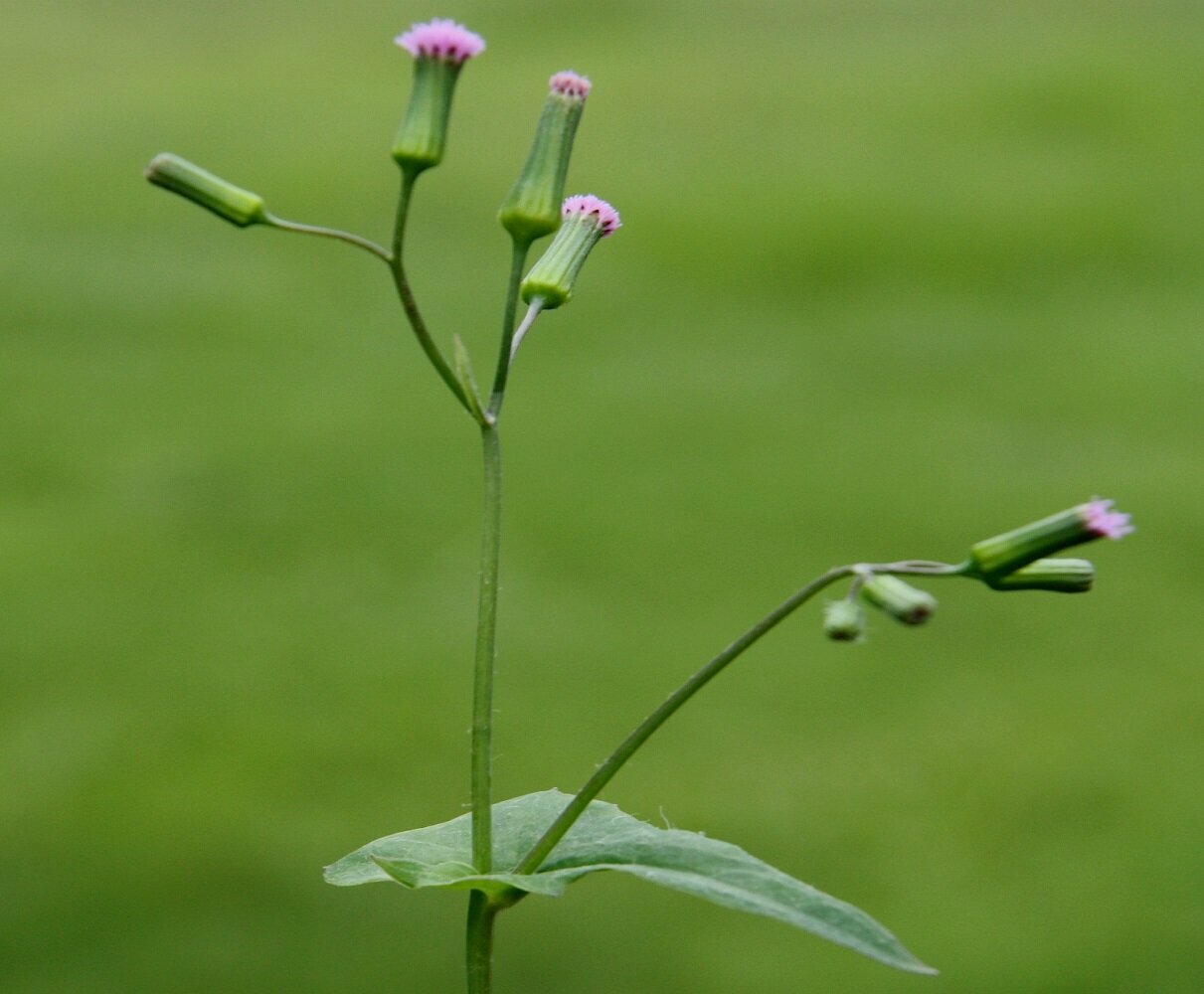 |
|||
| 174. Enydra fluctuans Lour. Family: COMPOSITAE Flowering & fruiting: November – January Ecology: Gregarious in swampy places along nalas. Description: Semi aquatic herbs. Stem erect-ascending, succulent. Leaves sessile, opposite oblong, gland punctuate beneath, serrate-crenate. Heads sessile, yellowish white. Involucral bracts leafy, greenish white. Achenes oblong, compressed. Medicinal uses: Enhydra fluctuans is nutritious and used in ascites, dropsy, anasarca and snakebite. This plant has been reported to have antioxidative and analgesic activities. IUCN Status: |
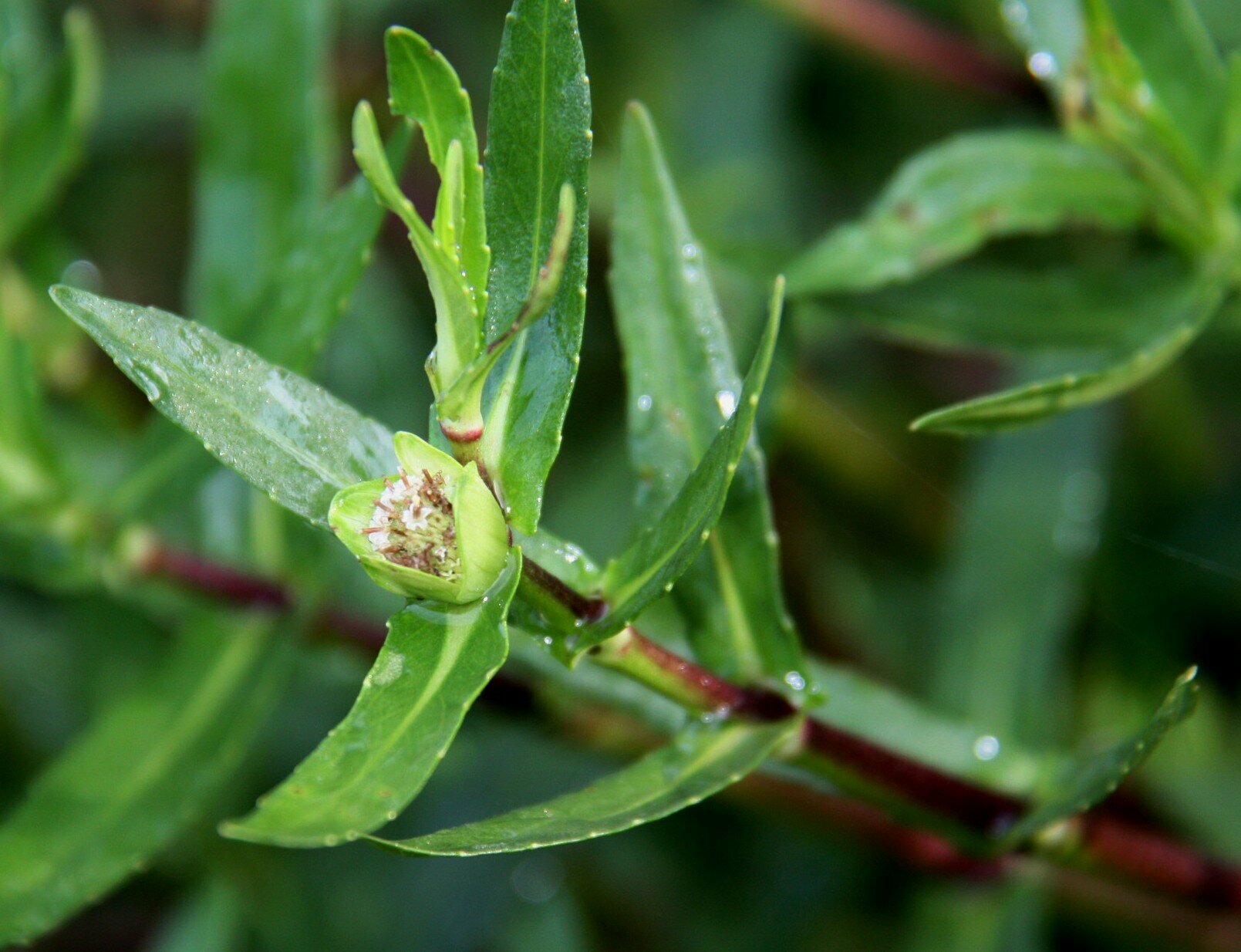 |
|||
| 175. Epaltes divaricata (Linn.) Family: COMPOSITAE Flowering & fruiting: August – January Ecology: Common in wet fallow fields. Description: Diffuse, much branched, annuals. Stem 3-gonous, winged from decurrent leaf base. Leaves alternate, oblong, spathulate, denate, mucronate. Heads peduncled, subcorymbose, deep purple. Anthers tailed below. Achenes brown puppus. IUCN Status: |
 |
|||
| 176. Eragrostis pilosa (Linn.) Family: POACEAE Flowering & Fruiting: August-December. Ecology: Common in sandy and eroded soils. Description: Slender annuals. Leaves tapering towards apex, mouth of sheaths ciliate. Panicles open, delicate. Spikelets slender, purple or grey. Glumes lax, flowering glumes ovate, subacute, thin. Keels sparsely scaberulous. Grain oblong, brown. IUCN Status: |
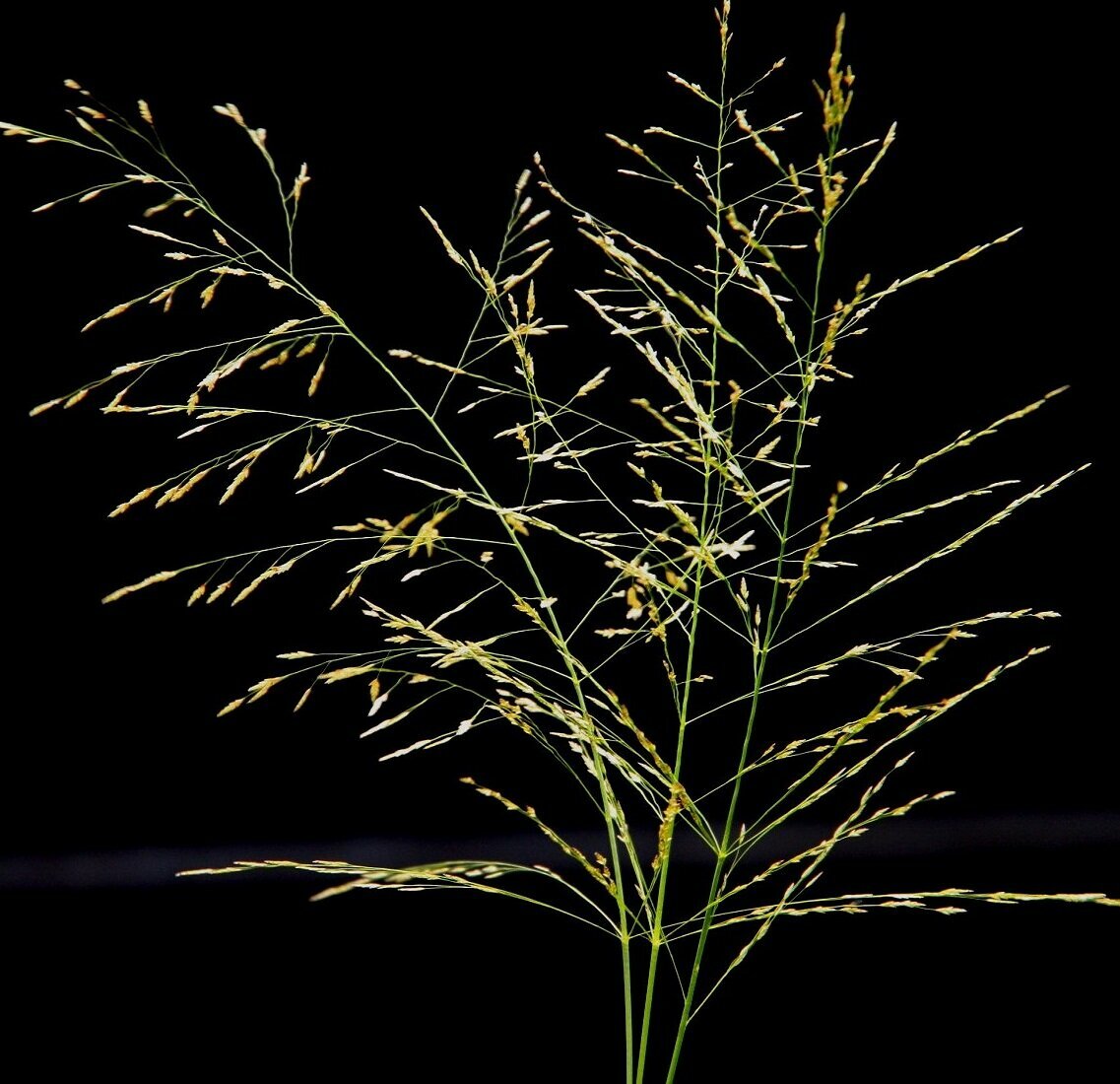 |
|||
| 177. Eragrostis uniloides (Retz.) Family: POACEAE Flowering & Fruiting: July-January. Ecology: Quite abundant on hill plateau. Description: Slender annuals. Leaves linear-ensiform, glabrous, ligulate. Panicle lax, spreading. Spikelets compressed, pedicellate, pale or purple, ovate-oblong, rachilla straight. Lower 2-glumes empty, hyaline. Grain obovoid, laterally compressed. IUCN Status: |
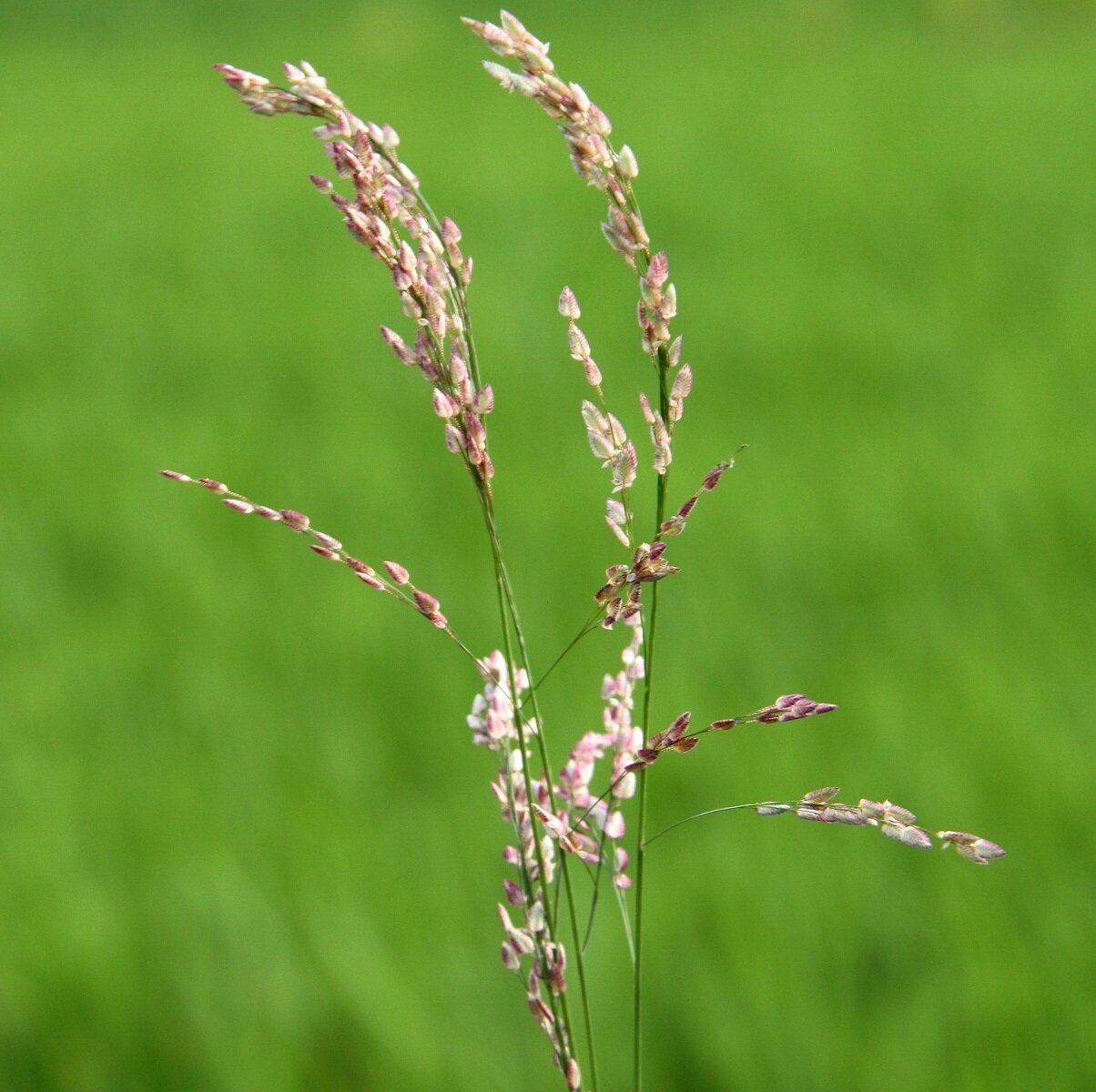 |
|||
| 178. Eranthemum nervosum (Vahl) Family: ACANTHACEAE Flowering & Fruiting: December-March Ecology: Occasional, on hill slopes under shade. Description: Shurbs. Leaves elliptic to ovate, acuminate, base tapering. Flowers blue, in ternately subcorymbosely panicled spikes; bracts micaceous, imbricating, white, nervose. Capsule pointed. IUCN Status: |
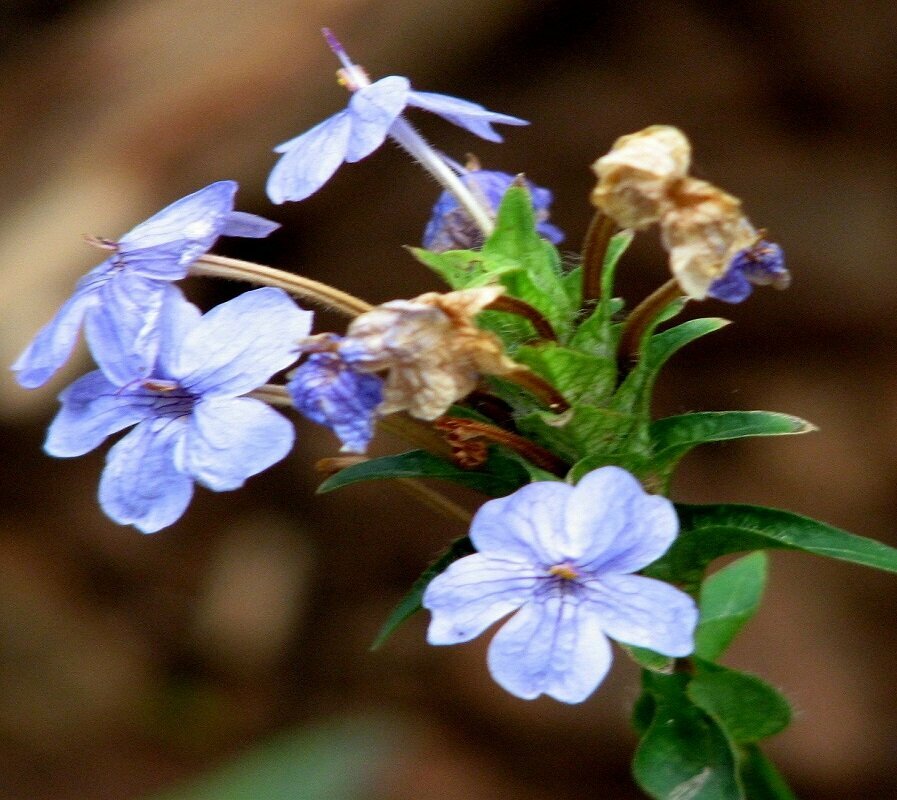 |
|||
| 179. Eriocaulon quinquangulare Linn. Family: Eriocaulacease Flowering & Fruiting: October-December Ecology: Common in swamps, marshes and moist fields. Description: A decoction from the plant is used to treat patients suffering from liver disorders, jaundice and splenomegaly. IUCN Status: |
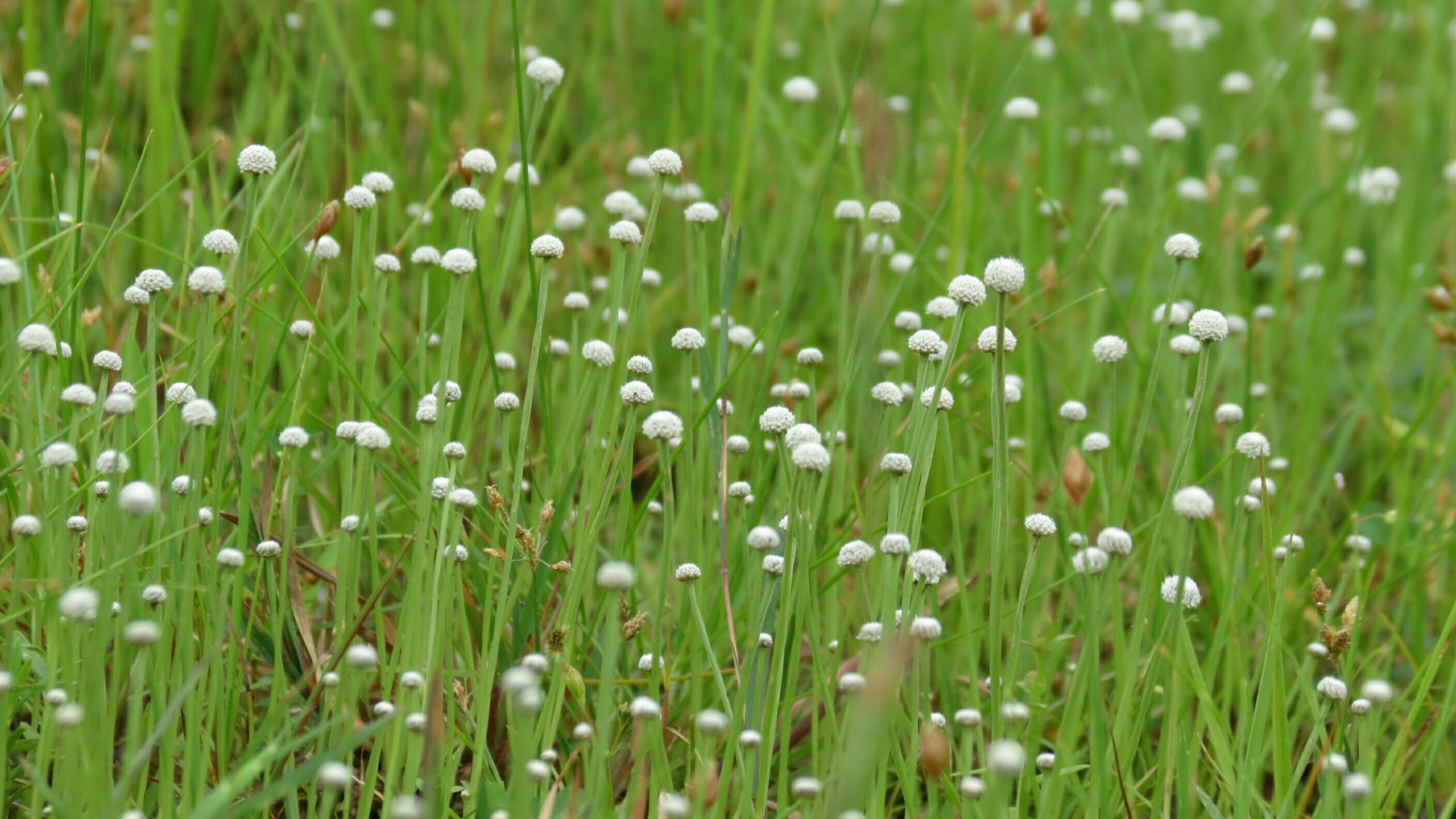 |
|||
| 180. Eriochloa procera (Retz.) Family: POACEAE Flowering & Fruiting: August-November. Ecology: Occasional, in damp places. Description: Annual or perennial grasses; base creeping. Leaves flat, glabrous or hairy, ligulate. Spikelets secund. Glumes i and ii villous; iii much short, punctulate, shortly awned. Stamens 3. Styles free. Grain oblong. IUCN Status: |
 |
|||
| 181. Ervatamia divaricata (Linn.) Family: APOCYNACEAE Flowering: July-September Fruiting: October-November Ecology: Occasional, on moist banks of nala at foot hills. Description: Bushy shrubs. Leaves oblanceolate-acuminate, shining, dark, green, paler beneath. Flowers pure white, in axillary and terminal cymes. Petals obliquely obovate, apex rounded. Follicles spreading recurved, 3-7 ribbed. Medicinal uses: All plant parts are used in Aryuvedic, Chinese and Thai Traditional Medicine. Studies have shown properties including: antioxidant , antitumor, anti-infection, analgesic . In Ayurveda, this plant is considered to pacify Vata and Pitta vedas. IUCN Status: |
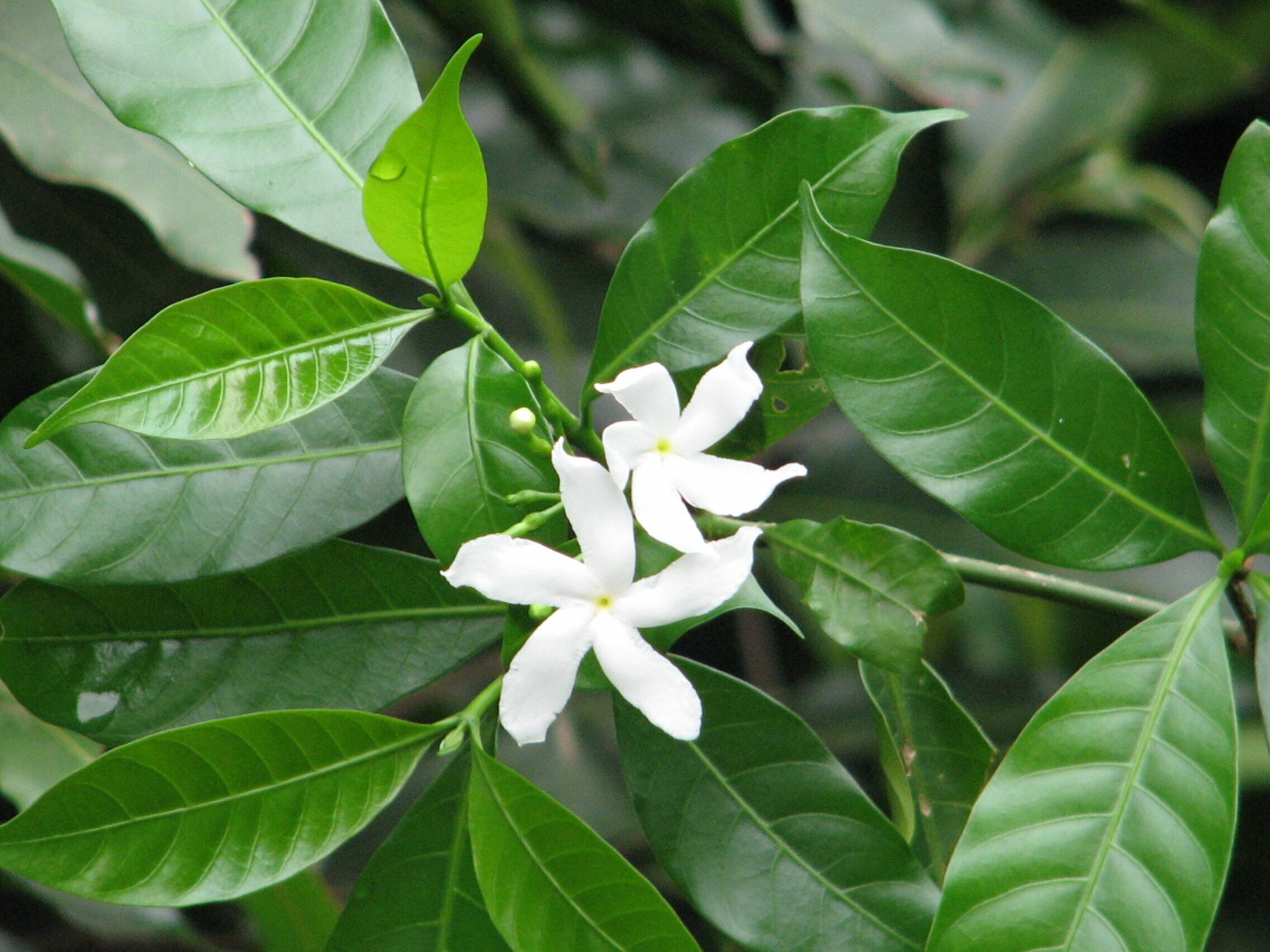 |
|||
| 182. Eryngium foetedum Family: APIACEAE Local name: Dhaniya Description: It is a biennial or short-lived perennial herb indigenous to continental Tropical America and the West Indies. It is a small, evergreen branched biennial up to 15-20cm in height, with fibrous roots and long leaves with spiny toothed margins that grow in a basal rosette pattern. Medicinal uses: This plant has been used in traditional medicine in tropical regions for burns, earache, fevers, hypertension, constipation, fits, asthma, stomach-ache, worms, infertility complications, snake bites, diarrhoea, and malaria. Leaves are mixed with coconut and made chutney to induce hunger. IUCN Status: |
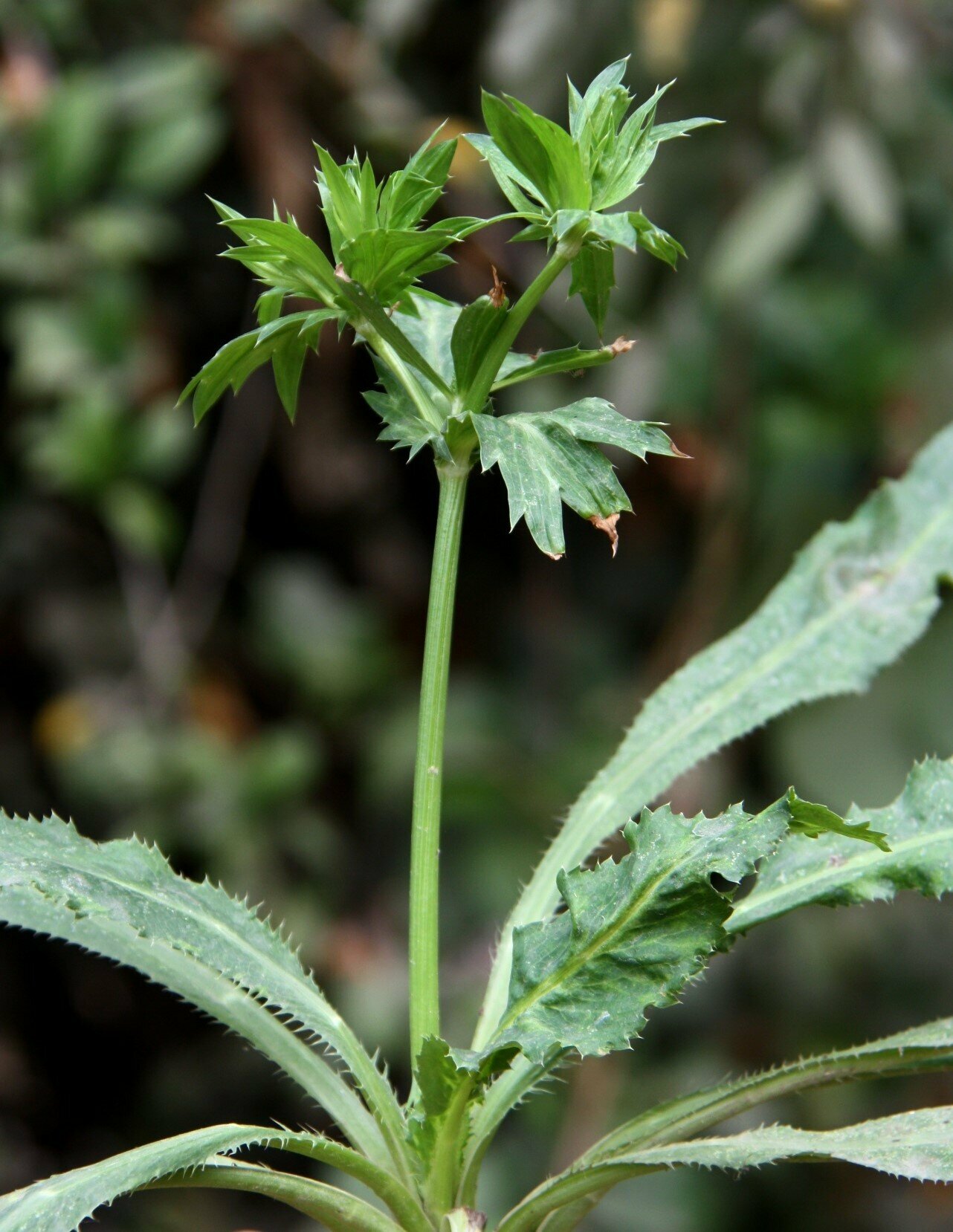 |
|||
| 183. Erythrina suberosa Roxb. Family: FABACEAE Flowering: March-May. Fruiting: April-July. Ecology: Occasional, on moist hill slopes at lower elevation. Description: Small, prickly tree; bark thick corky, furrowed. Leaves pinnate, 3-foliate; leaflets broadly ovate, white-brown tomentose beneth. Medicinal uses: Different parts of the plant have been used in traditional medicine as nervine sedative, collyrium in opthalmia, antiasthmatic, antiepileptic, antiseptic, and as an astringent. The alkaloids extracted from the leaves of E. variegata are reported to have anti-inflammatory and analgesic activity. IUCN Status: |
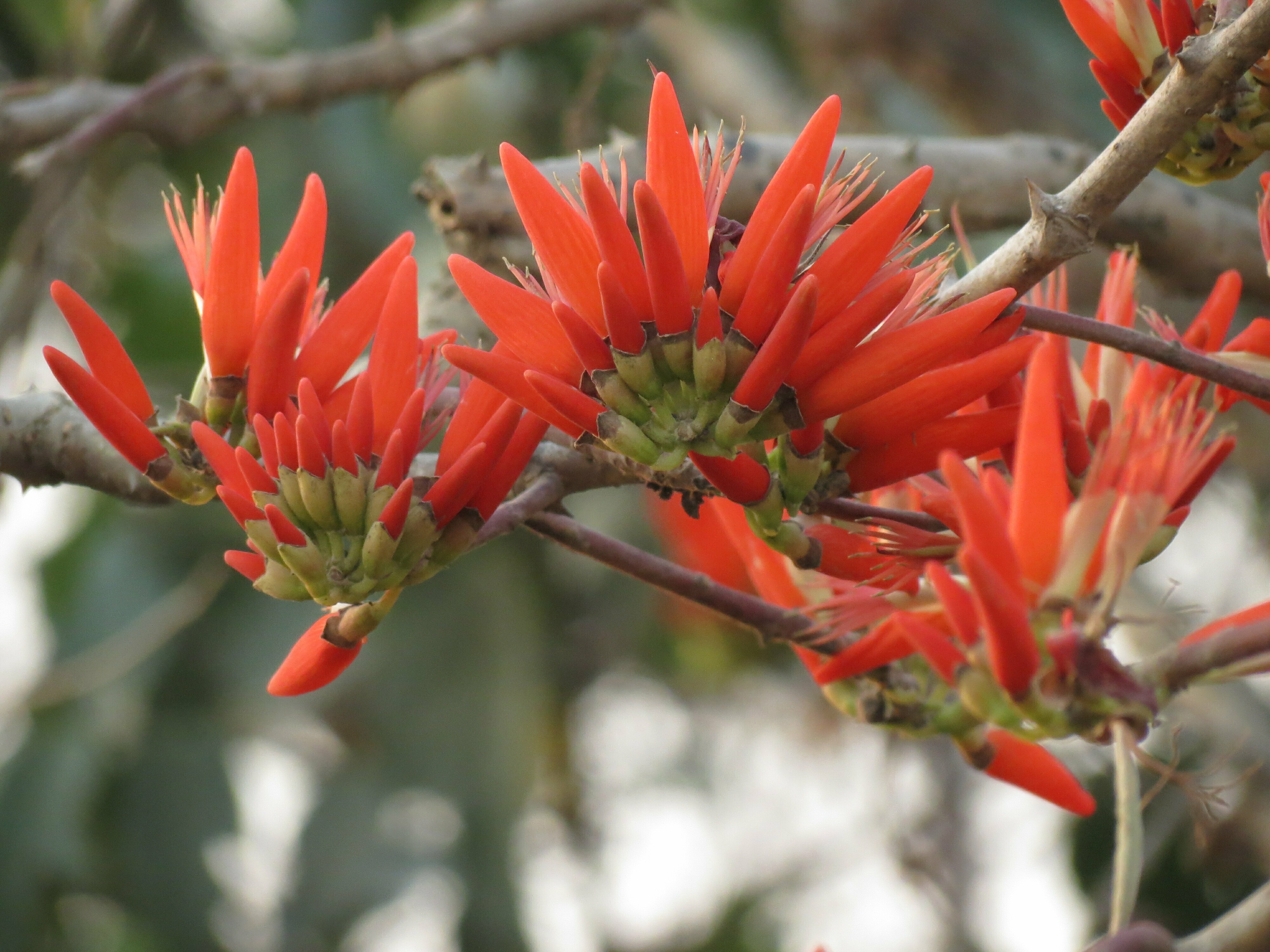 |
|||
| 184. Euphorbia hirta Family: EUPHORBIACEAE Local Name: Chitakutei Flowering & fruiting: Round the year. Ecology: A very common weed found everywhere especially during rains. Description: Erect or decumbent hairy herbs. Leaves opposite, elliptic oblong obovate or subrhomboid, hispidly hairy beneath. Involucres crowded, in axillary cymes, strigose, with 4 shortly stipitate red tipped glands with or without a limb. Capsule hairy. Medicinal uses: Euphorbia hirta is often used traditionally for female disorders, respiratory ailments (cough, coryza, bronchitis, and asthma), worm infestations in children, dysentery, jaundice, pimples, gonorrhea, digestive problems, and tumors. IUCN Status: |
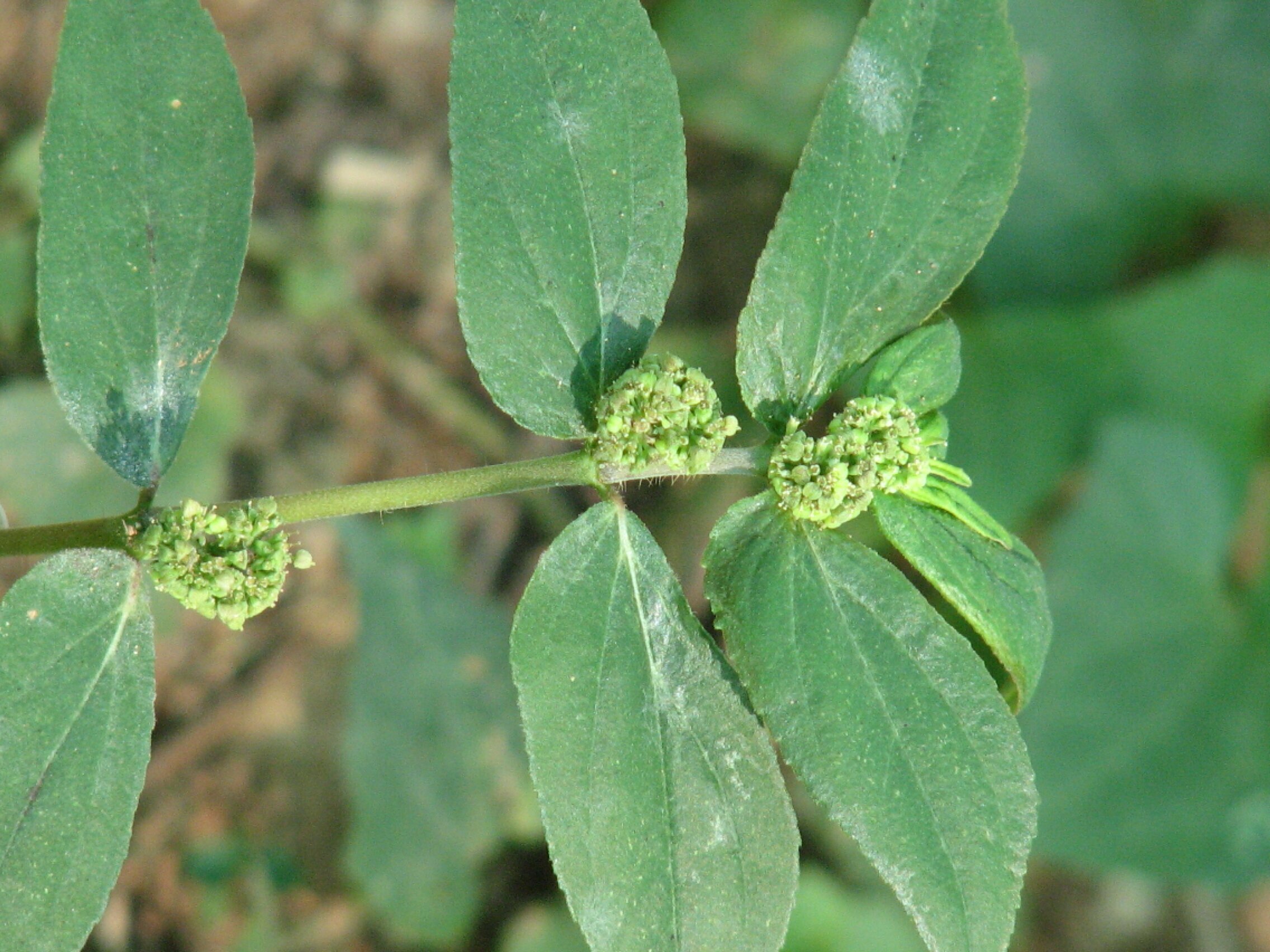 |
|||
| 185. Euphorbia nivulia Family: EUPHORBIACEAE Flowering & fruiting: January-March. Ecology: Occasional, on exposed rocks on drier hill slopes. Description: Fleshy, small trees. Trunk terete, jointed, with straight geminate stipulary spines. Leaves sessile, linear-oblanceolate, apiculate, base cuneate. Involucres yellow. Anthers purple, pollen yellow. Capsule 3-lobed, lobes compressed. Medicinal uses: Euphorbia nivulia Linn (Euphorbiaceae) is used in the Ayurvedic system of medicine for bronchitis, asthma, leprosy, jaundice and tumors, and the juice is used as a purga- tive. IUCN Status: |
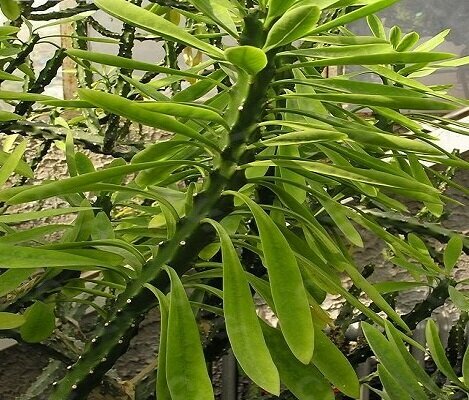 |
|||
| 186. Euphorbia thymifolia Family: EUPHORBIACEAE Flowering & fruiting: July-September. Ecology: Very common on moist pediments during rainy season. Description: Prostrate herbs, stems pinkish. Leaves opposite, obliczu oblong, distichous, rounded, minutely crenulate. Involucres smann axillary, fascicled, green or pinkish, sessile, pubescent, Capsinia erect, pubescent. Medicinal uses: Traditional. E.thymifolia is traditionally used as a blood purifier, sedative, haemostatic; aromatic, stimulant, astringent in diarrhea and dysentery, anthelminthic, demulcent, laxative; and also in cases of flatulence, constipation; in chronic cough; as an antiviral in bronchial asthma and paronychia. IUCN Status: |
 |
|||
| 187. Euphorbia tirucalli Family: EUPHORBIACEAE Local name: Khadisiju, hadabhanga Flowering & fruiting: June- September. Ecology: Frequent in village hedges. Description: Small trees. Branches terete, smooth, polished; branchlets, whorled or fascicled. Leaves linear-oblong. Invol mostly female, campanulate, glands 5-3, lobes hairy, braceolate. Styles recurved, 2-lobed. Capsule velvety, cocci compressed. Medicinal uses: This plant has a number of medicinal uses. Latex of E.tirucalli is vesicant and rubefacient which is used for rheumatism, warts, cough, asthma, ear-ache, tooth-ache and neuralgia. It acts as a purgative in small doses while in big doses it is bitter irritant and emetic. IUCN Status: |
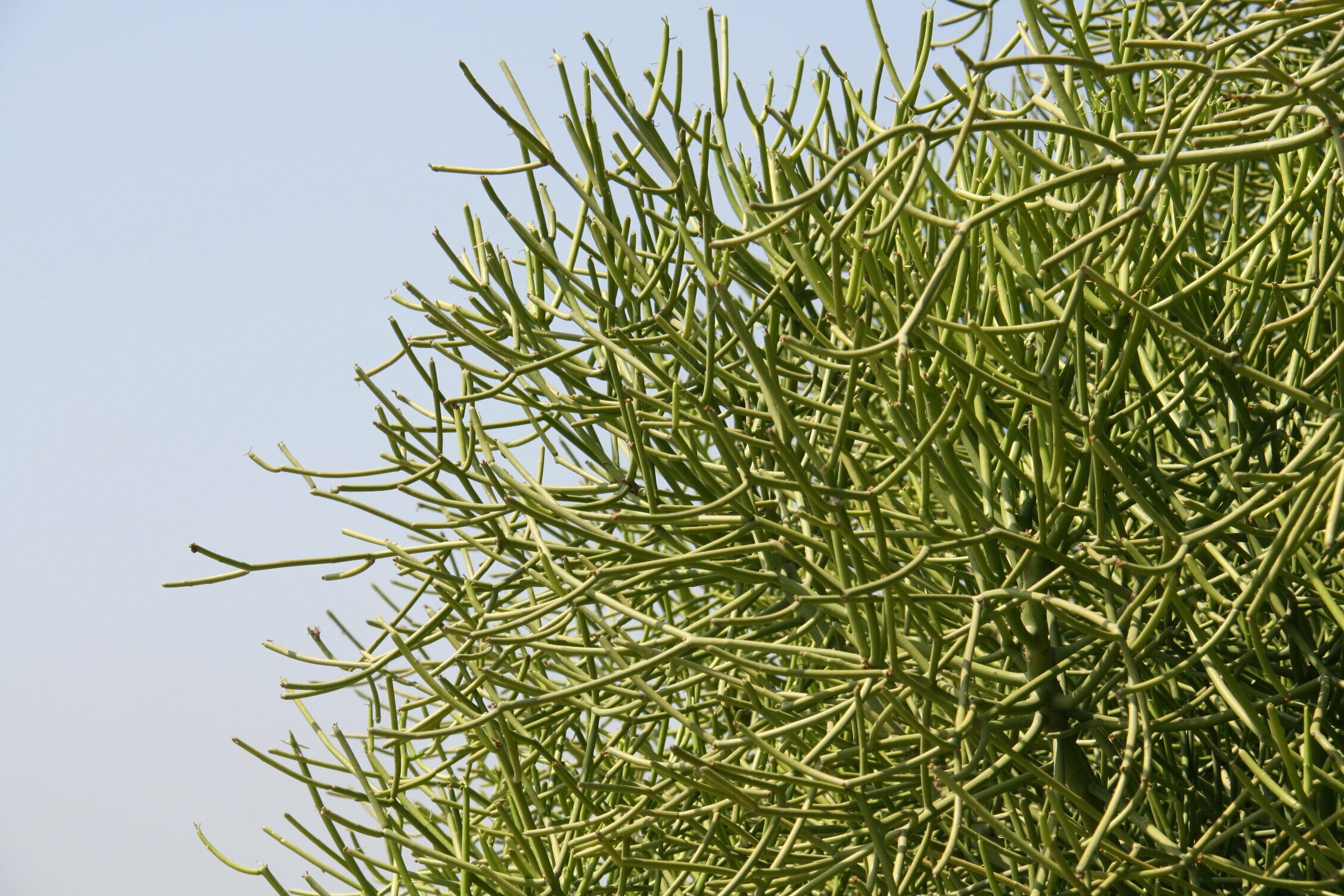 |
|||
| 188. Evolvulus alsinoides Family: CONVOLVULACEAE Local name: Neel Champa Flowering & Fruiting: August- December Ecology: Very common in open sandy dry grassland and rocky places. Also occur in waste places and arable land. Description: A perennial, prostrate herb with stems appressedly hairy or at times nearly glabrous. The leaves are hairy on both side , oblong , elliptic , reture at the tip. Medicinal uses: Whole plant is pasted and the paste is applied on all kind of skin diseases. IUCN Status: |
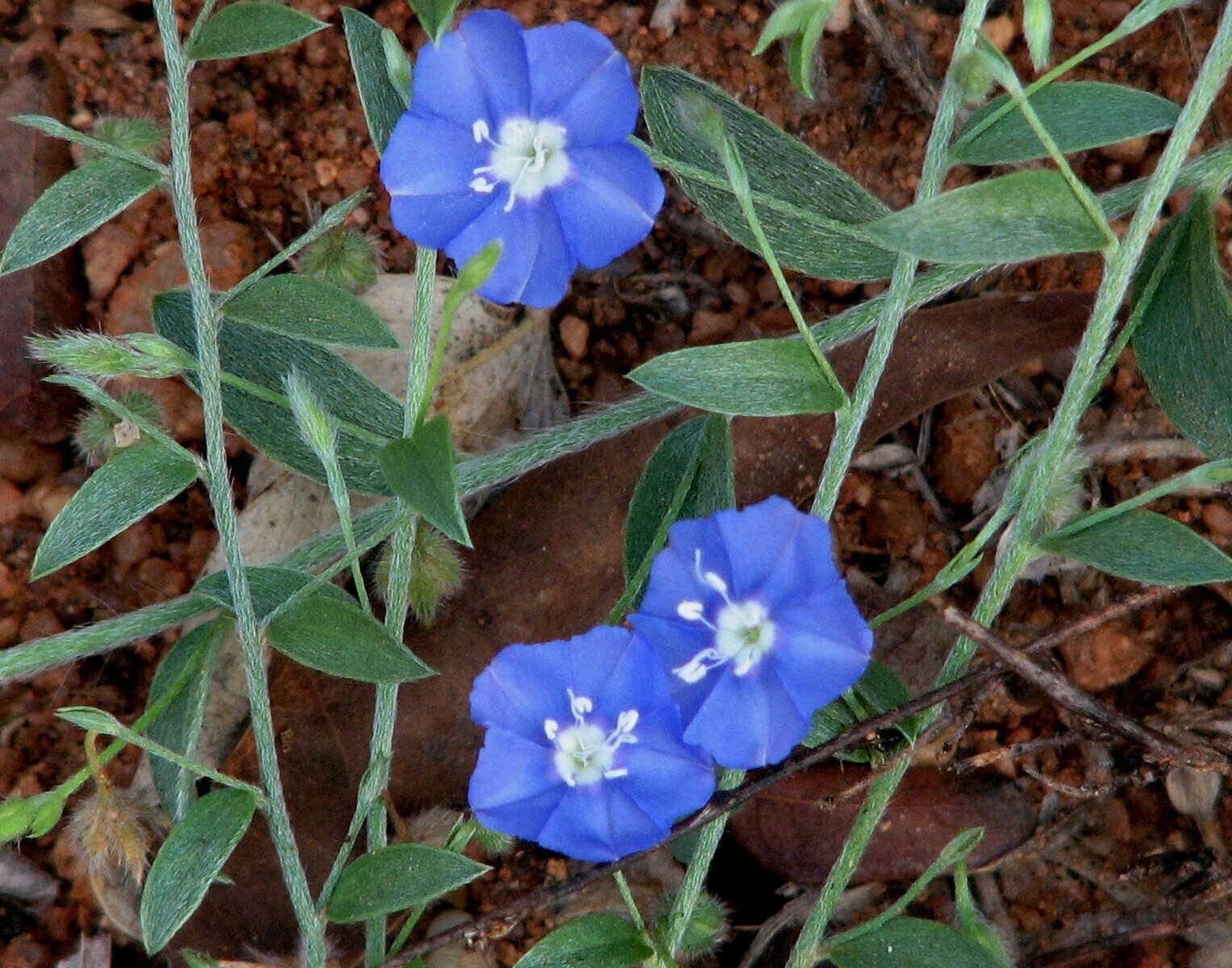 |
|||
| 189. Evolvulus nummularius Family: CONVOLVULACEAE Local name: Jangli champa, Bhyun Telanga Description: Prostrate perennial with pubescent stems rooting at the nodes. Leaf lamina 5-20 mm, circular; apex obtuse; base cordate or truncate; petiole grooved above. Flowers solitary, axillary. Medicinal uses: Plant paste is applied on all kind of skin diseases. Whole plant is given to stop blood dysentery and other diarrhea and vomiting. IUCN Status: |
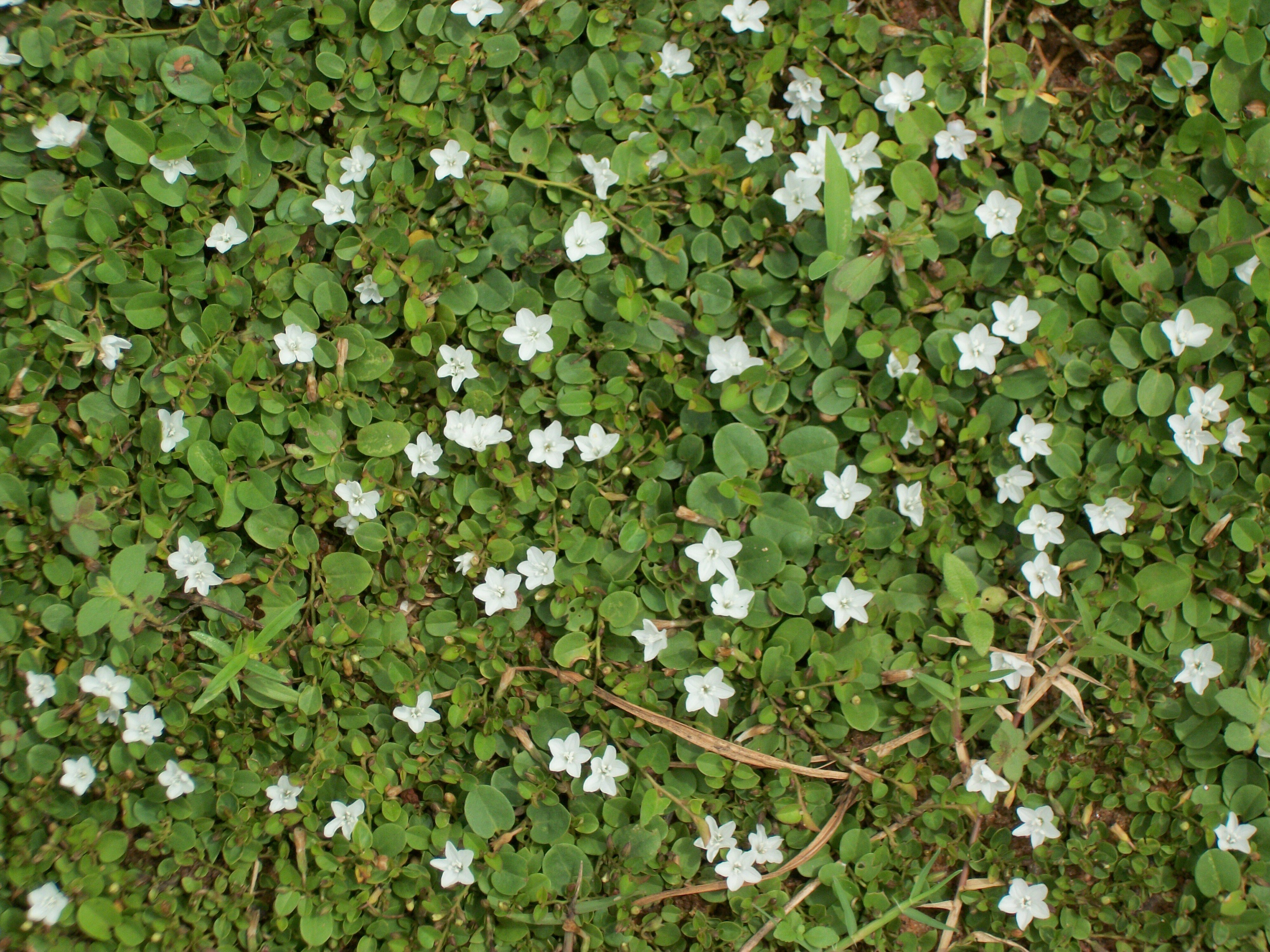 |
|||
| 190. Fimbristylis aestivalis (Retz.) Family: CYPERACEASE Flowering & Fruiting: November-February. Ecology: Gregarious in wet places near nalas. Description: Tufted herbs. Stem erect, angular. Leaves filiform, hairy. Umbels compound or decompound, rays very unequal, bracts filiform. Glumes hispidulous, cymbiform, keeled, excurrent. Nut subglobose, 2- convex, smooth. Style hairy. Medicinal uses: Combined with Cassia alata, the plant is used as a poultice on inflammations. IUCN Status: |
 |
|||
| 191. Fimbristylis dichotoma (Linn.) Family: CYPERACEASE Flowering & Fruiting: July-September. Ecology: Common, on lateritic hill top. Description: Small, tufted sedges. Stem flattened, striate. Leaves long, sheaths and bracts densely hairy. Spikelets ovoid-oblong Glumes glabrous, ovate, concave, green-keeled, mucronulate, brown. Stamens 2. Nut 2-convex, straw-coloured, obscurely 5-ridged. IUCN Status: |
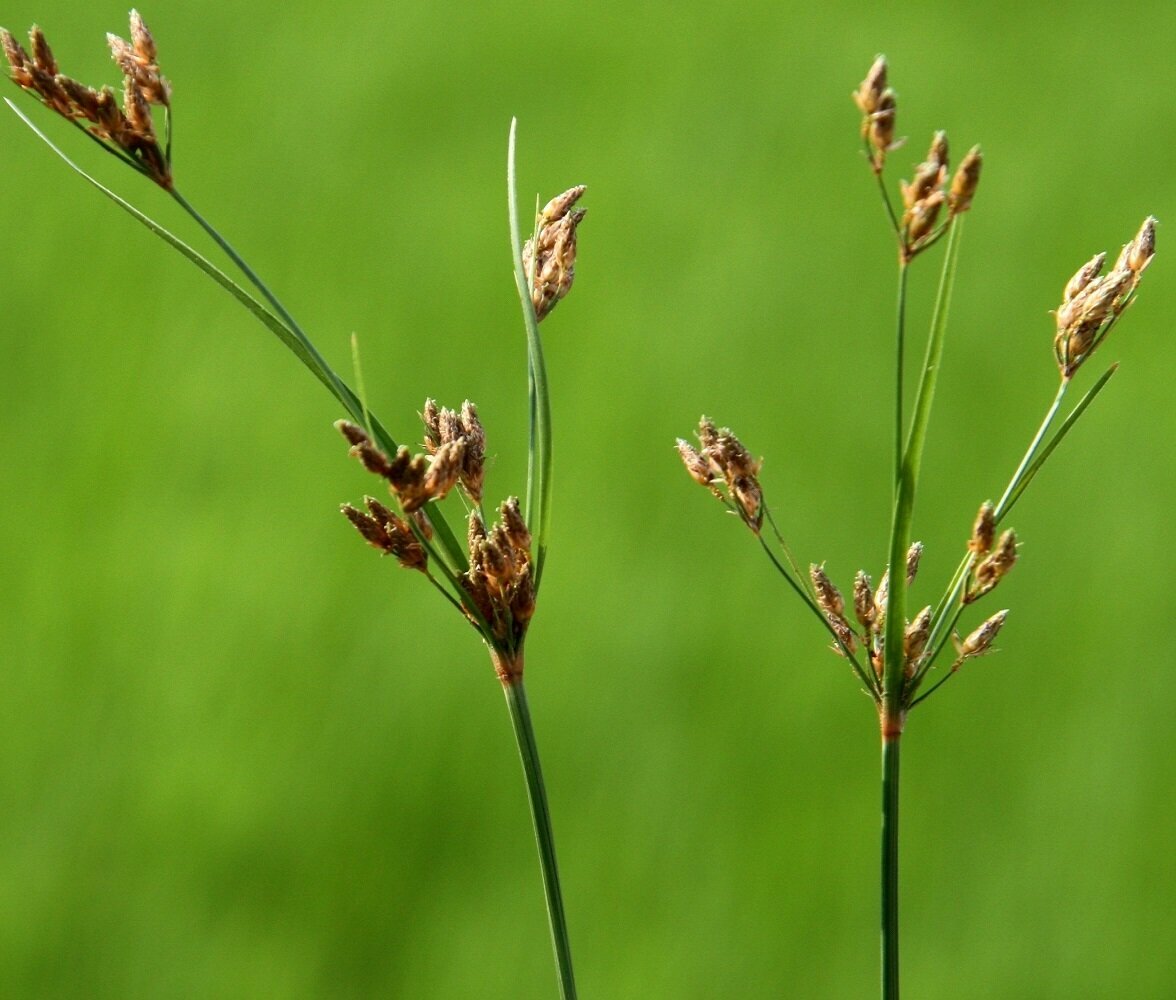 |
|||
| 192. Fimbristylis miliacea (Linn.) Vahl Family: CYPERACEASE Flowering & Fruiting: July-October Ecology: Abundant along stream banks Description: Stem angled or almost winged above. Leaves well developed. Umbels decompound. Spikelets subglobose, 1-central sessile and 2-5 lateral pedicelled. Glumes ovate-cymbiform, keeled. Nut obovoid, 3- gonous, straw-coloured. Style base pyramidal. IUCN Status: |
 |
|||
| 193. Fimbristylis schoenoides(Retz.) Family: CYPERACEASE Flowering & Fruiting: August – October Ecology: Fairly common in moist waste places & slopes. Description: Caespitose herbs. Stems thickened below, slender, striate. Leaves filiform, edges scabrous. Spikelets 1-3, distant, ovoid or conical, bracteate. Glumes: lower flowering, keeled above, many-striate. Nut suborbicular-obovate, brown. IUCN Status: |
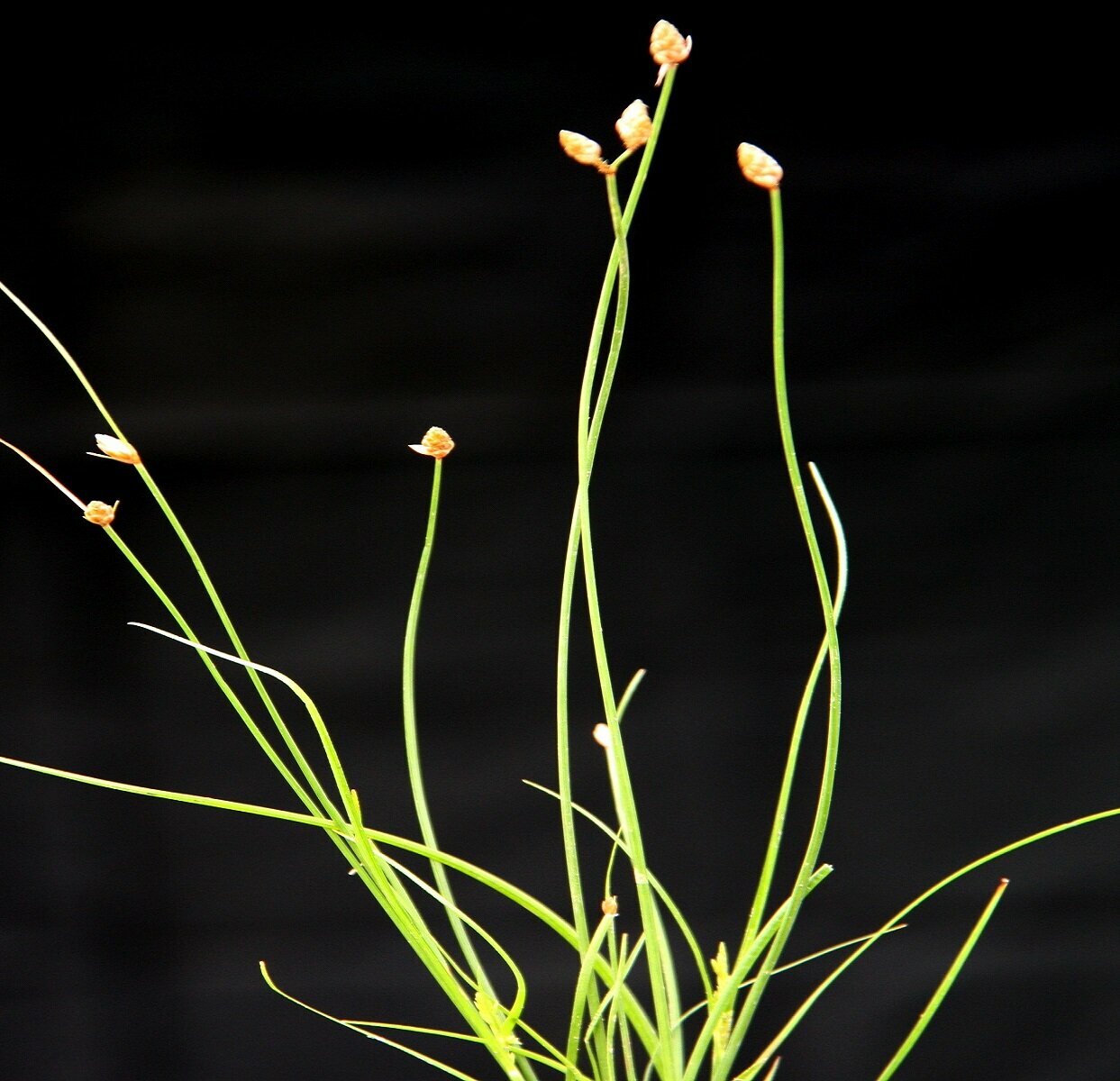 |
|||
| 194. Ficus auriculata Family: MORACEAE Local name: Dimari Description: Ficus auriculata (Roxburgh fig) is a type of fig tree seen all over Asia noted for its big and round leaves. … The leaves are big and round, and are up to 44 cm (17 in) long and 45 cm (18 in) wide, with cordate or rounded base, acute apex, and 5–7 main veins from the leaf base. Medicinal uses: Brown ripe fruits are eaten raw. Unripe fruits are cut, boiled and the first water discarded and then fried as vegetables. Fruits are useful in premature ejaculation and increase sexual power. IUCN Status: |
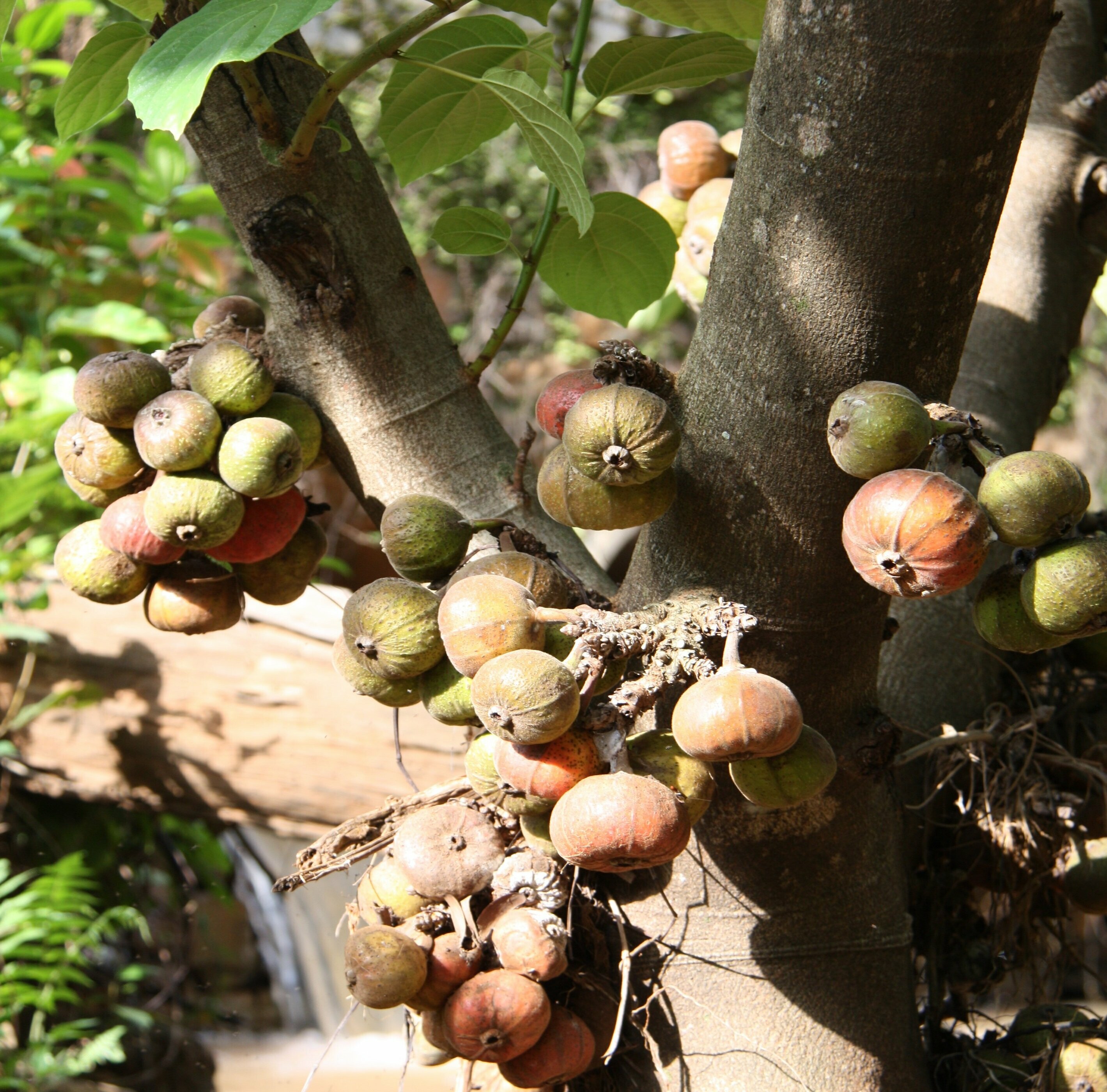 |
|||
| 195. Ficus benghalensis Family: MORACEAE Flowering & fruiting: February-May. Ecology: Common, near villages and temples, often planted along roadsides. Description: Large trees with prop or stilt roots, epiphytic when young. Leaves ovate to elliptic, coriaceous, base sub cordate, 3-5 nerved. Receptable sessile, in pairs, subglobosa , puberulous, scarlet when ripe. Medicinal uses: According to Ayurveda, it is astringent to bowels; useful in treatment of biliousness, ulcers, erysipelas, vomiting, vaginal complains, fever, inflammations, leprosy. The aerial root is styptic, useful in syphilis, biliousness, dysentery, inflammation of liver etc. IUCN Status: |
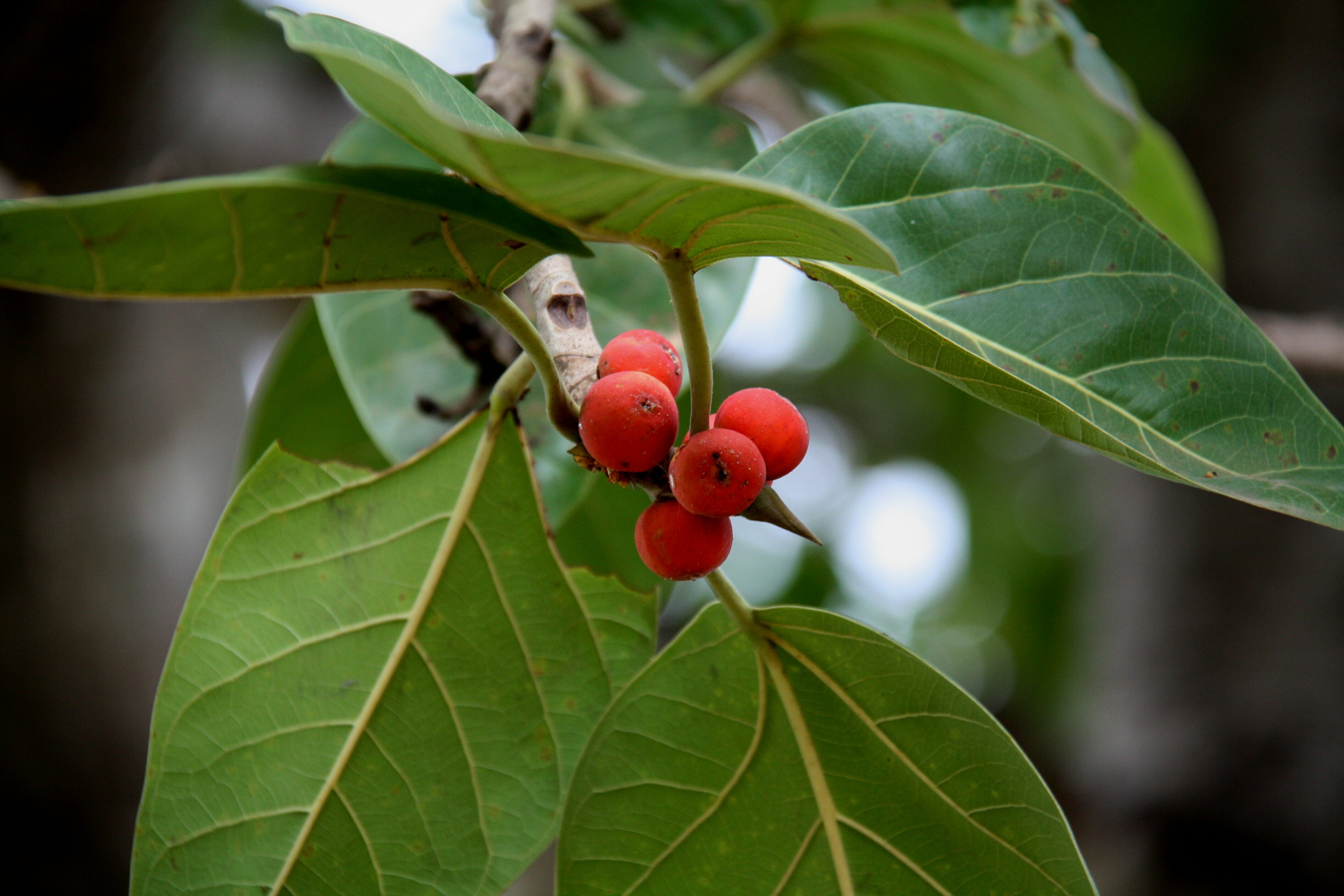 |
|||
| 196. Ficus benjamina Linn. Family: MORACEAE Local name: Dharmaoar Flowering & fruiting: January-March. Ecology: Occasional, along valleys in damp forest. Description: Large trees; branches drooping. Leaves broadly elliptic or ovate, abruptly acuminate or shortly caudate, base obtuse or rounded. Receptacles geminate, axillary, sessile, globose. Bracts lanceolate, 3. Tepals obtuse. Anther globose, apiculate. Medicinal uses: Its latex and some fruit extracts are used by indigenous communities to treat skin disorders, inflammation, piles, vomiting, leprosy, malaria, nose-diseases and cancer besides the use as a general tonic. The plant is also used as antimicrobial, antinociceptive, antipyretic, hypotensive and anti-dysentery remedy. IUCN Status: |
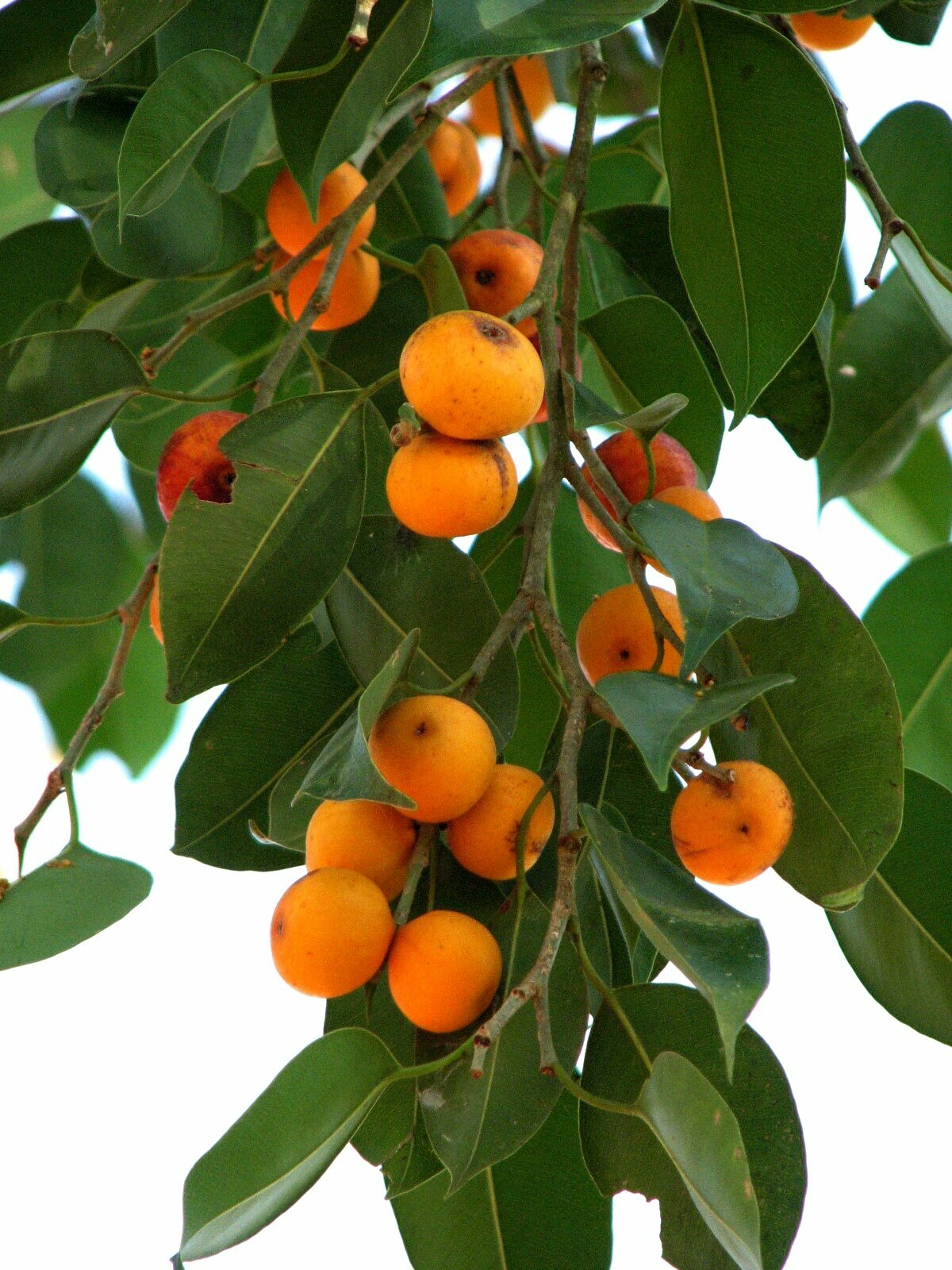 |
|||
| 197. Ficus hispida Linn. Family: MORACEAE Local name: Dimri, Dimbiri Flowering & fruiting: November- January. Ecology: Quite common along nalas. Description: Small trees, branches hispid. Leaves opposite, ovate-oblong, scabrid above and hispid beneath, toothed, base cordate or rounded, cuspidate. Receptacles fascicled on trunk and branches, globosa, hispid – hairy, umbo prominent. Medicinal uses: The fruit and bark of the tree is used for inducing purgation and emesis to remove excess pitta dosha from the body. … Decoction prepared from the fruit or bark of the Ficus hispida is given in a dose of 50 ml to treat jaundice, piles and distention of abdomen. IUCN Status: |
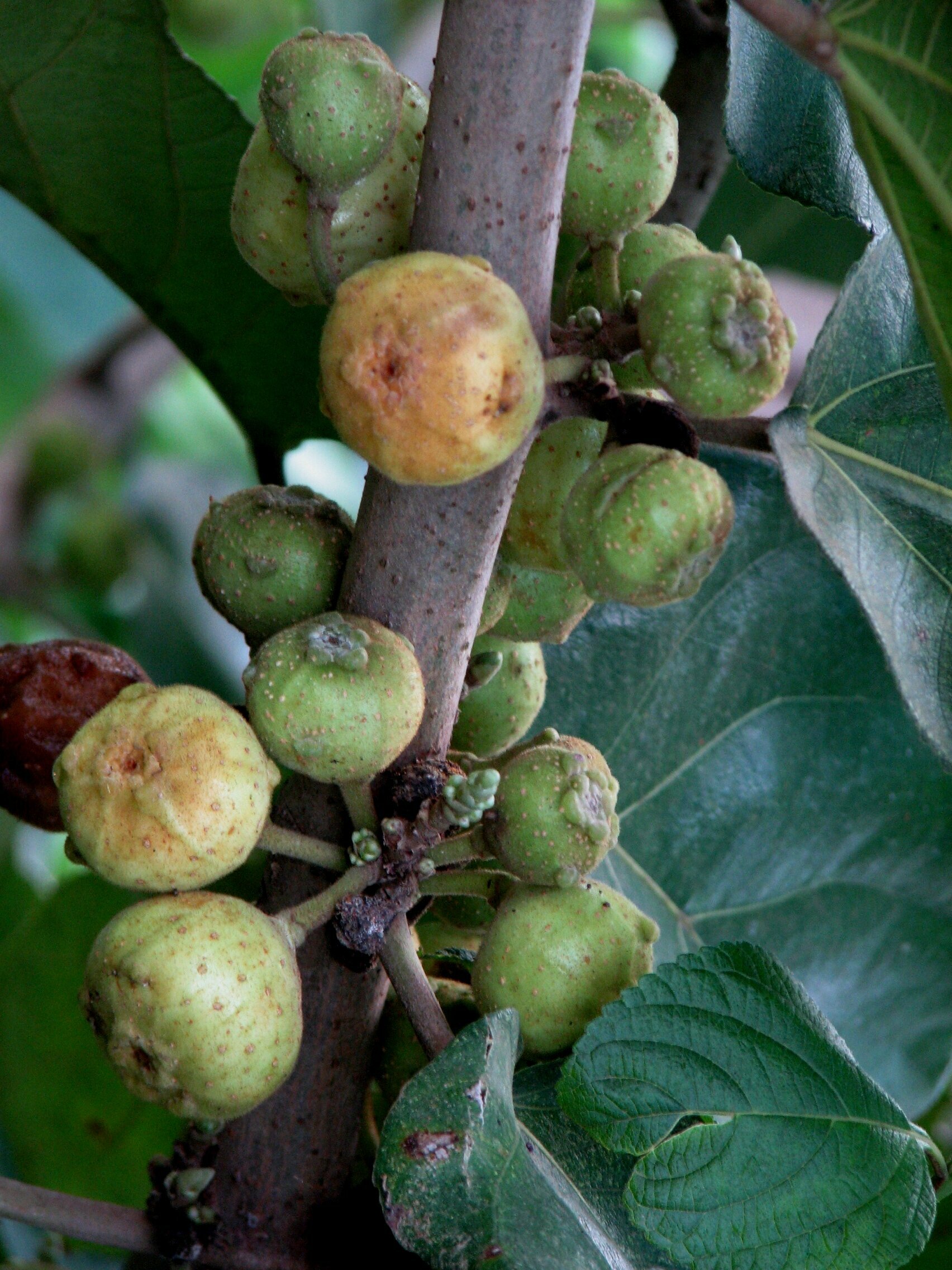 |
|||
| 198. Ficus microcarpa Linn. Family: MORACEAE Flowering & fruiting: March- May. Ecology: Frequent, on rocky hill slopes. Description: Small trees, epiphytic when young. Leaves rotund, obovate, oblanceolate or elliptic; base cuneate, 3- nerved; obtusely acuminate. Receptacles sessile, in axillary pairs, subglobose, hairy within, white or purple. Ovary stipitate. Medicinal uses: Ficus microcarpa is cooling, astringent, and anti-bilious. It is found to have good healing property, and is used in preparation of oils, and ointments for external application in the treatment of ulcers. IUCN Status: |
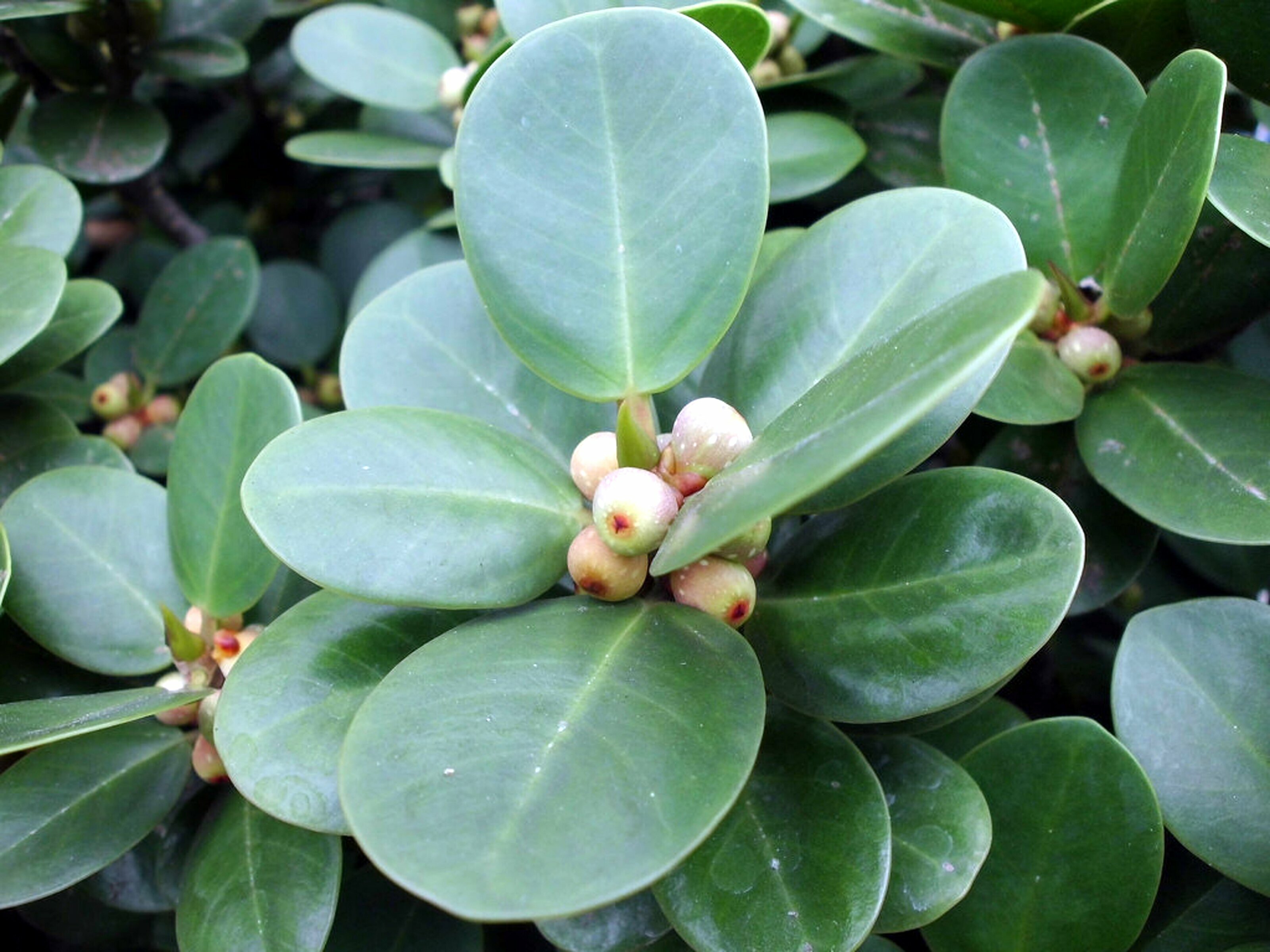 |
|||
| 199. Ficus mollis Family: MORACEAE Flowering & fruiting: March- June. Ecology: Rare, found in rock crevices and old temple walls. Description: Small tress, branclets tomentose or wooly with aerial roots. Leaves oblong, ovate or obovate, acute or obtuse, base cordate, glandular on nerves beneath. Receptacles sessile, globose, grey tomentose. Anther muticous. IUCN Status: |
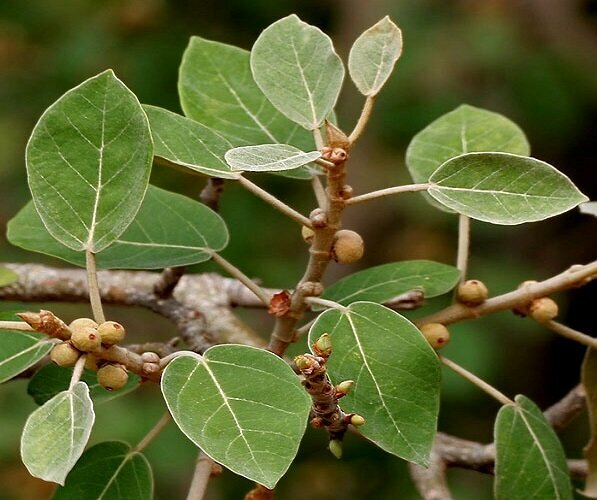 |
|||
| 200. Ficus racemosa Linn. Family: MORACEAE Flowering & fruiting: January-March. Ecology: Occasional, in valleys at foot hill; frequent in villages near river. Description: Medium-sized trees. Leaves ovate- lanceolate or elliptic; base obtuse or rounded, 3-nerved, apex subacute, dark green, pale beneath. Medicinal uses: Ficus racemosa Linn. (Moraceae) is a popular medicinal plant in India, which has long been used in Ayurveda, the ancient system of Indian medicine, for various diseases/disorders including diabetes, liver disorders, diarrhea, inflammatory conditions, hemorrhoids, respiratory, and urinary diseases. IUCN Status: |
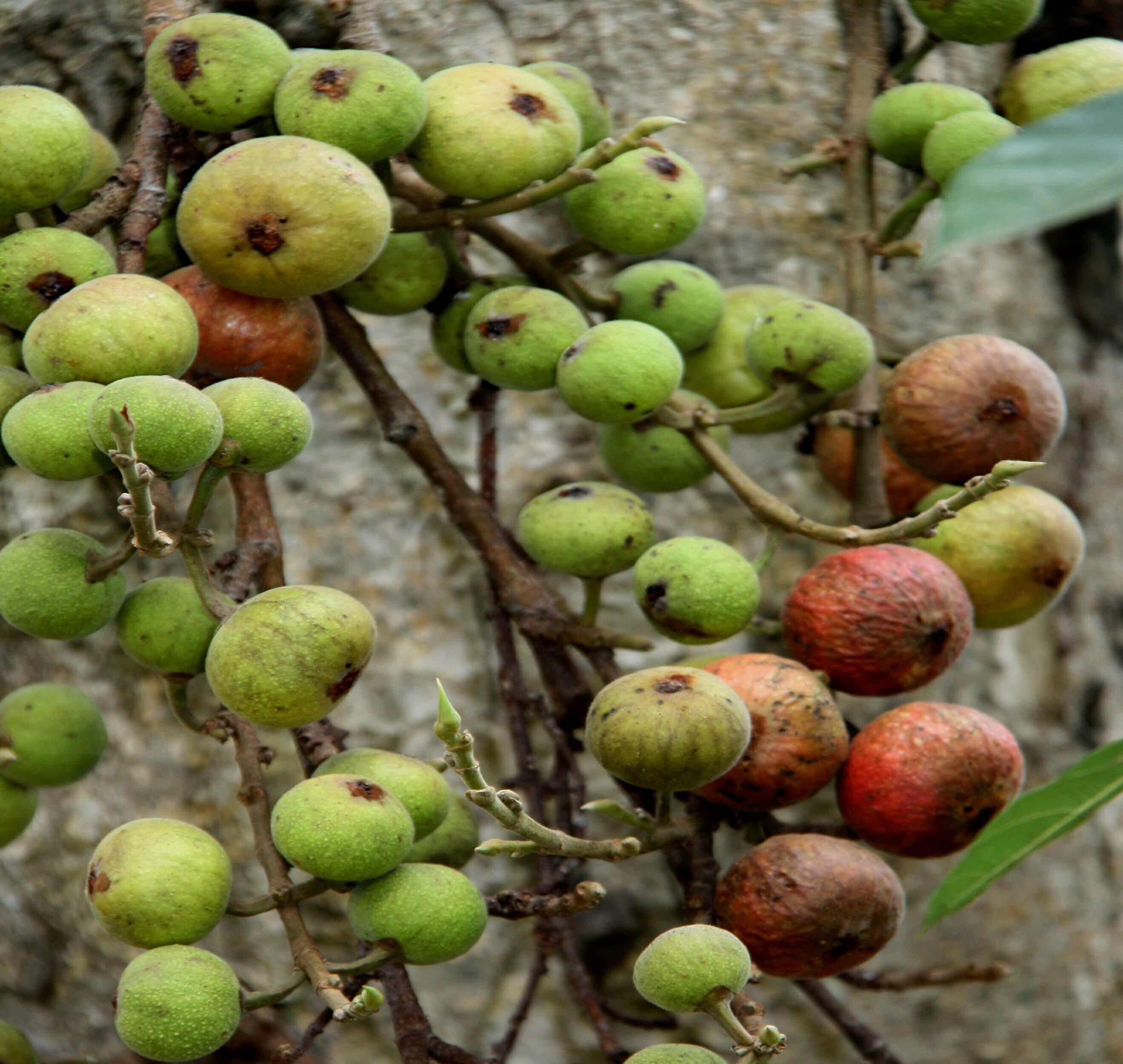 |
|||
| 201. Ficus religiosa Linn Family: MORACEAE Flowering & fruiting: April-July. Ecology: Adundant in villages, often on temple walls. Description: Large trees, epiphytic when young. Leaves rotund or broadly ovate, long caudate, pendulous, shining above, base cordate, slender tailed. Receptacles axillary, germinate, depressed- globose, sessile, black when ripe. Medicinal uses: Ficus religiosa is used in traditional medicine for about 50 types of disorders including asthma, diabetes, diarrhea, epilepsy, gastric problems, inflammatory disorders, infectious and sexual disorders. IUCN Status: |
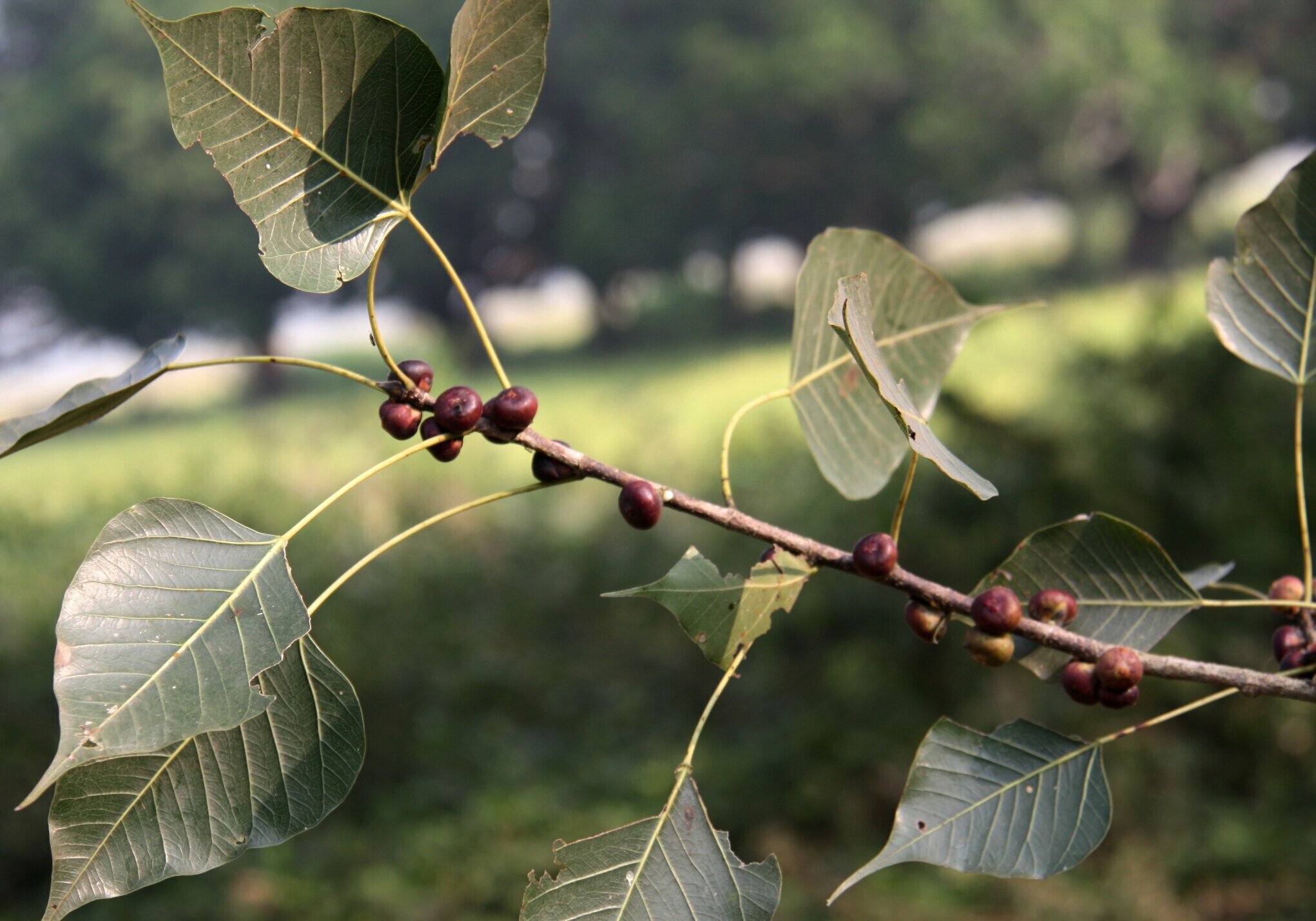 |
|||
| 202. Ficus tinctoria var. parasitica Family: MORACEAE Flowering & fruiting: February-April. Ecology: Common on tree and old walls. Description: Large epipytes. Leaves rhombid or ovate- rhomboid, oblique, obtuse, hispid and shining above, scabrid beneath, apex often rounder. Receptacles mostly paired, axillary, subglobose , umbonate , hirsute , stipitate , bracteate. Tepals papillose , linear. IUCN Status: |
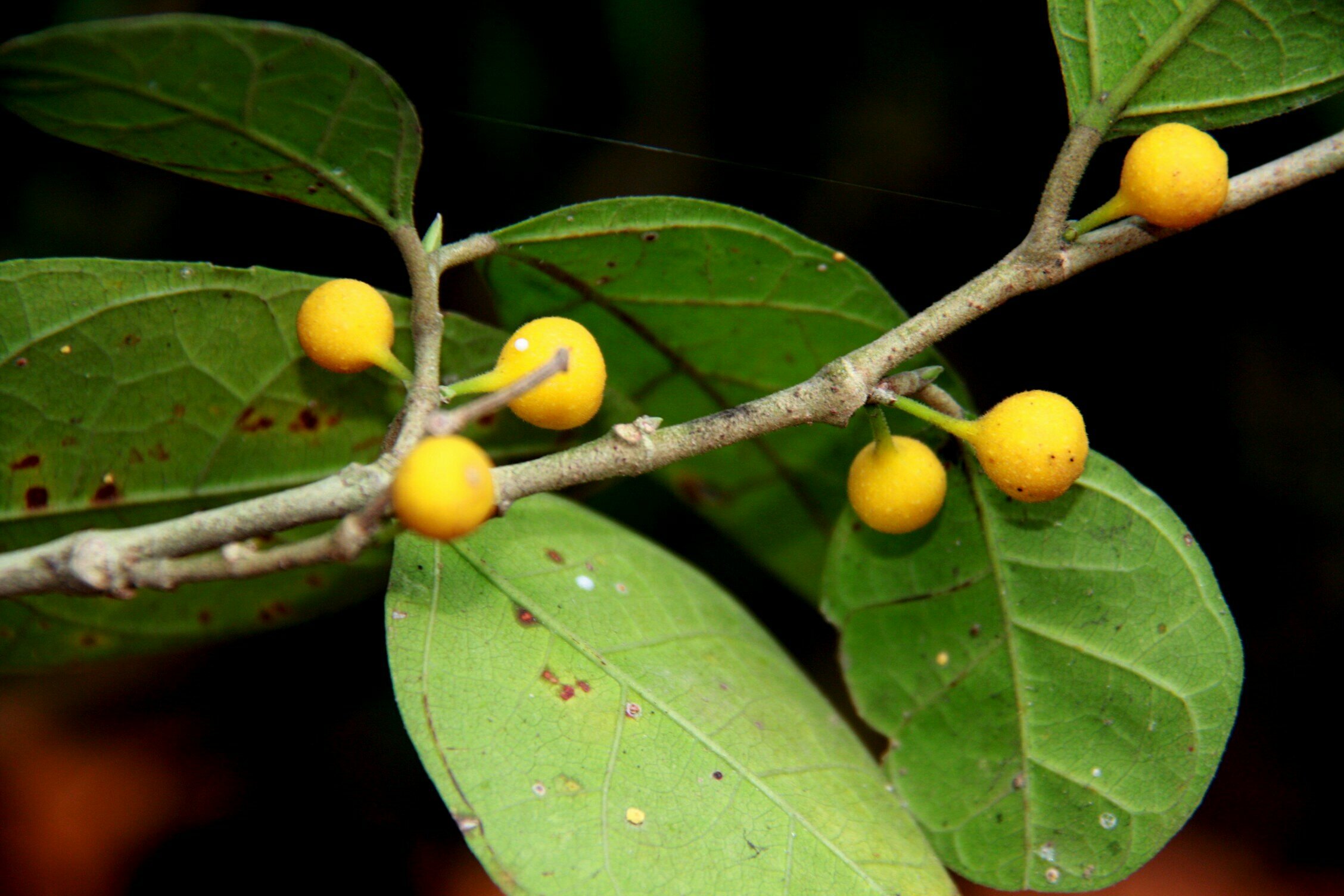 |
|||
| 203. Fimbristylis acuminata vahl Family: CYPERACEASE Flowering & Fruiting: July-October. Ecology: Abundant in moist fallow lands Description: Slender herbs. Stem tufted, striate, leafless. Spikelet solitary, terminal, ovoid-lanceolar. Median glumes oblong-lanceolate, scarious, keeled upwards. Nut globose ovoid, white, with 6 transverse flutings. IUCN Status: |
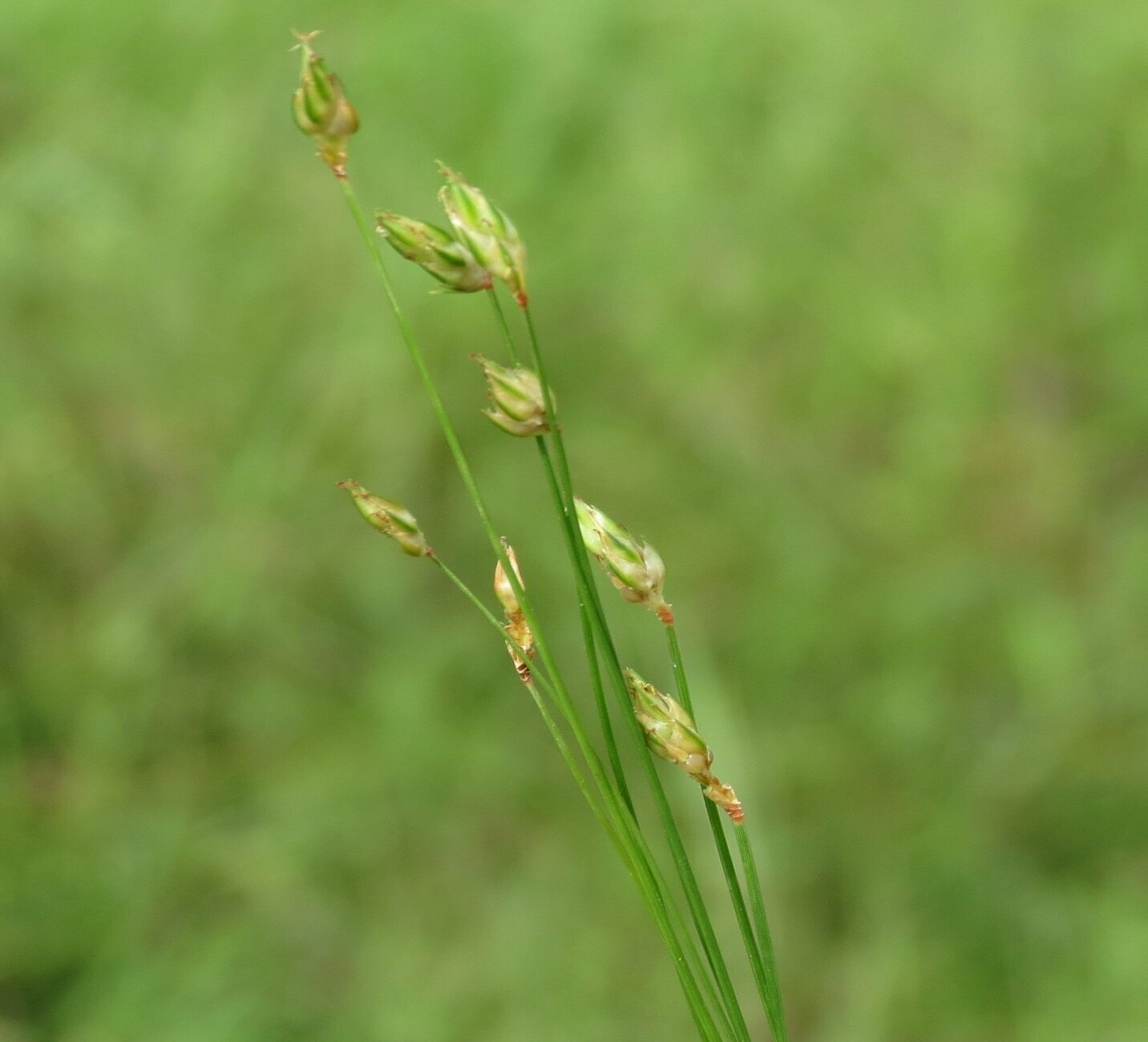 |
|||
| 204. Flacourtia indica (Burn. F.) Family: SALICACEAE Local name: Kantachheura Flowering & Fruiting: March – July Ecology: Very common in degraded forests and waste lands. Description: Rigid much branched bush; throns straight. Leaves oblong elliptic obovate or sub-orbicular, thin-coriaceous, base attenuate, finely pubescent. Flowers green, solitary. Sepals connate below. Anther versatile. Berry globose, red when ripe. Medicinal uses: Fruits are used as appetizing and digestive, diuretic, in jaundice and enlarged spleen. Barks are used for the treatment of intermittent fever. Roots are used in nephritic colic and gum is used in cholera. IUCN Status: |
 |
|||
| 205. Fleminga macrophylla Family: FABACEAE Local name: Brahman Jhati Description: It is a woody, perennial, deep-rooting, and leafy shrub. It is about 0.6-2.4 m high (rarely 3 m). The main stem is prostrate or erect, with numerous stems arising from a single base. The leaves are trifoliate. Medicinal uses: Tuberous roots are detoxified and mixed with some other medicines and given in the 15-20 days in the treatment of spermatorrhoea and all kind of rheumatism. IUCN Status: |
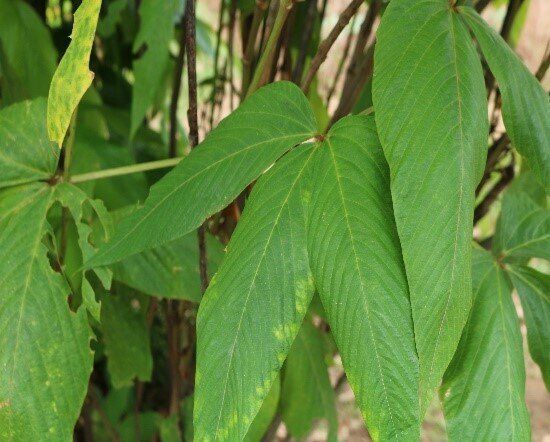 |
|||
| 206. Fuirena ciliaris (Linn.) Roxb Family: CYPERACEASE Flowering & Fruiting: October-January. Ecology: Fairly common in swampy places. Description: Erect, tufted, leafy sedges. Stems or leaf sheaths patently hairy. Leaves linear, acute, densely hairy. Spikelets subcapitate, greenish, heads 1-3, axillary and terminal. Glumes obovate, hairy, awned. Petals clawed. Nut 3-quet rous, brown. IUCN Status: |
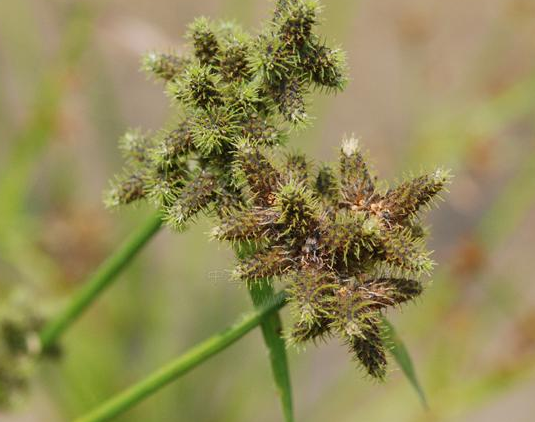 |
|||
| 207. Gardenia gummifera Family: RUBIACEAE Local name: Ghurudu, Kurulu Description: Gummy gardenia is a small tree which grows up to 3 meters. Gardenia is a genus of about 250 species of flowering plants. The flowers are solitary or in small clusters, white or pale yellow, with a tubular-based flower with 5-12 petals, form 5-12 cm diameter. Medicinal uses: Green fruits are collected and inner brown, sweet, sour and tasty part is eaten in the month of july. IUCN Status: |
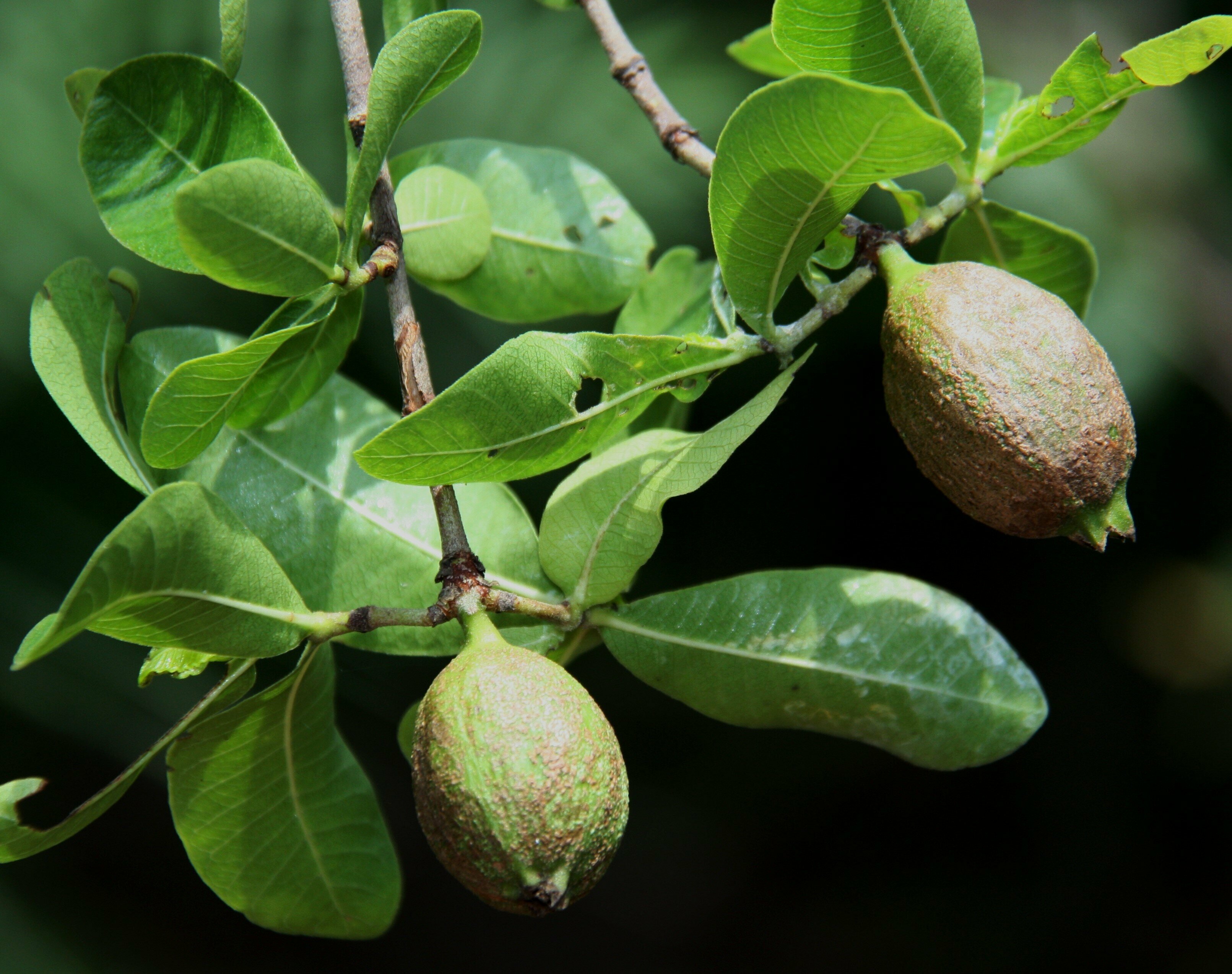 |
|||
| 208. Gardenia jasminoides Family: RUBIACEAE Local name: Sugandhraj Description: It is a shrub with greyish bark and dark green, shiny, evergreen leaves with prominent veins. It is characterized by a rounded habit with very dense branches with opposite leaves, lanceolate-oblong, leathery or gathered in groups on the same node and by a dark green, shiny and slightly waxy foliage. Medicinal uses: The roots are used to treat headache, dyspepsia, nervous disorders, and fever. The leaves are applied in febrifugous poultices. The fruits are used against jaundice and diseases of the kidneys and lungs It is planted as ornamental in home garden. IUCN Status: |
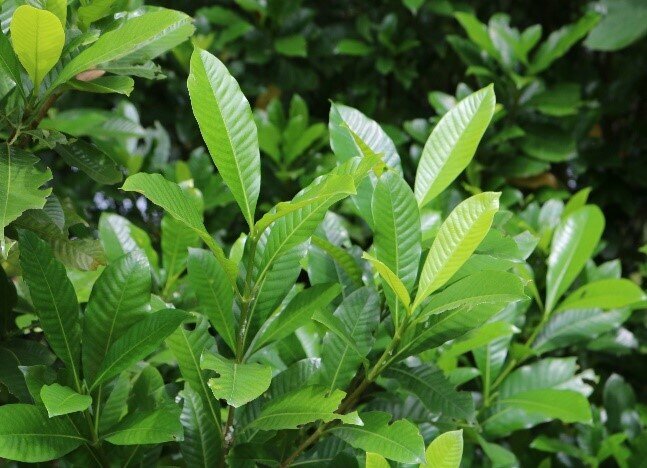 |
|||
| 209. Gardenia latifolia Family: RUBIACEAE Local name: Dom Ghurudu Description: Indian boxwood is a small deciduous tree or large shrub, which often grows on other small plants, which it eventually kills, the way Figs do. Bark is greenish-grey, peeling and leaving smooth, concave, rounded depressions. Medicinal uses: Stem bark is given with honey and hot water for one month in empty stomach to reduce body over weight. During the treatment consumption of un-boiled rice, pulse of lentil and rectified butter are restricted. Victim should not work for long in directly sun light during treatment. IUCN Status: |
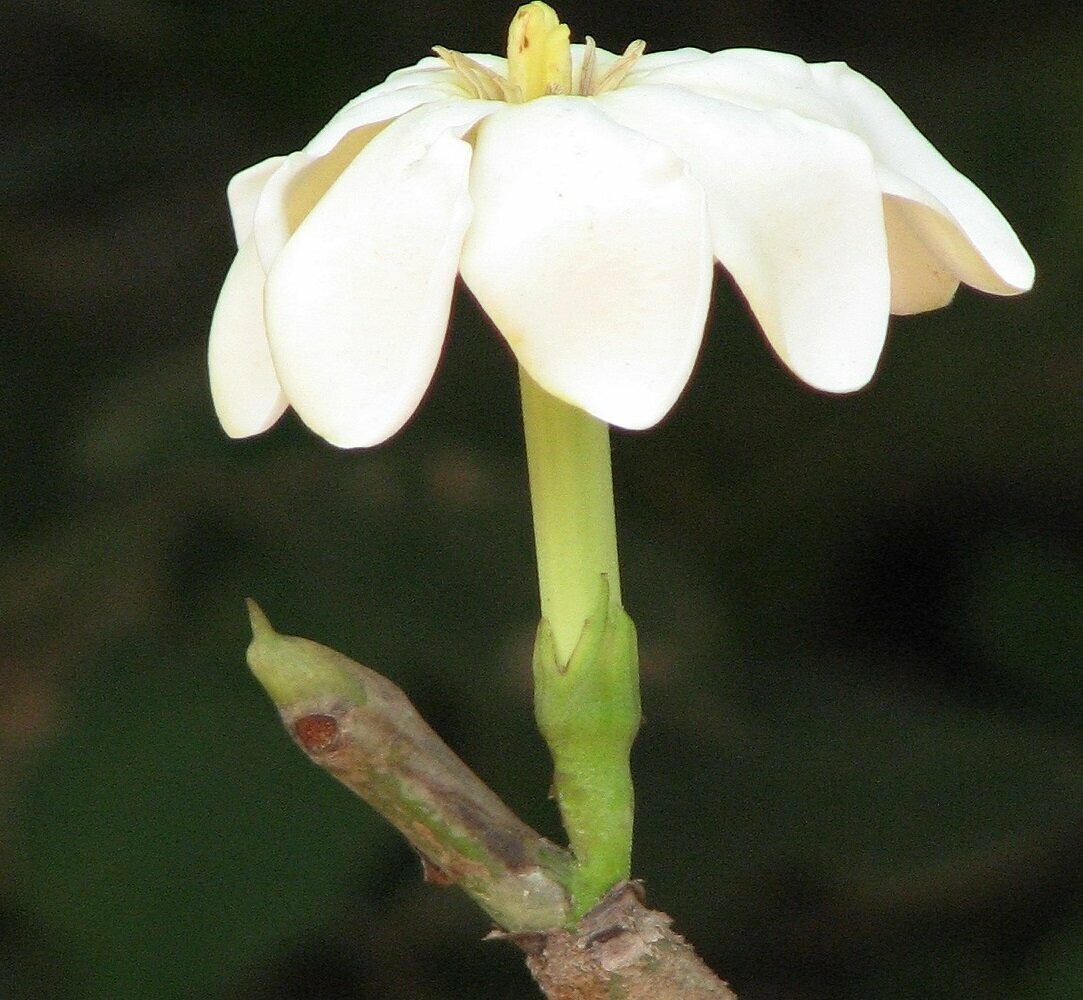 |
|||
| 210. Gouania leptostachya DC. Family: RHAMNACEAE Flowering: October-November. Fruiting: December-January. Ecology: Occasional in dry open forests especially on ravines. Description: Climbing shrubs. Leaves alternate, ovate, cordate, crenate-serrate. Flowers polygamous, white, 5-merous, clustered on the rachis of paanicled terminal racemes. Medicinal uses: The leaves contain an alkaloid, and that they are used for washing ulcers. The bark is used as a shampoo. The pulped stems, roots and leaves are used to treat skin complaints. The plant probably contains saponins. IUCN Status: |
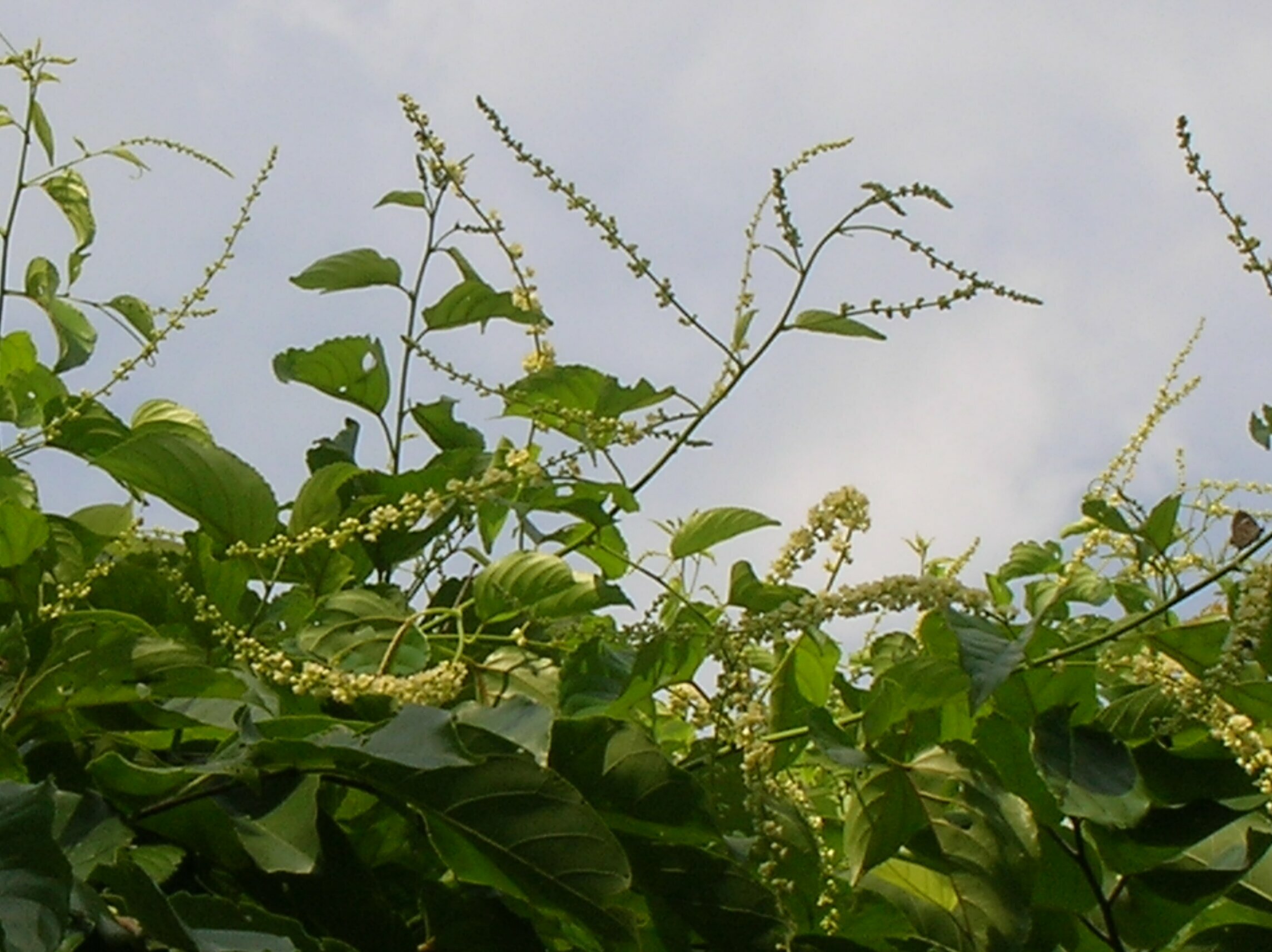 |
|||
| 211. Glinus oppositifolius Family: MOLLUGINACEAE Flowering & fruiting: May – August. Ecology: Common, along stream beds in shady places. Description: Prostrate, glabrous herbs. Leaves oblanceolate, obscurely apiculate, base narrow. Flower lax, pedicellate, greenish white. Stamens 5. Ovary 3-loculed. Styles 3. Medicinal uses: It has been reported for treating joint pains, inflammation, diarrhea, intestinal parasites, fever, furuncles, skin disorders and the plant macerate is also used as a wound healing remedy. IUCN Status: |
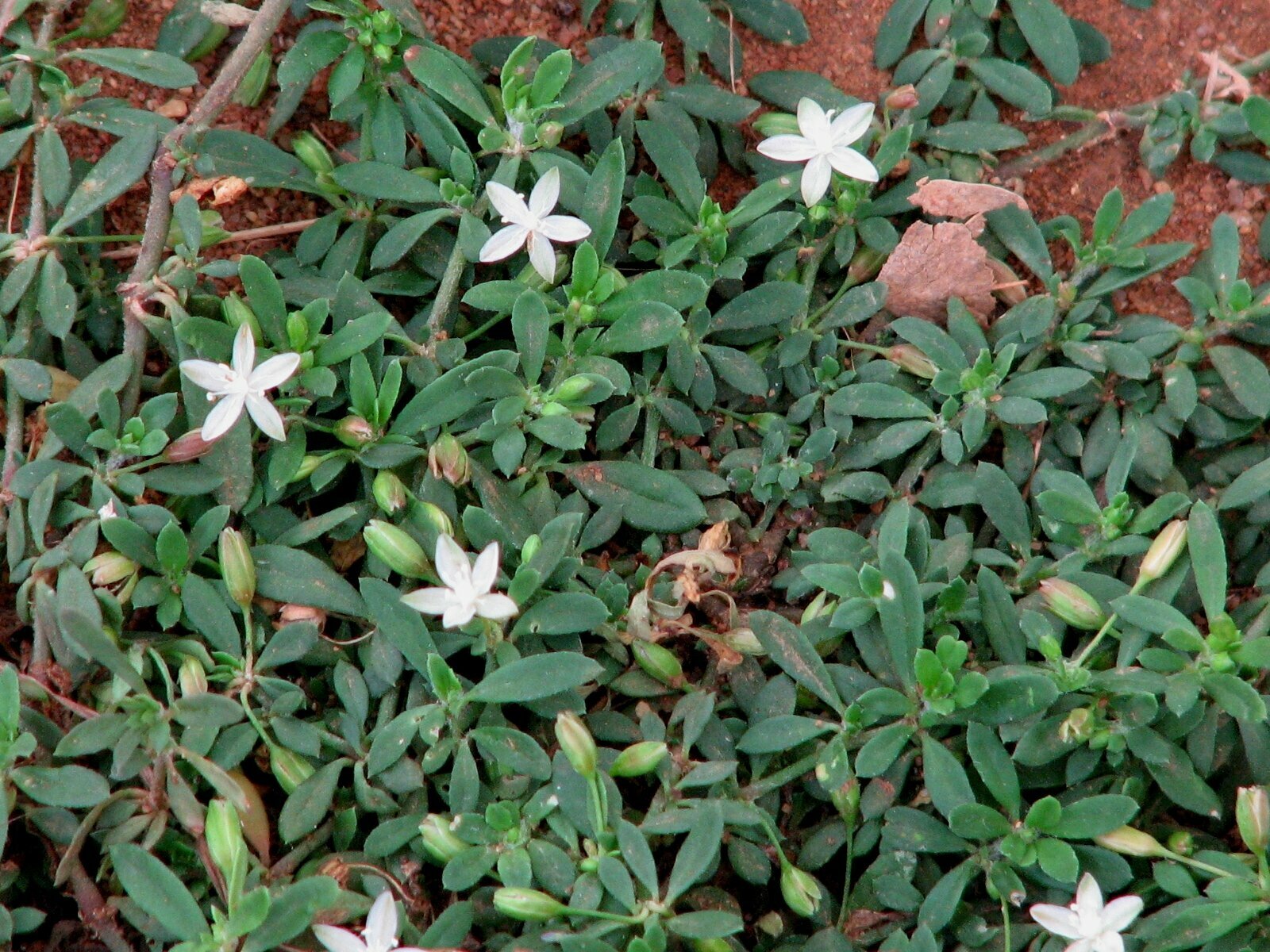 |
|||
| 212. Globba marantina Linn. Local Name: Chota rasna Flowering & fruiting: August-November. Ecology: Common, in moist and shady localities near stream. Description: Leaves small, lanceolate to elliptic, long-tailed distichous, pubescent beneath. Bracts rhomboid-ovate, acute. Flowers yellow, in bract axils in simple spikes. Petals & staminodes reflexed. Anther 2-lateral winged, lobes 3-angular. Capsule rugose. Medicinal uses: Ethnomedicinally roots and leaves of G.marantina is claimed to be used in the management of asthma, rheumatoid arthritis, cough, cold, snakebite and others. IUCN Status: |
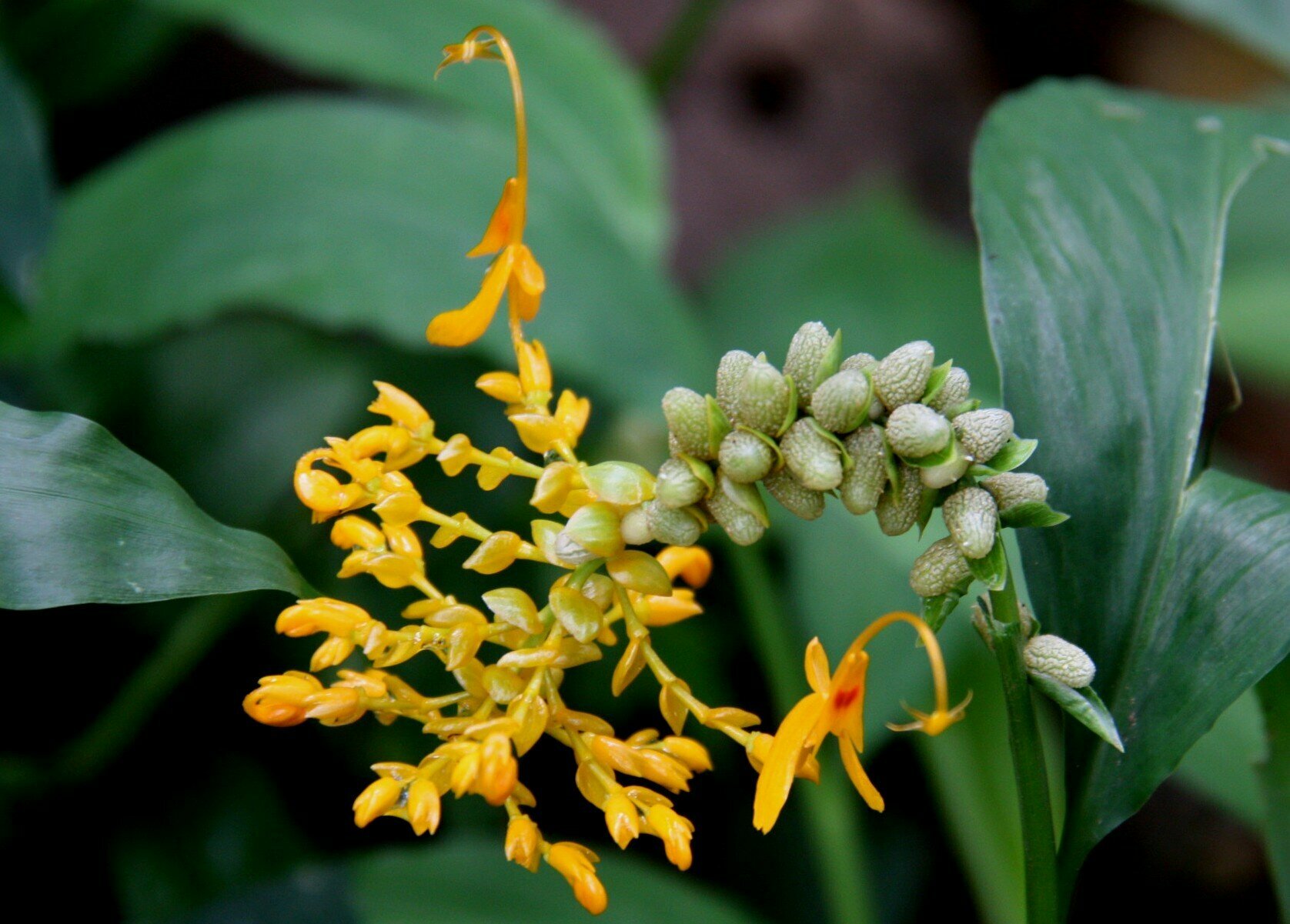 |
|||
| 213. Glochidion lanceolarium (Roxb.) Family: PHYLLANTHACEAE Flowering: March-April., Fruiting: August-December. Ecology: Frequent, along streams in dense forests. Description: Large shrubs, twigs angular. Leaves elliptic-acuminate, dark green, coriaceous, shining, base obliquely cuneate. Male flowers fascicled, axillary, yellowish with 4-6 anthers. Females green, narrow-campanulate. Capsule orbicular. IUCN Status: |
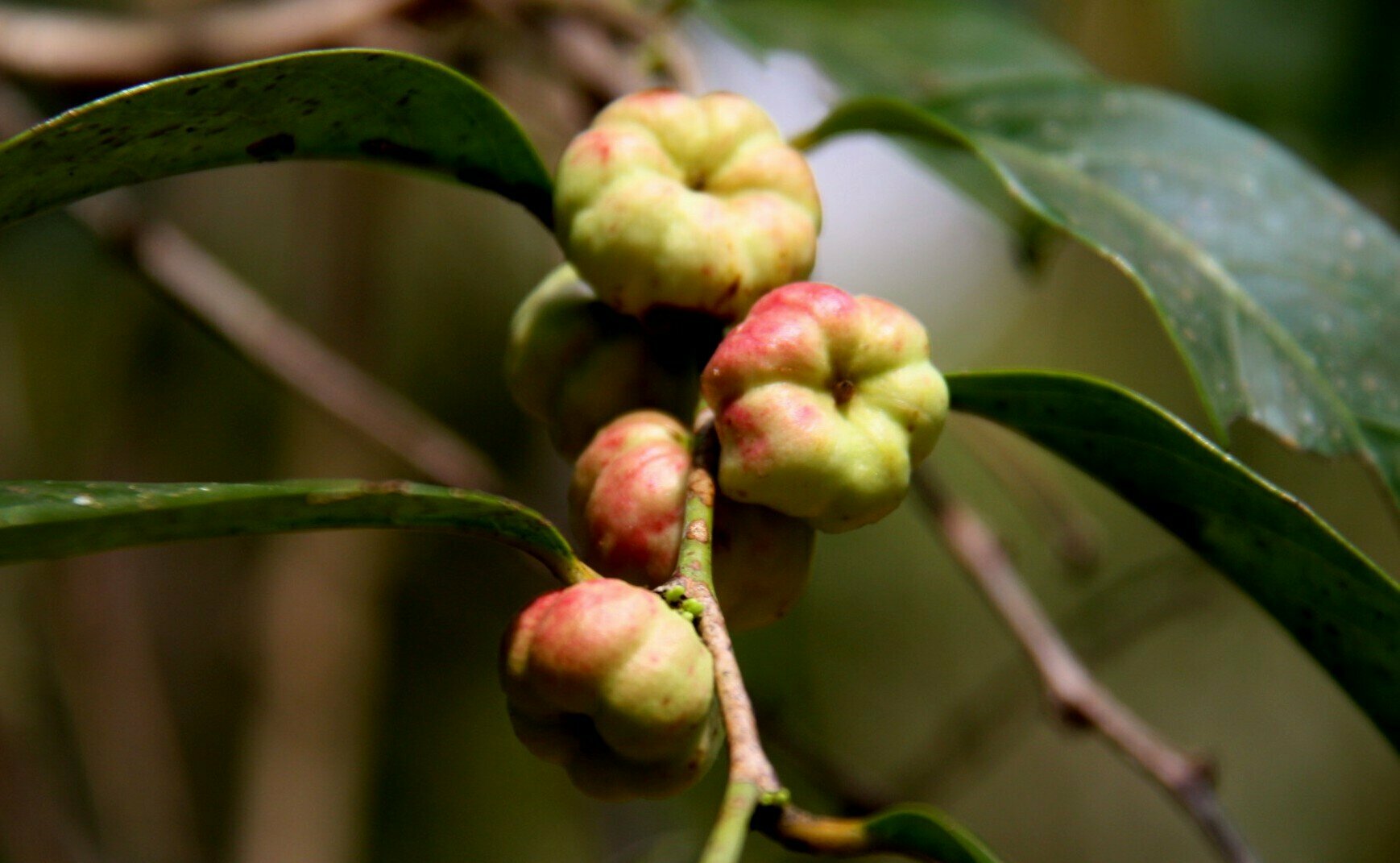 |
|||
| 214. Gloriosa superba Linn Family: COLCHICACEAE Flowering: July- August, Fruiting: August- October Ecology: Abundant in hedges and thickets Description: Stem leafy, scrambling. Leaves alternate, opposite or 3-nately whorled, lanceolate, sessile or subsessile, tipp circinate. Flowers inverted, large, axillary, solitary. Tepals beautifully waved and crisped, lower half yellow, upper red. Capsule septicidal. Medicinal uses: It is used traditionally for the treatment of bruises, colic, chronic ulcers, haemorrhoids and cancer, and is also employed as a tonic and purgative. It is put into poultices to relieve neuralgia, and used in topical applications to treat arthritic conditions, swellings of the joints, sprains and dislocations. IUCN Status: |
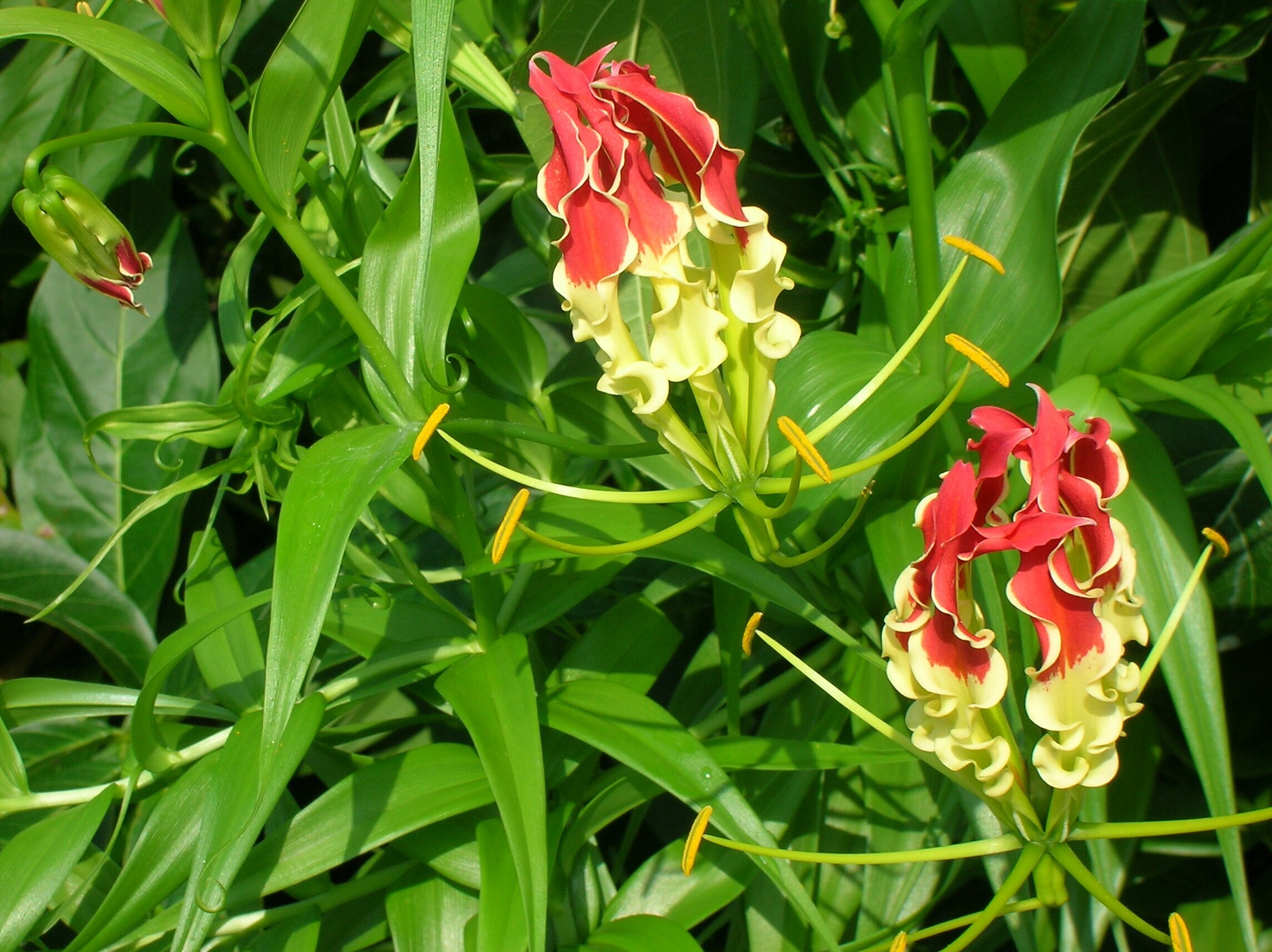 |
|||
| 215. Glycosmis pentaphylla (Retz.) Family: RUTACEAE Flowering: December-March, Fruiting: March – May Ecology: Gregarious on foot hill in scrub forests. Medicinal uses: The leaves are considered appetitive, stomachic and an infusion of roasted leaves is prescribed for women after delivery as an appetizer. In traditional Indian medicine, the plant is used to treat diarrhoea, coughs, rheumatism, anaemia, and jaundice. Juice of the leaves is used in fever, liver complaints and as a vermifuge. A paste of the leaves, mixed with ginger, is applied for eczema and skin affections. A decoction of the roots is given for facial inflammation. IUCN Status: |
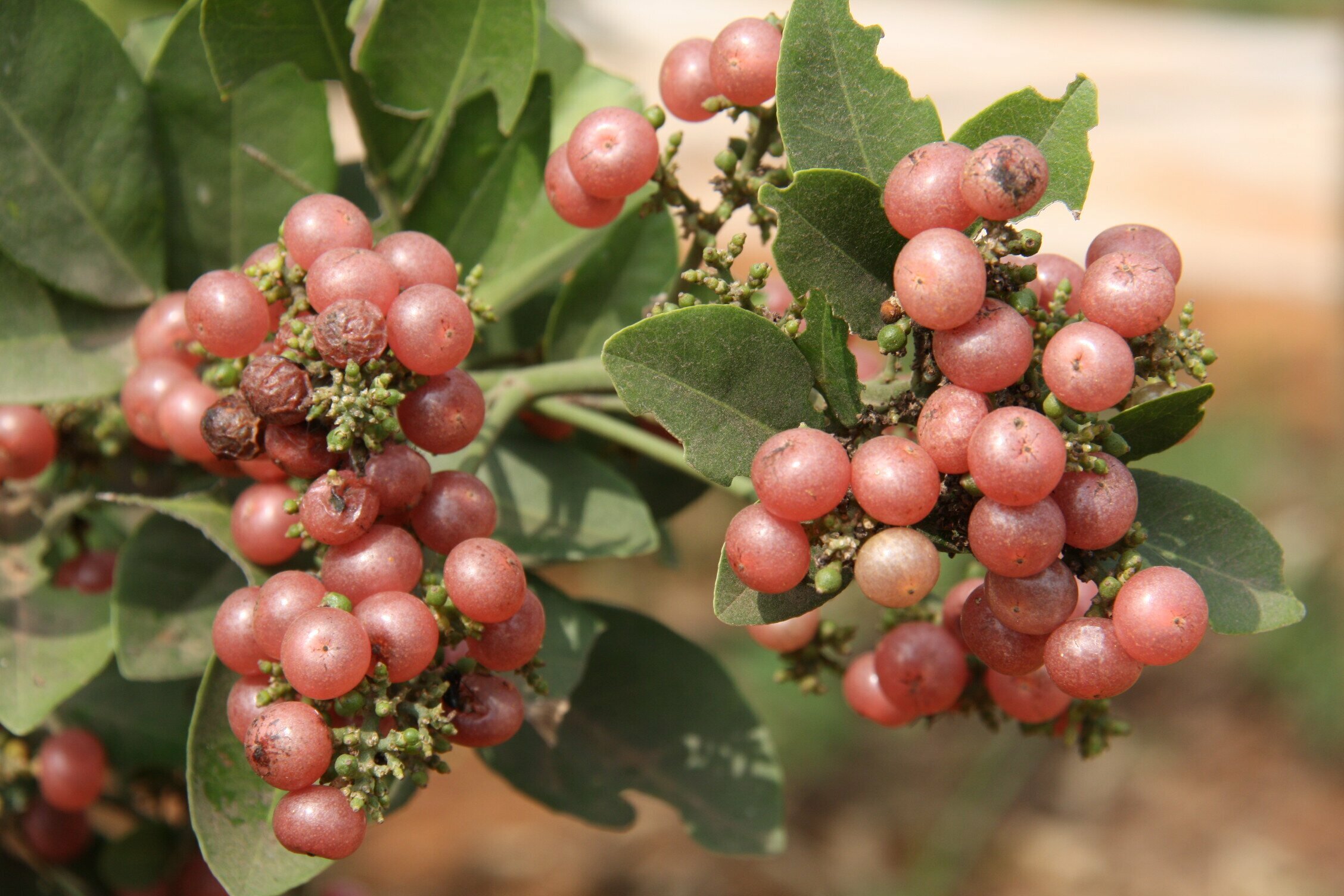 |
|||
| 216. Gmelina arborea Roxb. Family: LAMIACEAE Flowering: March-April, Fruiting: May-June Ecology: Occasional, on foot hills & valleys, frequently planted. Description: Large tree, shoots tomentose. Leaves opposite, broadly ovate, zminate, cordate, glaucous beneath. Medicinal uses: The leaves are considered appetitive, stomachic and an infusion of roasted leaves is prescribed for women after delivery as an appetizer. In traditional Indian medicine, the plant is used to treat diarrhoea, coughs, rheumatism, anaemia, and jaundice. Juice of the leaves is used in fever, liver complaints and as a vermifuge. A paste of the leaves, mixed with ginger, is applied for eczema and skin affections. A decoction of the roots is given for facial inflammation. IUCN Status: |
 |
|||
| 217. Grangea maderaspatana (Linn.) Family: COMPOSITAE Local name: Agni kumara Flowering & fruiting: December – March Ecology: Common in fallow fields & waste grounds, often forming a dense mat. Description: Prostrate herbs. Branches radiating, whitish pubescent glandular. Leaves sessile or subsessile, alternate, lyratepinnatifid. Heads yellow. Bracts 2-seriate. Flowers yellow. Achenes oblong, greenish, puppus white. Medicinal uses: Whole plant: antipyretic, astringent. Root: diuretic, anthelmintic and stimulant. Leaves: stomachic, deobstruent, antispasmodic, antiseptic and anodyne. IUCN Status: |
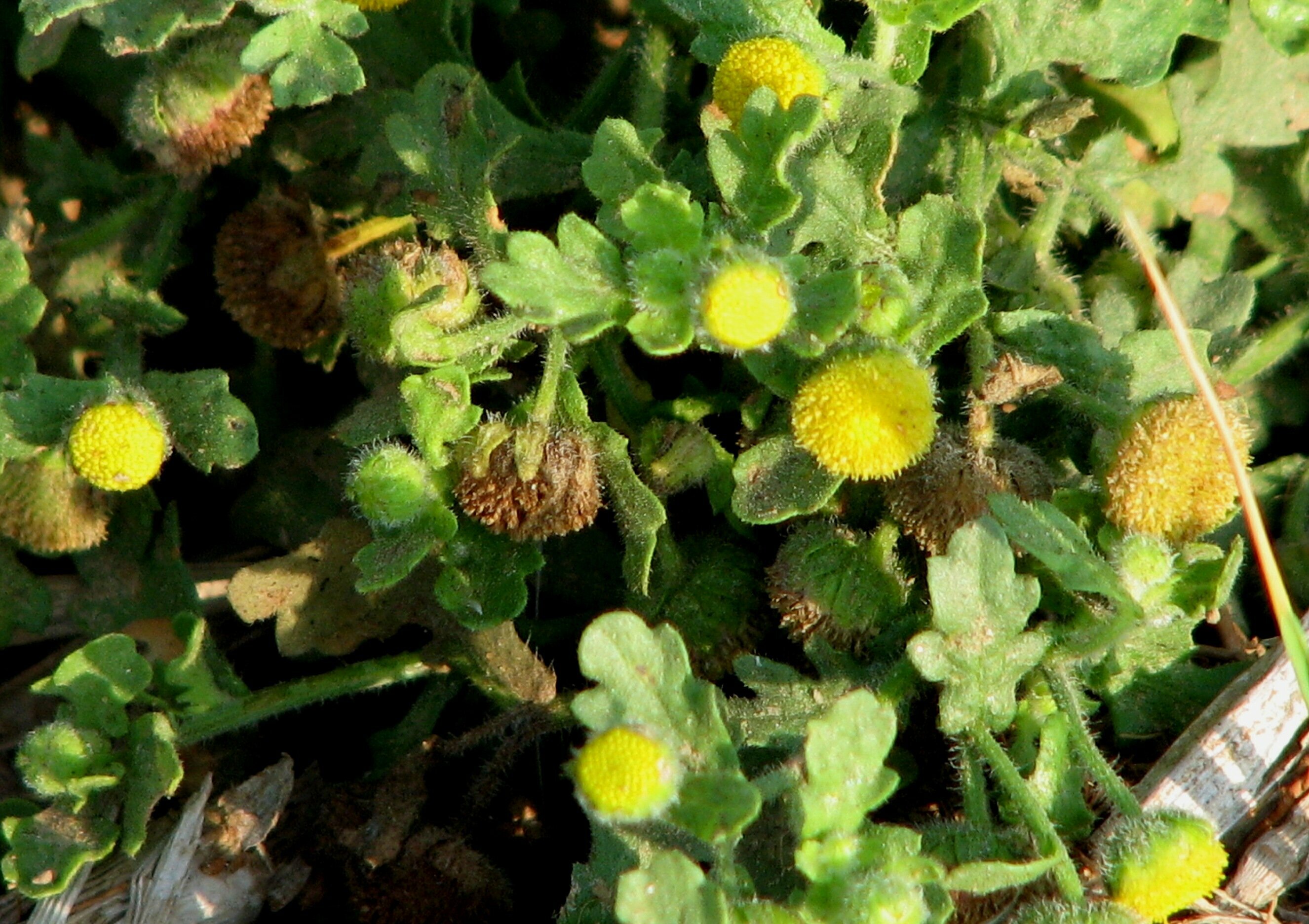 |
|||
| 218. Grewia rothii DC. Family: MALVACEAE Local name: Agni kumara Flowering: July – October, Fruiting: October – December Ecology: Common on foot hills in open forests. Description: Appressed pubescent shrubs. Leaves ovate-lanceolate acuminate, oblique, serrulate, palmi-nerved. Buds obscurely angled, ovoid. Sepals yellow inside, silky with outside. Medicinal uses: The leaves are soaked in water overnight, or maybe hot water is poured over them, and the liquid allowed to become cold. It forms a somewhat mucilaginous liquid and is said to be very efficacious as a remedy for diarrhoea and dysentery. IUCN Status: |
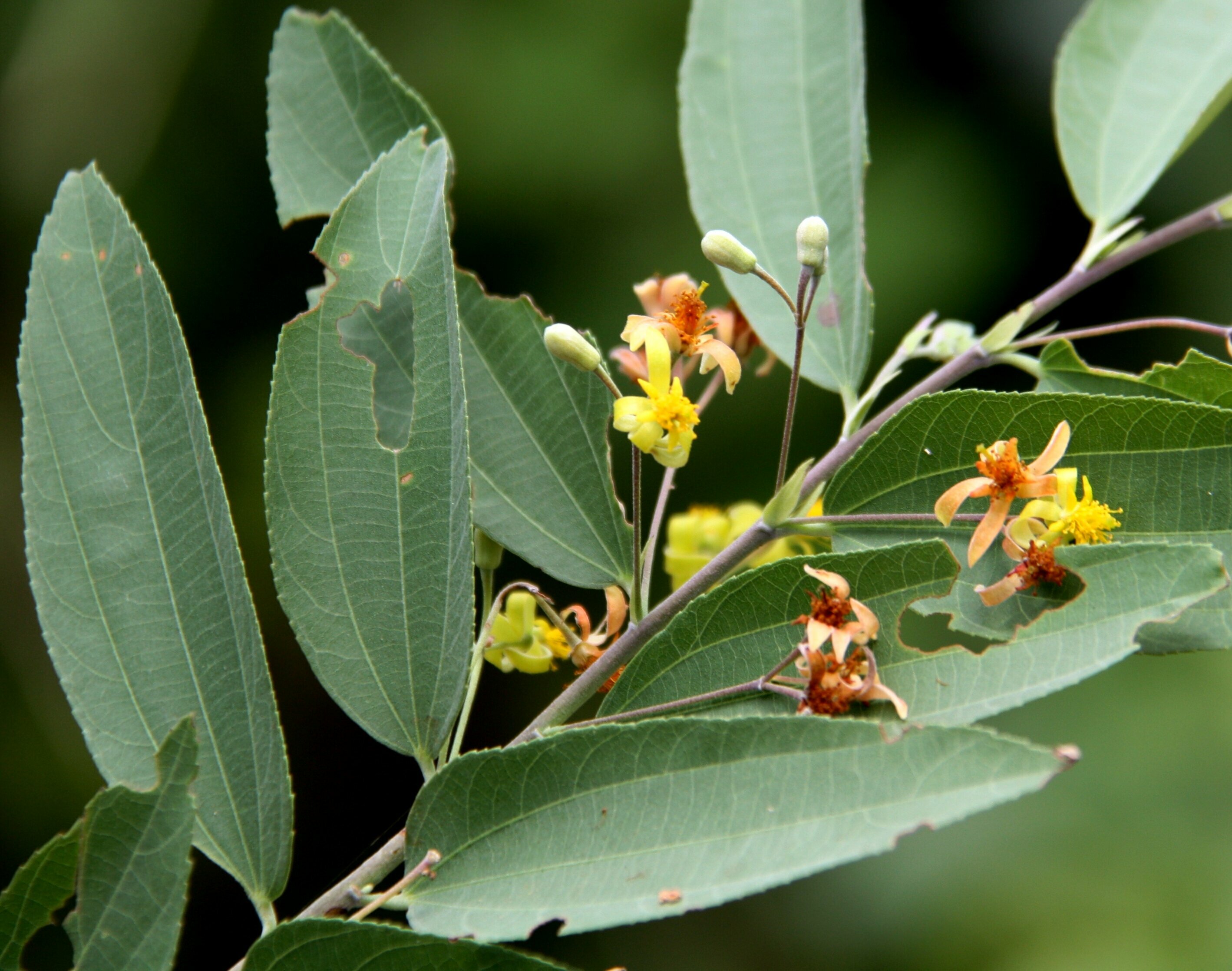 |
|||
| 219. Grewia tillifolia vahl. Family: MALVACEAE Local name: Agni kumara Flowering: August, Fruiting: September – December Ecology: Common on foot hills in open forests. Description: Bar smooth. Branchelet stellate-pubescent. Leaves elliptic to ovate, cordate often at base, serrate. Flowers yellow in axillary, many flowered umbeite cynes. Petals spathulate, glandular. Drupe globose, sparsely hiruates. Medicinal uses: This plant is used in treating non healing wounds, ulcerative colitis, menorrhagia, cough. IUCN Status: |
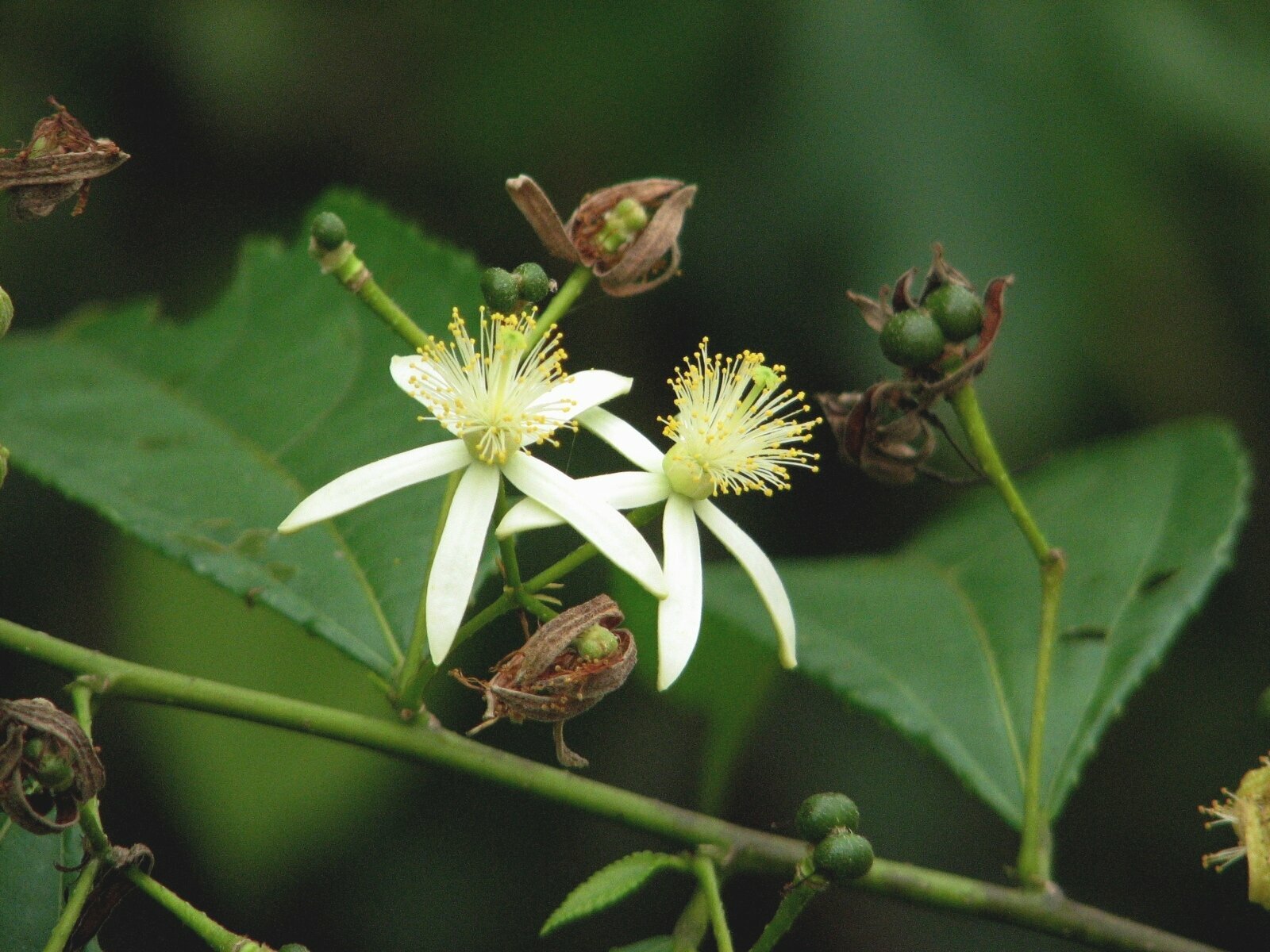 |
|||
| 220. Guazuma ulmifolia Lam. Family: STERCULIACEAE Flowering: April-July, Fruiting: July- November Ecology: Not common, often planted in road sides. Description: Stellate tomentos trees. Leaves ovate, glaucous beneath, bae obliquely cordate, serrulate, obtuse. Medicinal uses: The plant is antibacterial, antiinflammatory, antifungal, antitussive, antiviral, astringent, blood purifier, cardiac, diaphoretic, digestive, diuretic, febrifuge, haemostatic, hypotensive, oxytocic, vulnerary. The bark is the part most used. The fruit (in Mauritius), the roasted seeds (in Java), and the bark (in India) are officinal remedies against elephantiasis). An infusion of the crushed, seed soaked in water, is used to treat diarrhoea, dysentery, colds, coughs and venereal diseases. It is also used as a diuretic and astringen. IUCN Status: |
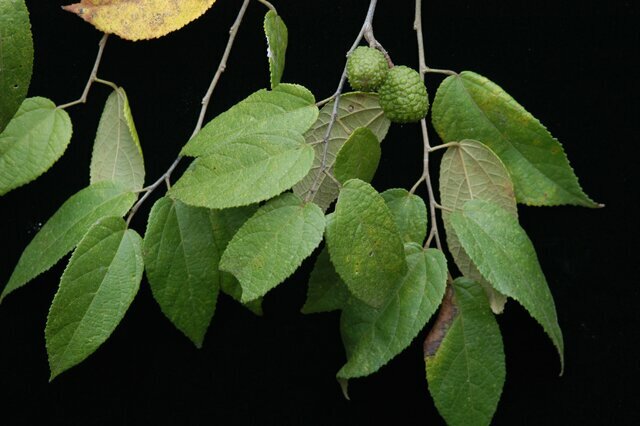 |
|||
| 221. Gymnema sylvestre (Retz.) Family: APOCYNACEAE Local name: Gudmari Flowering: August September. Fruiting: September – December. Ecology: Occasional, in dense scrub forests. Medicinal uses: Reduces Sugar Cravings by Making Sweet Foods Taste Less Appealing. Helps Lower Blood Sugar Levels. May Contribute to Favorable Insulin Levels by Increasing Insulin Production. Improves Cholesterol and Triglyceride Levels, Reducing Heart Disease Risk. May Aid Weight Loss. IUCN Status: |
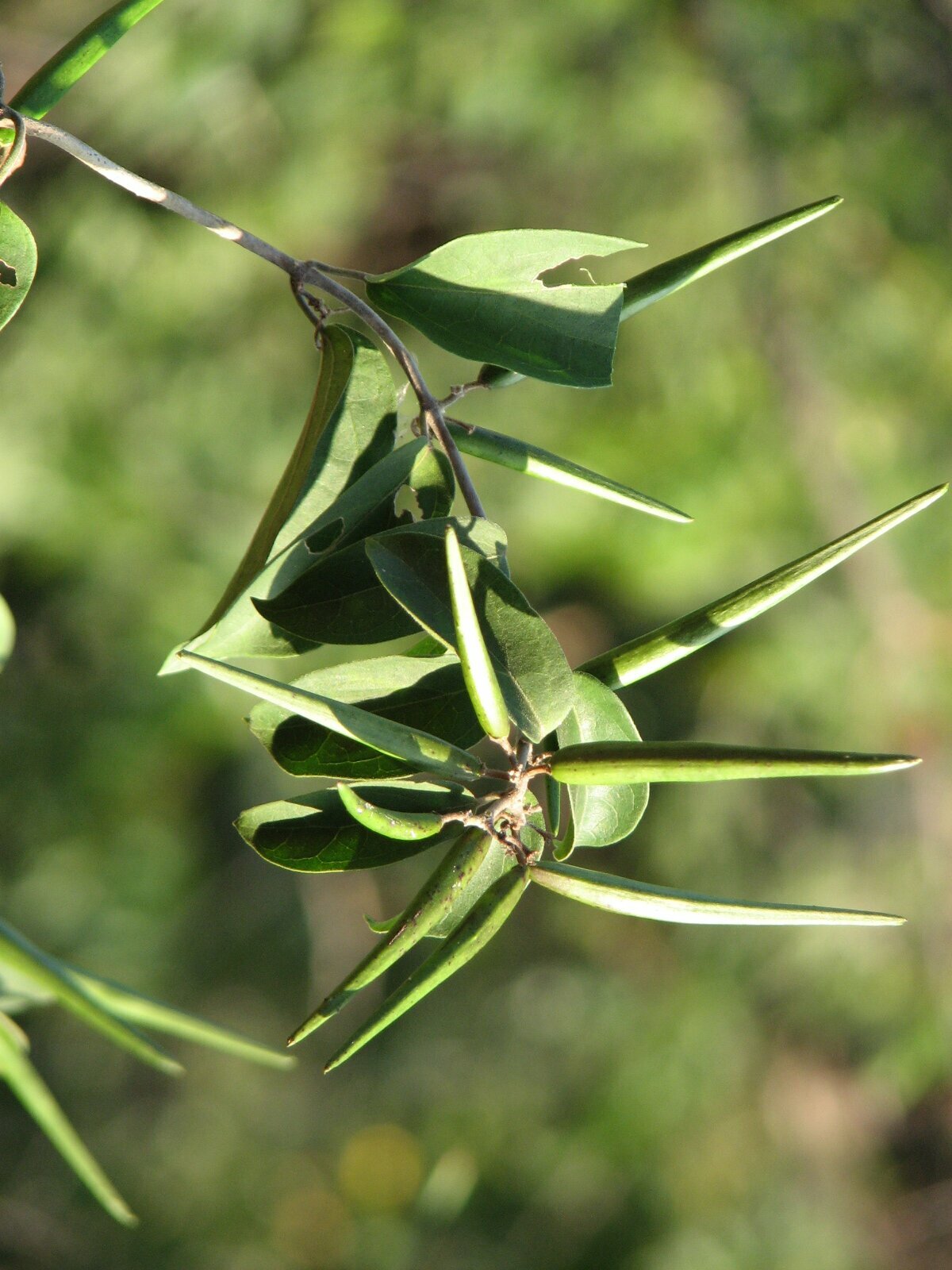 |
|||
| 222. Hackelochloa granularis (Linn.) Family: POACEAE Flowering & Fruiting: September-December. Ecology: Very common in plateau and moist hill slopes. Description: Erect annuals. Leaves linear-lanceolate, base subcordate, flaccid, acuminate, very hairy. Sessile spikelets globose, 2-sexual, 4-glumed, winged. Pedicellate spikelets distichous, green, in 2 rows. Pedicellate spikelets distichous, green, winged. IUCN Status: |
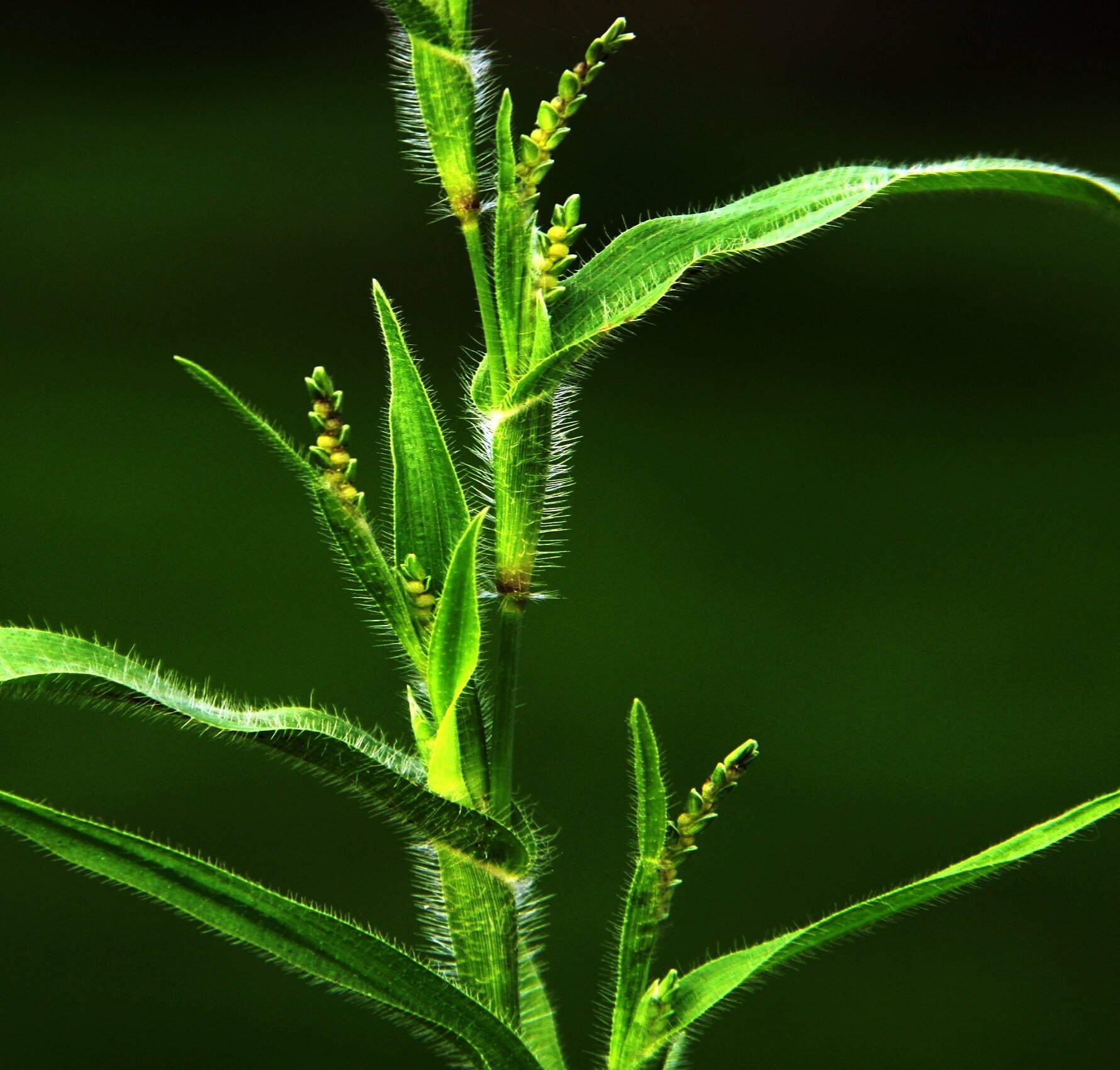 |
|||
| 223. Haldina cordifolia (Roxb.) Family: RUBIACEAE Local name: Kuruma Flowering: May-July, Fruiting: February-April Ecology: Abundant, in deciduous forests. Description: Large trees; young parts pubescent. Leaves cordate, broadly ovate or orbicular, apex abruptly acuminate, pubescent below. Stipules enclosing the terminal bud. Flowers 5-merous, sessile, creamy-yellow. Capsule clustered: cocci-2. Seeds winged. Medicinal uses: It is used for the treatment of skin diseases, wounds, vomiting, intestinal worms, indigestion and the diseases of the liver. IUCN Status: |
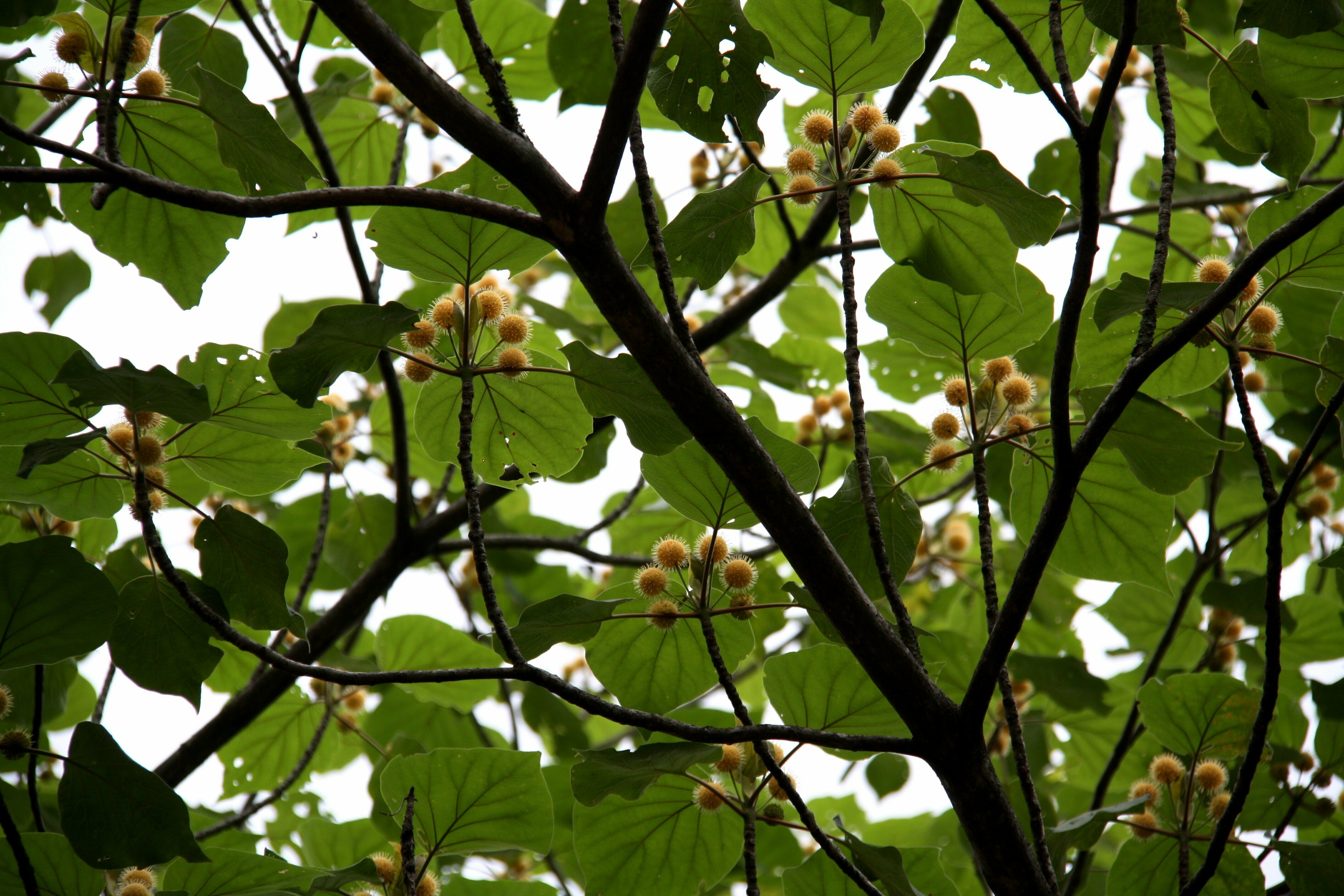 |
|||
| 224. Hedyotis brachiata Wt. & Arn. Family: RUBIACEAE Flowering & fruiting: August – November Ecology: Abundant on dry exposed hill slopes and plateau. Description: Erect, slender annuals. Stem acutely 4-6 angled. Leaves filiform. Flowers minute, white, on elongate, lax, terminal panicles. Crown of calyx raised above the hypanthium. IUCN Status: |
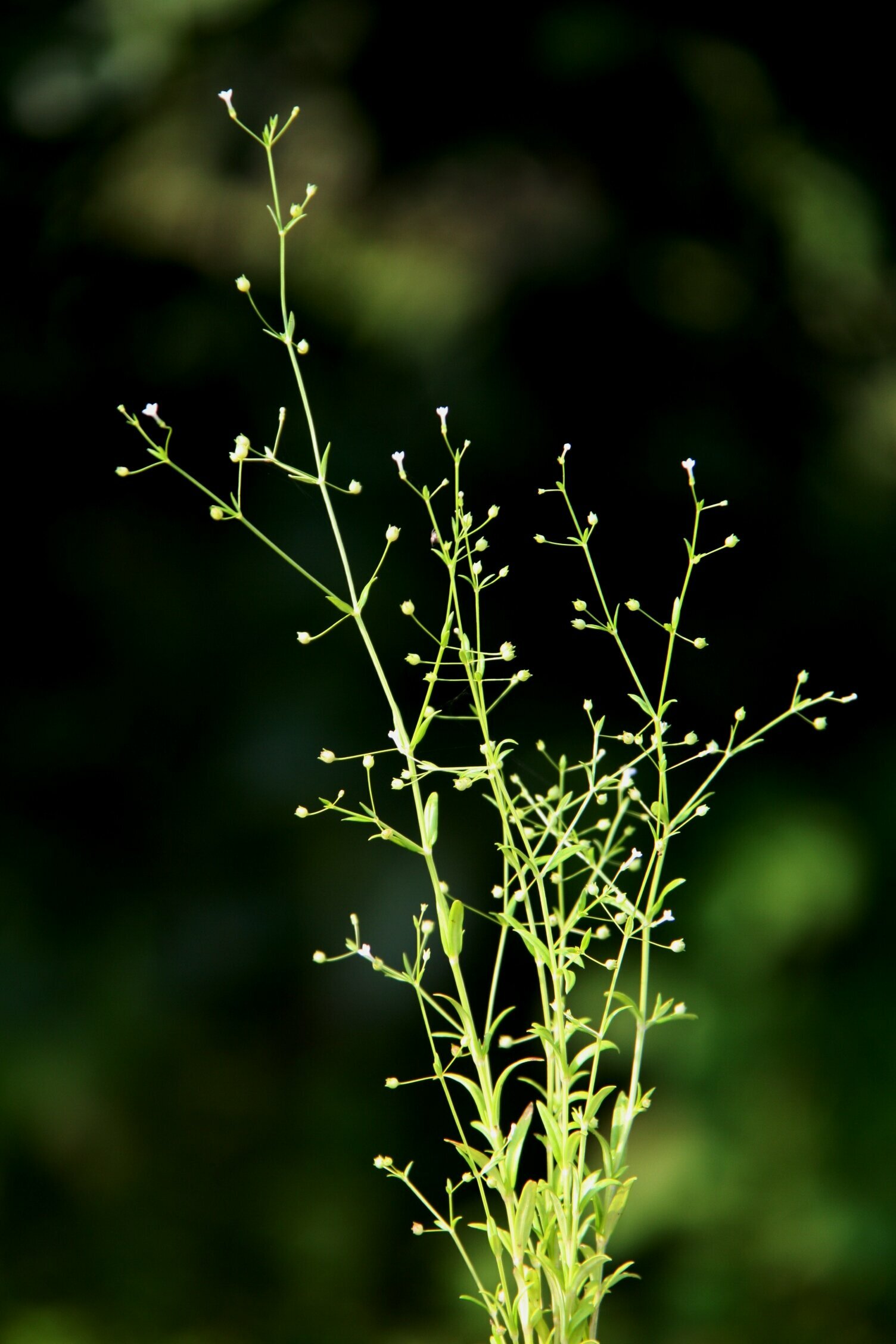 |
|||
| 225. Hedyotis corymbosa (Linn.) Family: RUBIACEAE Flowering & fruiting: June-January Ecology: Very weed in waste places and plateau Description: Diffuse, slender, glabrous or minutely hispidulous annuals. Leaves linear-lanceolate. Flowers minute, white, on the axillary peduncles. Sepals subulate. Capsule not protruding. Medicinal uses: The plant is known to clear heat and toxins, activate blood circulation, promote diuresis ad relieve stranguria. It is also active against appendicitis, hepatitis, pneumonia, cholecystesis, urinary infection, cellulites and snake bite. IUCN Status: |
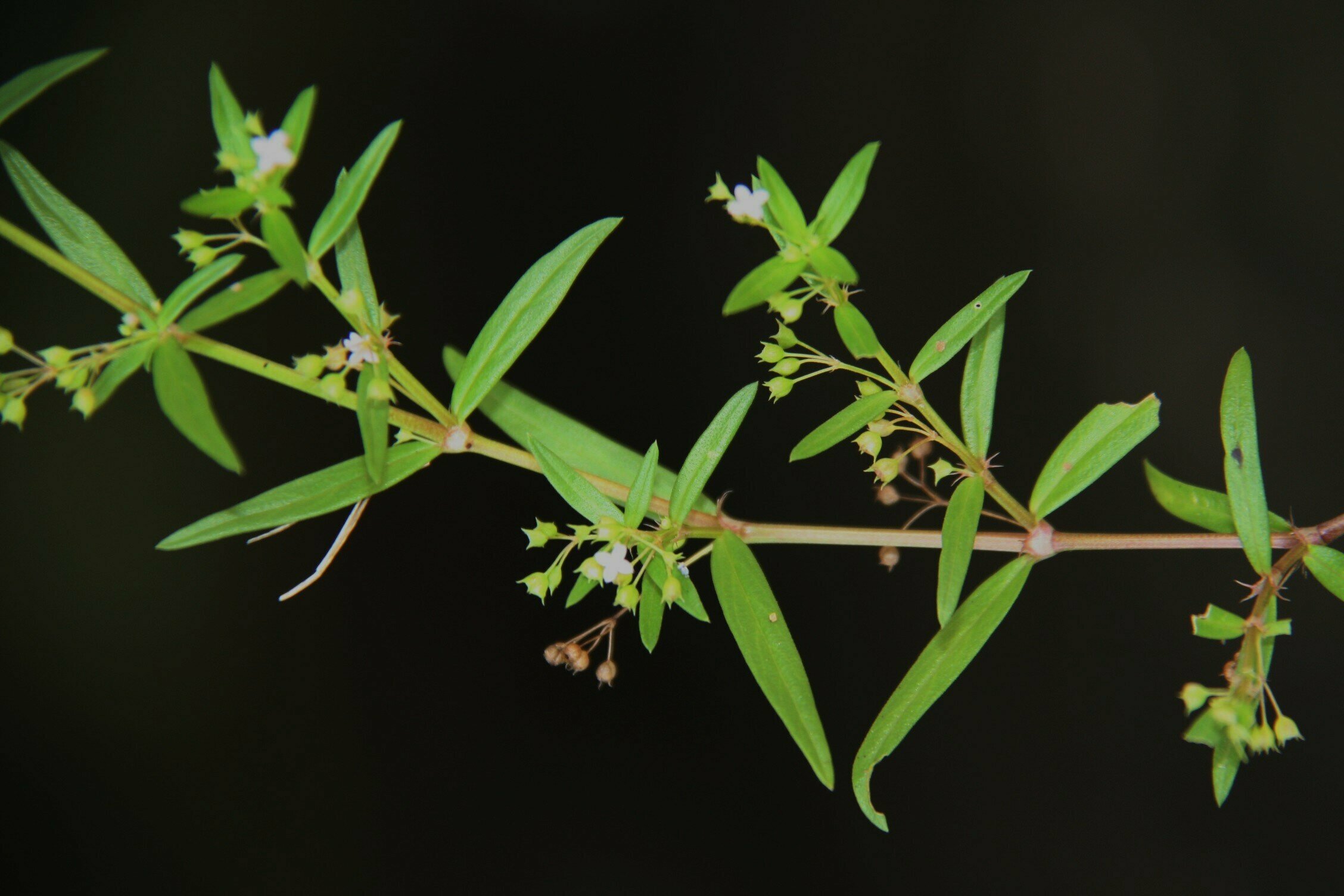 |
|||
| 226. Hedyotis diffusa willd. Family: Flowering & fruiting: July-October Ecology: Common, along streams and wet grassy fields. Description: Prostrate or decumbent—ascending, glabrous annuals. Leaves linear or narrowly lanceolate. Flowers solitary, white, sessile or short pedicel led. Stamen and styles exserted. Capsule didymus with a truncate mouth. Medicinal uses: It is used to eliminate toxins. It is used in combination with other herbs for the treatment of hepatitis, snake bites and tumours of the liver, lung, stomach and rectum. IUCN Status: |
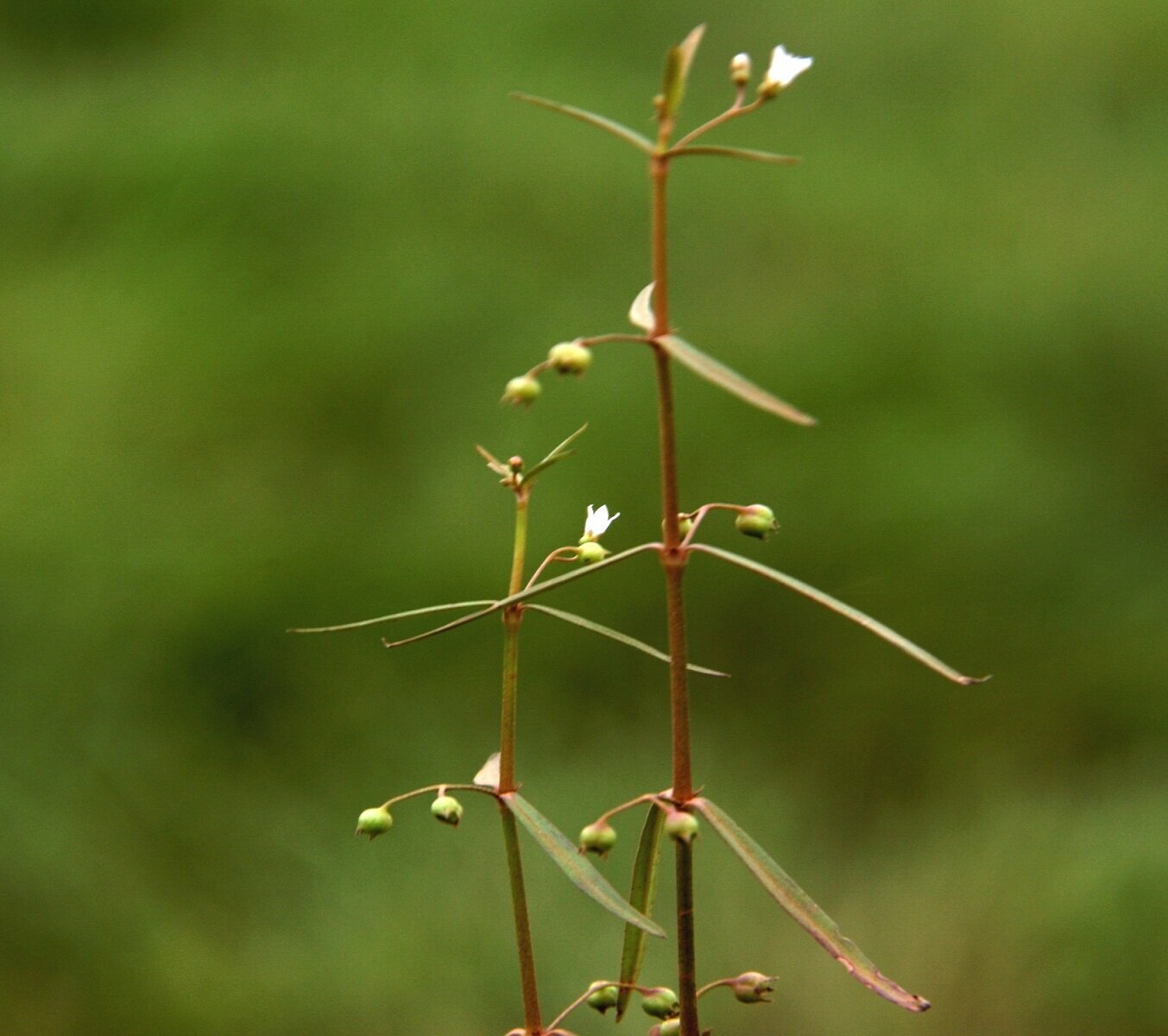 |
|||
| 227. Hedyotis ovatifolia Family: RUBIACEAE Flowering & fruiting: July – December Ecology: Frequent, under shade in open forests. Description: Small, erect herbs. Stem 4-gonous, pilose. Leaves broadly elliptics or ovate- oblong, obtuse, oubsescent on nerves beneath. Flowers small, white, on corymbose panicles. Corolla divided near to the base, hairy within. Fruit hemispheric. Seeds pitted, brown. IUCN Status: |
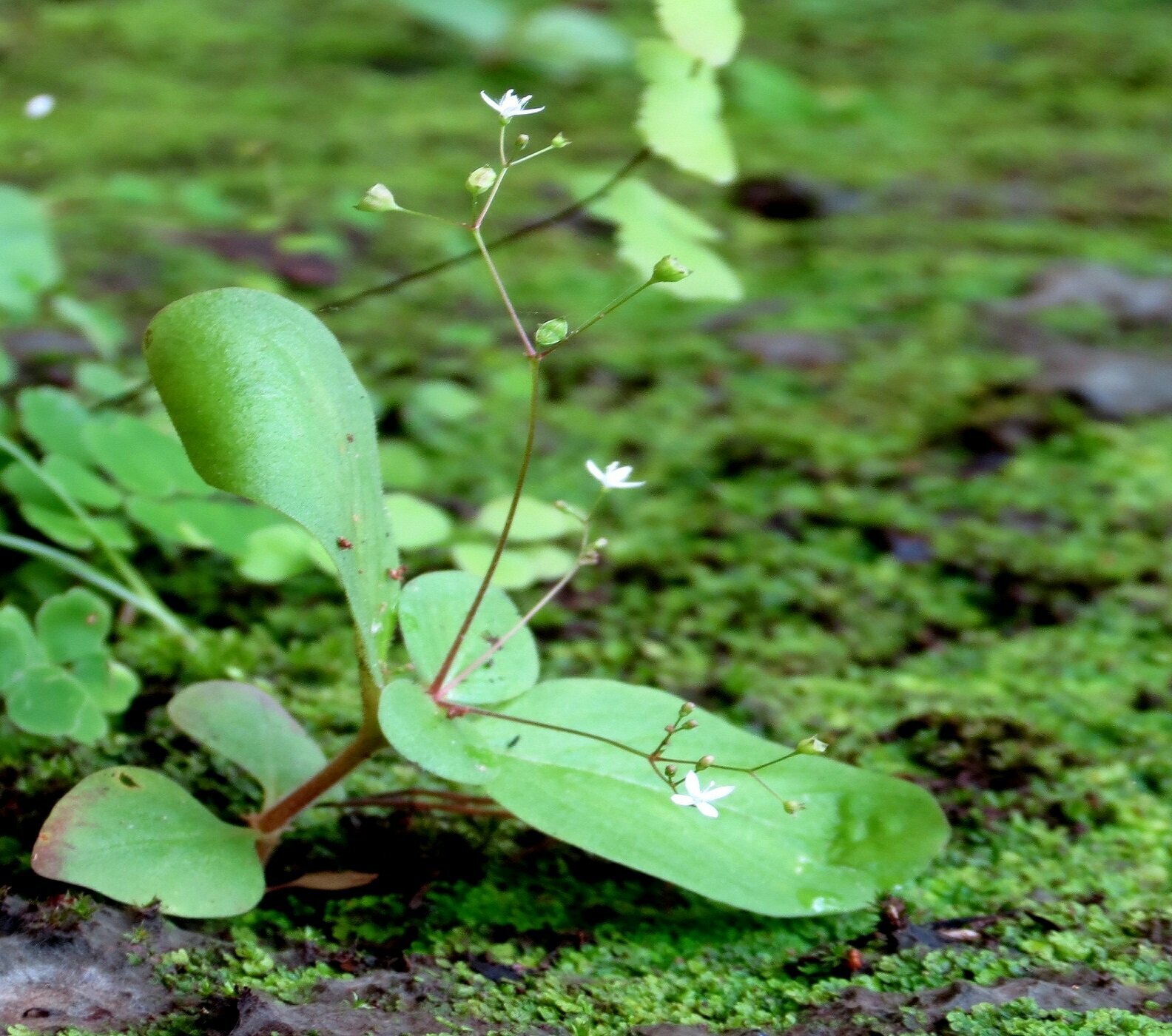 |
|||
| 228. Helicteris isora Family: STERCULIACEAE Local name: Mura Phal, Mudmudica, Murmuriya Description: A large shrub or small tree upto 5m in height. Bark grey, covered with stellate hairs in young parts. Leaves simple, alternate, bifarious, obovate. Flowers red, solitary or in sparse clusters. Fruits greenish-brown, beaked cylindrical. Seeds numerous, angular, wrinkled. Medicinal uses: Dried fruits are soaked into oil for 2-3 days and the oil is applied on the part of body when the part of infant body becomes stiff. IUCN Status: |
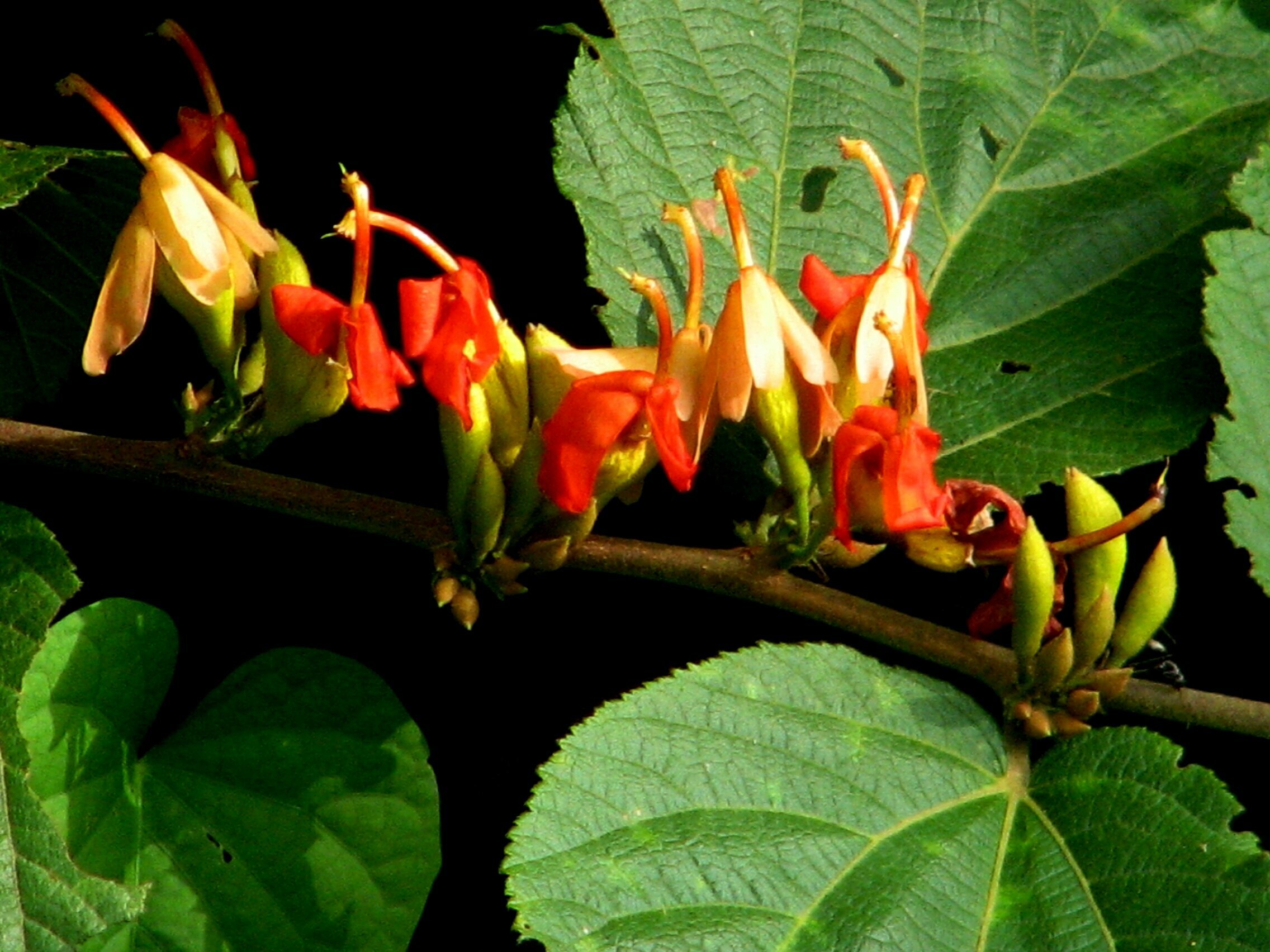 |
|||
| 229. Heliotropium indicum Family: BORANGINACEAE Local name: Indra Baris, Kaf Gajri Description: It has small white or purple flowers with a green calyx; five stamens borne on a corolla tube; a terminal style; and a four-lobed ovary. Medicinal uses: A decoction of the whole plant is used to treat thrush, diarrhoea, diabetes, venereal diseases and frequent excretion of urine. An infusion is used as a remedy for asthma, ulcers, dysentery, bronchitis, red eyes, boils etc. The leaf juice is used to treat and soothe the pain of conjunctivitis. Mixed with coconut oil and a small amount of salt, the leaves are administered to children as a remedy for colds, grippe and coughing. All parts extract is given in the treatment of cough and cold. IUCN Status: |
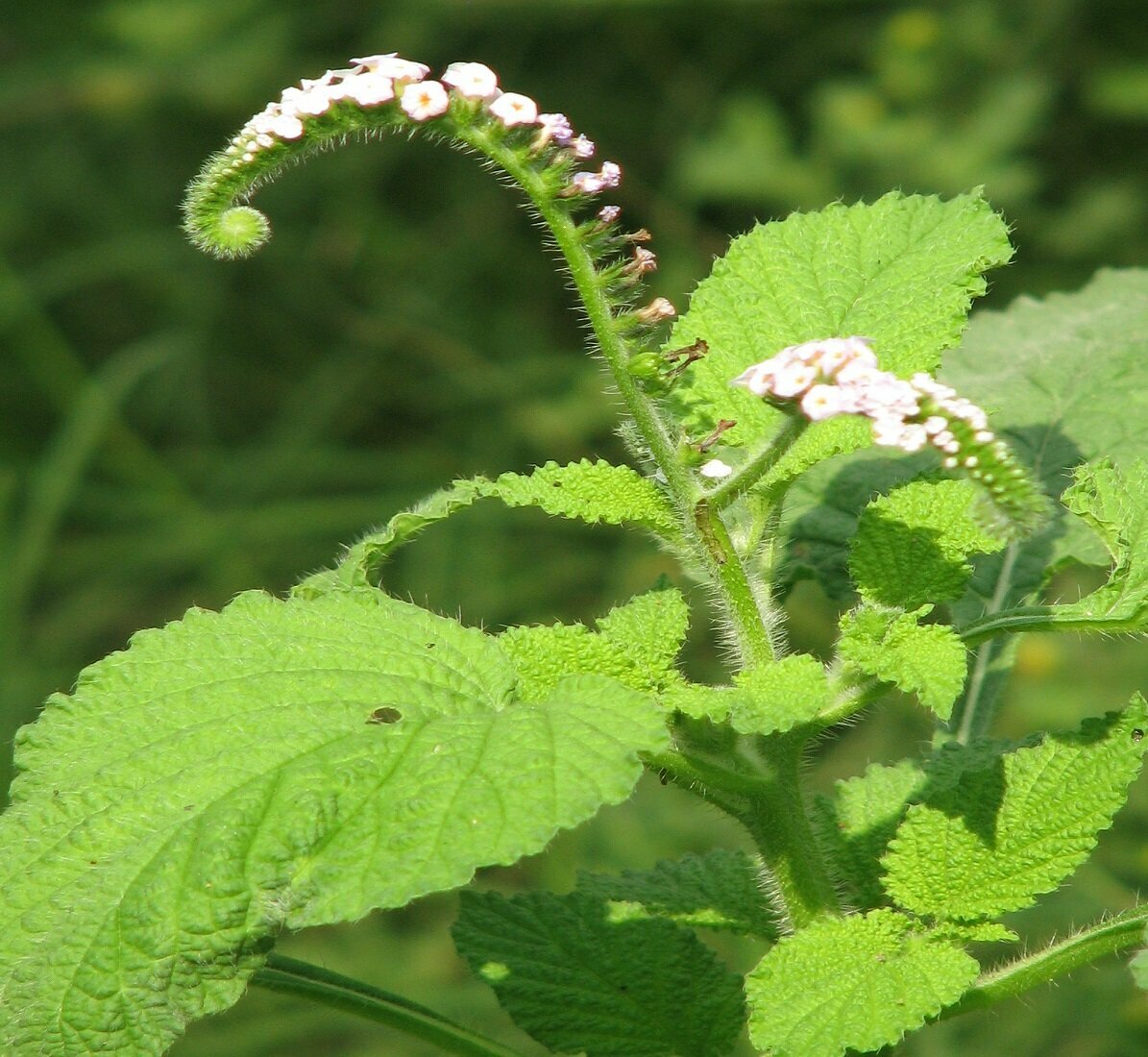 |
|||
| 230. Hemidesmus indicus (Linn.) Family: APOCYNACEAE Local name: Anantamul Flowering: August-October.Fruiting: November-December. Ecology: Very common in bushes and moist shady places. Description: Slender twiners; stem reddish-brown; latex milky. Leaves opposite, lanceolate or oblong-ovate, acute, often white streaked along the veins, glaucous beneath. Medicinal uses: The root of the Hemidesmus plant is demulcent, alterative, astringent, diaphoretic, diuretic, tonic, anti-pyretic, and blood purifier. It is used in leprosy, skin diseases, fever, asthma, bronchitis, syphilis, pruritus and other urinary diseases, chronic rheumatism, and leucorrhoea. IUCN Status: |
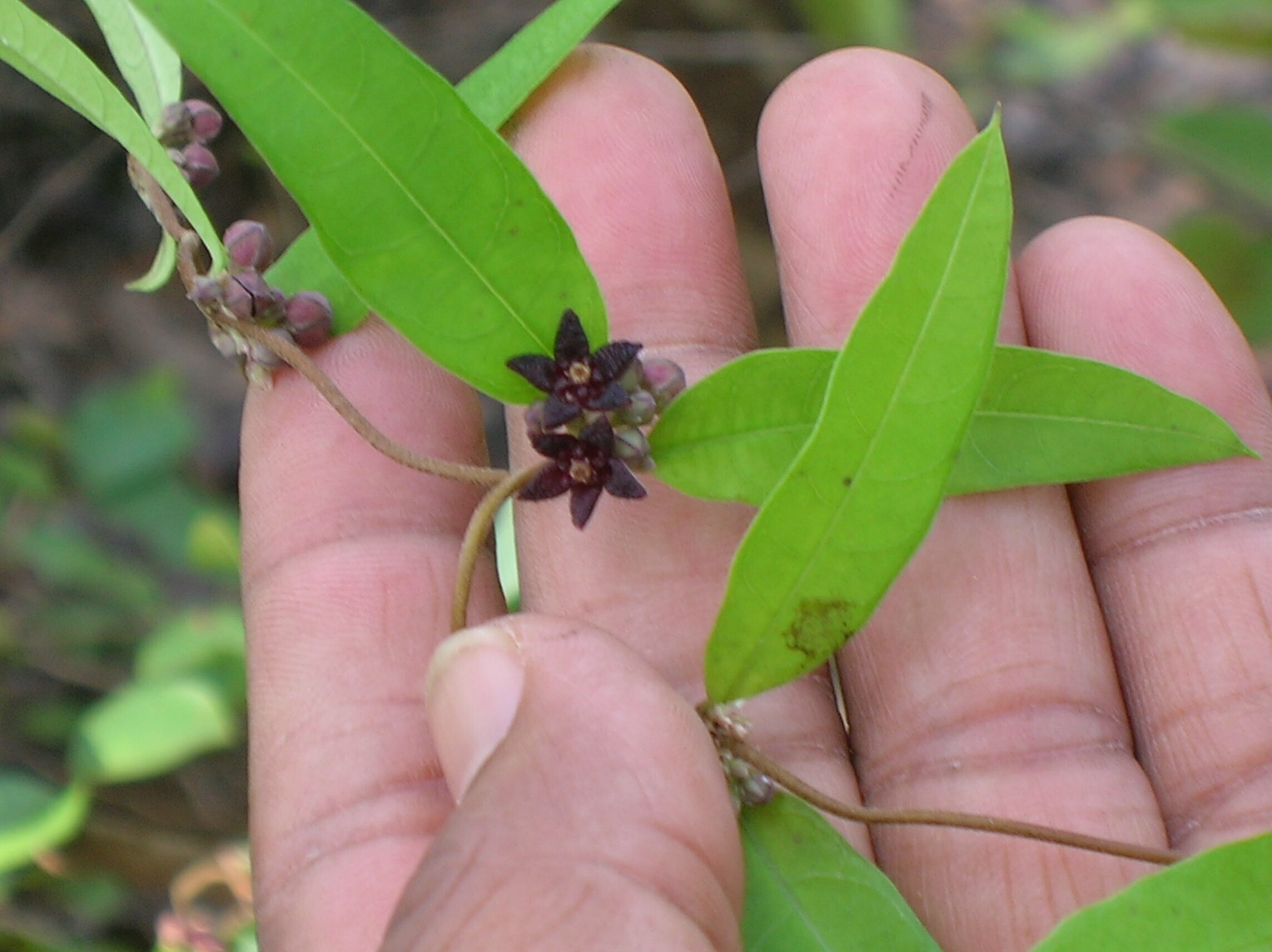 |
|||
| 231. Hemigraphis latebrosa (Heyne ex Roth) Family: ACANTHACEAE Flowering & Fruiting: November – February Ecology: Fairly common in rocky places under shade. Description: Diffuse or erect hairy herbs. Leaves long-petiole, ovate. toothed, acuminate. Flowers bright-blue, in capitate spikes; brae foliaceous. Corolla tubular-ventricose. Filaments bearded. Capsule hairy, 6-seeded. IUCN Status: |
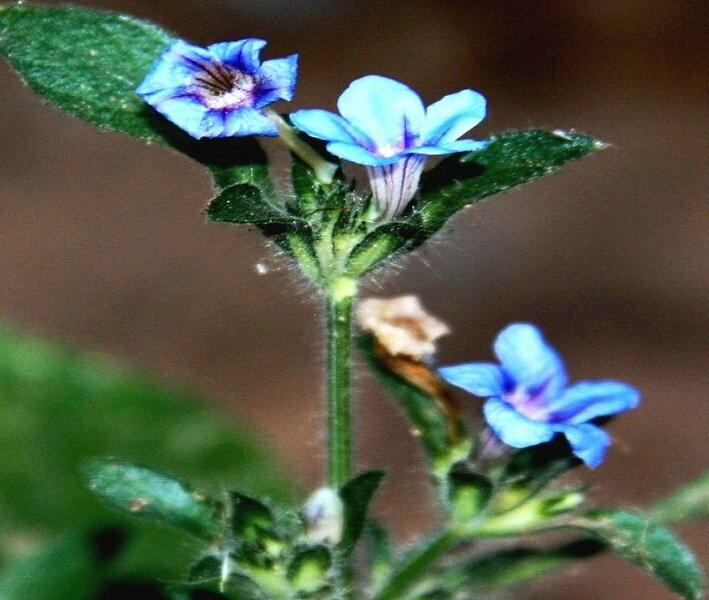 |
|||
| 232. Heteropogon contortus (Linn.) Family: POACEAE Flowering & Fruiting: September-January. Ecology: Abundant, on lateritic hill top and exposed surfaces. Description: Caespitose, dense grass. Leaves linear, glaucous, acute or obtuse, scabrid above, sheaths keeled. Spikelets 2-nate, joints disarticulating: sessile subcylindric with long, brown-barbed pungent callus, 4-glumed. Medicinal uses: The leaves are good source of luteolin and can be used as an alternate natural source to synthesize herbal drugs to cure cancer, hypertension, and inflammatory diseases. IUCN Status: |
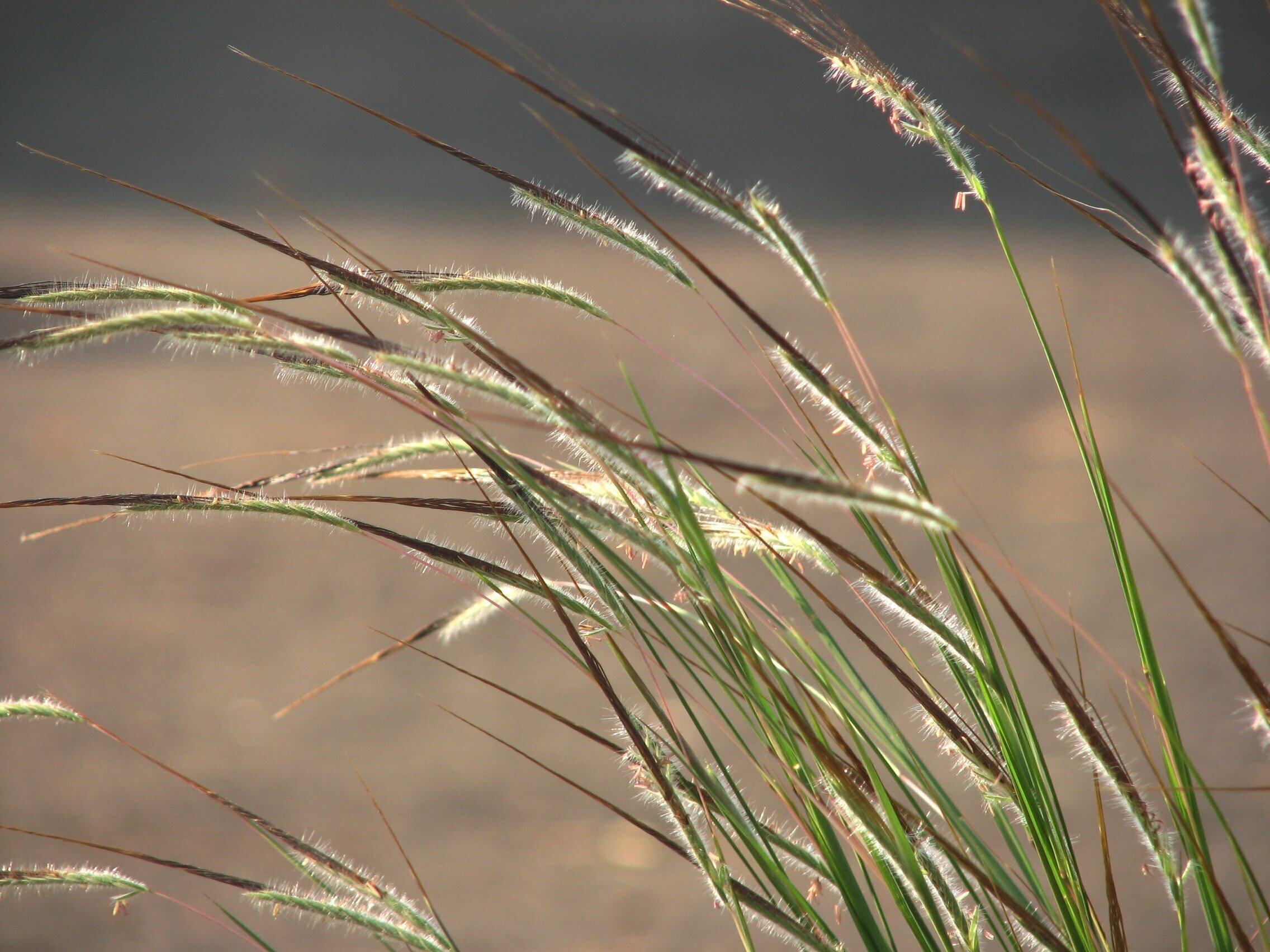 |
|||
| 233. Hibiscus vitifolius Family: MALVACEAE Local name: Jangal Bhindi Description: Leaves 2.5-6 cm long, 2-5 cm broad, subcordate-rounded at base, acute at apex, serrate to crenate, not lobed or shallowly 3 to 7-lobed, broadly ovate to orbicular, densely pubescent on both surfaces; stalk 1-5 cm long. They do look like grape leaves, hence the species name vitifolia. Flowers occur singly in leaf axils. Medicinal uses: Leaves are pasted, boiled with castor oil and applied on rheumatic part of the body. Seeds are pasted with honey and applied on inner lids of eyes in the treatment of cataract. IUCN Status: |
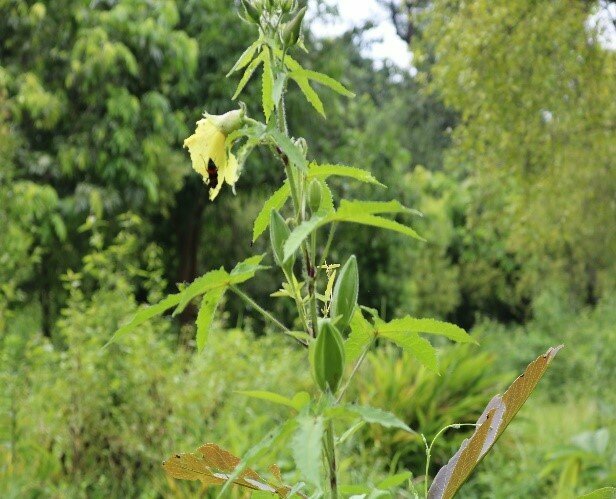 |
|||
| 234. Hiptage benghalensis Linn. Family: MALPHIGHIACEAE Flowering: January – March Fruiting: April – May Ecology: Common, in moist shady places along stream banks. Description: Stout slimbing shrubs; branchlets rusty tomentose. Leaves elliptic or ovate-oblong, acute. Flowers 5-merous, white, fragrant, terminal and axillary racemiform cymes. Petals unequal lanceolate, one petal clawed, yellow. Stamens 10, declinate. Ovary 3-celled. Fruits samaroid with 3-unequal wings. Medicinal uses: The leaves are used to treat cutaneous diseases. IUCN Status: |
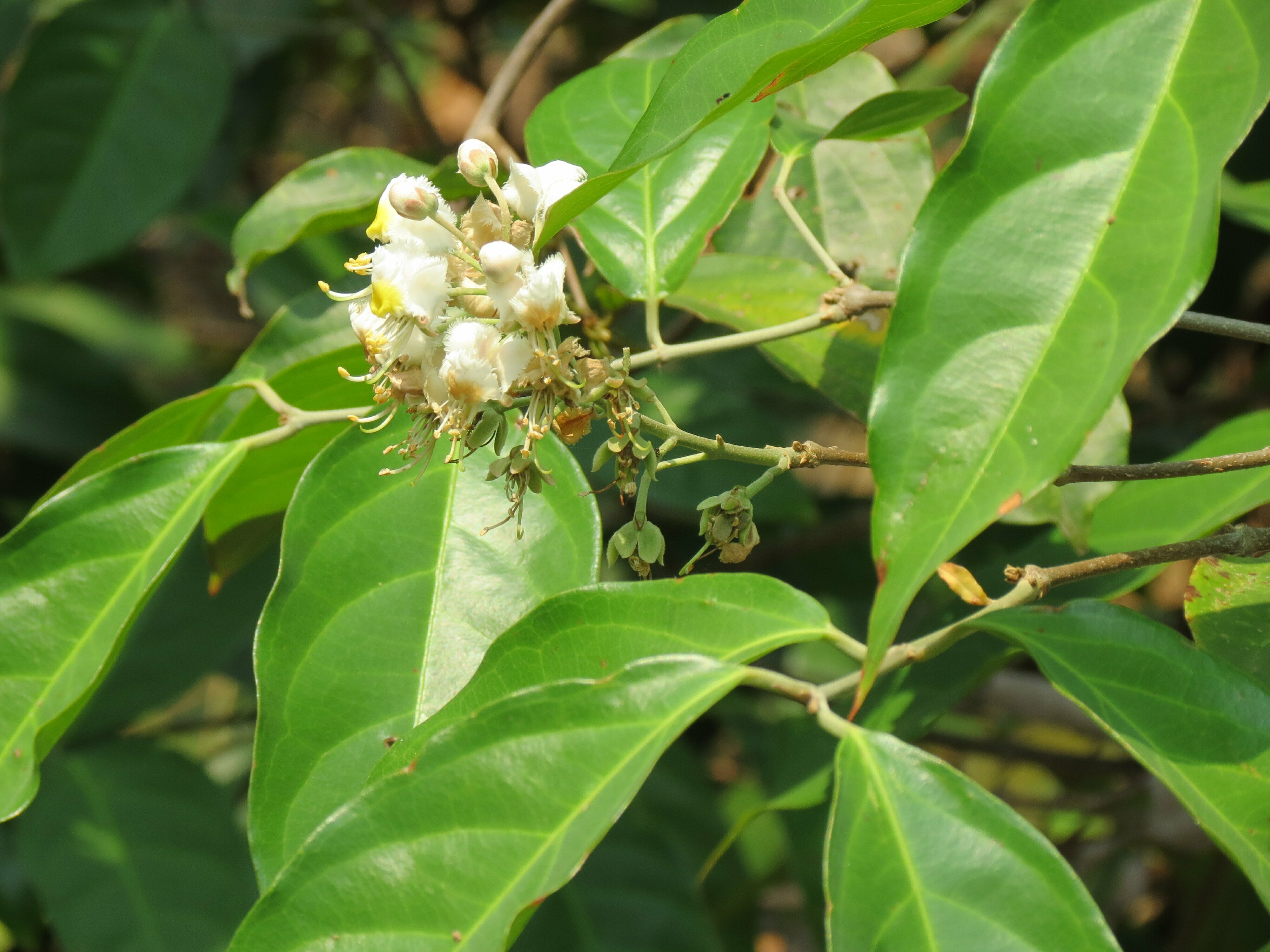 |
|||
| 235. Holarrhena pubescens (Buch. – Ham.) Family: APOCYNACEAE Flowering: April – July Fruiting: November – January Ecology: Gregarious in deciduous forests and scrubs jungles. Description: Large shrubs. Leaves subsessile, broadly elliptic or orbicular or ovlate elliptic, base rounded, acminate. Medicinal uses: The stem bark and root bark of Holarrhena pubescens are used throughout its distribution area in the treatment of amoebic dysentery. The root boiled in milk is applied against snakebites and is used in the treatment of venereal diseases. A hot decoction of the stem bark is used as a gargle to treat toothache. IUCN Status: |
 |
|||
| 236. Homonoia riparia Family: EUPHORBIACEAE Flowering & fruiting: February-September. Ecology: Fairly common, a typical rheophyte of stream-beds. Description: Rigid, erect shrubs marked with prominent leaf-scars. Leafs linear-oblong, entire, pubescent on nerves beneath. Male spikes with tomentose rachis, bracteate, bracteolate. Female spikes with grey-tomentose rachis. Ovary Ovary tomentose. Capsules tomentose, seeds crimson. Medicinal uses: A decoction of the root is a laxative and diuretic and is used in piles, stone in the bladder, gonorrhea, syphilis and thirst. IUCN Status: |
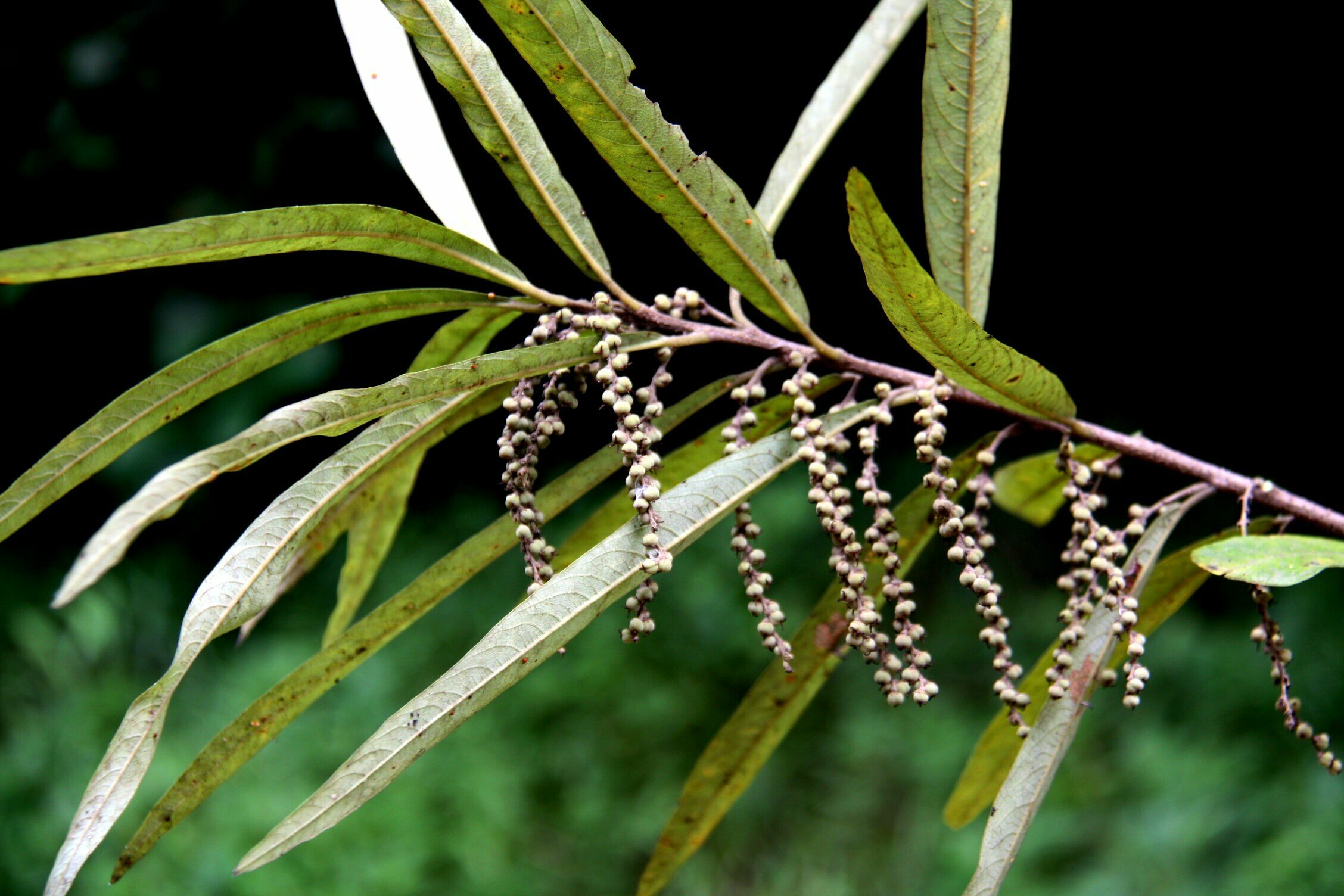 |
|||
| 237. Hugonia mystax Linn. Family: LINACEAE Flowering: May – August Fruiting: September – November Ecology: Common on foot hills in open woodlands. Description: Rigid stragglers; young shoot tomentose, tendrillate. Leaves obovate-elliptic, entire, nerves pubescent below. Flowers 5, golden yellow, in axillary cymes, lower peduncles spirally hooked. Styles 5, filiform. Drupe globose, orange. Seeds compressed. Medicinal uses: The root is powdered and used internally as a febrifuge and in the treatment of intestinal worms. Externally, it is used in reducing inflammatory swellings and as an antidote to snake bites. IUCN Status: |
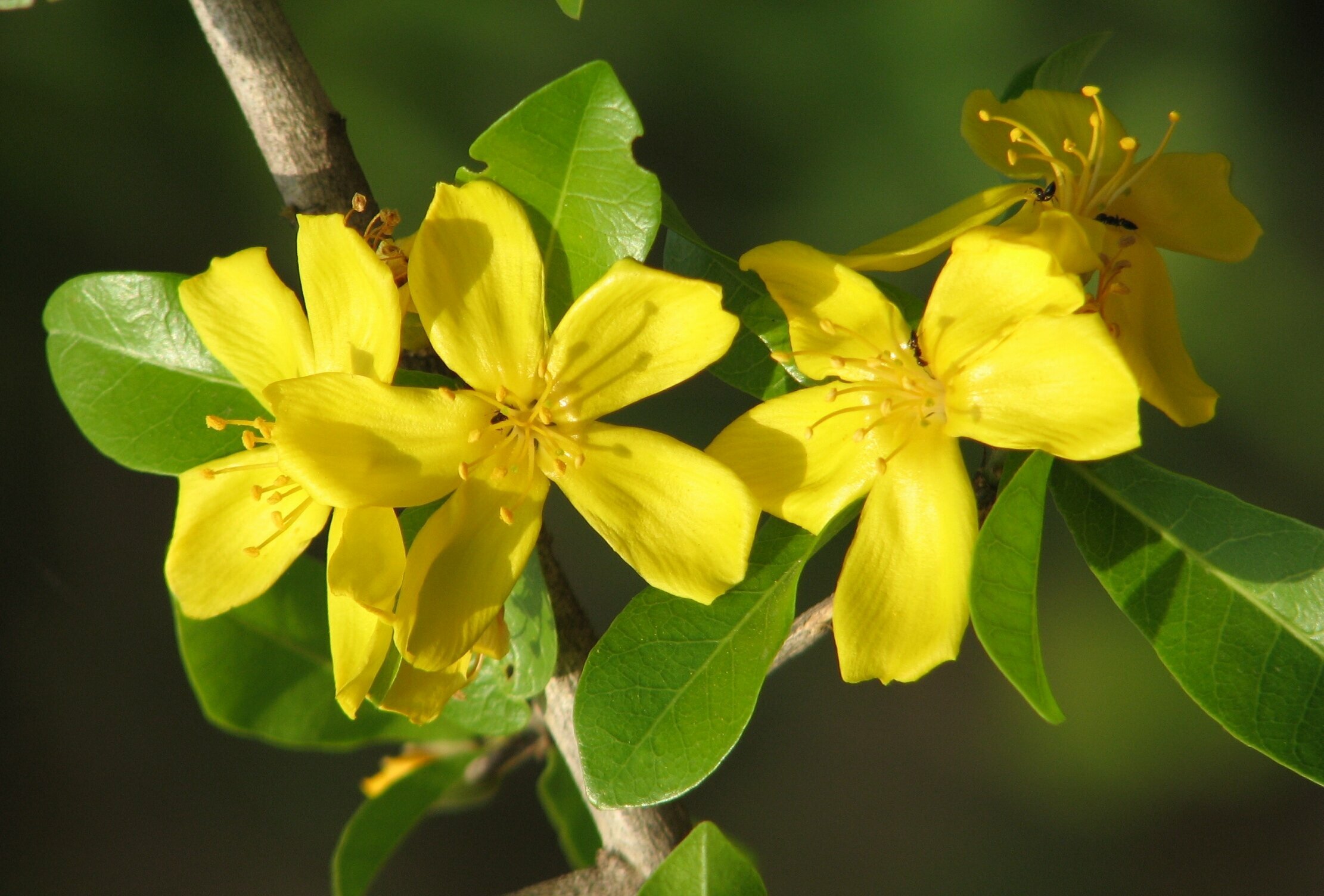 |
|||
| 238. Hybanthus enneaspermus Linn. Family: VIOLACEAE Local Name: Charati Flowering & Fruiting: November-February Ecology: Abundant in fallow and pasture lands. Description: Diffuse herbs. Stem pubescent, obscurely angled. Leaves sub-sessile, linear lanceolate, coarsely dentate. Flowers pink, solitary, axillary. Petals clawed, unqual. Capsule globose, 3-valved, 9-12 seeded. Medicinal uses: In traditional medicine system this plant used for treating diarrhoea, urinary infections, leucorrhoea, dysuria, inflammation, cholera and sterility. IUCN Status: |
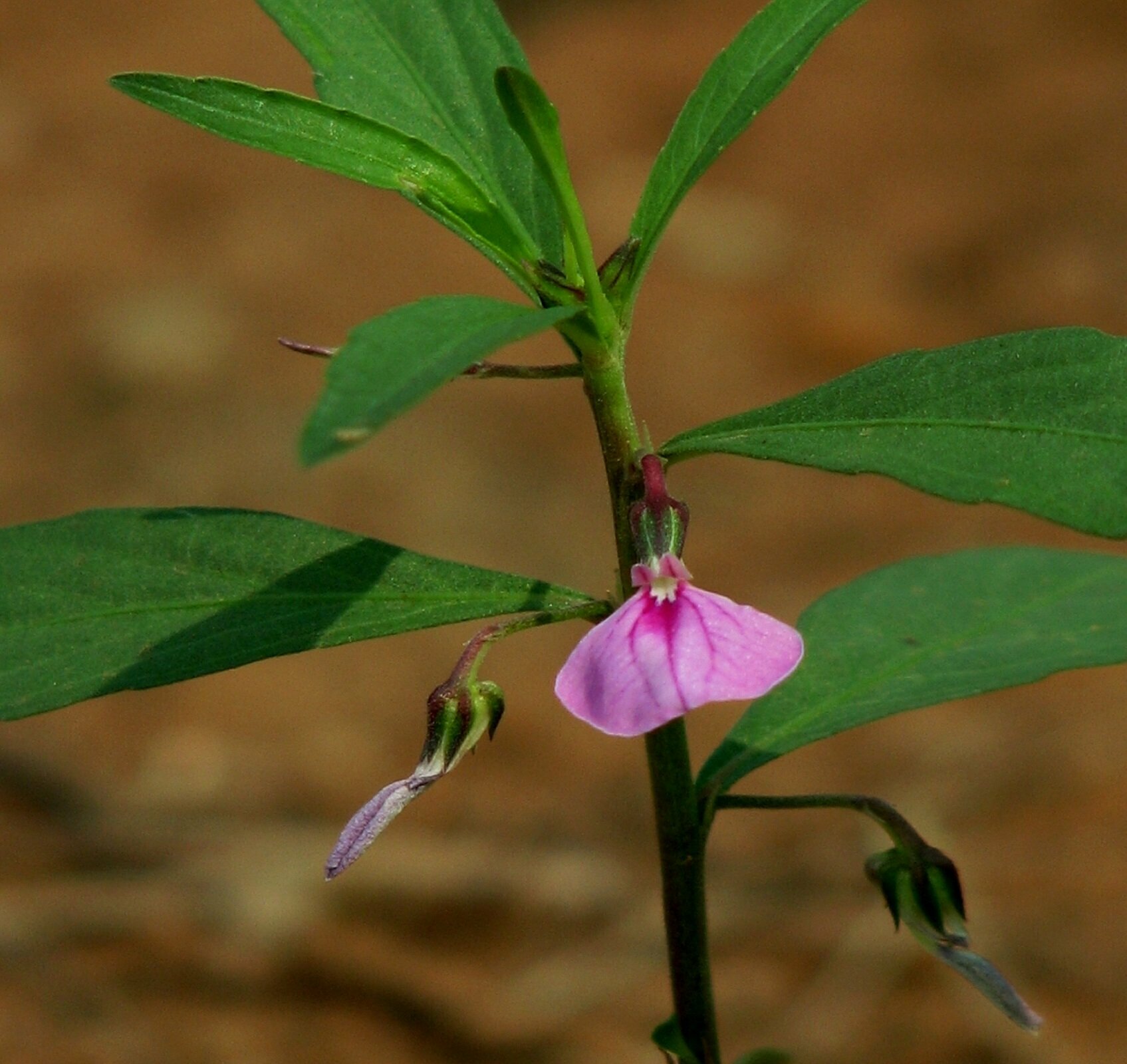 |
|||
| 239. Hydrilla verticillata Family: HYDROCHARITACEAE Flowering & fruiting: September. Ecology: Occasional, in slow-running streams. Description: Slender, aquatic herbs. Leaves simple, whorled, Linear, apinulosely-serrulate, tips recurved. Male flowers sessike, in whorls. Feamles: above the males, solitary. Stigma pink. Seeds oblong. Medicinal uses: Hydrilla is especially valuable to true vegetarians. Besides its other uses, therapeutically this plant may be used to provide complete nutrition, to improve digestion and gastrointestinal function, circulation, neurological health, blood sugar control, to strengthen immunity and increase endurance. IUCN Status: |
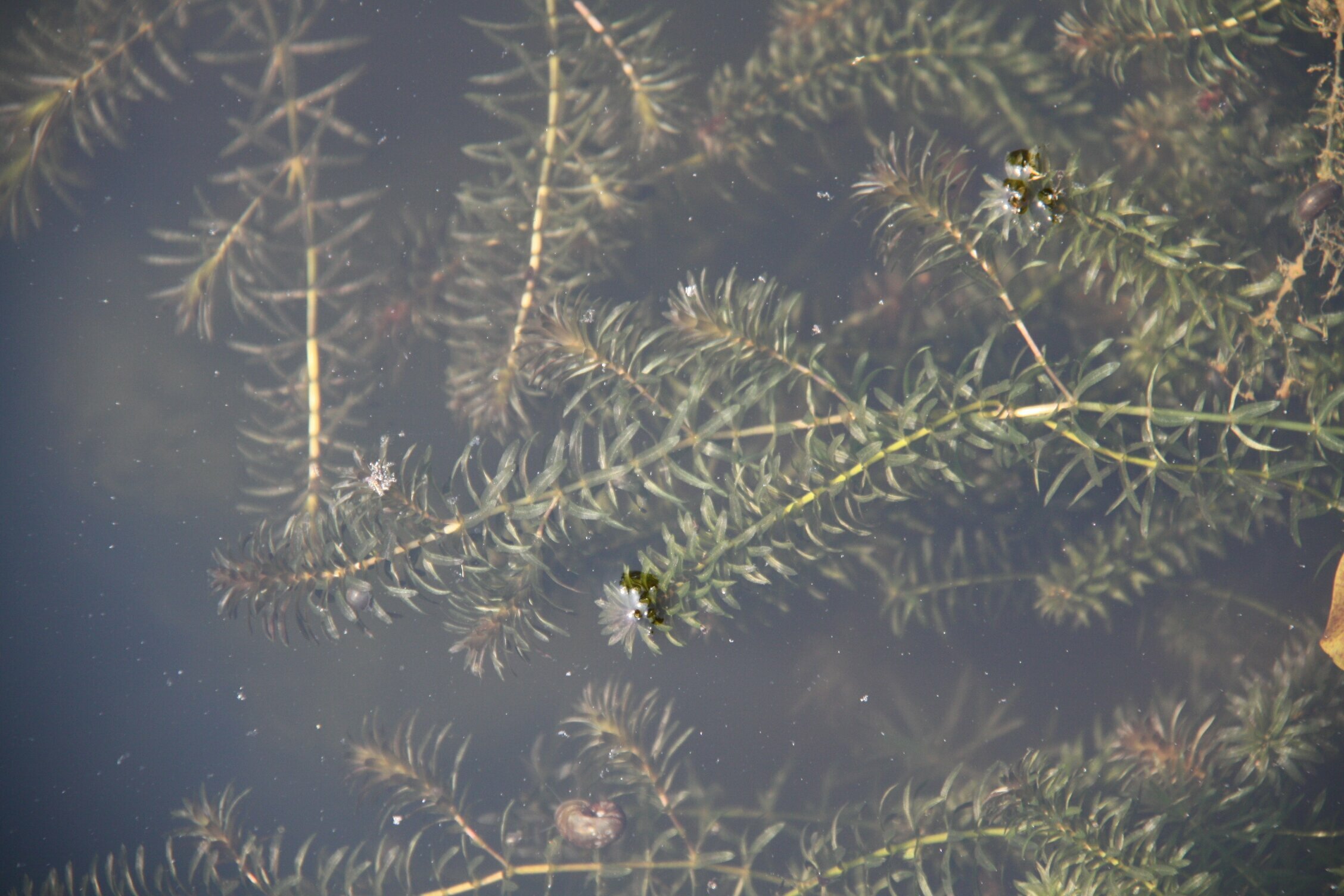 |
|||
| 240. Hydrolea zeylanica (Linn.) Family: HYDROLEACEAE Flowering & Fruiting: November-Februry Ecology: Common, in swampy and marshy localities. Description: Procumbent herbs: stem soft, pale yellow to reddish, rooting at nodes. Leaves alternate, linear-lanceolate, apex acute. Medicinal uses: The leaves, beaten into pulp and applied as a poultice, are considered to have a cleansing and healing effect on neglected and callous ulcers. They parently possess some antiseptic property. IUCN Status: |
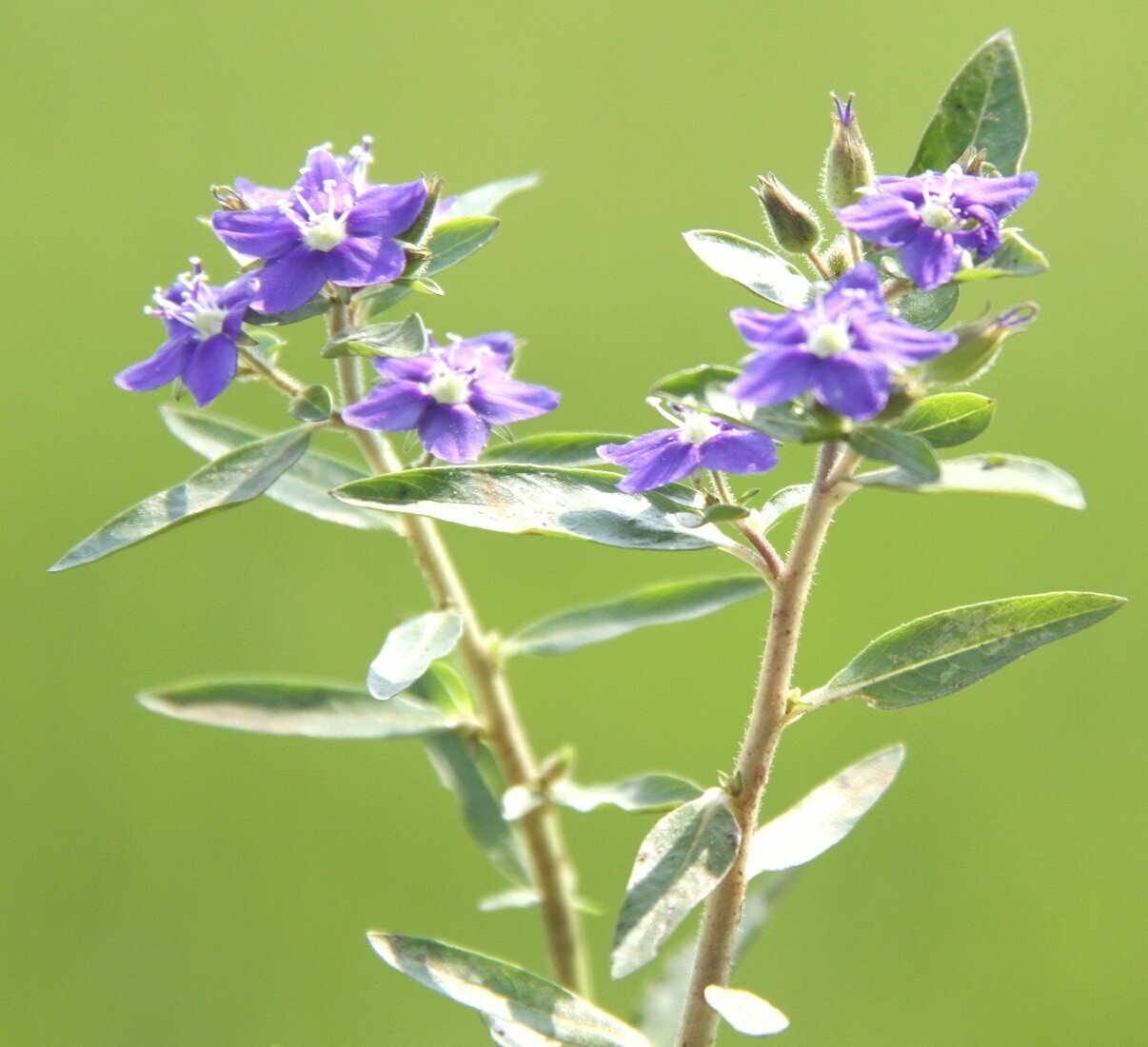 |
|||
| 241. Hygrophila auriculata (Schum.) Family: ACANTHACEAE Flowering & Fruiting: November-Februry Flowering and fruiting: June – January Ecology: Occur in wet places. Medicinal uses: The whole plant, but particularly the roots, is said to have diuretic properties. It is used especially in the treatment of blennorrhoea, hydropsy and anuria, as well as catarrh, stomach ache, craw-craw. The whole plant, or its ashes, and the roots are used as a cooling medicine and diuretic in cases of hepatic obstruction, dropsy, rheumatism. It is combined with another plant, identified only as kisâdor, to induce menstruation, particularly in young mothers on weaning a baby. People with fever are bathed in water in which leaves have been boiled. A remarkable treatment with good result of a sting-ray’s sting on the sole of the foot by a decoction of the plant by alternation of bathing and steam fumigation is recorded. The leaves and stems are burnt and the smoke used to fumigate the eyes in order to treat corneal ulcers. The seeds are demulcent and diuretic. Leaves paste is applied externally on rheumatic affected part of the body for two weeks. IUCN Status: |
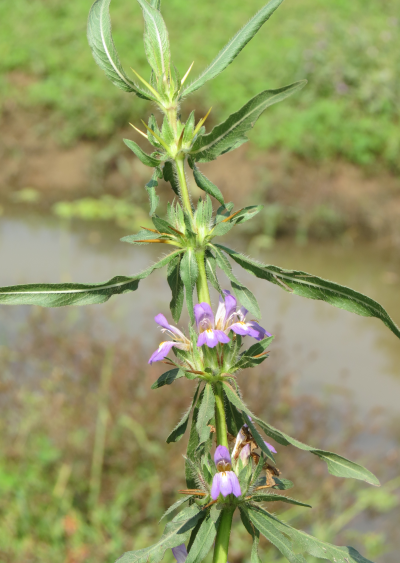 |
|||
| 242. Hygrophila schulli (Buch.-Ham. ) Family: ACANTHACEAE Flowering & Fruiting: September-January Ecology: Common in marshes, swamps and fallow fields. Description: Stem hispidly hairy, spines whorled, straw coloured. Leaves sessile, willow-like. Flowers purple lipped, in dense spiny whorls. Calyx silky. Anthers parallel. Capsule 4-8 seeded, compressed. Medicinal uses: The pharmacological activity of a medicinal plant Hygrophila auriculata possesses various biological activities, ranging from analgesic, antitumor, antioxidant, hepatoprotective, hypoglycemic, haematinic, diuretics, free radical scavenging, anthelmintic, anti-inflammatory, antipyretic, and anabolic. IUCN Status: |
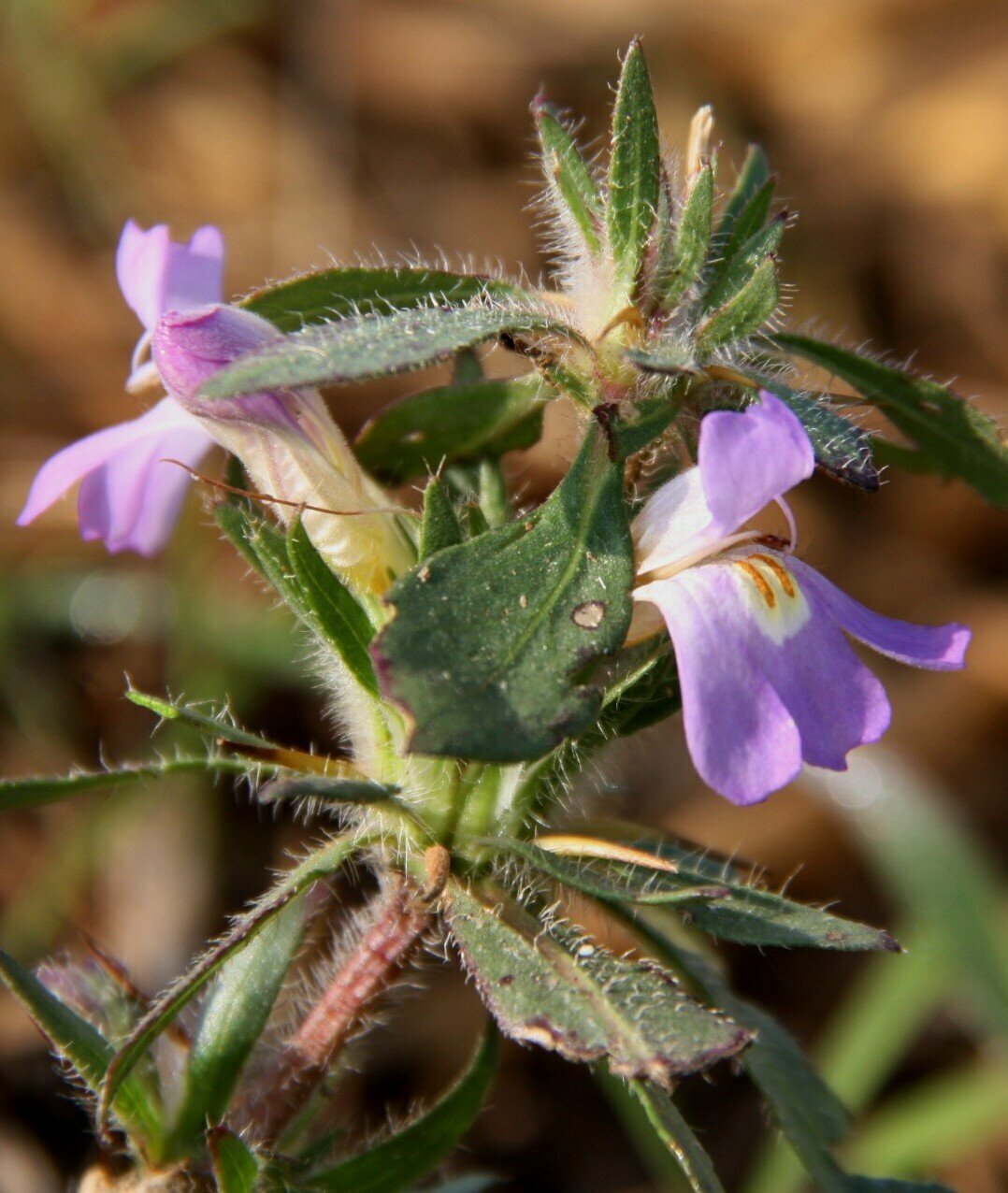 |
|||
| 243. Hyptis suaveolens (Linn.) Family: LAMIACEAE Local name: Gandha Tulasi Flowering: September-November. Fruiting: November-February. Ecology: Quite gregarious, a fast–spreading weed in open waste places. Medicinal uses: It has been used as a medicinal tea in many places in asia and as a food and source of essential oil in south america. Parts of the plant were used as analgesic and decongestant, and also to avoid fever and to fuel blood circulation with a sour, minty and sweet-smellingflavour. IUCN Status: |
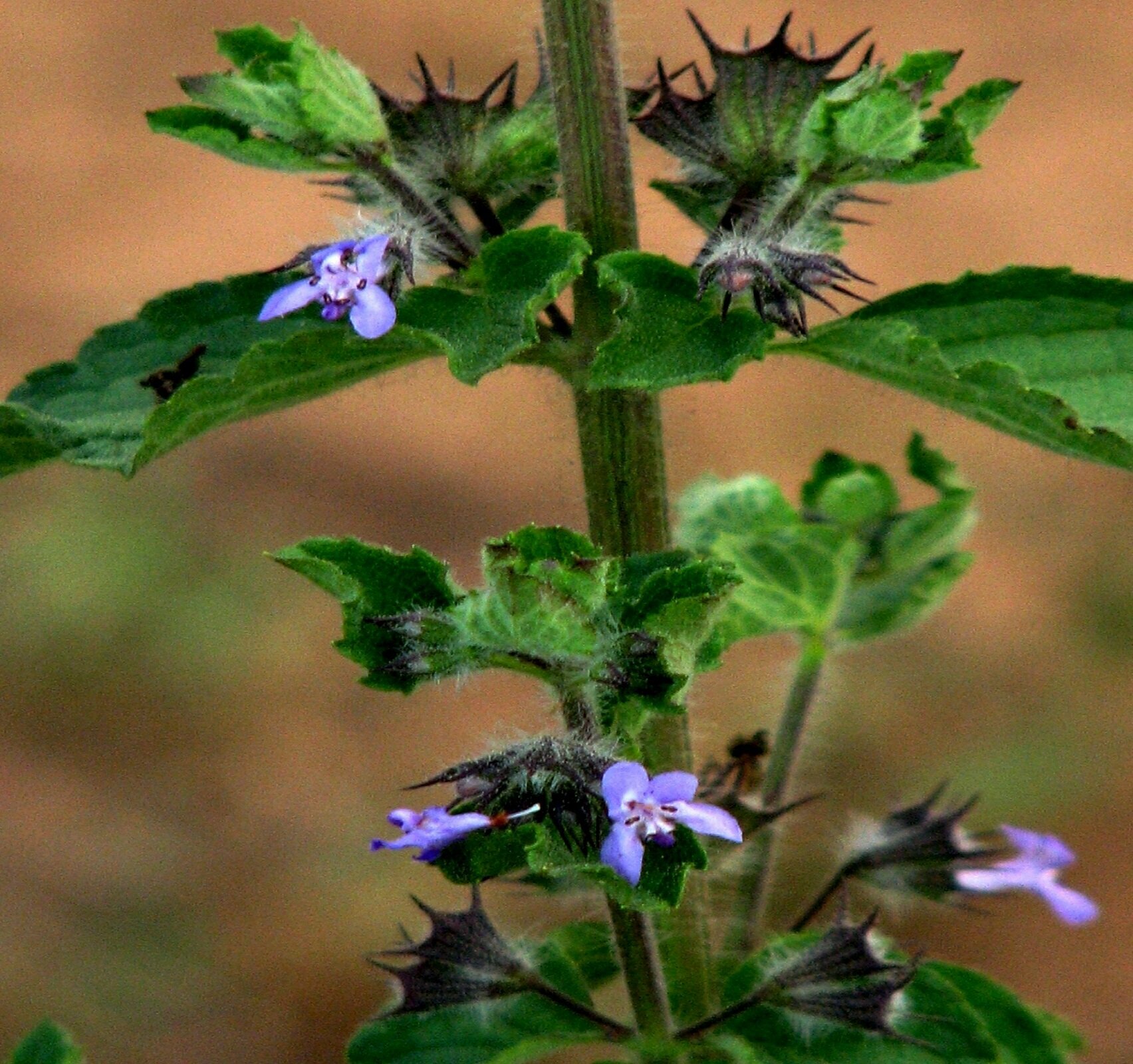 |
|||
| 244. Ichnocarpus frutescens (Linn.) Family: APOCYNACEAE Local name: Suamnai Flowering: August – Novembe Fruiting: December – February Ecology: Common in bushes, also climbing on trees. Description: Slender woody twiner with brown-tomentose branches, petioles and inflorescence. Leaves elliptic or broadly oblong, shortly acuminate. Flowers small, white, in elongate leafy fascicles. Calyx and mouth of corolla-tube tomentose. Follicles divaricate, terete. Medicinal uses: Ichnocarpus frutescens is a medicinal plant, given various formulations made with this plant given orally to treat dysentery, glossitis, heamaturia, measles, bleeding gums, convulsions, cough, delirium, etc. IUCN Status: |
 |
|||
| 245. Imperata cylindrica (Linn.) Family: POACEAE Flowering & Fruiting: April-June Ecology: Aggressive weed, very common in forest blanks & hill plateau. Medicinal uses: They are decocted and used to treat urinary tract infections, fevers, thirst etc. The root is astringent, antifebrile, antivinous, diuretic, emollient, haemostatic, restorative and tonic. It is used in the treatment of nose bleeds, haematuria, haematemesis, oedema and jaundice. IUCN Status: |
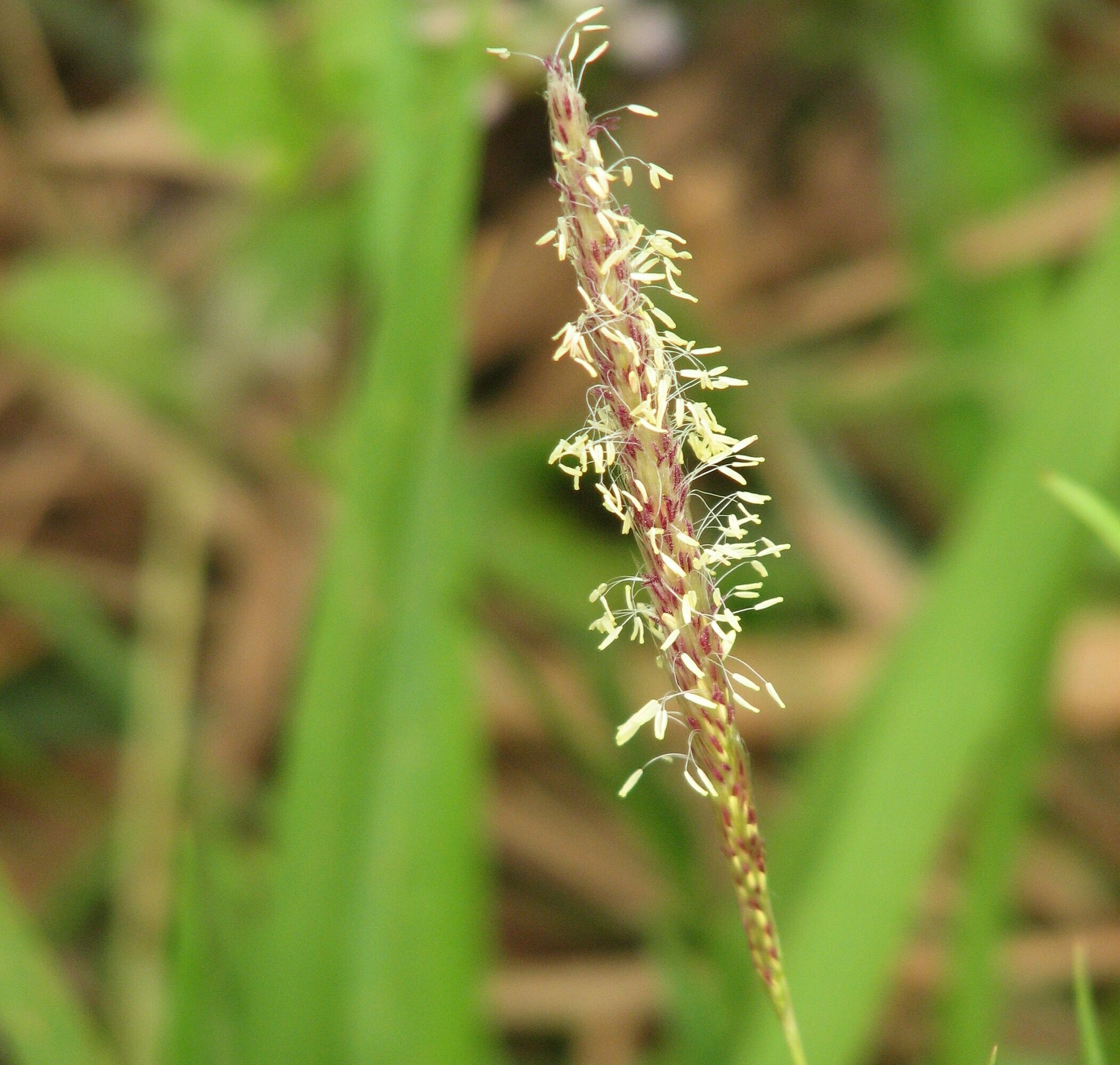 |
|||
| 246. Indigofera linifolia (Linn. F.) Family: FABACEAE Flowering & fruiting: August-January. Ecology: Common in grass lands on hill plateau. Description: Diffuse herbs, white canescent. Leaves linear, acute. Flowers pink. Pod silvery,subglobse, mucronate. Medicinal uses: The plant (part not specified) is used in the treatment of febrile eruptions. Combined with Euphorbia thymifolia, the plant is used in the treatment of amenorrhoea. IUCN Status: |
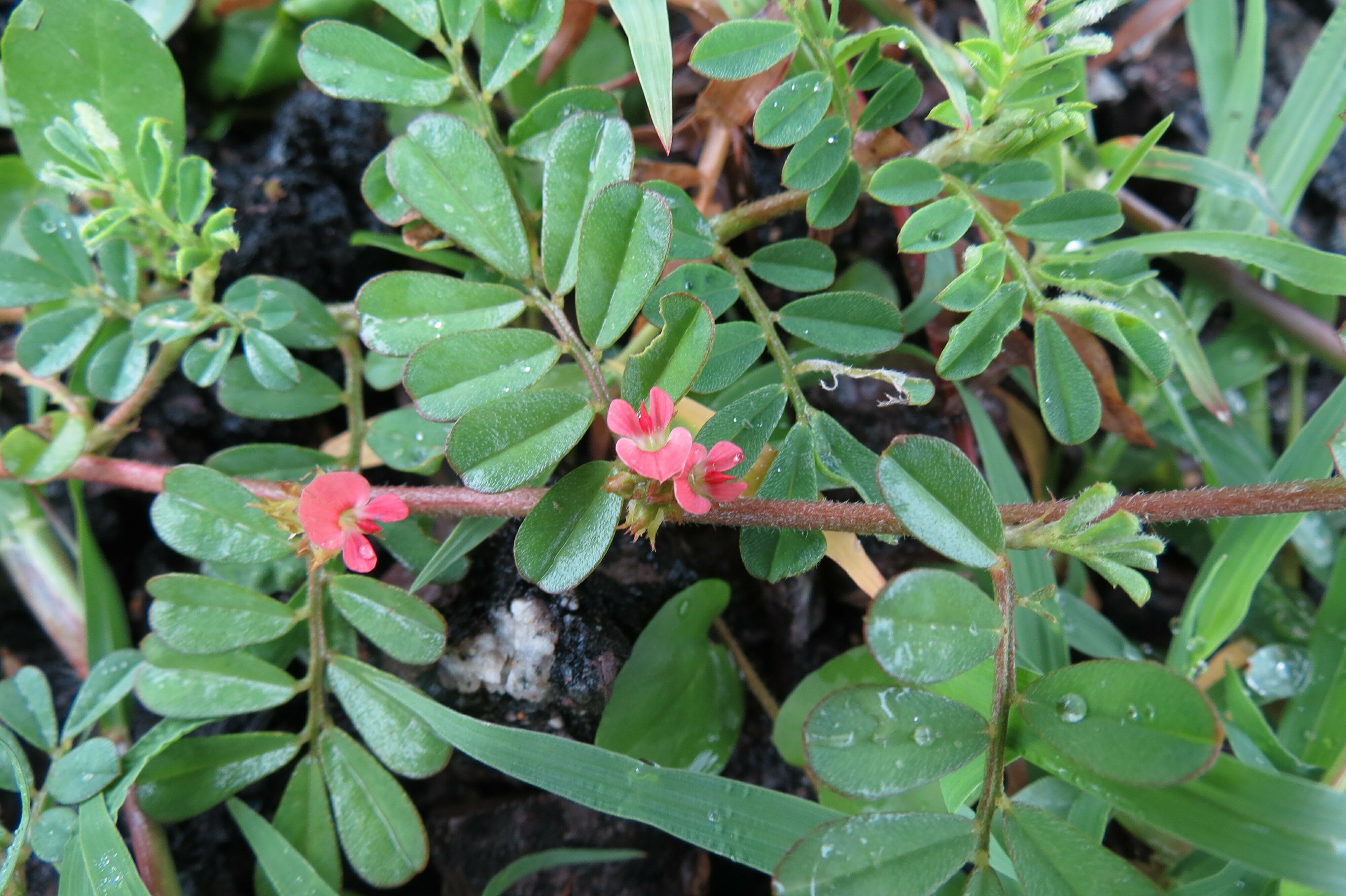 |
|||
| 247. Indigofera tinctoria Linn. Family: FABACEAE Flowering:September-November. Fruiting: December-February. Ecology: Occasional, on foot hills in moist and shady places. Medicinal uses: A leaf infusion (sometimes combined with honey or milk) is used to treat a range of disorders including epilepsy and nervous disorders; asthma and bronchitis; fever; complaints of the stomach, liver, kidney and spleen; and as a rabies prophylactic. Applied externally, the leaves are made into an ointment for treating skin diseases, wounds, sores, ulcers and haemorrhoids. A tincture of the seed is used in India to kill lice. A root preparation is applied to relieve toothache, syphilis, gonorrhoea and kidney stones. A watery root paste is applied topically in India to treat worm-infested wounds. A root infusion is used there as an antidote against snakebites and to treat insect and scorpion stings. IUCN Status: |
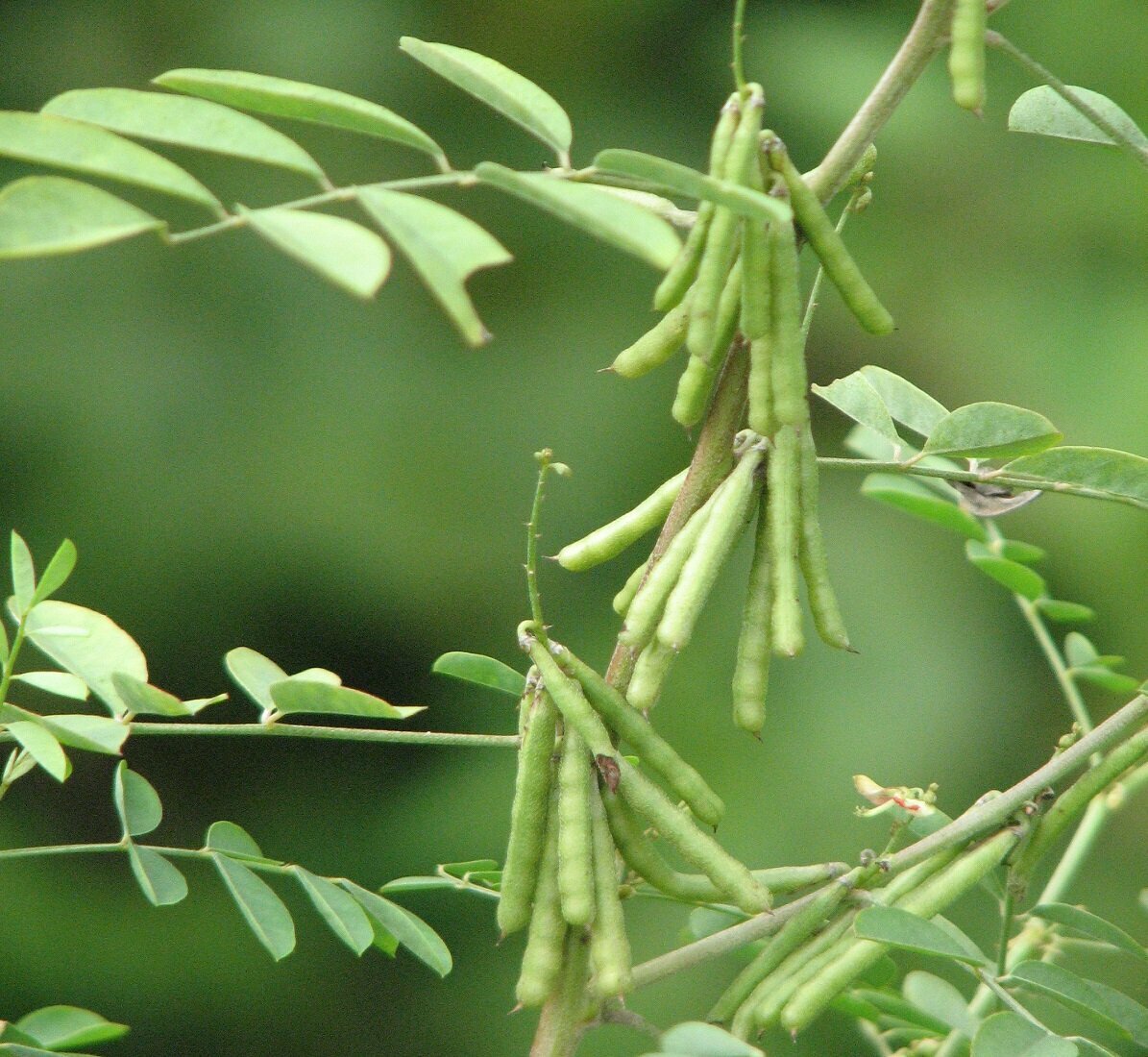 |
|||
| 248. Ipomoea cairica (Linn.) Family: CONVOLVULACEAE Flowering & Fruiting: May-August Ecology: Vocational, in hedges near water coarse. Description: Vines: root stock tuberous. Leaves palmately 5-7 lobed, base cordate. Flowers purple, funnel shaped, in axillary 2-5 flowered peduncled cymes. Capsule globose, 4-seeded. Medicinal uses: It is an ethno botanically important medicinal plant have been investigated. The plant is commonly known as ‘Railway creeper’ or Morning glory. The plants are medicinally used as an antioxidant, anti-inflammatory, antiviral and highly potent against malaria. IUCN Status: |
 |
|||
| 249. Ipomoea carnea Jacq. Family: CONVOLVULACEAE Flowering & Fruiting: Round the year Ecology: Abundant in shallow ditches & dried nalas near human habitation. Description: Woody shrubs with milky latex. Leaves ovate; base cordate, 6 Derved; acuminate. Flowers large, funnel form, rose-purple, in axillary long-peduncled cymes. Sepals glandular. Capsule globose, 4- seeded. Seed wooly. Medicinal uses: Carnea plant possess anti-bacterial, anti-fungal, anti-oxidant, anti-cancer, anti-convulsant, immunomodulatory, anti-diabetic, hepatoprotective, anti-inflammatory, anxiolytic, sedative and wound healing activities. IUCN Status: |
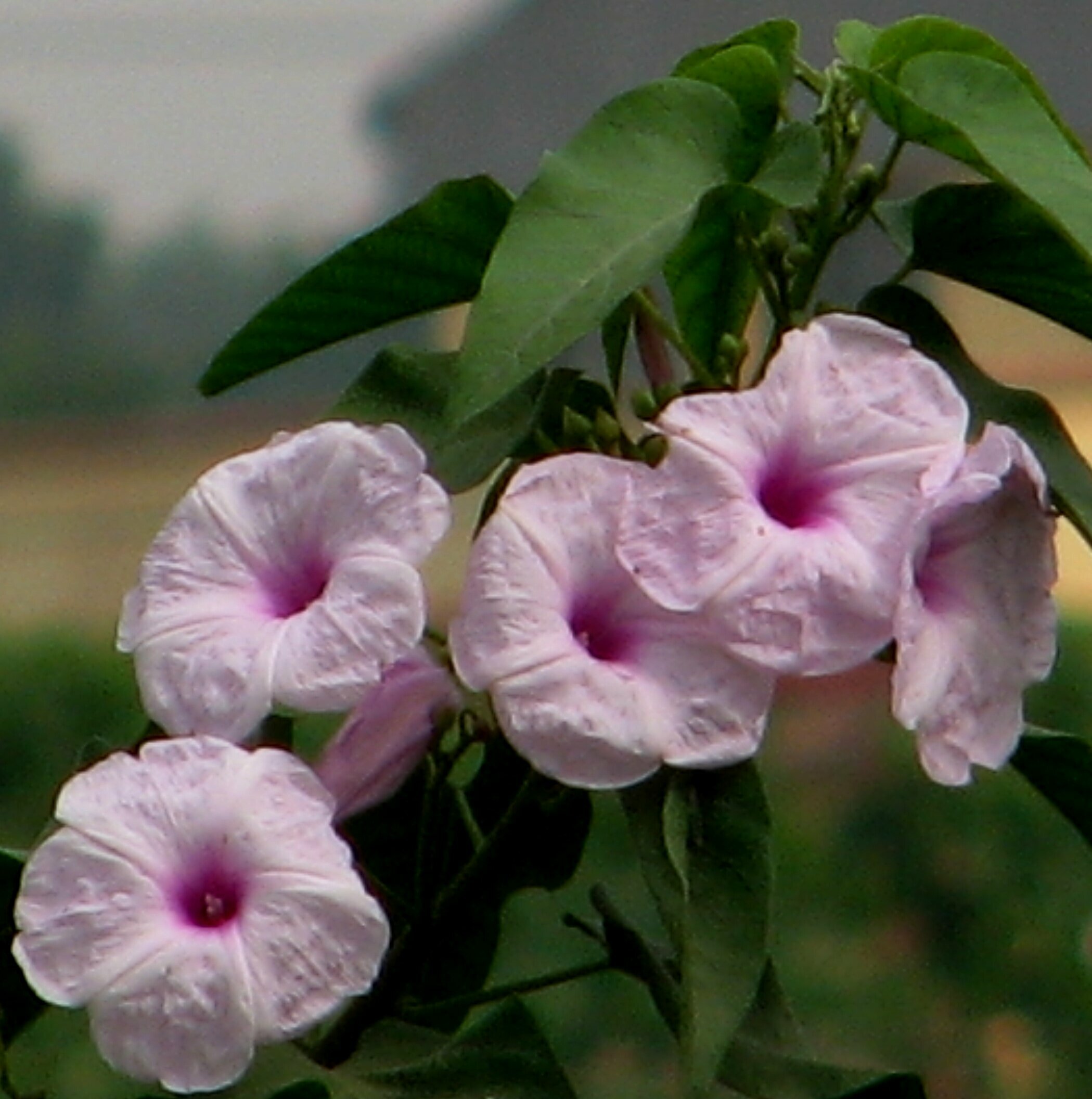 |
|||
| 250. Ipomoea hederifolia Linn. Family: CONVOLVULACEAE Flowering & Fruiting: October – January Ecology: Common in the hedges at foot hills. Native of Tropical America; introduced and run wild. Description: Slender twiners, stem striate. Leaves broadly ovate, cordate, acute. Flowers crimson -red, in axillary long peduncled lax cyme. Capsule globose, 4-seeded. Medicinal uses: Ipomoea hederifolia has been reported to possess oxytoxic, anticancer, anti-psychotic, anti-inflammatory, anti-oxidant and anti-microbial properties according to indigenous systems of medicine in India. IUCN Status: |
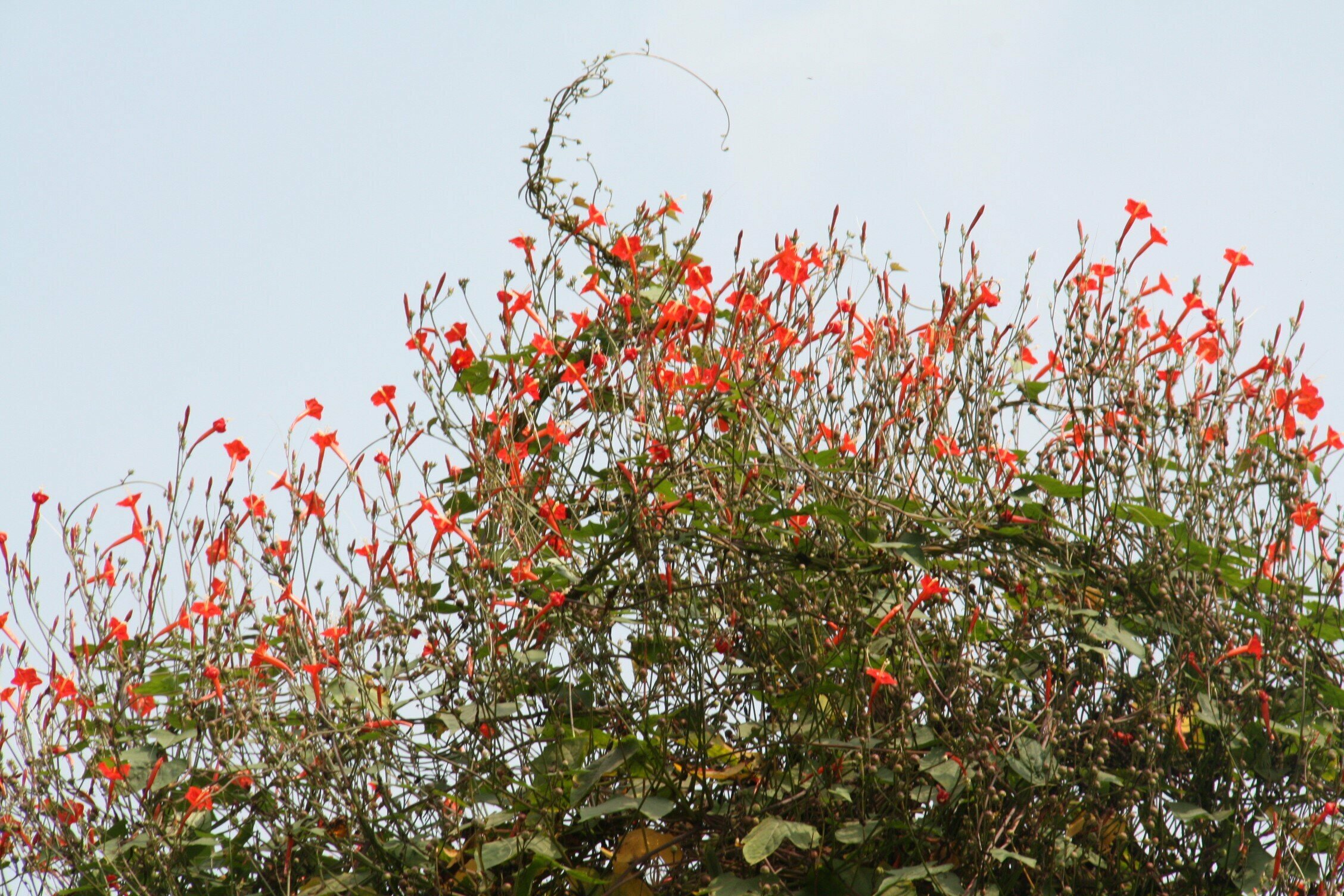 |
|||
| 251. Ipomoea nil (Linn.) Family: CONVOLVULACEAE Flowering & Fruiting: October-January Ecology: Mahulapali, Gaupur Description: Slender, villous herbs. Leaves ovate, cordate, palmately 3 lobed; side lobes acute, middle acuminate. Flowers blue or pink, in umbellate cyme. Capsule 3-locular, subglobose, 6-seeded. Medicinal uses: The seed is anthelmintic, anticholinergic, antifungal, antispasmodic, antitumour, diuretic and laxative. It is used in the treatment of oedema, oliguria, ascariasis and constipation. The seed is also used as a IUCN Status: |
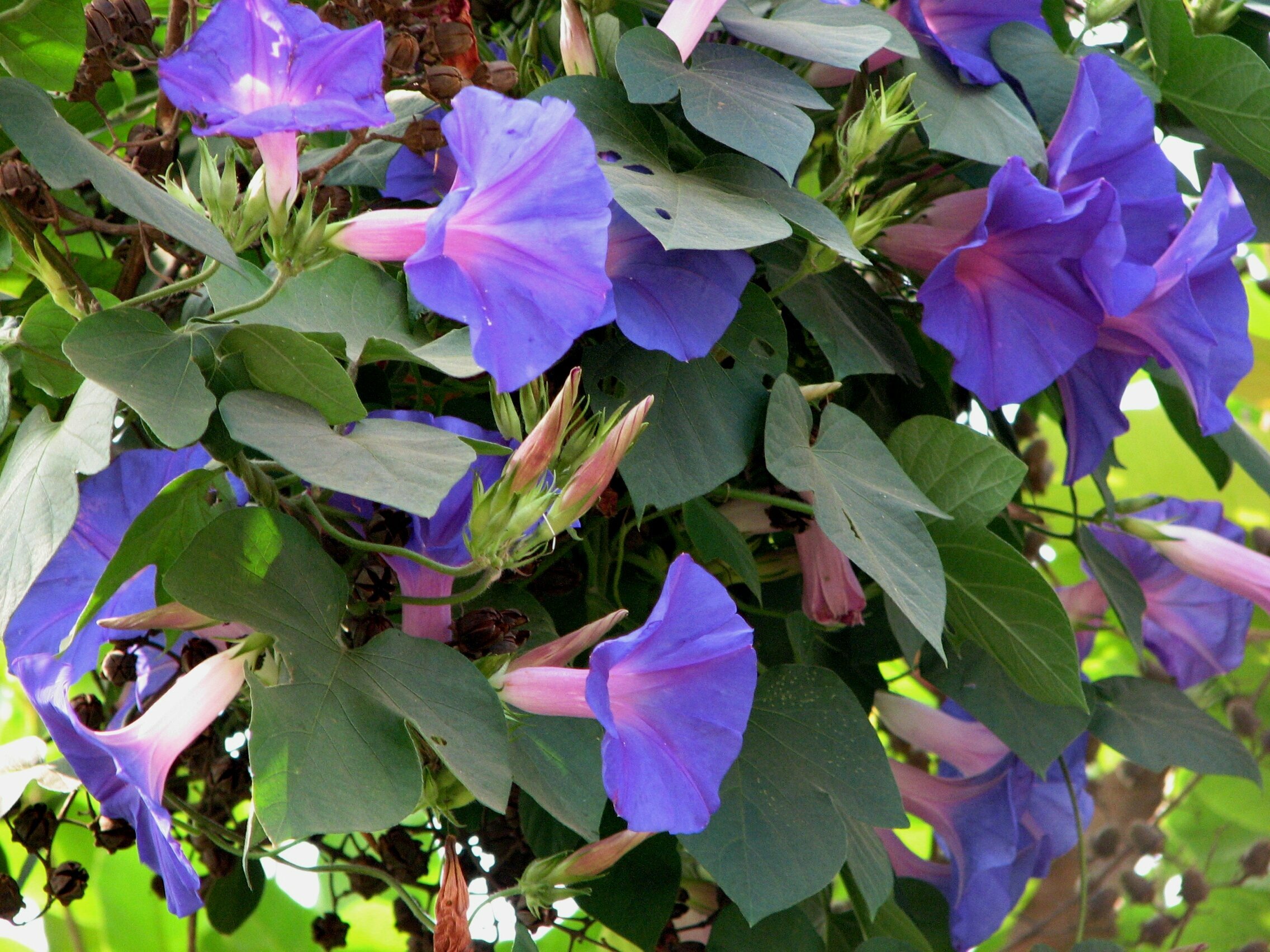 |
|||
| 252. Ipomoea obscura (Linn.) Family: CONVOLVULACEAE Flowering & fruiting: September-January Ecology: Common in hedge-rows Description: Slender climbers. Leaves ovate or reniform, acuminate, cordate. Cyme long-peduncled, 1-3 flowered. Corolla campanulate, pubescent, creamy-white. Capsule globose, 4-seeded with accrescent calyx. Medicinal Uses: Choisy leaves and alcohol, is applied to open sores and pustules. Dried and powdered leaves are used to treat aphthae. Ipomoea obscura has also ornamental value as a climber with attractive flowers. IUCN Status: |
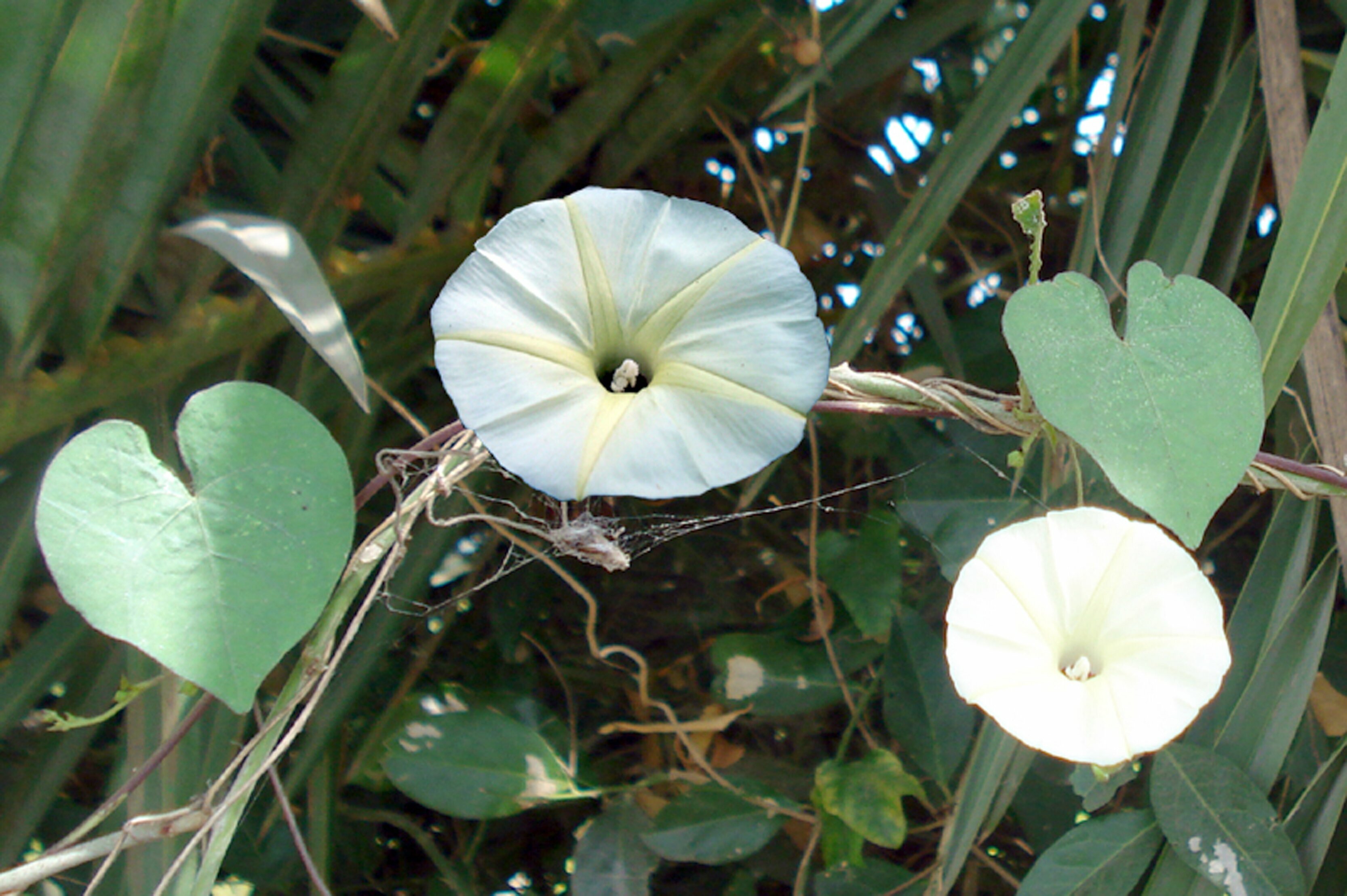 |
|||
| 253. Ipomoea pestigridis Linn. Family: CONVOLVULACEAE Flowering & fruiting: August – December Ecology: Common in bushes and grass lands Description: Slender twiners; hirsute all over with spreading yellowish hairs. Leaves palmately 5-9 lobed, cordate, lobes oval to obovate. Bracts foliaceous. Flowers pinkish-white, in peduncled heads. Capsule globose, few-seeded. IUCN Status: |
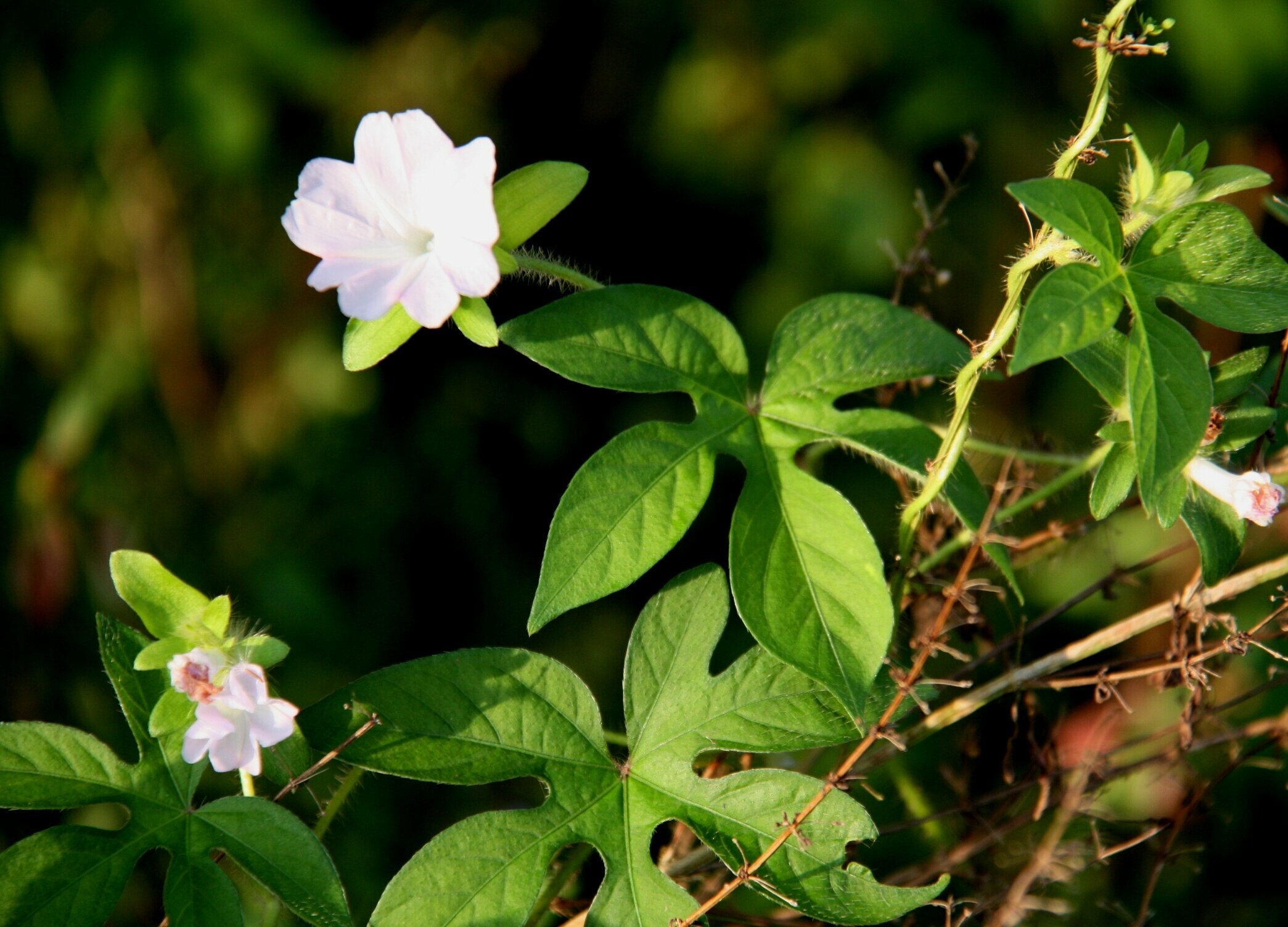 |
|||
| 254. Ischaemum indicum (Houtt.) Family: POACEAE Flowering & fruiting: November-January Ecology: Common, in damp moist places Description: Stout herbs. Stem erect, caespitose, leafy at base. Leaves linear lanceolate, acuminate, flat, sheath hirsute. Spikes 2, stout, compactly appressed. Sessile spikelets beard at base, narrowly ovate, 4-glumed, awned. IUCN Status: |
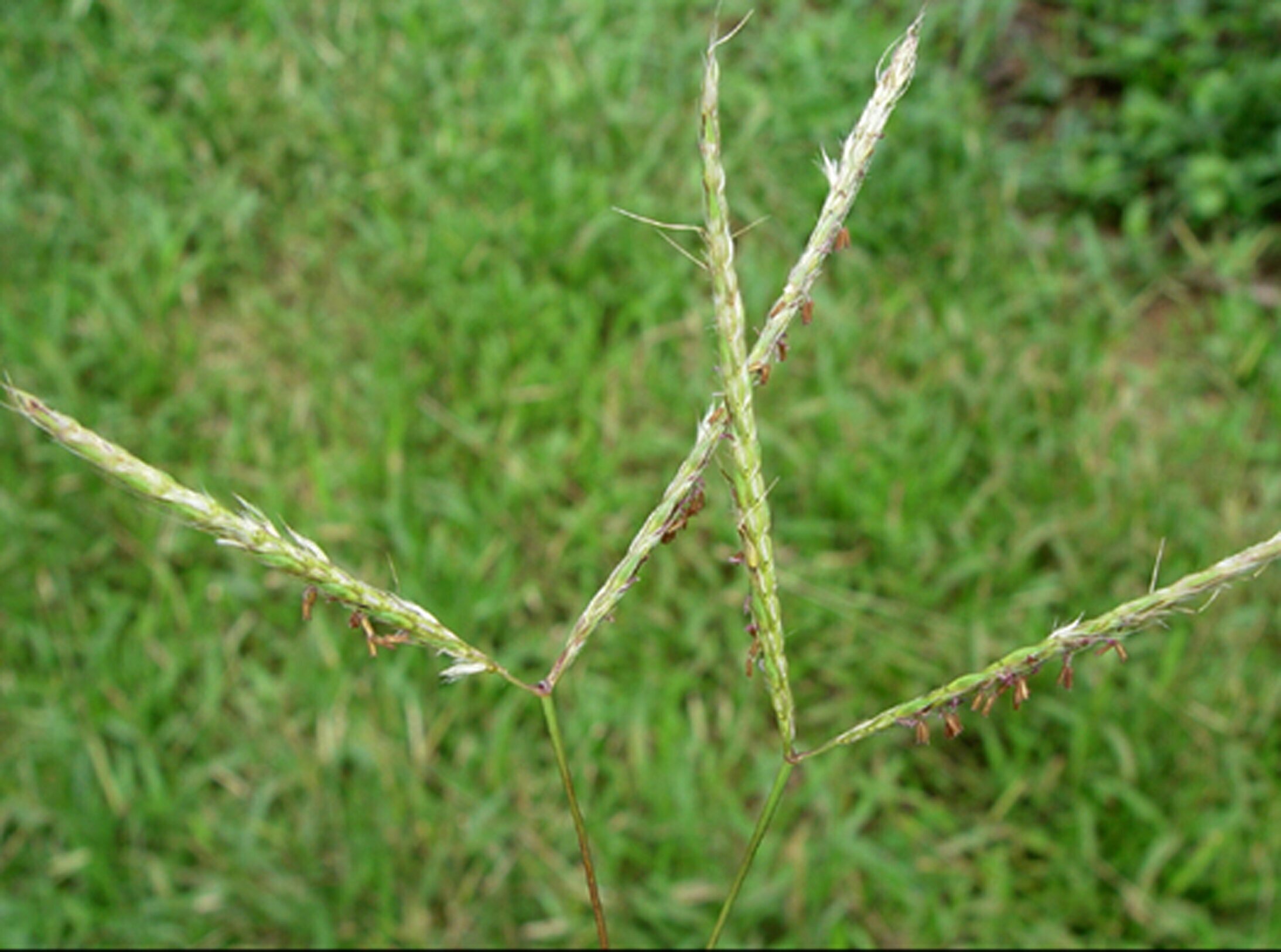 |
|||
| 255. Indigofera astragalia DC. Family: FABACEAE Flowering & fruiting: August-October & November-January Ecology: Common, in waste places & fallow lands during monsoon Description: Erect pubescent herbs; branches grooved, reddish. Leaflets elliptic-oblong, obtuse or retuse, pilose. Flowers pinkish-red on racemes. Pod deflexed, white-hairy, 6-seeded. Medicinal Uses: Indigofera is used in traditional medicine in South-East Asia for various complaints, externally, e.g. to treat sores, ulcers and aphthae, as well as internally, e.g. to treat epilepsy and as a diuretic. IUCN Status: |
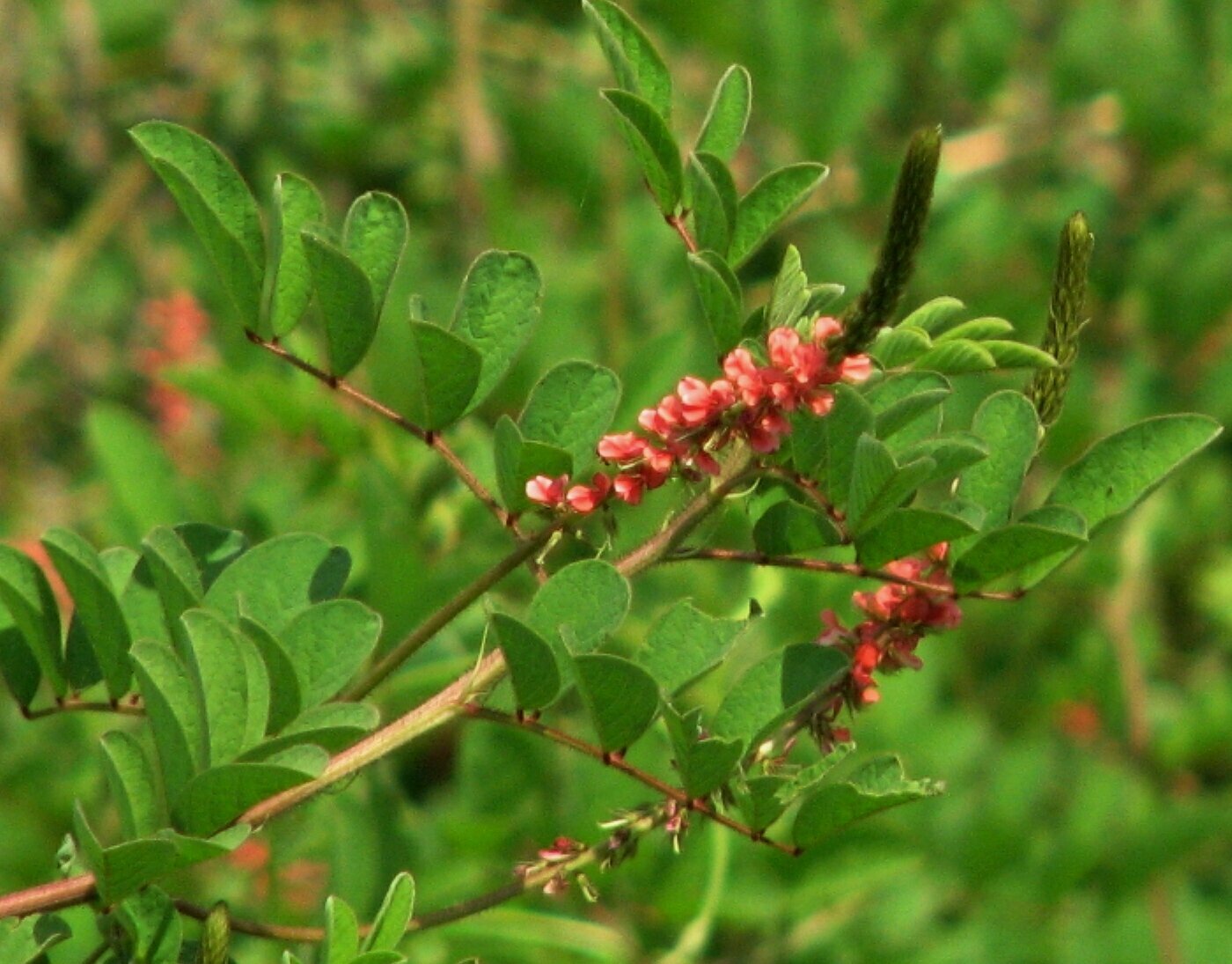 |
|||
| 256. Indineesiella echioides (Linn.) Family: ACANTHACEAE Flowering & fruiting: August-December Ecology: Occasional, on rocky hill slopes. Description: Erect, pubescent herbs. Leaves sessile, oblong, obtuse, hairy. Flowers pale – purple spotted, sessile, on divaricate racemes forming a pyramidal leafy, panicle. Anthers white-bearded. Capsules ellipsoid oblong, sharp. Medicinal Uses: Indoneesiella echioides (L) Nees is highly medicinal important. The species of Indoneesiella is used in goitre, liver diseases, fertility problems, bacterial, malarial and fungal disorders. The leaf juice of this plant is used to treating fevers. IUCN Status: |
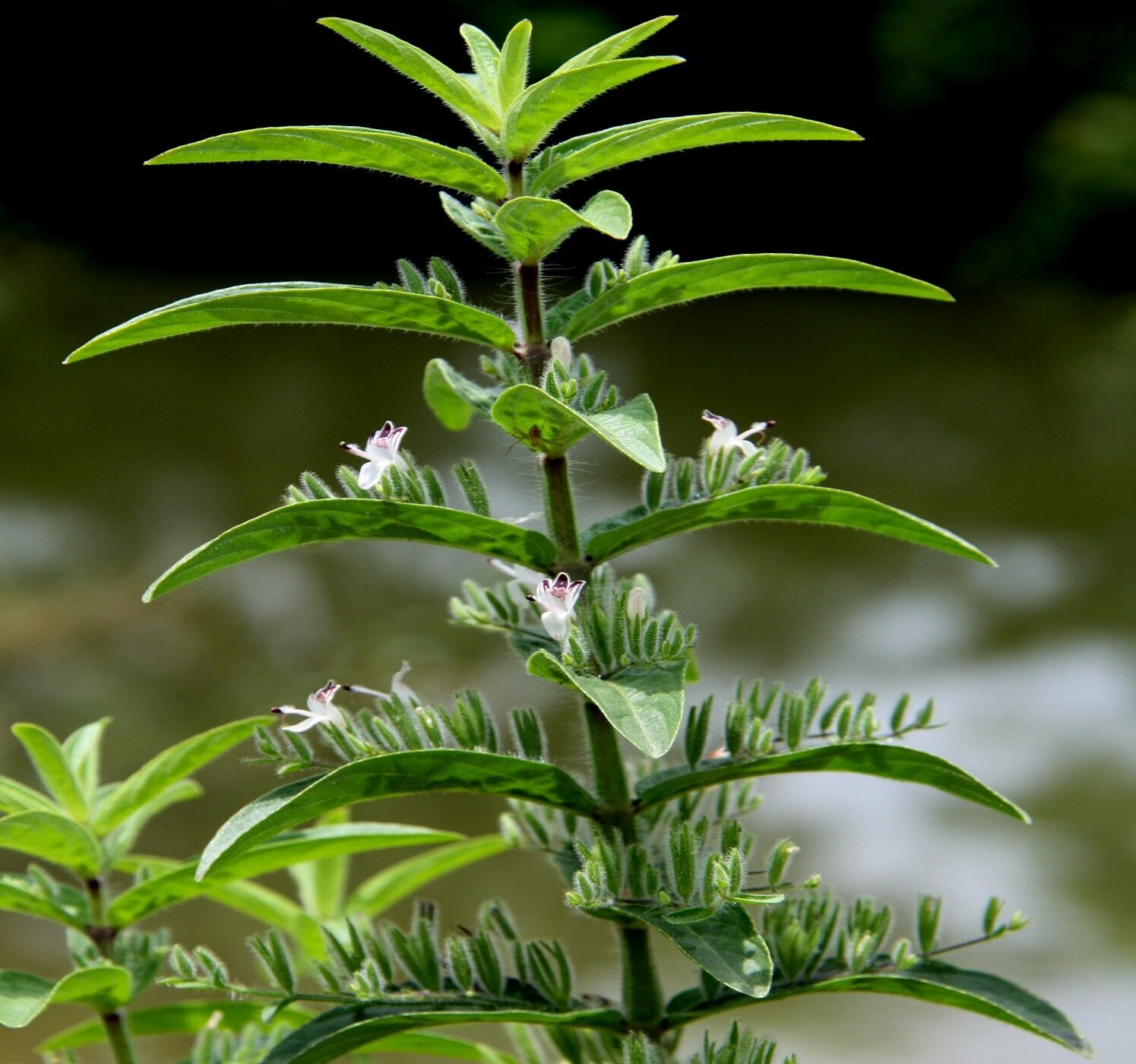 |
|||
| 257. Ixora pavetta Andr Family: RUBIACEAE Local name: Bhuen kurma Flowering & fruiting: March – April & May- June Ecology: Abundant in deciduous forests and thickets. Description: Small trees. Leaves oblong or elliptic, subsessile, base cuneate-cordate, coriaceous. Flowers white, fragrant, 4- merous, in compact panicles. Drupe depressed-globose, shining, black. Medicinal Uses: The flowers are pounded with milk for whooping cough. The decoction of bark is used for anaemia and general debility. Fruit and root is given to females when urine is highly coloured. Fresh roots are ground with water and one spoonful is given for 2days for the treatment of blood dysentery. IUCN Status: |
 |
|||
| 258. Ixora undulata Roxb. Family: RUBIACEAE Flowering & fruiting: March – May & August – September Ecology: Occasional, along streams in dense forests. Description: Large shrubs. Leaves oblong or lanceolate, margin undulate. Stipules broad. Flowers white, aromatic, on long-peduncled brachiate panicles. Petals reflexed. Fruits globose, succulent, slate-colored. IUCN Status: |
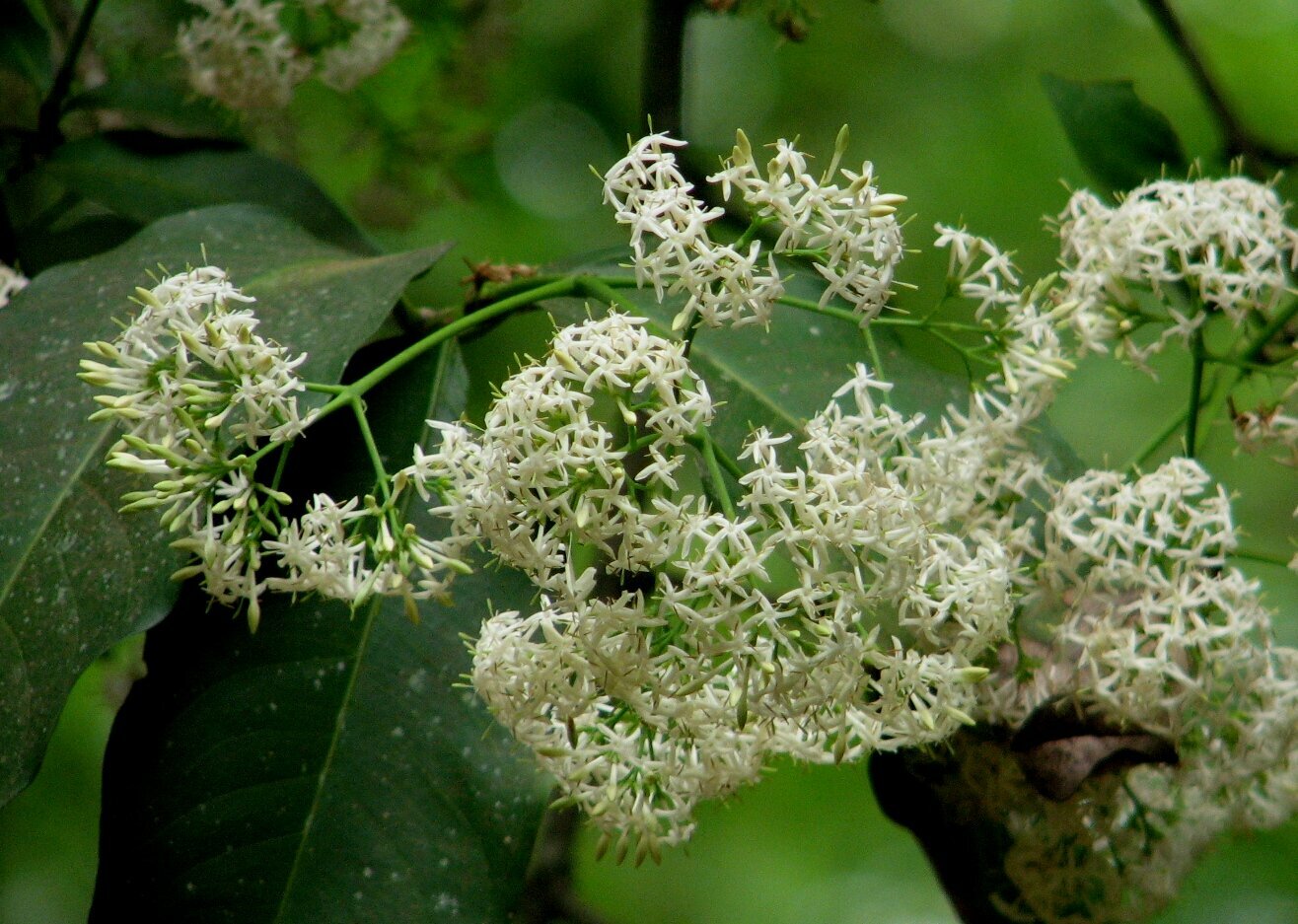 |
|||
| 259. Jasminum scandens Vahl. Family: OLEACEAE Flowering & fruiting: December – March Ecology: Quite abundant along nalas and ravines. Description: Scandent shrubs. Leaves elliptic, acute at both ends. Cymes terminal. Calyx campanulate. Corolla tube slender. Berry ellipsoid, black when ripe. Medicinal Uses: The flower is used to make medicine. Jasmine has been used for liver disease (hepatitis), liver pain due to cirrhosis, and abdominal pain due to severe diarrhea (dysentery). It is also used to cause relaxation (as a sedative), to heighten sexual desire (as an aphrodisiac), and in cancer treatment. IUCN Status: |
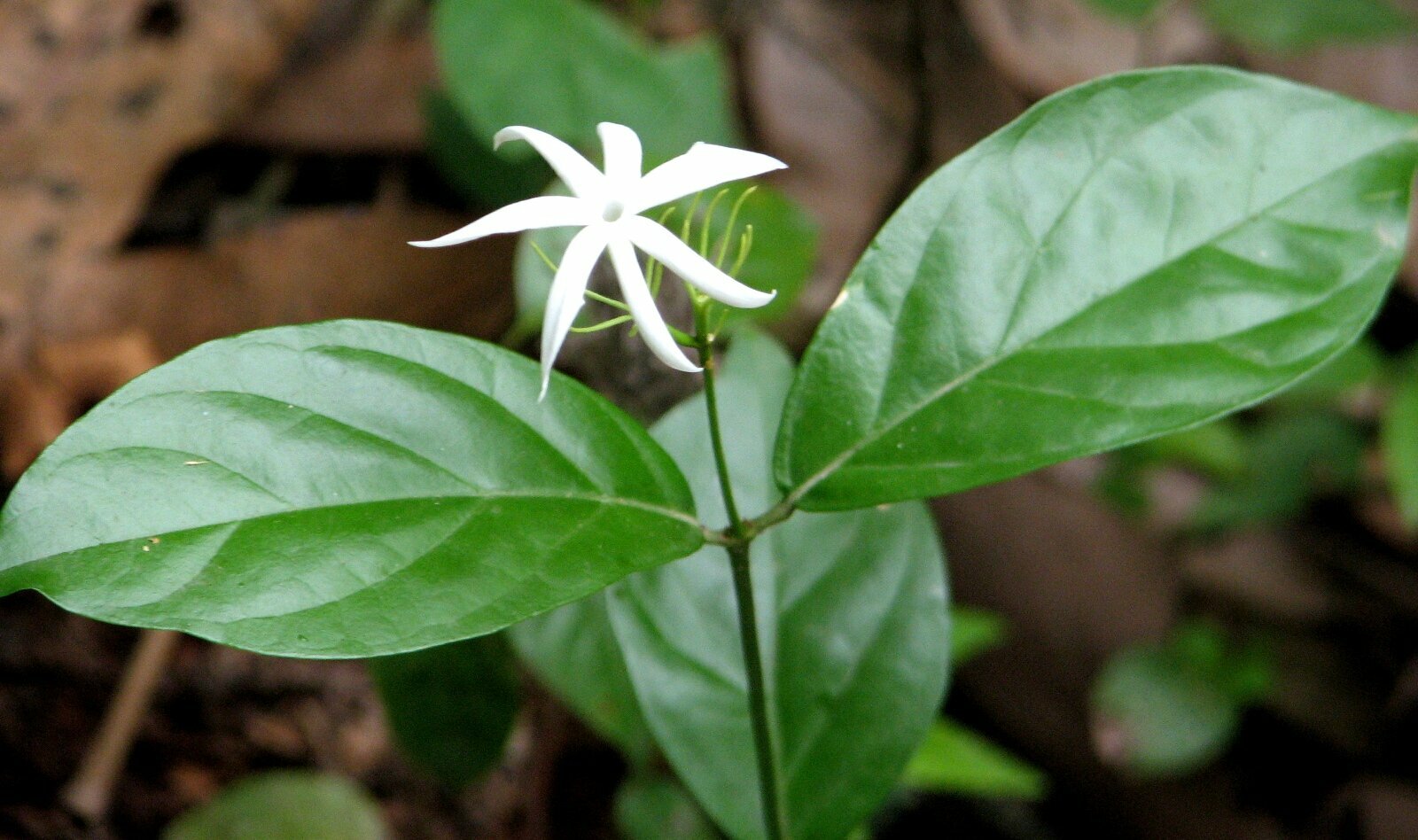 |
|||
| 260. Jatropha curcas Family: EUPHORBIACEAE Local name: Dhada Jada Description: Jatropha (Jatropha curcas L.) or physic nut is a drought resistant monoecious large shrub or small tree 5 (–8) m tall, belongs to the genus Jatropha which consists of over 170 species, and is a member of the Euphorbiaceae family, producing oil containing seeds. Medicinal Uses: Roots are boiled with castor oil and applied daily on joint rheumatism. Latex mixed with sugar and for the treatment of spermatorrhoea up to 13 days. IUCN Status: |
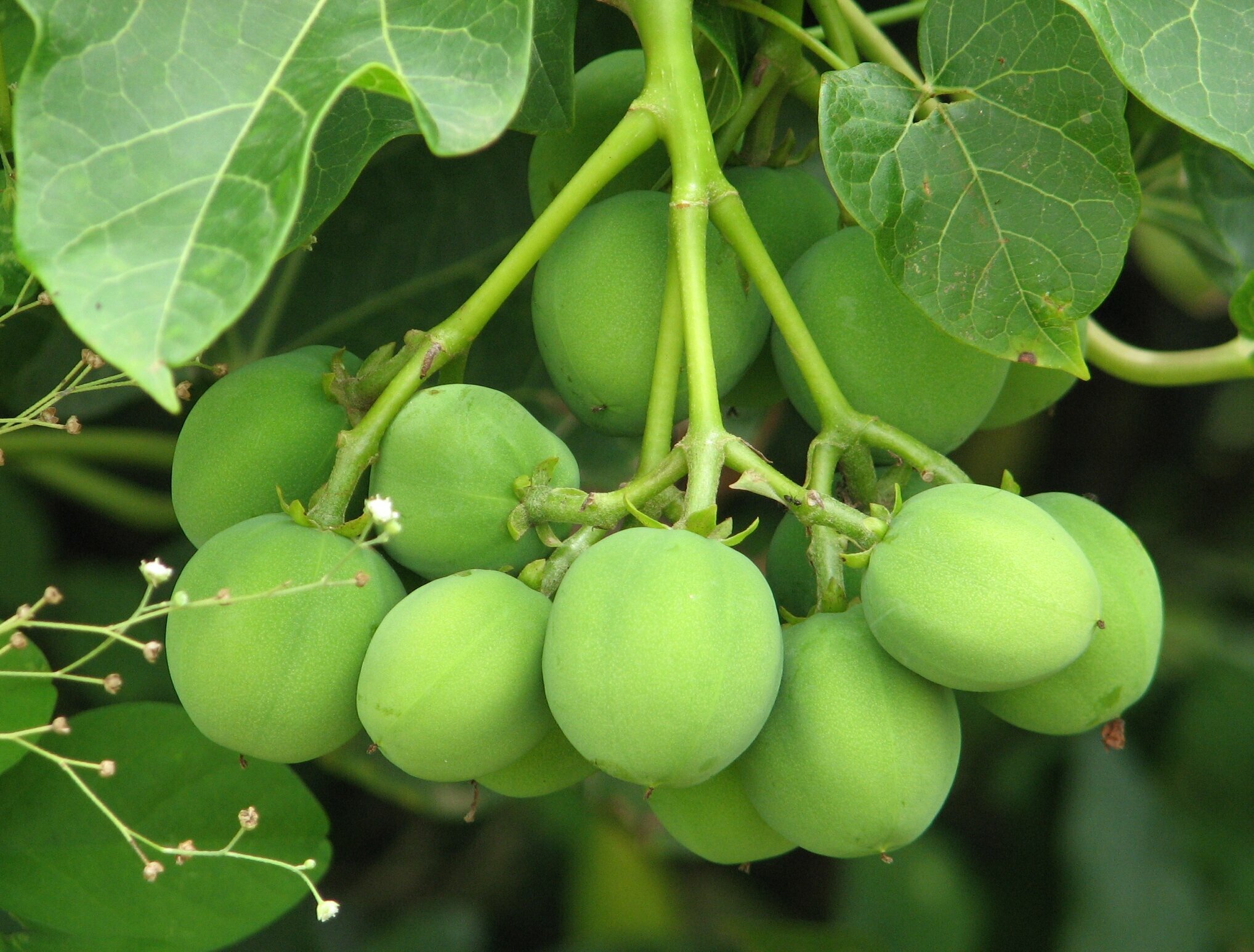 |
|||
| 261. Jatropha gossypiifolia Family: EUPHORBIACEAE Flowering & Fruiting: February- May Ecology: Commonly occur in riparian areas, monsoon vine forests and coastal foreshores. Description: Jatropha gossypiifolia is a small shrub with dark green or more frequently purplish-red dark leaves, with 16–19 cm of length per 10–12.9 cm of width; they are alternate, palmate, and pubescent, with an acuminate apex, cordate base, and serrated margin. Medicinal Uses: Roots pasted with castor oil and applied on knee, joint and other paining part of the body. Latex mixed with sugar and for the treatment of spermatorrhoea up to 13 days. IUCN Status: |
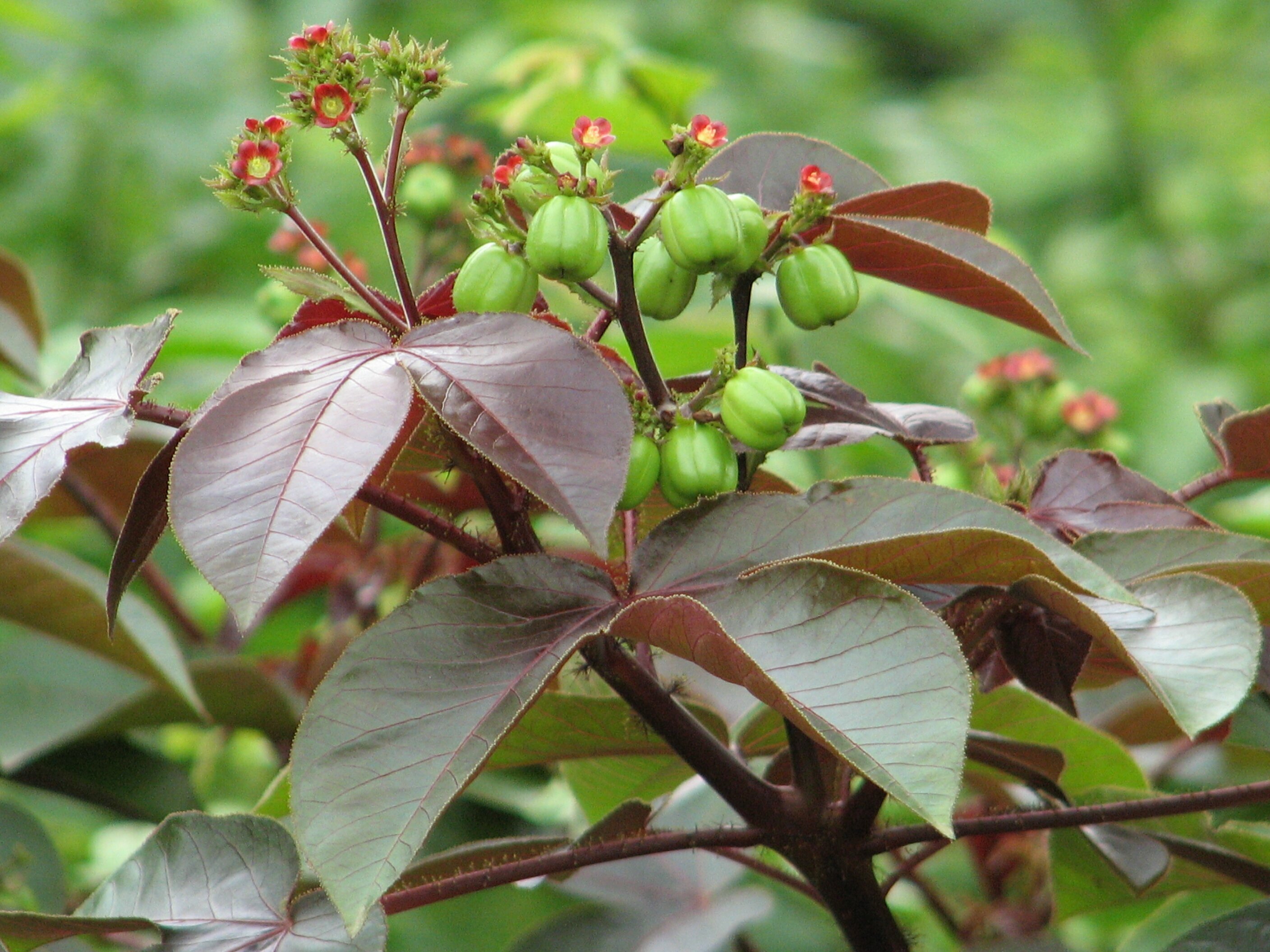 |
|||
| 262. Justicia adhatoda Linn. Family: ACANTHACEAE Local name: Vasak, Basanga Flowering & Fruiting: December – March Ecology: Common hedges, near villages. Description: Leaves elliptic-lanceolate, acuminate, foetid. Flowers subsessile, white, in terminal spikes. Calyx lobes 5, lanceolate. Capsule pubescent, clavate-oblong. Medicinal Uses: Ayurveda uses Vasa extensively in the treatment of cough and other respiratory ailments. Liquid extract of the plant is used in many pharmaceutical formulations as an expectorant. Experimental investigations suggest that Adusadilates finer bronchioles and ensures a smooth expectoration. IUCN Status: |
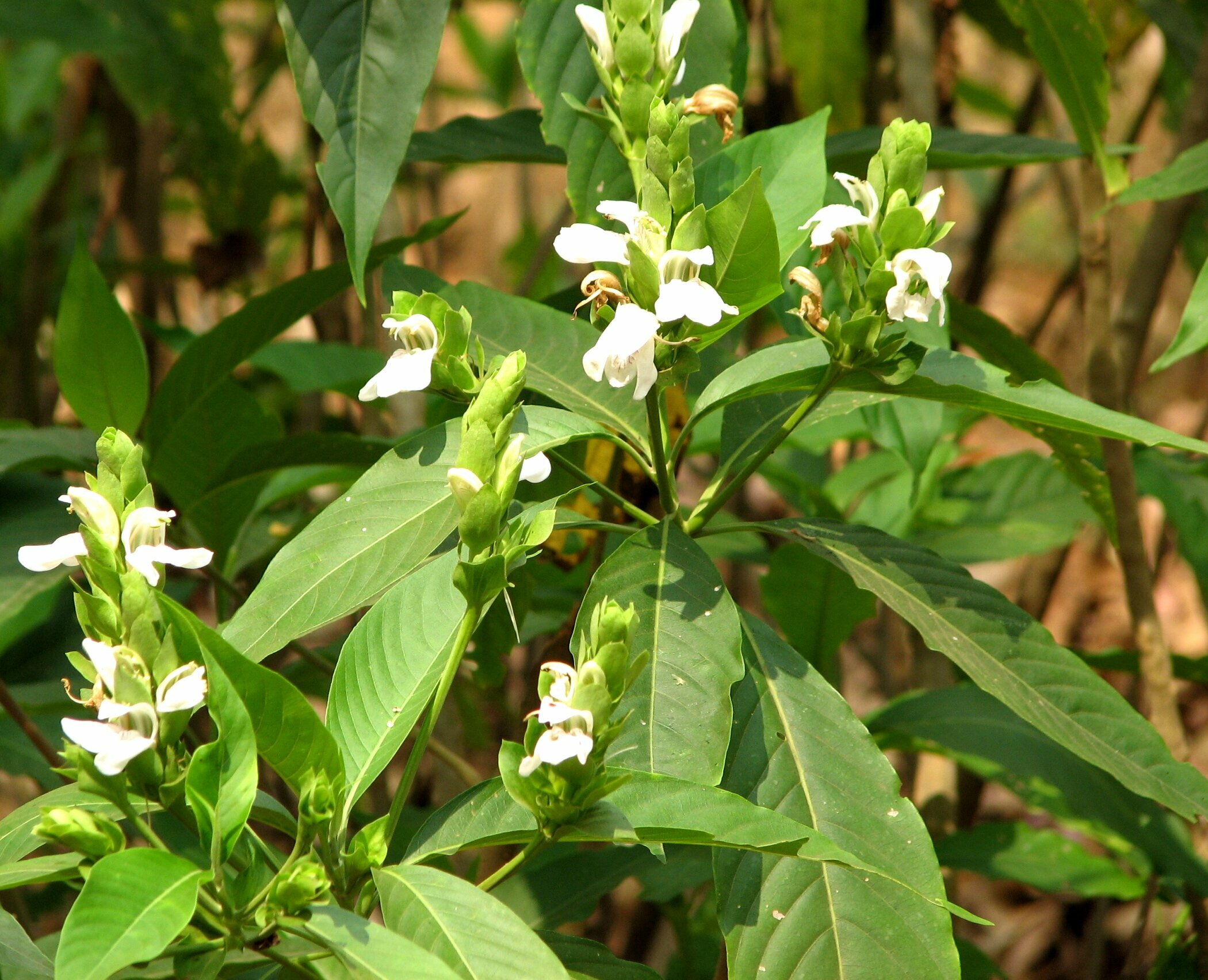 |
|||
| 263. Justicia betonica Linn. Family: ACANTHACEAE Flowering & Fruiting: November-March Ecology: Occasional, along ravines. Description: Stem many-striate. Leaves ovate-lanceolate, pubescent, smaller upwards, acuminate. Flowers white, rose spotted in terminal 1-3 nate spikes. Bracts white or green veined, mucronate. Capsule clavate, pubescent. Medicinal Uses: Justicia betonica L., family Acanthaceae is a widely used traditional folk medicinal herb. It is a unique source of jusbetonin and the leaves yield bluish purple dye. Traditionally, the plant is used to cure constipation, diarrhea, malaria, orchitis, pain, snake bite, stomach ache,vomiting etc. IUCN Status: |
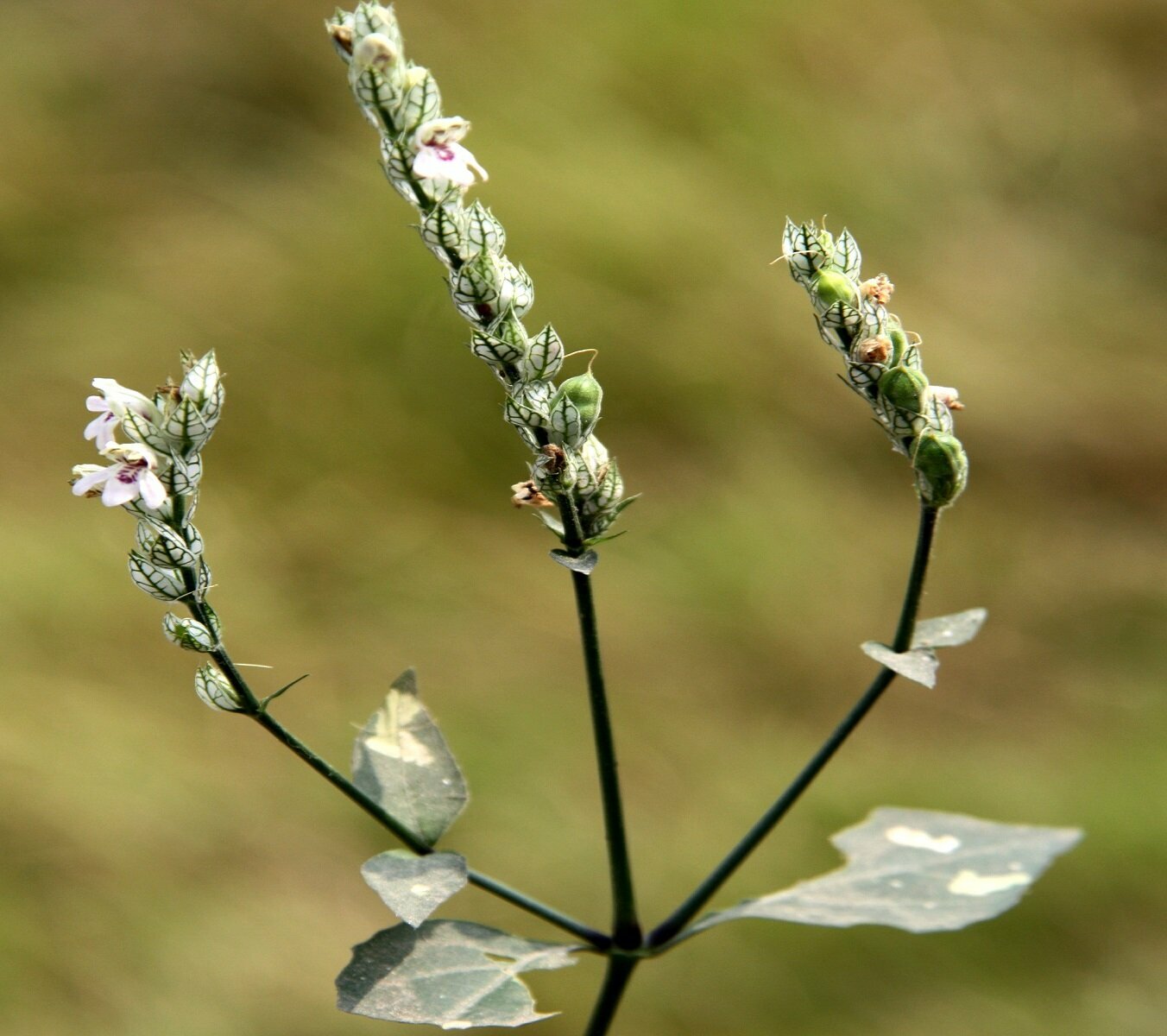 |
|||
| 264. Justicia gendarussa Family: ACANTHACEAE Local name: Kaliya Dahan, Pitta Basang Description: Leaf Justicia. Willow-Leaf Justicia is an erect, branched, smooth undershrub 0.8-1.5 m tall. The leaves are lance-shaped, 7-14 cm long, 1-2.5 cm wide, and pointed at the ends. The rather small flowers are borne in 4-12 cm long spikes, at the end of branches or in leaf axils. Medicinal Uses: Leaves of Justicia adathoda possess cardio protective property. The ethno medical information also revealed that the fruits of Justicia glauca were found to possess antibacterial and antifungal activities. IUCN Status: |
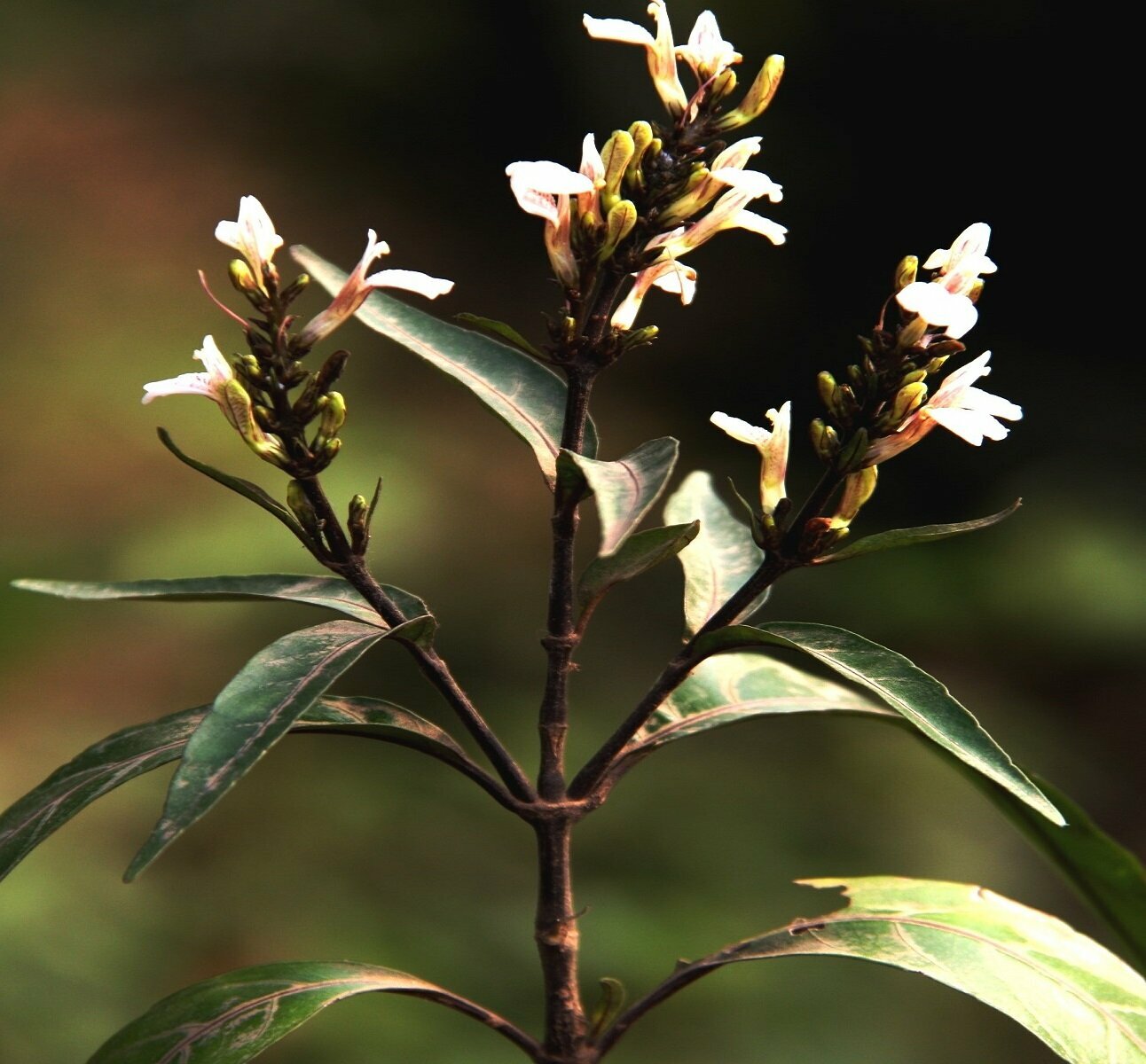 |
|||
| 265. Justicia glauca Rottl. Family: ACANTHACEAE Flowering & Fruiting: September-December Ecology: Occasional, in thickets. Description: Erect herbs; branches pubescent, base swollen. Leaves ovate or elliptic. puberulous on nerves beneath. Flowers white, purple spotted. foliaceous, rounded-obovate. Capsule clavate, 4-seeded. Medicinal Uses: Leaves of Justicia adathoda possess cardio protective property. The ethno medical information also revealed that the fruits of Justicia glauca were found to possess antibacterial and antifungal activities. IUCN Status: |
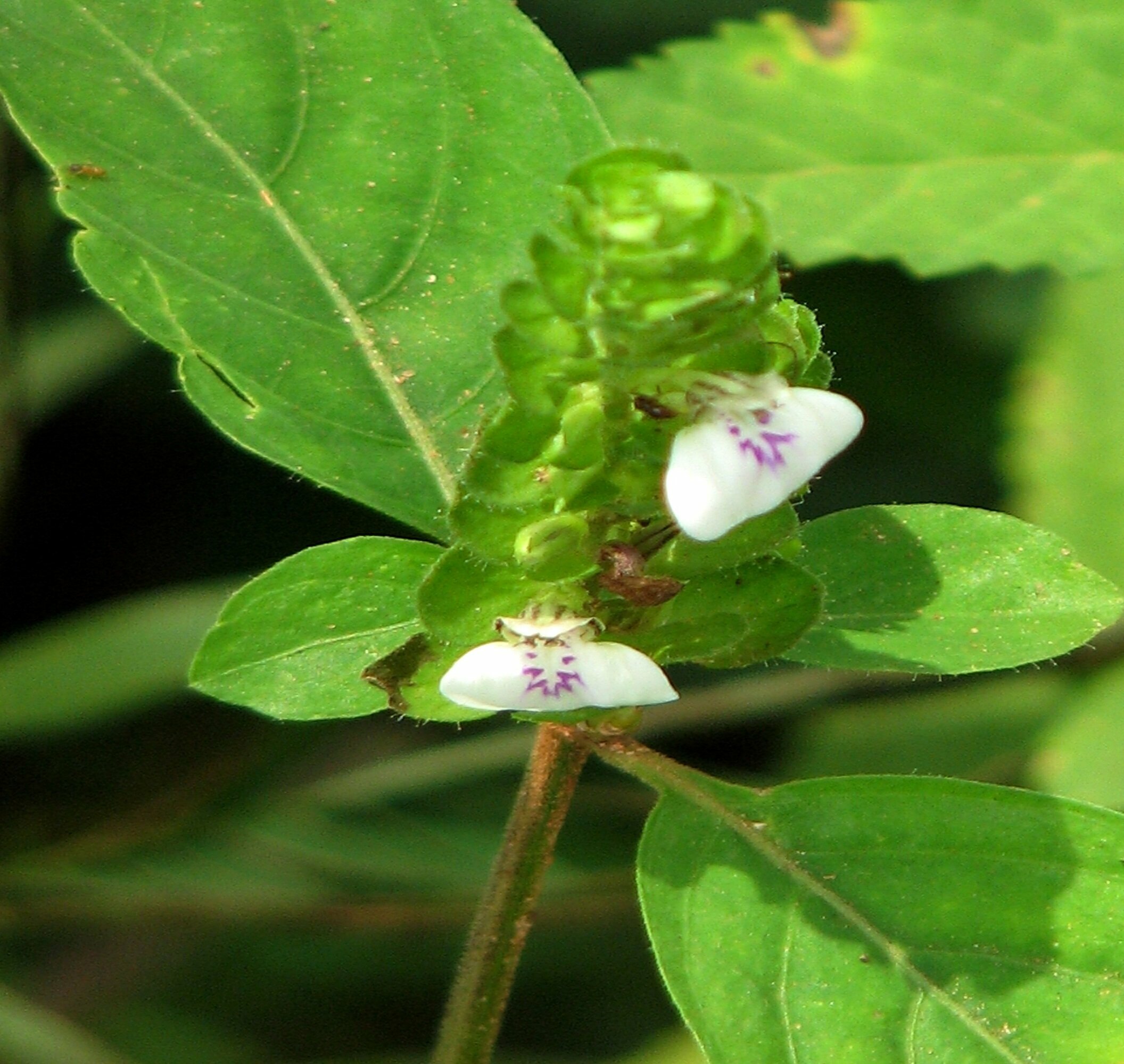 |
|||
| 266. Justicia japonica (Thunb.) Family: ACANTHACEAE Flowering & Fruiting: August -December Ecology: Common in mashy and swampy places. Description: Ascending herbs; stems 4-angled, grooved, hairy, swollen above he nodes. Leaves elliptic-oblong, pubescent on nerves. Flowers rose red, in axillary and terminal sessile hairy spikes. Sepals ciliate. Cageales oblong. Medicinal Uses: The herb contains a bitter alkaloid and that it is used as a substitute for Fumaria. It is alternative and expectorant and is given in the form of infusion in asthma, coughs, and rheumatism. IUCN Status: |
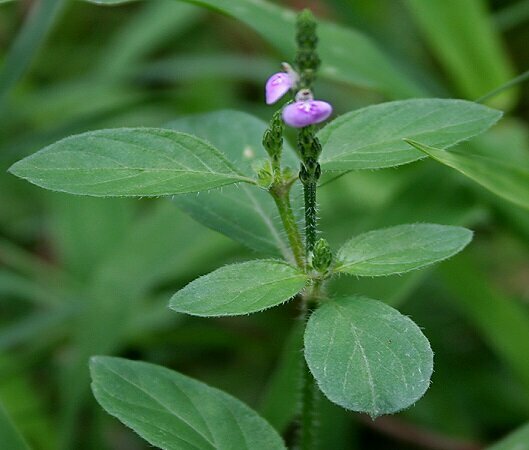 |
|||
| 267. Justicia quinqueangularis Koen. ex. Family: ACANTHACEAE Flowering & Fruiting: Round the year Ecology: Common in mashy and swampy places. Description: Erect herbs. Stem 5-sided, internode long. Leaves linear lanceolate, subacute. Flowers white with pink markings, in terminal spikes. Capsule stout. Seeds tubercular-rugose. IUCN Status: |
 |
|||
| 268. Kalanchoe pinnata (Lam.) Family: CRASSULACEAE Flowering & Fruiting: December-February & March-April. Ecology: Common, on shady and marshy forest floor. Description: Kalanchoe is a medicinal plant largely used in folk medicine for the treatment of kidney stones, gastric ulcer, pulmonary infection, rheumatoid arthritis etc. The leaves are astringent, antiseptic, diuretic and febrifuge. They are also used as a counterirritant against poisonous insect bites. The leaf-juice, combined with salt, is used as a treatment for colds, coughs, grippe, loose bowels and teething babies. The juice is applied topically in the treatment of earache, conjunctivitis and ophthalmia. The leaves and leaf-juice are mixed with coconut oil and Carapa oil and then rubbed on the head to treat violent and persistent headache. IUCN Status: |
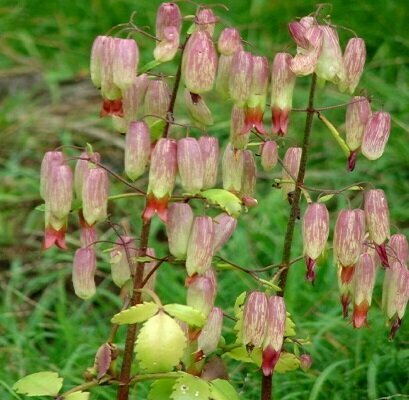 |
|||
| 269. Knoxia sumatrensis (Retz.) DC. Family: RUBIACEAE Flowering & Fruiting: August – December Ecology: Frequent, on hill slopes at high altitudes. Description: Erect, annual herbs. Stem 4-angled, pubescent, often grooved. Leaves linear- lanceolate to oblanceolate, base cuneate, apex acuminate, pubescent. Flowers blue or pinkish-white, subsessile, in pubescent, corymbiform cymose panicles. Fruit ellipsoid, 2-seeded. Seeds granulates. IUCN Status: |
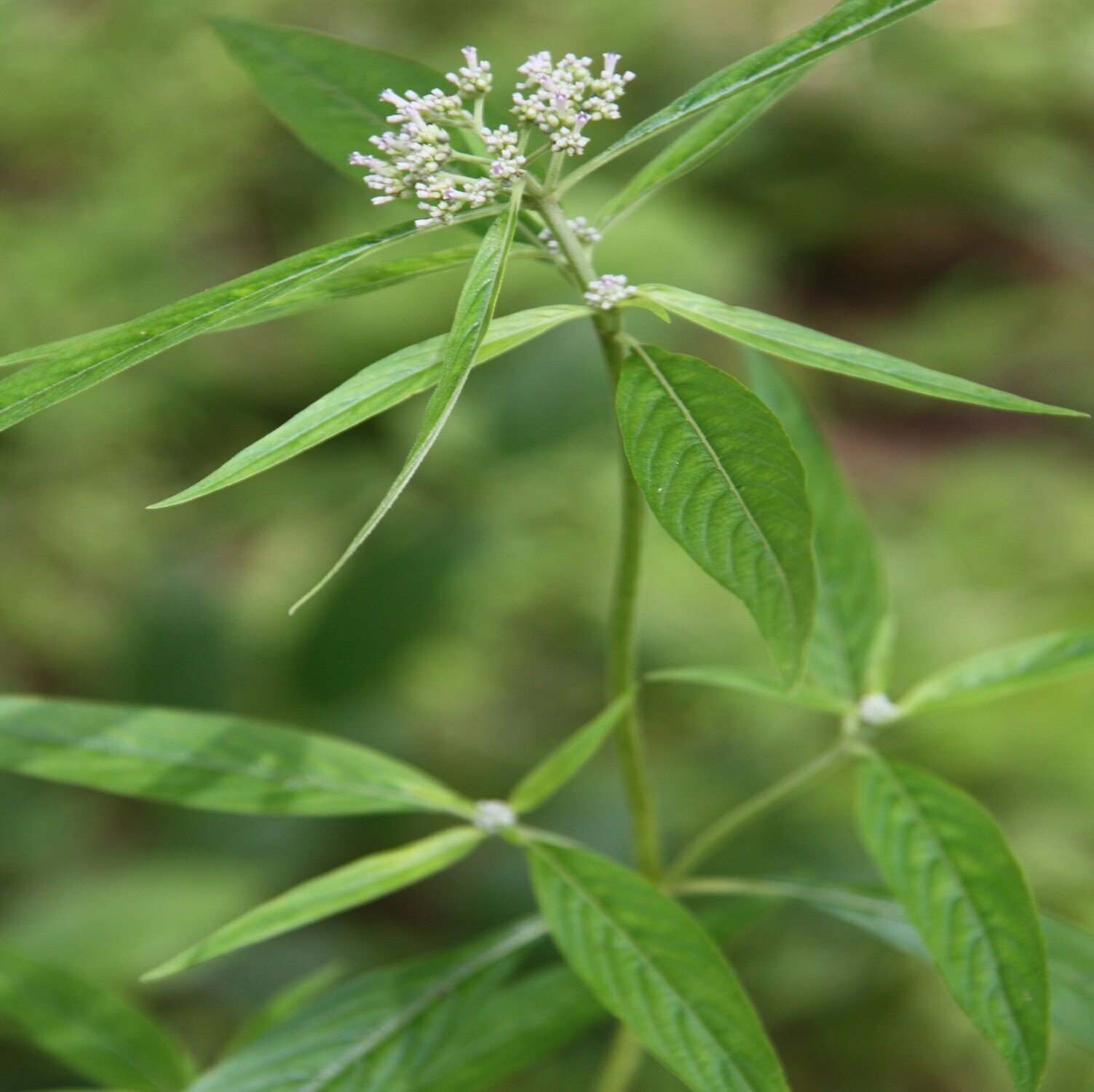 |
|||
| 270. Kyllinga brevifolia Rottb. Family: CYPERACEASE Flowering & Fruiting: July-August Ecology: Communion, on foot hills in moist localities. Description: Stems erect, rhizome covered with brown scales. Leaves glabrous or scabrid. Heads solitary. Glumes green or brownish, iii 2 sexual, ovate, keeled. Nut ellipsoid, compressed, yellowish. Medicinal Uses: Kyllinga brevifolia Rottb., Cyperaceae, rhizomes are used in Paraguayan traditional medicine as a refreshing beverage, and is claimed to possess digestive, diuretic, sedative, tonic, antispasmodic and sudorific properties. IUCN Status: |
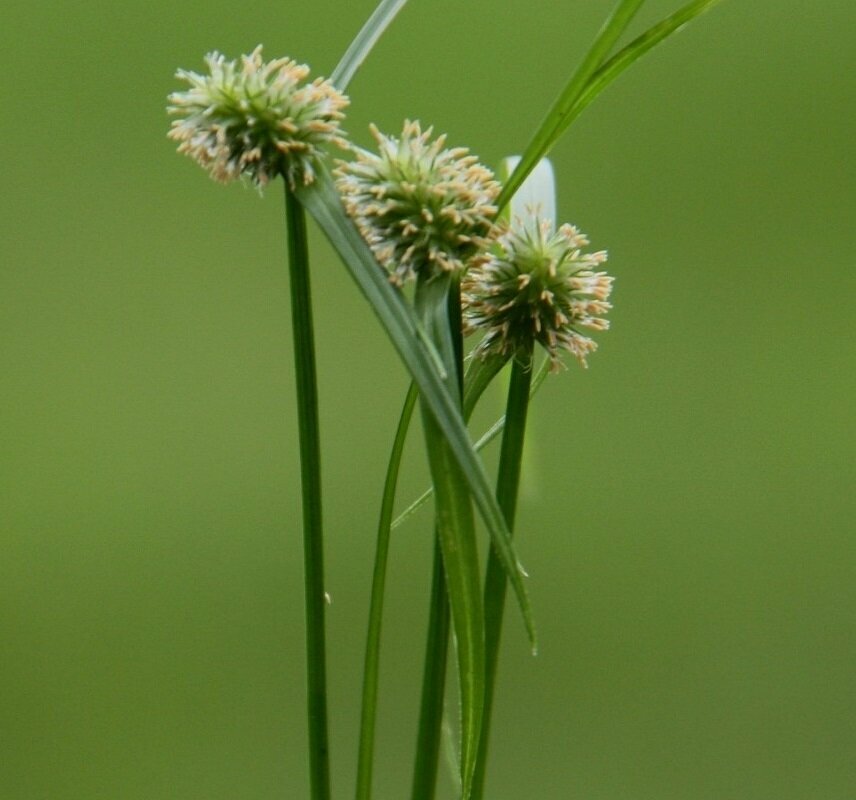 |
|||
| 271. Lantana camara Linn. Family: VERBENACEAE Flowering & Fruiting: All the year round Ecology: Commonest weed forming thickets in scrub jungles; a good hedge. Description: Scandent or straggling shrubs with small recurved prickles. Leaves ovate-oblong, base subcordate, cuneate or decurrent on petiole, rugose above. Flowers usually orange, white or purple, in short spikes. Drupe greenish-blue. Medicinal Uses: Studies conducted in India have found that Lantanaleaves can display antimicrobial, fungicidal and insecticidal properties. L. Camara has also been used in traditional herbal medicines for treating a variety of ailments, including cancer, skin itches, leprosy, chicken pox, measles, asthma and ulcers. IUCN Status: |
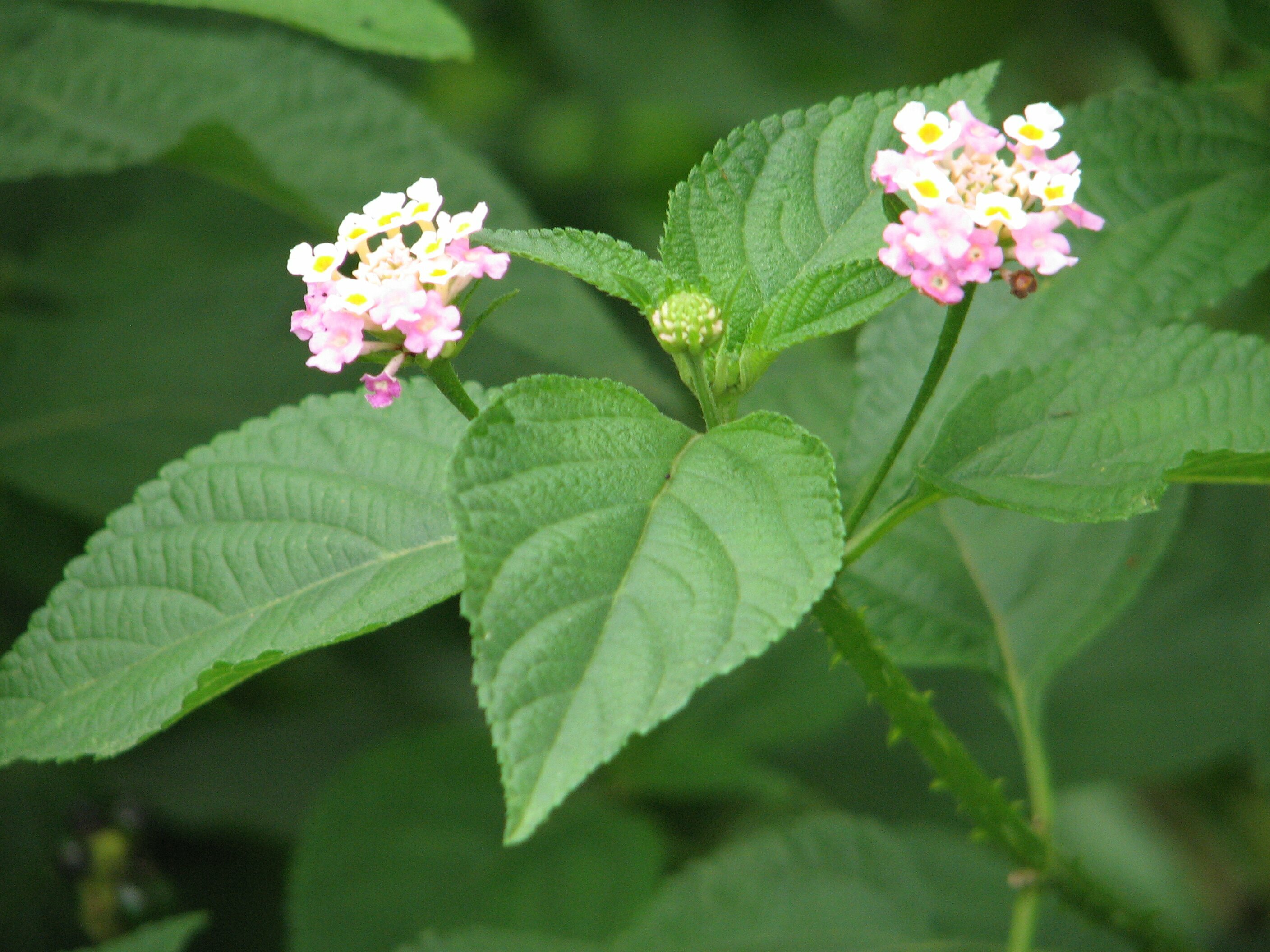 |
|||
| 272. Laportea interrupta (Linn.) Family: URTICACEAE Flowering & Fruiting: August-January Ecology: Gregarious in damp places under shade during rains; frequent on dilapidated walls and temples. Description: Erect annuals with stinging hairs. Leaves alternate, long petiole, ovate, base rounded, crenate-serrate, membranous; stipules bifid. Flowers monoecious or dioecious in clusters, in spikes or panicles, minute, greenish, 4-merous. Achene ovate, margins winged. Medicinal Uses: Nettle (Laportea interrupta) is one of the commonly recommended herbal medicines to aid in pregnancy in traditional medicine system of Philippines. As the plants of Urticaceae family has been reported for significant levels of minerals including iron, manganese, calcium, potassium and vitamins, the L. IUCN Status: |
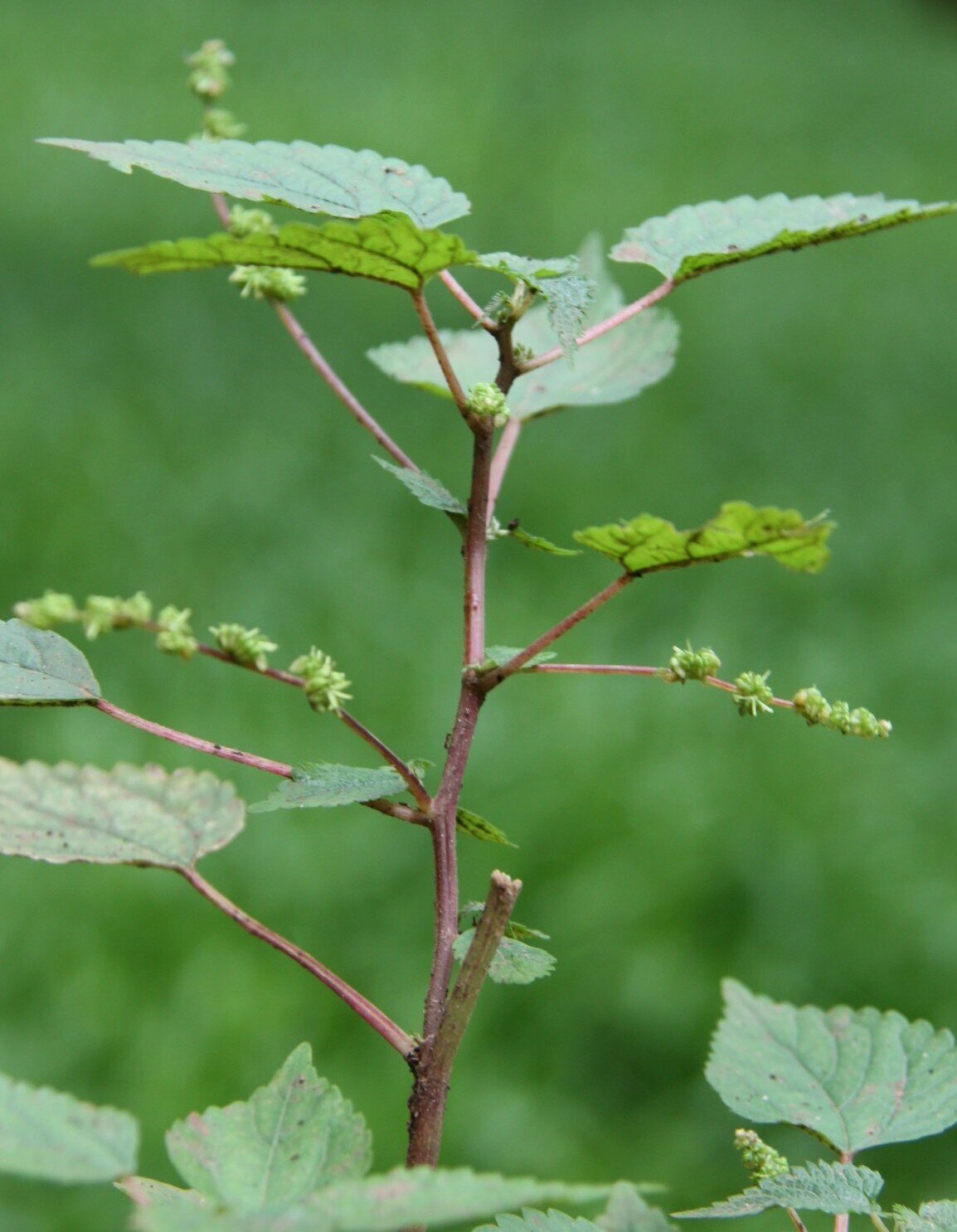 |
|||
| 273. Lawsonia inermis Linn. Family: LYTHRACEAE Flowering & Fruiting: March-April & May-August Ecology: Occasional, as hedges at the periphery of nursery. Medicinal Uses: Inermis reported the plant to have antibacterial, antifungal, antiparasitic, antiviral, anticancer, antidiabetic, tuberculostatic, anti-inflammatory, antifertility and wound healing properties. The leaves are taken internally in the treatment of amoebic dysentery. They are also used in the treatment of diarrhoea and to promote menstrual flow. They are used as a gargle to treat sore throats. Extracts of the leaves have an astringent effect on the skin, making it somewhat hydrophobic. The leaves are, therefore, used externally in the treatment of various skin diseases (including leprosy), wounds, ulcers and herpes. IUCN Status: |
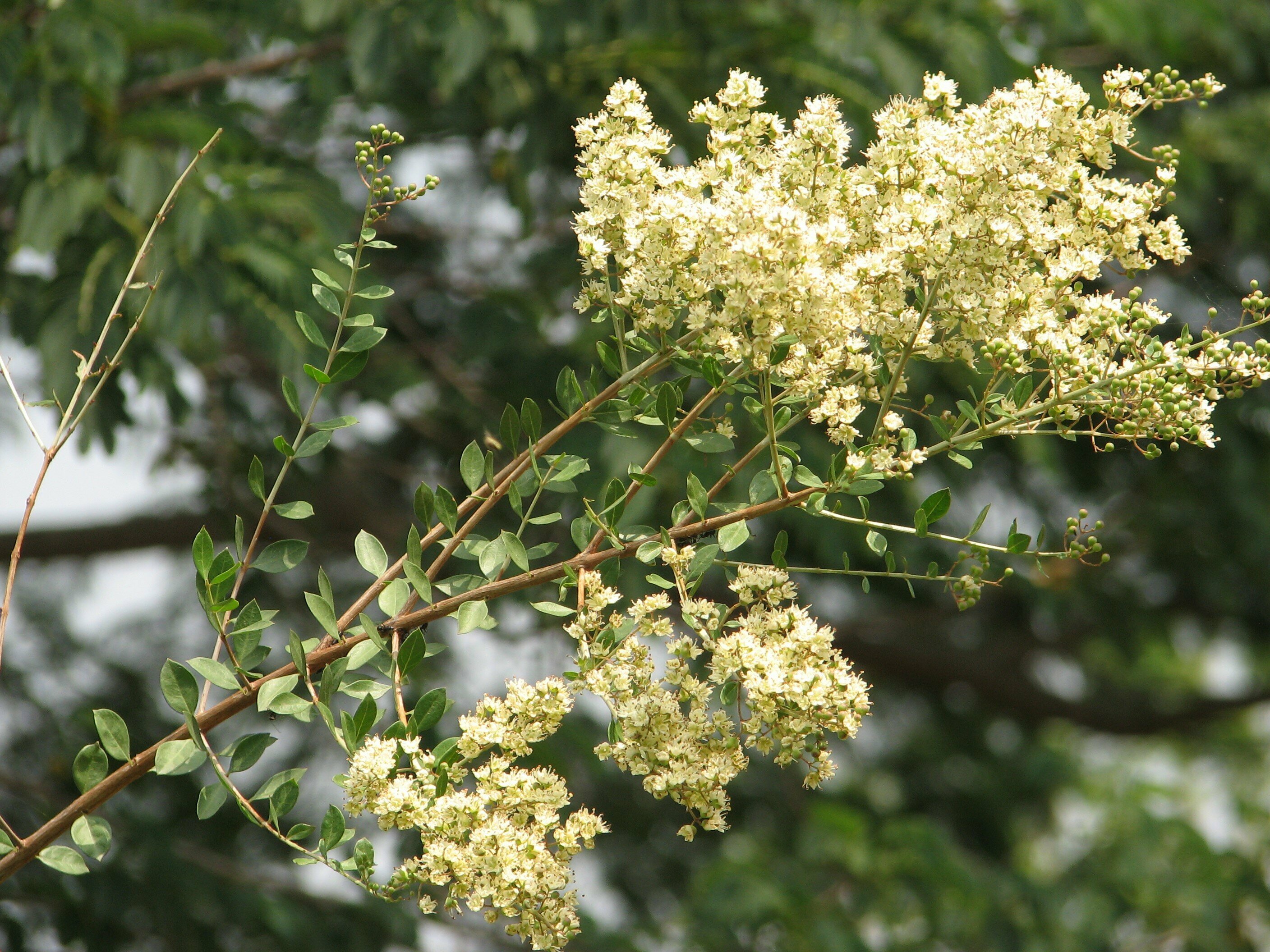 |
|||
| 274. Leea indica Burn. Family: VITACEAE Flowering & Fruiting: August-September & November-January Ecology: Quite common along streams in damp forests. Description: Large shrubs; stem hollow. Leaflets ovate, oblong lanceolate, acuminate, truncate-cordate. Flowers greenish white, in 2-3 chotomous panicles. Berries purplish- black. Medicinal Uses: Lagerstroemia indica showed anti-inflammatory, analgesic, antipyretic, antioxidant, anticancer, antimicrobial, anti-Alzheimer’s, antidiabetic, hepatoprotective and antithrombin effects. The current review discussed the chemical constituents and pharmacological effects of Lagerstroemia indica. IUCN Status: |
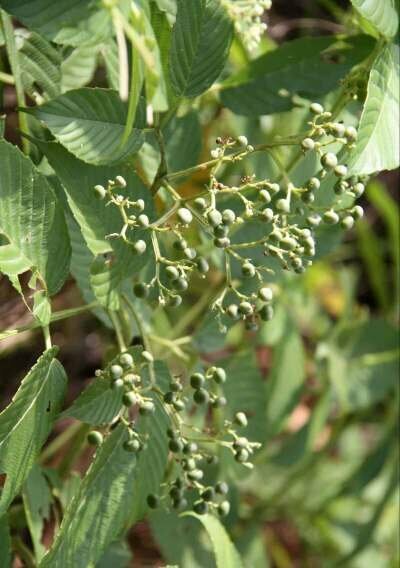 |
|||
| 275. Lannea coromondelica Houtt. Family: ANACARDIACEAE Flowering & Fruiting: March-July. Ecology: Abundant on hill slopes and plateau. Description: Deciduous trees; young shoot pubescent. Leaves odd-pinnate, leaflets 7-11, ovate, base oblique, acute. Flowers unisexual, yellowish-green in leafless branches on stellately hairy panicled cyme. Drupes ellipsoid, fleshy, compressed. The bark and the leaves are used as medicine. IUCN Status: |
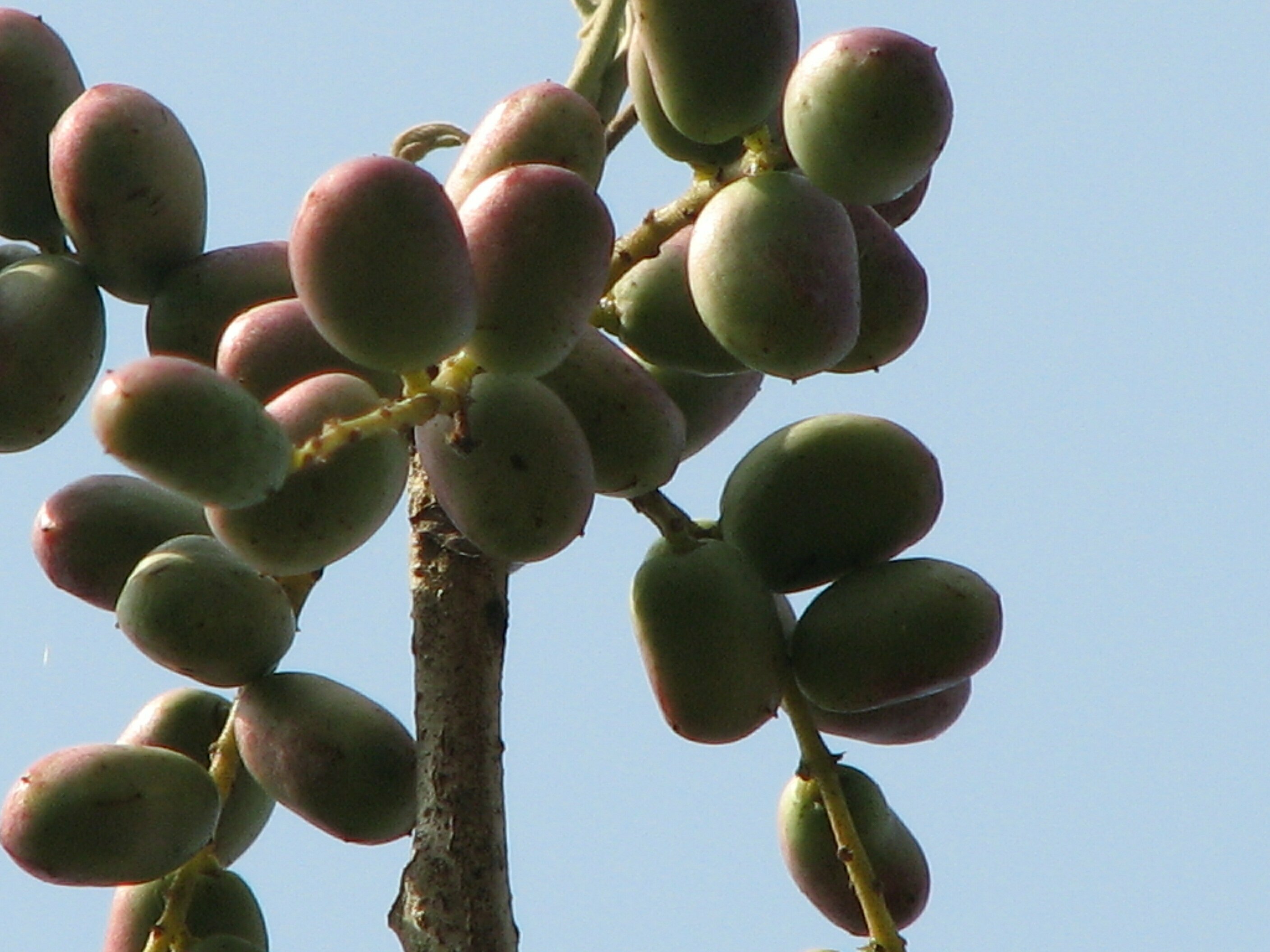 |
|||
| 276. Leonotis nepetifolia (Linn.) Family: LAMIACEAE Local name: Barch Flowering & Fruiting: November-March Ecology: Tramon, a foot hills and near villages Description: Tall, handsome herbs. Stem 4-angled, grooved, puberulous. Leaves ovate, crenate, smaller lanceolate and deflexed. Flowers scarlet in axillary globose whorls; bracts spinescent. Calyx teeth rigid. Nutlets linear-oblong. Medicinal Uses: They are used for heart conditions associated with anxiety and tension and will calm palpitations, tachycardia and irregular heartbeats. The dried foliage of Leonotis both Wild Dagga and Klip Dagga – can be used as a legal substitute for marijuana (ganja, cannabis, hemp). IUCN Status: |
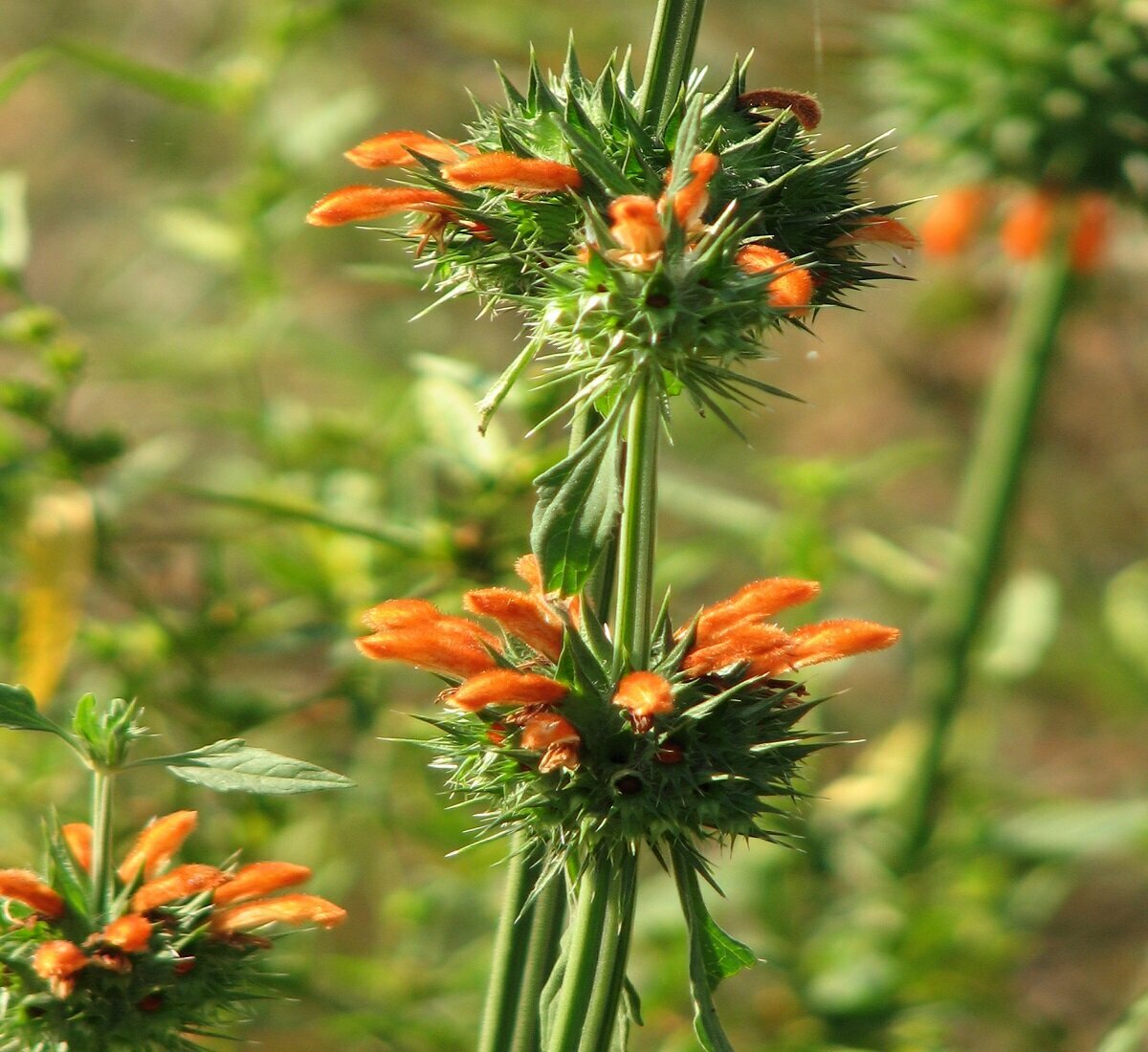 |
|||
| 276. Lepidagathis hamiltoniana Wall. Family: ACANTHACEAE Flowering & Fruiting: November-February Ecology: Abundant on lateritic hill tops. Description: Herbs. Stem 4-angled. Leaves linear, acute, subsessile, margin ciliate. Flowers in dense congested spikes. Bracts, bracteoles and sepals lanceolate and spine tipped. Capsule lanceolate, glabrous. IUCN Status: |
 |
|||
| 277. Leptadenia reticulata (Retz.) Family: APOCYNACEAE Flowering & Fruiting: August-October & February-March. Ecology: Occasional, in scrub forests. Description: Extensive twiners. Leaves opposite, base rounded, pubescent. Flowers greenish-white, in axillary or supra-axillary urbellate 2-3 -nate cyme. Corolla mealy puberulous. Follicles ovoid, ovate, oblong, green, apex blunt. Medicinal Uses: Leucocephala has been reported to possess medicinal properties that control stomach diseases, facilitate abortion and provide contraception, and it is often used as an alternative, complementary treatment for diabetes. Leaf and seed extracts also have antidiabetic activity. The roasted seeds are emollient. A decoction of the root and bark is abortifacient. IUCN Status: |
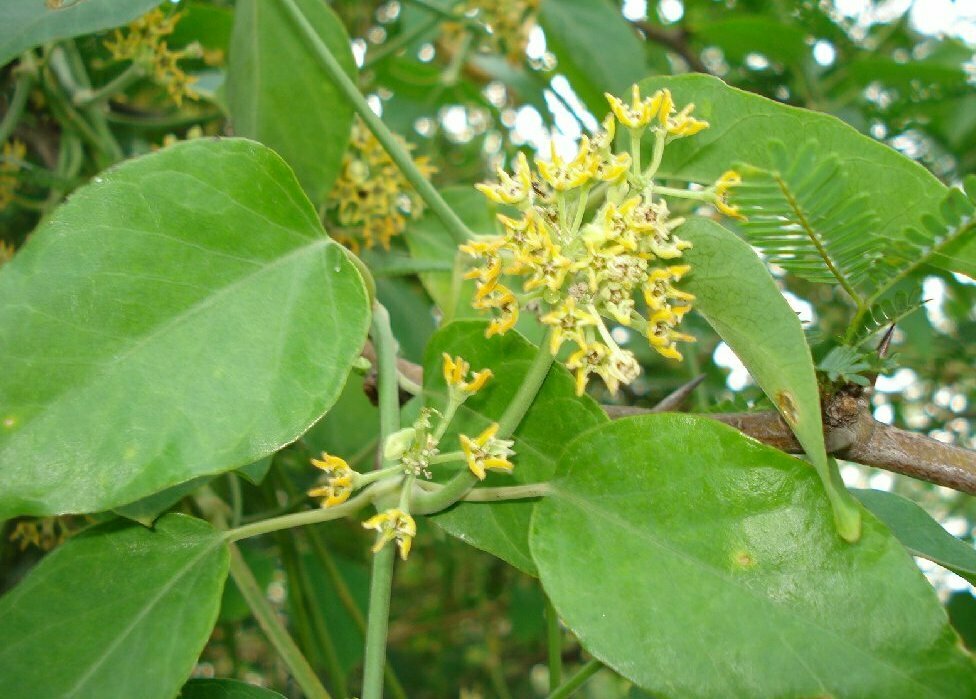 |
|||
| 278. Leucaena leucocephala (Lam.) Family: FABACEAE Flowering & Fruiting: July-September & November-January. Ecology: Quite common as hedges; very fast growing plant and cultivated for fodder, fuel wood and green manure in road sides. Medicinal Uses: Leucocephala has been reported to possess medicinal properties that control stomach diseases, facilitate abortion and provide contraception, and it is often used as an alternative, complementary treatment for diabetes. Leaf and seed extracts also have antidiabetic activity. The roasted seeds are emollient. A decoction of the root and bark is abortifacient. IUCN Status: |
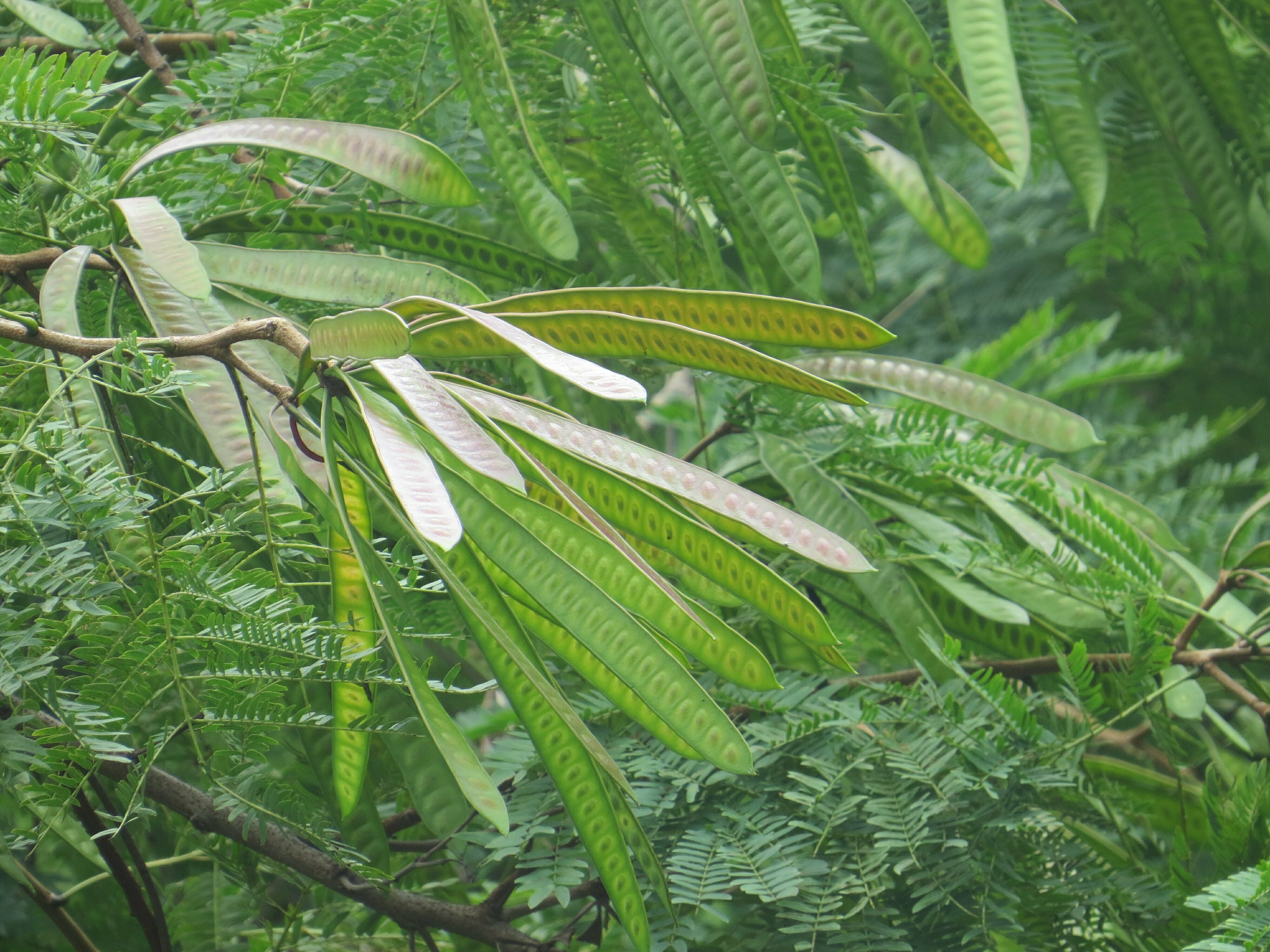 |
|||
| 279. Leucas aspera Family: LAMIACEAE Local Name: Dron puspi, Goins Sag Description: Common Leucas is an erect and diffusely branched annual herb. Leaves are linear or oblong, 2.5 to 7.5 cm long with blunt tips and scalloped margins. Whorls are large, terminal and axillary, about 2.5 cm in diameter and crowded with white bell shaped flowers. Medicinal Uses: Whole plant extract is given with honey in the treatment of fever, malaria and migraine. It is also given to threat wounds inside the nose. IUCN Status: |
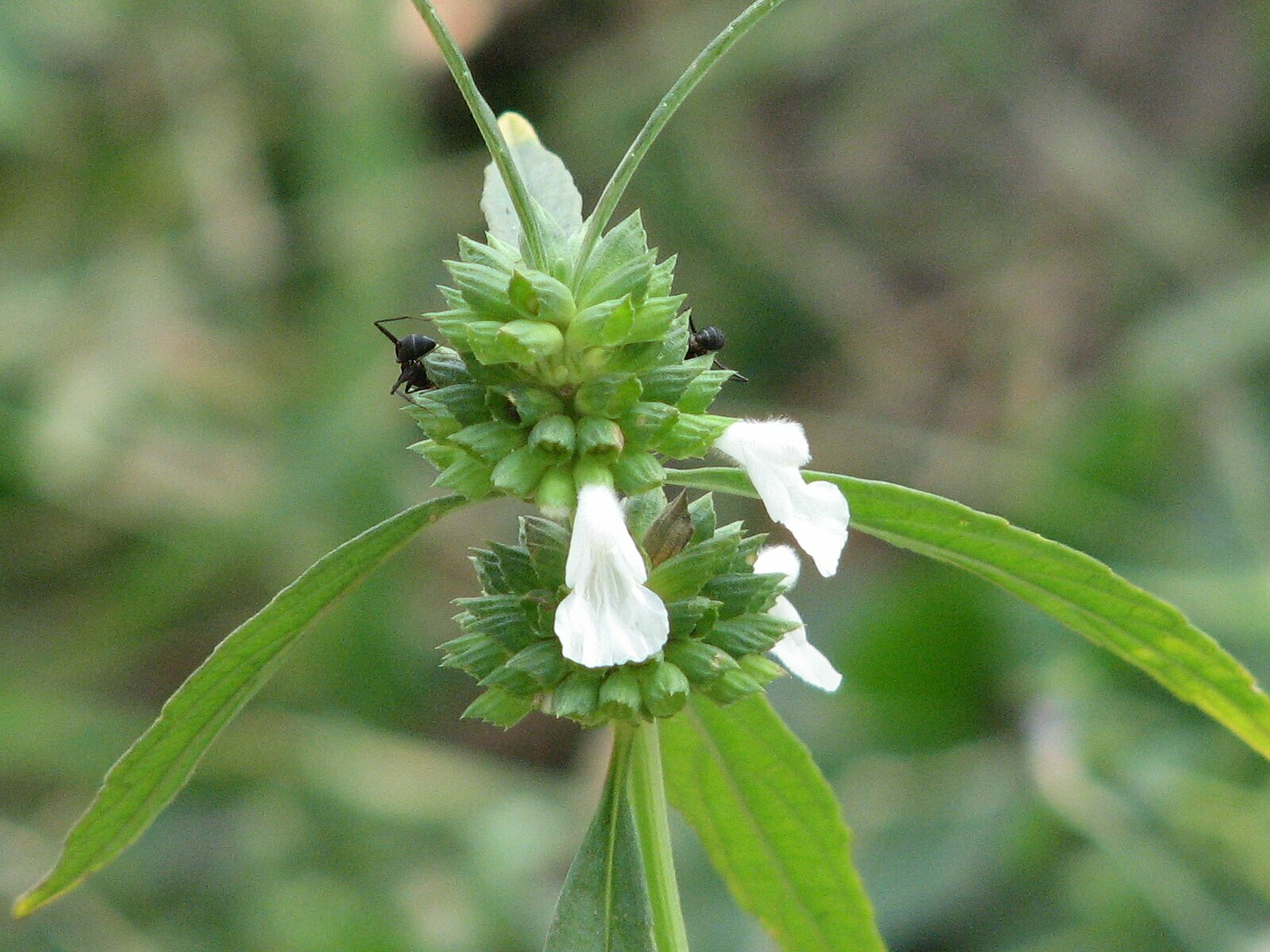 |
|||
| 280. Leucas cephalotes Roth. Family: LAMIACEAE Local Name: Nadiya, Gobiful Flowering and Fruiting: July – October Ecology: Occur locally in wet places and also on cultivated land. Medicinal Uses: The plant is used, both externally and internally, as a treatment for snake bite. A paste of the plant is boiled with mustard oil and applied externally to boils. The crushed leaves are applied to wounds, and sores, especially those of the eyes and nose; and also to chronic skin diseases, such as psoriasis and scabies. A decoction of the leaves is used as a treatment against roundworm, mainly for children. The flowers, mixed in honey, are used as a domestic remedy for cough and colds. The dried inflorescences are smoked and the smoke exhaled through the nose to treat nosebleed. The plant is a valuable homoeopathic drug, used for the treatment of chronic malaria and asthma. Fresh leaves is applied on forehead in headache. IUCN Status: |
 |
|||
| 281. Leucas mollissima Wall. ex. Benth. Family: LAMIACEAE Local Name: Samar khayee Ecology: Occur in moist, shady places, roadsides, grasslands, streamside, sunny thickets, evergreen forests. Description: It is an annual herb, woody at base, up to 1.5 m tall, branches 4-gonous, covered with deflexed or deflexed and spreading hairs, glabrate or hairless to densely soft hairy. Medicinal Uses: A paste made from the flower heads is used in the treatment of fevers. The plant is used as a tonic. In general, the crushed leaves of Leucas species are applied to wounds, sores, especially those of the eyes and nose, chronic skin diseases, such as psoriasis and scabies. The crushed leaves are also used to treat mild fevers, colds, rheumatism and snake bites, and as a decoction against roundworm, mainly for children. A warmed paste is prepared from roots with water is applied externally for the treatment of gout, rheumatism and panning part of the body. IUCN Status: |
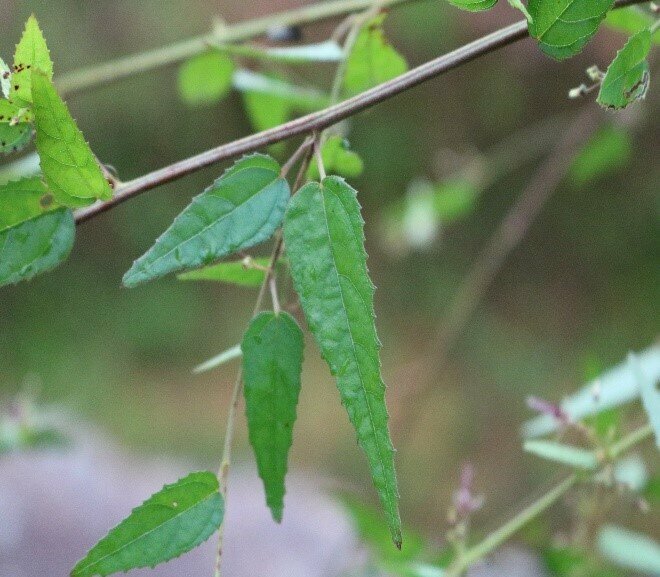 |
|||
| 282. Limnophila indica (Linn.) Family: PLANTAGINACEAE Flowering & Fruiting: October – January Ecology: Common in marshes & swamps. Description: Erect herbs, rooting at lower nodes. Lower leaves pinnately dissected, upper 3-fid. Flowers white with pink striations, in leaf axils. Capsule globose. Seeds muricata, black. Medicinal Uses: In the Philippines, infusion of leaves used for dysentery and dyspepsia. Juice of the plant is rubbed over the body in pestilent fevers. Liniment made from the plant with coconut oil is used in elephantiasis. Internally the juice, combined with cumin and other aromatics, is given for dysentery. IUCN Status: |
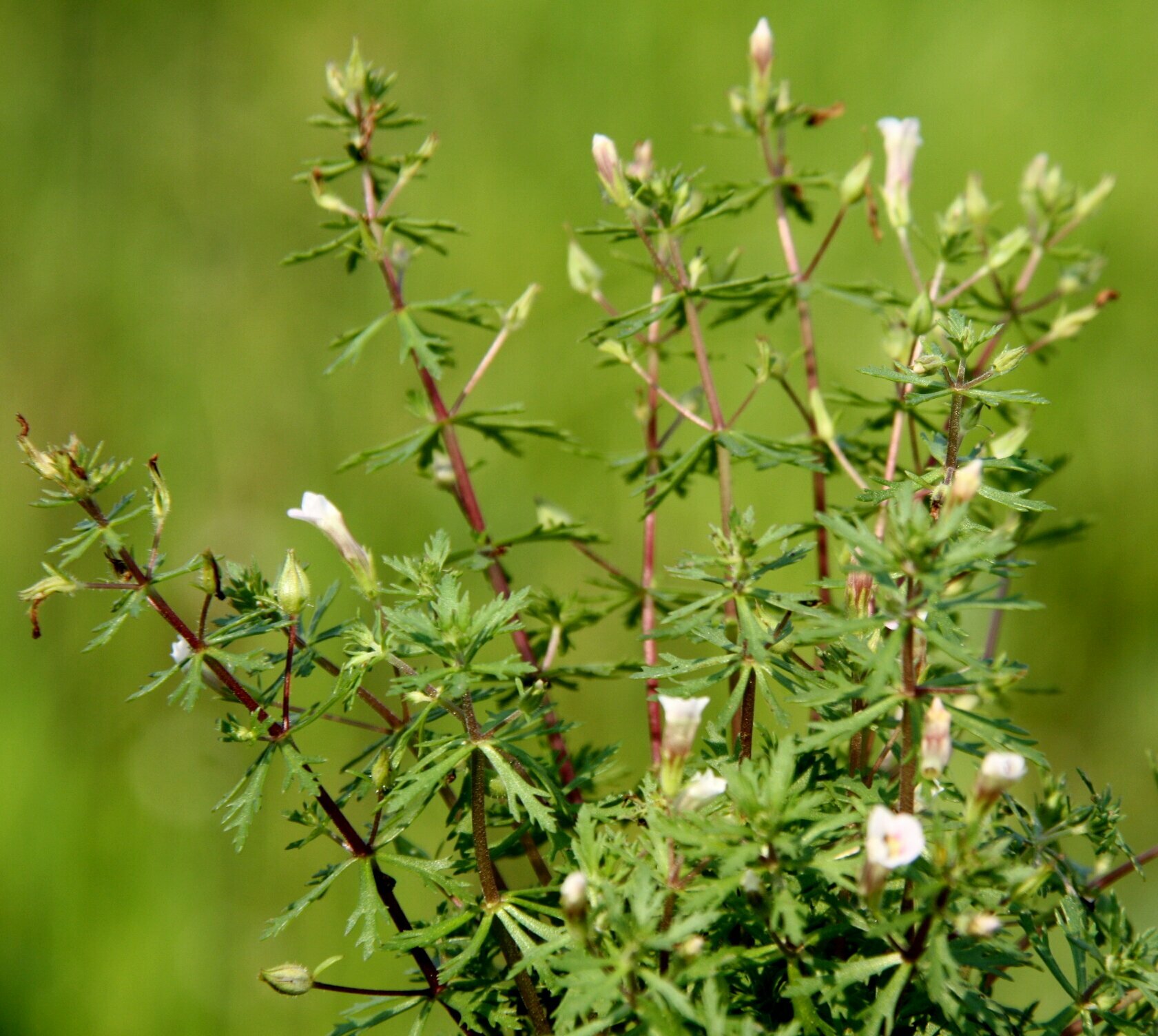 |
|||
| 283. Limonia acidissima Family: RUTACEAE Local Name: Kaitho Description: Limonia acidissima is a large tree growing to 9 metres (30 ft) tall, with rough, spiny bark. The leaves are pinnate, with 5-7 leaflets, each leaflet 25–35 mm long and 10–20 mm broad, with a citrus-scent when crushed. The flowers are white and have five petals Medicinal Uses: Fruits are eaten in mouth of February-March. It is used for making chutney with salt and chillies. It is said to be beneficial in digestion and induce hunger. IUCN Status: |
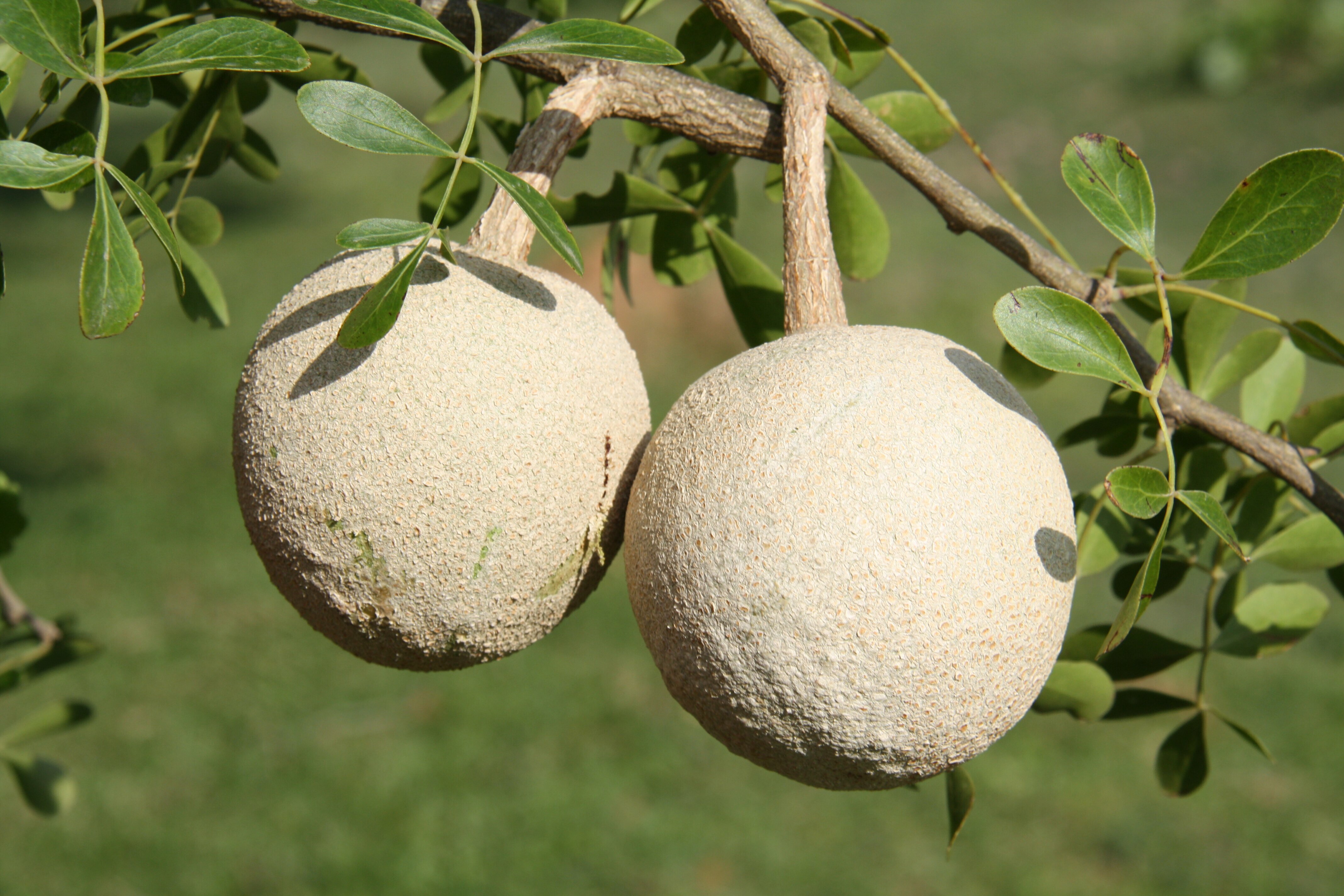 |
|||
| 284. Lindernia antipoda (Linn.) Family: LINDERNIACEAE Flowering & Fruiting: July-December Ecology: Abundant among grasses in wet localities. Description: Prostrate or decumbent herbs. Leaves elliptic-lanceolate, shallowly serrate. Flowers solitary, blue purple with yellow mouth. Capsule more than twice the length of calyx. IUCN Status: |
 |
|||
| 285. Lindernia ciliata (Colsm.) Family: LINDERNIACEAE Flowering & Fruiting: August – November Ecology: Common, on foot hills in wet places near stream. Description: Erect annuals. Leaves sessile, elliptic-oblong, aristate- dentate. Flowers pinkish-white, in terminal racemes. Capsule linear. IUCN Status: |
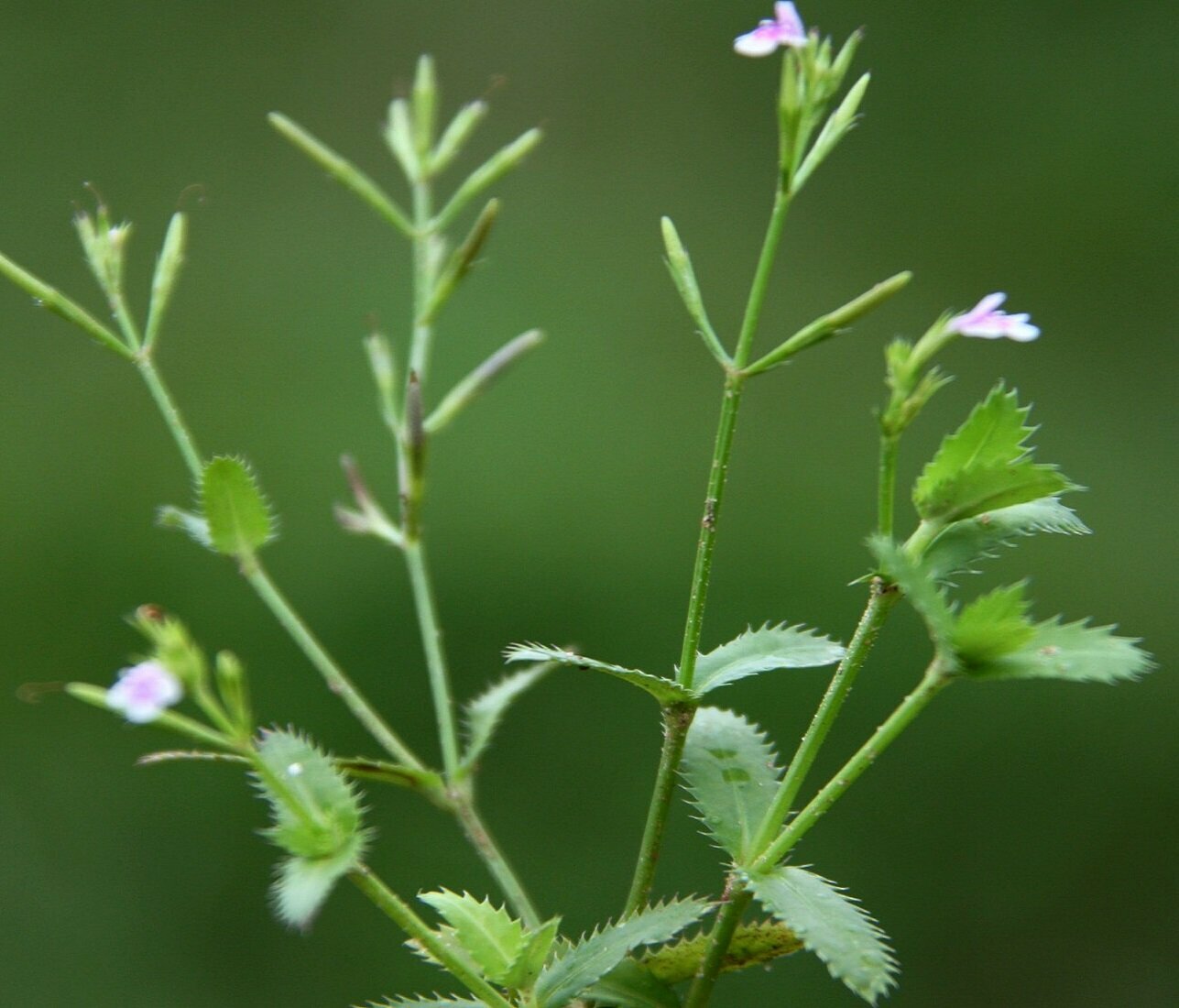 |
|||
| 286. Lindernia crustacea (Linn.) Family: LINDERNIACEAE Flowering & Fruiting: July-December Ecology: Abundant among grasses at foot hills. Description: Erect or diffuse herbs. Leaves petiolate, ovate, crenate serrate. Flowers pinkish-violet, axillary, solitary and in terminal racemes. Capsule obovate. IUCN Status: |
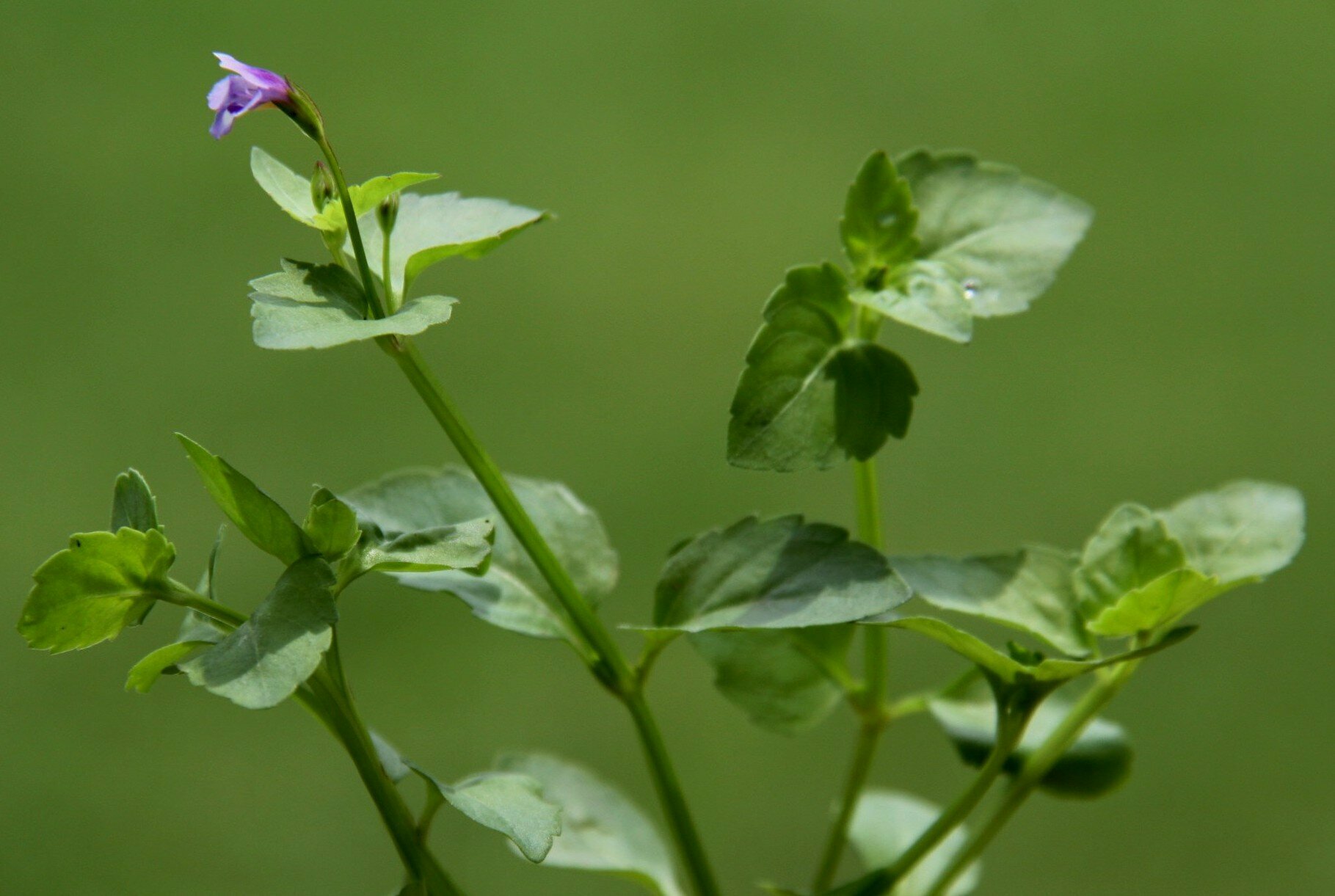 |
|||
| 287. Lepisanthes tetraphylla Vahl. Family: APOCYNACEAE Flowering & Fruiting: March-April & April-June Ecology: Occasional, on foot hills. Description: Small trees, young shoot rusty tomentose. Leaflets 2 pairs, subopposite, elliptic or obovate, rounded or obtuse apex. Flowers polygymous, white, irregular, in axillary spiciform panicles. Ovary 3-gonous. Drupe woody, apiculate, angular, 3-seeded. Medicinal Uses: The fruits of Rauvolfia tetraphylla are poisonous. The latex is irritant, emetic, cathartic, expectorant and it is used for treating dropsy. The leaf juice is used for eyes troubles. The leaf decoction is used for toothache. IUCN Status: |
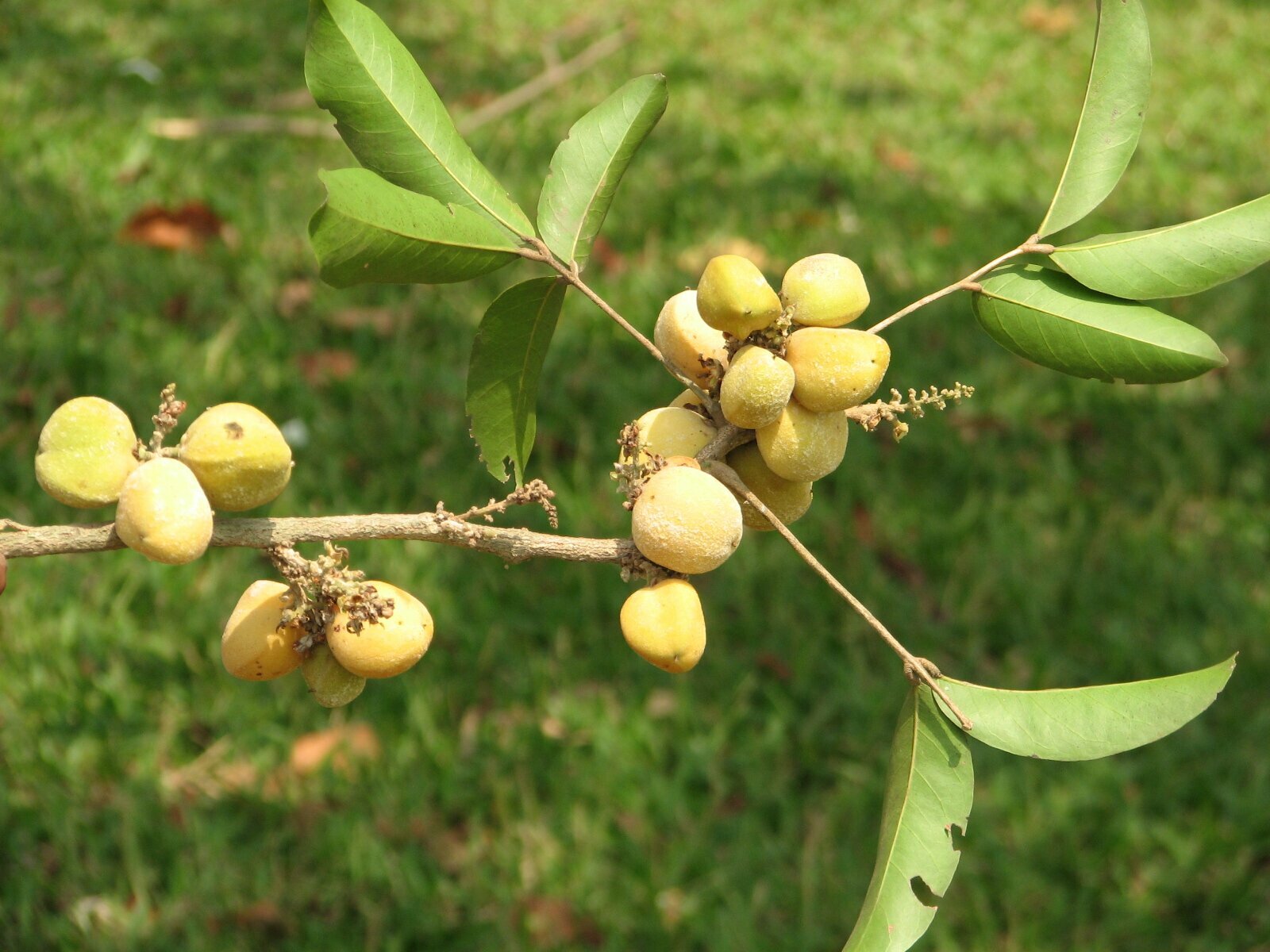 |
|||
| 288. Litsea glutinosa(Lour.) Family: LAURACEAE Flowering & Fruiting: May-June & September- October Ecology: Abundant, in moist valleys. Description: Small, aromatic trees. Leaves elliptic-lanceolate, base narrow, acute or acuminate, grey-pubescent beneath. Flowers yellowish, in compound umbels. Stamens & staminodes hairy. Berry black. Medicinal Uses: The plant possesses medicinal properties and has been traditionally used for curing various gastro-intestinal ailments (e.g., diarrhea, stomachache, indigestion, and gastroenteritis) along with diabetes, edema, cold, arthritis, asthma, and traumatic injury. IUCN Status: |
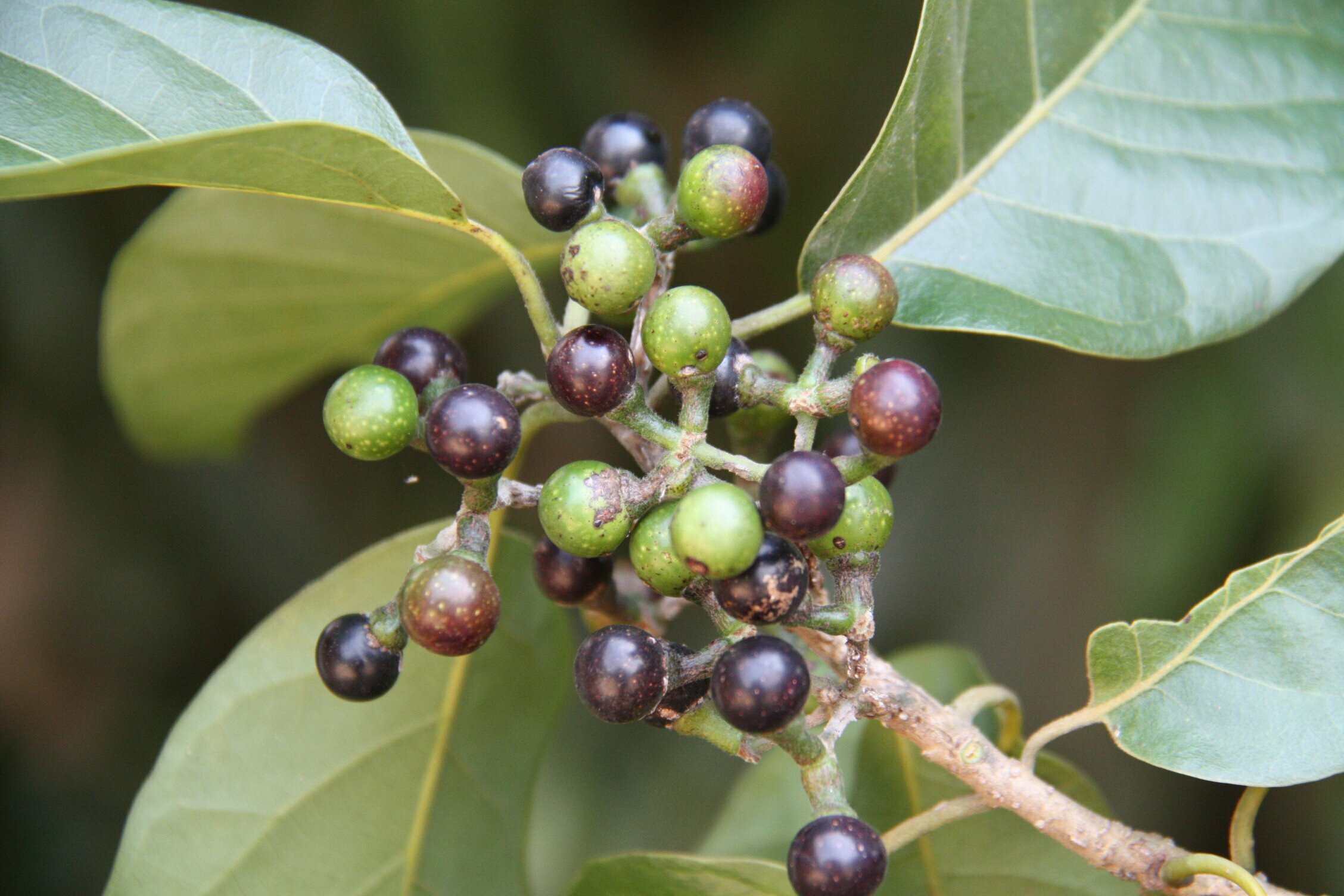 |
|||
| 289. Lobelia alsinoides Lamk. Family: CAMPANULACEAE Flowering & Fruiting: August – December Ecology: Common among grasses in marshy localities. Description: Diffuse herbs. Stem angular, weak. Leaves sessile, ovate-acute or obtuse. Flowers axillary, solitary, long-pedicelled, pale blue or violet. Hypanthium not tapering acutely. Stamens connate into a column. Seeds smooth, brownish, ellipsoid. Medicinal Uses: It is an ethnomedicine used by tribal practitioners in South India for the treatment of liver disorders like jaundice. Objective: The present work has been carried out to delineate the pharmacognostical profile of root, stem, and leaf of Lobelia alsinoides Lam. IUCN Status: |
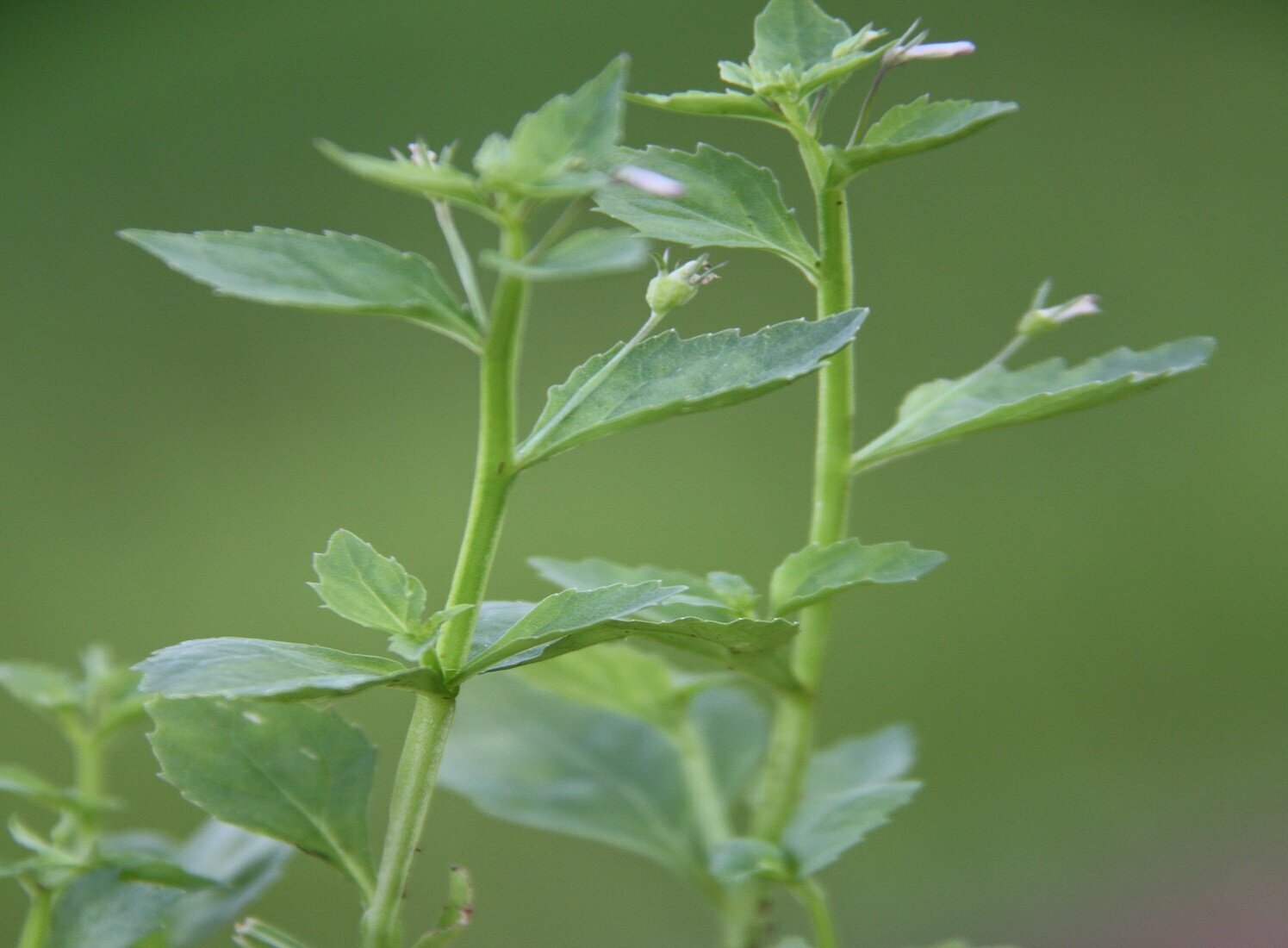 |
|||
| 290. Mecardonia procumbens (Mill.) Family: PLANTAGINACEAE Flowering & Fruiting: February-June Ecology: Decasional, among grasses in depressions. Description: Prostrate herbs. Leaves subsessile, ovate-lanceolate, crenate-serrate, glaucous beneath. Flowers solitary, axillary, yellow. Calyx 5-partite, unequal. Corolla 2-lipped. Capsule septicidal. IUCN Status: |
 |
|||
| 291. Mallotus philippensis (Lam.) Family: EUPHORBIACEAE Flowering & Fruiting: October-December & January-February. Ecology: Common, in moist mixed forests. Description: Leaves ovate or rhomboid, acute or acuminate, red glandular beneath. Male flowers in racemes, whitish-yellow. Female flowers distant; ovary tomentose, red-glandular. Capsule smooth, seeds black. Medicinal Uses: Mallotus philippensis is useful in the treatment of intestinal worms, constipation, flatulence, wounds, ulcers, cough, renal and vesical calculi, haemorrhages, poisonous affections, scabies, ringworm, herpes and other parasitic skin diseases. IUCN Status: |
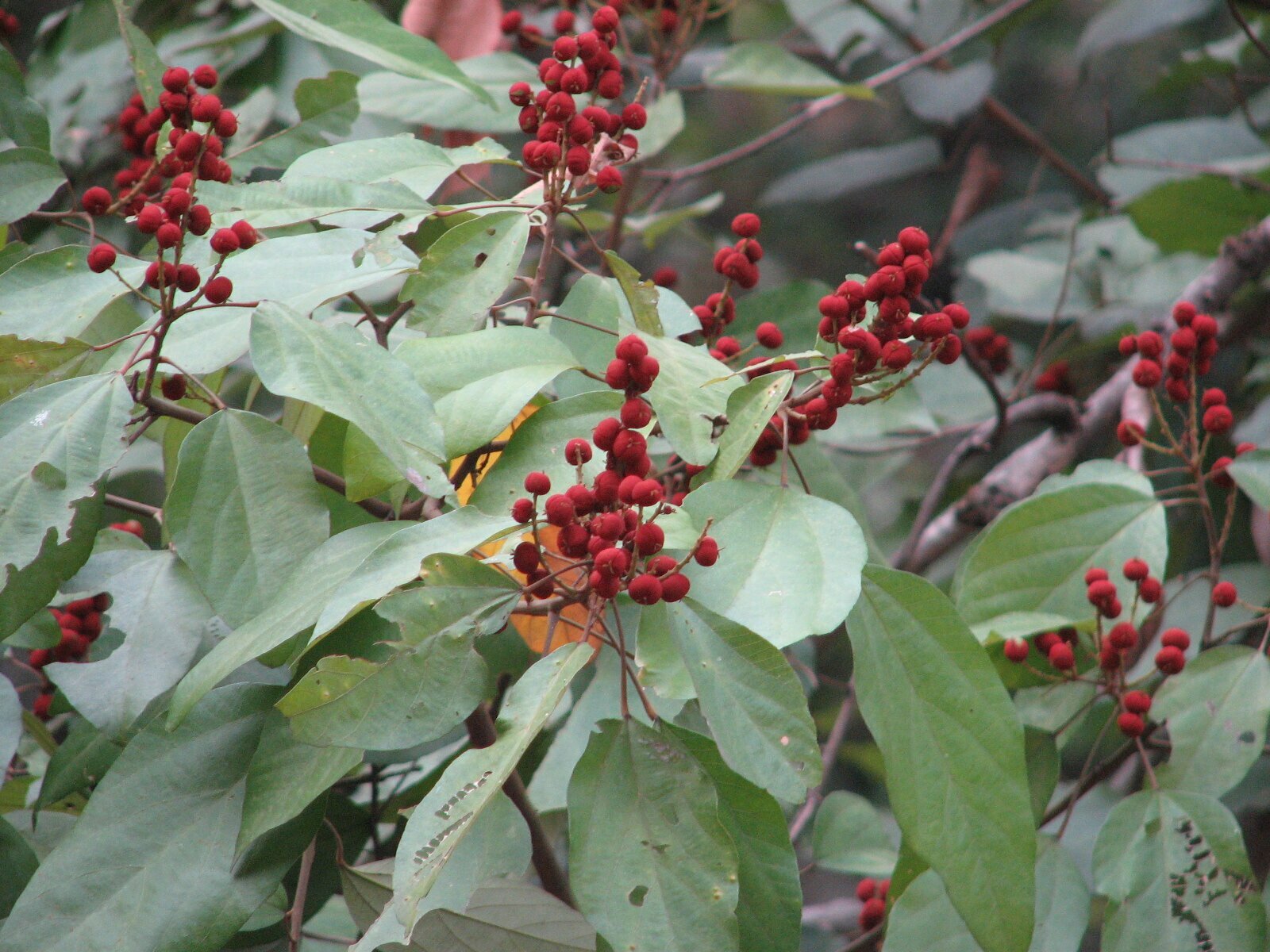 |
|||
| 292. Mallotus repandus (Willd.) Family: EUPHORBIACEAE Flowering & Fruiting: February-March Ecology: Occasional, along streams in damp forests. Description: Branches tomentose, trunk thorny. Leaves ovate, base cordate or retuse, acute, entire or sinuate, stellate-pubescent, glandular beneath. Male flowers in panicled racemes; sepals yellow, tomentose; anther cells produced. Females green, in simple racemesi ovary tomentose. Capsule tomentose. Medicinal Uses: In folk medicine Mallotus repandus (Willd.) Muell. Arg. is used to treat muscle pain, itching, fever, rheumatic arthritis, snake bite, hepatitis, and liver cirrhosis. IUCN Status: |
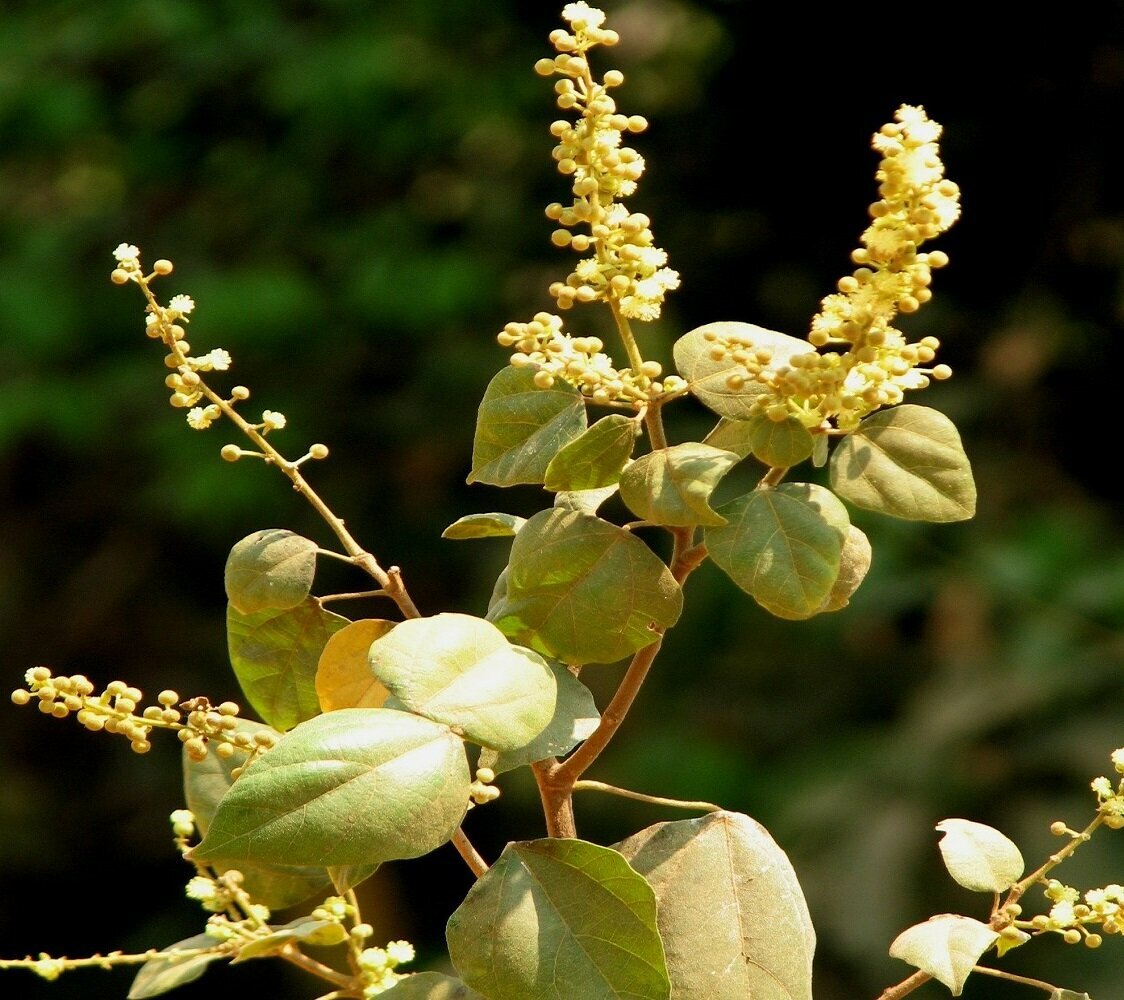 |
|||
| 293. Manilkara hexandra (Roxb.) Family: SAPOTACEAE Flowering & Fruiting: September – November & February – May Ecology: Occasional in valleys, in semi-evergreen forests. Description: Small trees with milky latex. Leaves obovate or oblanceolate, base cuneate, apex emarginate, Flowers white, fascicled. Petals 6, 2- seriate. Berry oblong-ellipsoid. Medicinal Uses: Khirni (Manilkara hexandra) is a curative Ayurvedic medicinal tree used in the treatment of excess thirst, emaciation, bleeding disorders, ulcer, bronchitis, jaundice, fever, arthritis etc. It improves taste, promotes physical strength and aphrodisiac in nature. IUCN Status: |
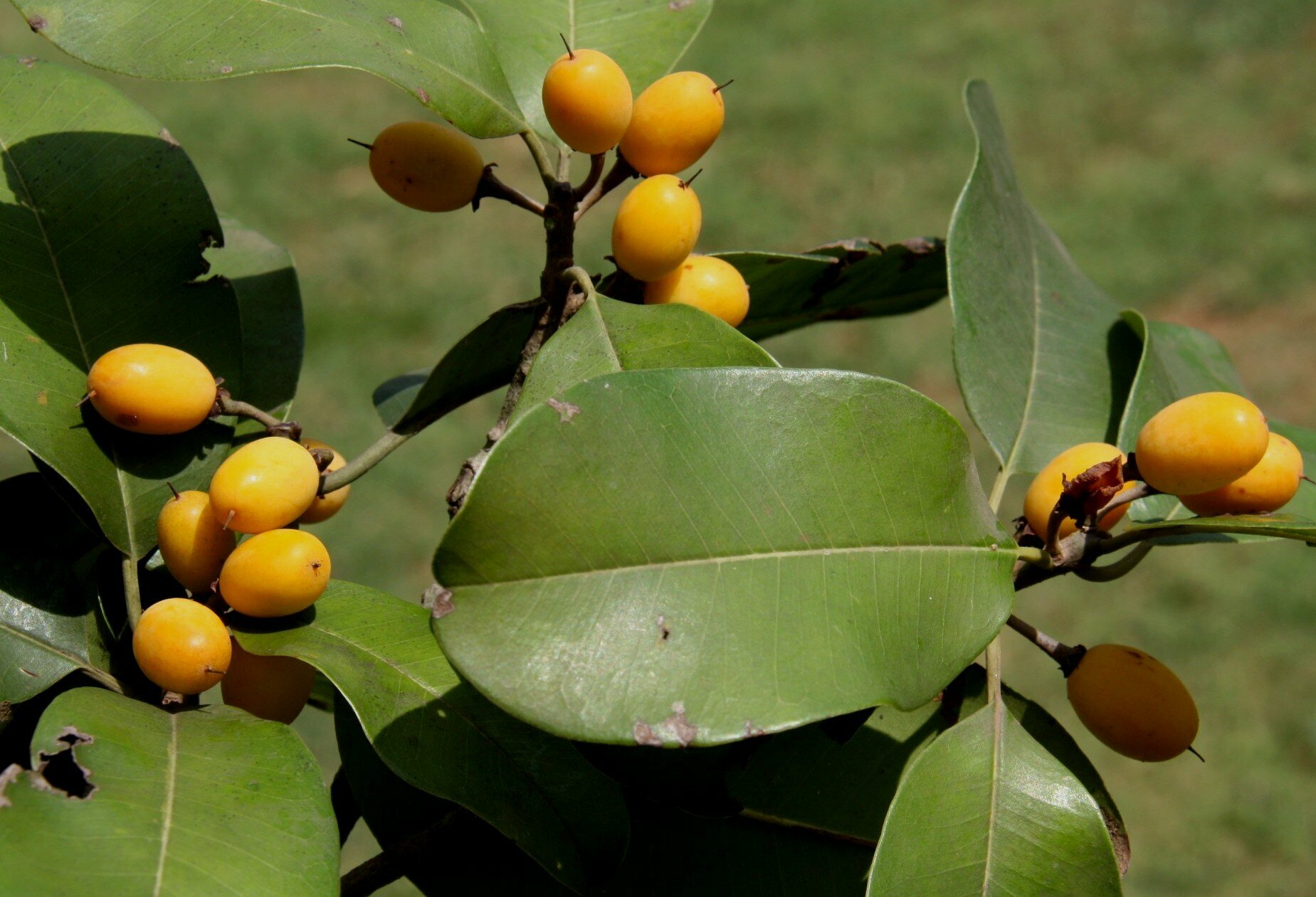 |
|||
| 294. Mariscus paniceus(Rottb.) Vahl Family: CYPERACEASE Flowering & Fruiting: July-September. Ecology: Gregarious on moist forest floor Description: Rhizome creeping, stoloniferous; sheath striate, lanceolate. Stem slender, triquetrous. Leaves many, flat, sheaths pale. Spikes oblong, terete. Spikelets linear, 1-flowered, 4-glumed. 3rd glume bisexual, convolute, pale-green. Nut oblong-ellipsoid, 3-gonous. IUCN Status: |
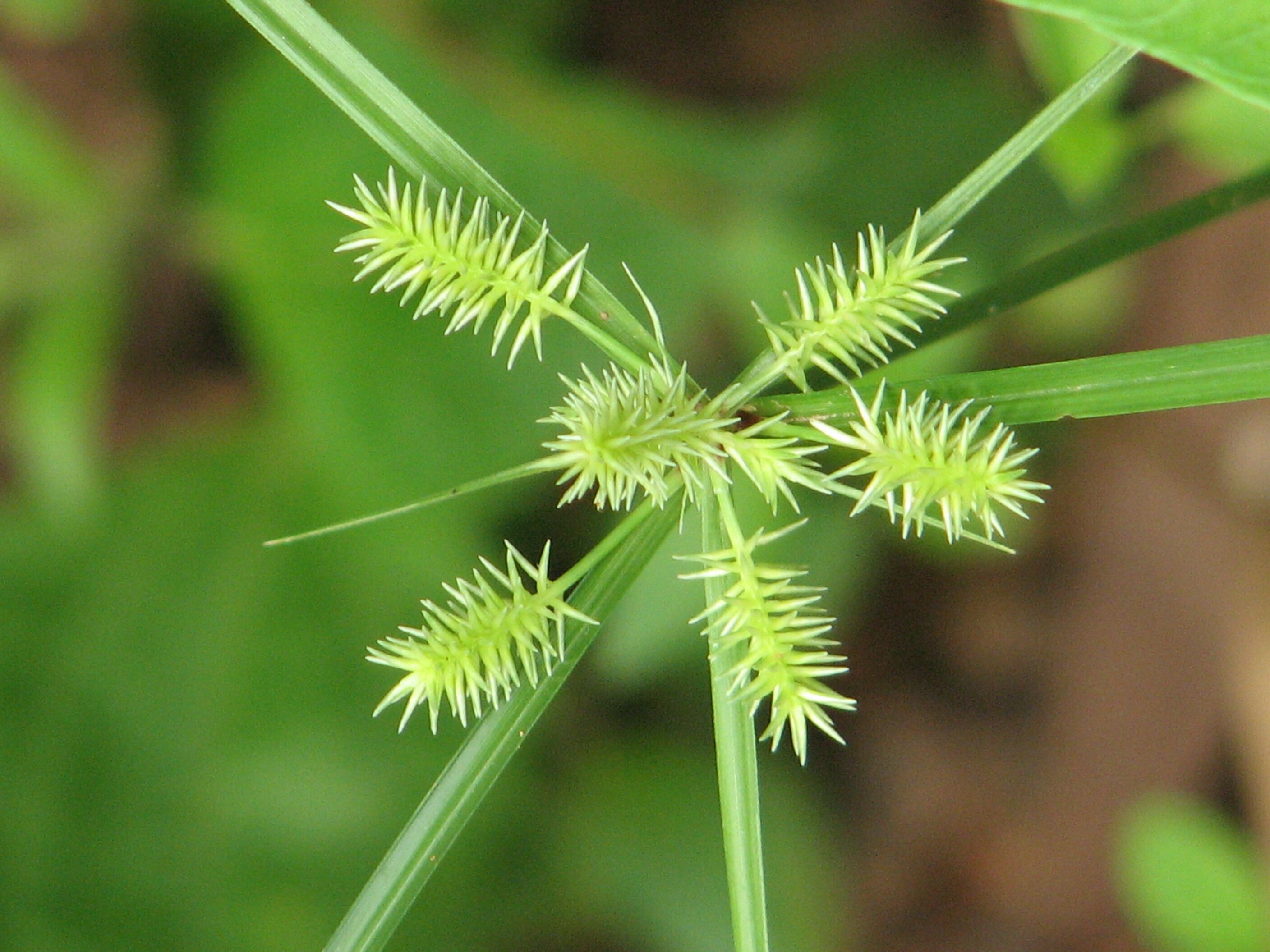 |
|||
| 295. Mariscus squarrosus (Linn.) Family: CYPERACEASE Flowering & Fruiting: June-August Ecology: Very common on lateritic hill plateau. Description: Stem tufted, 3-quetrous, not winged. Leaves short. Heads sessile, clustered, globose. Glumes ovate-oblong, keeled, awn less recurved, brown. Stamen 1. Nut linear, brown, 3-quetrous, minutely mucronate. IUCN Status: |
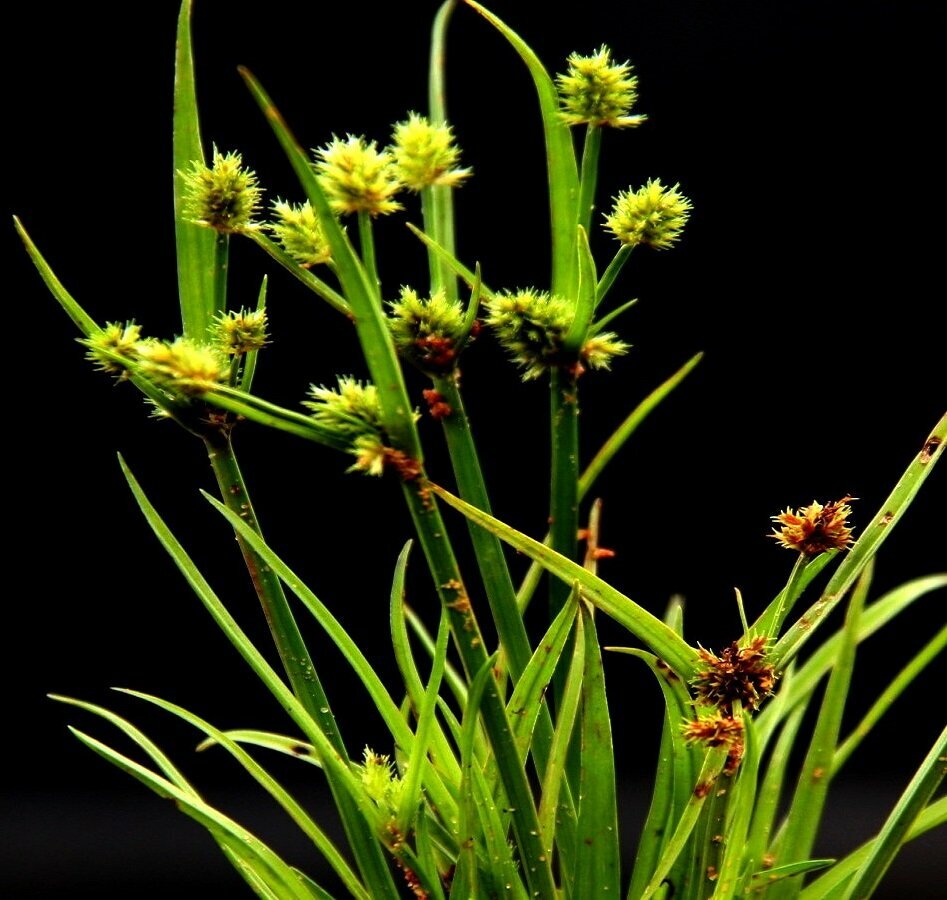 |
|||
| 296. Martynia annua Linn. Family: MARTYNIACEAE Local name: Baghanakhi Flowering & Fruiting: July – November & August – January Ecology: Common in waste places on foot hills. Description: Glandular-pubescent annual plants. Leaves opposite, cordate, acute, basally palmi-5-nerved. Racemes 5-10 flower. Corolla yellow throat, ventricose. Anther cells disjunt posed. Drupe ovoid, with 2 apical curved beaks; endocarp woody. Medicinal Uses: In India, traditional healers used M. annua in the treatment of epilepsy, inflammation, sore throat, burns, itching, skin affections and tuberculosis. IUCN Status: |
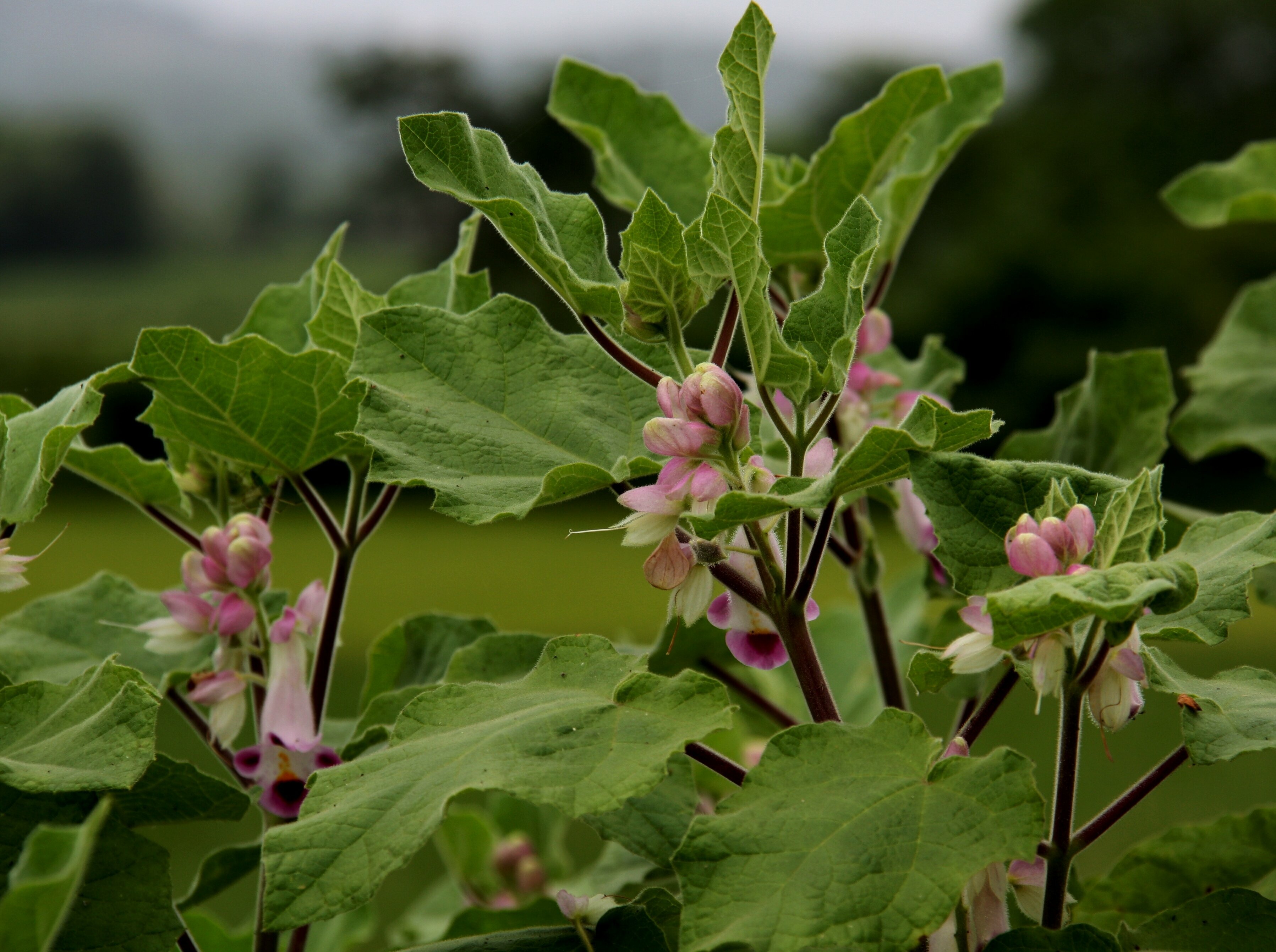 |
|||
| 297. Maytenus emarginata Willd. Family: CELASTRACEAE Flowering & Fruiting: October-February. Ecology: Abundant in dense scrub forests. Description: Straight-thirny, bushes shrubs. Leaves subsessile, obovate, ecarginate, shiing. Flowers bisexual, minute, greenisg-white, in axillary contracted cymes. Capsule pyriform, 3-gonous. Seeds arillate, crimon-red. Medicinal Uses: The plant part used for the treatment of a plethora of medical ailments from stomach complaints and fever to rheumatoid arthritis and cancer. IUCN Status: |
 |
|||
| 298. Mazus pumilus (Burm. f.) Family: PHRYMACEAE Local name: Mahaneem Flowering & Fruiting: Round the year Ecology: Occasional, along muddy stream bank on hill slopes. Description: Prostrate herbs. Leaves ovate-spatulate, rosetted beneath, creanate – serrate. Flowers white or pale-blue, in scapiform. Stamens 4, didynamous. Capsules obovoid. Medicinal Uses: The plant is aperient, emmenagogue, febrifuge and tonic. The juice of the plant is used in the treatment of typhoid. IUCN Status: |
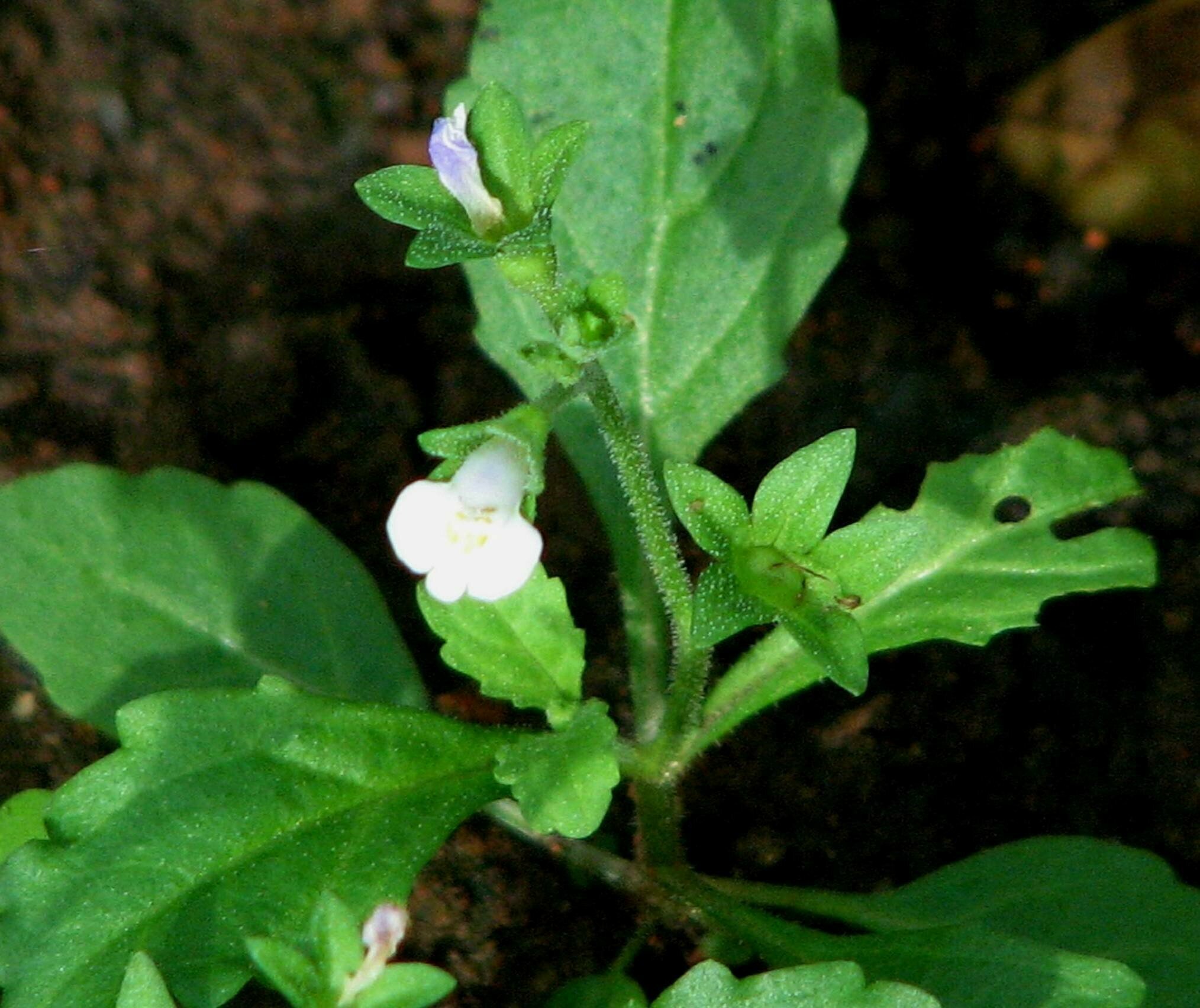 |
|||
| 299. Melia azederach Linn. Family: MELIACEAE Local name: Mahaneem Flowering & Fruiting: May-June & October-December. Ecology: Cultivated as an avenue tree on road sides. Description: Small trees. Leaves 3-pinnate; leaflets anceoplate glabrascent, serrate, acuminate. Flowers sweet accented, lilae in axillary panicles. Drupe yellowish endocarp hard. Medicinal Uses: In ayruvedic medicine system this plant used for antioxidative, analgesic, anti-Inflammatory, insecticidal, rodenticidal, antidiarrhoeal, deobstruent, diuretic, antidiabetic, cathartic, emetic, antirheumatic and antihypertensive. IUCN Status: |
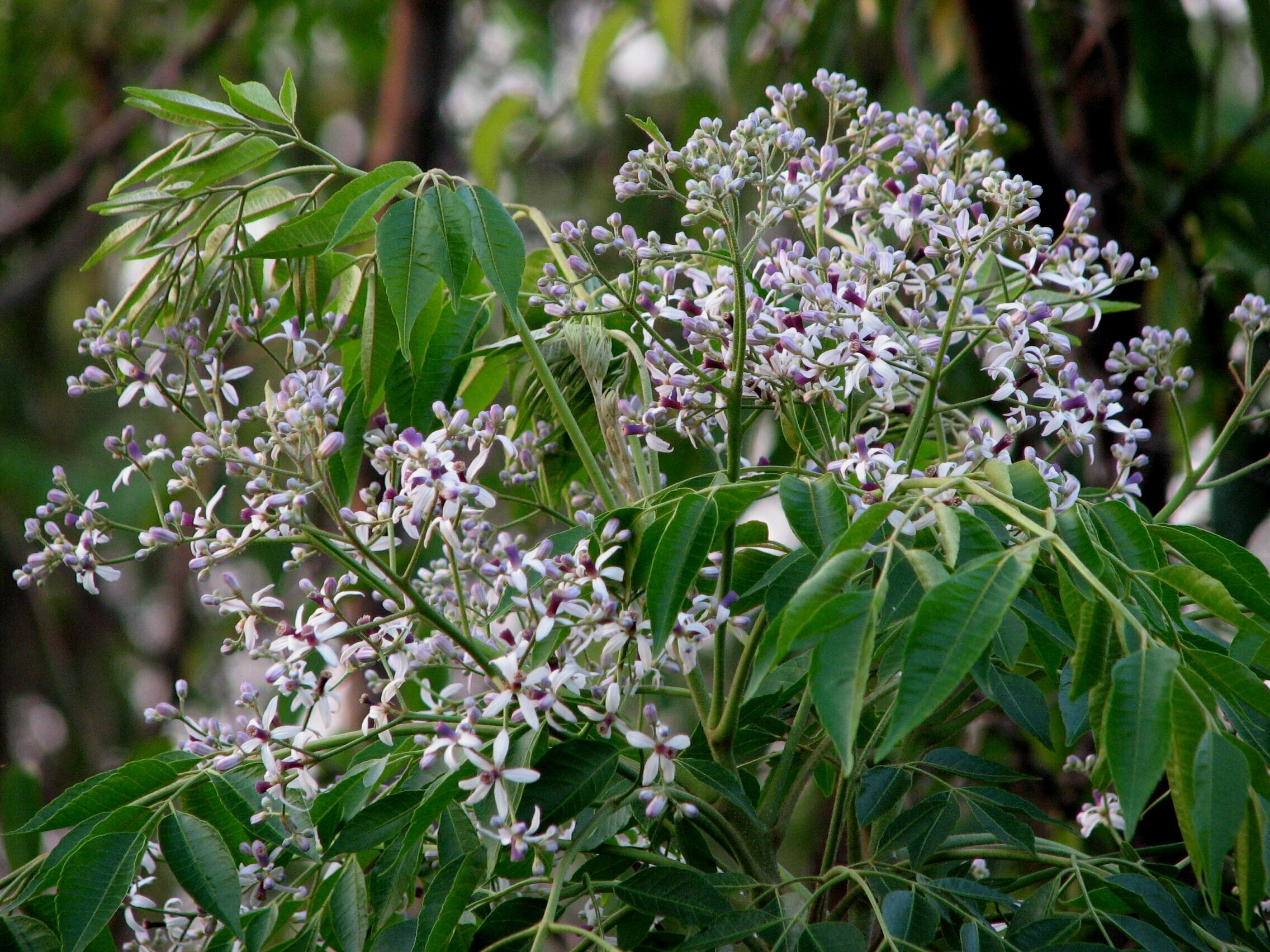 |
|||
| 300. Melochi corchorifolia Linn. Family: STERCULIACEAE Flowering & Fruiting: August-December. Ecology: Very common in wastelands and fallow fields. Description: Erect herbs. Leaves ovate-oblong, crenate-serrate, chartaceous, base cordate-rounded, apex acute. Flowers 2- sexual, panicled. Calyx tube cupular, 5-toothed, ciliate. Ovary pubescent, 5-celled. Capsule globose, 5-grooved. Medicinal Uses: The plant is commonly used in traditional medicine to treat a range of conditions. A leaf decoction is prescribed in a compound mixture of herbs against urinary disorders. The leaves are used for poulticing sores and swellings of the abdomen, and the sap is applied as an antidote to wounds caused by arrows poisoned with Antiaris toxicaria. A decoction of the leaves and roots is used internally to treat dysentery, and a decoction of the leaves to stop vomiting. Leaves and roots are used for poulticing in cases of smallpox. A decoction of the plant is applied in folk medicine in India as a cure for abdominal swelling, dysentery and snake bites. IUCN Status: |
 |
|||
| 301. Melastoma malabathricum Linn. Family: MELASTOMATACEAE Flowering & Fruiting: April-June & July-October. Ecology: Abundant along streams in dense habitat. Medicinal Uses: This plant has been used to treat diarrhoea, dysentery, hemorrhoids, cuts and wounds, toothache, and stomachache. A strong decoction of the leaves is applied painful arthritic joints, and also to weeping sores caused by stinging insect hairs in order to aid extraction of the hairs. It is also applied to other types of weeping wounds in order to disinfect them. A decoction of roots and leaves is given to women after childbirth. The powdered leaves and roots may be sprinkled on wounds. They are also used in an application for haemorrhoids, apparently for their astringent properties. The roots are simply sucked or may be used for making a gargle in treating toothache. IUCN Status: |
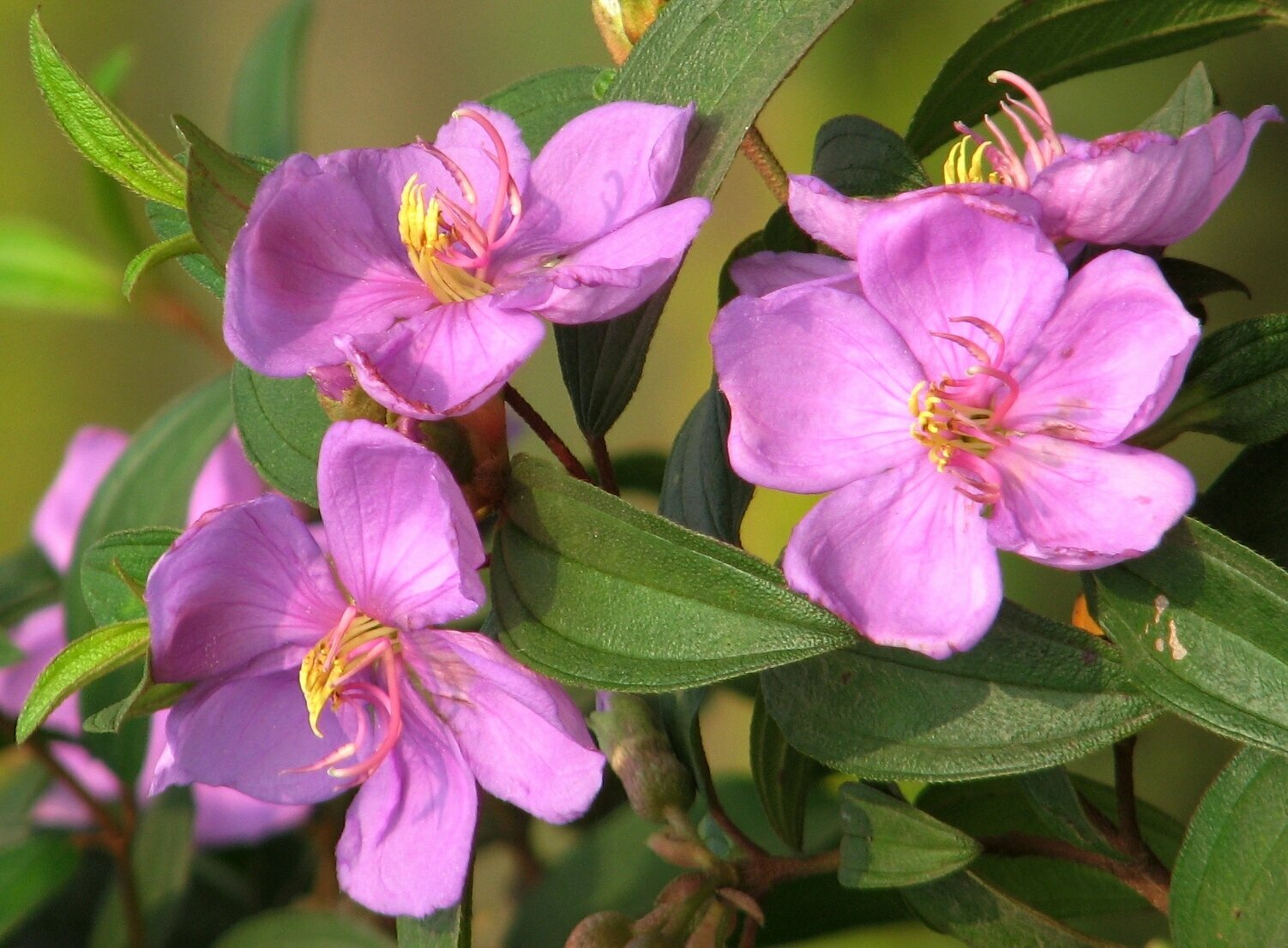 |
|||
| 302. Memecylon umbellatum Burm. Family: MELASTOMATACEAE Flowering & Fruiting: April-June & June-August Ecology: Common in dry forests on hill slopes. Description: Small trees. Leaves ovate, acuminate, glabrous, shining above. Flowers 4-merous in compound umbel. Hypanthium obconic, pinkish. Berry globose, deep purple when ripe. Medicinal Uses: Ayurveda, the leaves are used as a cooling astringent; used in conjunctivitis as a lotion; and given internally in leucorrhoea and gonorrhea. A lotion prepared from leaves is used to treat eye troubles. The leaves are reported to possess antiviral activity. IUCN Status: |
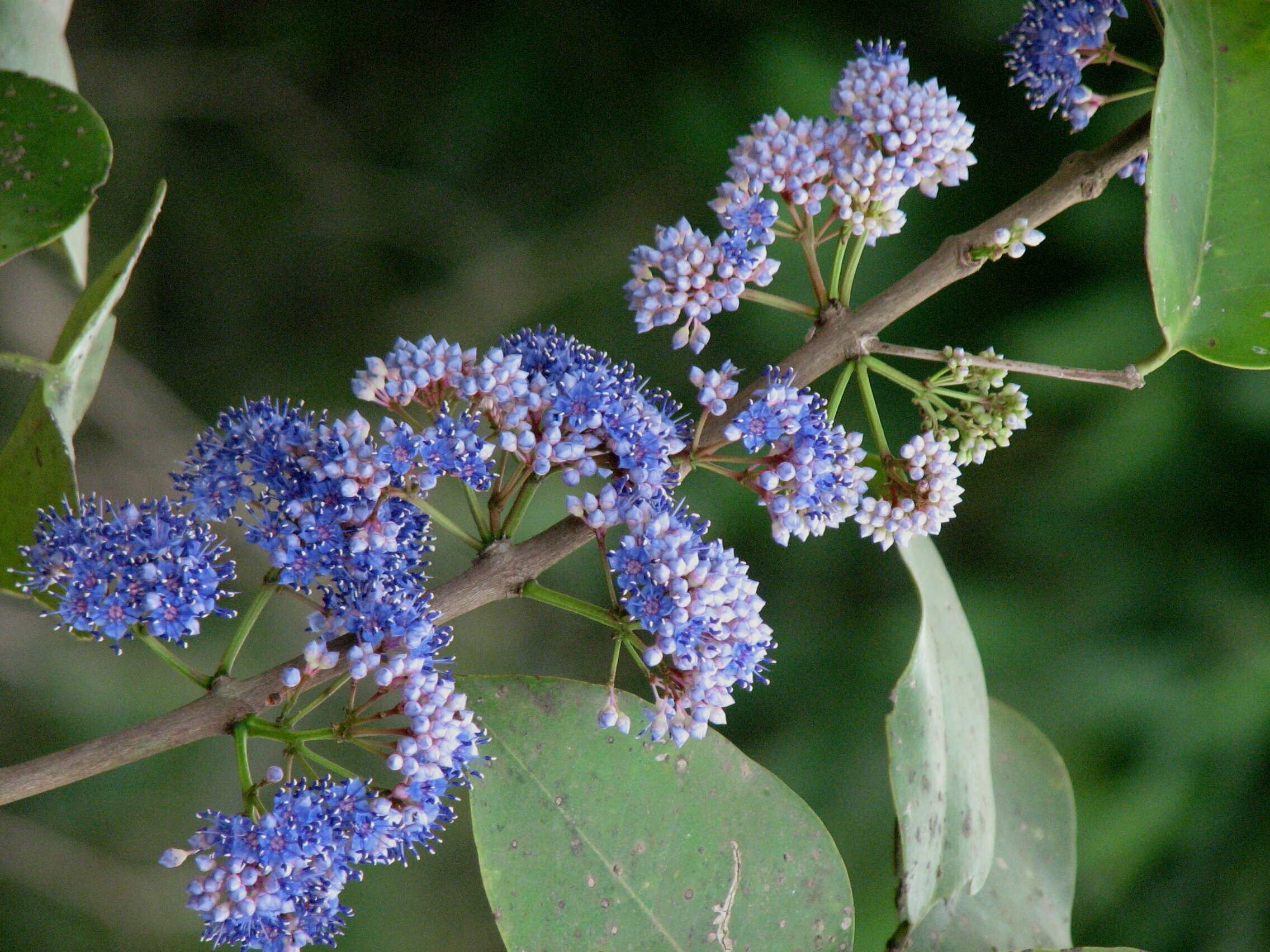 |
|||
| 303. Merremia hederacea (Burm. f.) Family: CONVOLVULACEAE Flowering & Fruiting: October-January Ecology: Occasional, among grasses on hill top. Description: Slender twiner. Stem obscurely grooved, puberulous. Leaves ovate, 3-lobed, base deeply cordate, acuminate. Cymes axillary, many- flowered. Capsule ovoid. Seeds black. Medicinal Uses: Merremia hederacea can be used to treat colds, febrile disease, sunstroke, oliguria, tonsil inflammation, laryngitis as well as leucorrhoea. The seeds can be used to treat fevers, colds, sore throats, haematuria, conjunctivitis and boils. Leaves of M. hederacea can be used in the treatments of chapped hands and feet. IUCN Status: |
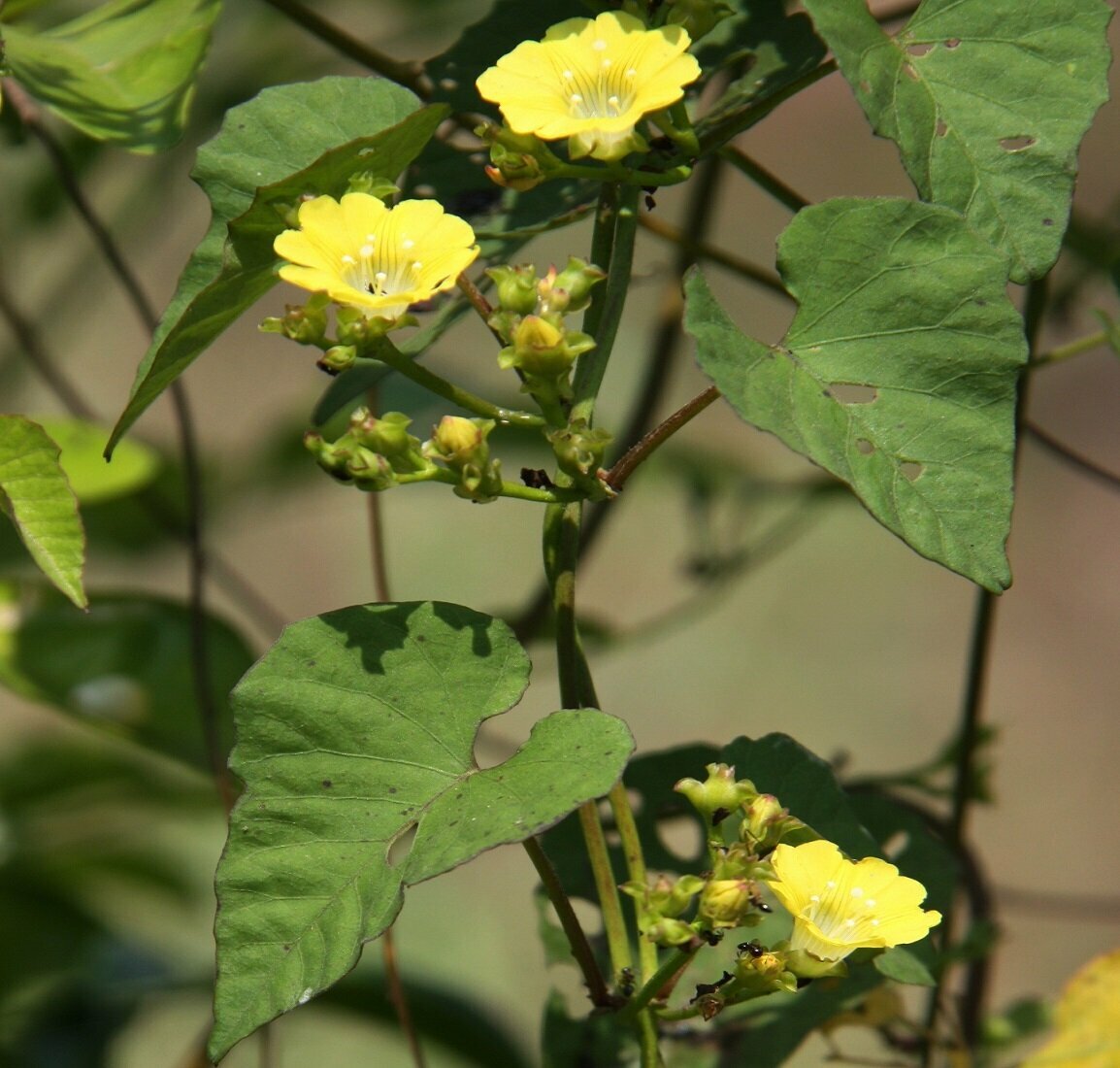 |
|||
| 304. Merremia umbellate (Linn.) Family: CONVOLVULACEAE Description: Stems twining or prostrate and rooting. Leaves elliptic-oblong or orbicular, basally truncate, cordate to hastate, obtuse apex. Sepals accrescent. Capsules globose, 2-seeded; seeds dark brown, hairy. Medicinal Uses: Pounded leaves used as poultice for burns and scalds. – In the Moluccas, poultice of leaves used for sores. Also leaves used as emollient for abscesses and ulcers. Decoction of plant used as deobstruent, diuretic and alterative; useful for rheumatism, headaches and neuralgia. IUCN Status: |
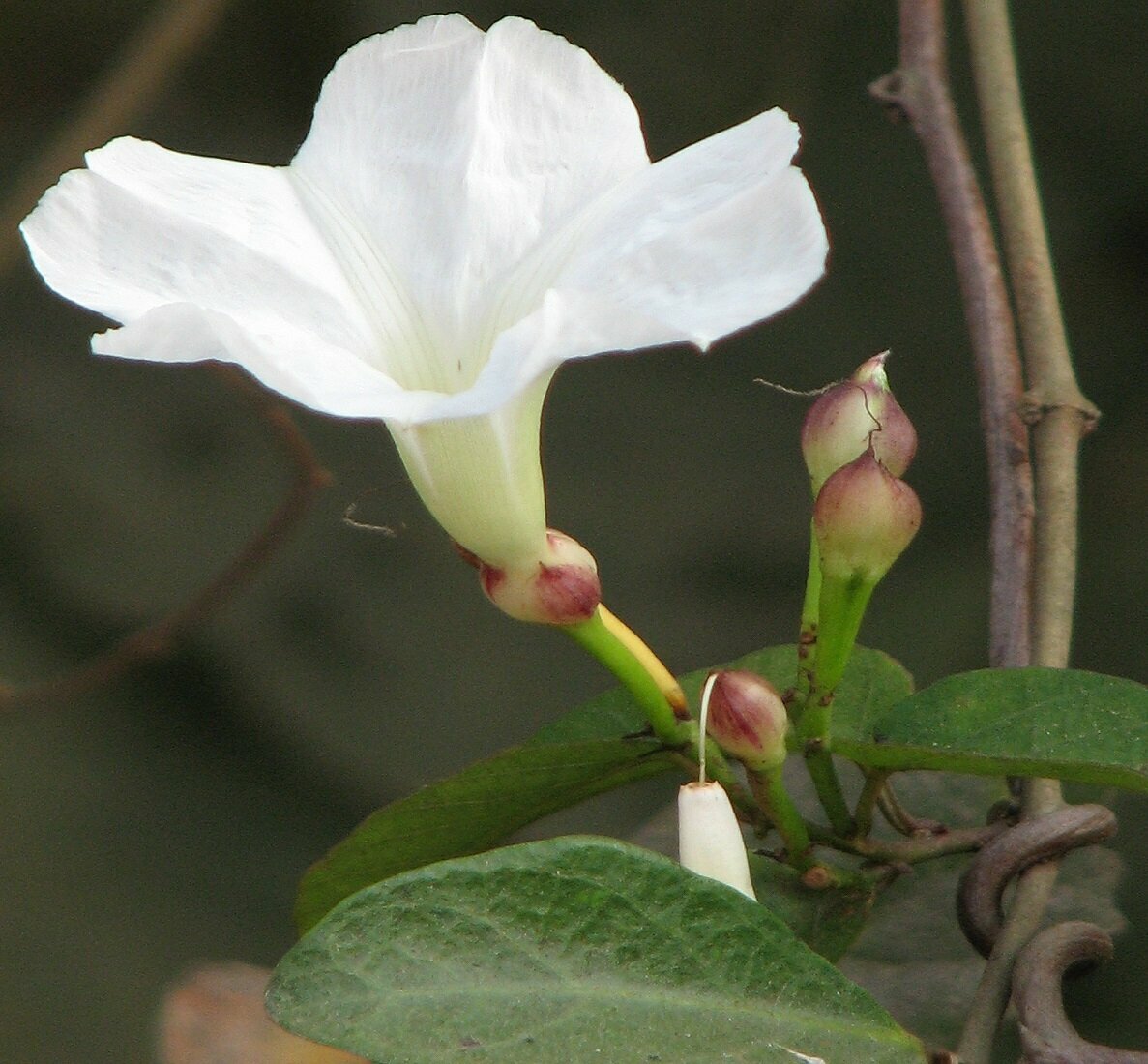 |
|||
| 305. Merremia vitifolia (Burm.f.) Family: CONVOLVULACEAE Local name: Nageshwar Flowering & Fruiting: November-February Ecology: Common, along streams in damper habitats. Description: Extensive twiners. Stem hirsute. Leaves orbicular, 5-1 bed, palminerved, base cordate; lobes broad, 3-angular, dentate to crenate, denise pubescent. Flowers sulphur-yellow, axillary, 1-3 or several flowers, cymose. Capsule globose, straw-coloured. IUCN Status: |
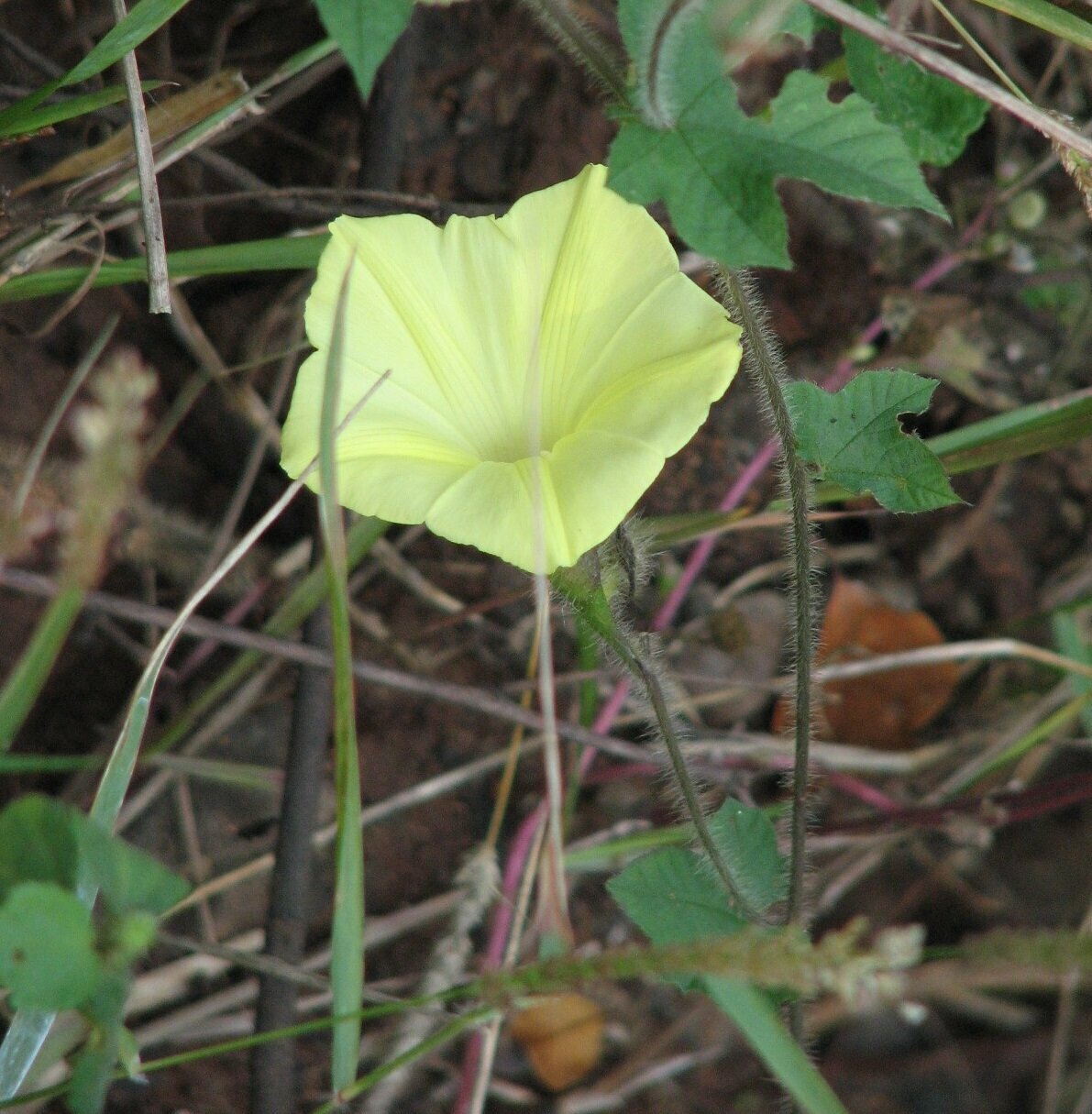 |
|||
| 306. Mesua ferrea L. Family: CALOPHYLLACEAE Local name: Nageshwar Flowering & Fruiting: January-February & June-Augus Ecology: Bhitarpad Description: Leaves pendulous, linear-lanceolate, with slightly scalloped margins. Mature leaves dark green above and with whitish waxy bloom below. Young leaves emerge purplish-red, hanging in limps tassels, maturing to yellowish-pink and then green. Flushing is especially prominent during the rainy period (March, September or October) that follows dry months. Blooming is seasonal, occurring mainly during dry weather (January to Feburary, June to August). Tree may burst into full bloom upon the onset of rain after a hot dry spell. Medicinal Uses: Dried flowers (5 gm) are given with sugar to check excess bleeding during menstruation cycle. IUCN Status: |
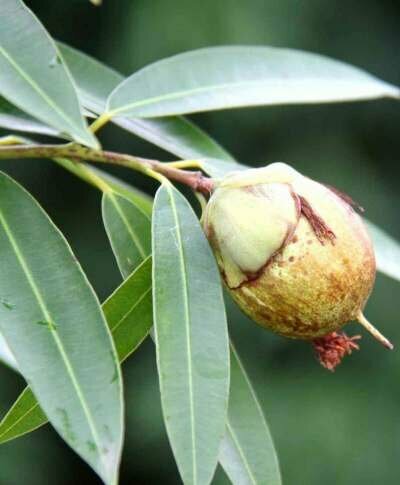 |
|||
| 307. Michelia champaca Linn. Family: MAGNOLIACEAE Flowering & Fruiting: July – August & August – September Ecology: Frequently planted in temple premises fir its fragnant flowers, often wild in semi-evergreen forests. Description: Small grass. Stem caespitose, slender. Leaves filiform, convolute striate, glabrous, blades often curved. Spikelets erect, close-set, 3-glumed. Grain oblong, fusiform, free. Medicinal Uses: The flowers and stem bark are useful in diabetes, quick wound healing, cardiac disorders, gout, dysuria. IUCN Status: |
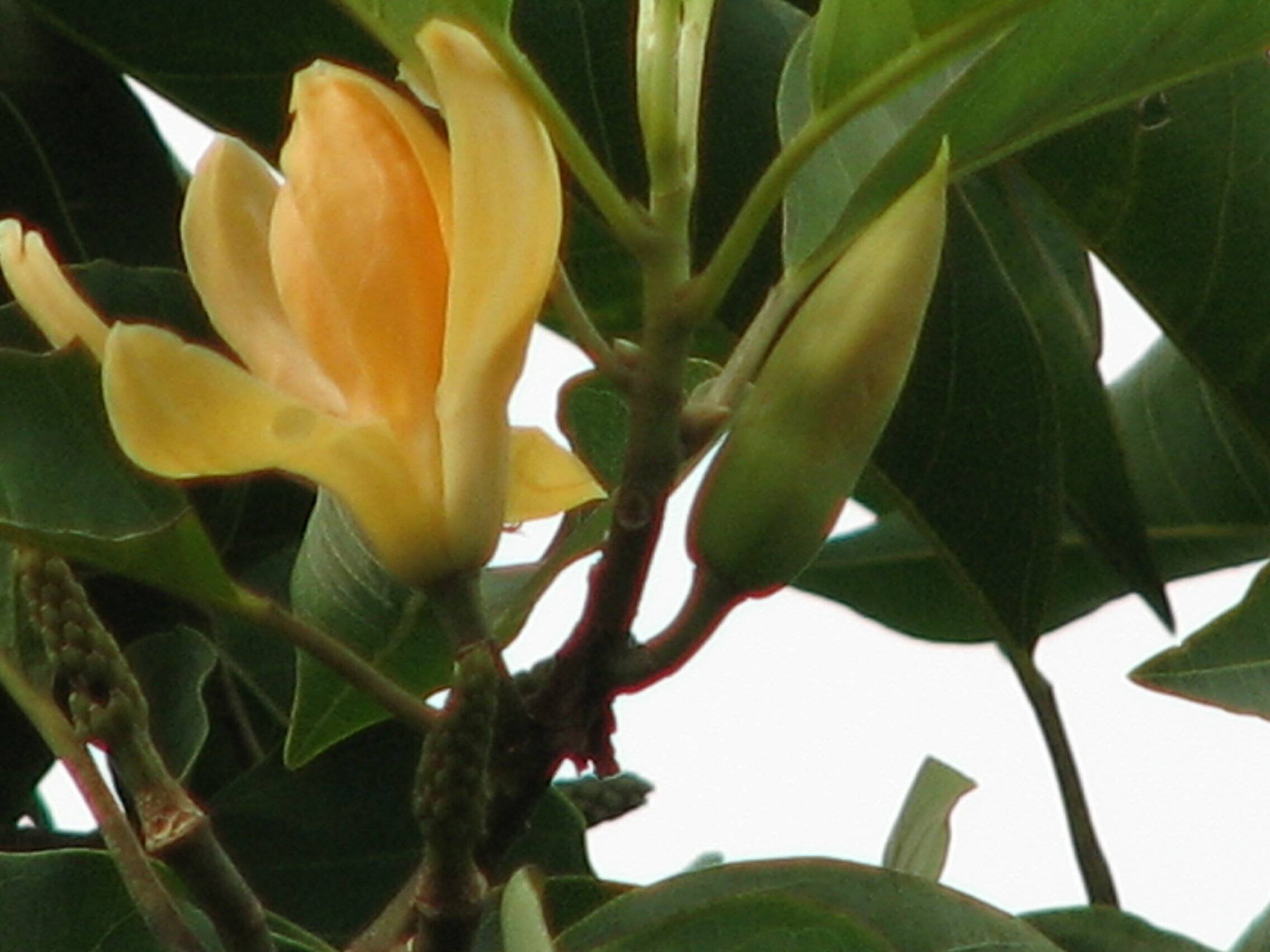 |
|||
| 308. Microchloa indica (Linn. f.) Family: POACEAE Ecology: Abundant on exposed rocky surfaces and dilapidated walls Flowering & Fruiting: September-December Description: Small grass. Stem caespitose, slender. Leaves filiform, convolute striate, glabrous, blades often curved. Spikelets erect, close-set, 3-glumed. Grain oblong, fusiform, free. IUCN Status: |
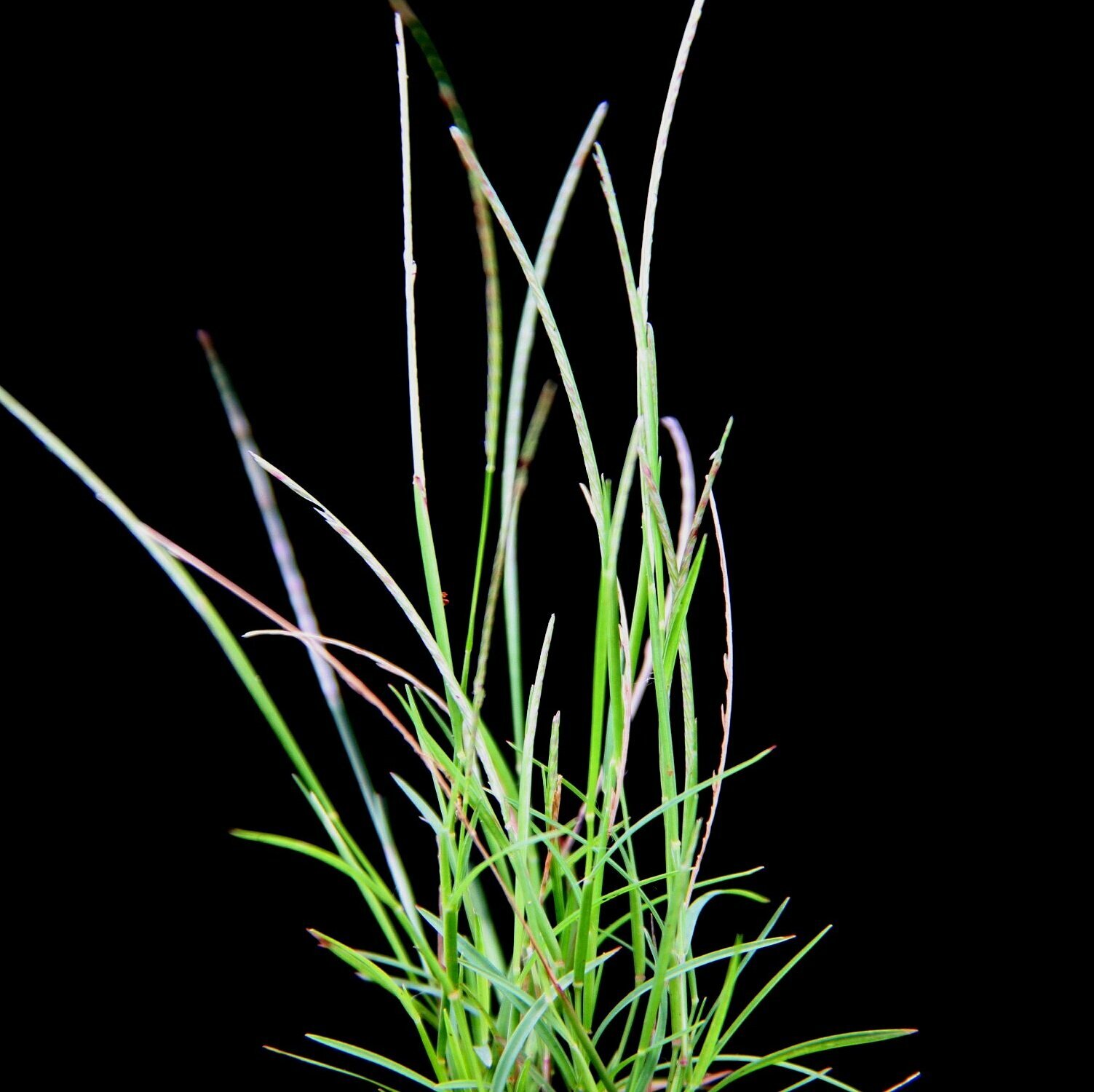 |
|||
| 309. Millingtonia hortensis L.f. Family: BIGNONIACEAE Local Name: Sugandh Gachh Flowering: September-December Description: A tall, straight, evergreen tree. Barks are corky hence often called as Indian cork-tree. Leaves are opposite, imparipinnately bipinnate, leaflets ovate-lanceolate, serrate, acute. Medicinal Uses: The leaves of the plant are used as antipyretic, sinusitis, cholagogue and tonic in folklore medicine. Used as a yellow dye. Flower buds are used in the treatment of asthma, sinusitis, cholagogue and tonic. The flowers are used in rituals. IUCN Status: |
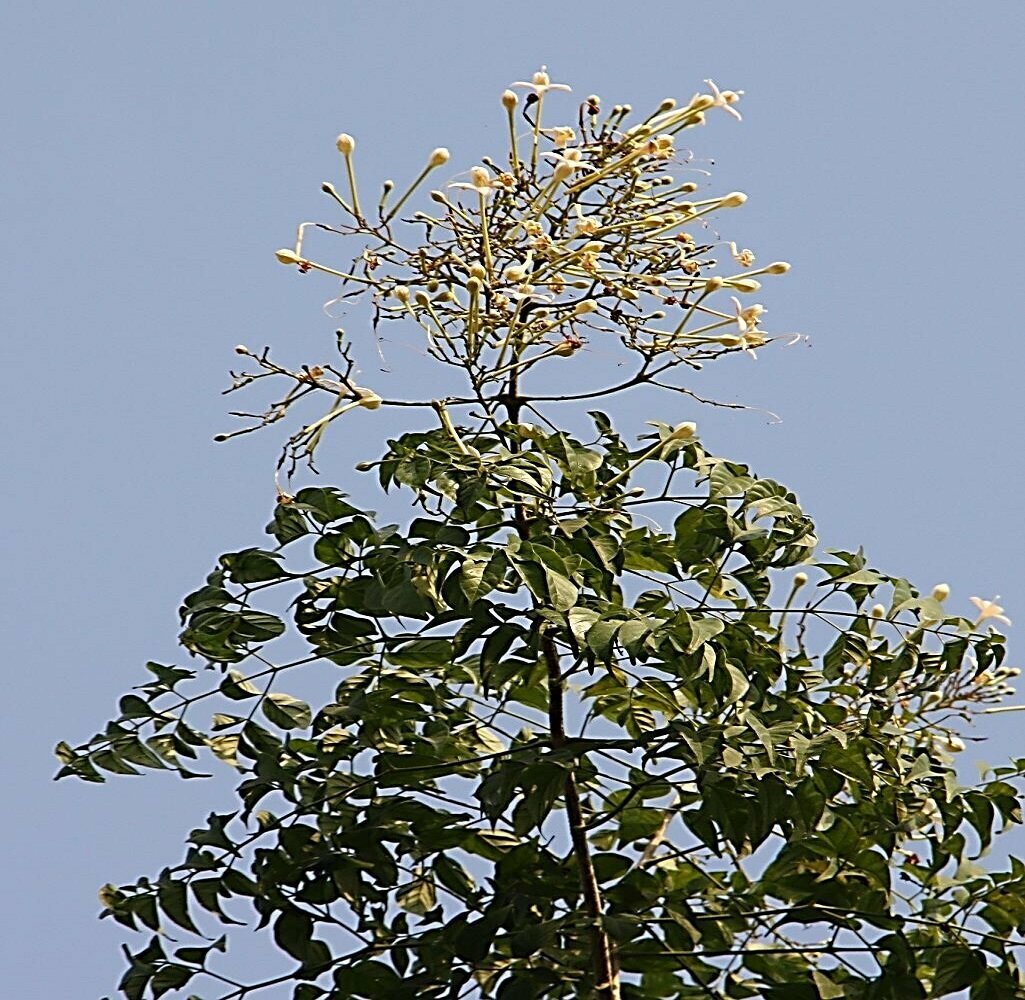 |
|||
| 310. Mimosa himalayana Gramble Family: MIMOSACEAE Local Name: Kirkinchi Flowering: June – August. Ecology: Quite common in wasteplaces and amongst bushes in forests. Description: It is a large straggling deciduous shrub, branches ribbed, densely hairy; prickles present on nodes or inter nodes, straight or hooked, 4 mm or less long. Leaf double compound, axis 10-23 cm long, prickly, prickles mostly hooked, hairy, ribbed; pinnae 5-12 pairs, 2.5-6.5 cm long. Leaflets 6-15 pairs, 3-8 mm long, about 2 mm broad, oblong, blunt, with a short sharp point, hairless above, more or less hairy below, nearly stalkless. Flower about 3 mm long, tubular, 4 lobed, lobes about 1 mm long. Stamens 8, long, protruding. Medicinal Uses: Dried roots grind with dried ginger and black pepper and the powder is given twice a day for 2-3 months in the treatment of rheumatism, gout and arthritis. IUCN Status: |
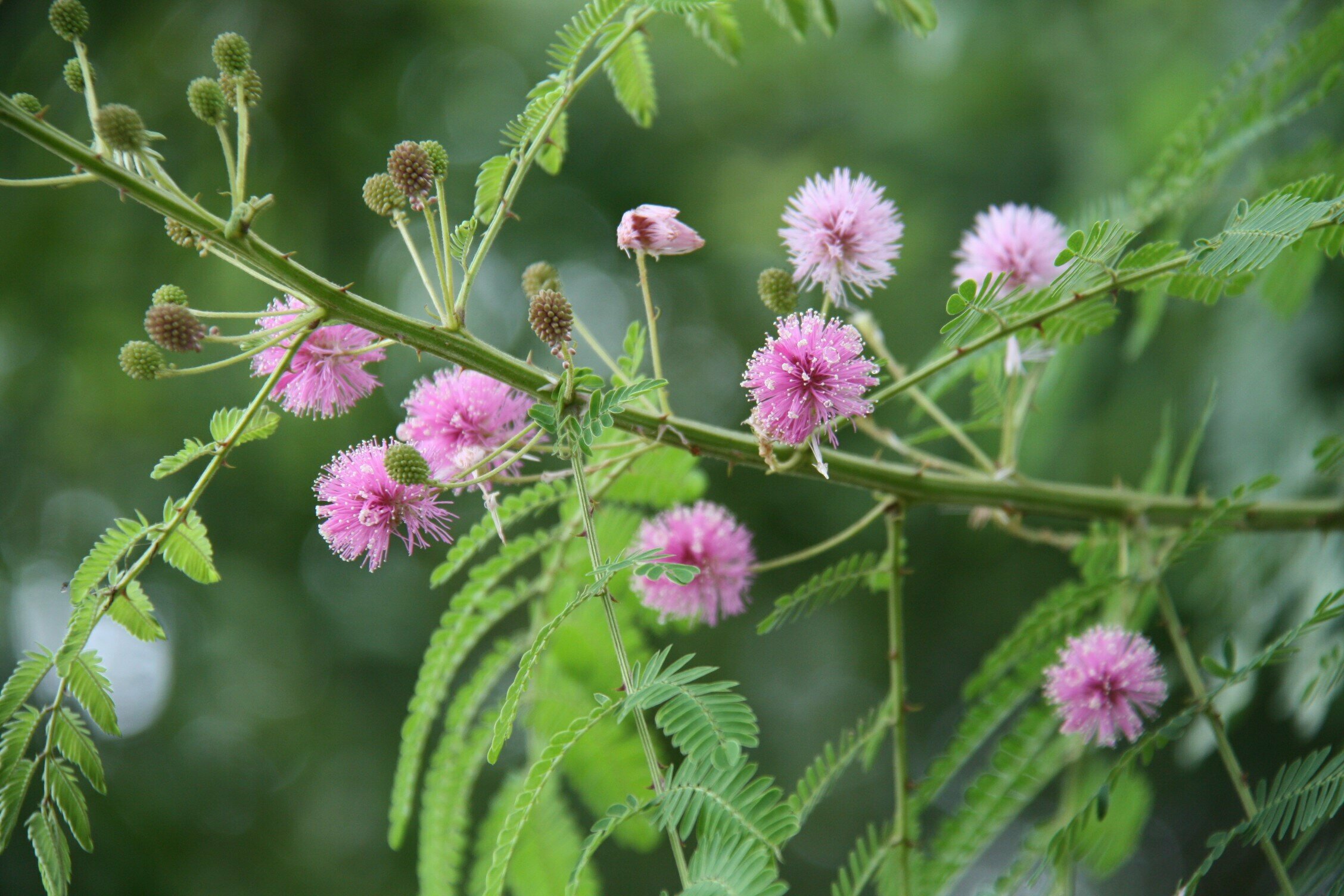 |
|||
| 311. Mimosa pudica Linn. Family: FABACEAE Local Name: Sandhyarani Flowering: July-October & November-February. Ecology: Quite common in wasteplaces and amongst bushes in forests. Description: Pinnae 1-2 pairs, subdigitate. Leaflets linear, apex acute, sensitive to touch. Heads pinkish-white. Pod 2-5 jointed, margirs bristly and persistent. Medicinal Uses: It majorly possesses antibacterial, antivenom, antifertility, anticonvulsant, antidepressant, aphrodisiac, and various other pharmacological activities. The herb has been used traditionally for ages, in the treatment of urogenital disorders, piles, dysentery, sinus, and also applied on wounds. IUCN Status: |
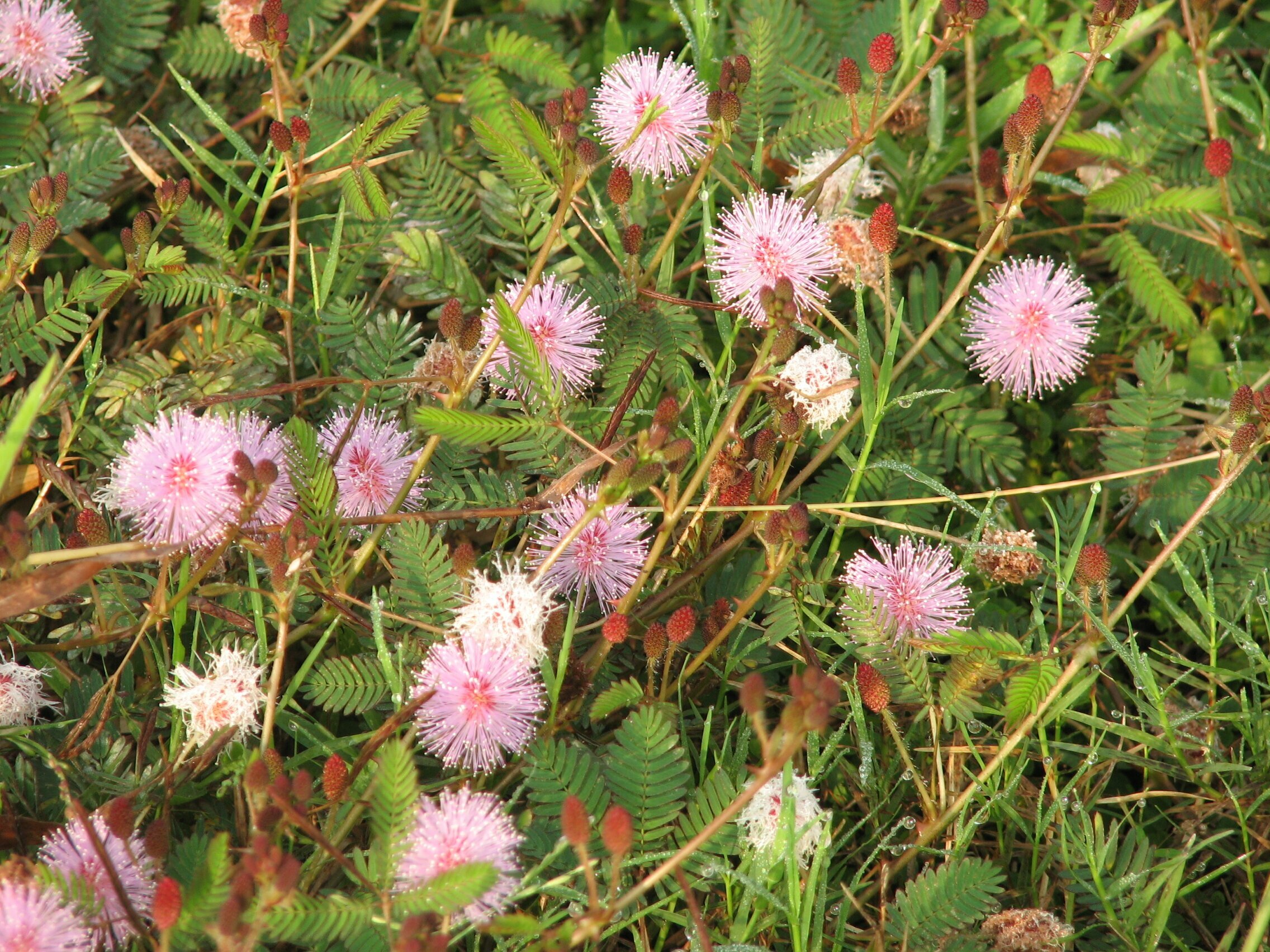 |
|||
| 312. Mirabilis jalapa L. Family: NYCTAGINACEAEE Local Name: Sandhyarani Flowering: Throughout the year. Description: It is a tall herbaceous plant, reaching 30-70 cm in height, thick branches a little fleshy and swollen nodes, glabrous and regularly branched. The leaves are simple, opposite, ovate to acute apex, rounded or truncated base. Medicinal Uses: Leaf paste is slightly warmed and applied on overhead in headache and migraine. IUCN Status: |
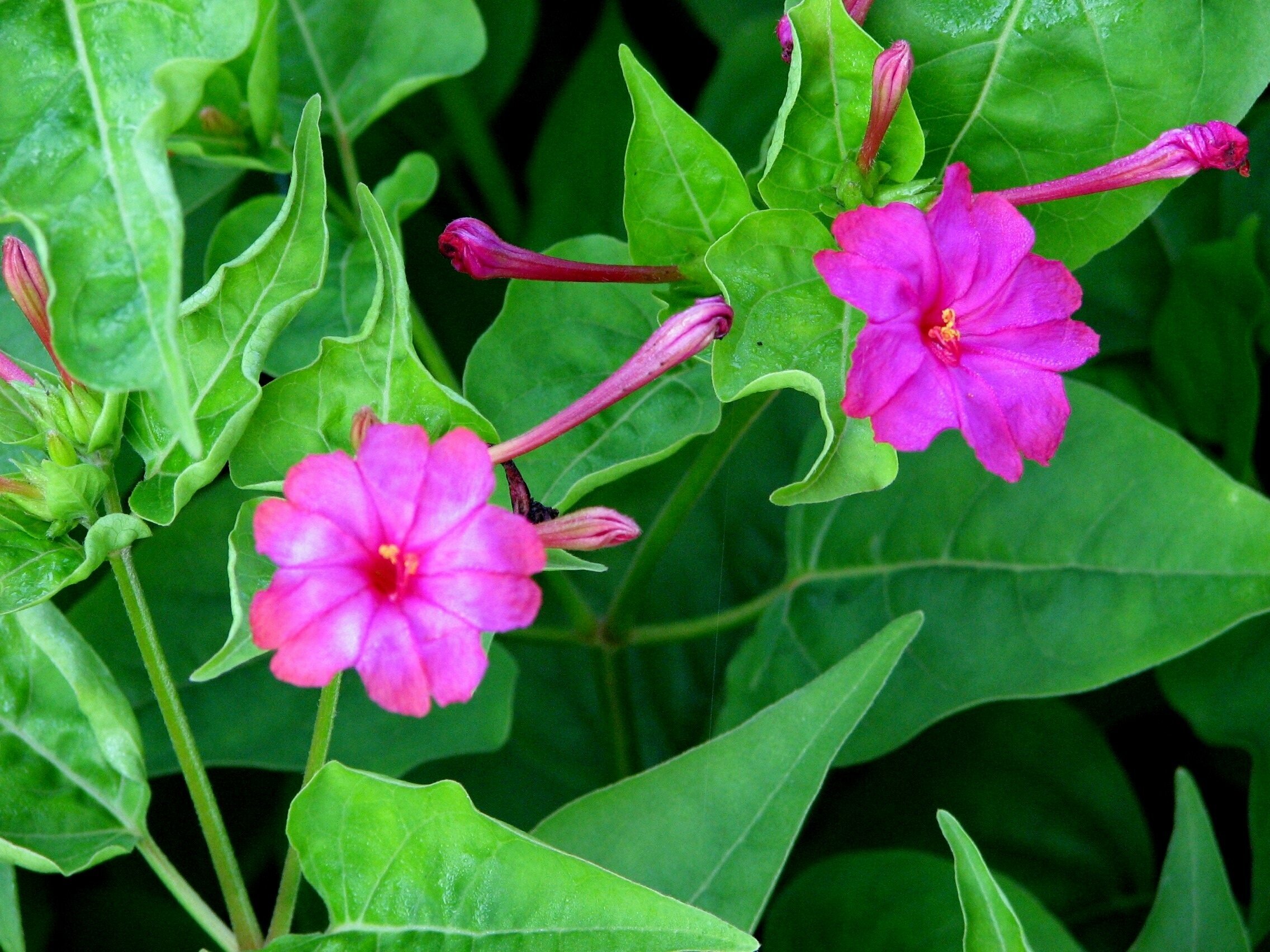 |
|||
| 313. Mitracarpus verticellatus (Schum. & Thonn.) Family: RUBIACEAE Local Name: Gothia gobi Flowering: August – December Ecology: Abundant, a weed on waste places and in open forests. Description: Erect, hispid herbs. Leaves sessile, ovate or elliptic, margin scabrous, puberulous beneath. Stipule ciliate, connate with leaf bases. Flowers verticillate, 4-merous, white, funnwl shaped. Fruit subdidymous. Seeds brownish. IUCN Status: |
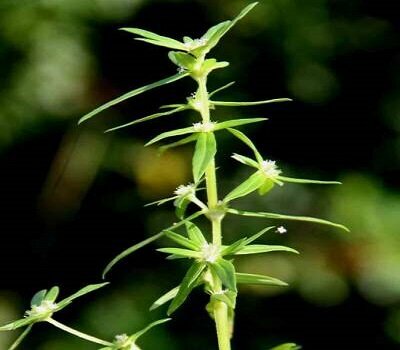 |
|||
| 314. Mitragyna parvifolia (Roxb.) Family: RUBIACEAE Flowering: May – June & January – March Ecology: Fairly common along the stream and valleys. Description: Deciduous trees; twings silvery-grey. Leaves broadly elliptic obtuse, base cuneate, stipules foliaceous, caducous. Inflorescence a globose head, 1-3 together, axillary. Coeolla lobes recured, cuucullate. Capsule ellipsoid, aggregated. Seeds winged. Medicinal Uses: The bark and roots are used to treat fever, colix, muscular pain, burning sensation, poisioning, gynecological disorders, cough, and edema and as an aphrodisiac. The fruit juice augments and the quantities of breast milk in lactating mothers and also works as lactodepurant. IUCN Status: |
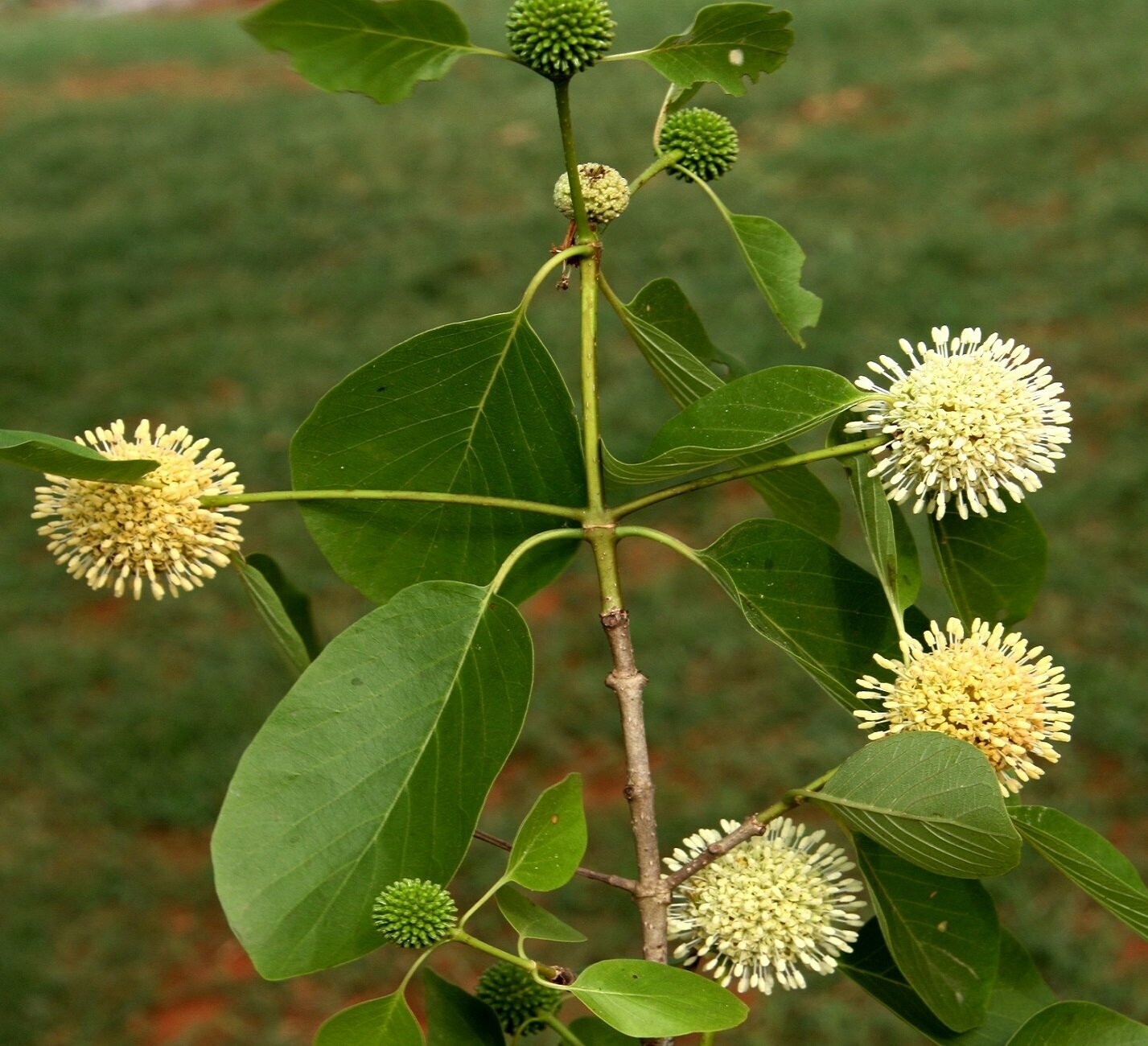 |
|||
| 315. Monochoria hastata (Linn.) Family: PONTEDERIACEAE Flowering: July-November. Ecology: Common in slow running streams at foothill region. Description: Root-stock creeping, elongate. Leaves hastate, sagittate or cordate or acute or obtuse. Flowers bright-blue, long-pedicellate. 5 stamens smaller, yellow and 1 large, blue. Capsule subglobose. IUCN Status: |
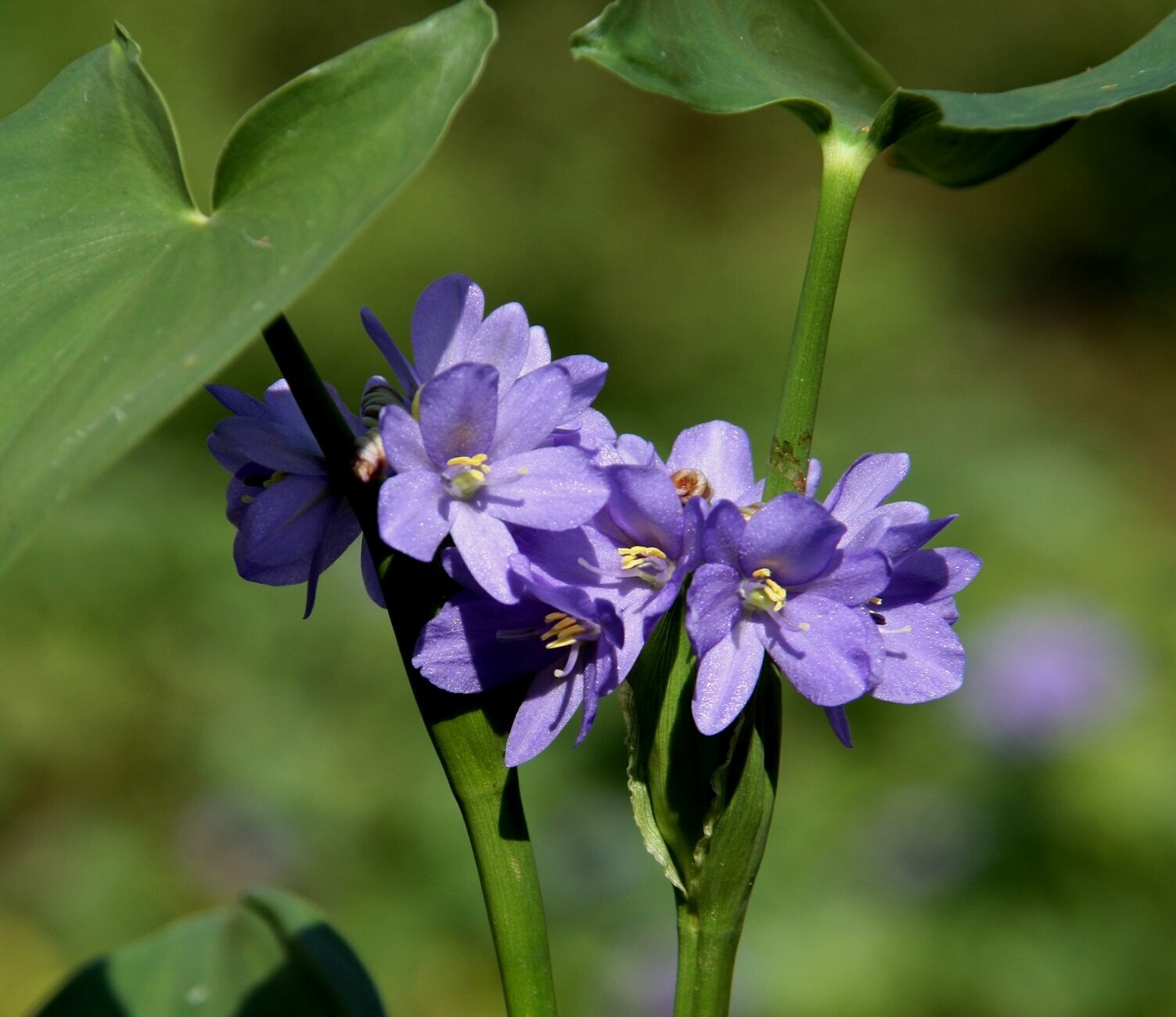 |
|||
| 316. Momordica dioica Roxb. Family: CUCURBITACEAE Flowering: June-August & September-December. Ecology: Fairly common in hedges, bushes and scrub jungles. Often cultivated for edible fruits. Medicinal Uses: Fruits, leaves, and tuberous roots of Momordica dioica are used as a folk remedy for diabetes mellitus (DM) in India. The aqueous extract of Momordica dioica fruit possesses very good anti-diabetic activity and is having high margin of safety. The tuberous root is used in medicine. The roots of female plants are larger than those of the male and are preferred for medicinal uses. They are applied in bleeding piles and urinary complaints. The root paste is applied over the body as a sedative in fever. IUCN Status: |
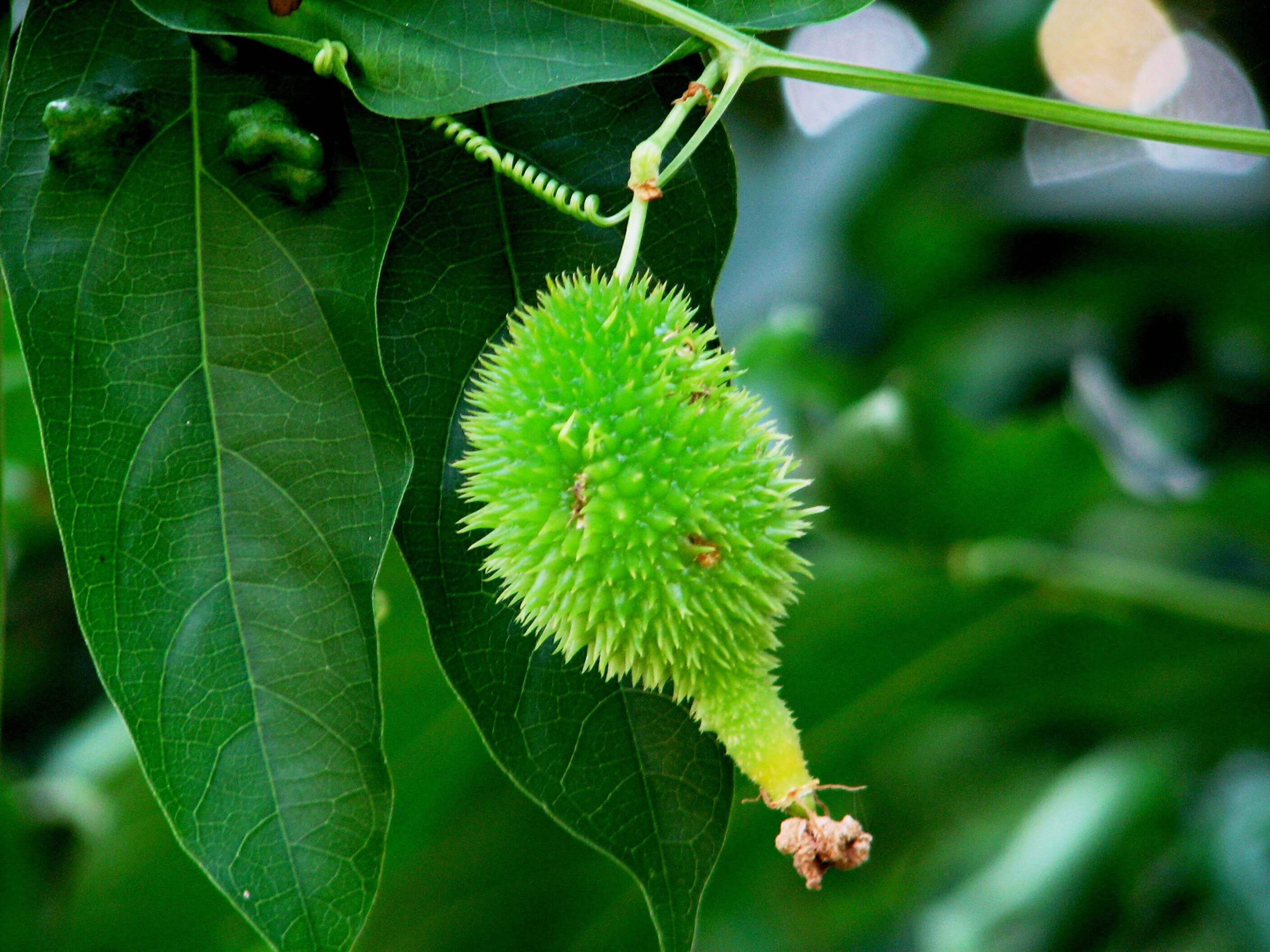 |
|||
| 317. Morinda tinctoria Roxb. Family: RUBIACEAE Flowering: May Local name: Chayalee, Chaily Description: It is an evergreen shrub or small tree growing to 5-10 m tall. Stem is short and crooked, with rough bark with deep longitudinal cuts. Oppositely arranged leaves are 15-25 cm long, oblong to lancelike. Flowers occur in spherical heads, 3-5 cm acros, on a stalk 2-3 cm long. Near the stalk of the flower-head, there is a one small linear leaf. The flowers are tubular, white, scented, about 2 cm long. Oblong petals are about 1 cm long, 3-7 in number. Stamens as many as petals. The fruit is a green syncarp, 2-2.5 cm diameter. Medicinal Uses: Stem bark is pasted with water and applied locally on the paining part of the joints of human being. IUCN Status: |
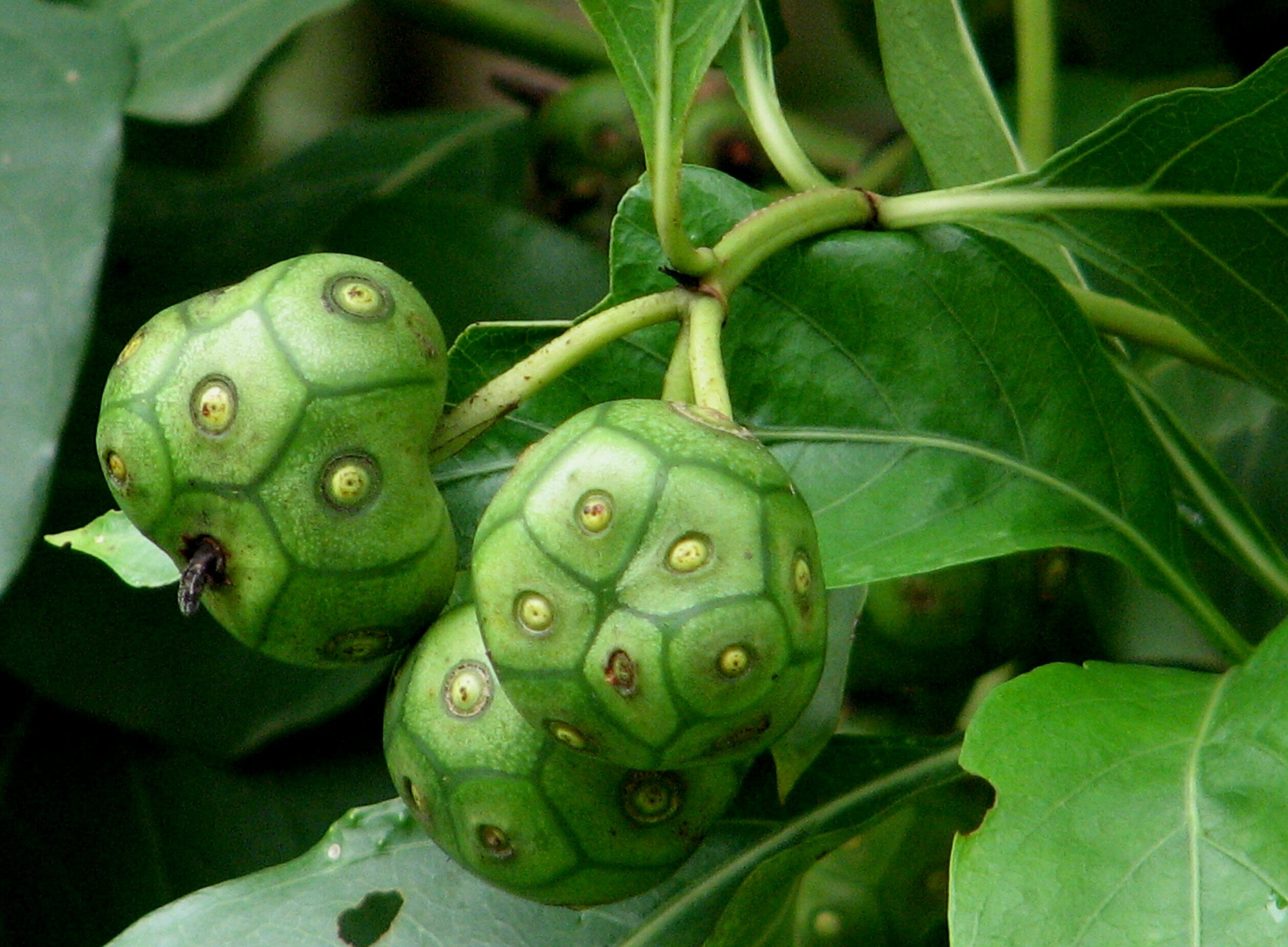 |
|||
| 318. Moringa oleifera Lam. Family: MORINGACEAE Description: Moringa is a small to medium evergreen or deciduous tree that can grow to a height of 10-12 m. It has a spreading open crown, typically umbrella-shaped. The roots are deep. The bole is crooked, generally one-stemmed but sometimes forked from the base. The bark is corky and grey. The branches are fragile and drooping, with a feathery foliage. Young twigs and shoots are covered in short dense hairs, purplish or greenish white in colour. The mature fruit splits open along each angle to expose the seeds. The capsule contains 15-20 rounded oily seeds, 1-1.5 cm in diameter surrounded by 3 papery wings, up to 2.5 cm long. Moringa seeds contain a large amount of oil. Medicinal Uses: Leaves are cooked as vegetables and also prescribed to the patient for curing blood pressure. leaves are used in the treatment of aenemia. Roots and bark are used in cardiac and circulatory problems. IUCN Status: |
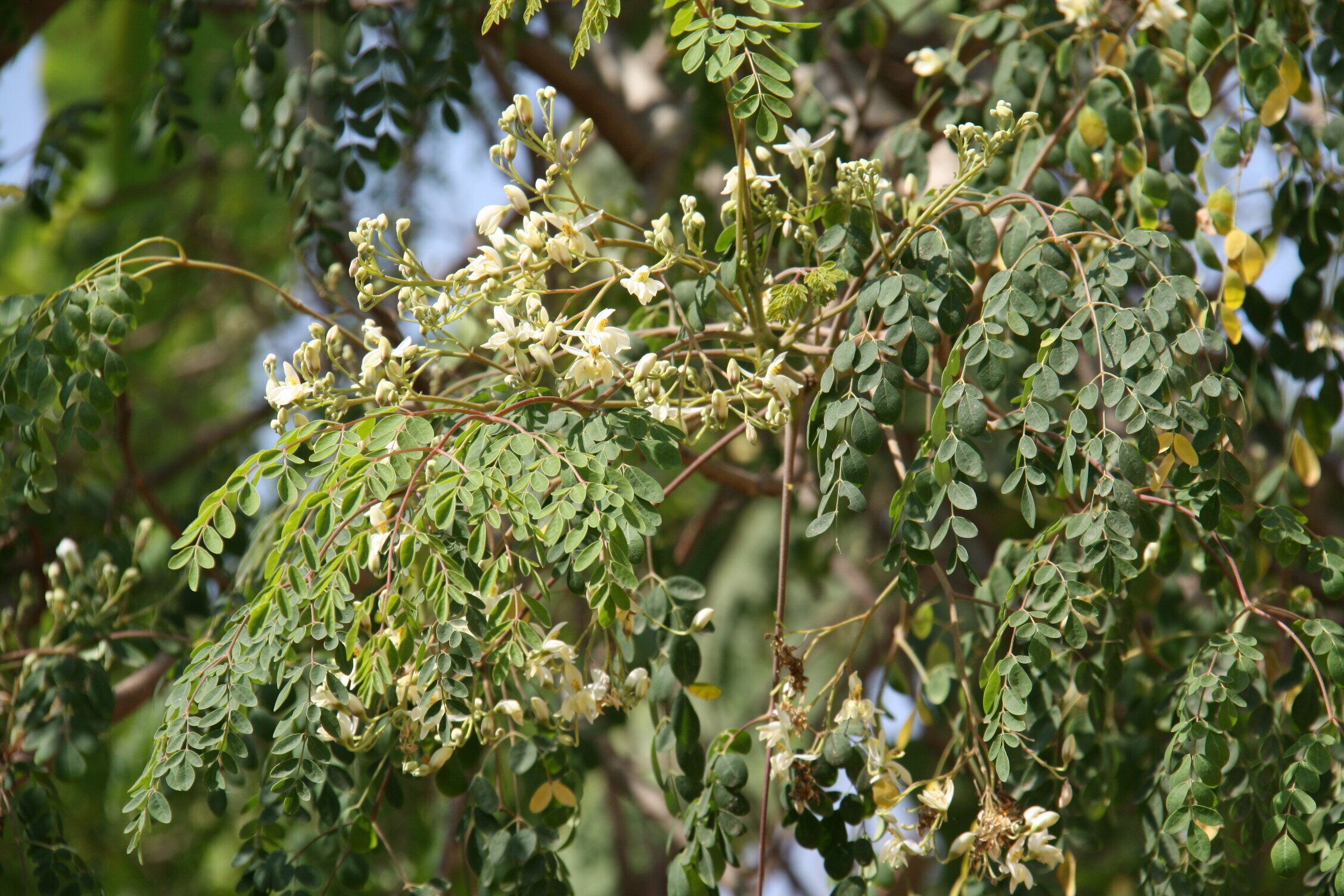 |
|||
| 319. Mucuna pruriens (Linn.) Family: FABACEAE Flowering & Fruiting: September-January Ecology: Common, in bushes, hedges and scrub forests. Description: Pubescent climbers. Leaves 3-foliolate; leaflets ovate rhomboid, white appressed pubescent beneath. Corolla deep-purple or violet, standard auricled, keel as long as wings. Ovary villose. Pod turgid, brown-villose with stinging hairs. Medicinal Uses: Mucuna pruriens (Fabaceae) is an established herbal drug used for the management of male infertility, nervous disorders, and also as an aphrodisiac. It has been shown that its seeds are potentially of substantial medicinal importance. IUCN Status: |
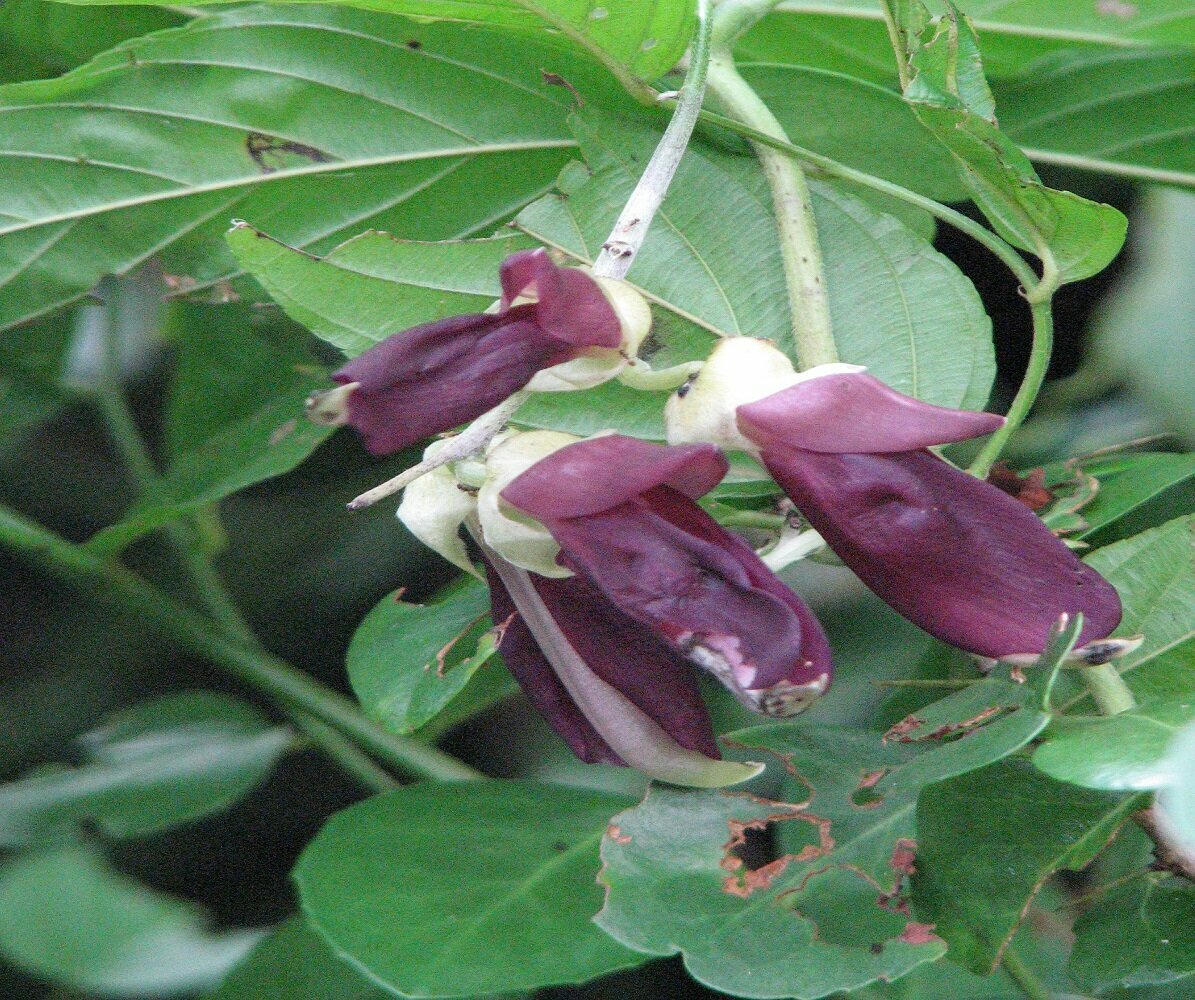 |
|||
| 320. Mukia maderaspatana (Linn.) Family: CUCURBITACEAE Flowering & Fruiting: September-October & November-January. Ecology: Common, on bushes and hedges. Description: Monoecious annual herbs. Stem scandent, sulcate, Cendrillate. Leaves scabrid, ovate, serrate, base cordate, acute, Flowers fascicled, yellow. Corolla deeply partite, villous. Stylar base annular. Berry globose, scarlet when ripe. Seeds turgid, rugose. IUCN Status: |
 |
|||
| 321. Murdannia nodiflora (Linn.) Family: COMMELINACEAE Flowering & Fruiting: July-September Ecology: Common weed of moist waste places Description: Branches slender, decumbent and rooting or ascending. Leaves linear-lanceolate, acute, glabrous. Flowers small, blue or purplish, in terminal cymes. Filaments bearded. Capsule oblong-ellipsoid, mucronate; seeds pitted, rugose. Medicinal Uses: In traditional medicine system this plant is used for treatment of asthma, leprosy and piles stomach complaints, giddiness, and astringent. IUCN Status: |
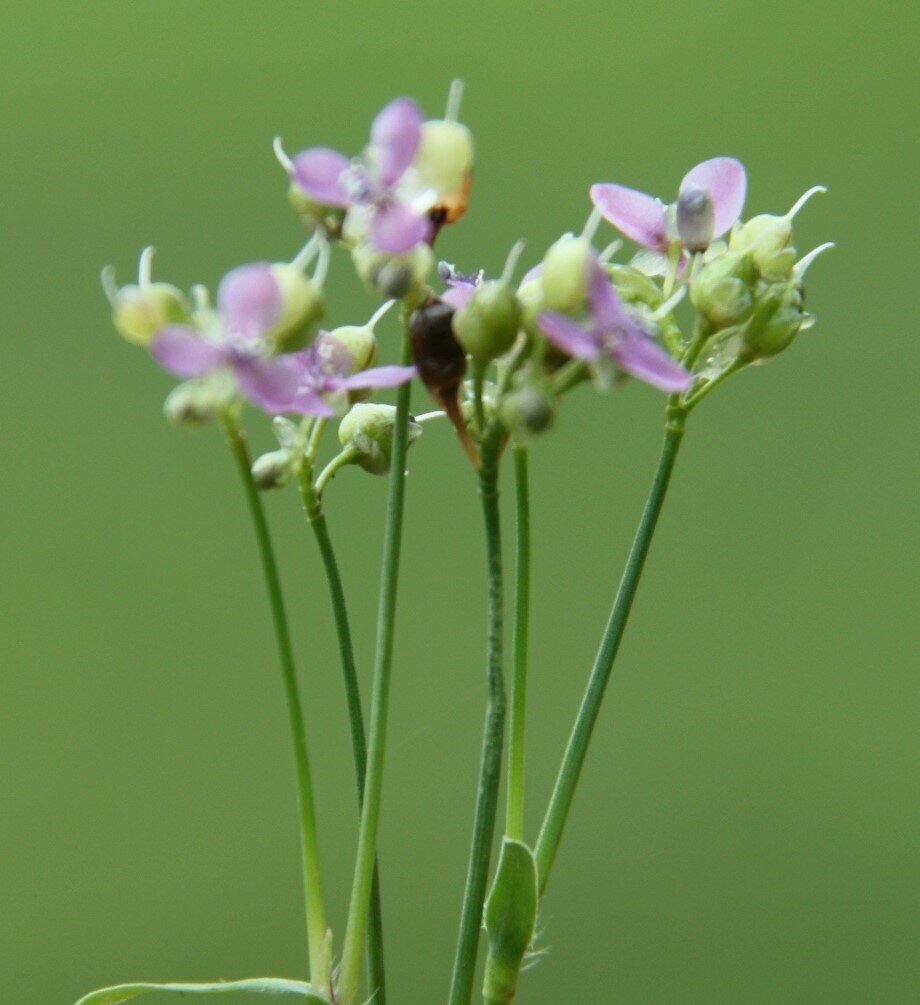 |
|||
| 322. Murdannia spirata (Linn.) Family: COMMELINACEAE Flowering & Fruiting: November-March Ecology: Abundant in marshy places Description: Decumbent, slender erbs. Leaves amplexicaul, oblong to ovate or lanceolate, acute. Flowers small, bright blue or violet, in panicled scorpiod cymes. Sepals brownish. Capsule oblong, acutely 3-gonous, mucronate. IUCN Status: |
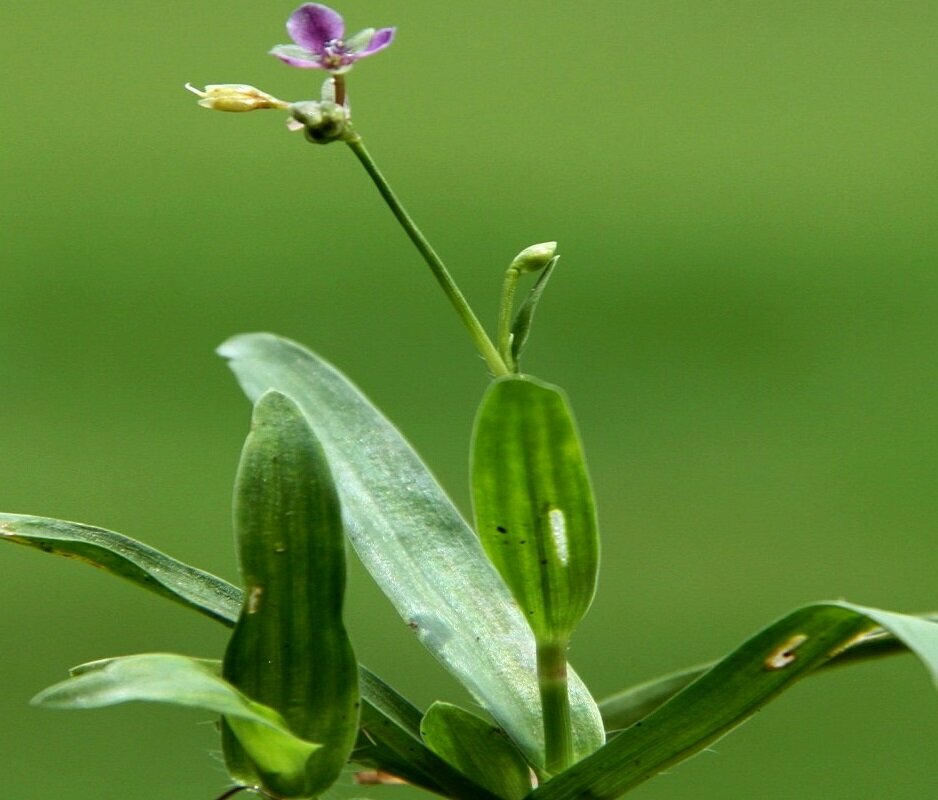 |
|||
| 323. Murraya koenigii L. Family: RUATACEAE Local Name: Bursunga, Curry-patta Description: A deciduous aromatic shrub with strong smell growing up to 3-5 m tall with a trunk up to 40 cm in diameter. The aromatic leaves are pinnate with 15-25 leaflets, each leaflet 2-4cm long and 1-2 cm broad. The flowers are small, white and fragrant which produce small shiny-black berries containing a single, large viable seed. It turns purplish black when ripe. Medicinal Uses: Leaves are taken in the treatment of indigestion and diabetes also. The leaves, roots and bark can all be used internally in the treatment of digestive problems. The leaves can be applied externally as a poultice to treat burns and wounds. IUCN Status: |
 |
|||
| 324. Murraya paniculate L. Family: RUATACEAE Local Name: Kamini Description: It is a slow-growing, evergreen shrub or small tree with a fine-textured, compact crown. It grows from 1.8 – 12 metres tall with a clear bole that can be 2.5 metres long and 60cm in diameter. Medicinal Uses: 1g root paste mixed with 2ml lime wate and 2ml of honey is given to children twice a day for three days after food against viral fever. are used in the treatment of dropsy, diarrhoea and dysentery. A decoction of the leaves is used as mouthwash for toothaches. The powdered leaves are applied externally to fresh cuts. A poultice of the fresh leaves is used to treat swellings due to sprain and contusions; poisonous snake bites. The bark of the stems and roots is astringent. It is used in the treatment of diarrhoea. The ground-up bark of the roots is both eaten and applied externally in the treatment of body aches. The flowers are stomachic and tonic. IUCN Status: |
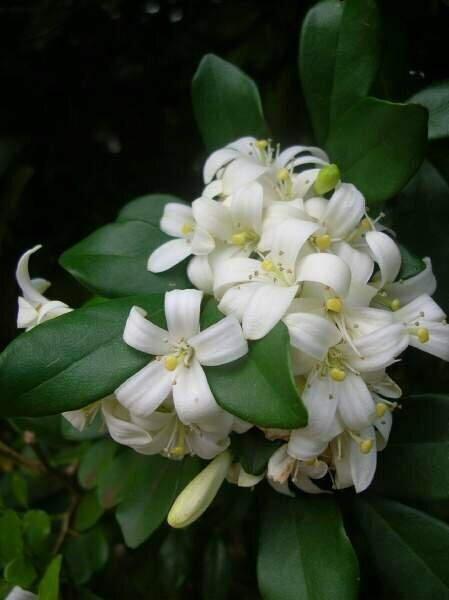 |
|||
| 325. Myristica fragrans Houtt. Family: MYRISTICACEAE Local Name: Jai Phal Description: It is a very handsome and strongly aromatic, slow-growing evergreen tree with a dense, conical crown. It usually grows 3 – 15 metres tall, but can reach 20 metres. Medicinal Uses: The seed is taken internally in the treatment of diarrhoea, dysentery, vomiting, abdominal distension, indigestion and colic. The seed is used in Ayurveda to treat poor digestion, insomnia, urinary incontinence and premature ejaculation. IUCN Status: |
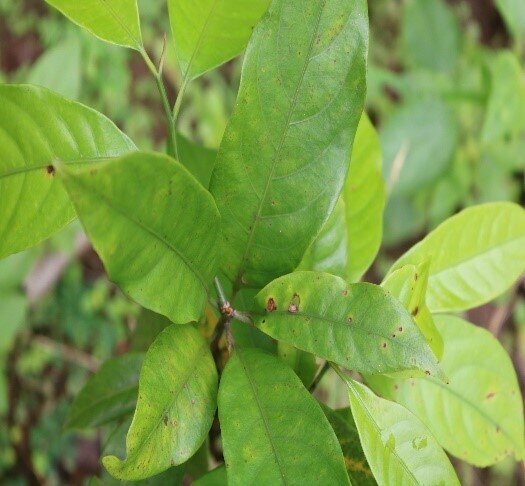 |
|||
| 326. Naringi crenulata Roxb. Family: RUTACEAE Local Name: Kanak champa Flowering & Fruiting: March – June & June – September Ecology: Common in moist deciduous forests. Description: Small deciduous trees. Leaves 3-foliolate leaflets sessile elliptic ovate glandular, crenulated, petiole broadly winged. Flowers small, white, 4-merous, in umbellate clusters. Berry globose glandular. Medicinal Uses: Bark decoction made into a paste and applied on boils. Roots crushed with onion, garlic and calcium made into a paste applied for rheumatism; root bark made into a paste and applied in body pain; powdered roots purgative and stomachic. Leaves soaked in buttermilk and consumed to get relief from ulcer. Bark, leaves and roots ground and made into a paste given orally to increase fertility among women. Roots, leaves and fruits purgative, sudorific, in colic, epilepsy, heart troubles. Fruit and roots anthelmintic, astringent, for diarrhea and dysentery; dried powdered fruits stimulant, tonic. [CRC World Dictionary of Medicinal and Poisonous Plants]. IUCN Status: |
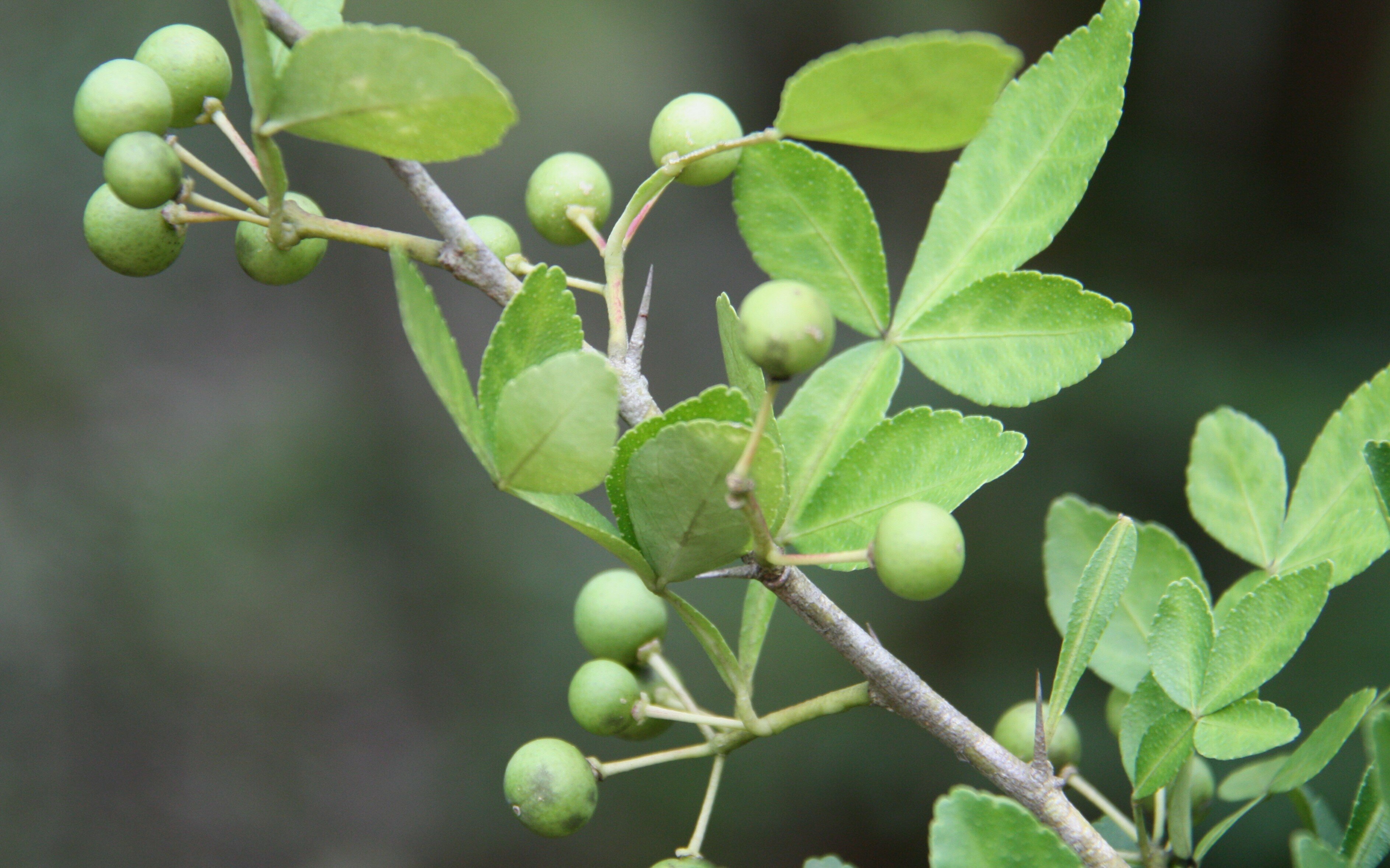 |
|||
| 327. Nerium oleander L. Family: APOCYNACEAE Local Name: Kanak champa Flowering & Fruiting: Round the year Ecology: Found mostly in seasonally dry rocky watercourses Description: A small shrub with milky juice present. Leaves are verticillate in 3 or 2 opposite, linear- lanceolate, narrow at both ends. Terminal panicles of cymes. Fruit are a pair of follicles, seeds many, comose. Medicinal Uses: It is used for treating cardiac conditions in patients who cannot tolerate digitalis. In traditional medicine, the leaves have been used for a variety of medicinal purposes, including the treatment of heart diseases, as a diuretic, antibacterial, and against snake-bite. The roots have been used externally in traditional medicine for treating cancer, ulcers and leprosy. Fruits is cut in such a shape and fitted around paining and infected nails of toes after slightly warmed. In next morning the pus will come out and the pain will be reduced. IUCN Status: |
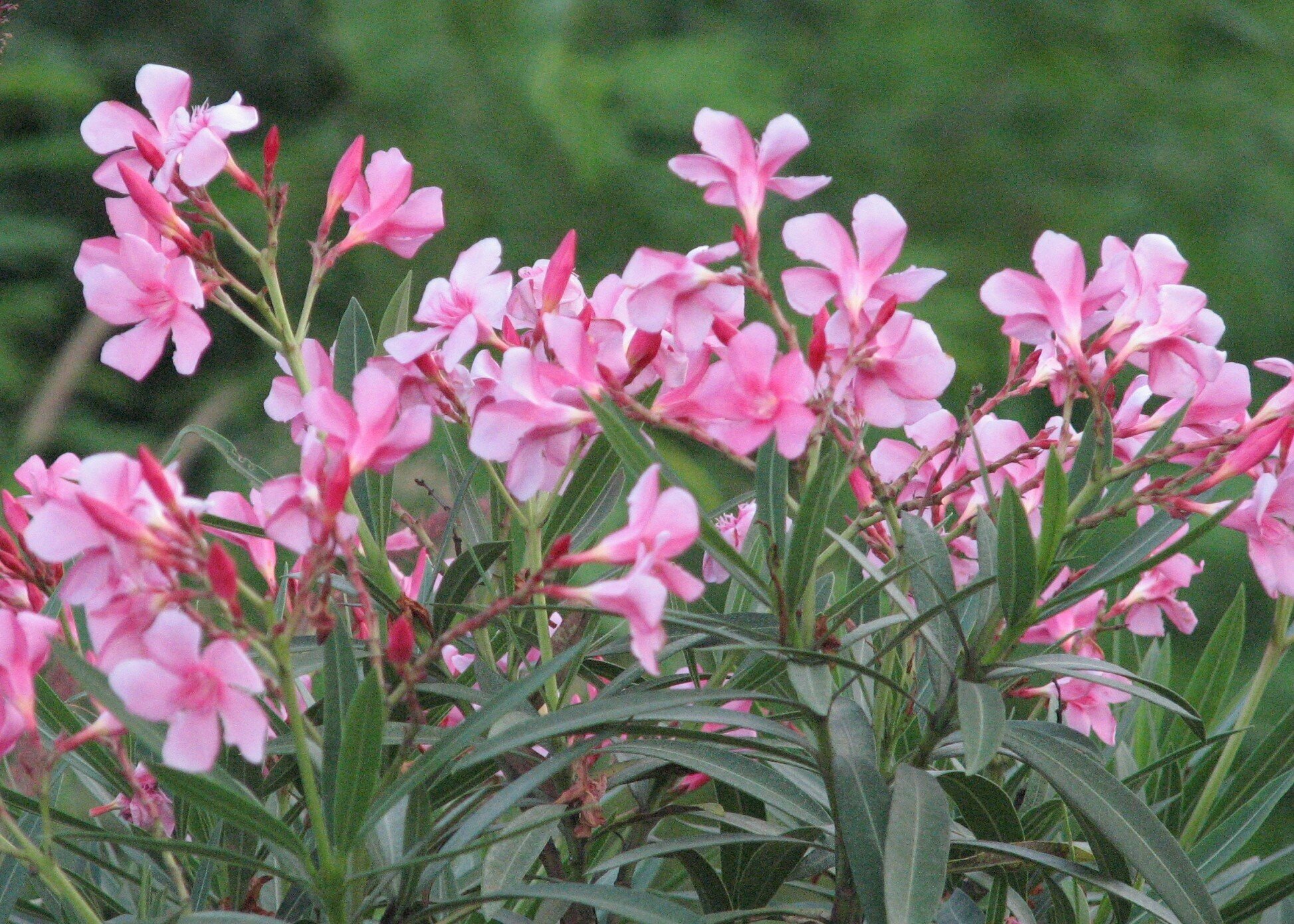 |
|||
| 328. Nicotiana plumbaginifolia Viv. Family: SOLANACEAE Flowering & Fruiting: March – May Ecology: Occasional, in open grounds & fallow fields Description: Glandular-pubescent herbs. Leaves radical and cauline: lower ovate-spatulate; upper sessile, oblong-lanceolate, semi-amplexicaul, hairy. Flowers greenish-white in terminal sub-paniculate racemes. Calyx tubular, 10-ribbed. Capsules ovate, seeds verrucose. Medicinal Uses: Nicotiana plumbaginifolia Vivane (Fam. Solanaceae) is a flowering annual herb of Bangladesh. It is used in the treatment of cuts, wounds, toothache, rheumatic swelling in the traditional system of medicines. IUCN Status: |
 |
|||
| 329. Nyctanthes arbortristis Linn. Family: OLEACEAE Flowering & Fruiting: September – December & January – March Local name: Gangasiuli Ecology: Quite abundant on hill slopes. Description: Small trees; branchlets 4-angular. Leaves opposite, entire to coarsely toothed, acute. Cymes 3-chotomous, terminal & axillary. Flowers sessile, fragrant. Calyx truncate. Corolla white with ora tube. Capsule compressed, orbicular. Medicinal Uses: Nyctanthes arbortristis is an identified and commonly used plant in medicinal field. Nyctanthes arbortristis used in various ailments like fever, enlargement of the spleen, malaria, blood dysentery, cough and gastritis. Juices of leaves is used as digestives, antidote to reptiles venome. IUCN Status: |
 |
|||
| 330. Nymphoides hydrophylla (Lour.) Family: MEYANTHACEAE Local name: Chhoto Kamal, Neel Kamal Description: Rhizomatous annuals or perennials; rhizome 0.5-1.5 cm thick. Primary fertile shoots many, uniphyllous, arising from the axils of scales on the rhizome. Secondary shoots zig-zag, sympodial, many-jointed, each joint bearing a single floating leaf. Leaves all fertile, floating, 6-10 cm across, ovate to orbicular, base deeply cordate, gland-dotted below, membranous; petiole to 2.5 cm long. Ovary bottle-shaped with 5, minute, orbicular, disc glands at the base; stigmas 2-lobed. Capsule to 14 mm long, oblong. Seeds 4-6 in each capsule, to 2 mm across, discoid, brown. Medicinal Uses: All parts (Pachang) are given with honey fo 7 days in the treatment of burning sensation in stomach, irritation during urination, hot stomach and jaundice. IUCN Status: |
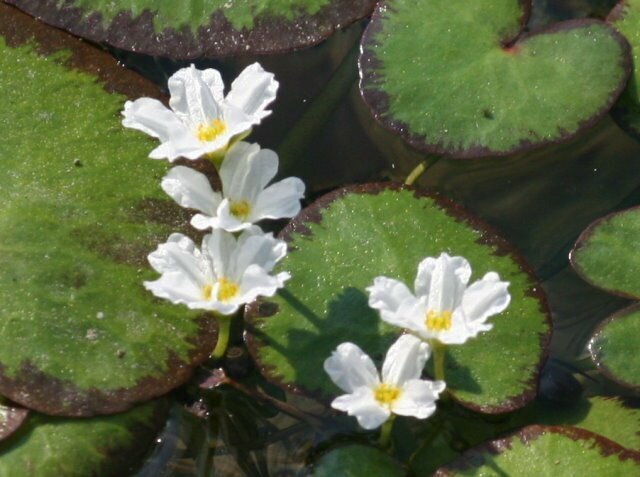 |
|||
| 331. Ocimum basilicum Linn. Family: LAMIACEAE Local name: Subasi, Londabaguli, Ban tulsi Flowering & Fruiting: October-December. Ecology: Common in waste places & fallow fields at foot hills Description: Erect, much branched, scented herbs. Leaves ovate, entire or cut, glandular. Flowers white or pale-purple, in close racemes. Mutlets oblong, black. Medicinal Uses: Ocimum basilicum L. (Lamiaceae) commonly known as sweet basil, has been used as a traditional medicinal plant for the treatment of headaches, coughs, diarrhea, constipation, warts, worms, and kidney malfunctions. Leaves are pasted and applied in insect bite. Decoction of the leaves, given in gastric and hepatic disorders and is useful in catarrh, bronchitis, in cough (due to heat), acts as diuretic and emmenagogues as well as tonic for stomach. Decoction of roots is useful in malarial fever as antiperiodics. IUCN Status: |
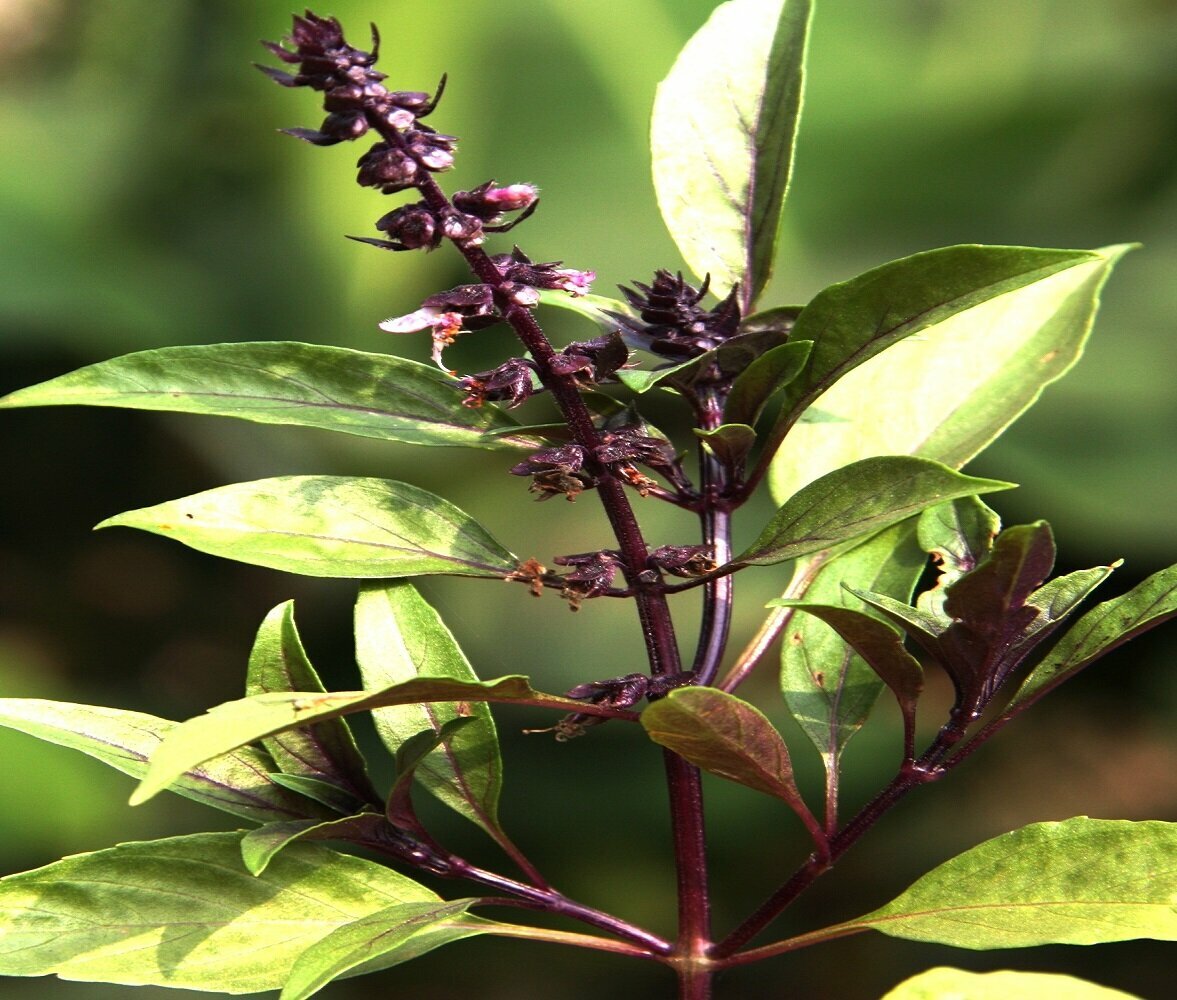 |
|||
| 332. Ocimum gratissimum Linn. Family: LAMIACEAE Flowering & Fruiting: November-January. Ecology: In waste grounds near villages. Description: Aromatic undershrubs. Leaves ovate, coarsely crenate, acute, hairy on nerves beneath decurrent on the petiole. Flowers white, inconspicous, whorled in racemes. Filaments bearded at base. Nutlets red-brouri, subglobose. Medicinal Uses: In traditional medicine, the leaves have been used as a general tonic and anti-diarrhea agent and for the treatment of conjunctivitis by instilling directly into the eyes; the leaf oil when mixed with alcohol is applied as a lotion for skin infections, and taken internally for bronchitis. IUCN Status: |
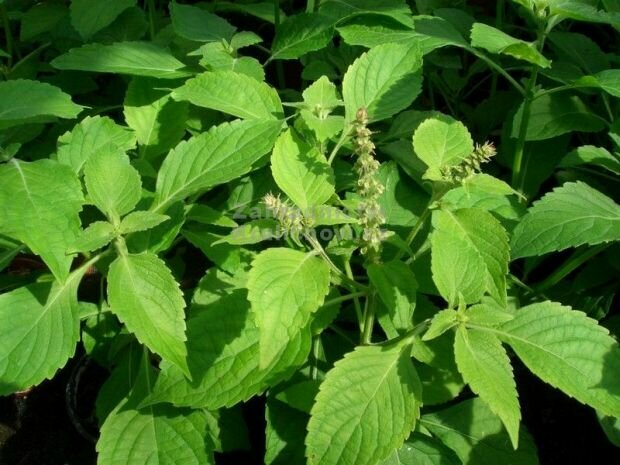 |
|||
| 333. Ocimum sanctum Linn. Family: LAMIACEAE Flowering & Fruiting: Almost year round. Description: Purple undershrubs; twigs somewhat 4-angled, hairy. Leaves ovate-oblong or elliptic-oblong, pubescent both sides, crenate-serrate, acute or accuse. Flowers purplish, whorled in racemes. Calyx villous, glandular caeside. Nutlets reddish, ellipsoid.Commonly planted in temple premises and in the courtyards of every Sindu house as sacred to Vishnu. Often run wild near human habitations. Medicinal Uses: In traditional systems of medicine, different parts (leaves, stem, flower, root, seeds and even whole plant) of Ocimum sanctum Linn (known as Tulsi in Hindi), a small herb seen throughout India, have been recommended for the treatment of bronchitis, bronchial asthma, malaria, diarrhea, dysentery, skin diseases. IUCN Status: |
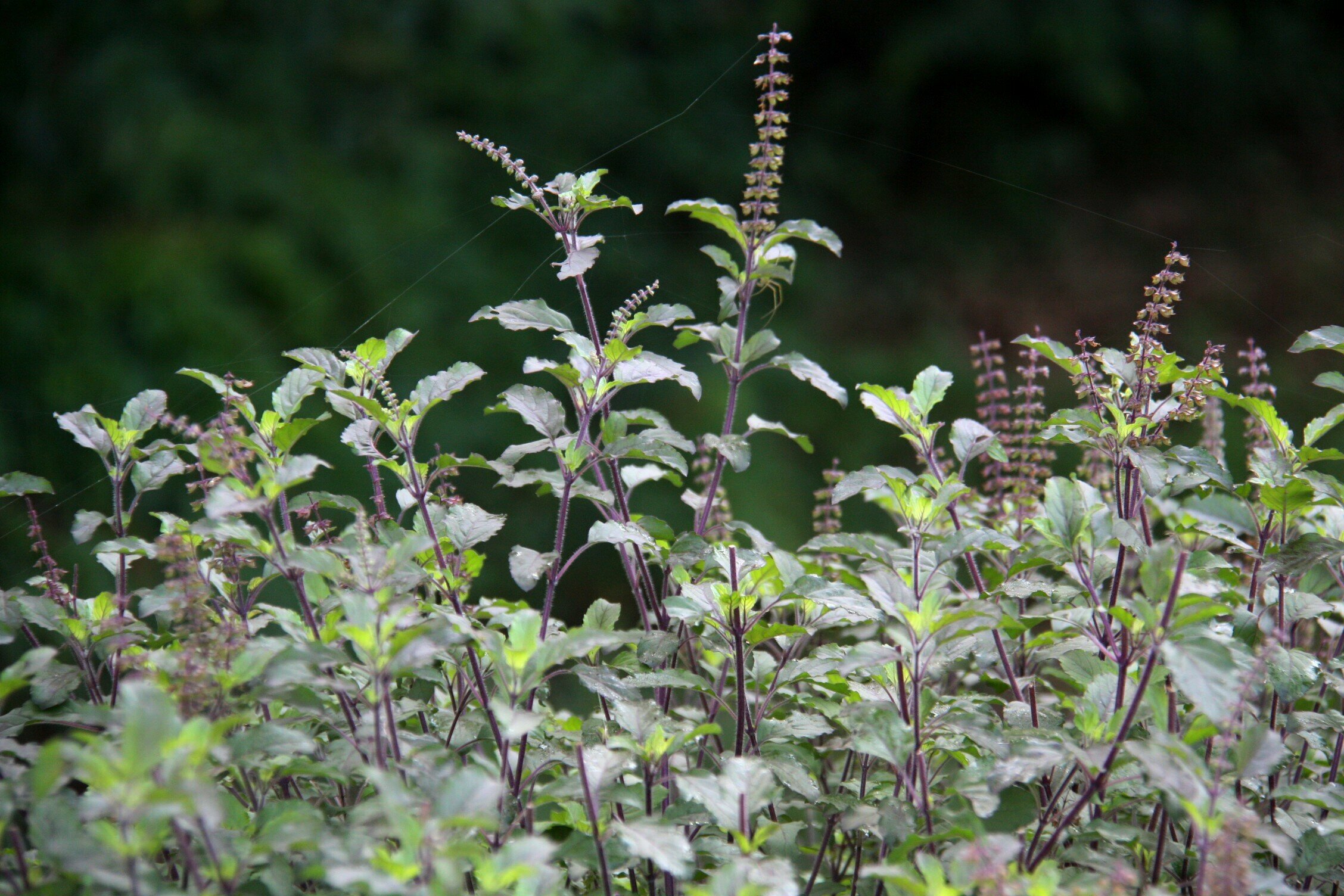 |
|||
| 334. Olax psittacoram Willd. Family: OLACACEAE Local name: Bader Flowering & Fruiting: June-September & September-December Ecology: Common in scrub forests. Description: Large scandent shrubs. Leaves simple, alternate, elliptic, obtuse base unqual, rounded. Flowers small, white, mid-fragrant, in short axillary racemes. Calyx reduced to a ring, accrescent. Stamens yellowish. Drupe globose fleshy, orange-yellow when ripe. Medicinal Uses: In Ayurvedic medicine, the bark is used in anaemia and as a supporting drug in diabetes. IUCN Status: |
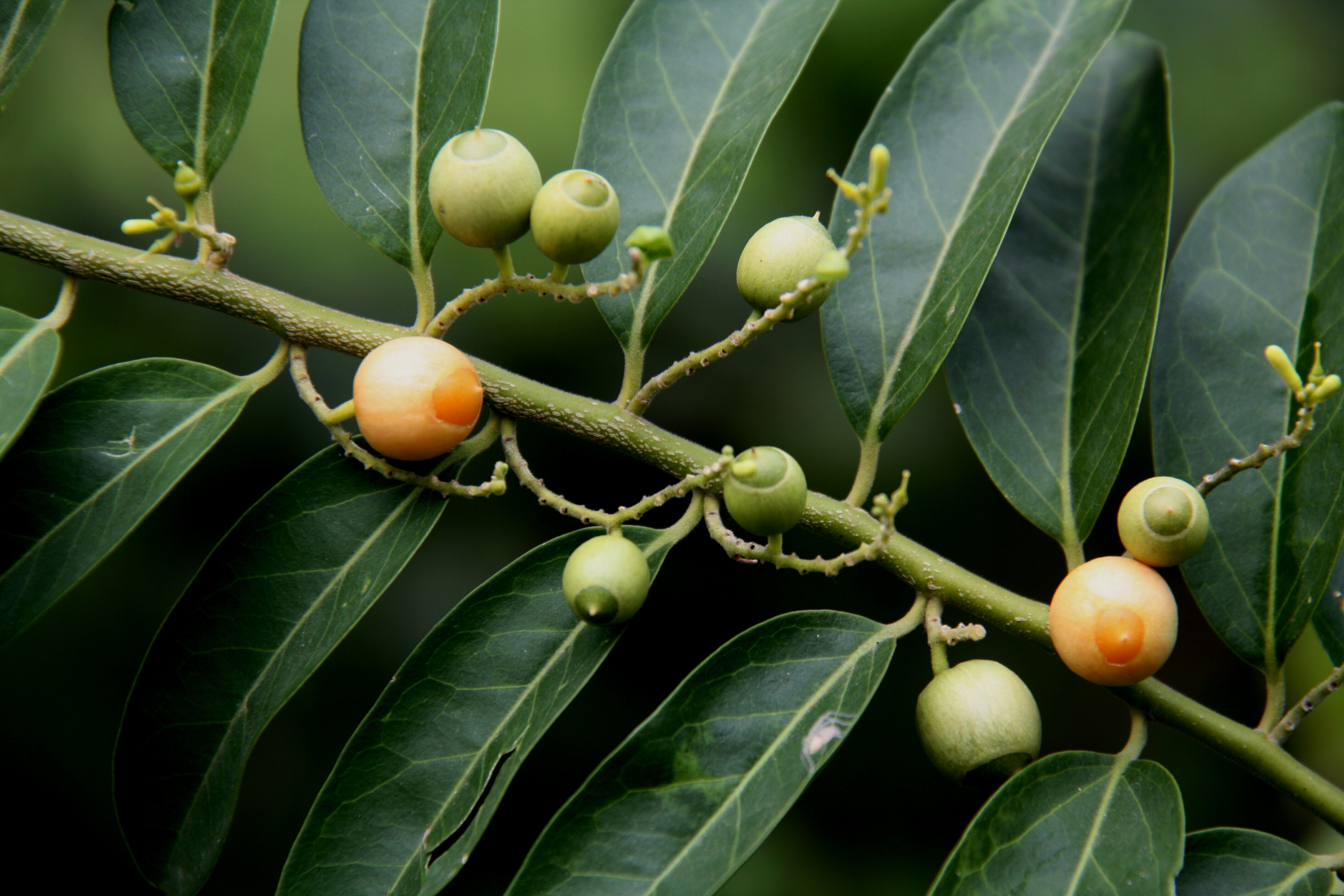 |
|||
| 335. Oplismenus burmannii (Retz.) Family: POACEAE Flowering & Fruiting: July-December Ecology: Gregarious, in shady moist localities. Description: Delicate, diffuse herbs. Stems prostrate or ascending. Leaves broadly lanceolate, acuminate, sheath pubescent. Spikes alternate, lax, secund, awned. Spikelets 2-nate, ovate-lanceolate, acute, hairy. Medicinal Uses: An ointment made with the leaves crushed and compounded with karite butter (Vitellaria paradoxa, Sapotaceae) is used in Ivory Coast on guinea-worm sores and snake-bite; it also soothes earache. The inflorescence has a stickiness whereby it adheres to clothing, and for this property is used to catch rats. IUCN Status: |
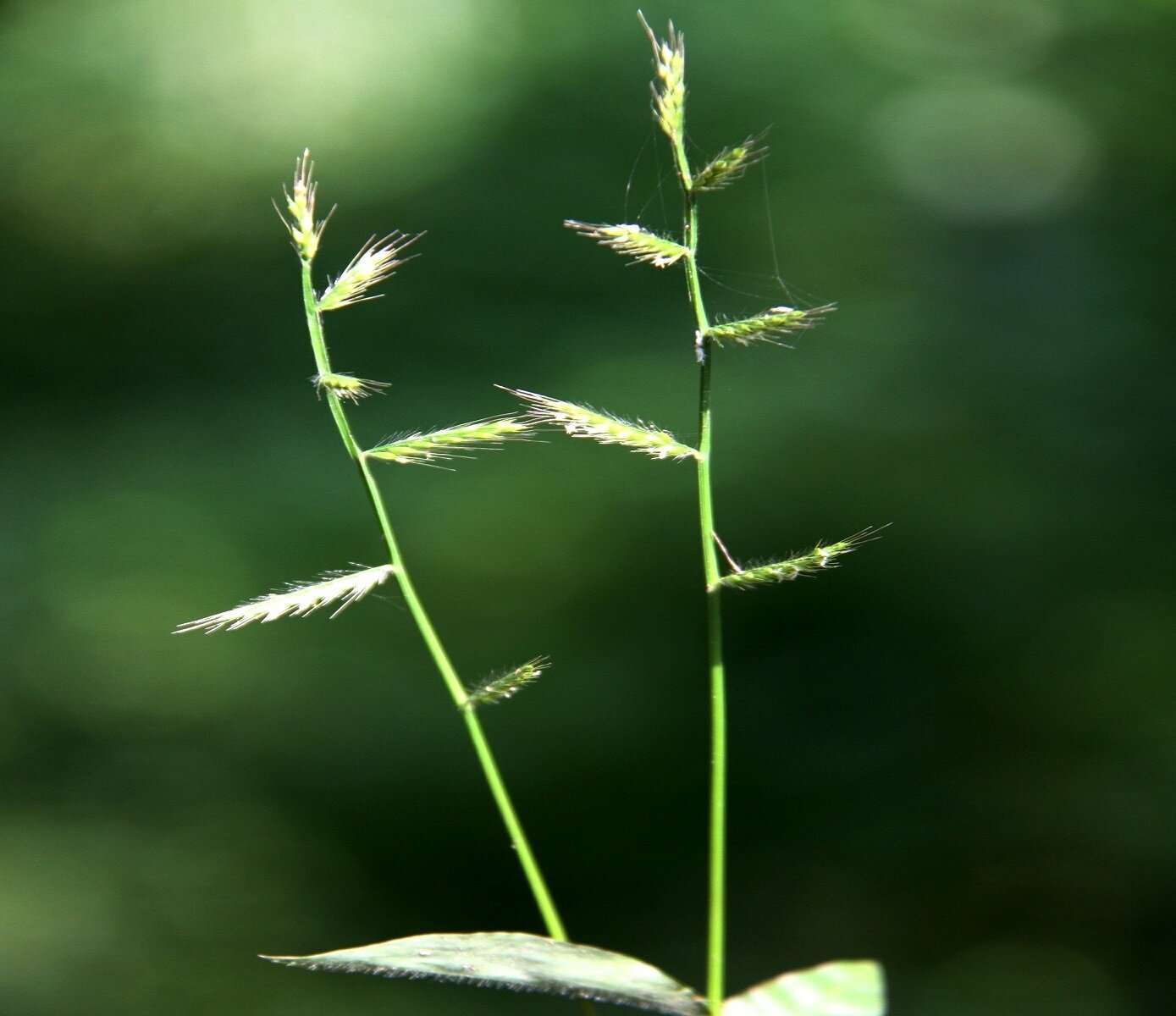 |
|||
| 336. Oplismenus compositus (Linn.) Family: POACEAE Flowering & Fruiting: August-February. Ecology: Very common, in damp shady forest floor Description: Stems creeping, rooting below then ascending. Leaves lanceolate, acuminate, base ciliate. Rachis 3-quet rous. Spikes solitary, subsecund, distant. Spikelets 1-2 -nate. Glumes awned, silky or hispidulous. IUCN Status: |
 |
|||
| 337. Opuntia stricta Family: CACTACEAE Flowering & Fruiting: June – October Ecology: Common, on rocky hill slopes. Local name: Fanfana Description: Erect shurbs. Joints flat, obovate. Areole bearing 4-7, translucent, flattened, yellowish spines. Flowers bright yellow. Berry globose, fleshy, glochidiate. Medicinal Uses: It is used for centuries ass food resources and in traditional folk medicine for their nutritional properties and their benefit in chronic diseases, particularly diabetes, obesity, cardiovascular diseases and cancer. IUCN Status: |
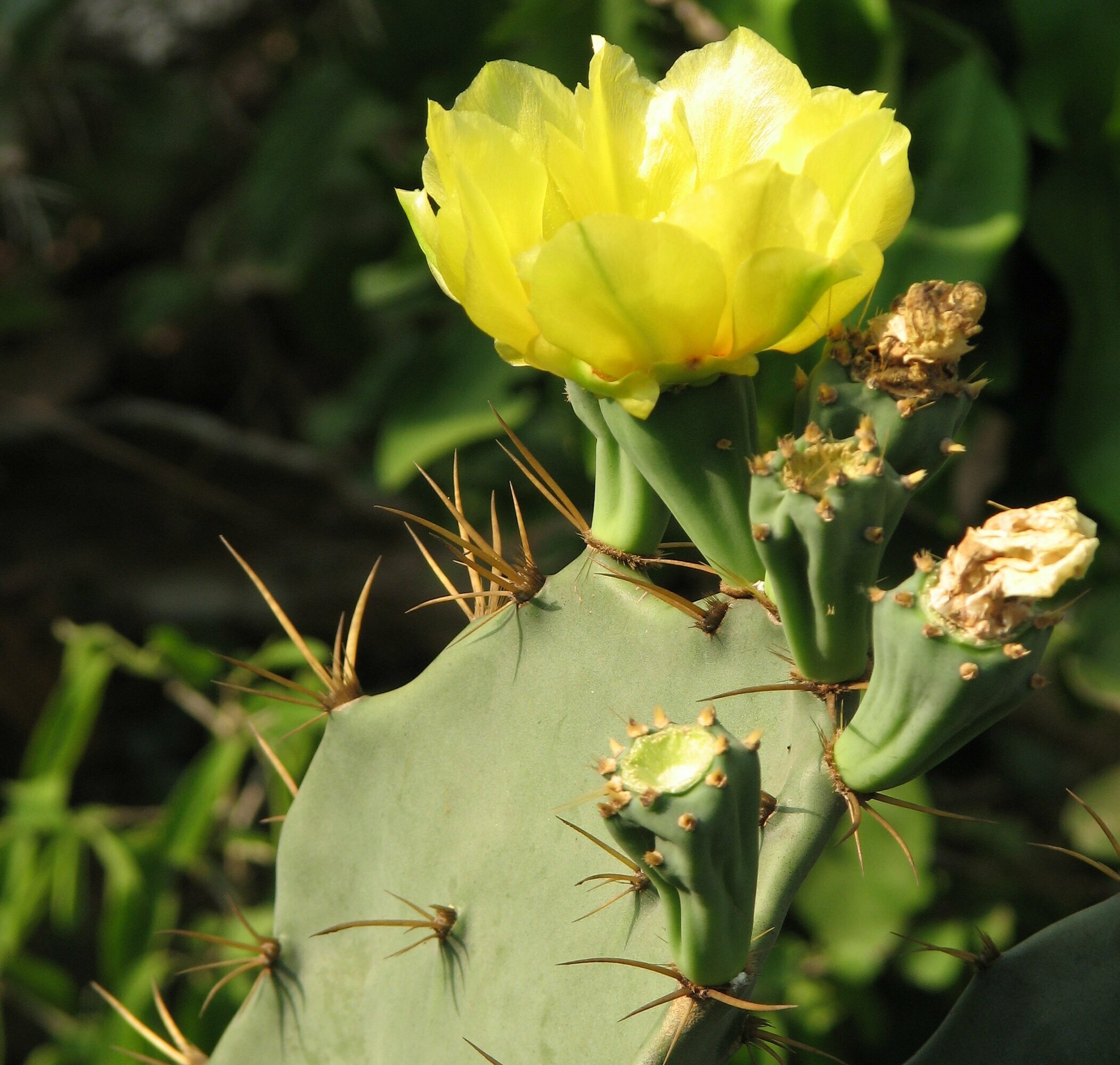 |
|||
| 338. Oroxylum indicum (Linn.) Family: BIGNONIACEAE Flowering & Fruiting: July – September & January – April Ecology: Occasional, along streams and ravines under shade. Local name: Fanfana Description: Small annual herbs. Stem 4-angled, angles strigosely hispid. Leaves ovate-elliptic or oblong, thinly strigose above. Flowers mauve, in terminal fascicles. Ovary half-inferior, ovoid, tip pilose. Medicinal Uses: Accordingly, the medicinal properties of Oroxylum indicum are: The root bark of plant is acrid, bitter, pungent, astringent to the bowels, cooling, aphrodisiac, tonic, increases appetite, useful in “vata”, biliousness, fevers, bronchitis, intestinal worms, vomiting, dysentery, leucoderma, asthma, inflammation. The stem bark paste is prepared with water and applied externally for the treament of chicken pox. IUCN Status: |
 |
|||
| 339. Osbeckia zeylanica Linn. Family: MELASTOMATACEAE Flowering & fruiting: March-July. Ecology: Common on sandy surfaces on steep slopes near stream. Description: Small annual herbs. Stem 4-angled, angles strigosely hispid. Leaves ovate-elliptic or oblong, thinly strigose above. Flowers mauve, in terminal fascicles. Ovary half-inferior, ovoid, tip pilose. IUCN Status: |
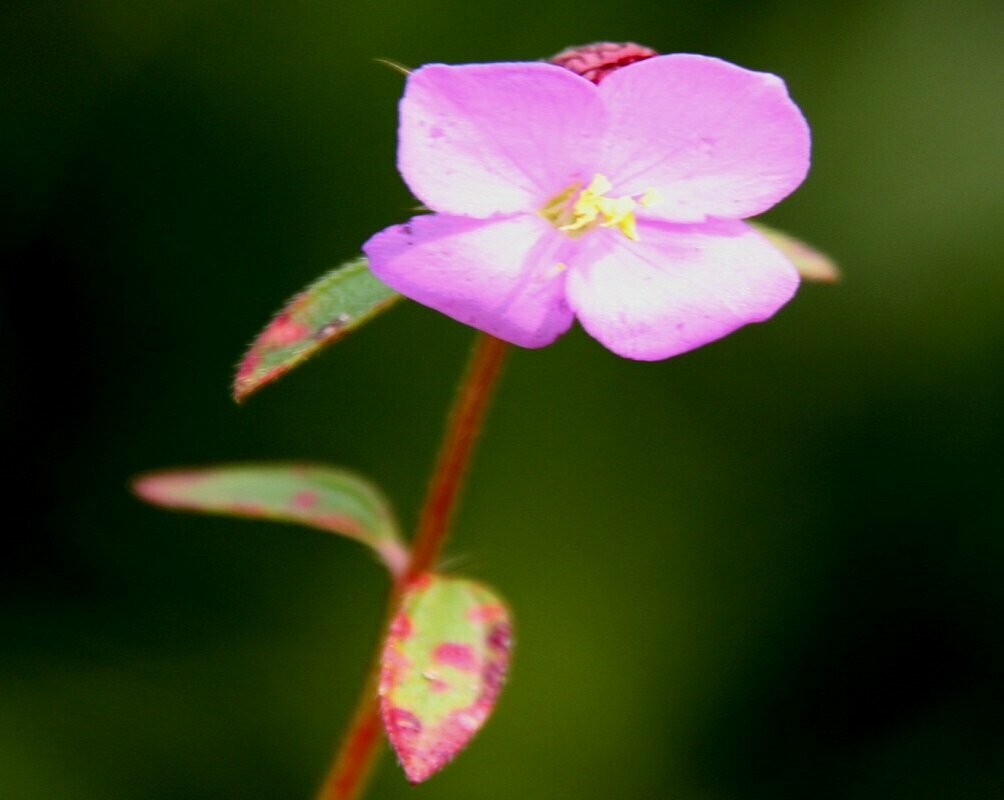 |
|||
| 340. Orthosiphon pallidus Royle Family: LAMIACEAE Flowering & fruiting: July-October. Ecology: Occasional, on foot hills in moist places. Description: Herbs. Branches erect or diffuse, 4-angled. Leaves ovate or elliptic, base attenuate, crenate-serrate, pale beneath. Flowers racemed, white. Calyx many-nerved, lower-lip 2 awned. Nutlets pale globose. Medicinal Uses: These are widely used in traditional medicine to prevent different diseases such as diabetes, kidney stone, edema, rheumatism, hepatitis, hypertensive and jaundice. IUCN Status: |
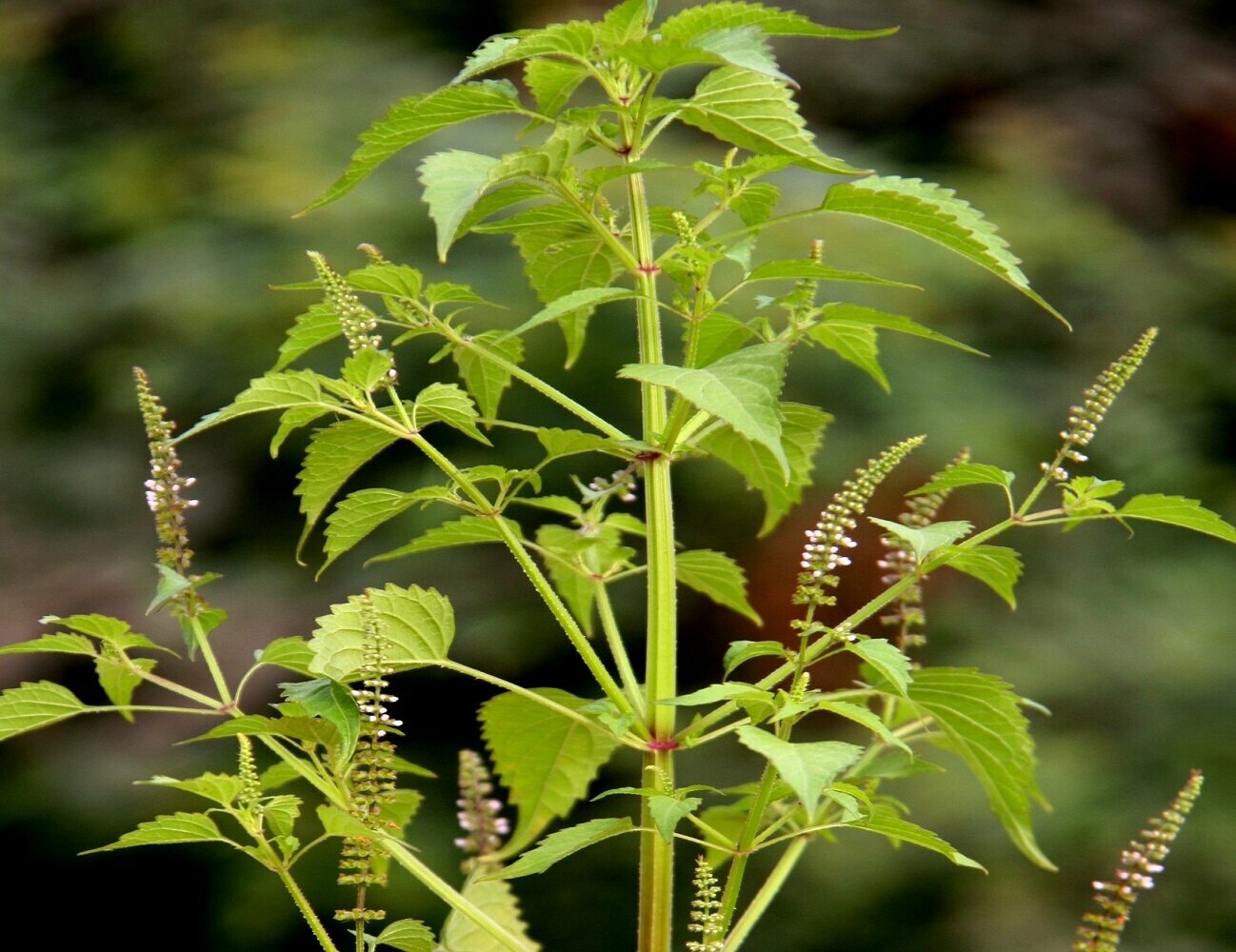 |
|||
| 341. Oryza sativa Linn. Family: POACEAE Flowering & Fruiting: Usually October-November, other times also. Ecology: Extensively cultivated; frequently run wild in marshy localities. Description: Semi-aquatic herbs. Stem erect, fistula. Leaves linear lanceolate, acuminate, scabrid, sheath glabrous. Rachis smooth, straight. Spikelets awnless or awned, shining, in drooping panicles. Glume iii hispid above, spinescent ly ciliate. Medicinal Uses: The oil can also be used for soap making or made into a plastic packaging material. Rice also has medicinal uses. It is diuretic and used to treat urinary dysfunctions. Excessive lactation, poor appetite, and indigestion can be treated using the seeds. IUCN Status: |
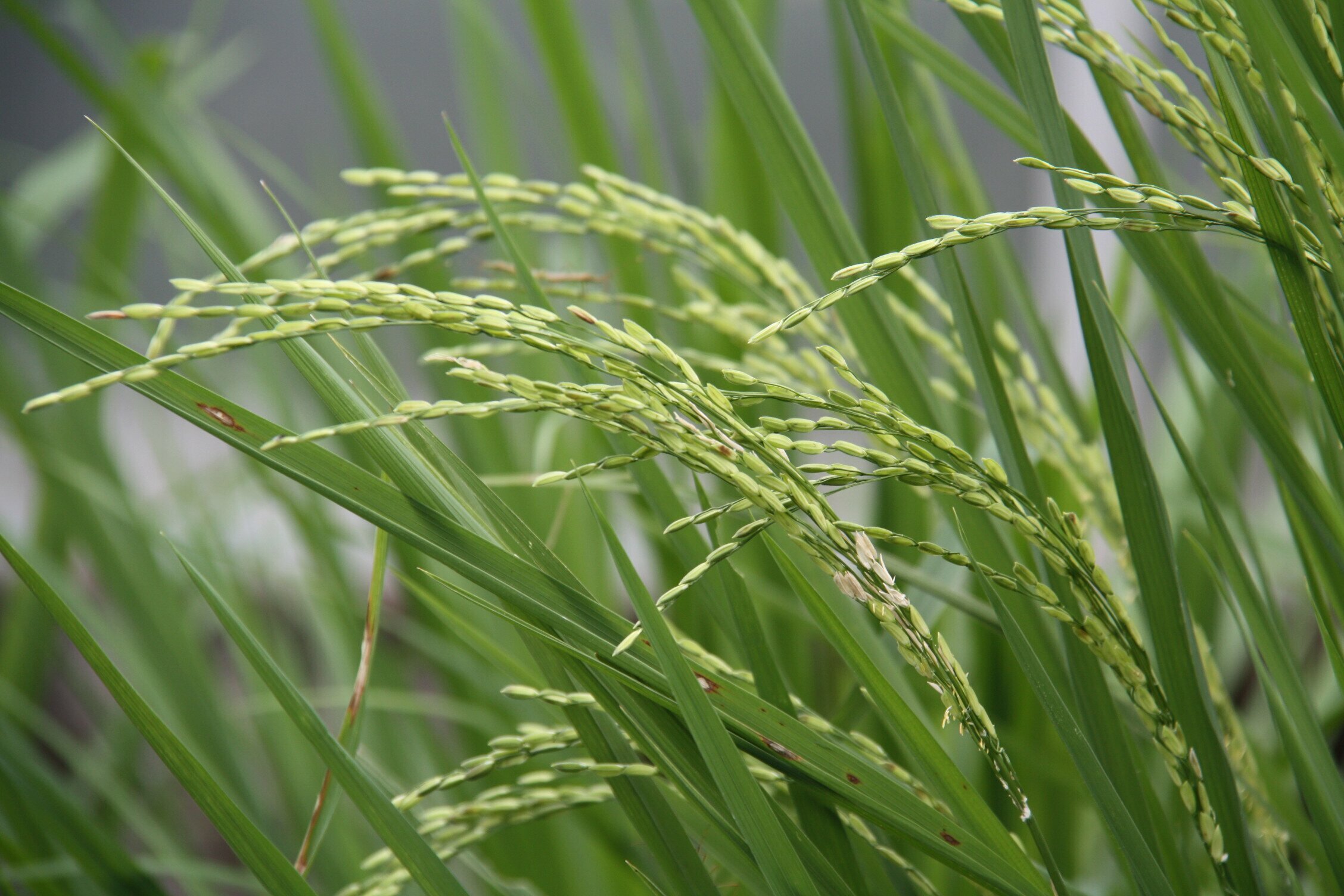 |
|||
| 342. Ottelia alismoides (Linn.) Family: HYDROCHARITACEAE Flowering & Fruiting: October- February. Ecology: Very common in ditches at foot hills. Description: Aquatic hebs. Leaves submerged and floating, bright green. Flowers white, solitary, sessile, in a tubular 2-fid or toothed crisped winged spathe. Perianth exserted. Fruit oblong, 6- groved, enclosed in the spathe. Medicinal Uses: Ottelia alismoides is an traditional aquatic plant. It is used as medicinal plant for treating diseases like cancer, asthma, diabetes, tuberculosis, haemorrhoids, febrifuge, and rubifacient. IUCN Status: |
 |
|||
| 343. Oxalis corniculata L. Family: OXALIDACEAE Flowering & Fruiting: August – November & November – December Local name: Aamlati Ecology: Occasional, in thickets near nalas. Description: Stamens 10, in two rows. Ovary 5-celled; ovules many; styles 5, distinct. Capsules 0.8-1.5 x 0.3-0.5 cm, linear, puberulous outside. Seeds many, minute, brown Medicinal Uses: Leaves are used in the treatment of indigestion. The plant is used in the treatment of influenza, fever, urinary tract infections, enteritis, diarrhoea, traumatic injuries, sprains and poisonous snake bites. The plant is a good source of vitamin C and is used as an antiscorbutic in the treatment of scurvy. The juice of the plant, mixed with butter, is applied to muscular swellings, boils and pimples. An infusion can be used as a wash to rid children of hookworms. The leaf juice is applied to insect bites, burns and skin eruptions. It has an antibacterial activity. IUCN Status: |
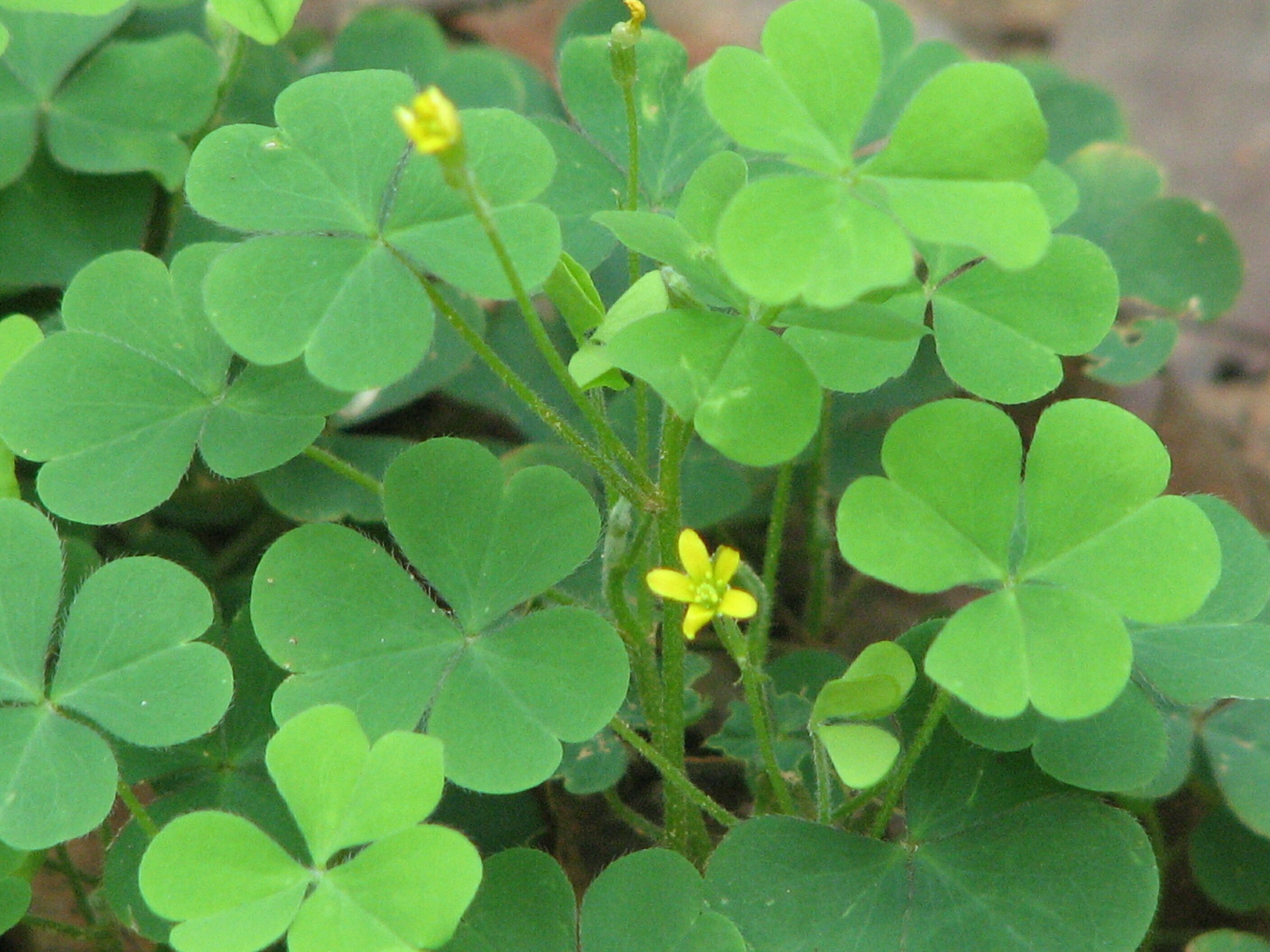 |
|||
| 344. Paederia foetida Linn. Family: RUBIACEAE Flowering & Fruiting: August – November & November – December Local name: Gandhali Ecology: Occasional, in thickets near nalas. Description: Slenders, foetid climbers. Leaves opposite, elliptic ovate or oblong ovate, membranous, acute or acuminate, base rounded or subcordate. Flowers sessile, purple, in axillary & terminal, pubescent panicles. Fruit ellipsoid or oblong, compressed, reddish. Medicinal Uses: It is useful in relieving a number of aliments like rheumatism, paralysis, abscesses, gout, diarrhea. Leaf paste is applied externally on rheumatic parts of the body till complete cure. Leaves are cooked with rice and taken one or two days in the treatment of rheumatism and gout. The plant extract is also taken internally for 8-10 days in joint pain. IUCN Status: |
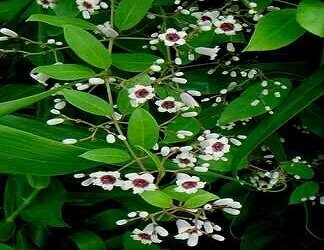 |
|||
| 345. Pandanus amaryllifolius Roxb. Family: PANDANACEAE Local name: Anna purna Description: It is an evergreen tree with fragrantly-scented leaves. Flowers and fruits are unknown, large growth form that eventually produces an erect stem, 2 – 4.5 metres tall and 15 cm in diameter. Medicinal Uses: Leaves/tubers (Kanda) extract is given with honey for 15 days in the morning in the treatment of piles. The non-vegeterian food is restricted during the treatment. Leave are cut into pieces and put on cooking rice for pleasant scent. The leaves are used for treatment of diabetes. Also used in the treatment of skin diseases; as a relaxing soak to counter restlessness. IUCN Status: |
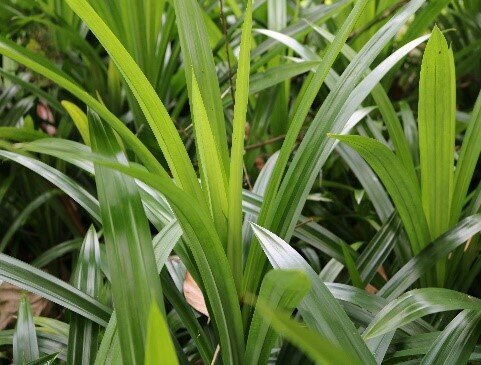 |
|||
| 346. Panicum brevifolium Linn. Family: POACEAE Flowering & Fruiting: September-January. Ecology: Common, in moist shady places along streams. Description: Decumbent grass: rooting at nodes. Leaves ovate, acute, amplexicaul, base cordate. Panicle lax. Spikelets solitary, ovate, acute. Glumes puberulous: upper gibbous, persistent, hemispheric hirsute: lemma flat: palea oblong, dorsally rounded, margins reflexed. IUCN Status: |
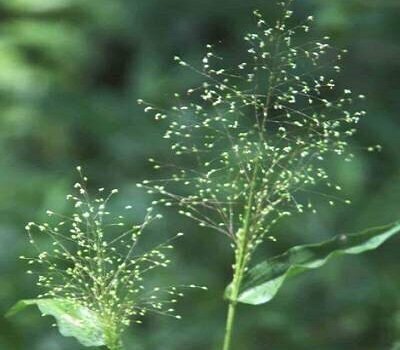 |
|||
| 347. Panicum paludosum Roxb. Family: POACEAE Flowering & Fruiting: August-November. Ecology: Occasional, in marshy places and shallow ditches. Description: Large grass. Stem creeping at base, rooting at nodes, leaf sheaths striate. Leaves linear tapering, margins scabridly serrulate. Spikelets erect, lanceolate. Glume iv pale brown, polished. IUCN Status: |
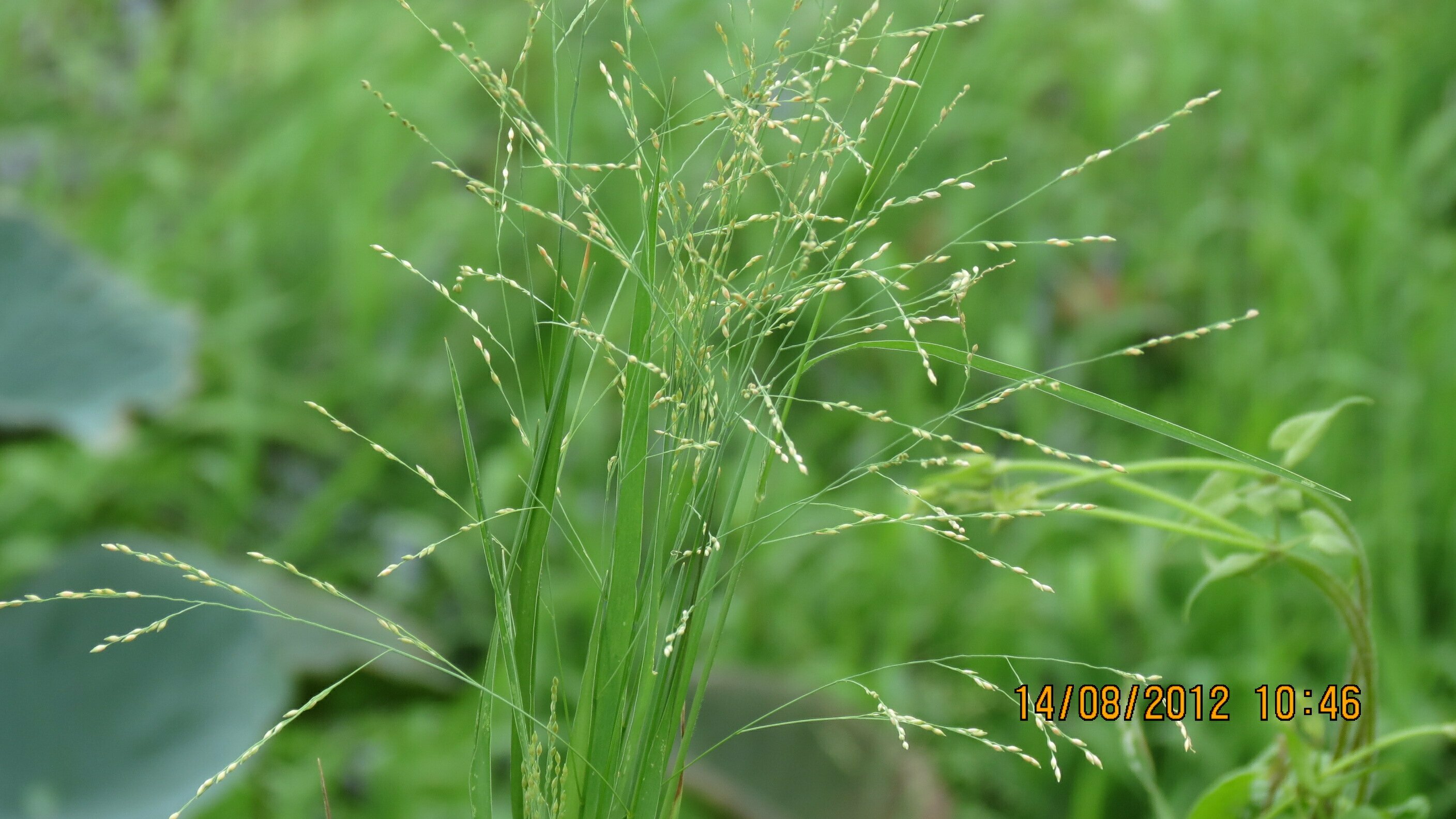 |
|||
| 348. Panicum psilopodium Trin. Family: POACEAE Flowering & Fruiting: August-November. Ecology: Common, in waste places at foot hills. Description: Caespitose, ascending grass. Leaves broadly linear, acute, hairy at base, sheath hairy. Spikelets narrowly elliptic, tip abruptly acute. Glumes 4, ovate or narrow-ellipsoid. IUCN Status: |
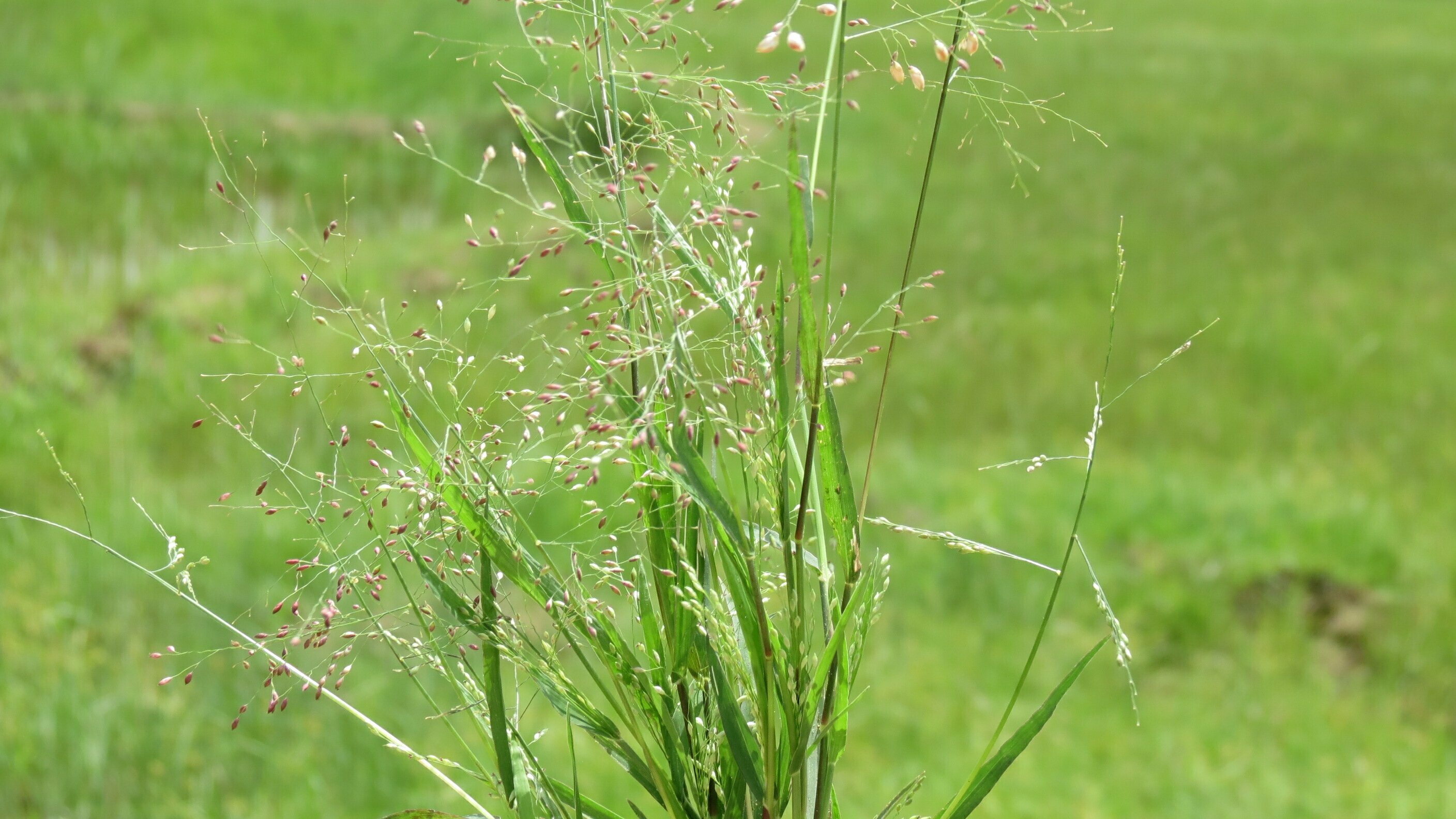 |
|||
| 349. Paspalidium flavidum (Retz.) Family: POACEAE Flowering & Fruiting: August-October. Ecology: Common, along stream banks. Description: Slender annuals: brnches decumbent, glabrous. Leaves bifarious, linear, subobtuse, glabrous, sheath mouth beard. Spikes sessile, secund. Spikelets sessile, ovate, 4-glumed, straw-coloured. IUCN Status: |
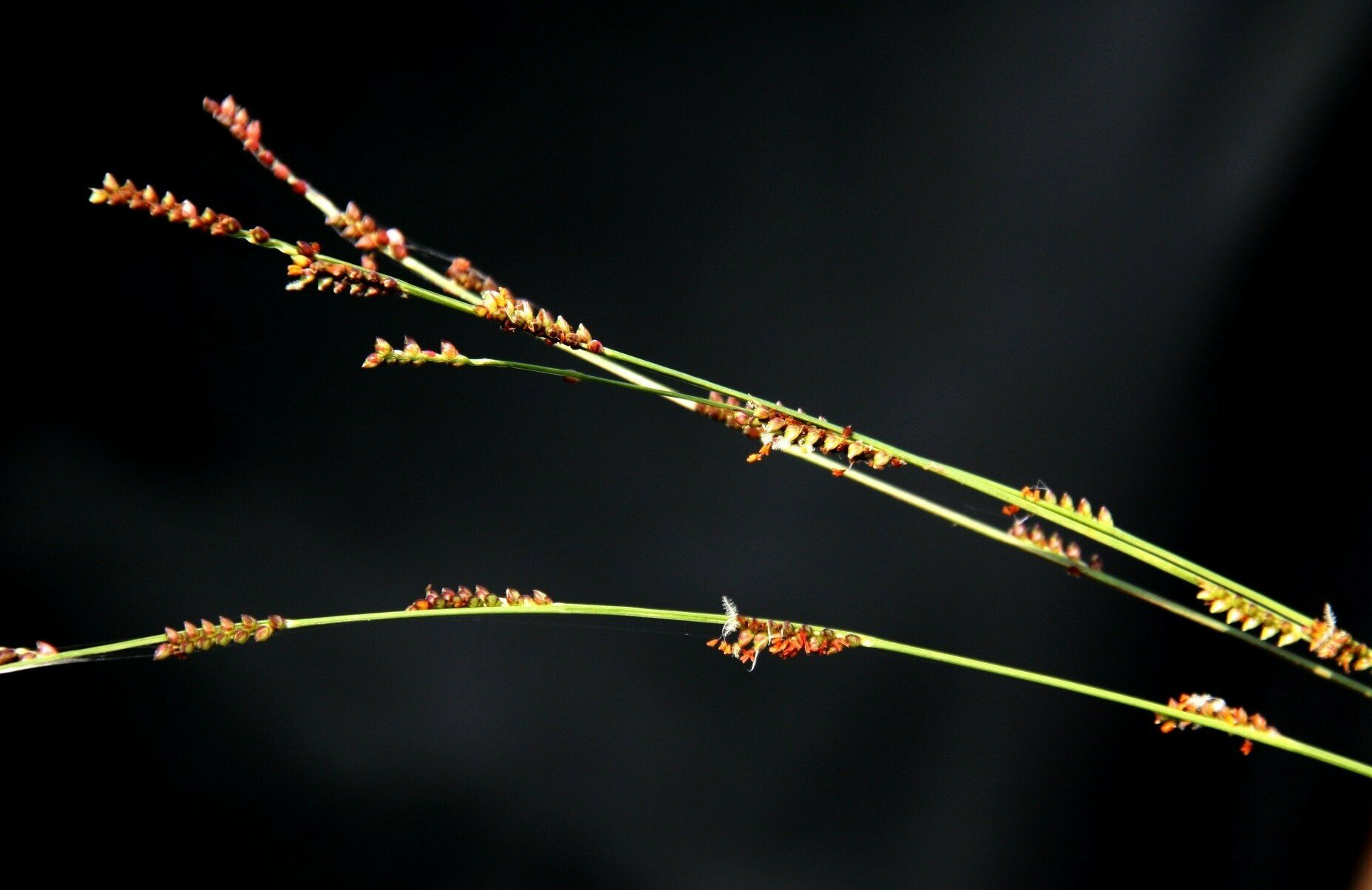 |
|||
| 350. Paspalum scrobiculatum Linn. Family: POACEAE Flowering & Fruiting: August-January. Ecology: Very common, in forest glades and fallow lands Description: Annual, caespitose herbs. Stem ascending. Leaves linear oblong, penninerved, sheath glabrous. Spikes subsessile, compact. Spikelets alternate, subsessile, 2-seriate, secund, ovate-oblong, apex obtuse, 3-glumed. Grains plano-convex. Medicinal Uses: It is an extremely drought and salt resistant wild millet attributed with a number of medicinal properties such as antidiabetic, tranquilising, hypolipidaemic, anti-rheumatic and wound-healing. IUCN Status: |
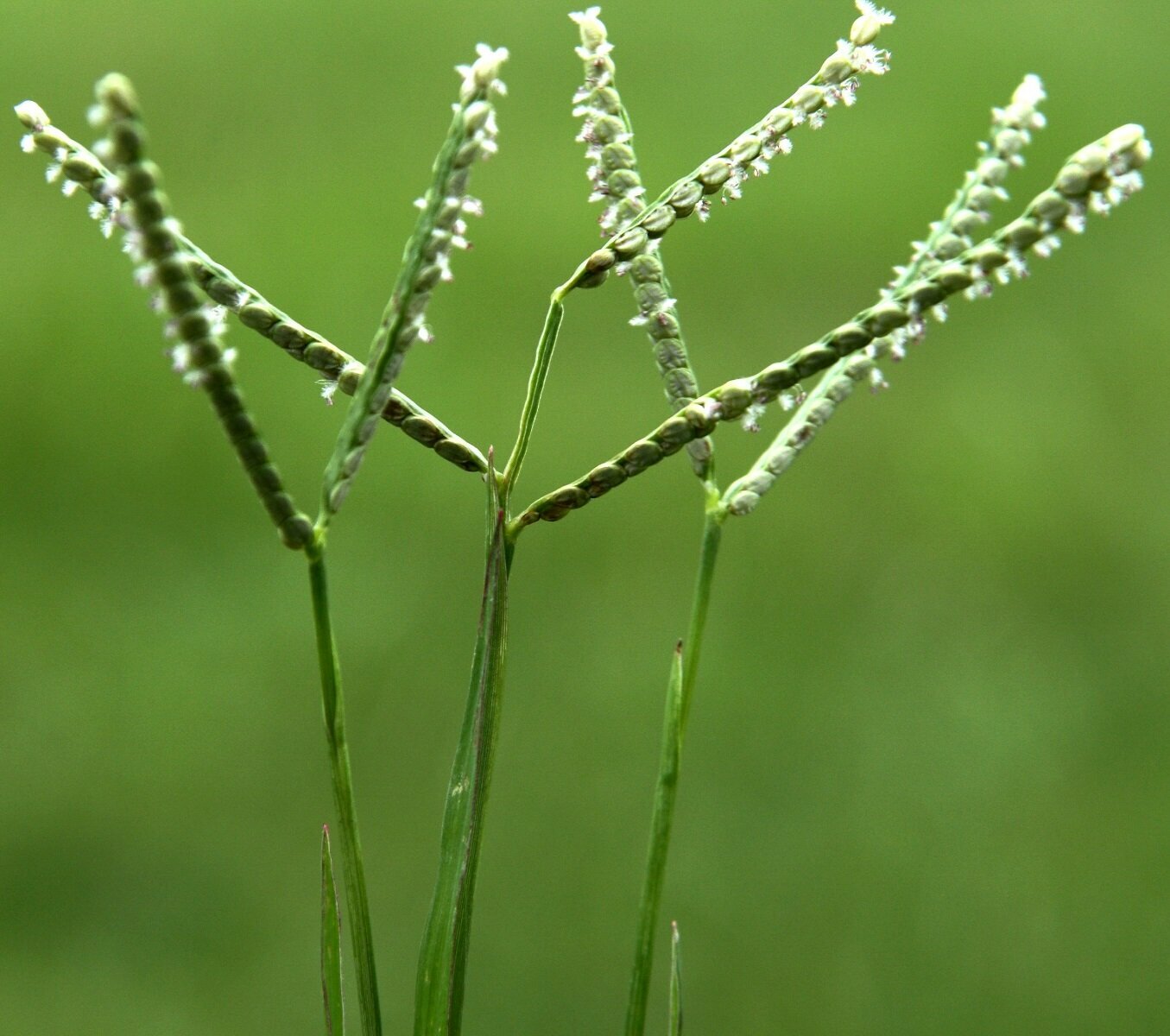 |
|||
| 351. Passiflora foetida L. Family: PASSIFLORACEAE Local Name: Pani Muchuri Description: Leaves usually 3-5-lobed to halfway, suborbicular -ovate, appressed glandular-pubescent, base cordate, margin subentire to ciliate, apex acute; stipules sub-reniform, deeply cleft into glandular processes. Medicinal Uses: Roots are pasted with soft soil (Benuwa mitti) and the paste is applied as plaster on bone fracture of domestic animals. The fresh, whole plant is boiled and the liquid used as a children’s anthelmintic, for intestinal nematodes and flatworms. The leaves are crushed in water and the solution drunk as an antidote to the bite of the Papuan Black Snake. The leaves, combined with those of Erythrina variegata, are mashed and their juice extracted then drunk in order to induce sleep or to treat sleeping disorders. An infusion of the leaves is used for healing wounds. Freshed young leaves are mashed and then rubbed on to the wound of a snake bite. The leaf contains substances that have possible antimicrobial activity. IUCN Status: |
 |
|||
| 352. Pavetta indica Linn. Family: RUBIACEAE Flowering & Fruiting: June – September & September – January Ecology: Abundant along moist valleys under shade in damp forests. Description: Large deciduous shrubs. Leaves elliptic or obovate, acute, base cuneate, glabrous; stipules in interpetiolar sheath. Flowers white, fragrant, in terminal panicles. Corolla salver-form. Style exserted. Fruit globose, black, l-seeded. Medicinal Uses: The entire plant used medicinally as a bitter tonic, diuretic, inflammation, rheumatism, jaundice, and ulcer. In the indigenous system of medicine, it is reported that the decoction of the leaves are used to relieve haemorrhoidal pain as a lotion for nose, analgesic, antipyretic, appetizer and the ulceration of mouth. IUCN Status: |
 |
|||
| 353. Pennisetum pedicellatum Trin. Family: POACEAE Flowering & Fruiting: August-January. Ecology: Gregarious in rocky places at high slopes. Description: Erect herbs. Stem tinged with red patches, woody at node Leaves lanceolate, flaccid. Raceme terminal, purplish. Spikelets solitary, subsessile, lanceolate, subtended by woody bristles, 4-glumed. Medicinal Uses: Pennisetum pedicellatum is an aggressive weed, used for treatment of wounds, pain related condition, eye and parasitic infections among the traditional healers in Kebbi State, Nigeria. Pedicellatum using tail flick method and excision wound models respectively in wistar albino rats. IUCN Status: |
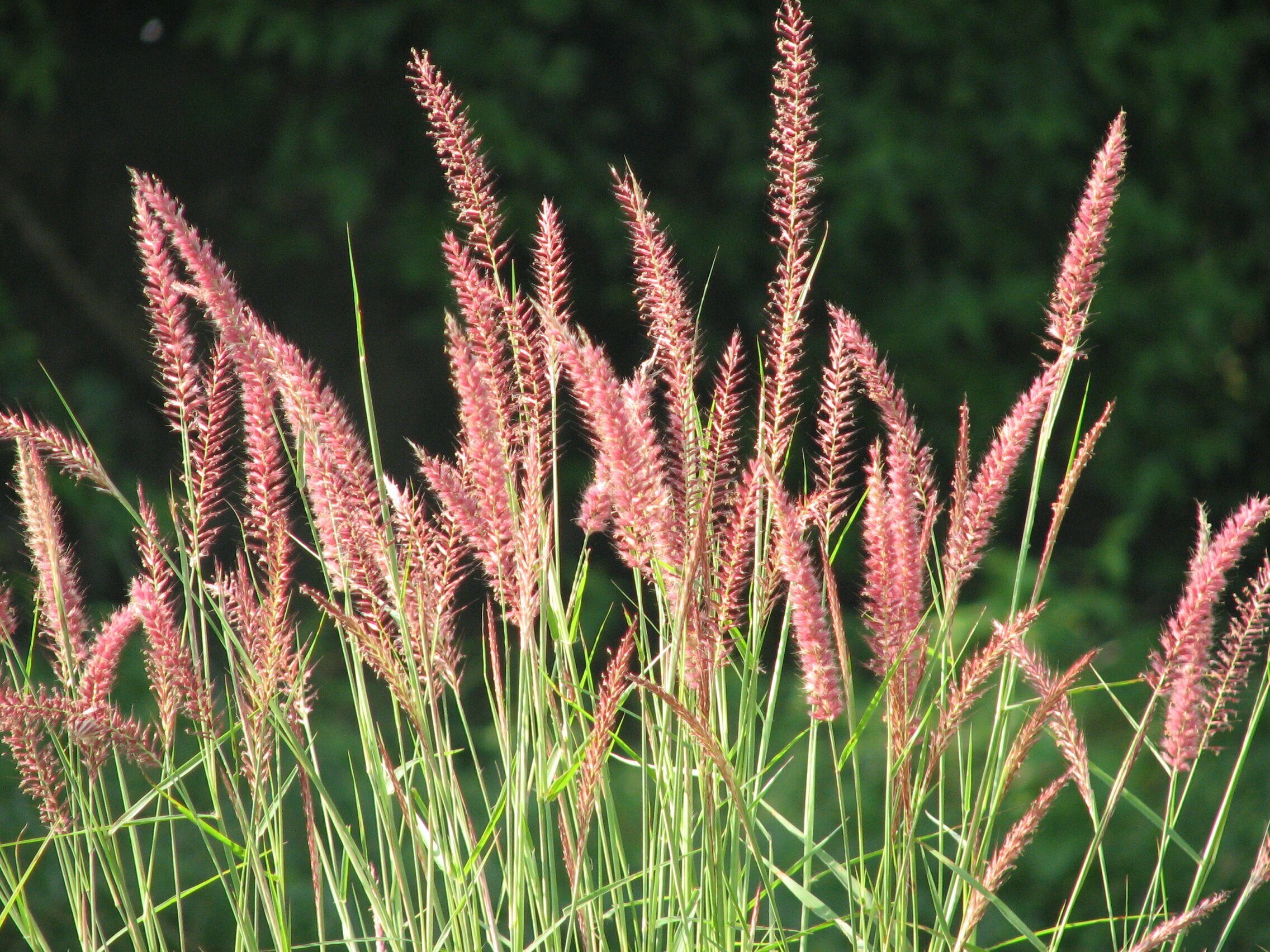 |
|||
| 354. Peperomia pellucida (Linn.) Family: PIPERACEAE Local Name: Ghusuri-pan Flowering & Fruiting: July-October. Ecology: Abundant on wet rock faces in shady places. Description: Stems weak. Leaves alternate, ovate-deltoid, acute pet iolate, pellucid-punctate. Flowers sessile, bisexual, sunk in rachis, in terminal and leaf-opposed spikes. Ovary l-celled. Fruit globose, 10 vertical ridged. Medicinal Uses: Peperomia pellucida has been used for treating abdominal pain, abscesses, acne, boils, colic, fatigue, gout, headache, renal disorders, and rheumatic joint pain. In Bolivia, Alteños Indians use the whole plant to stop hemorrhages. The roots are used to treat fevers and the aerial parts are used as dressing for wounds. IUCN Status: |
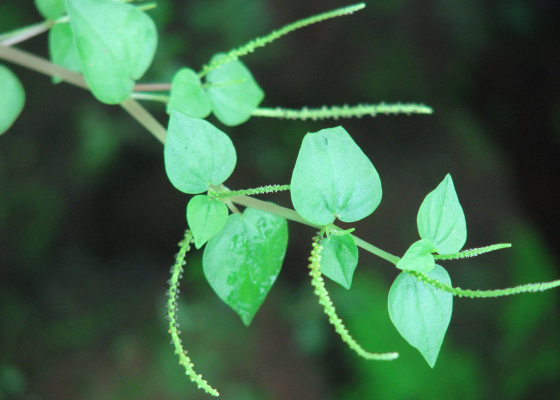 |
|||
| 355. Pergularia daemia (Forsk.) Family: ASCLEPIADACEAE Flowering & Fruiting: August-December & December-January Ecology: Common in village hedges and bushes. Description: Twining herbs. Stem pubescent: latex milky: foetid. Leaves deeply cordate, acuminate, membranous, ciliate, palmi-nerved. Flowers greenish-white, solitary, in umbellate cymes. Corona 2-seriate; inner spurred. Follicles lanceolate, recurved, echinate. Medicinal Uses: Pergularia daemia has a vast application in different folk medicine even in the ayurveda and are believed to increase defense against various diseases (Table 3). The whole plant is used as an anthelmintic, antiseptic, antivenin, emmenagogue, emetic expectorant and expectorant. IUCN Status: |
 |
|||
| 356. Peristrophe paniculata (Forssk.) Family: ACANTHACEAE Flowering & Fruiting: December – March Ecology: Common weed on foot hills. Description: Laxly paniculately branched erect herbs; stem 6-angled, nodes swollen. Leaves ovate, acuminate, hairy. Flowers rose-coloured, in lax panicles. Cymule bracts linear. Capsule oblong, compressed, beaked. Medicinal Uses: The herb possesses anti-bacterial properties (tuberculostatic), and has proven to be effective in treating sprain, snake poison, fever, bone fracture, cold and cough and for ear and eye treatments. It is also used in the treatment of skin diseases, and serves as an antidote for metabolic diseases. IUCN Status: |
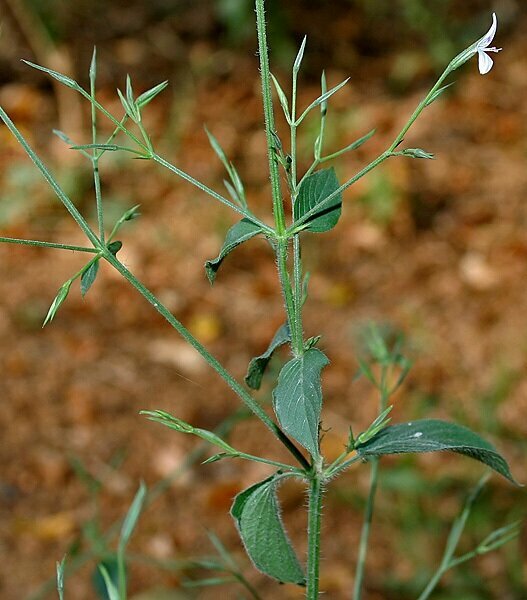 |
|||
| 357. Perotis indica (Linn.) Family: POACEAE Flowering & Fruiting: September-December Ecology: Abundant, in over-grazed sandy soil near foot hills. Description: Prostrate and ascending slender grass, stem leafy. Leaves ovate-lanceolate, base cordate often ciliate. Spikelets 2-awned, articulate, often purplish. Glumes 3, i and ii laterally compressed. IUCN Status: |
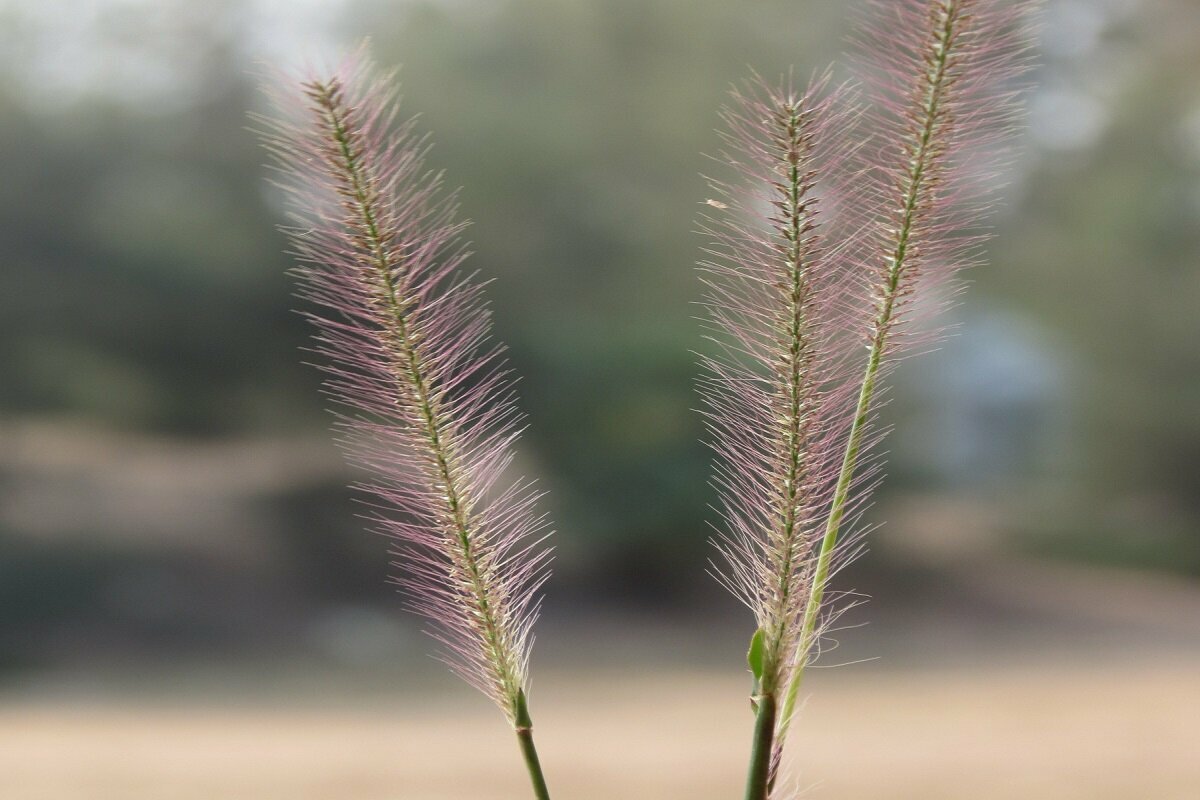 |
|||
| 358. Portulaca oleracea L. Family: PORTULACACEAE Local name: Local name: Lun Lunia Description: Leaves spiral or subopposite, often crowded at ends of branches, sessile or subsessile, obovate or spatulate to linear-oblong, cuneate or attenuate at base, rounded or truncate at apex, 1-3 x 0.2-1.5 cm; stipular hairs very few, inconspicuous, ca 1 mm long, caducous. Medicinal Uses: A tea made from the leaves is used in the treatment of stomach aches and headaches. The leaves are poulticed and applied to burns, both they and the plant juice are particularly effective in the treatment of skin diseases and insect stings. The leaf juice is applied to earaches, it is also said to alleviate caterpillar stings. The leaves can be harvested at any time before the plant flowers, they are used fresh or dried. This remedy is not given to pregnant women or to patients with digestive problems. The seeds are tonic and vermifuge. They are prescribed for dyspepsia and opacities of the cornea. The fresh juice is used in the treatment of strangury, coughs, sores etc. IUCN Status: |
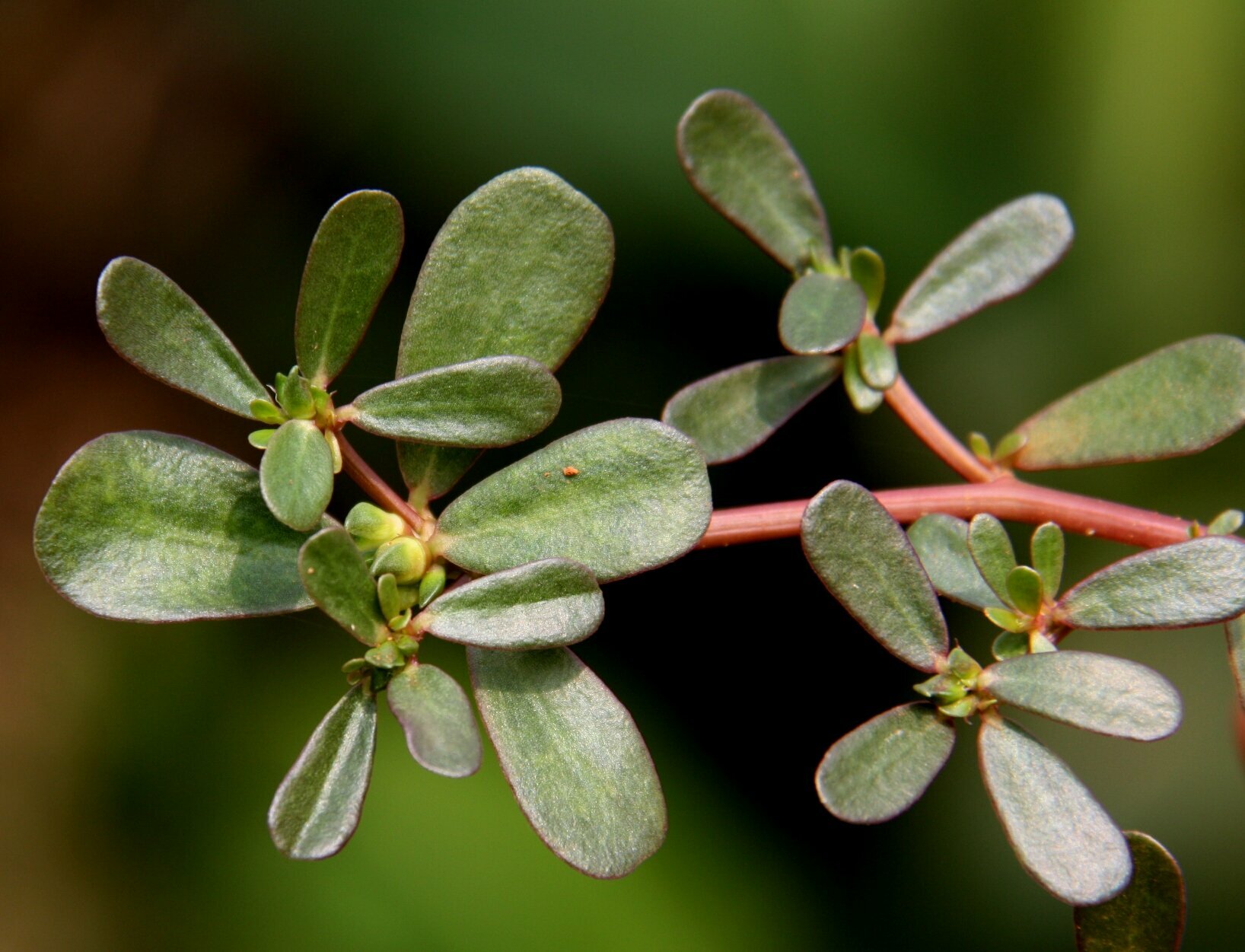 |
|||
| 359. Phoenix acauli Roxb. Family: ARECACEASE Local name: Khajur, Khajuri Koli Flowering & Fruiting: April-June Ecology: Abundant on lateritic hill plateau among grasses. Description: Stem thick, ovoid, bulbous, covered with persistent laef bases. Leaves pinnate; leaflets stiff, fasccled, lowest reduced to spines, base ecurrent. Flowers deciduous, yellowish, in branched interfoliar spadices. Drupe oblong, red finally black. IUCN Status: |
 |
|||
| 360. Phyllanthus acidus L. Family: PHYLLANTHACEAE Local name: Sir Awala Description: The fruits are numerous, oblate, with 6 to 8 ribs, and are densely clustered. They are pale yellow or white, waxy, crisp, juicy and very sour. About 4 to 6 seeds are contained in a stone at the center of each fruit. Medicinal Uses: An infusion of the root is taken to alleviate asthma. An extract from the root is used to cure skin diseases especially to bring relief from itching. The bark is heated with coconut oil and spread on eruptions on feet and hands. A decoction of the bark is used to treat bronchial catarrh. The fruit is used as a laxative. They are also taken as a liver tonic to enrich the blood. The juice of the fruit is instilled in the eyes to treat eye-troubles. IUCN Status: |
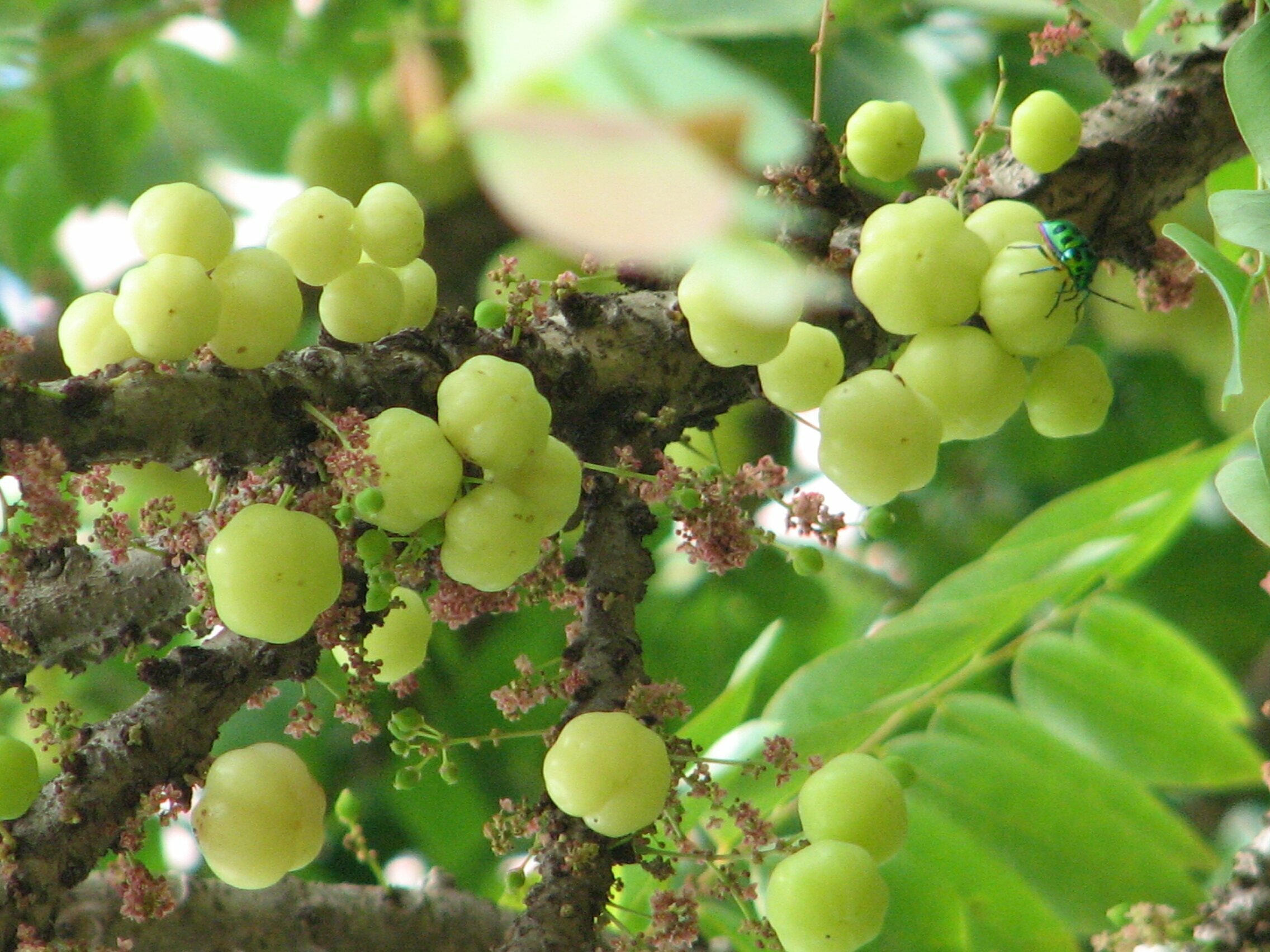 |
|||
| 361. Phyllanthus embelica L. Family: PHYLLANTHACEAE Local name: Aanwala Description: Deciduous trees, to 15 m high, bark grey-brown, rough, irregularly flaking; blaze pink-red. Fruit a capsule 1.5-2.5 cm across, subglobose, dehiscing into 6 cocci, disc enlarged to give an appearance of fleshy yellowish-green, indehiscent berry. Medicinal Uses: Fruits are eaten and used for making a well-known Ayurvedic drug ‘Trifala’. The juice of the fruit is also given in order to strengthen the pancreas of diabetics, as well as in the treatment of eye problems, joint pain, diarrhoea and dysentery. IUCN Status: |
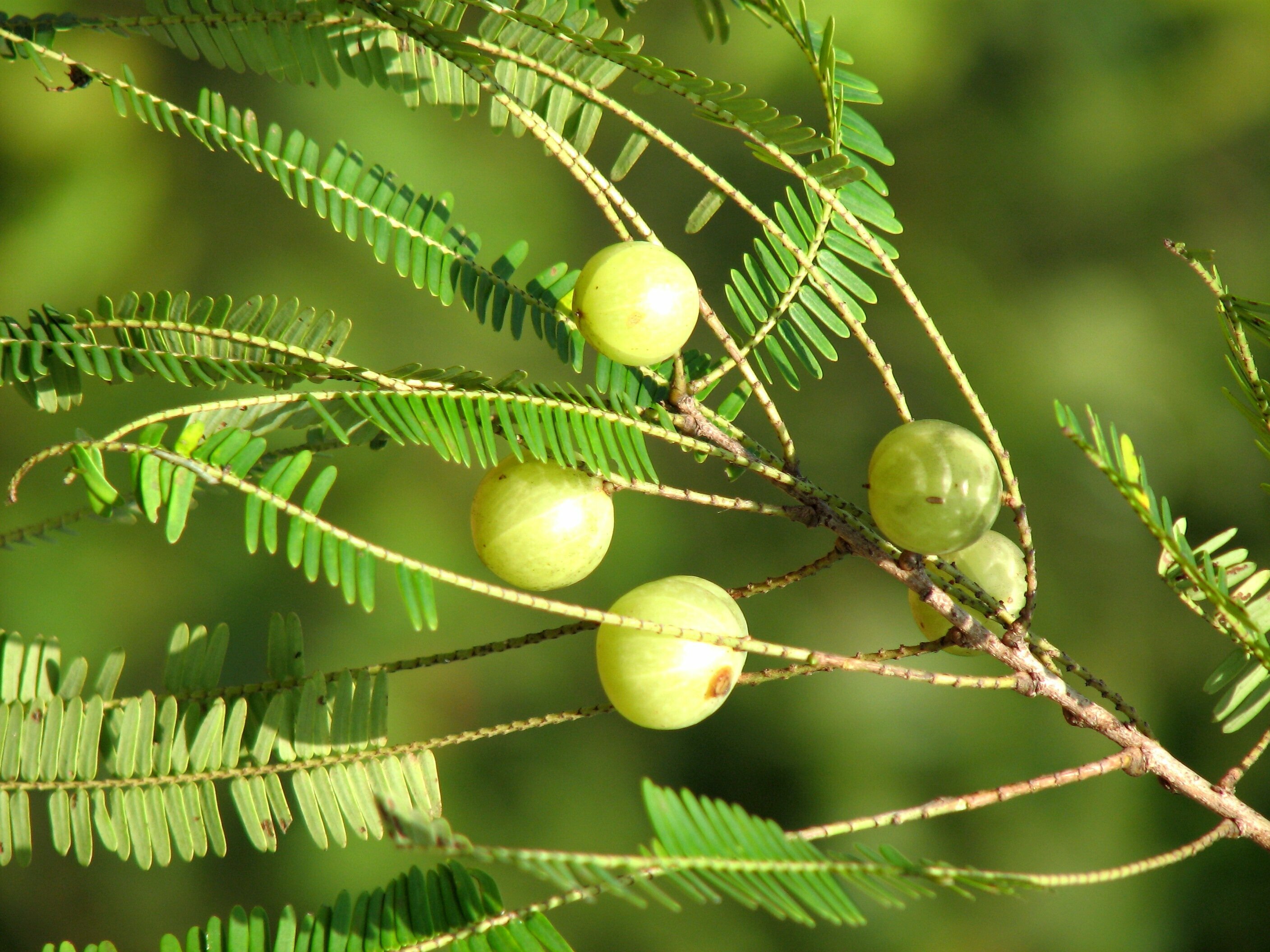 |
|||
| 362. Phyllanthus fraternus Family: PHYLLANTHACEAE Local name: Badi Aawala, Rakta Badi-Awada, Swet Badi Awada Description: It is an erect, annual plant growing up to 45cm, occasionally to 60 cm. Medicinal Uses: Whole plant is pasted with leaves (07) of Abutilon idica (Ped-pedika), black piper (21), root of Lawsonia innermis (Manjista) and water obtained after washing rice (Arva Chawal Dhuwa Pani) and soaked into water for 03 hours and given to patient suffering from jaundice for 3-7 days. Consumption of liquor is totally restricted during the treatment. Whole plant is extracted and given in the treatment of Blood pressure. The fruits are used in the treatment of ulcers, wounds, sores, scabies, ringworm and other skin problems. A decoction of roots and leaves is used to treat malaria. Powdered roots and leaves are made into a poultice with rice-water to treat oedema and ulcers. IUCN Status: |
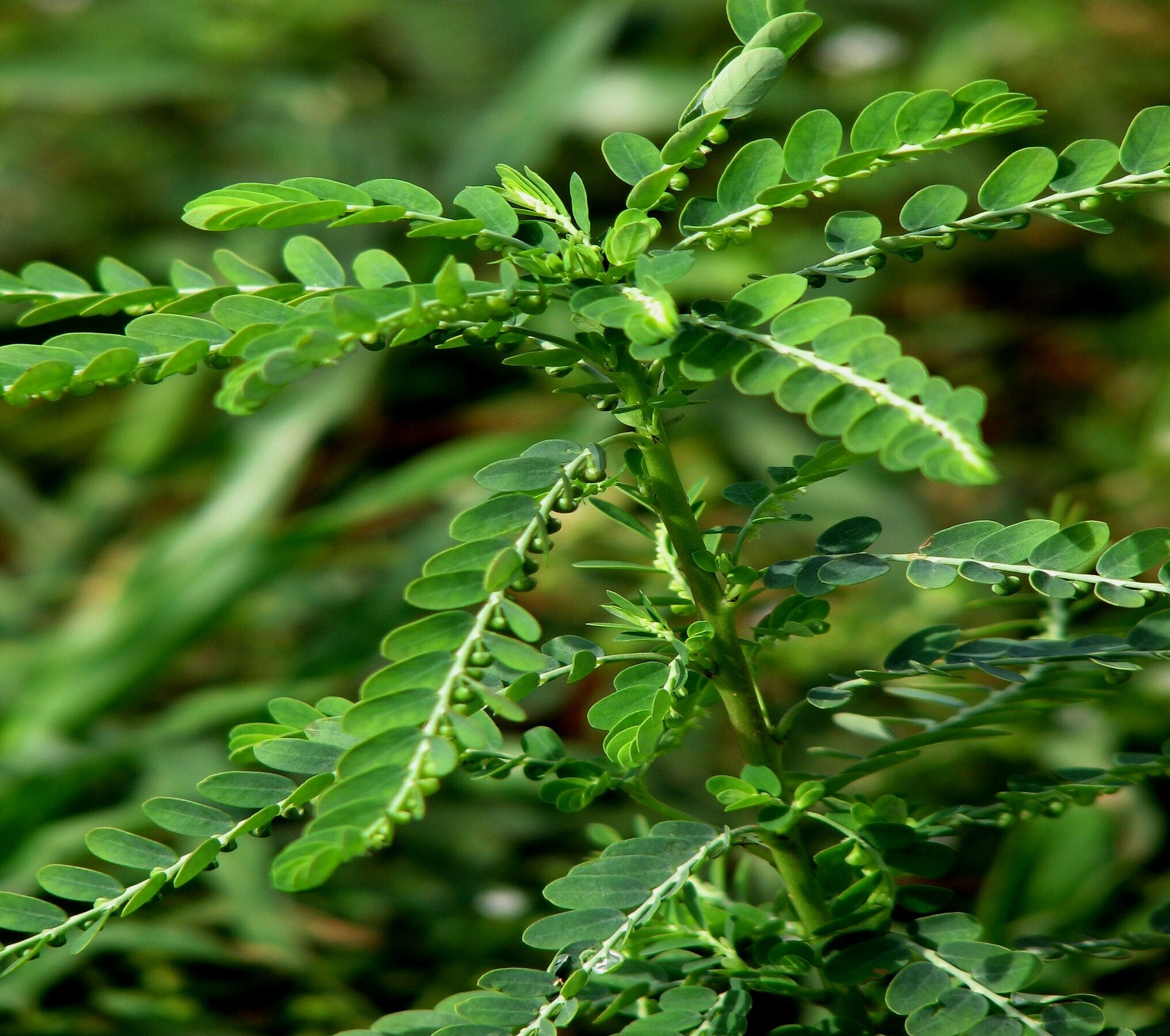 |
|||
| 363. Phyllanthus reticulatus Family: PHYLLANTHACEAE Flowering & Fruiting: March-June. Ecology: Frequent, in hedges along nalas. Description: Sarmentose shrubs. Leaves elliptic or oblong, rounded both ends, pale benat, stipulate. Flowers green or purple, campanulate; & female subsimilar on slender pedicels. Berries black, 8-10 seeded. Medicinal Uses: Fresh leaf juice is used for muscle spasms. Dried bark is used for dysmenorrhea, diarrhea with anal bleeding. Dried root bark is used for promoting fertility. India: Dried bark and leaves decoction are as a diuretic, alterative and for cooling effect and also used for smallpox. IUCN Status: |
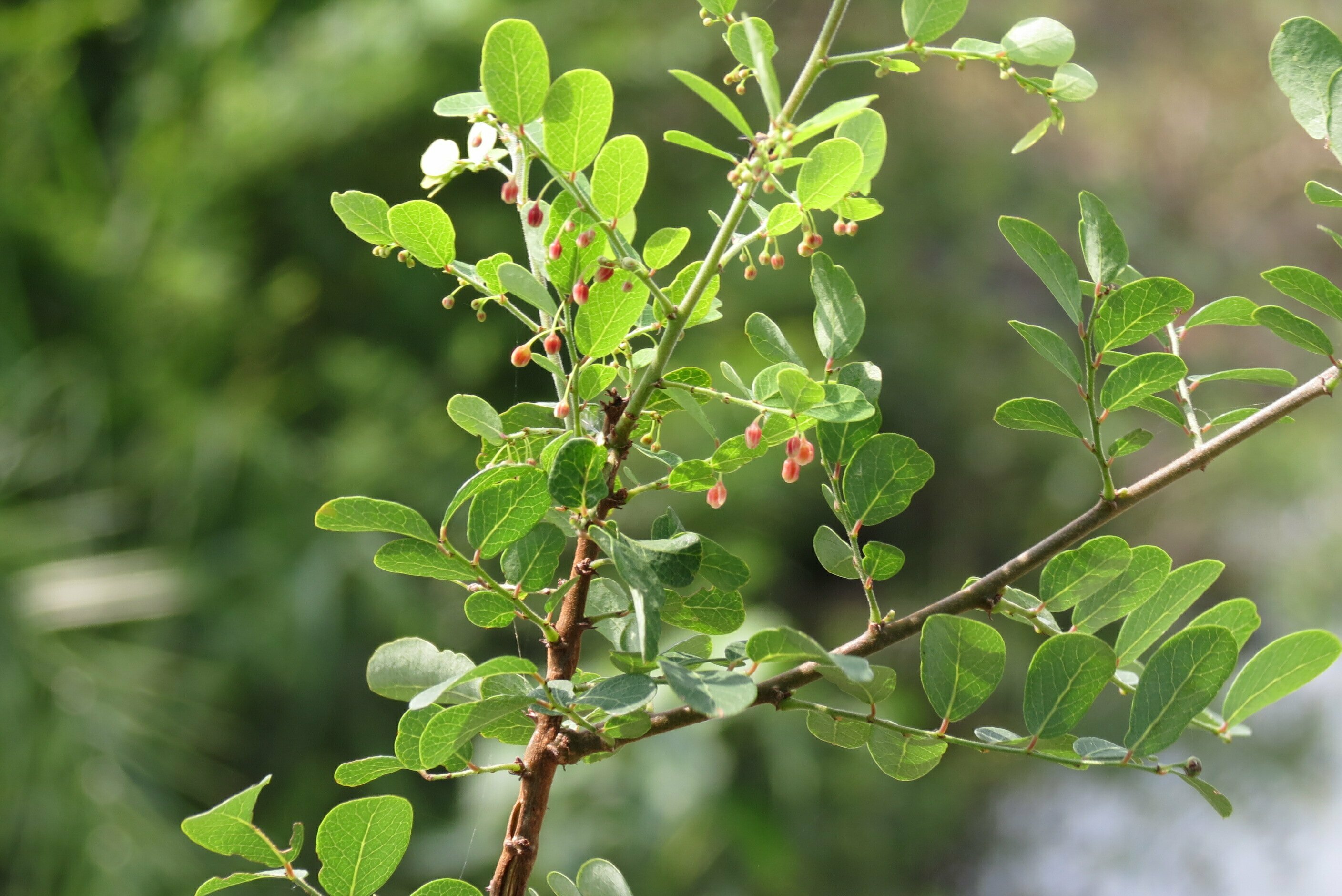 |
|||
| 364. Phyllanthus urinaria Family: PHYLLANTHACEAE Flowering & Fruiting: July-December. Ecology: Abundant, in moist places during rains. Description: Suffruticose annuals; branchlets leafy. Leaves small, distichous, linear-oblong, apiculate, glaucous beneath. Flowers minute, reddish, axillary, but secund and appearing in a continuous row on undersurface of branchlets. Capsule depressed, globose. Medicinal Uses: Phyllanthus urinaria (L.) is an annual perennial herbal species found in tropical Asia, America, China, and the Indian Ocean islands.Urinaria is used in folk medicine as a cure to treat jaundice, diabetes, malaria, and liver diseases. IUCN Status: |
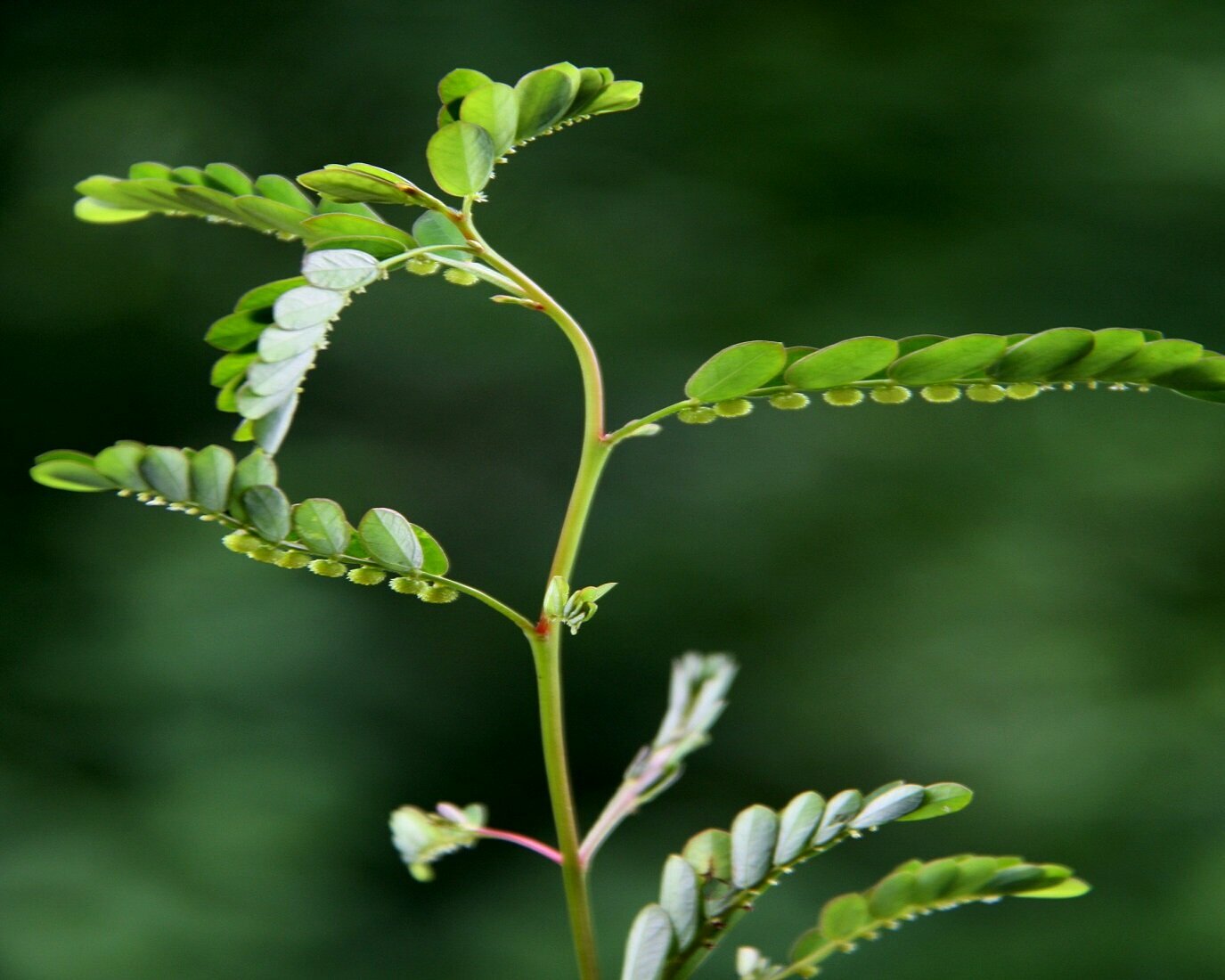 |
|||
| 365. Phyllanthus virgatus Forst. Family: PHYLLANTHACEAE Flowering & Fruiting: August-December. Ecology: Very common in open waste places & barren hills. Description: Herbs; branches slender. Leaves linear-oblong, subsessile, secund or distichous. Male flowers minute, about 2, shortly pedicelled; female l, long-pedicelled. Capsules depressed, globose, smooth. Medicinal Uses: The plant extracts have been used since ancient times, for treating hypertension, diabetes, hepatic, urinary, and sexual disorders, and other common ailments. Modern day scientific investigations have now confirmed pharmacognostic properties of Phyllanthus herbs. IUCN Status: |
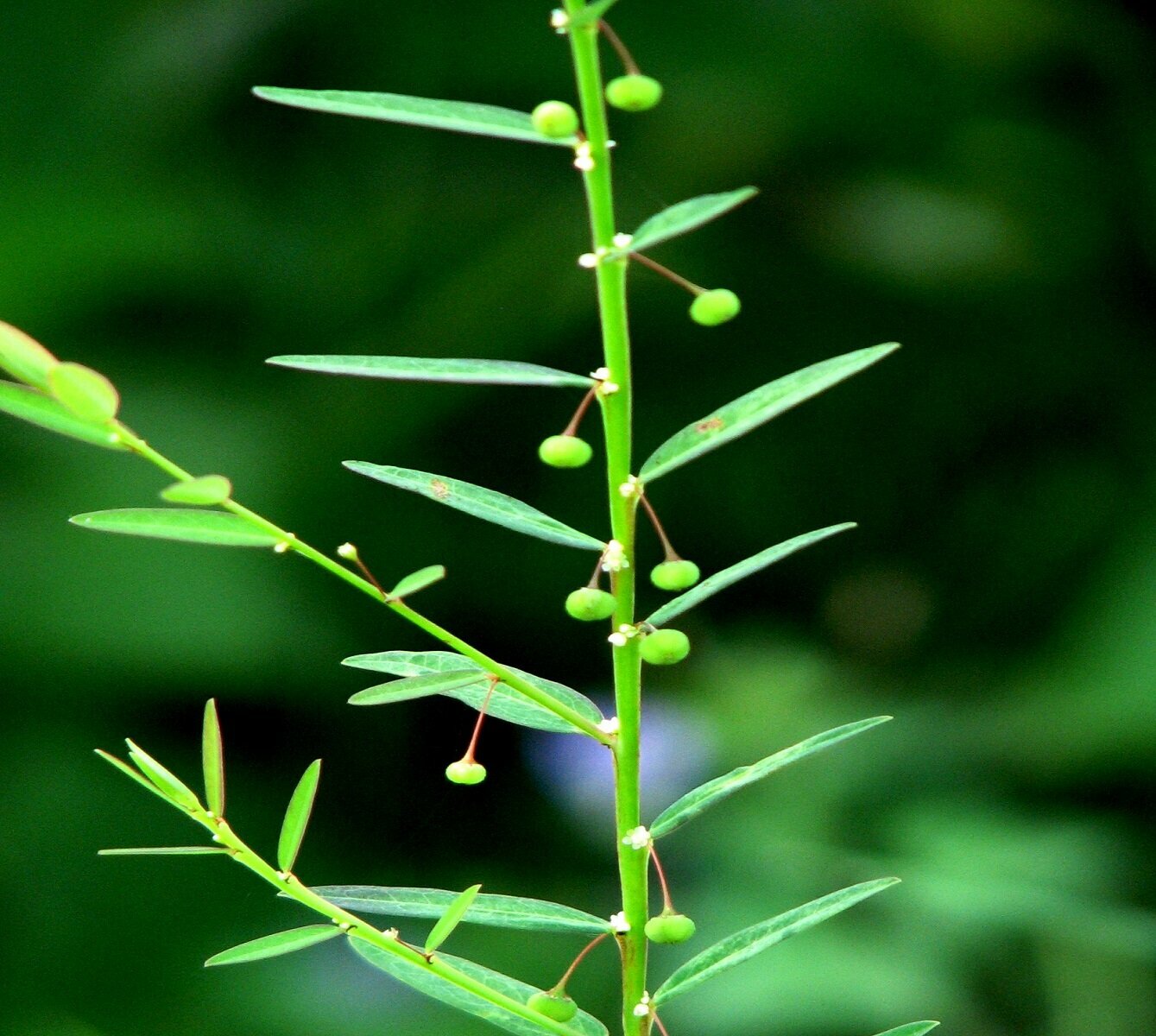 |
|||
| 366. Phyllodium pulchellum L. Family: FABACEAE Local name: Krishna Parni Description: It is a perennial plant with slender, branching stems that become more or less woody. It can grow 50 – 250 cm tall. Medicinal Uses: Roots are used in the preparation of Ayurvedic drug ‘Dasmul’. It is used for the treatment of gout (Vat) and spermatorrhoea. The roots and leaves are used for reducing fever and as an antiphlogistic and diuretic. The leaves are applied externally to treat pockmarks and ulcers. A decoction of the bark is considered an antidote to poisoning, and is also used in the treatment of haemorrhages, diarrhoea, and to cure eye diseases. The flowers are used in the treatment of biliousness. IUCN Status: |
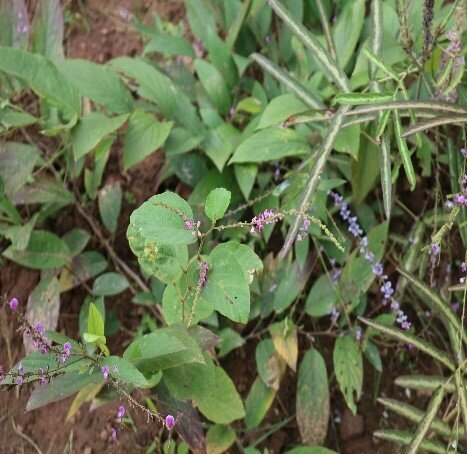 |
|||
| 367. Physalis minima Linn. Family: SOLANACEAE Flowering & Fruiting: July-December Ecology: A very common weed of rainy season. Description: Erect herbs. Leaves ovate, membranous, toothed, sinuate or lobulate, acuminate. Flowers solitary, axillary, small, yellow. Calyx 5-fid, enlarged and bladder-like enclosing the fruit. Corolla basally spotted. Fruit baccate. Medicinal Uses: The fruit has a pleasant cherry-tomato like flavor when fully ripe. Often used to relieve pain (analgesic action). In a study the whole plant extract has shown anti-inflammatory and analgesic action in rats. IUCN Status: |
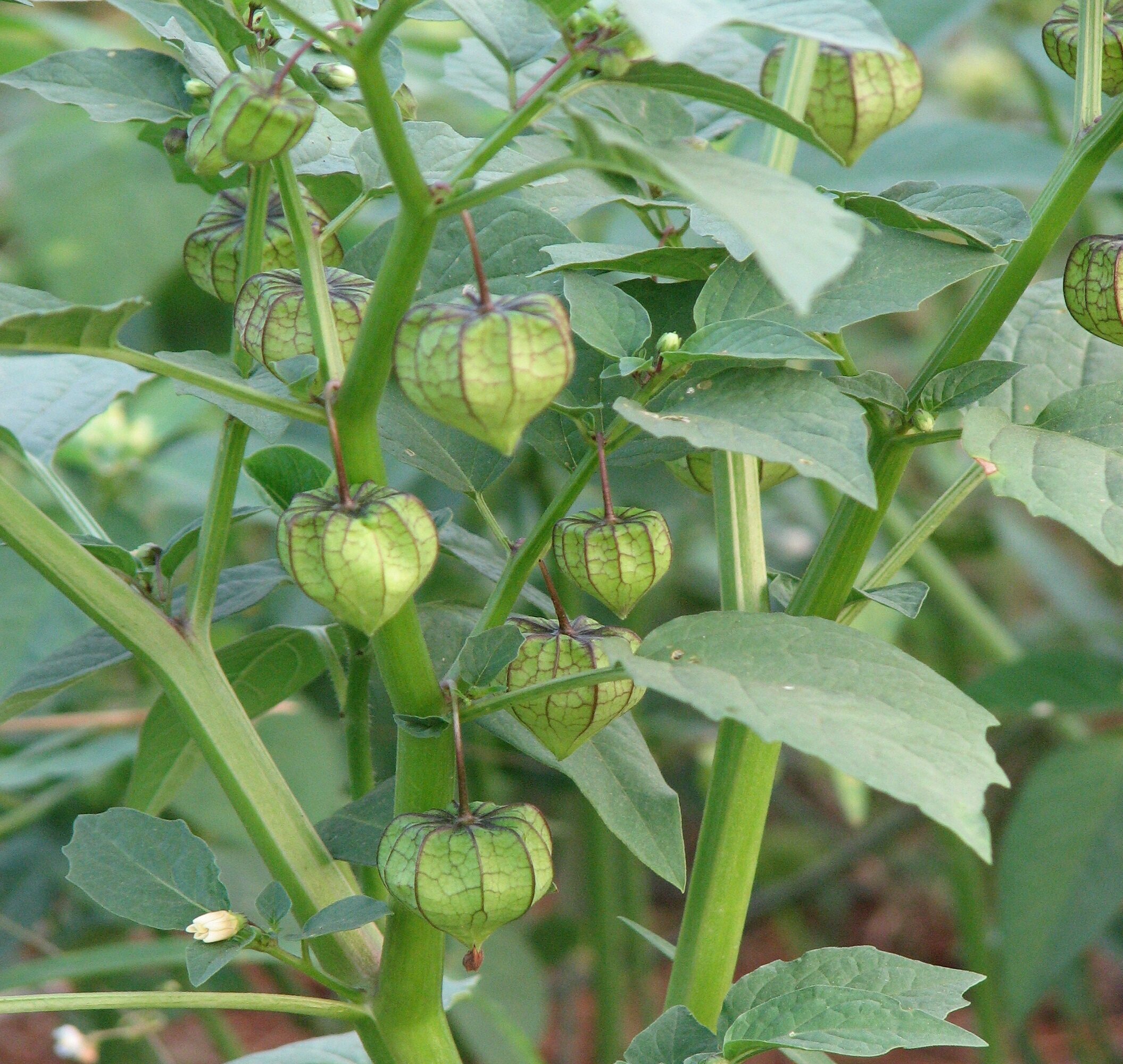 |
|||
| 368. Piper Longum L. Family: PIPERACEAE Local Name: Pipali Description: It is a perennial long, slender, climber with woody roots, creeping and jointed stem with fleshy fruits. Leaves arrangement is alternate, ovate shaped, apex acute to acuminate with entire margins. Male spikes greenish-yellow, cylindrical, fleshy with minute flowers, female spikes, erect, yellow. Medicinal Uses: Dried black fruits are taken with honey in fever, cough, cold and nose running. Fruits are pasted with turmeric powder and applied on wounds (Alti) on head of children. Fruits of Ban Pipla are also given in the treatment of fever gout and weakness of nerves. IUCN Status: |
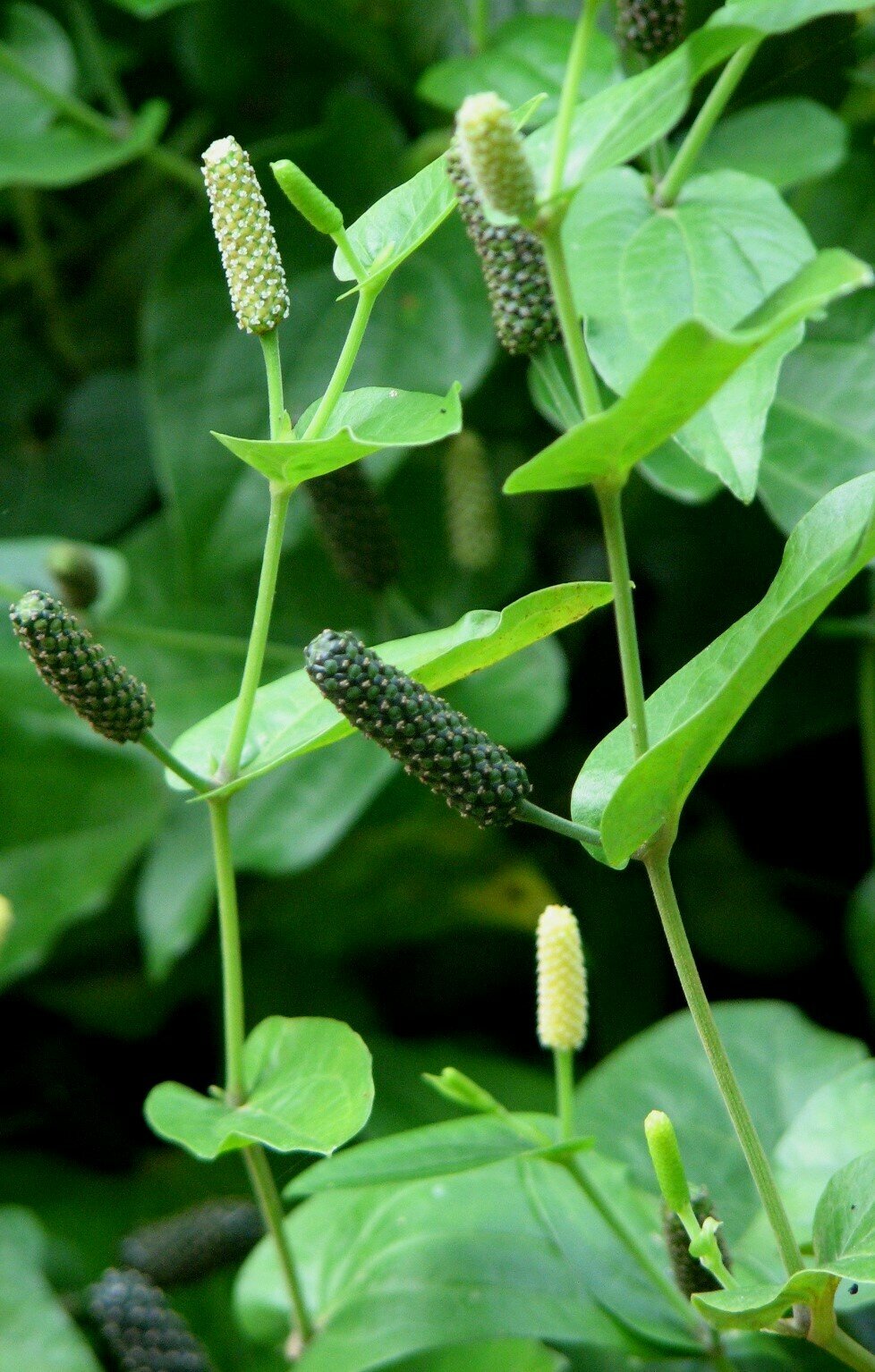 |
|||
| 369. Pithecellobium dulce (Roxb.) Family: FABACEAE Ecology: Occasional, as hedges; often naturalised Flowering & Fruiting: January-March & April-June Medicinal Uses: Pithecellobium dulce has been utilized by antiquated individuals in treating various sorts of ailments due to its restorative properties. The bark and pulp being astringent and haemostatic are used to treat gum ailments, toothache and bleeding. The leaves can be used as a plaster to allay pain even from venereal sores, and can relieve convulsions. A paste made from the leaves is applied externally to treat muscular swellings caused by some inflammations. The leaves together with salt can cure indigestion and, in larger doses, can also induce abortion. The bark of the root is a good remedy for diarrhoea and dysentery. The bark is used medicinally as a febrifuge. The fruit pulp is taken orally to stop blood flow in case of haemoptysis. The seed juice is inhaled into the nostrils against chest congestion and pulverised seeds are ingested for internal ulcers. IUCN Status: |
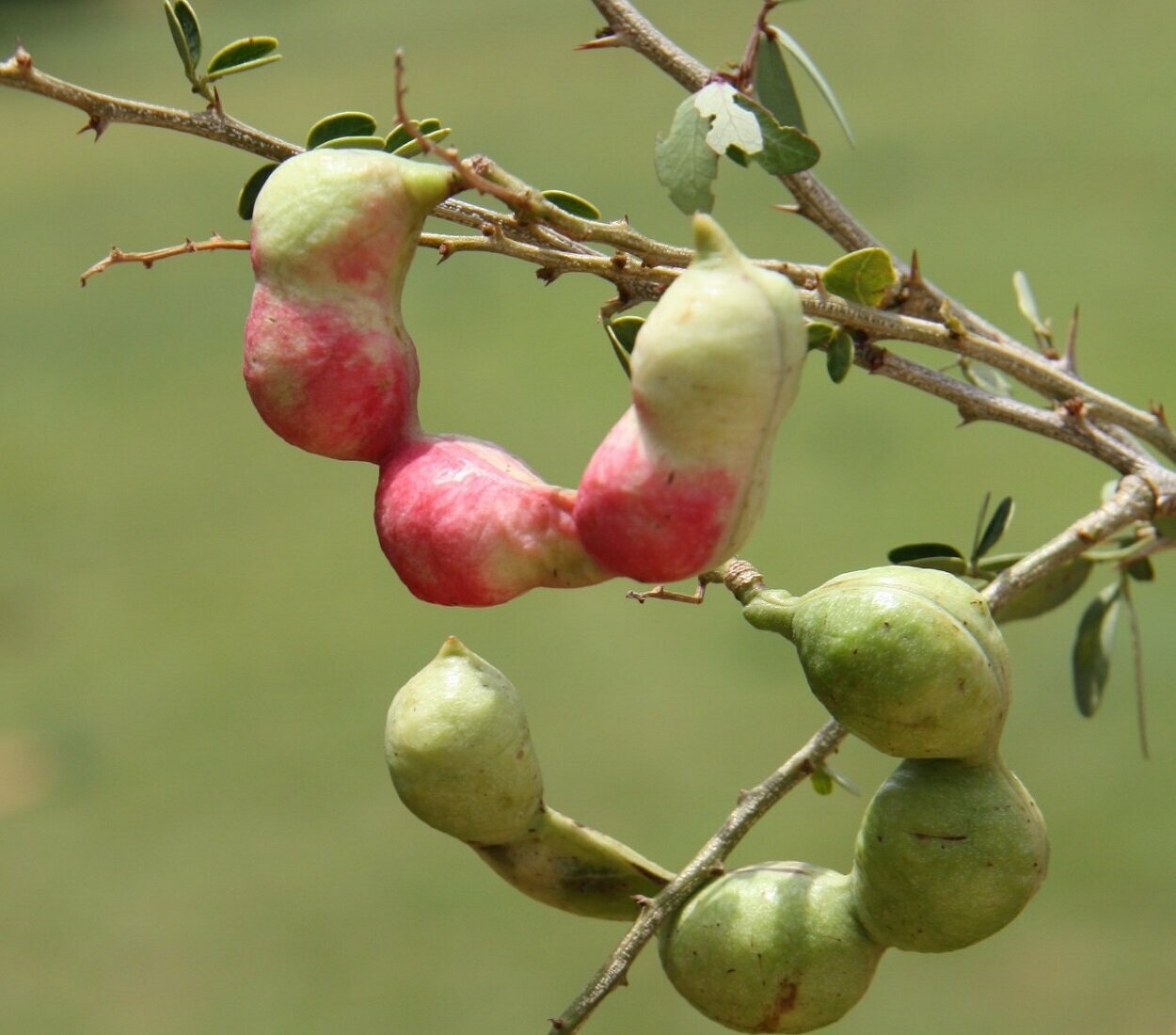 |
|||
| 370. Plectranthus amboinicus (Lour.) Family: LAMICAEAE Local name: Rukuna Hata Pachha Ecology: Occasional in hedges and rock crevices. Flowering & Fruiting: November – December & December – February Description: It is an attractive, evergreen perennial plant with lemon-scented, thick, succulent, sprawling stems and fleshy leaves; it can grow 50 – 100cm tall. Medicinal Uses: Fresh leaves are pasted with ginger, salt, sugar, pepper, chilies and made chutney. It (10gm) is taken thrice a day in empty stomach during acidity and burning sensation (Agnimanja/Jalan). Fresh leaves are pasted with black pepper and given twice a day in gastric, acidity, vomiting and constipation and as appetizer. The leaves are taken internally in the treatment of a range of digestive problems such as dyspepsia, indigestion, diarrhoea. The leaves are used to treat headaches, inflammations, skin allergies, wounds, burns, sores and ulcers. IUCN Status: |
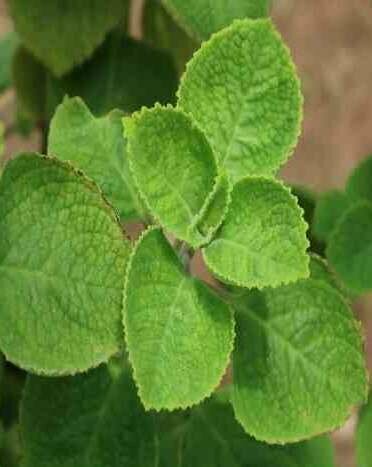 |
|||
| 371. Pluchea lanceolata DC. Family: ASTERACEAE Local name: Rasna Ecology: Occasional in hedges and rock crevices. Flowering & Fruiting: November – December & December – February Description: This plant is an erect allelopathic, perennial under shrub growing up to 30-100 cm high. Stem is cylindrical, 2-3 mm in diameter. Outer surface is whitish green, having branched and branches are pubescent. Medicinal Uses: Roots or all parts (Panchang) extract is given twice a day for 2-3 months with honey or milk in the treatment of debility of sperms. IUCN Status: |
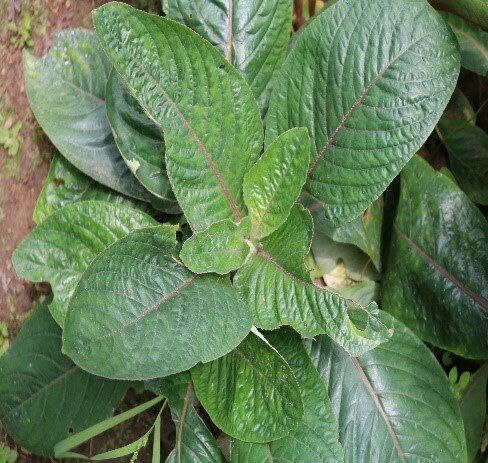 |
|||
| 372. Plumbago zeylanica Linn. Family: PLUMBAGINACEAE Local name: Dhala chitapanu, chintamula Ecology: Occasional in hedges and rock crevices. Flowering & Fruiting: November – December & December – February Description: Straggling herbs. Stem striate, fistular. Leaves sessile, ovate or elliptic. Flowers white in terminal lax spike. Corolla tube slender. Capsule oblong. Medicinal Uses: Plumbago zeylanica is very popular throughout Africa and Asia as a remedy for skin diseases, infections and intestinal worms, especially leprosy, scabies, ringworm, dermatitis, acne, sores, ulcers of the leg, haemorrhoids and hookworm. IUCN Status: |
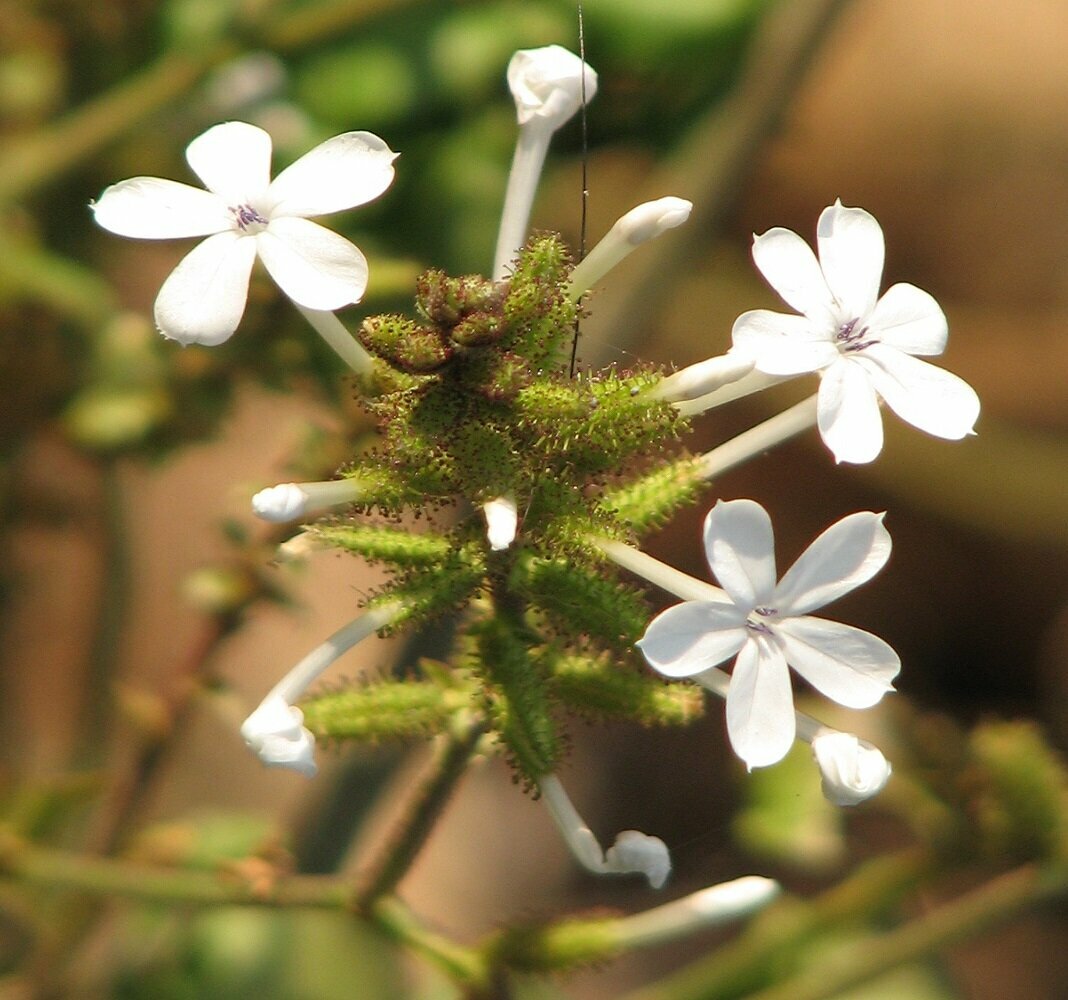 |
|||
| 373. Polyalthia longifolia (Sonner.) Family: ANNONACEAE Local name: Devdaru Ecology: Very frequent planted as avenue trees. Flowering & Fruiting: March – May & June – August Description: Evergreen trees. Leaves glabrous, shining above, apex aute. Flowers bracteate, in short peduncled cyme. Petals greenish. Berry globose. Medicinal Uses: The plant parts used for the treatment of fever, skin diseases, diabetes, hypertension, and intestinal parasites. The dried stem bark powder is given with warm water orally for the treatment of gout. IUCN Status: |
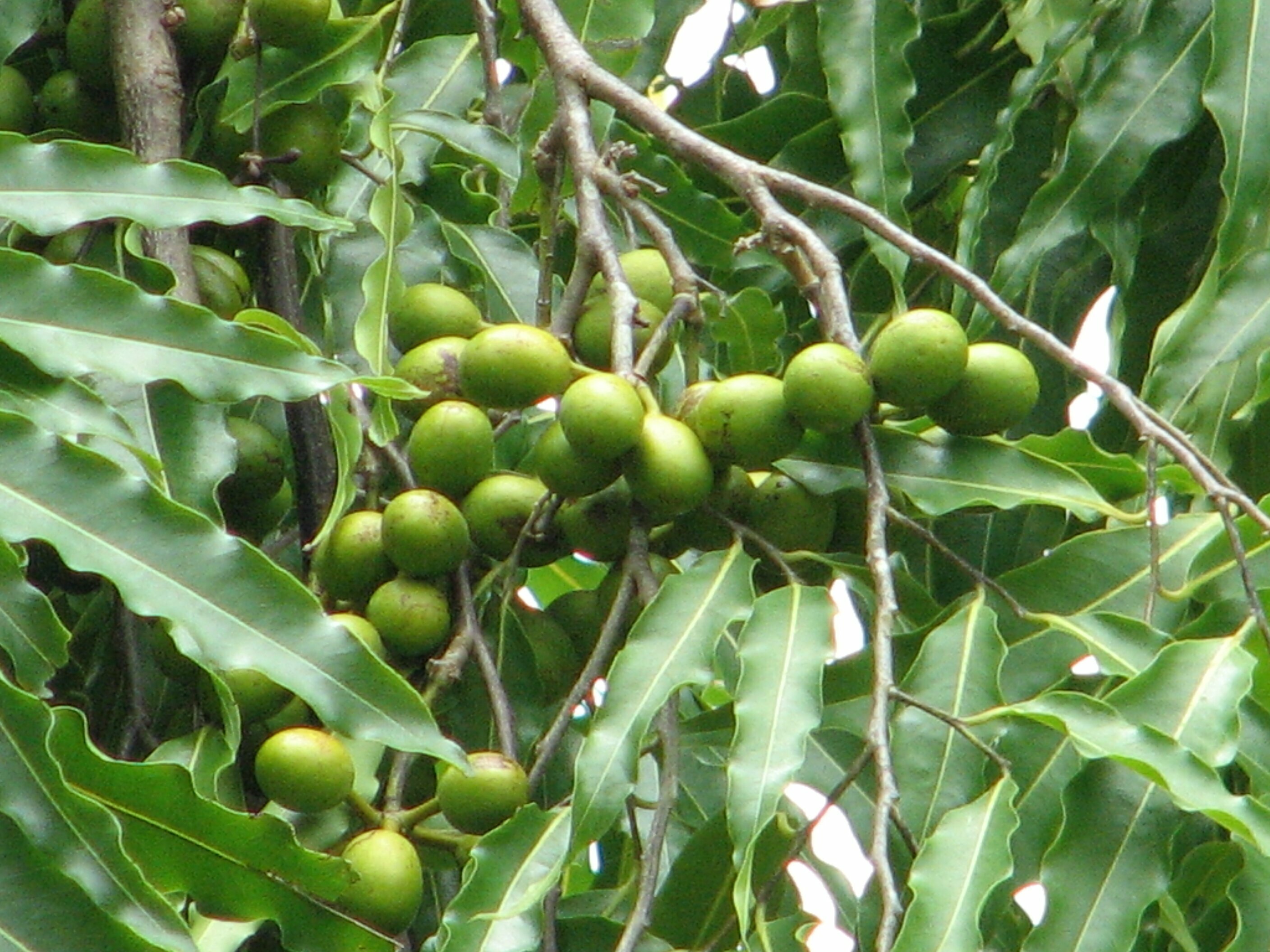 |
|||
| 374. Polygala arvensis Willd. Family: POLYGONACEAE Ecology: Frequent in open scrubs and grassy lands. Flowering & Fruiting: July-September. Description: Erect thinly pubescent annual herbs. Leaves sessile obovate, obtuse, mucronate, penninerved. Flowers yellow, in few flowered lateral racemes. Wing sepals obliquely ovate or falcate. Peels hooked, crested. Capsule compressed, didymous. Seeds ellipsoid, blackish: caruncle 3-lobed. Medicinal Uses: Infusion of the leaves is prescribed in asthma, chronic bronchitis and catarrhal affections. IUCN Status: |
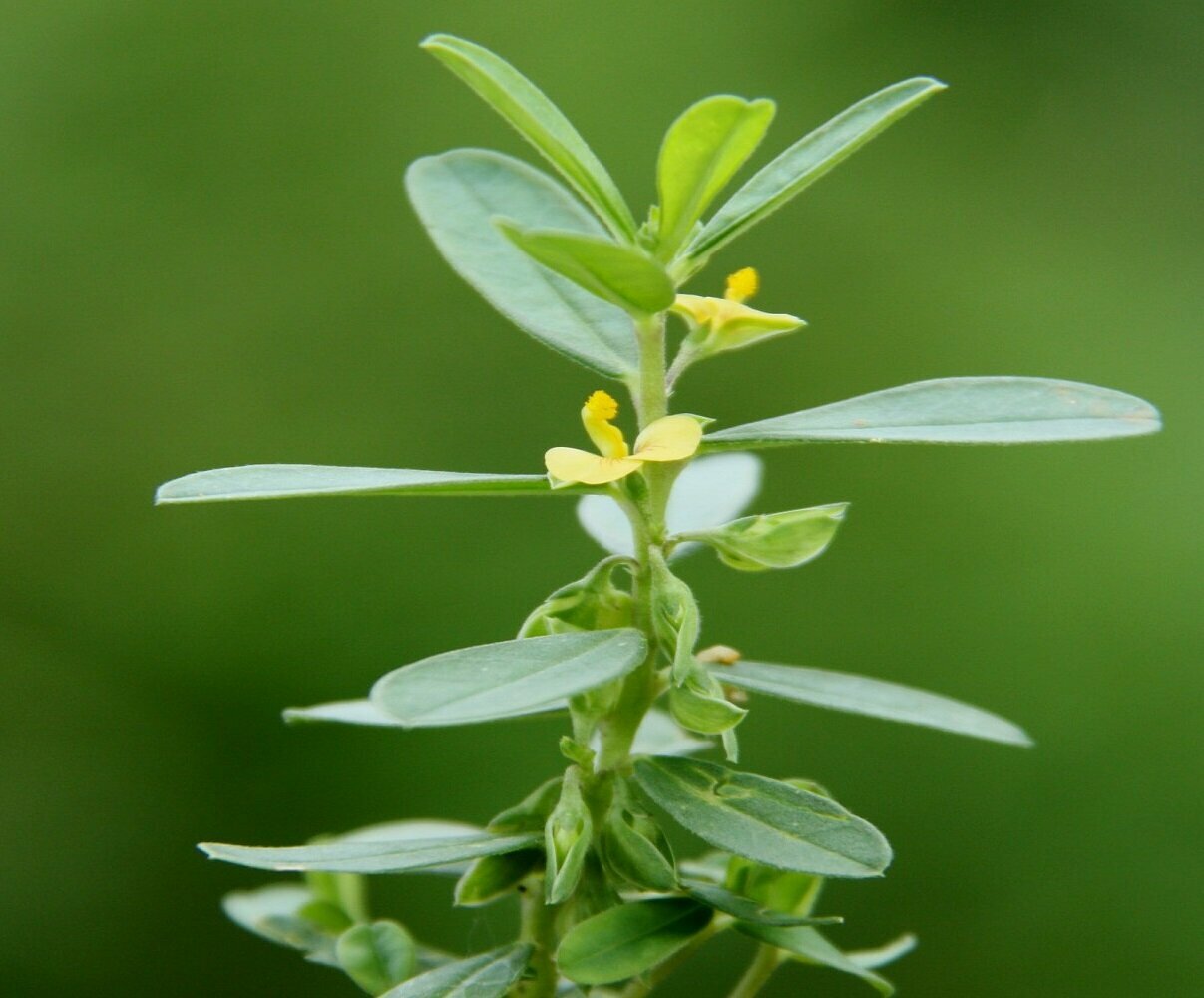 |
|||
| 375. Polygonum barbatum Linn. Family: POLYGONACEAE Ecology: Occasional, along streams under shade. Flowering & Fruiting: October-December. Description: Erect or ascending herbs. Leaves sessile, linear-lanceolate, tapering both ends, strigose on nerves beneath; stipules long bearded. Racemes panicled, slender, erect. Perianth campanulate. Nut 3-quet rous, black. Medicinal Uses: Polygonum is well known for producing pharmacologically active compounds, and also for its use in the oriental traditional medicine systems, particularly in the treatment of pain, fever and inflammatory conditions, and as a diuretic agent. IUCN Status: |
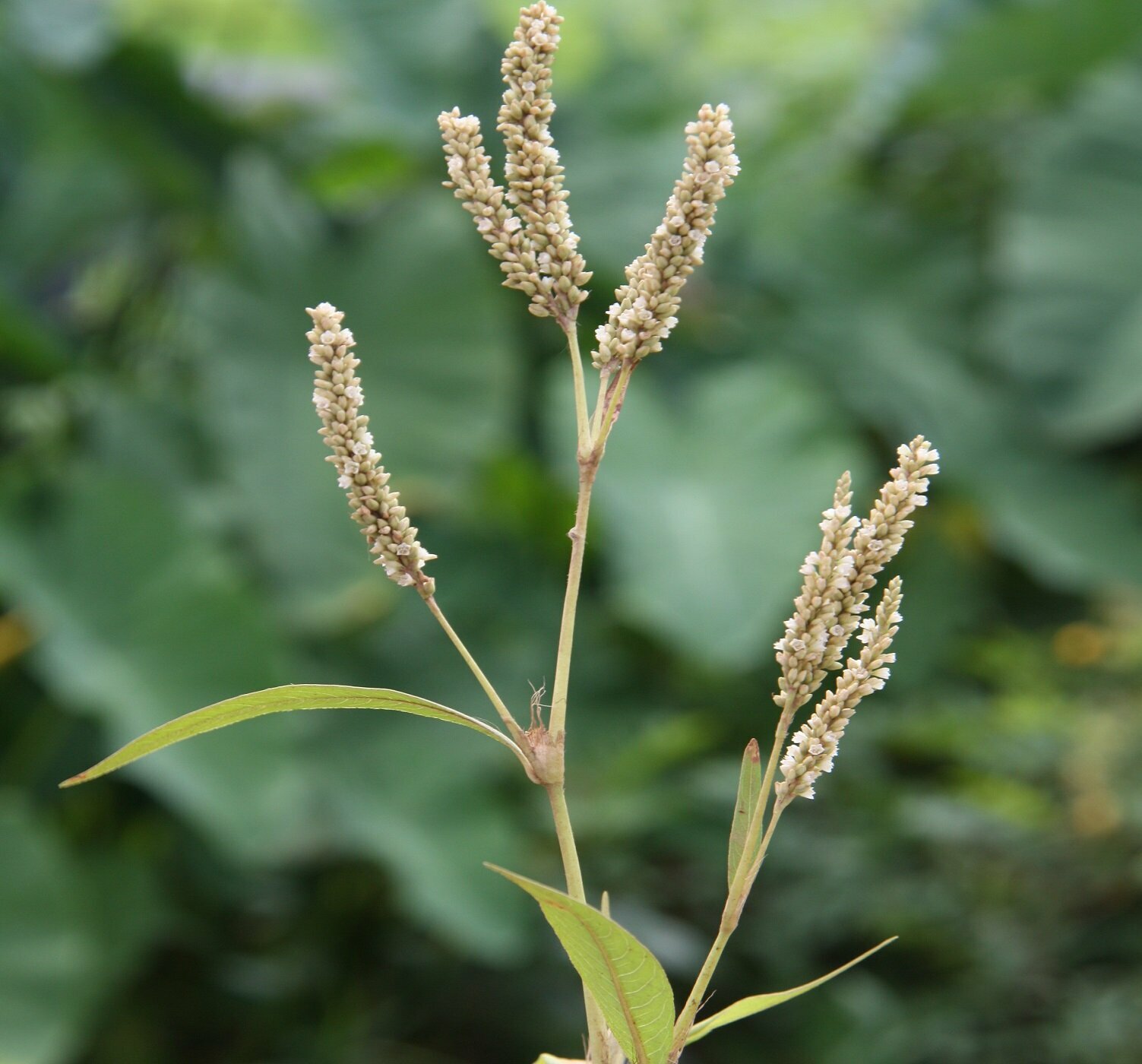 |
|||
| 376. Polygonum glabrum Family: POLYGONACEAE Ecology: Not common, along the stream banks. Flowering & Fruiting: March-August Description: Stout, erect herbs. Leaves lanceolate, tapering, base sheathing, glabrous, shining; stipules tubular. Flowers pink, in dense panicled spiciform racemes. Perianth tubular-campanulate. Nut ovoid, brown-black. Medicinal Uses: Pharmacological activities reported for the plant P. glabrum are anti-inflammatory, analgesic, antifungal, antibacterial, antidepressant, hepatoprotective, antioxidant, antimalarial, nephroprotective, anti-HIV, antidiabetic, and antiproliferative activity. IUCN Status: |
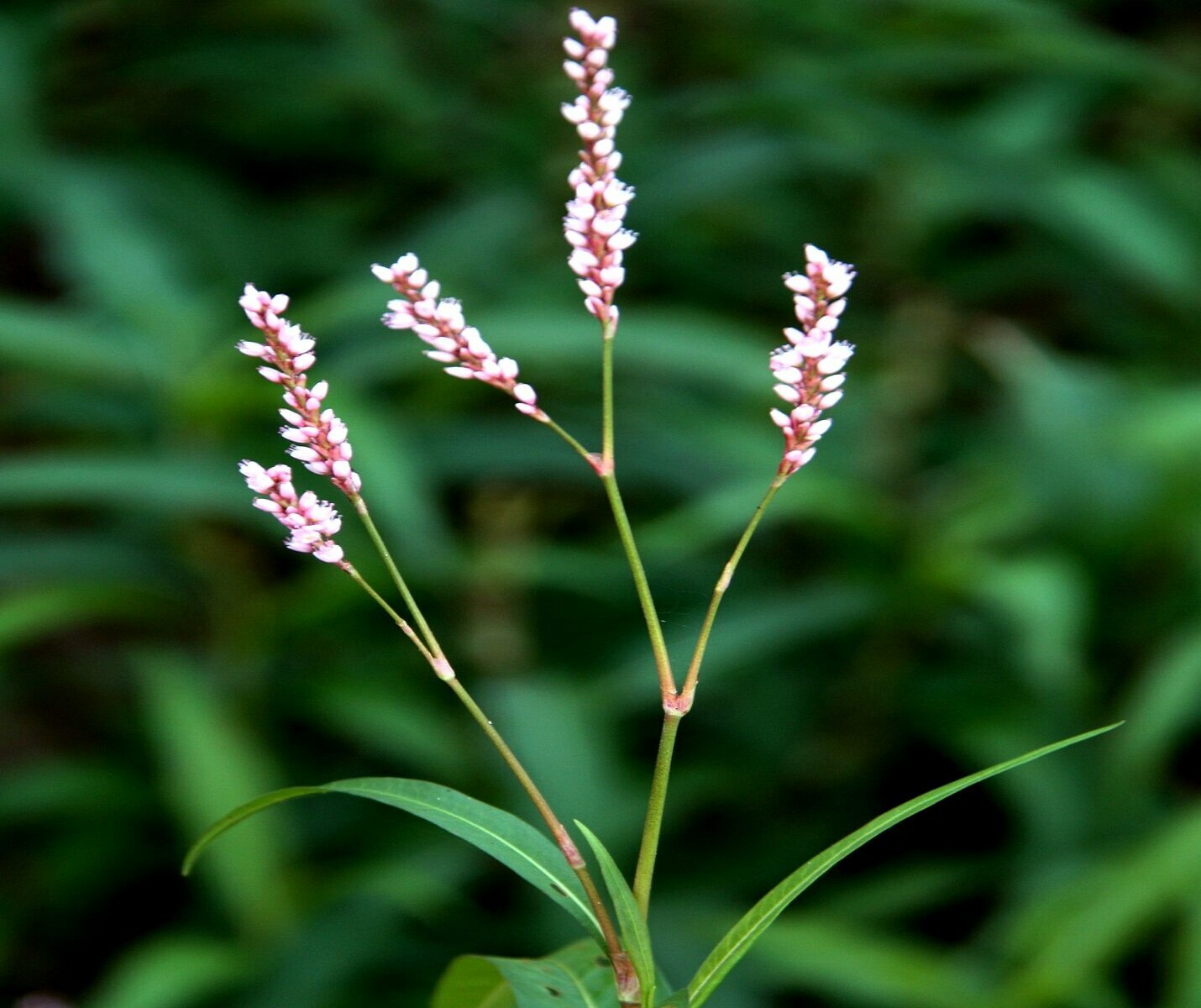 |
|||
| 377. Pongamia pinnata L. Family: POLYGONACEAE Ecology: Not common, along the stream banks. Flowering & Fruiting: March-August Description: Evergreen trees, to18 m high, bark 10-12 mm thick, surface grey, smooth, speckled with brown; blaze-yellow; branchlets lenticellate. Medicinal Uses: Flowers are extracted and given in the treatment of malaria. Seed are fried with rectified butter (Ghee) and ‘Mahasudarsan Churna’ and given in malaria. Twigs are used as tooth brush for the treatment of gum diseases. The seed oil is given as a stomachic and cholagogue in the treatment of dyspepsia and cases of sluggish liver. It is used externally as a liniment for rubbing on skin diseases and rheumatic joints. It has been shown to be effective in enhancing the pigmentation of skin affected by leucoderma or scabies. The flowers are claimed to have anti-diabetic action. IUCN Status: |
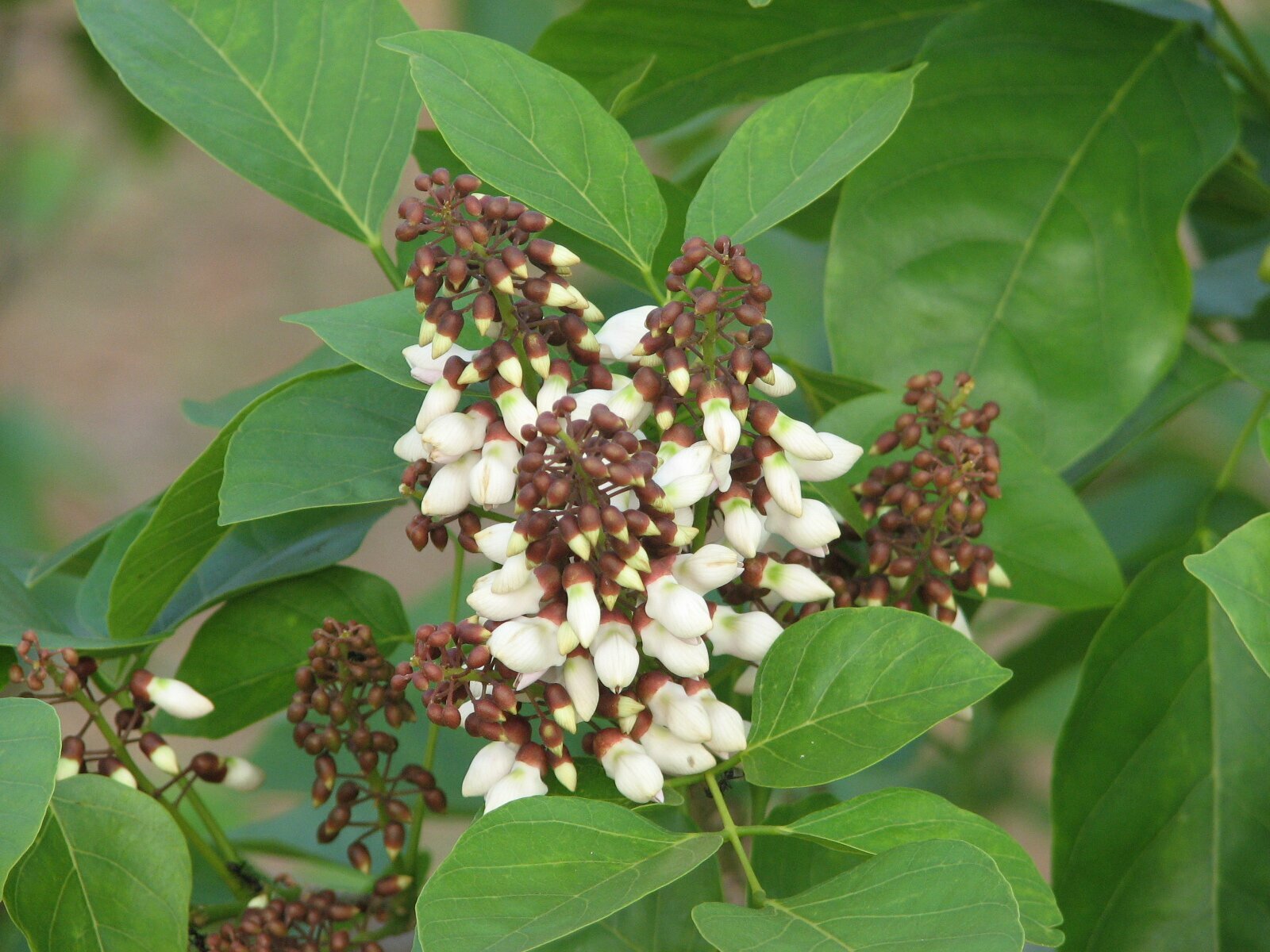 |
|||
| 378. Premna latifolia Roxb. Family: VERBENACEAE Ecology: Fairly conmon in mixed deciduous forest Flowering & Fruiting: March-May & May-July Description: Bushy trees. Leaves ovate, entire, somewhat aromatic, shining above, tapering both ends, pubescent beneath. Panicles 3-chotomous, hairy pubescent. Calyx 5-toothed, strigose. Drupe globose. Medicinal Uses: Roots: useful in neuralgia, inflammations, cardiac disorders, cough, asthma, bronchitis. Leaves: useful in dyspepsia, flatulence, colic, agalactia, cough, rheumatalgia, neuralgia, haemorrhoids and tumors. IUCN Status: |
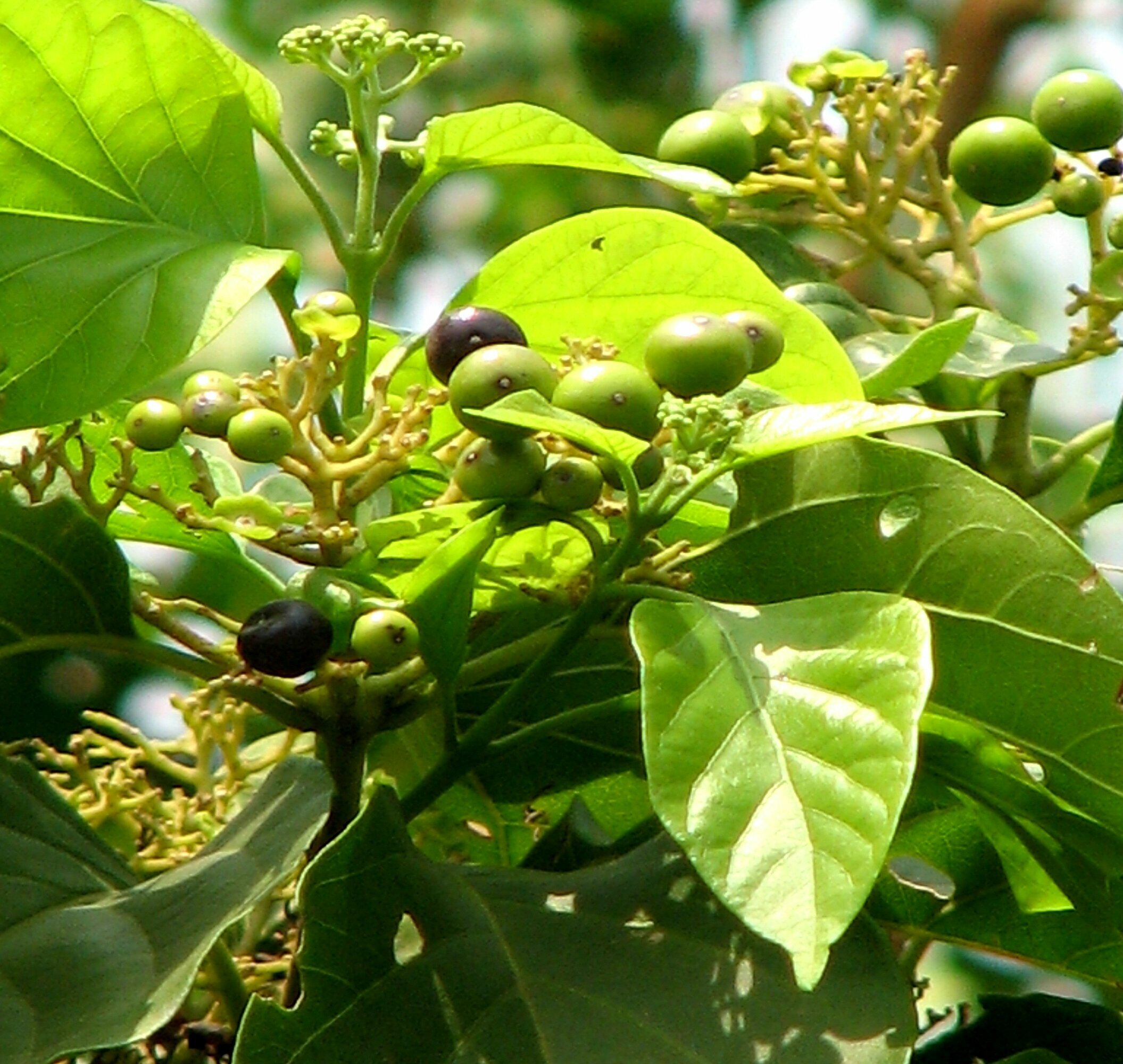 |
|||
| 379. Prosopis juliflora (Sw.) Family: MIMOSACEAE Local name: Shami Flowering & Fruiting: August – May Description: It is a thorny evergreen tree with a large, flat-topped crown and open canopy; it can grow from 5 – 10 metres tall. The short, crooked bole can be up to 45 cm in diameter. Medicinal Uses: The leaves are used in the treatment of oral infections, painful and frequent urination. The powdered leaves are brewed in water and the liquid applied to the eyes to treat irritations, conjunctivitis etc. A compress made from the boiled leaves is applied to the eyes to reduce swelling. IUCN Status: |
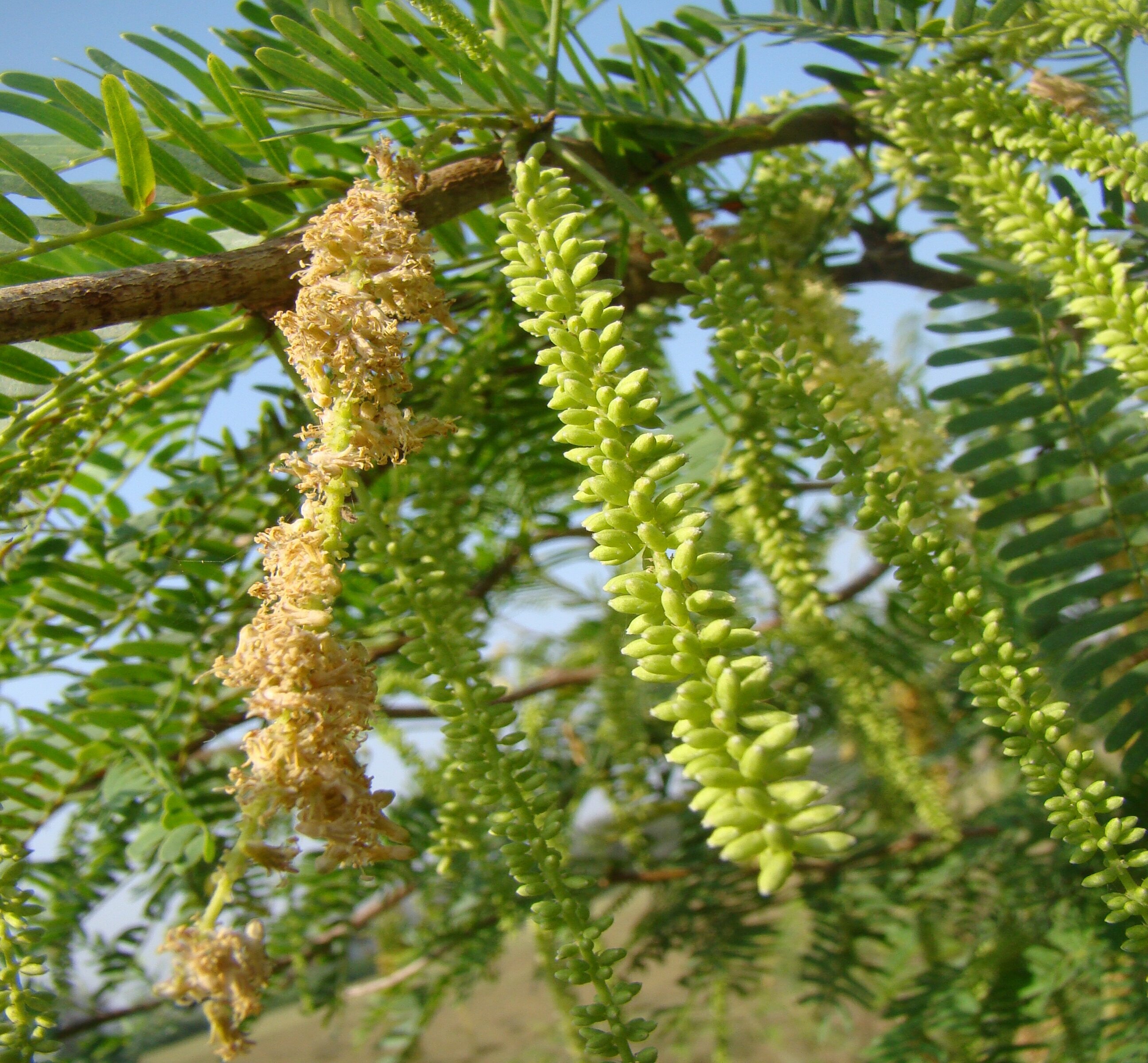 |
|||
| 380. Psidium guajava Linn. Family: MYRTACEAE Flowering & Fruiting: April-May & June-July. Description: Small trees. Bark reddish brown, peeled off. Leaves elliptic, obtuse, base rounded, pubescent. Flowers white, axillay solitary or 2-3 nate cyme. Berry globose or pyriform, fleshy, edible. Medicinal Uses: Psidium guajava (guava) is well known tropic tree grown in tropic areas for fruit. It is found to be effective in diarrhea, dysentery, gastroenteritis, hypertension, diabetes, caries, pain relief, cough, oral ulcers and to improve locomotors coordination and liver damage inflammation. IUCN Status: |
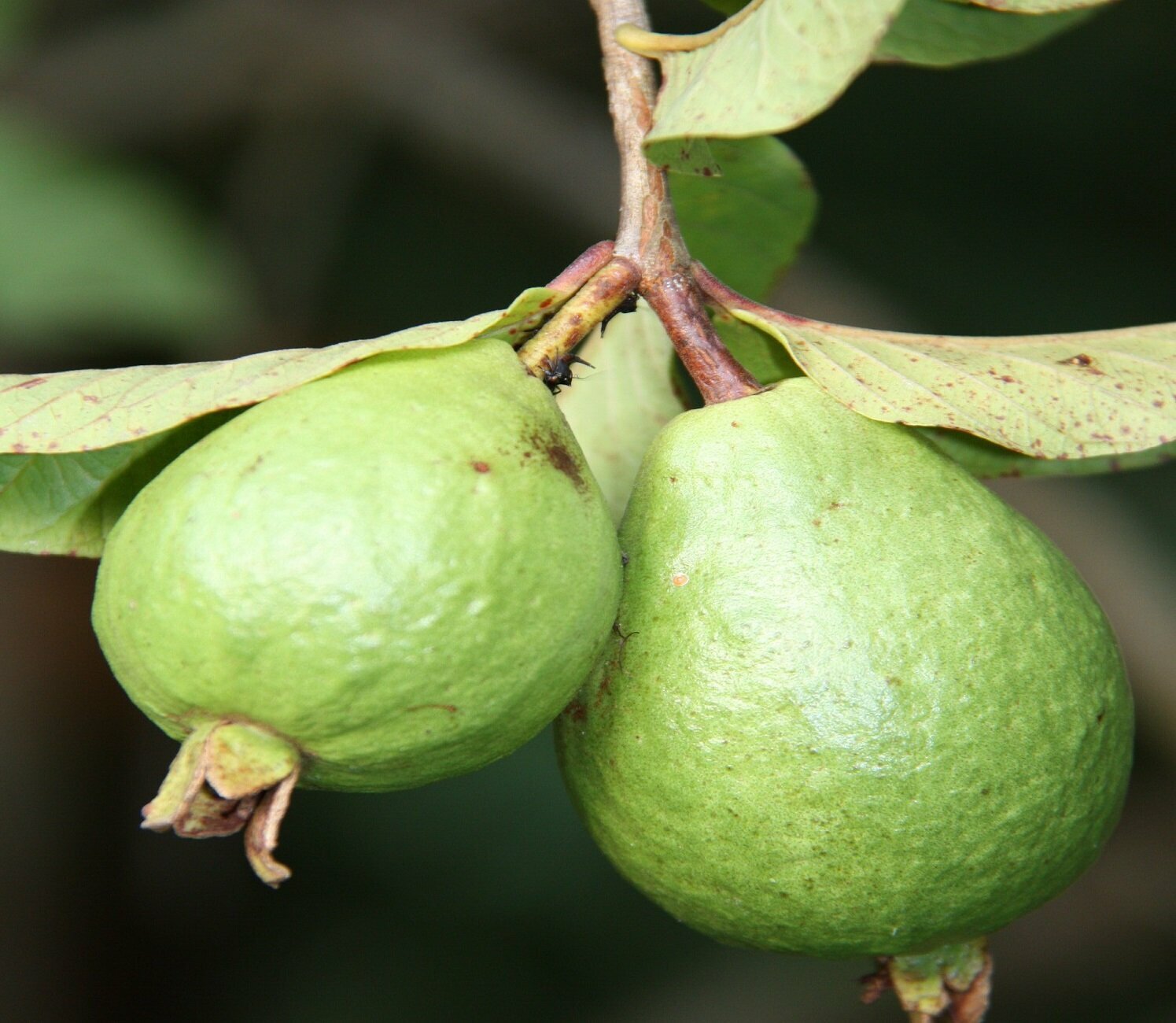 |
|||
| 381. Pteroaperum xylocarpum Local Name: Muchukund Medicinal Uses: The powder of its flower diluted in water is a good remedy for chest pain and colic. Paste of root and flower is given daily for three days to regularize menstruation cycle. IUCN Status: |
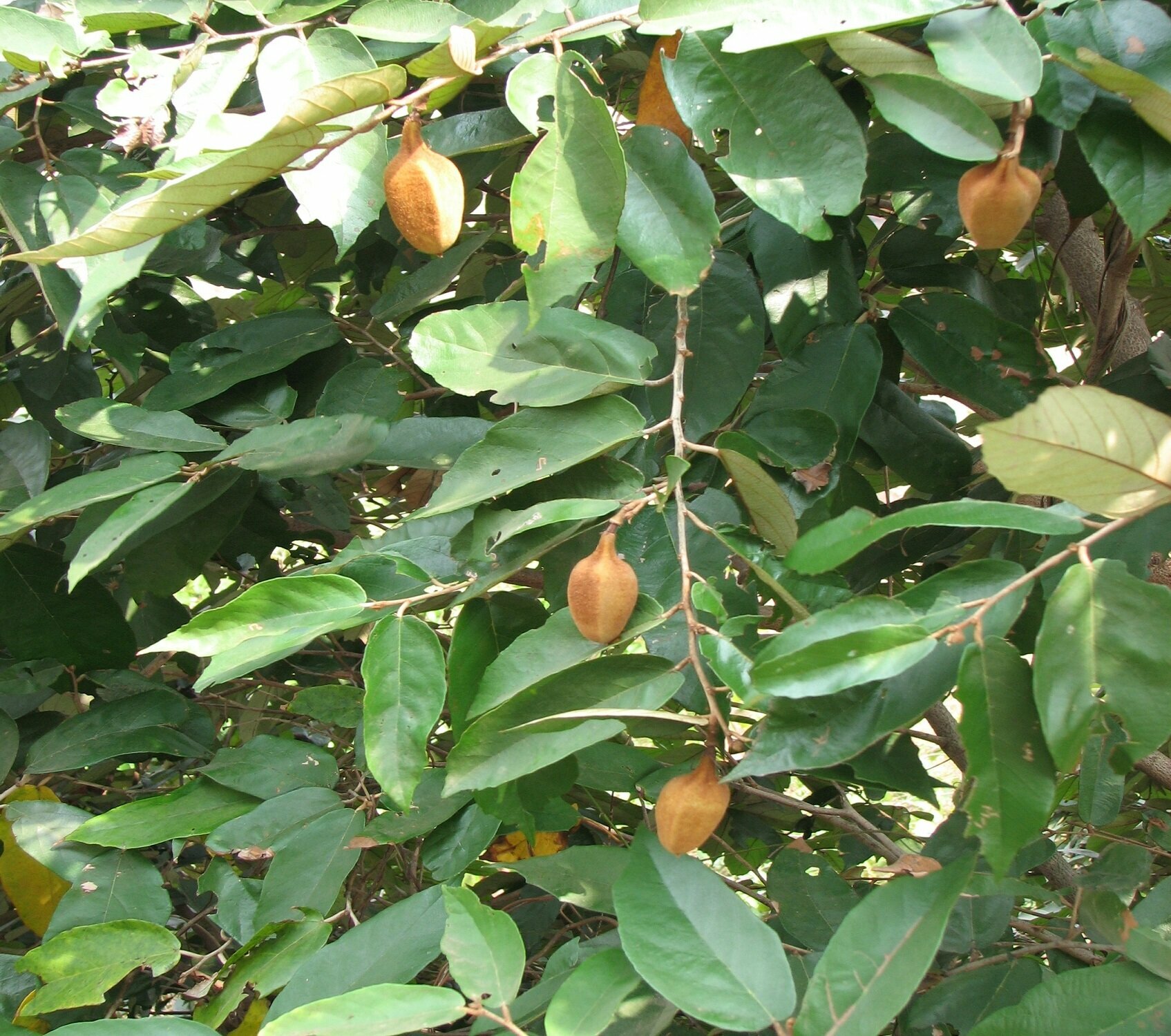 |
|||
| 382. Punica granatum L. Family: PUNICACEAE Local name: Dalim, Anar Description: Punica granatum is a deep-rooted but slow-growing, spiny, deciduous shrub or small tree that has an open canopy and a crown that branches from low down. Medicinal Uses: The whole plant, but in particular the bark, is antibacterial, antiviral and astringent. This remedy should be used with caution; overdoses can be toxic. Unripe fruit juice is given to stop acute diarrhea (Taral Jhada). The flowers are used in the treatment of dysentery, stomach ache and cough. Along with the leaves and seeds, they have been used to remove worms. The juice of the flowers is used to treat nose bleeds. The seeds are demulcent and stomachic. A decoction of the seed is used to treat syphilis. In addition, it has been shown to reduce cell death from oxidation. The plant has potential as an active ingredient in preparations for the treatment of skin-ageing in post-menopausal women. IUCN Status: |
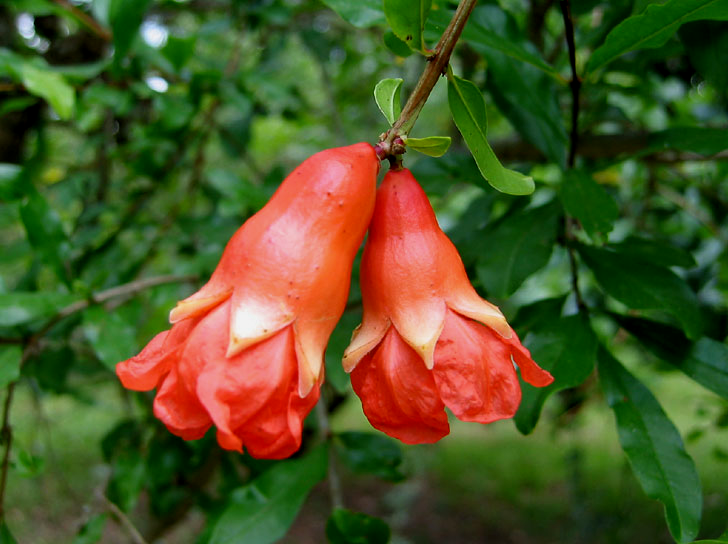 |
|||
| 383. Pupalia lappacea (Linn.) Family: AMARANTHACEAE Flowering & Fruiting: July-November. Ecology: Quite abundant, as an undergrowth in forests. Description: Erect or straggling herbs, stem tomentose or glabrascent. Leves opposite, ovate or elliptic, cuneate, tomentose beneath. Flowers pale pinkish, bisexual, 1-2, perfect, intermixed with imperfect ones modified into hooked bristles, aggregating into a spike. Perianth lobes 5, densely wooly. Urticle subglobose. Medicinal Uses: In folklore and ayurvedic medicine, it has been used to treat wounds, bone fractures, boils, cough, toothache, fever and malaria, diarrhea, urethra pain, leucorrhoea and many other disorders. IUCN Status: |
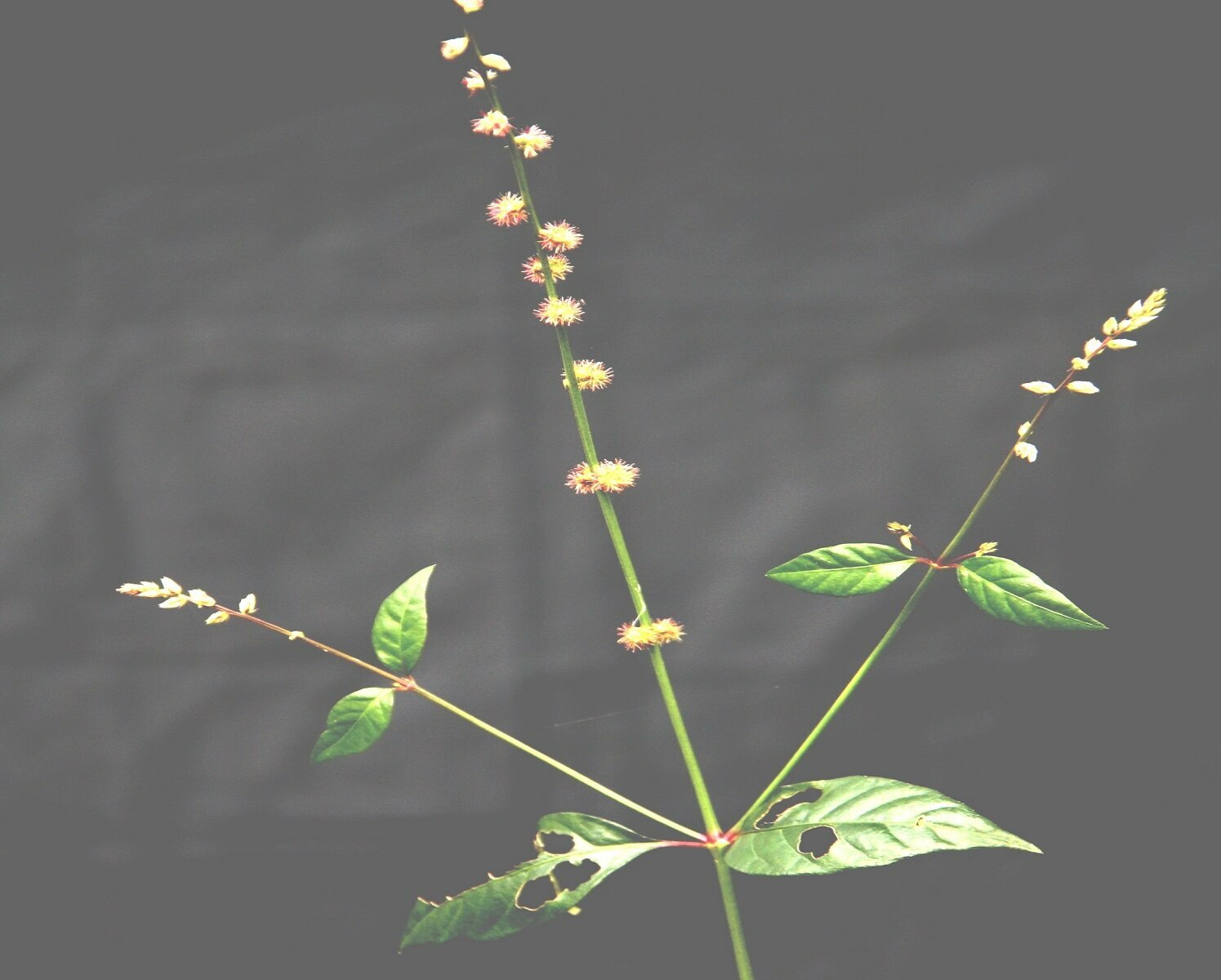 |
|||
| 384. Rauvolfia tetraphylla Vahl. Family: APOCYNACEAE Local name: Saragandh, Patal garudi Flowering & Fruiting: March-April & April-June. Ecology: Occasional, on foot hills. Description: Small trees, young shoot rusty tomentose. Leaflets 2 pairs, subopposite, elliptic or obovate, rounded or obtuse apex. Flowers polygymous, white, irregular, in axillary spiciform panicles. Ovary 3-gonous. Drupe woody, apiculate, angular, 3-seeded. Medicinal Uses: The fruits of Rauvolfia tetraphylla are poisonous. The latex is irritant, emetic, cathartic, expectorant and it is used for treating dropsy. The leaf juice is used for eyes troubles. The leaf decoction is used for toothache. IUCN Status: |
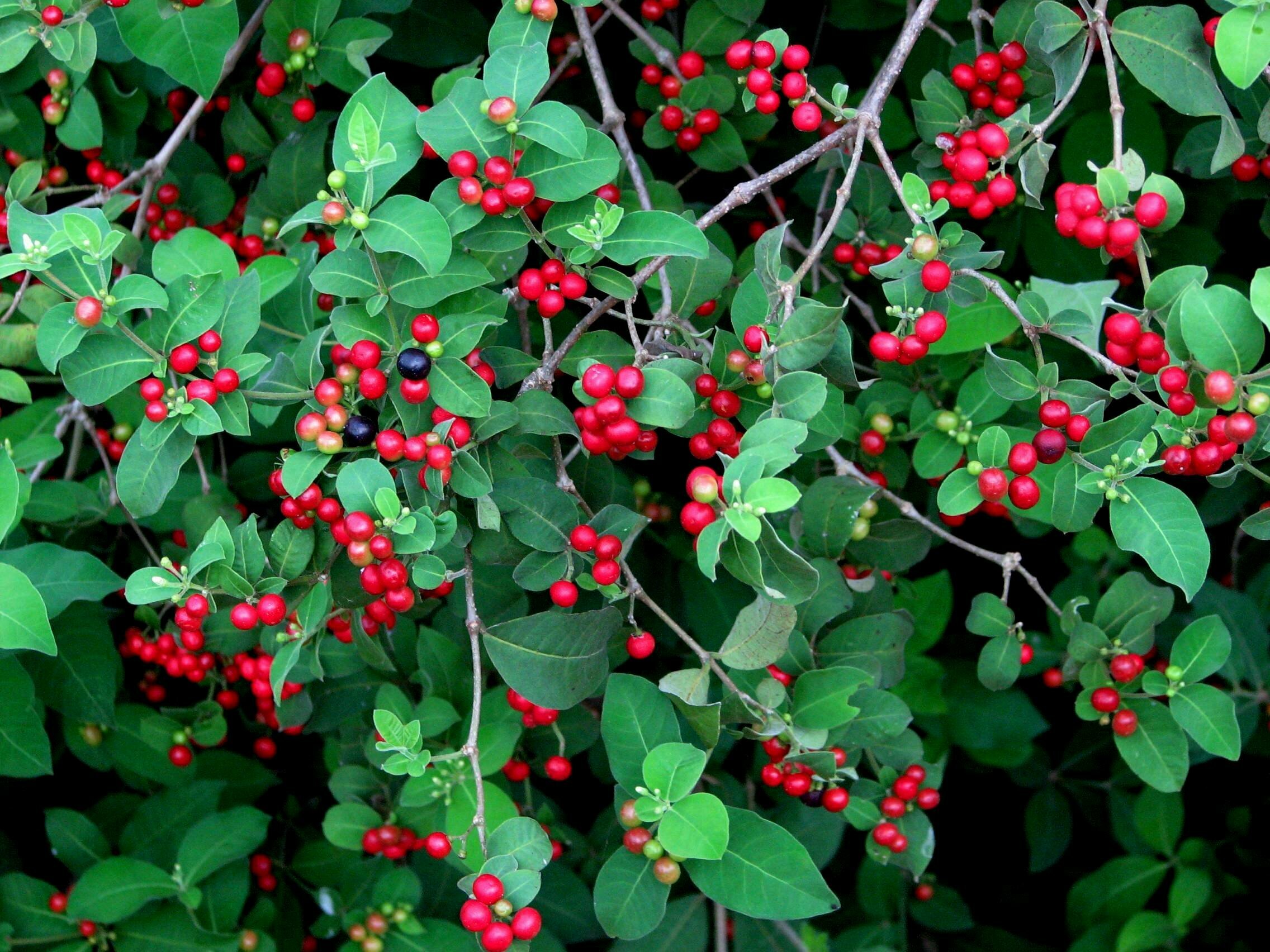 |
|||
| 385. Rauvolfia serpentina (Linn.) Family: APOCYNACEAE Local name: Saragandh, Patal garudi Flowering & Fruiting: January – May Ecology: Rare, on foot hills in damp places. Description: Glabrous under shrubs. Leaves 3-4-nately whorled, shining, elliptic, acute at both ends, membranous. Flowers small, white, with pink tubes in terminal peduncled red cymes. Drupe ellipsoid, shining, blackish-purple when ripe. Medicinal Uses: The root is used to make medicine. Indian snakeroot is used for mild high blood pressure, nervousness, trouble sleeping (insomnia), and mental disorders such as agitated psychosis and insanity. IUCN Status: |
 |
|||
| 386. Ricinus communis Linn. Family: EUPHORBIACEAE Local name: Gaba, Jada Flowering & Fruiting: July-December. Ecology: Common in the villages, very often self-sown. Description: Perennial, subarboreous shrubs. subarboreous shrubs. Leaves large, orbiculari serrate, palmately-lobed. Flowers monoecious inter racemes. Males crowded, sepals 3-5, anthers clustered. Females large, ovary 3-celled; style 2-fid, feathery. Capsule of 33 Seeds oblong, carunculate. Medicinal Uses: Communis have been widely used in traditional medicine such as abdominal disorders, arthritis, backache, muscle aches, bilharziasis, chronic backache and sciatica, chronic headache, constipation, expulsion of placenta, gallbladder pain, period pain, menstrual cramps, rheumatism, sleeplessness, and insomnia. IUCN Status: |
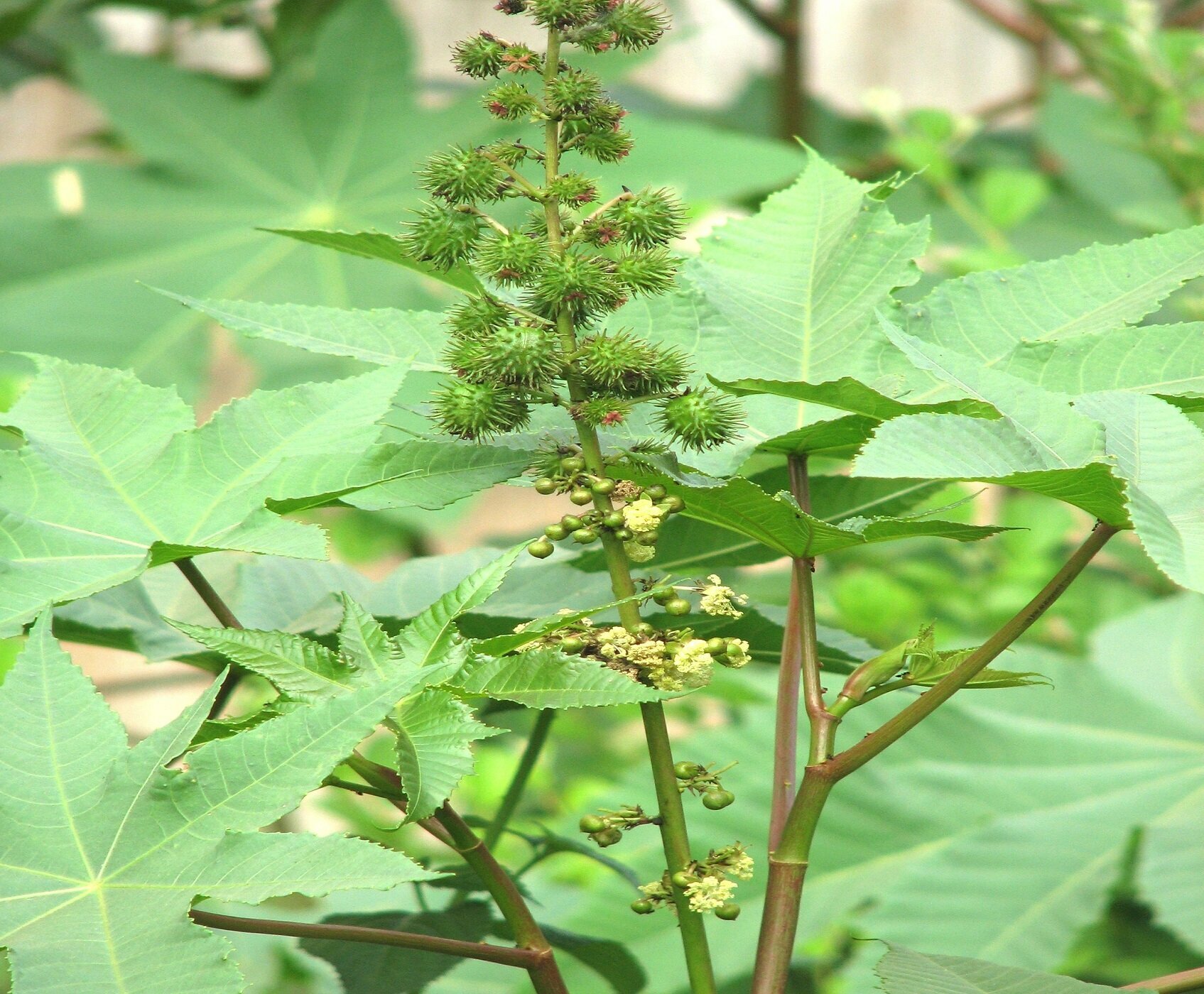 |
|||
| 387. Rikliella squarrosa (Linn.) Raynal Family: CYPERACEASE Flowering & Fruiting: August-December. Ecology: Common in banks of nalas at foot hills. Description: Small sedges.Leaves 1-2, short on , inflated sheaths. Spikelets softly bristly, 1-4; bracts erect. Glumes oblong, tailed, slightly recurved. Stigmas 3, recurved. Nut 3-gonous, narrowly obovoid, brown-black. IUCN Status: |
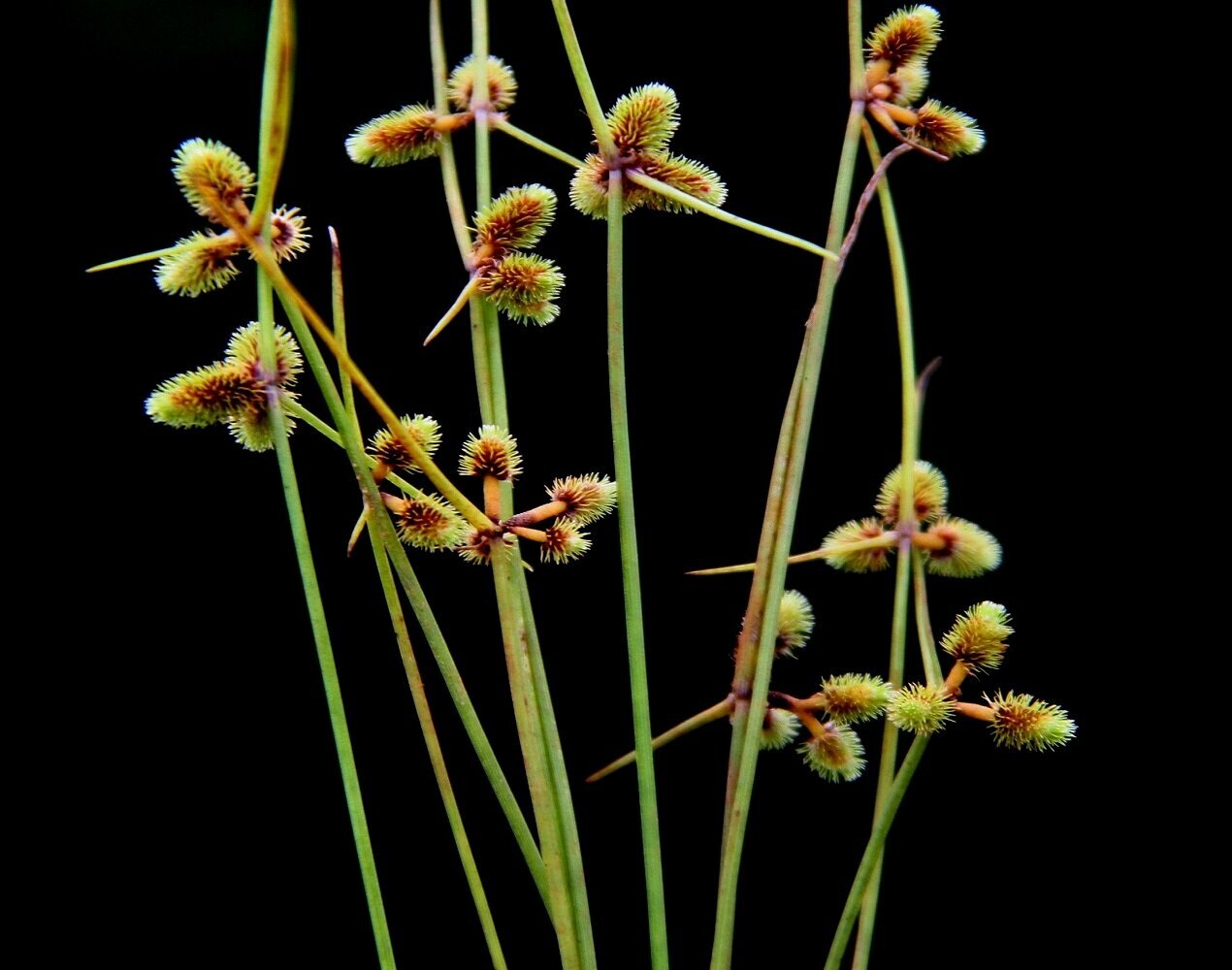 |
|||
| 388. Rotala indica (Willd.) Family: LYTHRACEAE Flowering & Fruiting: September-January. Ecology: Common, on stream banks. Description: Erect herbs. Stem 4-angled. Leaves elliptic-lanceolate, acute, decussate. Flowers pink, in the axils of leafy bracts forming dense spikes. Capsule ellipsoid, 2-valved. Medicinal Uses: Rotala rotundifolia is used in its native range as a medicinal plant. The species is known for its anti-pyretic, detoxication, anti-swelling, and diuresis properties. The plant is used for treatment of cirrhosis, gonorrhea, menstrual cramps and piles. IUCN Status: |
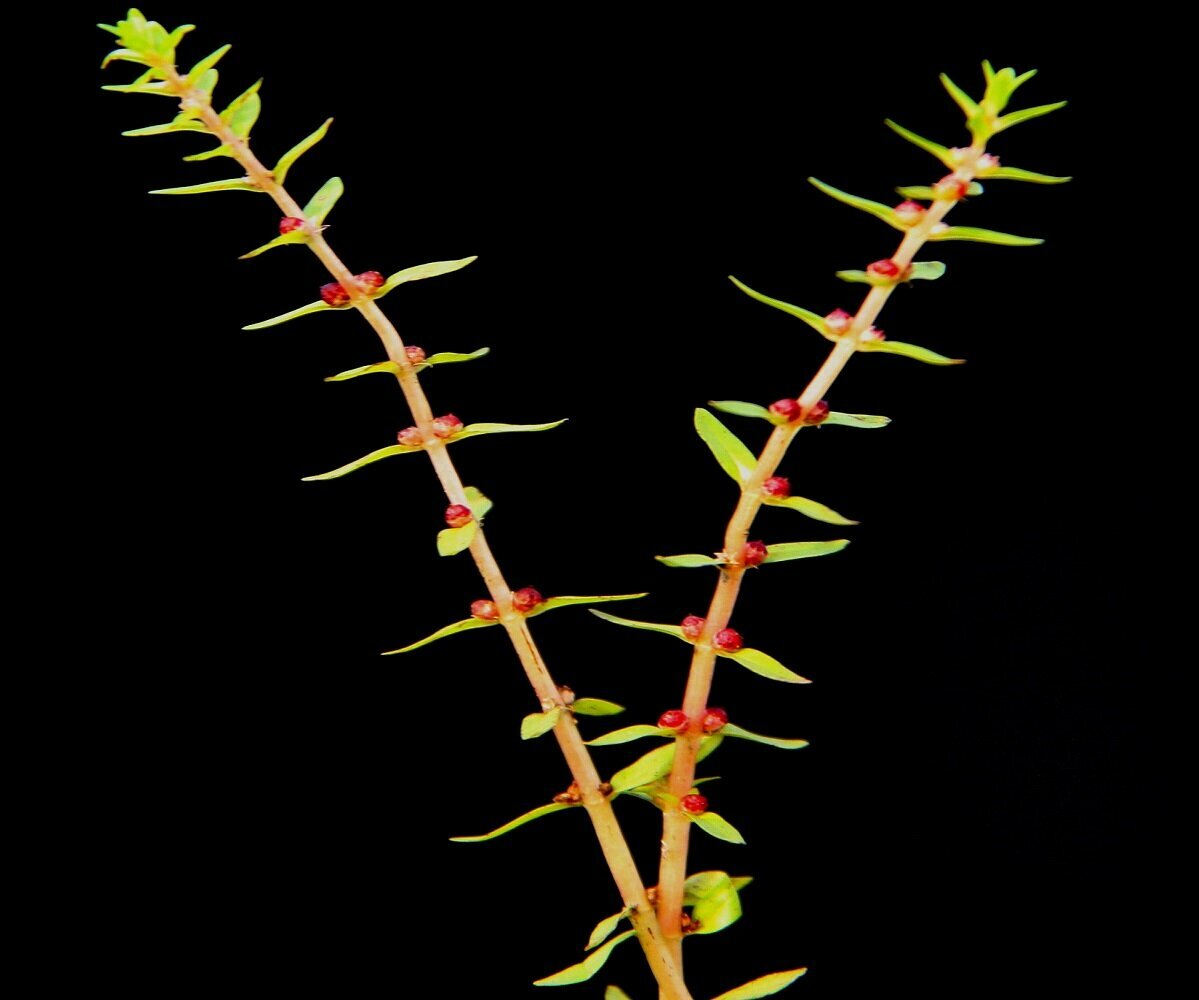 |
|||
| 389. Rotala rosea (Poir.) Family: LYTHRACEAE Flowering & Fruiting: August-January. Ecology: Common, on stream banks. Description: Erect herbs. Leaves decussate, oblong-lanceolate, apex abtuse. Flowers pink, solitary. Bracteoles not exceeding calyx tube. Capsule subglobose, dehiscing by 3-valves. Seeds compressed. Medicinal Uses: Its root contains more than 140 active ingredients, the two most potent of which are rosavin and salidroside. People in Russia and Scandinavian countries have used rhodiola to treat anxiety, fatigue and depression for centuries. Today, it’s widely used as a dietary supplement for its many health benefits. IUCN Status: |
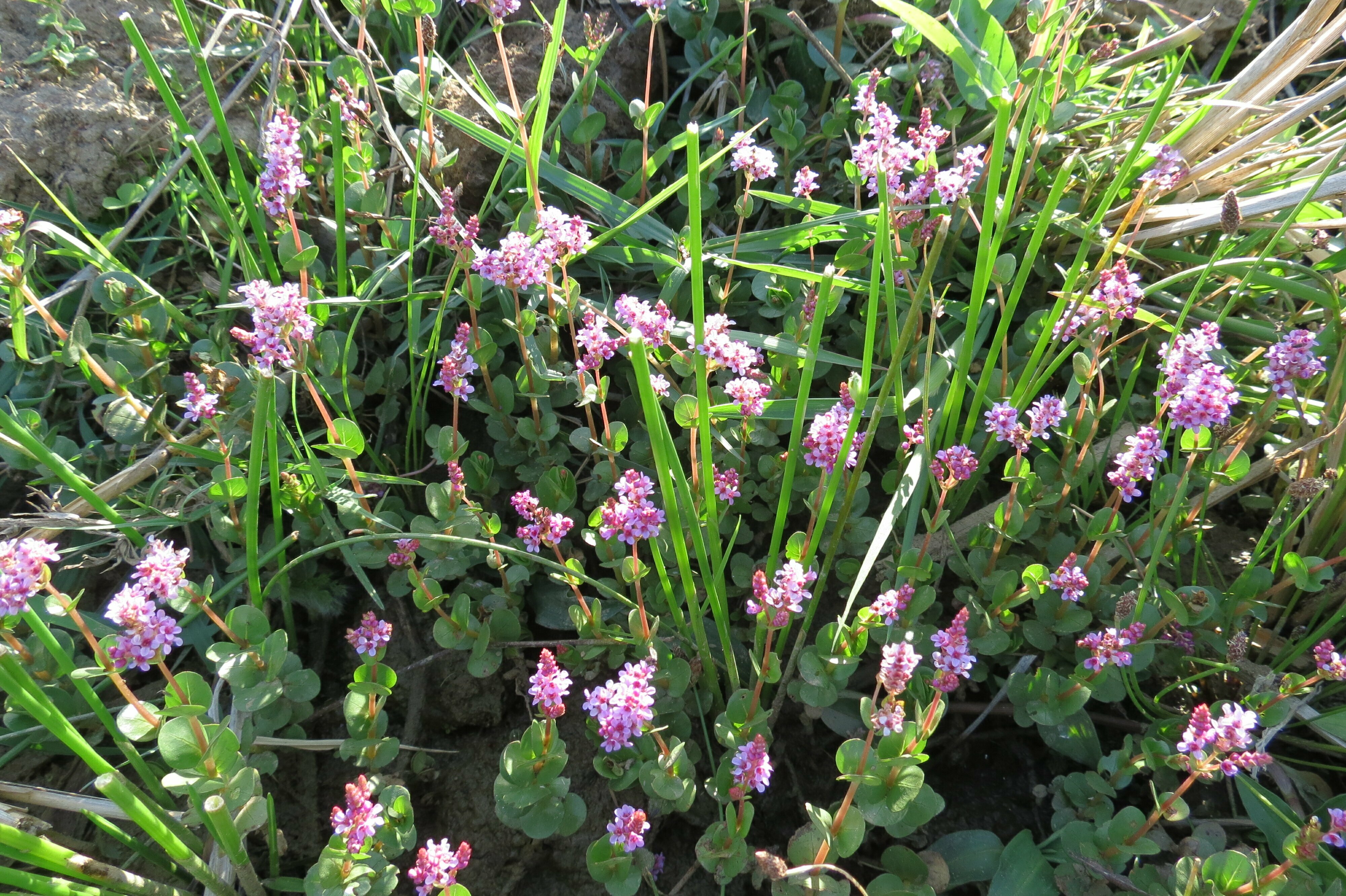 |
|||
| 390. Rothia indica (Linn.) Family: FABACEAE Flowering & Fruiting: September-November & November-February. Ecology: Common in open places & fallow lands. Description: Annual, appressed, pubescent herbs. Leaves digitately 3 foliolate; leaflets oblanceolate, acute. Flowers solitary or 2-4 on short racemes. Calyx silky, upper 2 broader & falcate. Petals pale yellow, long clawed. Stamens monadelphous. Pod linear, compressed, appressed villose. IUCN Status: |
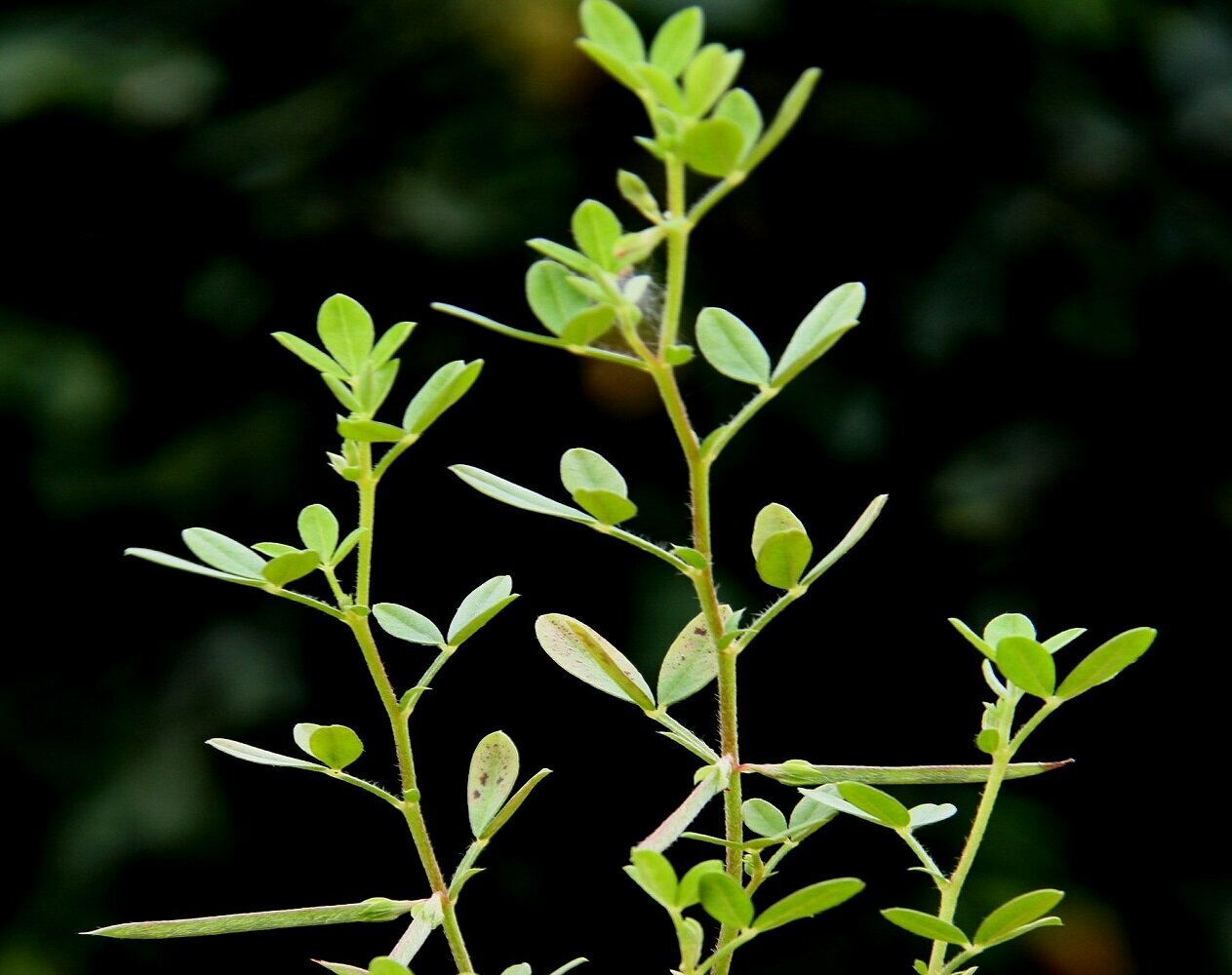 |
|||
| 391. Rottboellia cochinchinensis (Lour.) Family: POACEAE Flowering & Fruiting: August-September. Ecology: Not common, in shady and marshy places. Description: Stout, tall grass. Stems polished. Leaves broadly linear, flat, hispid hair above, margin spinulose-scabrid. Spikes terete, long pedunculated. Spikelets 2-nate, heteromorphous, sessile and pedicellate. Grain dorsally compressed, oblong. IUCN Status: |
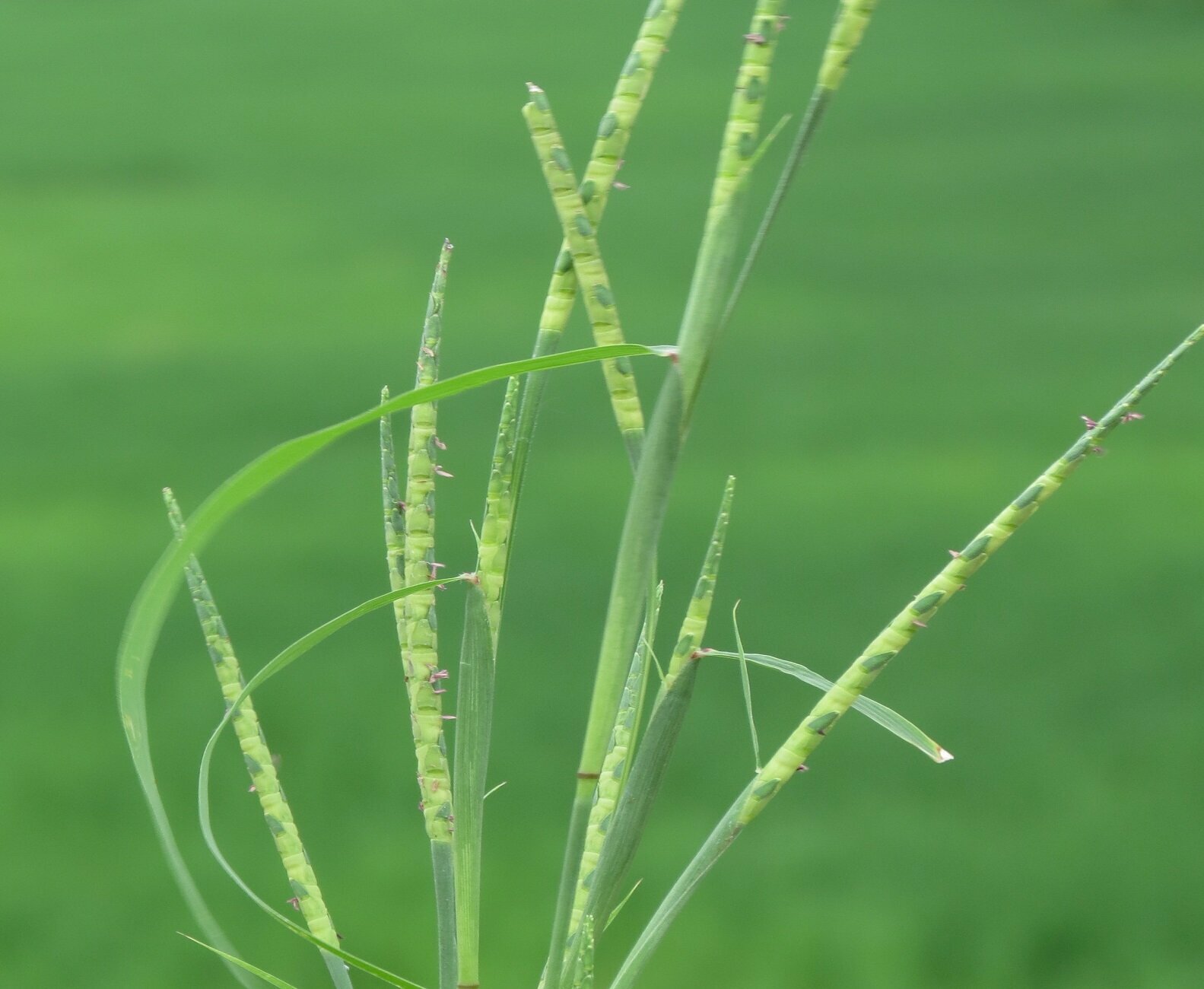 |
|||
| 392. Ruellia suffruticosa Roxb. Family: ACANTHACEAE Flowering & Fruiting: July-December Local name: Lepde, Sahsra-bhedi Medicinal Uses: Tuberous roots are washed properly and pasted with raw rice and other eight plants like Kaempheria, Hemidesmus and Cissampelos etc., collectively known as ‘Mulika’ and made rounded tablets (Bakhro). It is mixed with rice during the preparation of rice beer (Handia) for fermentation purpose. It is also given during stomach disorders. IUCN Status: |
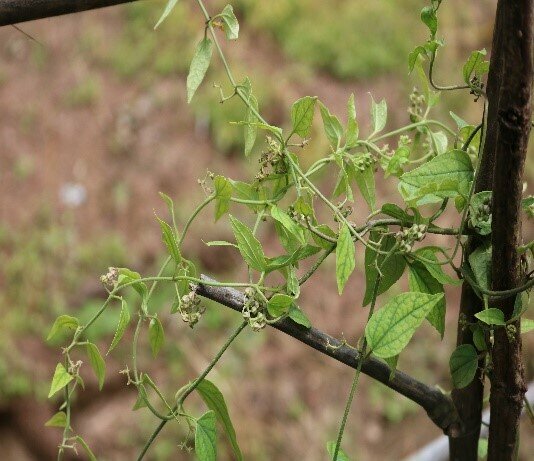 |
|||
| 393. Rungia pectinata (Linn.) Family: ACANTHACEAE Flowering & Fruiting: October-January. Ecology: Quite abundant in grasslands, dilapidated walls and temples. Description: Diffuse or erect herbs. Leaves linear or narrowly lanceolate, lineolate, pubescent on nerves. Flowers blue or purple, in fascicled spikes. Sterile and fertile bracts dissimilar. Capsules compressed. Medicinal Uses: Rungia pectinata (Acanthaceae) is a much branched, procumbent or erect herb found as a weed throughout the warmer parts of India. The juice of the leaves is considered cooling and aperient, and is given to children suffering from smallpox. Bruised leaves are applied to contusions to relieve pain and reduce swelling. IUCN Status: |
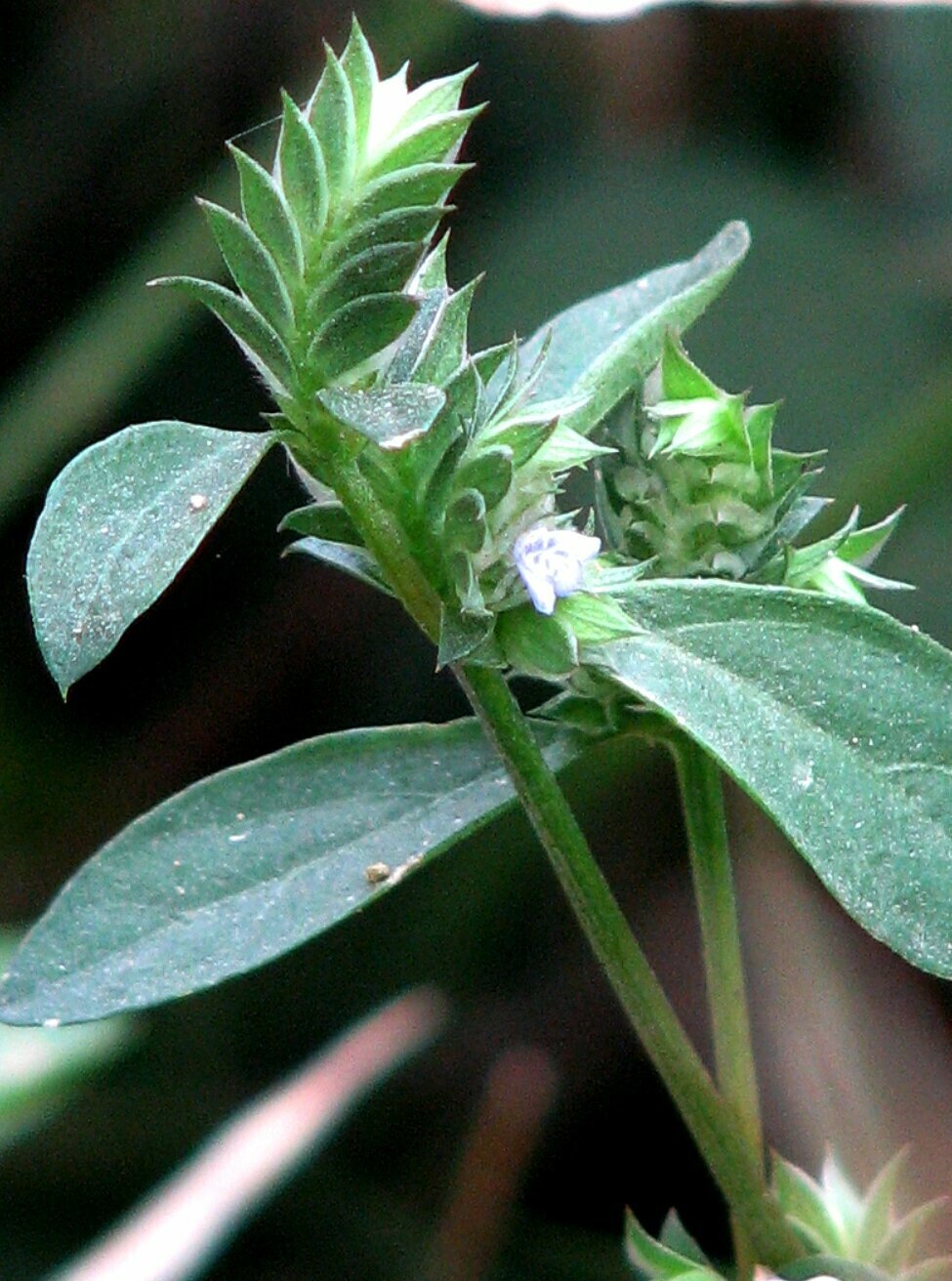 |
|||
| 394. Sacciolepis indica (Linn.) Family: POACEAE Flowering & Fruiting: August-December. Ecology: Quite common, in moist slopes and fallow lands. Description: Slender grasses. Leaves linear, acuminate. Panicle green or slightly purplish. Spikelets crowded, acute, hispidly hairy, often curved, 4-glumed. IUCN Status: |
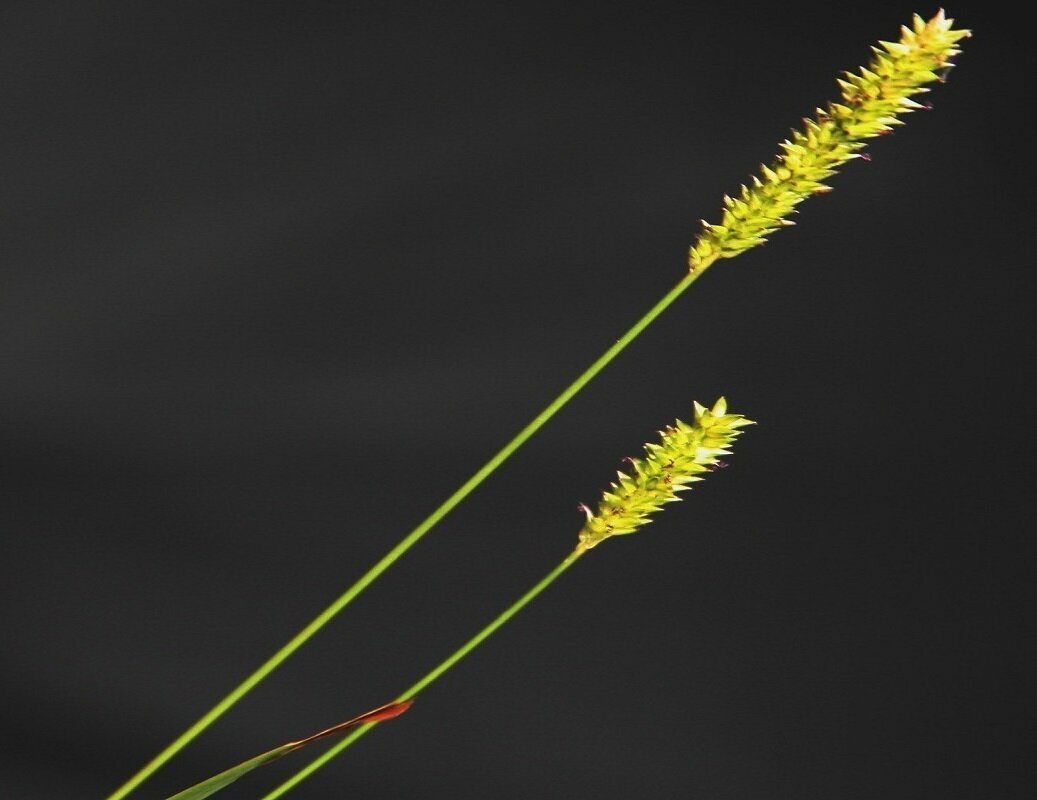 |
|||
| 395. Saccharum spontaneum Linn. Family: POACEAE Flowering & Fruiting: August-November Ecology: Came On, along field bunds and lower slopes. Description: Coarse, caespitose grass. Stems erect, glabrous, root stock woody. Leaves narrowly linear, acuminate, rigid, convolute, glaucous beneath.4-Panicles silky, feathery. Spikelets sessile, linear-lanceolate, glumed. Grain subglobose. Medicinal Uses: According to Ayurveda, roots are sweet, astringent, emollient, refrigerant, diuretic, lithotriptic, purgative, tonic, aphrodisiac and useful in treatment of dyspepsia, burning sensation, piles, sexual weakness, gynecological troubles, respiratory troubles etc. Planted to check soil-erosion. IUCN Status: |
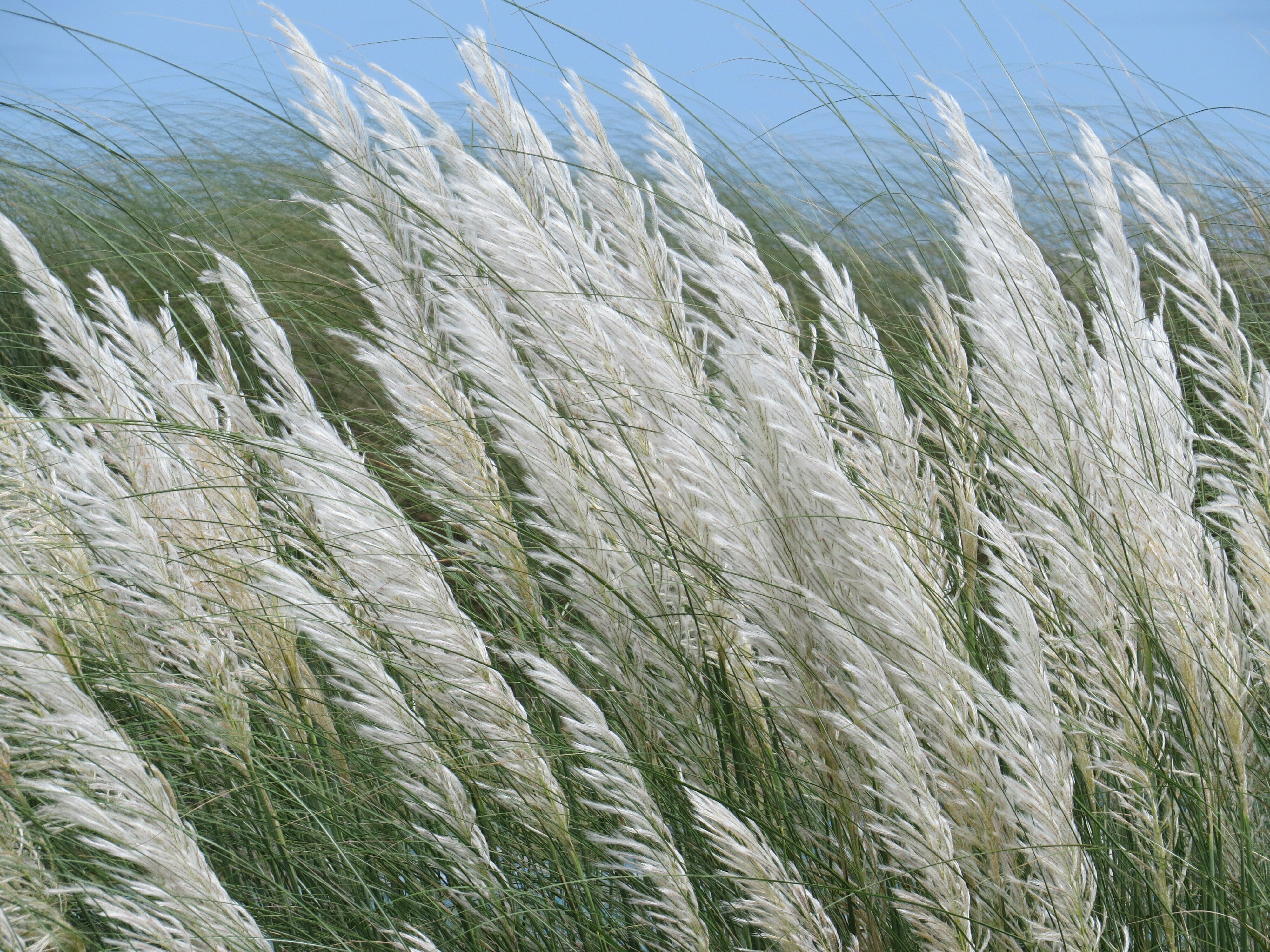 |
|||
| 396. Samanea saman (Jacq.) Family: FABACEAE Flowering & Fruiting: April-May & May-July Ecology: Common in the villages, often planted as avenue trees. Description: Large trees. Leaves 2-pinnate; leaflets sessile, elliptic or obovate, base oblique. Flowers pinkish white, on heads. Stamens monadelphous, filaments rosy. Pod sub-terete, septate, sweet pulpy. Medicinal Uses: Medicinally, the plant is used in the treatment of diarrhea, stomach pain, and sore throat. It is also used as a laxative. The pods can be eaten and the pulp can be made into drink. The bark is a source of gums and resins. A decoction of the inner bark and fresh leaves is used as a treatment for diarrhoea. A brew of small sections of the bark is taken to treat stomach-ache. A crude aqueous or alcoholic extract of the leaves is observed to have an inhibiting effect on Mycobacterium tuberculosis. IUCN Status: |
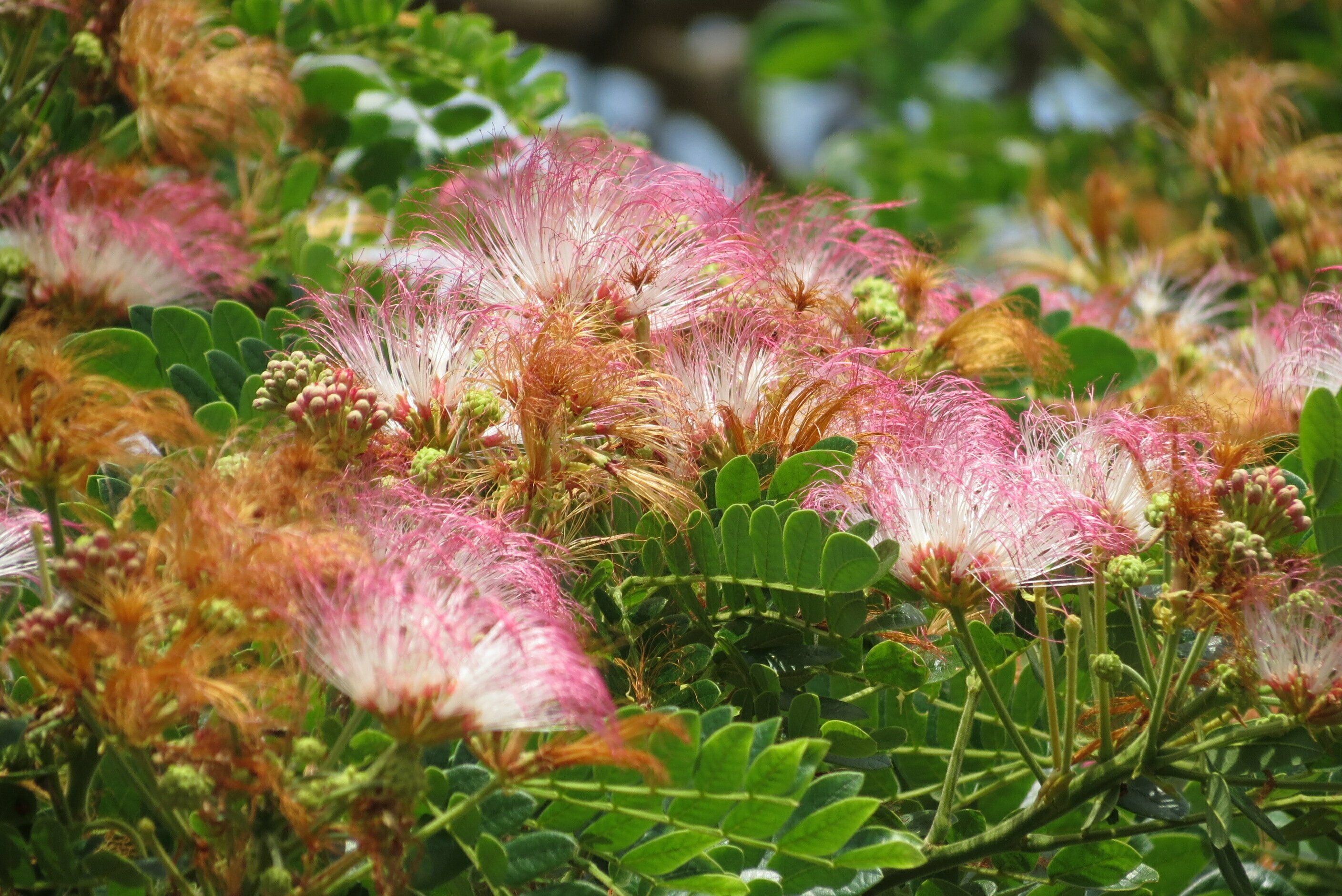 |
|||
| 397. Santalum album Family: SANTALACEAE Flowering & Fruiting: October-December & March-April. Ecology: Frequently planted in temple premises. Locality: Nrusinghanath Description: Small, evergreen trees, a hemi-parasite on roots of various trees. Leaves opposite, ovate-lanceolate or elliptic, acute. Medicinal Uses: Sandalwood oil has been widely used in folk medicine for treatment of common colds, bronchitis, skin disorders, heart ailments, general weakness, fever, infection of the urinary tract, inflammation of the mouth and pharynx, liver and gallbladder complaints and other maladies. IUCN Status: |
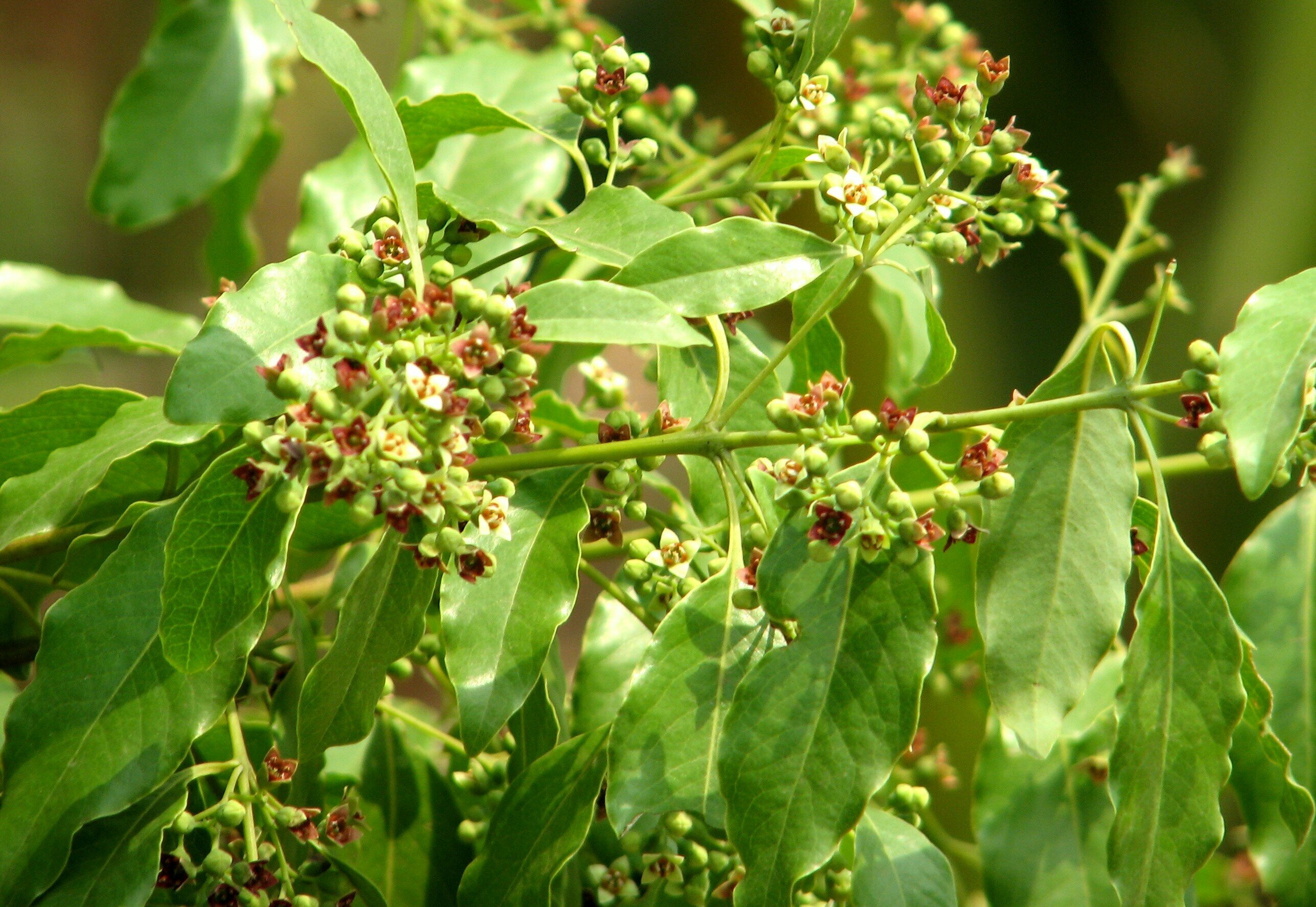 |
|||
| 398. Saraca asoca (Roxb.) Family: FABACEAE Local name: Ashoka, Ashok Description: A middlesized handsome tree. Leaves paripinnate, glabrous, leaflets 4-5 pairs, 10- 20 cm long, margin slightly wavy. Flowers are fragrant, orange scarlet in terminal or axillary racemes. Pods are 5 – 10 inch compresed, tapering at the both ends. Very beautiful tree when flowers. The purplish pink new leaves appear at the intervals. Medicinal Uses: Bark decoction is generally given in gynecological disorders like irregular menstruation etc. The flowers are diuretic. An extract of the flowers is useful in the treatment of haemorrhoids and dysentery. The flowers are also useful in the treatment of scabies in children and various other skin diseases. The seeds are used in the treatment of urinary discharges IUCN Status: |
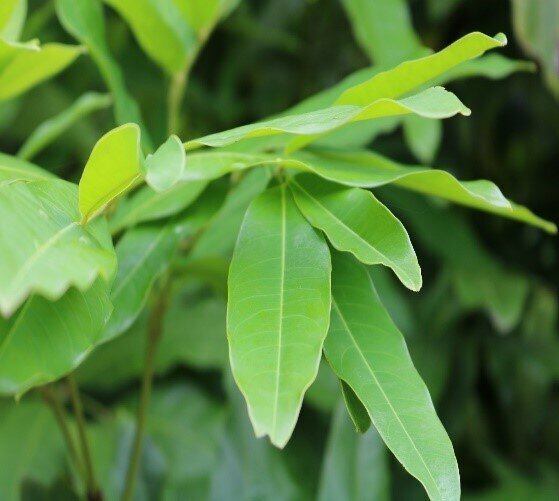 |
|||
| 399. Scindapsus officinalis (Roxb.) Family: ARECACEASE Local name: Gaj Pipadi, Kunha Kudadi, Gaj Pipal Flowering & Fruiting: May-July Ecology: Frequent, epiphytic on Mangifera indica Linn. And grow on exposed rocks. Description: Stout, epiphytic, raphidophorous climbers; stems woody. Leaves broadly elliptic or ovate, fleshy, with dilated or winged petiolar sheaths. Medicinal Uses: In Ayurvedic system this plant used for the treatment of diarrhea, worm infestation and as an antipyretic. Flowers are fried with rectified butter (Ghee) and given twice a day for one month in the treatment of tuberculosis and lungs diseases. Flowers are pasted and applied on the part affected by rheumatism. IUCN Status: |
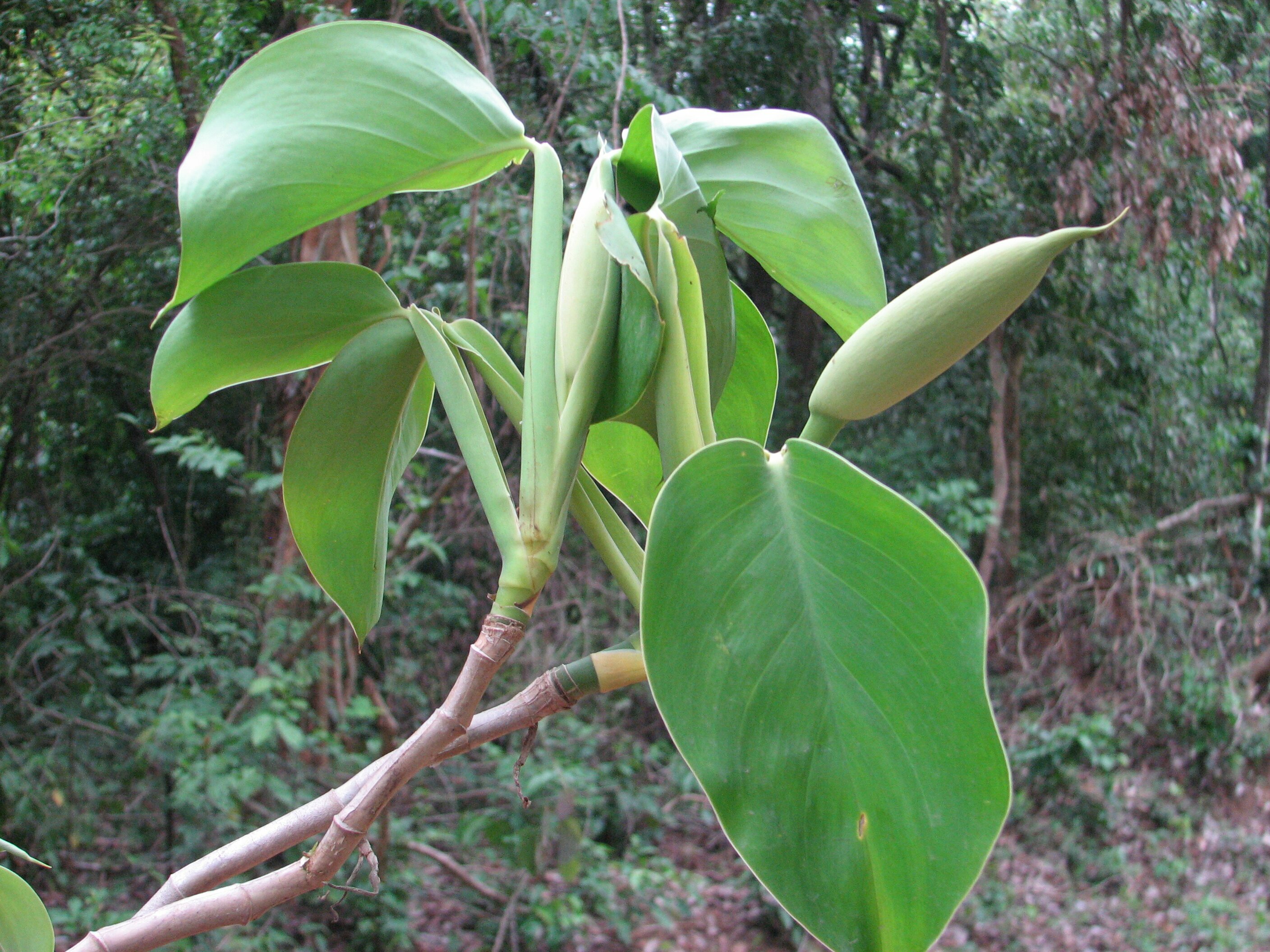 |
|||
| 400. Schleichera oleosa Lour. Family: SAPINDACEAE Local name: Kusum, Baru, Pagada Flowering & Fruiting: April-July Ecology: Quite abundant in dry deciduous forests. Medicinal Uses: Powdered seeds are applied to wounds and ulcers of cattle to remove maggots. The bark is astringent and is used against leprotic ruptures, skin inflammations and ulcers, while an infusion is taken against malaria. The bark contains about 10% tannin and the analgesic compound lupeol. The antitumor agents betulin and betulic acid have also been isolated from it. In traditional medicine, the oil obtained from the seed is applied externally to cure itching, acne and other skin afflictions. Massaging the oil into the scalp is said to promote the growth of hair lost through baldness. The pulp of the fruit is astringent and appetite inducing. A piece of garlic and ginger is soaked in seed oil of the plant for 7days. This oil is used to massage on the body of the patient suffering from rheumatism and gout till cure. IUCN Status: |
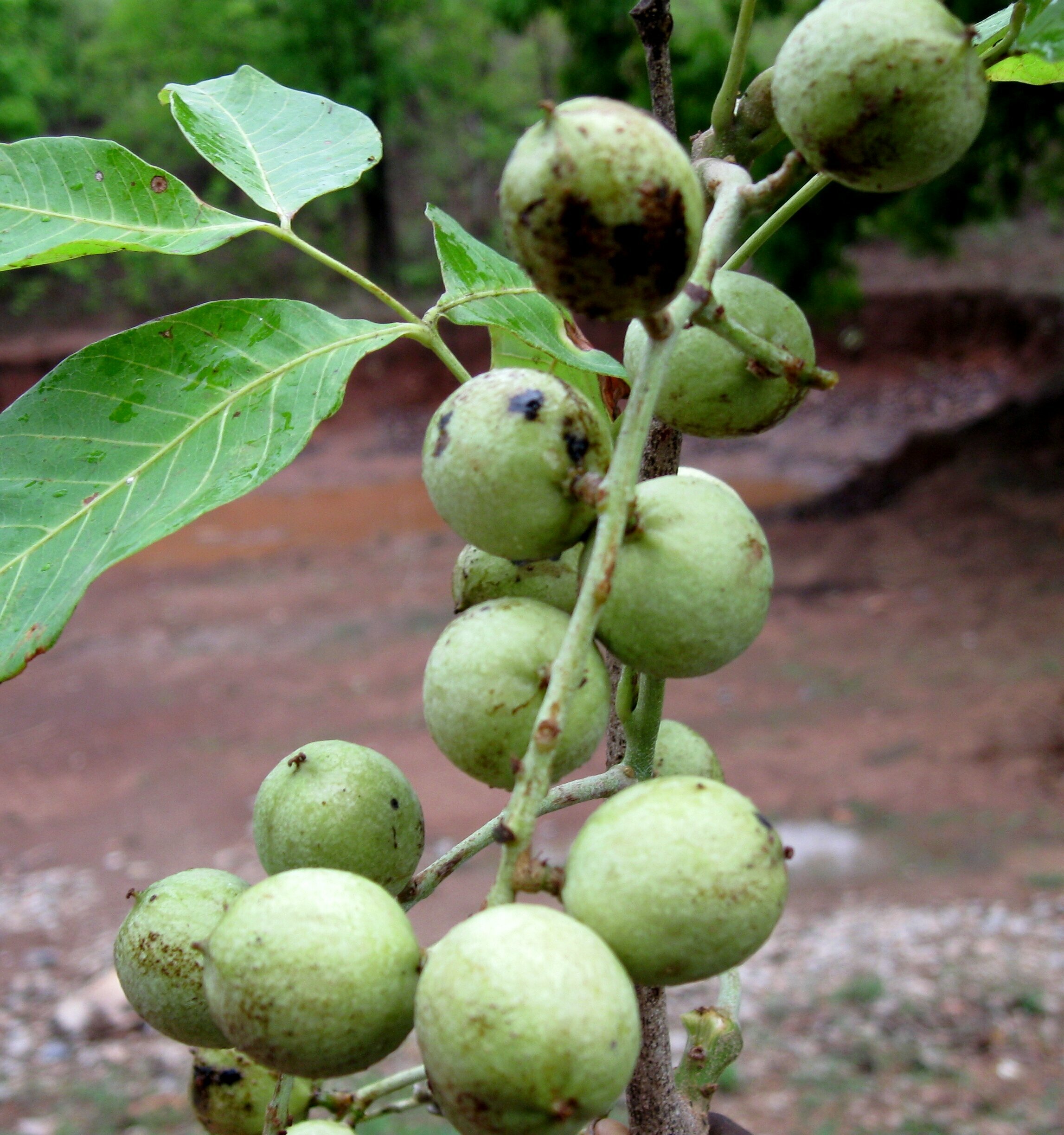 |
|||
| 401. Scleria terrestris (Linn.) Fassett Family: CYPERACEASE Local name: Chhulia Flowering & Fruiting: March-June Ecology: Abundant on hill slopes under shade. Description: Robust herbs with stout rhizome. Stems polished. Leaves spreading 3-fariously, sheaths 3-winged. Partial and terminal panicles rigid, pyramidal, rachis angled or winged. Spikelets 1 or 2 in axils of setaceous bracts. Fruiting glume ovate. Nut ovoid, white, reticulate, tip smooth. IUCN Status: |
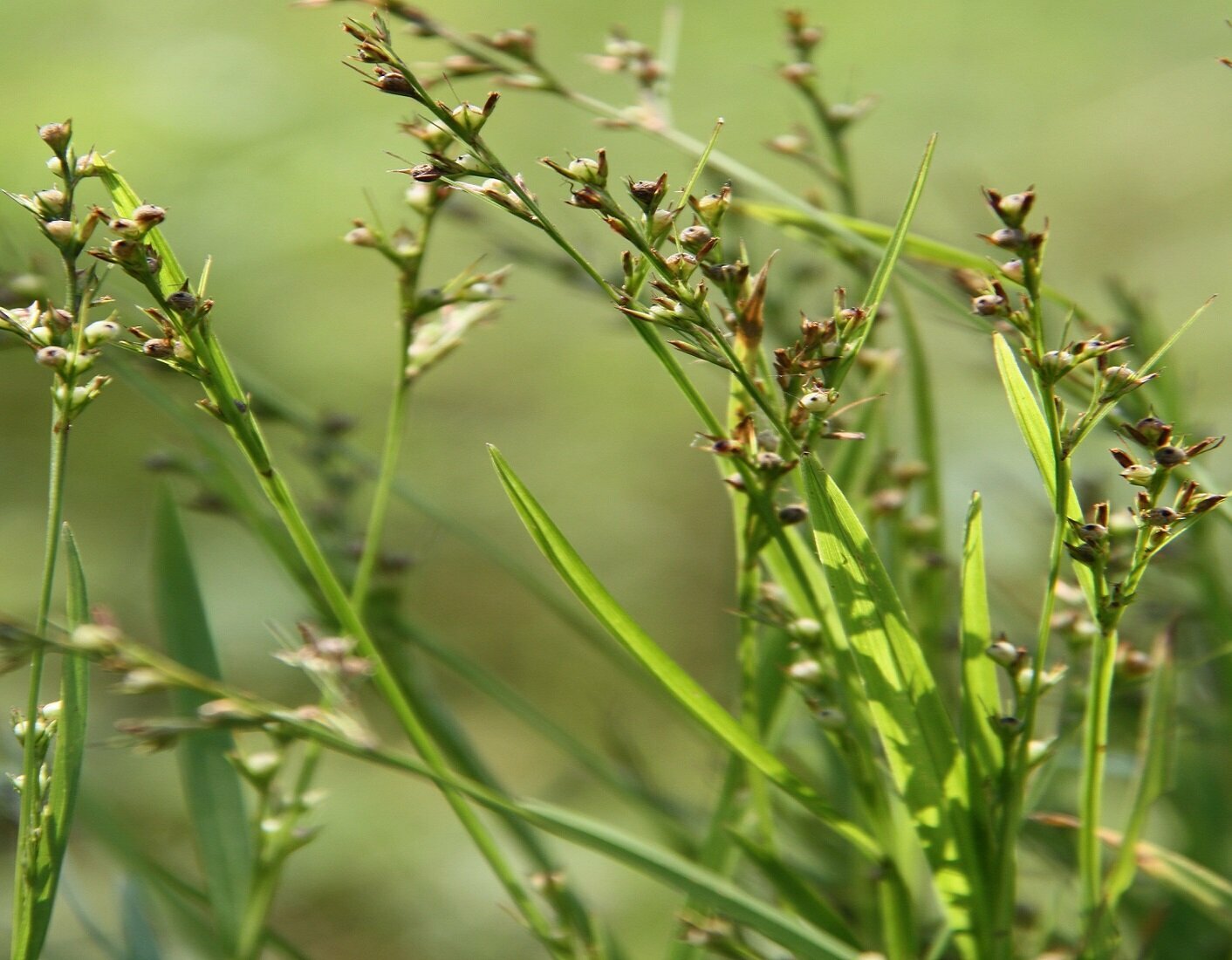 |
|||
| 402. Scoparia dulcis Linn. Family: PLANTAGINACEAE Local name: Dandiskumari Flowering & Fruiting: July-November Ecology: Very common weed of disturbed habitats. Description: Erect, branched herbs: stem angled. Leaves subsessile, opposite or 3-nately whorled, lanceolate, serrate. Flowers axillary, white, in 2-3 nate cymes. Anther cells divergent. Capsule subglobose, septicidal. Medicinal uses: It is considered a weed in many areas but used as medicinal herb for a wide range of uses including treatment for digestive problems, pulmonary conditions, fever, skin disorders, hypertension, hemorrhoids, diarrhea, dysentery, insect bites, anemia, albuminuria, diabetes, herpes, etc. IUCN Status: |
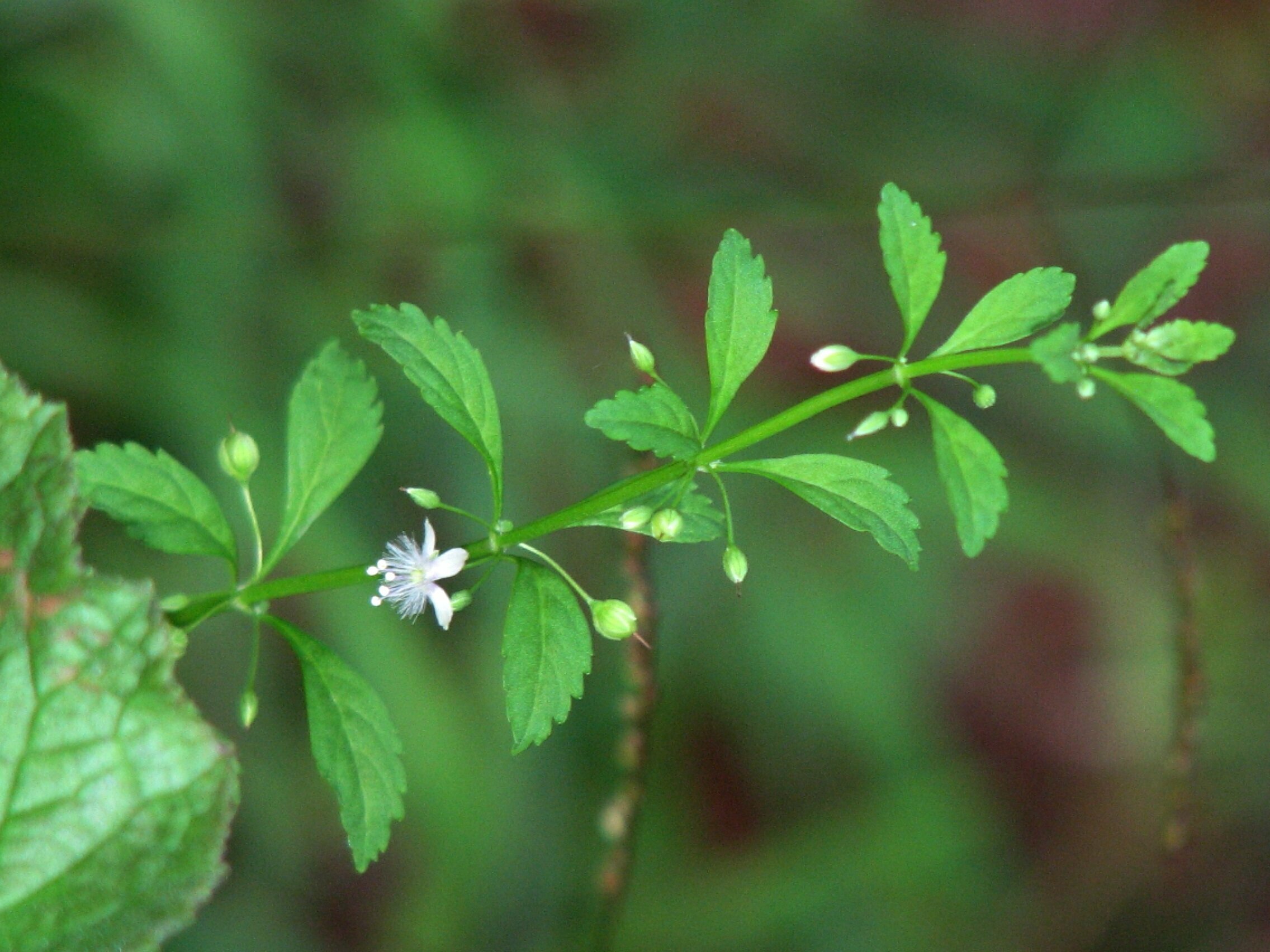 |
|||
| 403. Sebastiania chamaelia (Linn.) Family: EUPHORBIACEAE Flowering & Fruiting: July-December Ecology: Fairly abundant in fallow fields. Description: Glabrous annuals, stems angled. Leaves linear obtuse, minutely saw-edged. Flowers monoecious, minute, on short spikes, female at base and male above. Female perianth lobes ovate, fimbriate & ciliate. Capsule 3-lobed, short spiny. Medicinal uses: The significant herbal uses of Sebastiania chamaelea are the decoction of the plant in ghee is given as tonic and applied to the head in vertigo. The juice of the plant is astringent and is used as a remedy for syphilis and diarrhea. IUCN Status: |
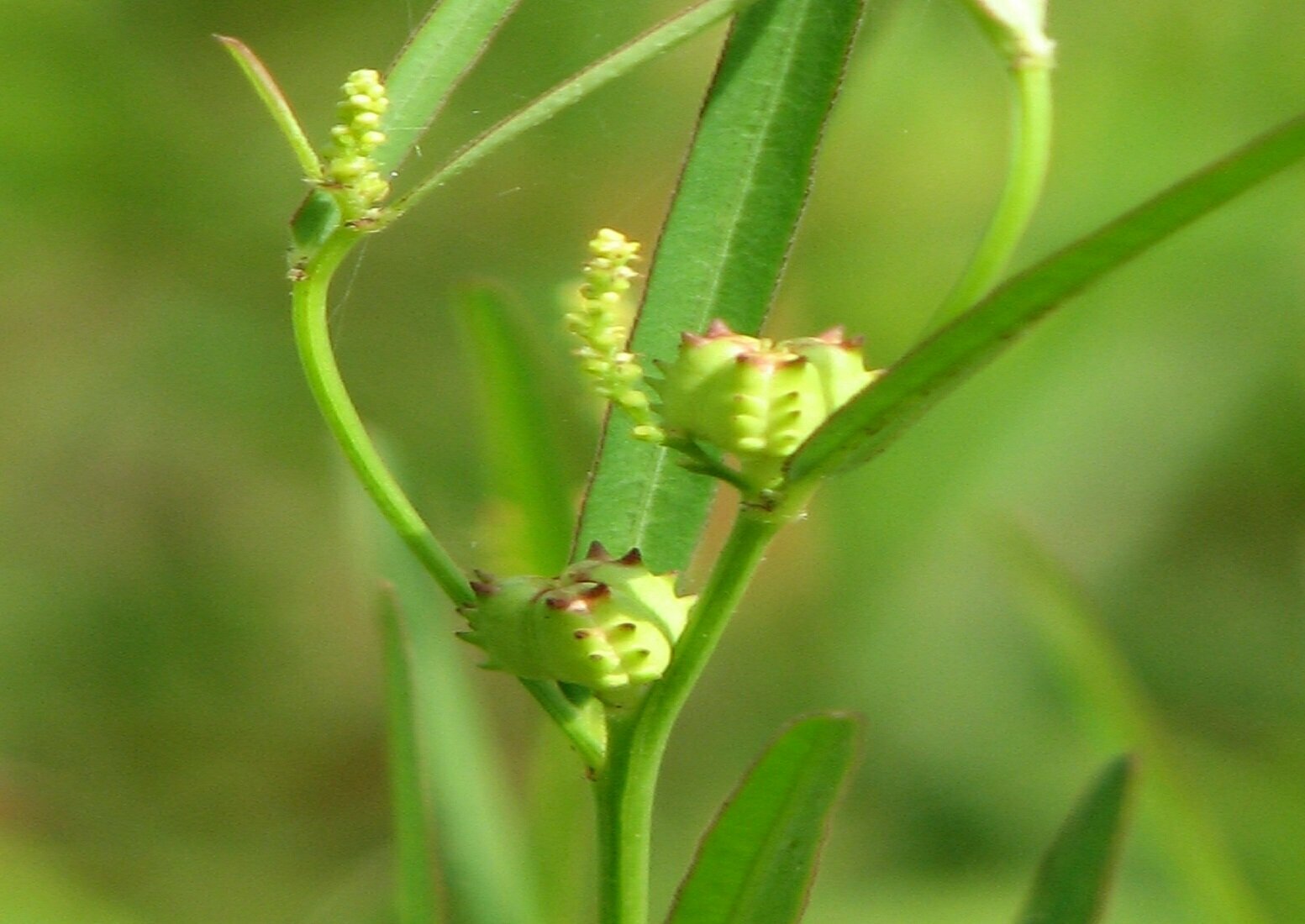 |
|||
| 404. Semecarpus anacardium Linn. Family: ANACARDIACEAE Flowering & Fruiting: August-December Ecology: Quite abundant in deciduous forests Medicinal uses: Ripe fruits are aphrodisiac, digestive and stimulant. A paste or juice of the fruit is used in the treatment of bronchitis, dysentery, fever, asthma and haemorrhoids. The pure black acrid juice obtained from the fruits is used externally to remove rheumatic pains, aches and sprains. A little of the oil is rubbed over the parts affected – it is an efficacious remedy except in such constitutions as are subject to inflammations and swellings. Mixed with garlic and other substances, the juice is used in the treatment of almost every sort of venereal complaint. The bark is mildly astringent. A paste of the seed, mixed with honey, is used in the treatment of gastric troubles. The juice of the seeds is applied externally in the treatment of ringworm and severely chapped feet. The juice of the seeds has been tested as a possible anticancer agent. An oil obtained from the seeds is used to treat skin eruptions. The juice of the root is considered to be effective in causing sterility in women. The latex is applied externally in the treatment of headaches, skin diseases and scabies. IUCN Status: |
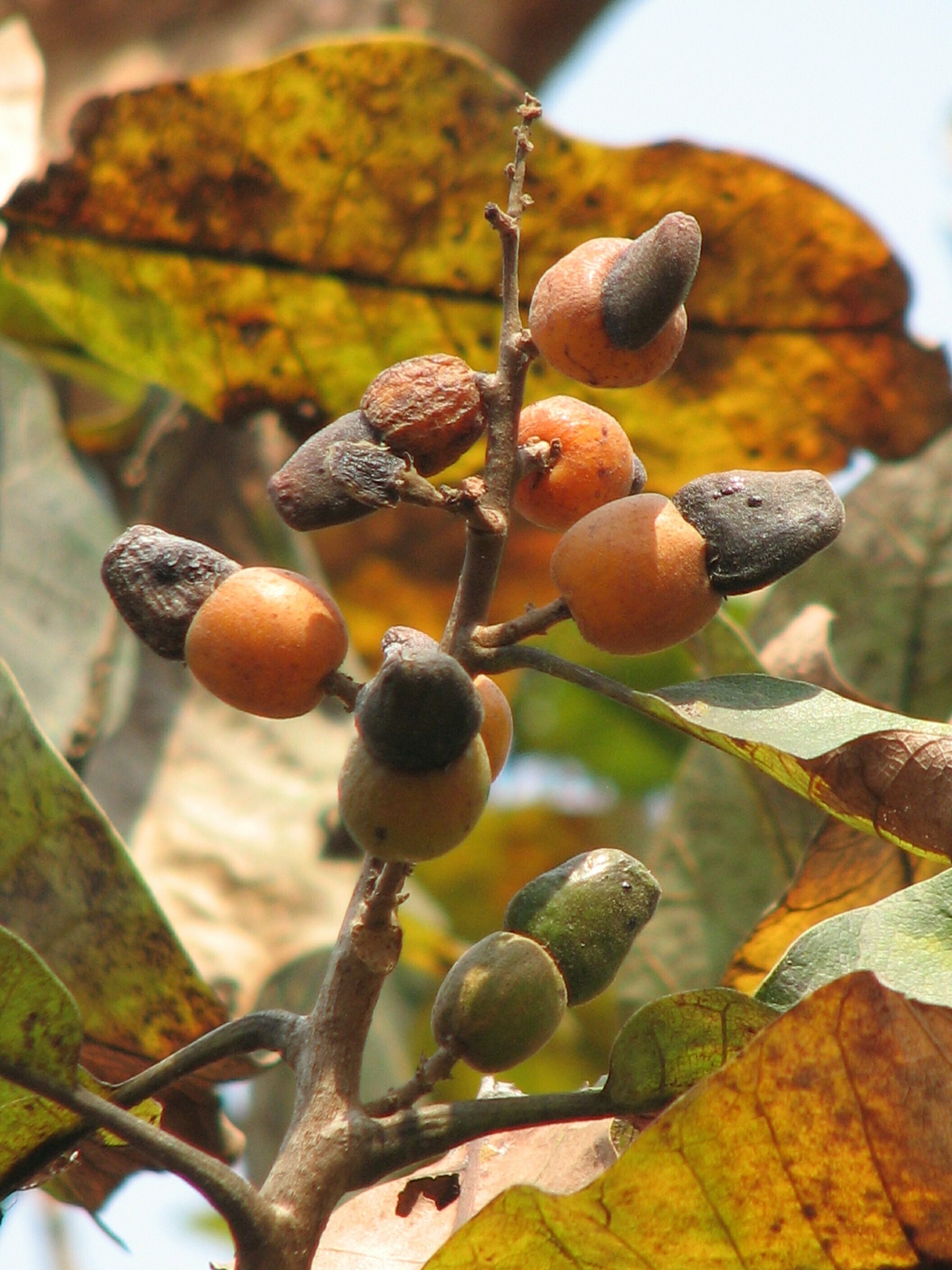 |
|||
| 405. Senna hirsuta L. Family: FABACEA Local Name: Ban Chakunda, Sarp Ganda Description: Erect undershrubs, densely hirsute all over. Leaves to 18 cm long, usually with 3-5 pairs of leaflets; leaflets 3.5-6 x 2-3.5 cm, ovate or elliptic, base rounded, apex acuminate, silky hairy on both sides; rachis 8-12 cm long, a large black gland on the rachis just below the lowest leaflets; stipules 5-8 mm long, linear-lanceolate. Medicinal uses: Seeds are pasted with water and applied on skin diseases. Seeds are pasted and applied on snake bitten part of the body. It is believed that the snake will not come up to 30 feet, if planted near the house. A tincture of the root is rubbed onto rheumatic areas. IUCN Status: |
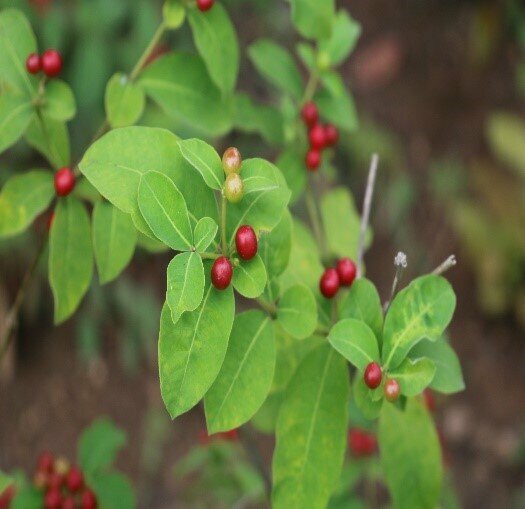 |
|||
| 406. Sericocalyx scaber (Nees) Family: ACANTHACEAE Ecology: Occasional, along streams in shady habitats. Flowering and Fruiting: February-April Description: Hispid or strigose herbs. Leaves opposite, elliptic or obovate, entire or crenate, scabrid. Flowers tubular, yellow, in bracteate capitate spikes. Corolla villous within. Capsules downy, 4-seeded. IUCN Status: |
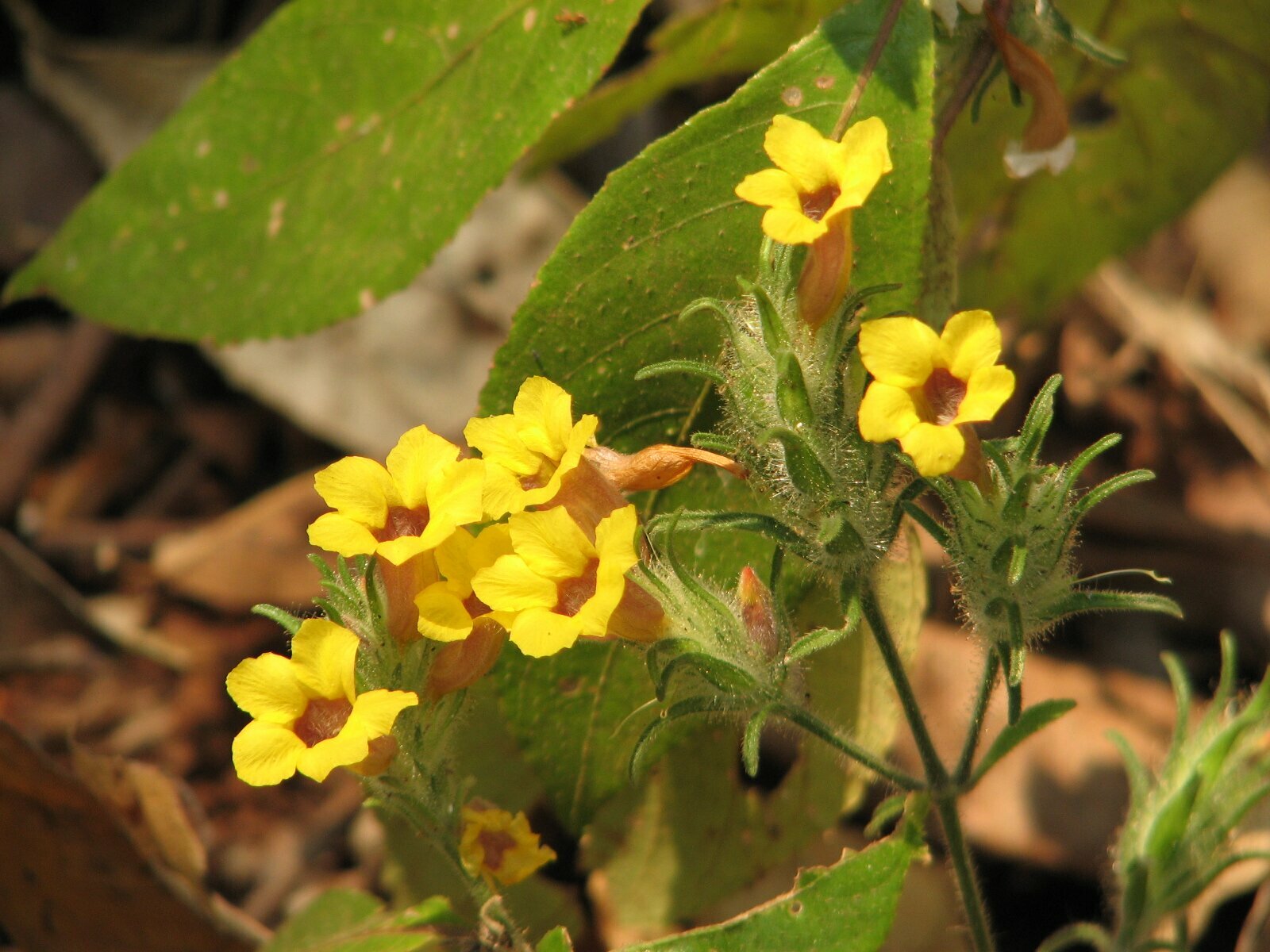 |
|||
| 407. Sesbania grandiflora L. Family: CUCURBITACEAE Ecology: Quite common in thickets and hedges. Flowering and Fruiting: August-November & November-December Description: A true multi-purpose tree, providing a range of foods, medicines, timber, gum and tannins, mainly for local use. The plant is cultivated in many tropical areas as an ornamental, a green manure crop, in soil reclamation schemes and for its many useful properties. It is sold as a vegetable in local markets. Medicinal Uses: Nectar inside the flower is dropped in to eyes to reduces and any type of infection. Seeds are powered and given with honey in fits and to increase memory power. The root is a well-known medicine. IUCN Status: |
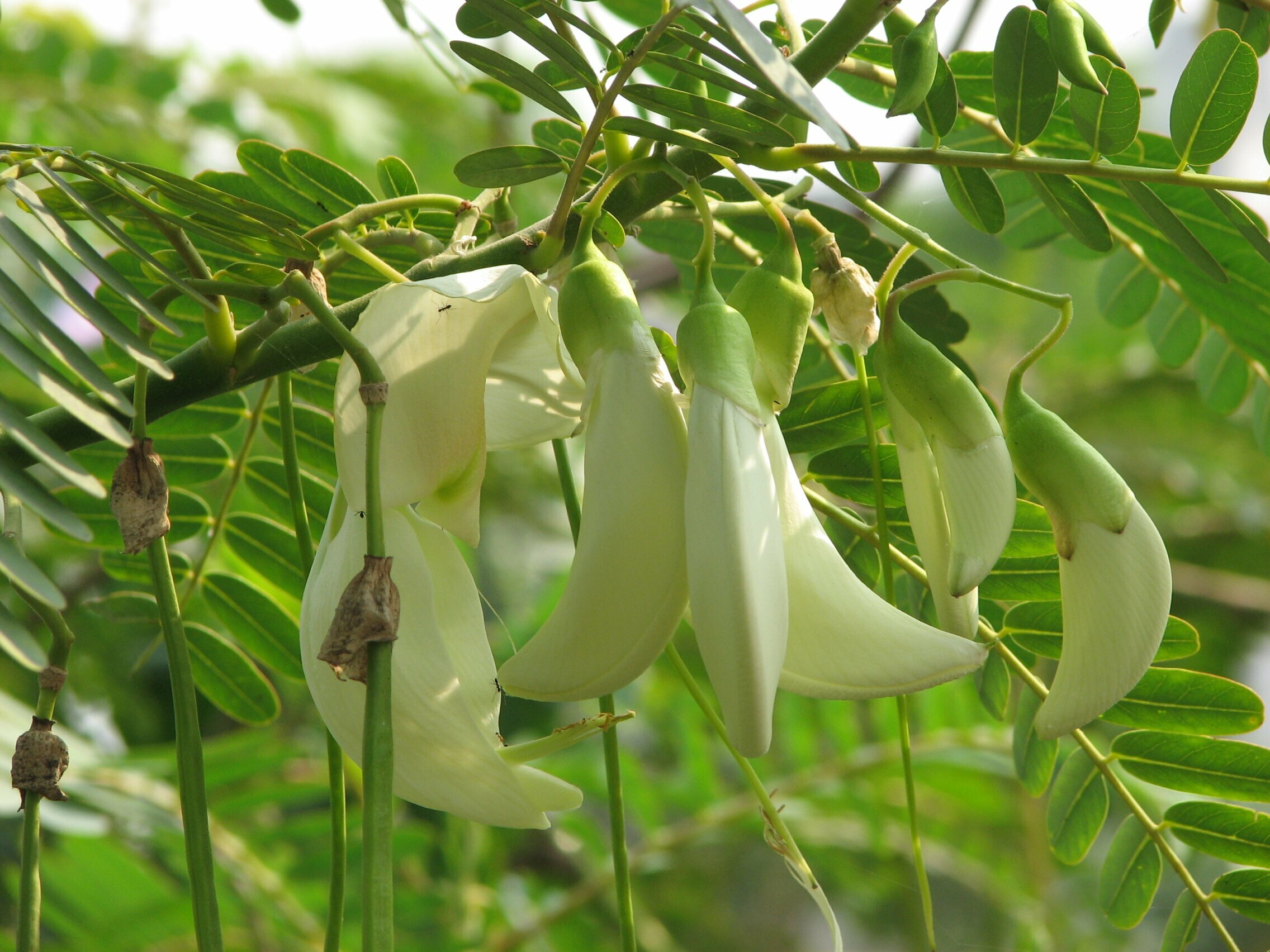 |
|||
| 408. Setaria pumila (Poir.) Family: POACEAE Ecology: Common on lateritic grassy plateau during monsoon. Flowering and Fruiting: August-November Description: Caespitose grass, stems glabrous. Leaves narrow, hairy above, villous at base, tip filiform. Panicles cylindrical, spiciform, dense, erect. Spikelets ovoid; bristles 9-12, unequal, barbellate, often yellow, barbs spreading or erect. Grain pale-yellow. IUCN Status: |
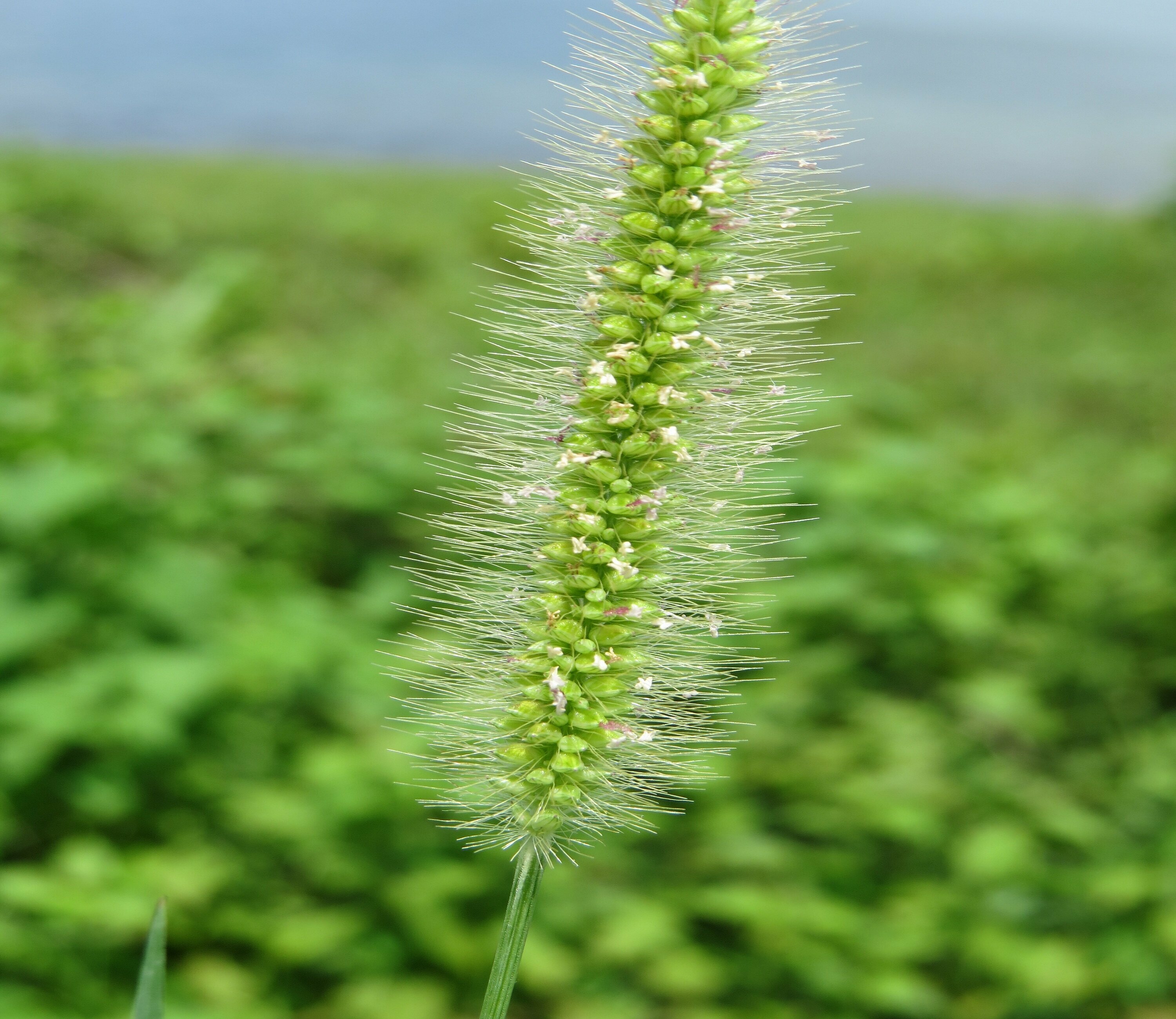 |
|||
| 409. Setaria verticillata (Linn.) Family: POACEAE Ecology: Common on dilapidated temple walls Flowering and Fruiting: September-January. Description: Weak, caespitose grass. Leaves small, narrow. Panicles cylindrical, tapering. Spikelets dense but appearing subverticillate; bristles long, retrorsely hispid with reflexed barbs. Glumes apiculate. IUCN Status: |
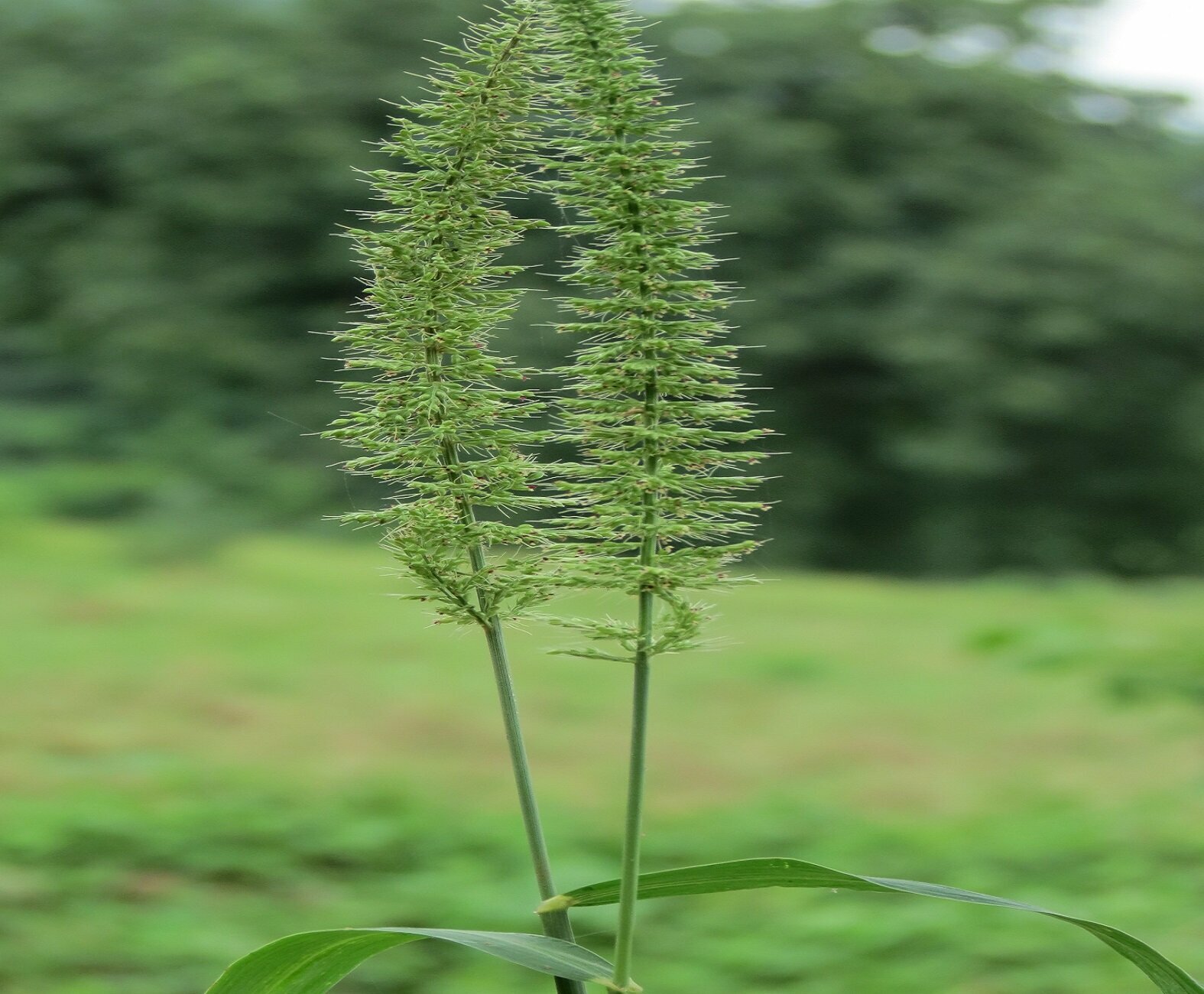 |
|||
| 410. Sida acuta (Burm.f.) Family: MALVACEAE Local Name: Bazra Muli, Bazramuli Flowering and Fruiting: September-December Description: Erect subshrubs to 70 cm tall; branches distichous. Leaves 3-6 x 1-2 cm, lanceolate to ovate, base truncate, margins serrate, entire towards base, apex acute or acuminate, sparsely hirsute to glabrate on both surfaces, 3-nerved at base; petiole to 4 mm long; stipules 5-8 x 1-1.5 mm, unequal, one lanceolate, the other linear. Medicinal Uses: Flower head are chewed in the treatment of toothache and when feeling cold sensation. All parts (Panchang) is powered and given in the treatment of gout, rheumatism and paralysis. It is known as ‘Bala’ and used in an ayurvedic powder ‘Baladi mohak’ (54 kinds of powder). Whole plant is boiled with water and given irregular menstruation cycle and also in rheumatism and sperm debility. IUCN Status: |
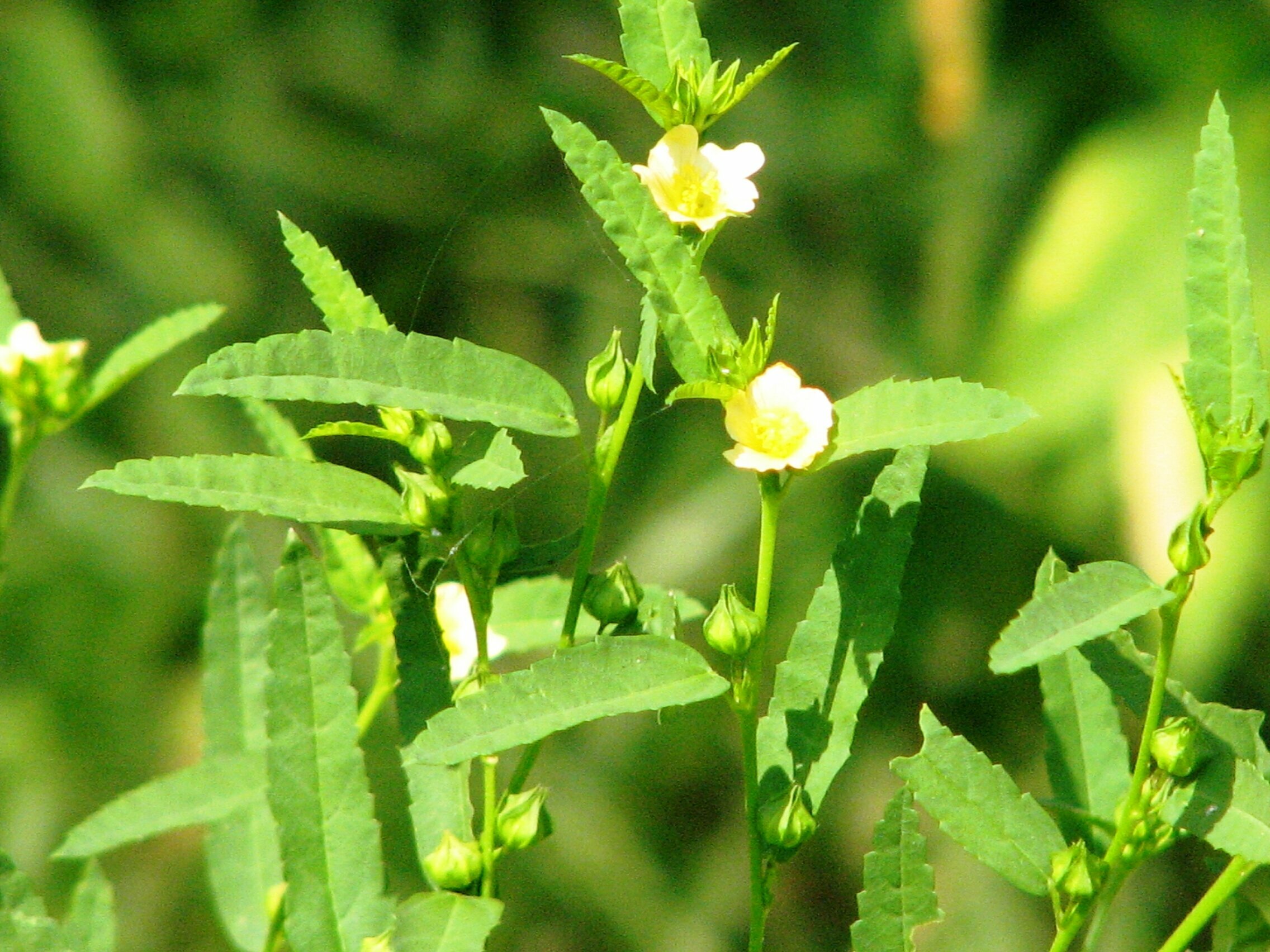 |
|||
| 411. Sida cordata (Burm.f.) Family: MALVACEAE Local Name: Vis Khapara, Biskata Description: Prostrate herbs; branches slender, trailing. Stem, petioles and pedicels pubescent with minute stellate hairs intermingled with simple hairs. Medicinal Uses: Leaves are pasted with little water and applied on swelling at the bed times. Plant paste is applied on the part stung by scorpion or bitten by honey bee and ‘Bhonra’. The juice of the plant is applied to boils and pimples. The root is tonic. The juice of the root is used to treat indigestion. A paste of the root is applied as a poultice to remove pus from boils and wounds. It is also used in the treatment of gonorrhoea and other venereal diseases. The juice of the leaves is used to treat cuts and wounds. IUCN Status: |
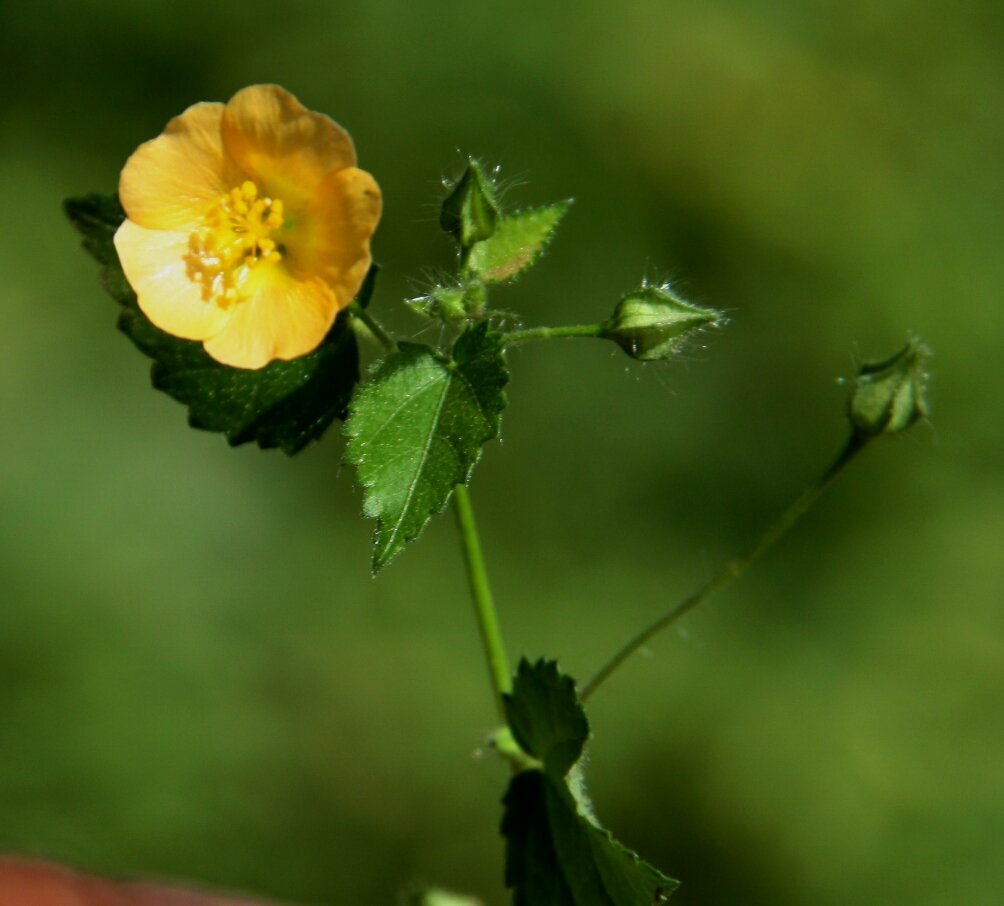 |
|||
| 412. Sida cordifolia Linn. Family: MALVACEAE Flowering & Fruiting: November-January Ecology: Abundant on floor of forest blank and fallow lands. Description: Erect, pubescent herbs. Stipules setaceous. Leaves ovate, oblong, crenate, velvety tomentose. Flowers in terminal sub-corymbose cymes or axillary and solitary. Sepals densely pubescent outside, cocii 10: arista exerted out of calyx. Medicinal Uses: This plant is used to treat asthma, tuberculosis, the common cold, flu, headaches, nasal congestion, cough and wheezing, urinary tract infections, sore mouth, and fluid retention. IUCN Status: |
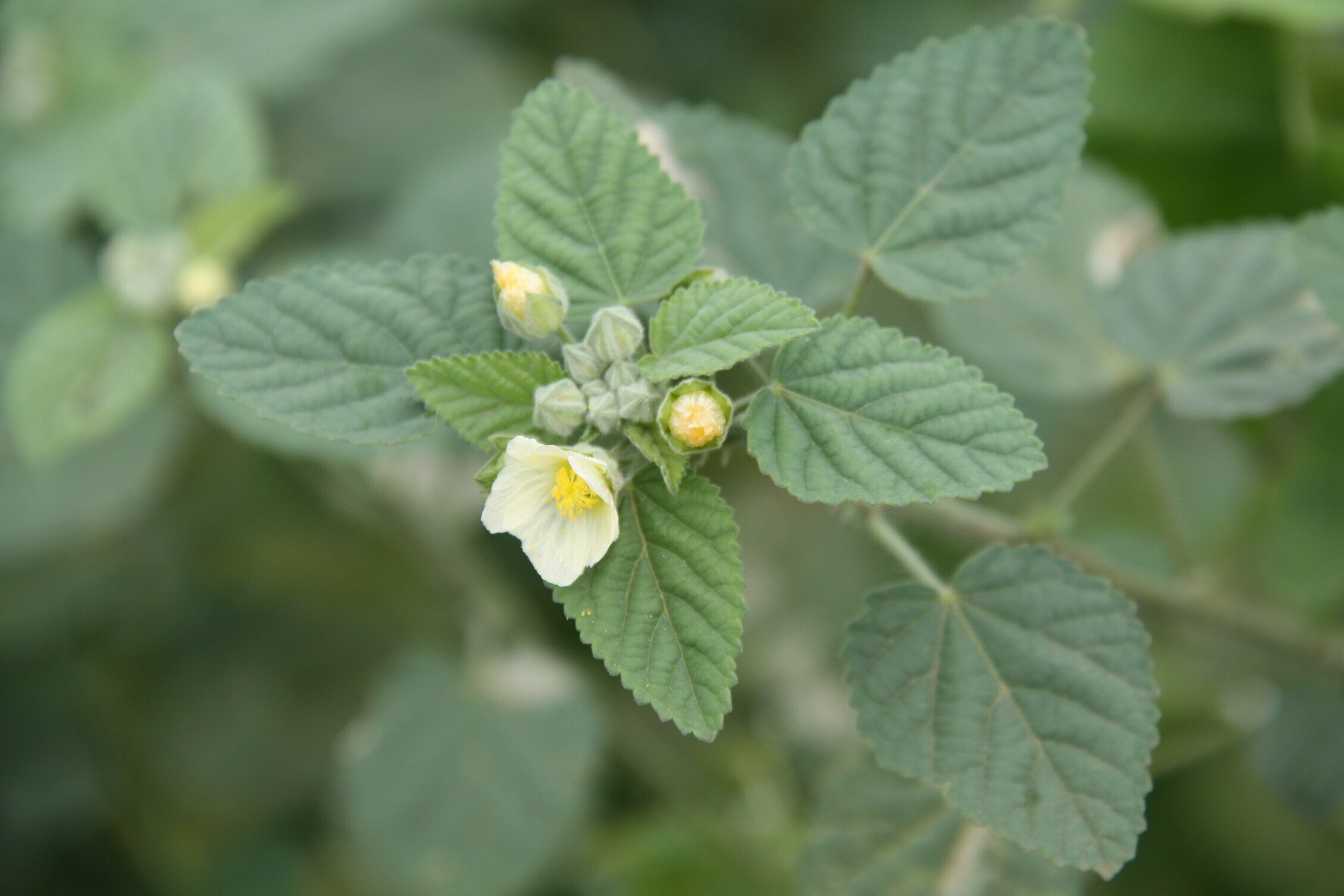 |
|||
| 413. Sida rhombifolia Linn. Family: MALVACEAE Local Name: Bazramuli Flowering & Fruiting: September-Dcember Ecology: Very common in forest glades & open places Medicinal Uses: A decoction of the whole plant is used as a treatment for fevers. A paste of the plant is used to treat indigestion. It is also used as a poultice in the treatment of headaches, boils, cramps, rheumatism, toothache, chapped lips and pimples. The plant is ground and mixed with soft grease and sugar to make a poultice that is applied to soften abscesses and release pus. The leaves are diuretic. An infusion is used to treat dysentery. The juice of the leaves is mixed with vinegar to make an anti-inflammatory and digestive remedy. A decoction of the leaves is used to bathe wounds. The leaves are applied to the head as a poultice to remedy headache. The yellow flowers are eaten with wild ginger in order to ease labour. The root is scraped into sea water and the mixture drunk as a treatment for diarrhoea, dysentery and abdominal upsets. The root paste is applied on the paining joints of human being. IUCN Status: |
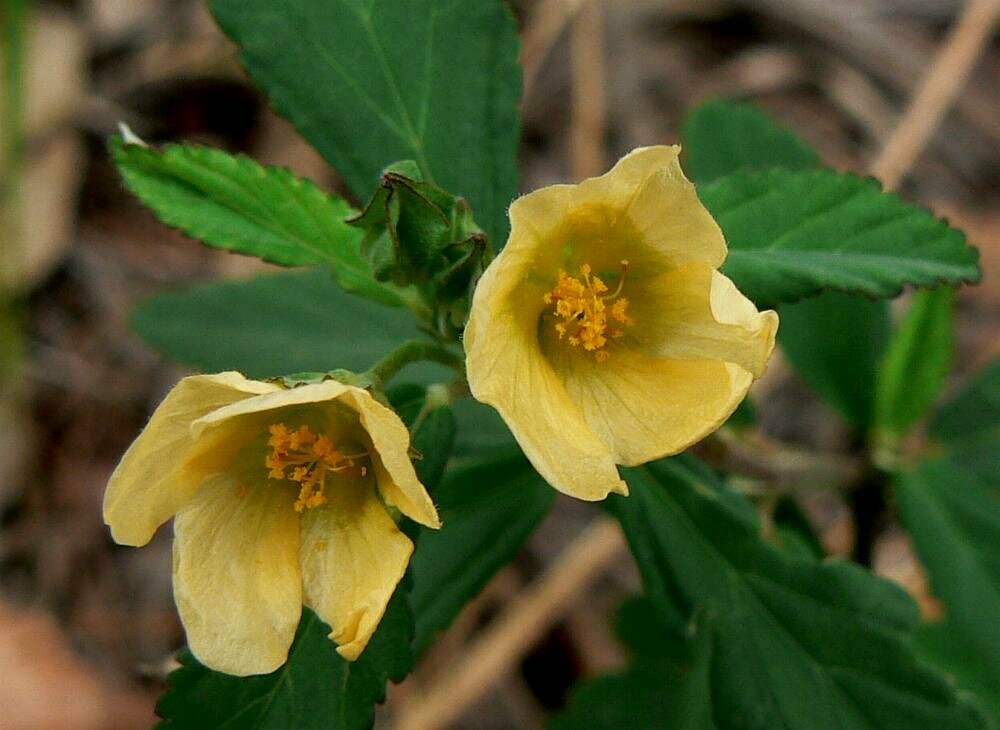 |
|||
| 414. Smilax zeylanica L. Family: SMILACACEAE Local Name: Mutari Description: Climbing shrubs; stem prickly. Leaves 6-12 x 3-6.5 cm, ovate-oblong or ovate-lanceolate, base rounded, acute to shortly cuspidate at apex, coriaceous, glabrous and glossy, 3-5-ribbed from base; petiole to 2 cm long, tendril from either sides of petiole. Umbels axillary, 1-3; peduncles 2-3 cm long. Stamens in male flowers 6, free; filaments flat, apex callose; pistillode 0. Ovary in female flowers 3-lobed, 3-celled; ovules 1 or 2 per cell; style 3-fid; staminodes 3-6. Berry 0.8-1 x 0.6-0.8 cm, subglobose. Seeds 1-3, 3-4 mm across, globose. Medicinal Uses: Fresh roots are pasted and given with milk for 21 days to barren women for conceiving. It is also given to all kind of urinary diseases and gynaecological disorders. Twigs are used as tooth stick (Kathi) to the children who suffering from bed wetting trouble. IUCN Status: |
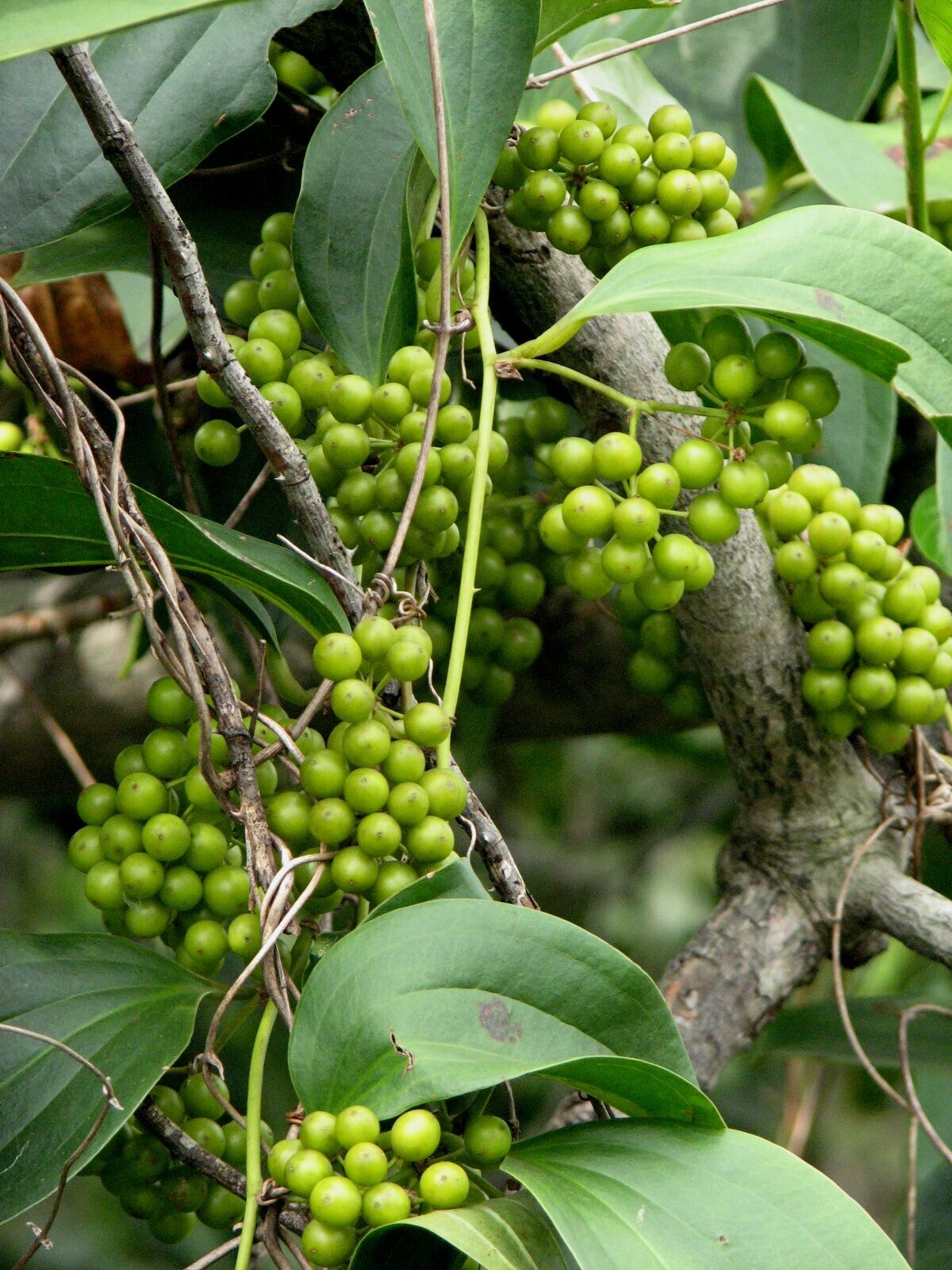 |
|||
| 415. Smithia sensitiva Family: FABACEAE Flowering & Fruiting: September-December. Ecology: Common in marshy habitat. Description: Diffuse herbs. Branches with spreading hairs. Leaflets oblong-obovate. Calyx rigid, hairy, both lips entite acute. Joints of loment usually 8, slightly papillose. Medicinal Uses: Smithia sensitiva is a low growing annual herb 30-90cm long and it is distributed widely in Hilly areas. The whole plant is traditionally used as Refrigerant, Galactogogue and as lotion in headaches. The juice of the root is used in the treatment of fevers. A decoction of the herb is given as a treatment for gravel and difficulty in micturition. Leaves are febrifuge, galactagogue. A lotion made from the leaves is applied to the head to relieve headaches. IUCN Status: |
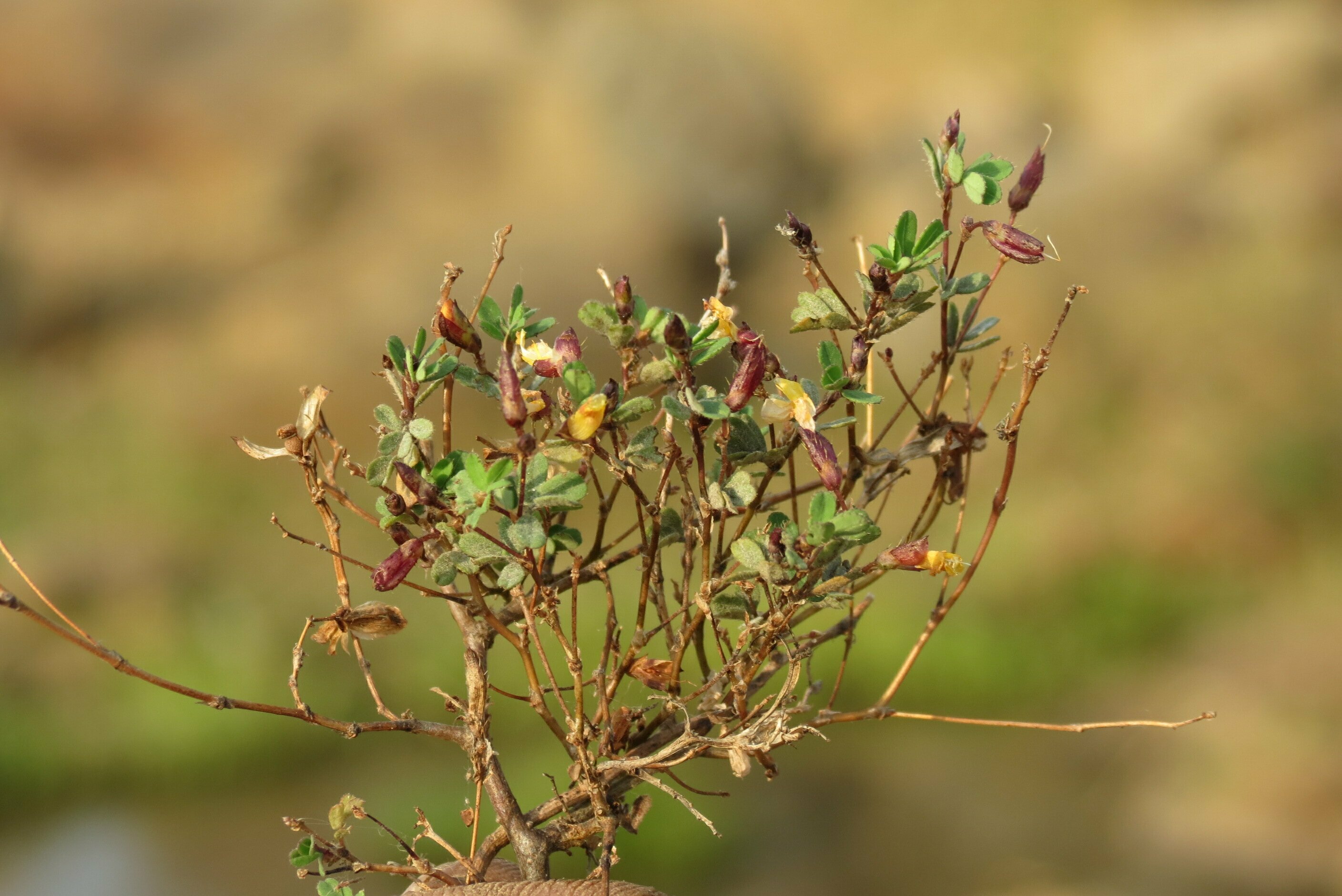 |
|||
| 416. Solanum indicum L. Family: SOLANACEAE Local name: Birhati, Denga Bheji Description: A shrub up to l0 ft high, branches herbaceous. Stem and branches often with curved prickles; young parts, inflorescene, leaves with stellate tomentose. Leaves ovate or oblong, serrate or obtusely lobed. Flower bluish- purple in extra-axillary cyme. Fruit berry, globose, smooth about an inch in dia Medicinal Uses: All parts are given with honey in the treatment of cold and cough. It is one of the ingredients of a well-known Ayurvedic drug ”Dasmul”. IUCN Status: |
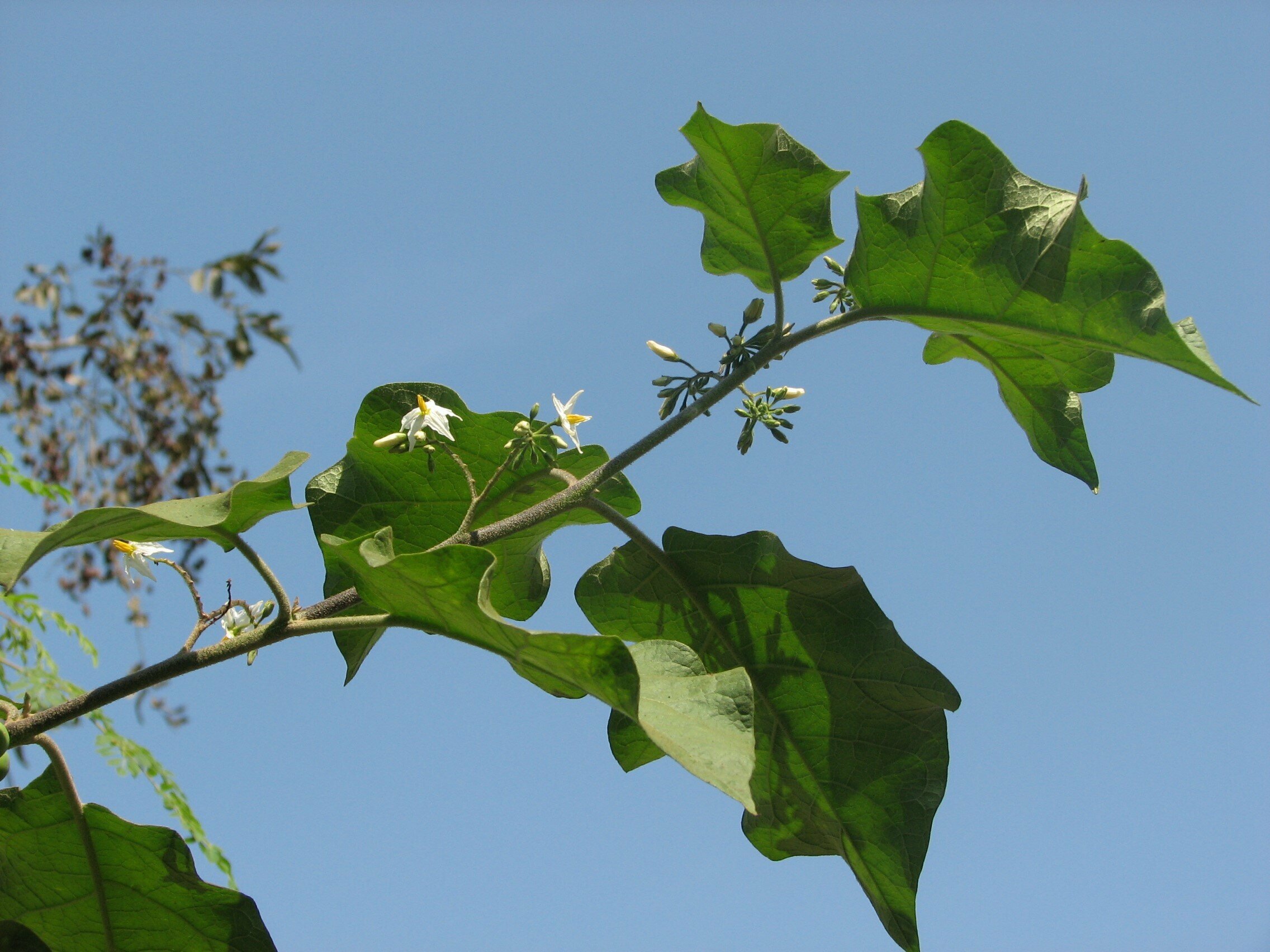 |
|||
| 417. Solanum nigrum Linn. Family: SOLANACEAE Local name: Lunnulania Flowering & Fruiting: July-December Ecology: Occasional, in open waste places. Description: Annual herbs. Leaves ovate, decurrent on the petiole, entire or slightly toothed. Flowers white, in axillary or extra-axillary umbellate oymes. Berry globose, black. Medicinal Uses: It is medicinally used in the management of several ailments, such as pneumonia aching teeth, stomache ache, tonsilitis, wing worms, pain, inflammation, fever, tumor, as tonic, as antioxidant, as anti-inflammatory, as hepaprotective, as diuretic, and as antipyretic. IUCN Status: |
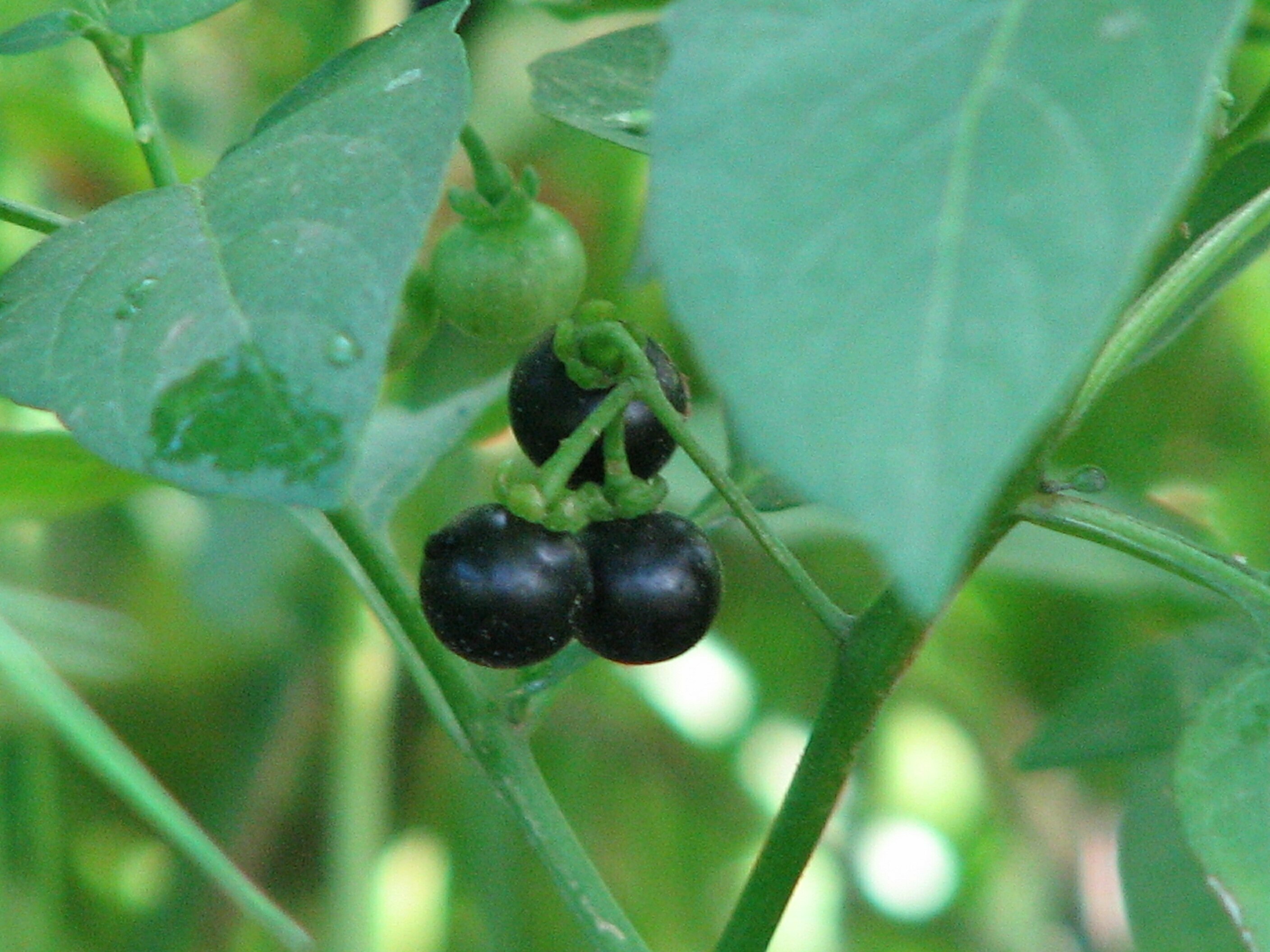 |
|||
| 418. Solanum virginianum L. Family: SOLANACEAE Local name: Akranti Description: Branched diffuse herbs, stems glandular hairy; prickles 2 cm long, spinescent, gradually or not broaden towards the base, present on all parts except berries. Leaves to 13 x 10 cm, lyrate, membranous; petioles to 8 cm long. Peduncle absent. Flowers 2-4 together, axillary; pedicel 2 cm long, stout; corolla 18 mm across, sparsely hispid. Berry 25 mm across, reddish, smooth; seeds flat, not pitted. Medicinal Uses: Whole plants dried, powdered and given in the treatment of cough and asthma. Boiled decoction of dry plant is prescribed for stomach and liver complaints. IUCN Status: |
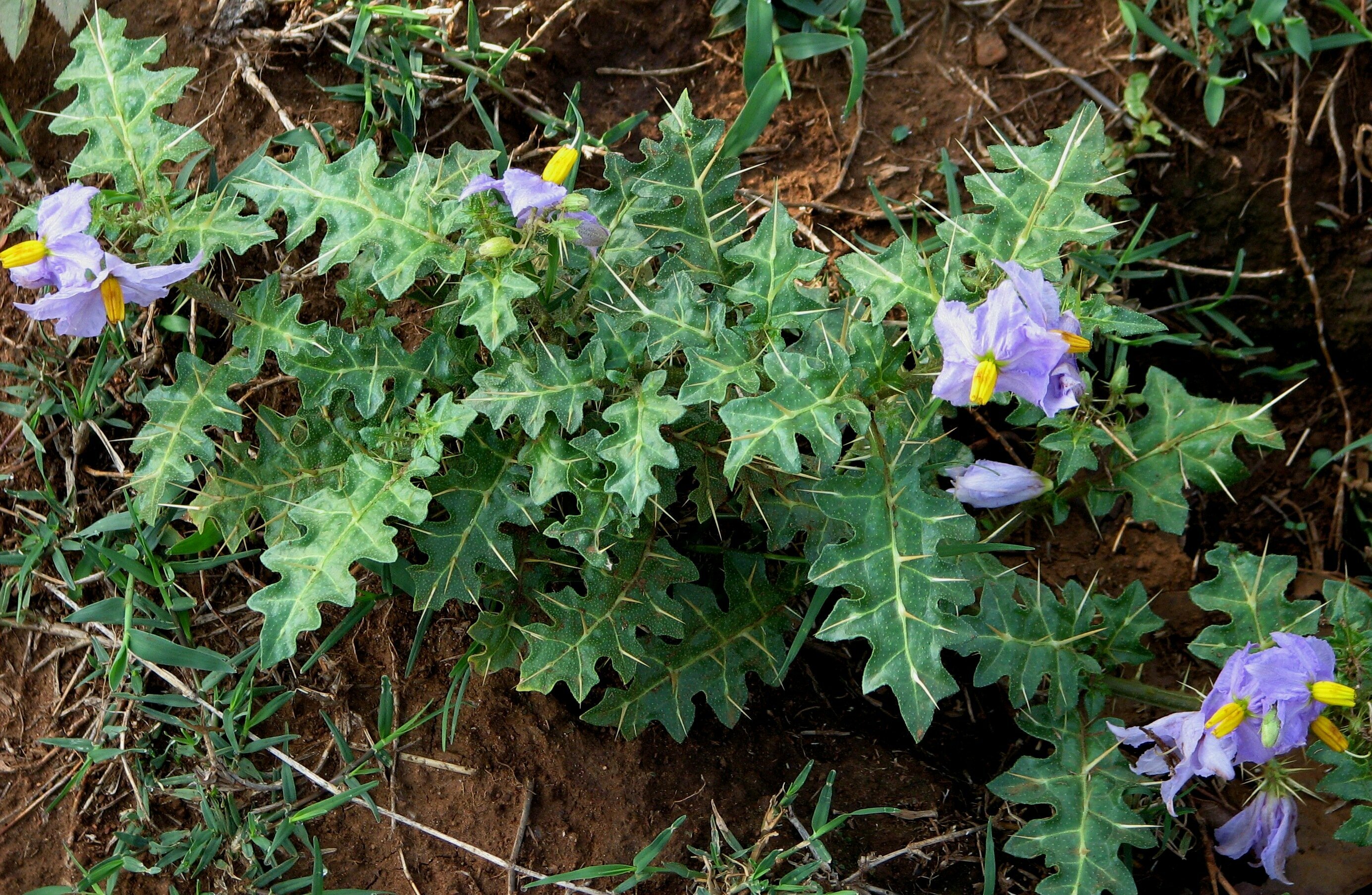 |
|||
| 419. Solena amplexicaulis (Lam.) Family: CUCURBITACEAE Local name: Ban Churuda Flowering & Fruiting: June-December. Description: A perennial plant growing throughout India up to 2100 m, with several tuberous roots, leaves polymorphous, flowers small, yellow, fruits oblong-ovoid, cylindrical, brown, ribbed, bright red when ripe. Creeping cucumber is a climbing perennial herb with several tuberous roots spindle-shaped, 1.5-2 cm in diameter. Stem and branches hairless. Medicinal Uses: It is prescribed as tonic for vigor and vitality. IUCN Status: |
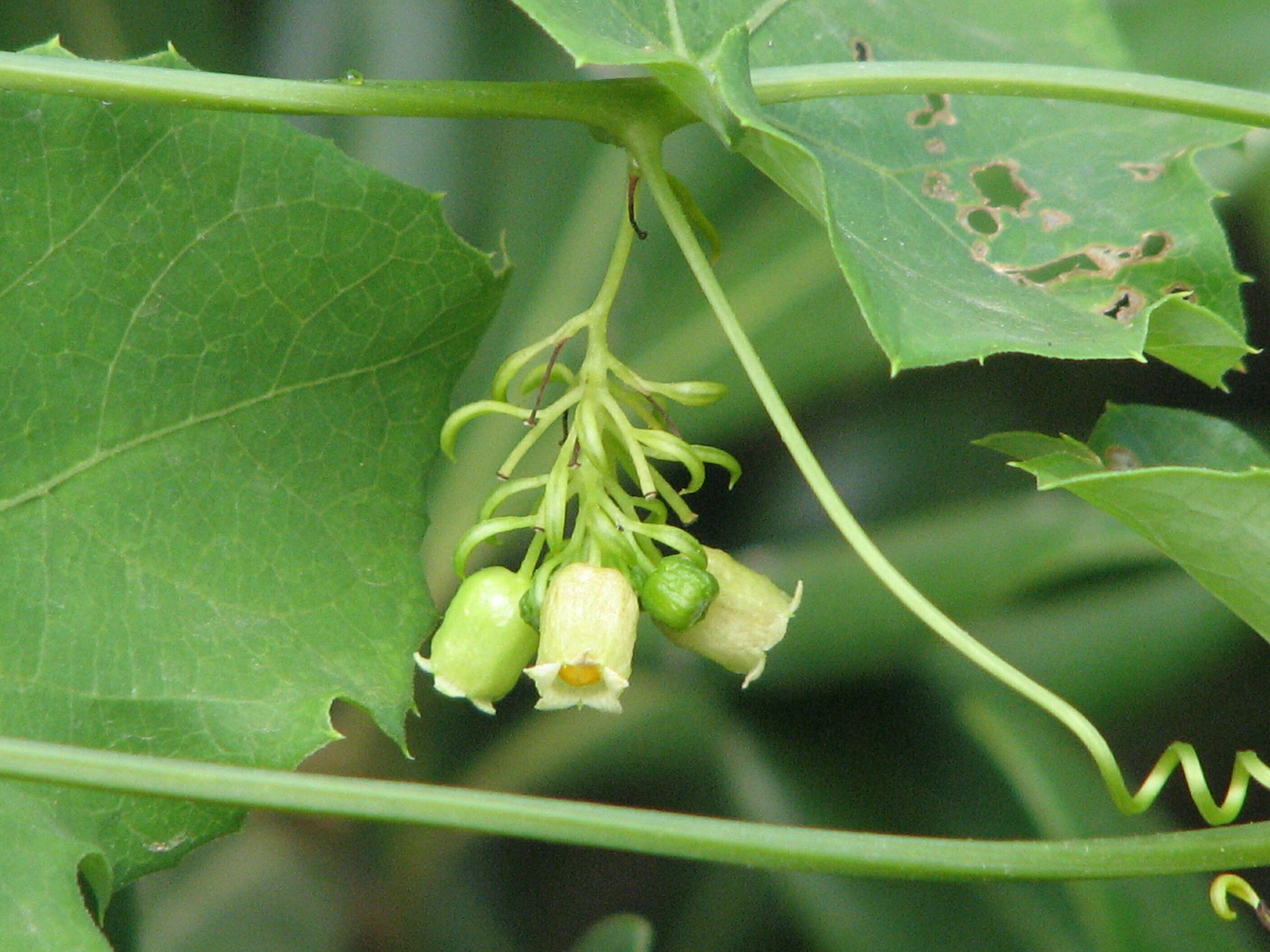 |
|||
| 420. Spathodea campanulata Family: BIGNONIACEAE Local name: Phul Gachh Flowering & Fruiting: January-February & September-December Ecology: Grows in rich and light soil. Grows best in dry regions with cool winters. Medicinal Uses: The unopened flower buds contain a sweet, watery liquid that is considered to be tonic. The bark has laxative and antiseptic properties. The bark is chewed and sprayed over swollen cheeks. The bark may also be boiled in water used for bathing newly born babies to heal body rashes. The seeds, flowers and roots are used as medicine. The plant has many medicinal uses, both where it is native and introduced. Extracts of the bark, leaves and flowers are used to treat malaria, HIV, diabetes mellitus, oedema, dysentery, constipation, gastrointestinal disorders, ulcers, skin diseases, wounds, fever, urethral inflammation, liver complaints and as a poison antidote. It may be effective as a malaria prophylactic and in the control of Aedes mosquitoes. IUCN Status: |
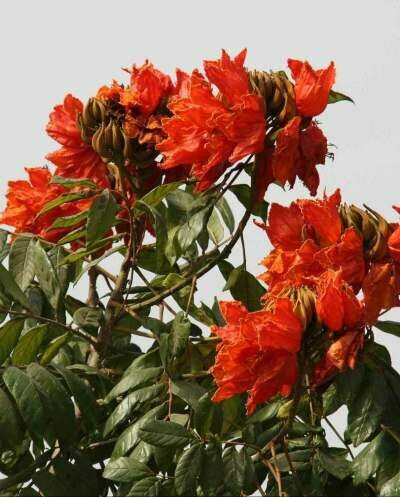 |
|||
| 421. Spermacoce pusilla Wall. Family: RUBIACEAE Flowering & Fruiting: Round the year & October – December Ecology: Very common weed in wastelands and open places. Descrition: Annuals; thickened at nodes, 4-angled. Leaves linear oblong or oblong lanceolate, scabrid hispid above, subsessile, acute or acuminate. Flowers white, in axillary or terminal fascicles. Sepals bristled. Fruit septicidal. Seeds deep brown. IUCN Status: |
 |
|||
| 422. Sphaeranthus indicus Linn. Family: COMPOSITAE Flowering & Fruiting: November – March Ecology: Very common in fallow lands & waste grounds Descrition: Viscid-pubescent, aromatic annuals. Stem divaricately branched, 4-wings irregularly toothed, whitish pilose. Leaves sessile, oblanceolate, spinulous mucronate, serrate-denate. Glomeruli ovoid- globose, purplish. Achenes brown, 4-5 angled. Medicianl Uses: Sphaeranthus indicus Linn. (Asteraceae) is widely used in Ayurvedic system of medicine to treat vitiated conditions of epilepsy, mental illness, hemicrania, jaundice, hepatopathy, diabetes, leprosy, fever, pectoralgia, cough, gastropathy, hernia, hemorrhoids, helminthiasis, dyspepsia and skin diseases. IUCN Status: |
 |
|||
| 423. Sporobolus indicus (Linn.) Family: POACEAE Flowering & Fruiting:July-November Ecology: Very common in open waste places. Descrition: Perennial, caespitose grass. Leaves linear, keeled, acute, sheath ciliate. Panicle contracted. Spikes slender, alternate, spiciform. Spikelets spicate, 3-glumed, awnless. Anthers 3. Grain ellipsoid-obovoid. IUCN Status: |
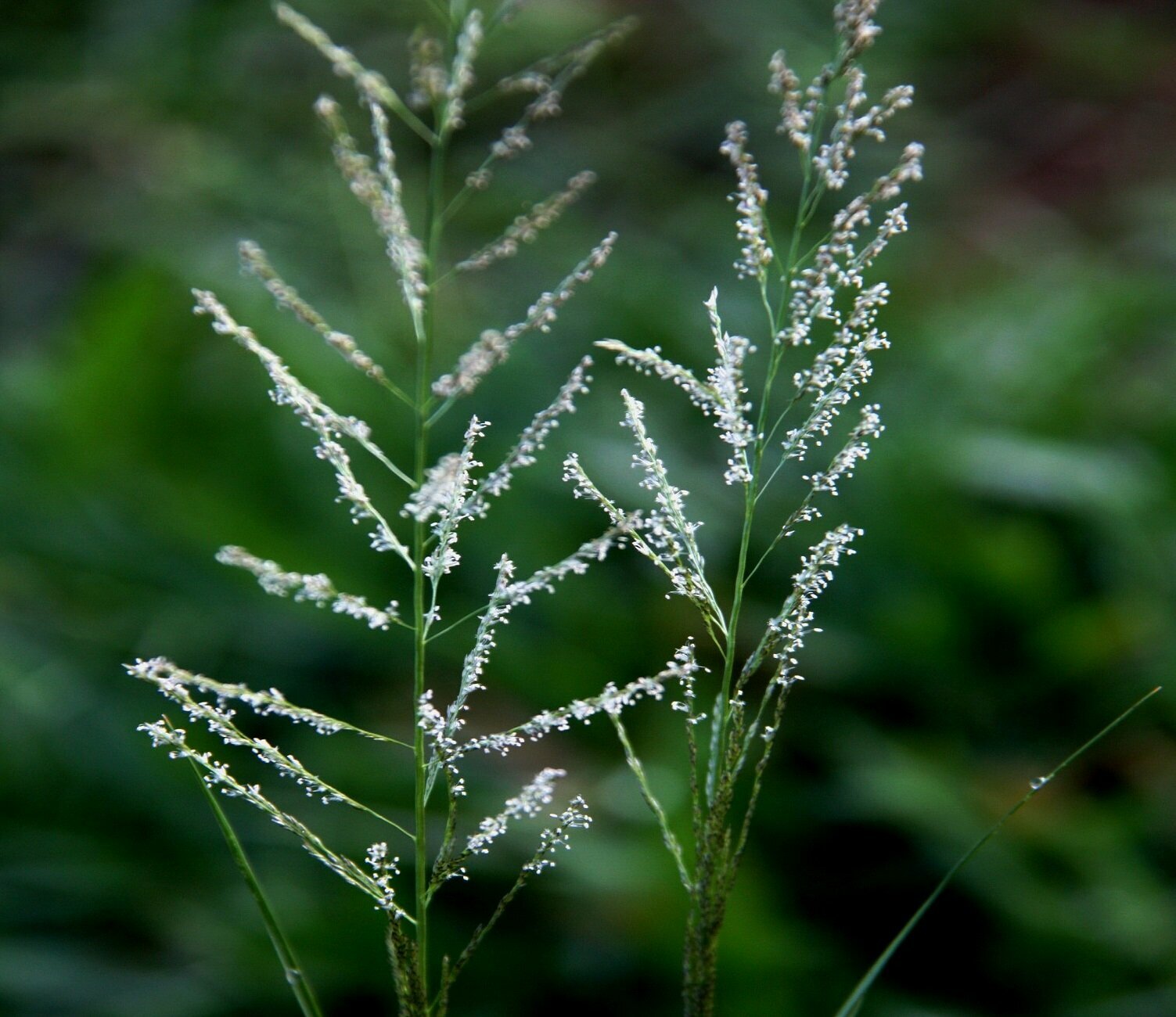 |
|||
| 424. Stachytarpheta urticaefolia (Salisb.) Family: VERBENACEAE Flowering & Fruiting:July-October. (apparently round the year) Ecology: Abundant in forest blanks & fallow lands Descrition: Herbs. Branches dichotomous. leaves elliptic, base decurrent, acute. Flowers blue, in terminal bracteate spikes. Calyx oblique, 4 toothed. Fruit of 2 hard l-seeded pyrenes. Medicinal Uses: In herbal medicine, S. jamaicensis itself has been known to demonstrate antacid, analgesic, anti-inflammatory, hypotensive, antihelminthic, diuretic, laxative, lactagogue, purgative, sedative, spasmogenic, vasodilator, vulnerary, and vermifuge properties. IUCN Status: |
 |
|||
| 425. Stephania japonica Thunb. Family: MENISPERMACEAE Flowering & Fruiting:July – Ocotober & October – December Ecology: Frequently occurring as a twiner on hedges. Medicinal Uses: The tuberous root is astringent, bitter. It is used in the treatment of diarrhoea and dysentery; fevers; stomach ache and dyspepsia; hepatitis; and urinary diseases. The root is said to be of value in the cure of itches. The tuberous root of var. discolor is bitter and very poisonous due to its picrotoxin content. It is used medicinally for the treatment of fevers, diarrhoea, urinary diseases and stomach-ache. The crushed leaves in water form a slightly gelatinous mass which is applied to breast infections. IUCN Status: |
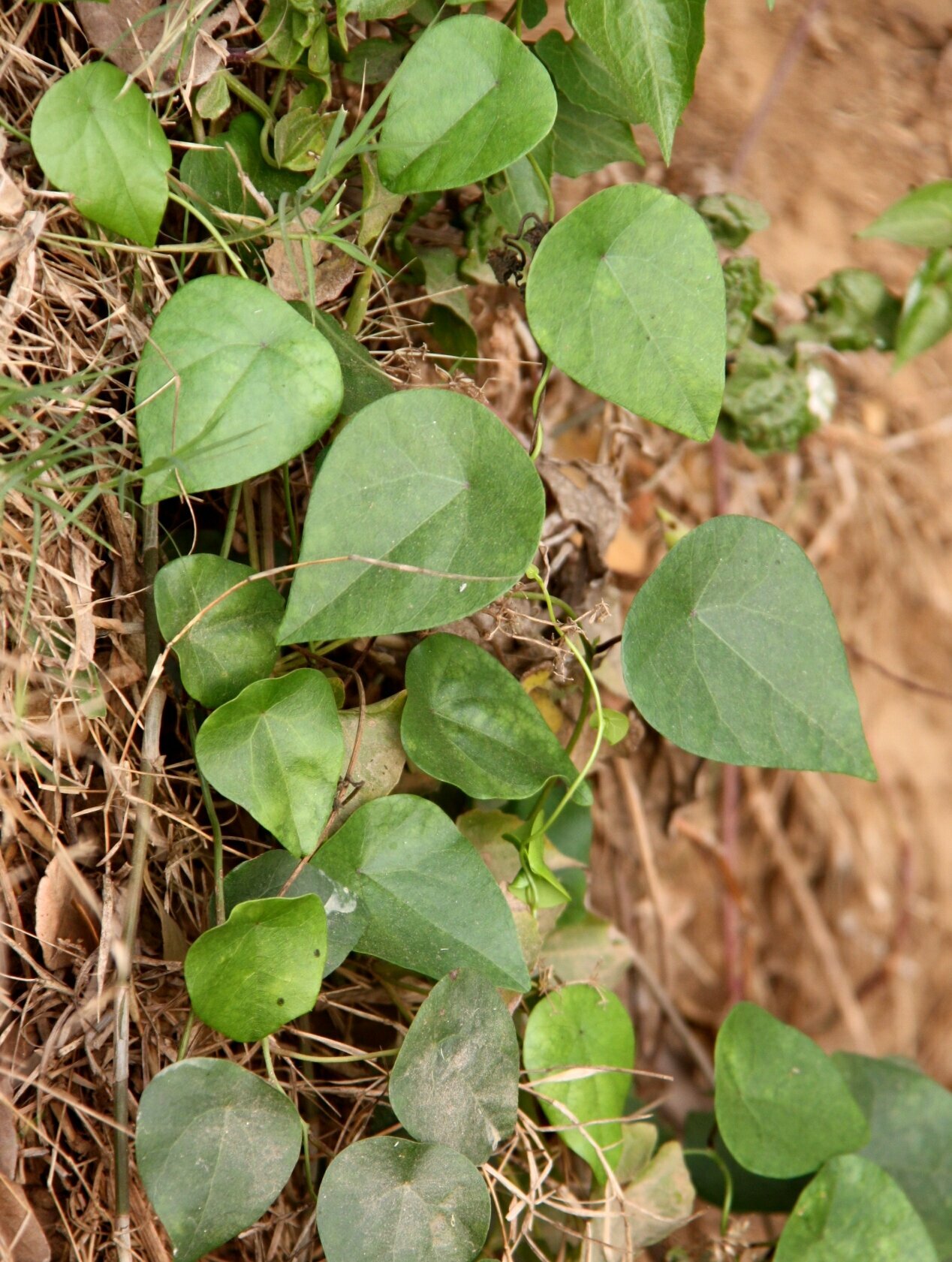 |
|||
| 426. Streblus asper Family: MORACEAE Flowering & Fruiting:March-May Ecology: Frequent , in open places near nalas. Description: Rigid , much branched shrubs . Leaves stiff , rhiombic –elliptic or obovate , scabrid , obscrely toothed , acuminate . Male heads om 1-3 bracteats , flower 6-8 tepals connate below . Female peduncles bracteats , tepals free . Fruits yellow, succulent . Medicinal Uses: Streblus asper is a medicinal tree. Traditionally, it is used in the treatment of the skin diseases, piles, urinary disorders, excessive urination, filariasis, scrofula, cervical lymphadenitis, etc. The stem bark is reported to cure filarial lymphangitis, lymphoedema, chyluria caused by filariasis. IUCN Status: |
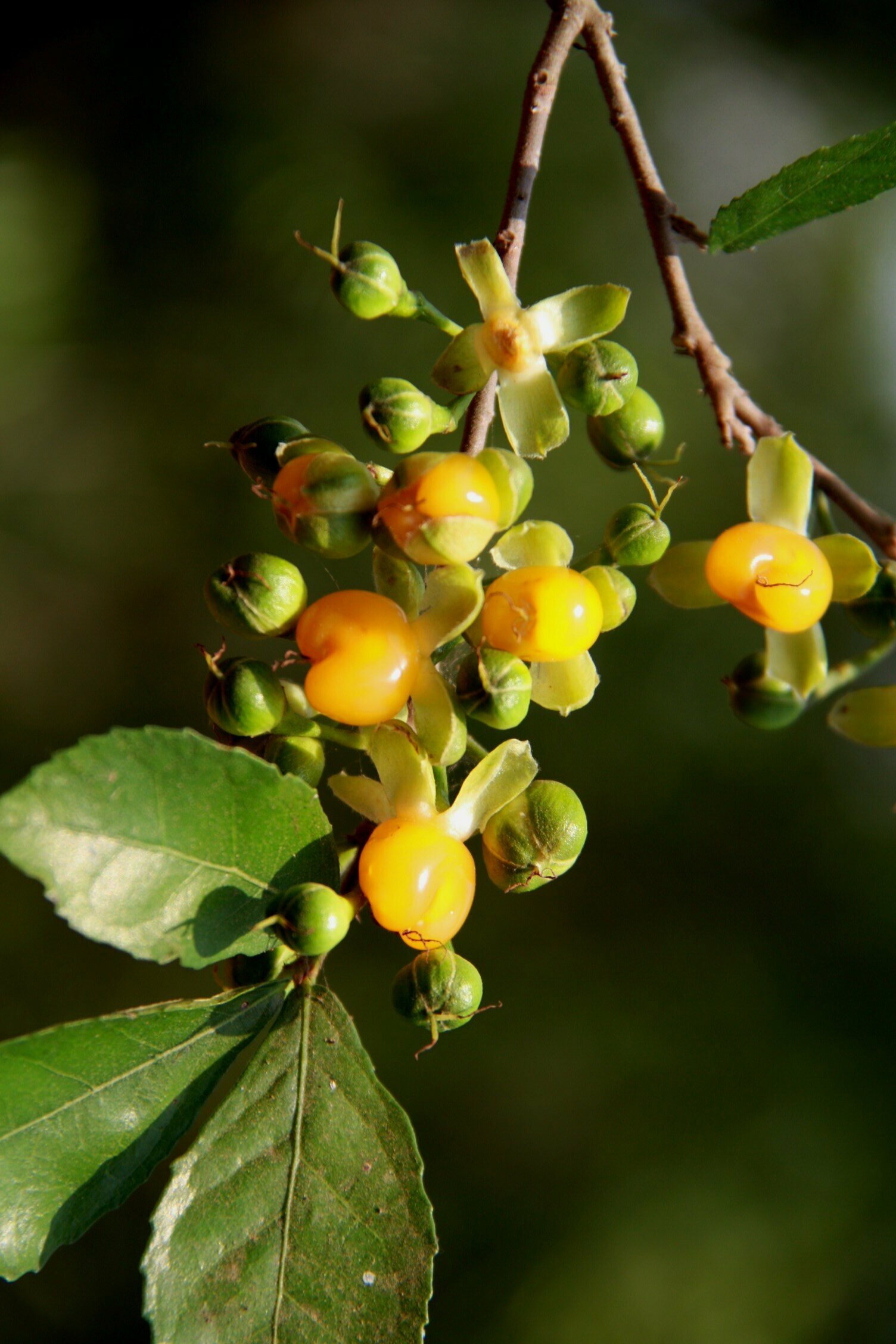 |
|||
| 427. Streblus taxoides Family: MORACEAE Flowering & Fruiting:June-September Ecology: Occasional, along ravines in scrub forests. Description: Shrubs: branchlets often terminating in a thorn. Leaves rhomboidly elliptic, coarsely toothed, acuminate, base subcordate, glabrous. Male heads sessile, ovoid, bracteate. Female bracteate, tepals erect, conniving over the fruit. Fruit obovoid, style and stigmas persistent. IUCN Status: |
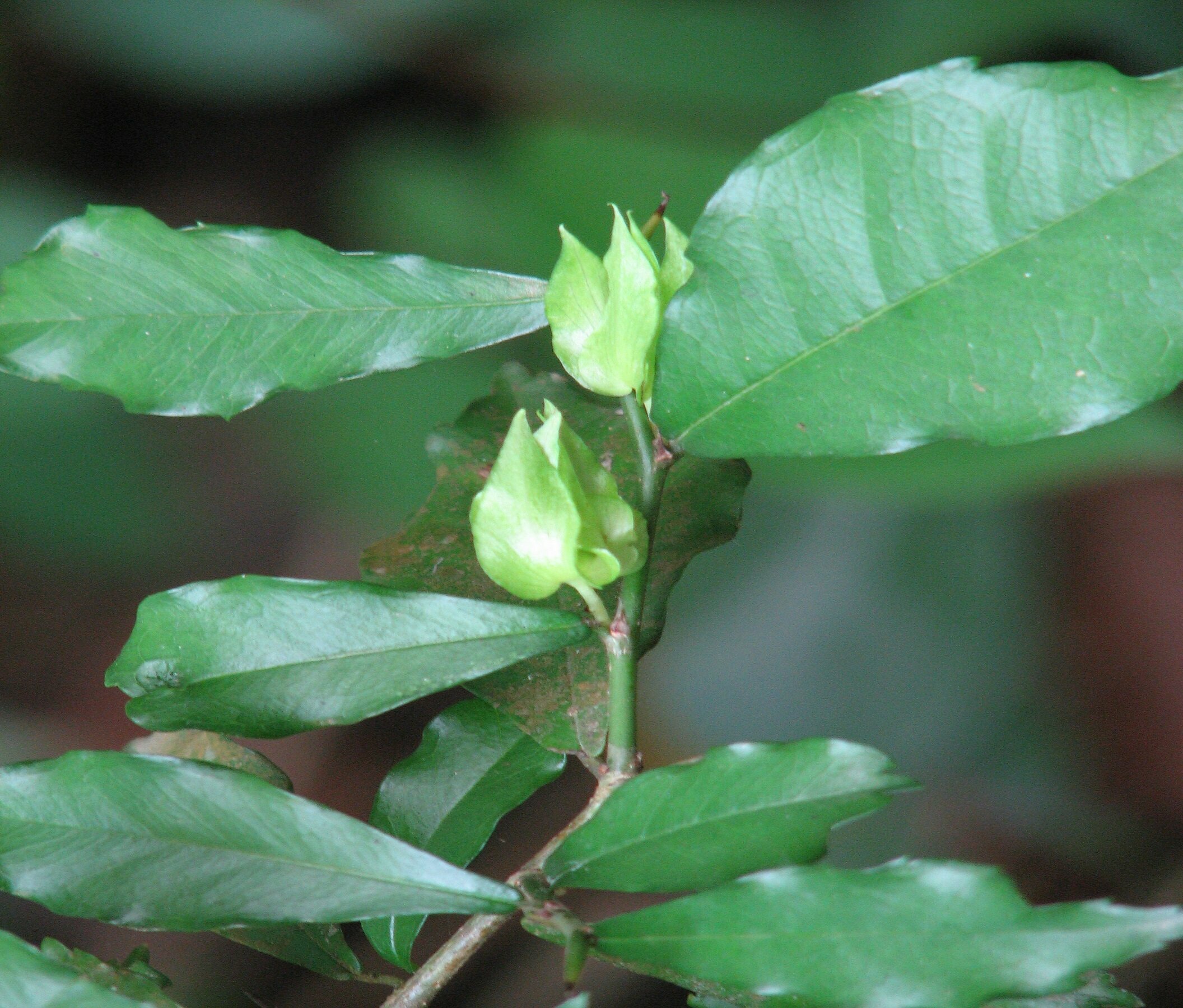 |
|||
| 428. Sterculia urens Roxb. Family: MALVACEAE Flowering & Fruiting:December – January & April – May Ecology: Occasional on dry exposed hill slopes. Description: Bark papery peeling. Leaves grey beneat. Panicles densely viscid-pubescent, yellowish. Calyx reddish-brown, green inside. Staminal column erect. Follicles pungent with bristles. Medicinal Uses: The gum is used as a bulk laxative. It is not absorbed by the body, but swells up inside the gut to provide a bulk of material that gently stimulates peristalsis. The gum is also used to treat throat infections. IUCN Status: |
 |
|||
| 429. Stereospermum chelonoides L.f. Family: BIGNONIACEAE Local name: Padhel, Chayee Patali, Patadi, Chhni Patuli Description: It is a large deciduous tree, 10-20 m tall, with velvet-hairy branches. Leaves are compound, 1-2 ft long, with 3-4 pairs of leaflets. Leaflets are 7-15 cm long, broadly elliptic, long-pointed. velvety on the underside, rounded and unequal at base, with 6-8 nerves, short-stalked. Fragrant flowers are borne in large lax panicles. They are 10-20 cm long, pinkish. Sepal cup is bell-shaped, 1 cm long, hairy, 3-5 lobed. Stamens are 4, remaining inside the flower-tube. Seed-pod is 1-2 ft long, cylindric, ribbed, rough. Medicinal Uses: A garland of seeds is worn in the neck of victims, to cure half sided headache. An infusion of the pleasant tasting root, as well as the fragrant flowers, is used as a cooling drink in the treatment of fevers. The juice of the bark is used to treat indigestion. IUCN Status: |
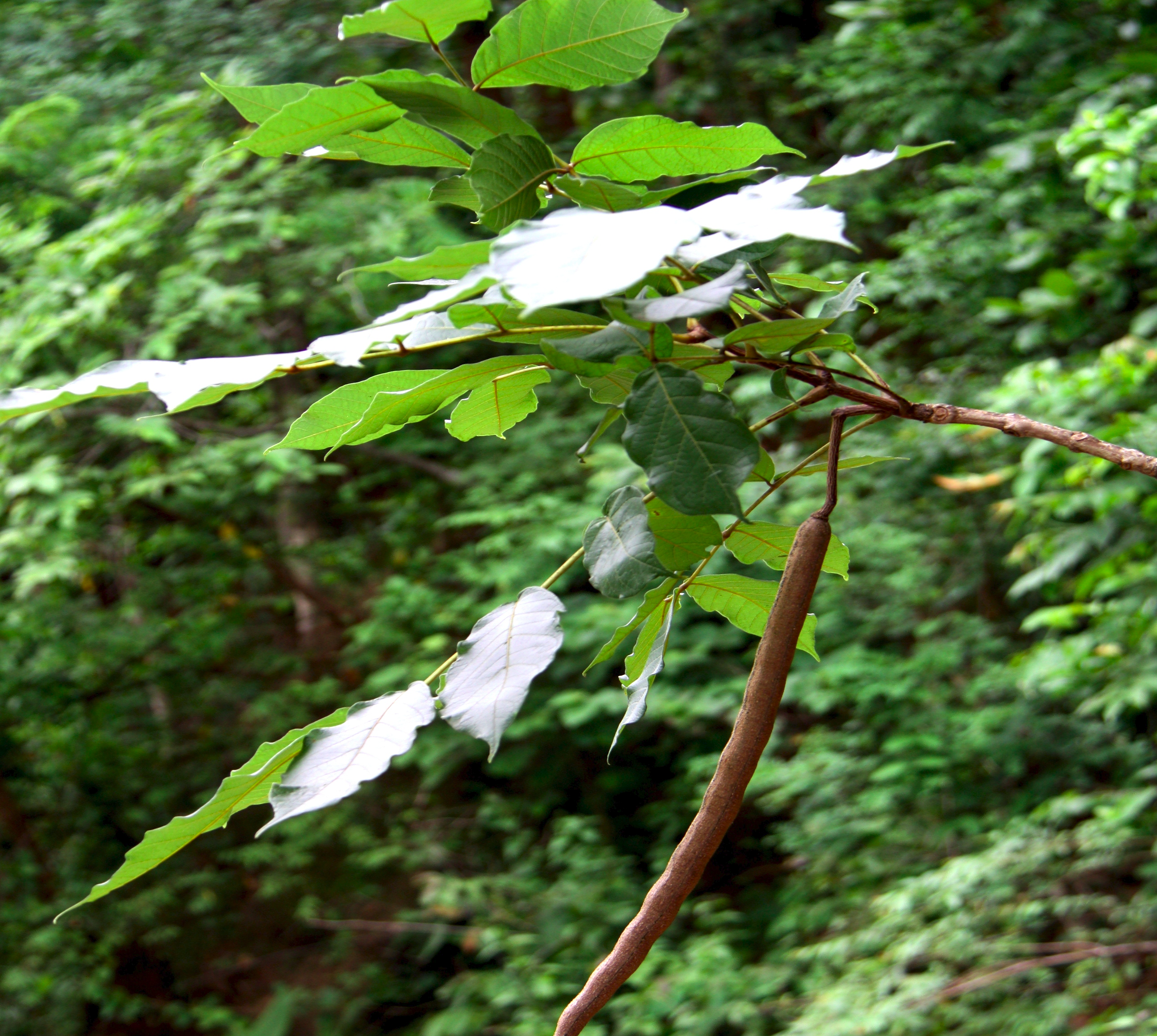 |
|||
| 430. Stereospermum personatum (Hassk.) Family: BIGNONIACEAE Flowering & Fruiting: April-July & July-February Ecology: Comon, on hill slopes near streams. Description: Large trees. Leaves clustered at the ends of branchlets: Leaflets 7-11, elliptic, suddenly caudate, entire, glabrous. Flowers gallow Pod long, slender; seeds winged. Medicinal Uses: Root bark is one of the constituents of “Dashmula” preparation used as tonic, diuretic. Root is anti-inflammatory, anti-asthmatic, antiemetic and febrifuge. It is biliary, stimulant, of cardiotonic, diuretic and used in piles and nervous disorders. IUCN Status: |
 |
|||
| 431. Stevia rebaudiana Family: ASTERACEAE Local name: Stebia, Madhu Parni Description: It is a tender perennial herb. Plants typically grow with weak and floppy stems to 12-24″ tall. Plants have little ornamental attraction. The attraction here is the sweet tasting leaves which contain glucoside compounds that are 200-300 times sweeter by weight than cane sugar but with no calories. Medicinal Uses: Leaf juices are dropped in to nostril to treat half sided headache.Leaves are powdered or chewed fresh in the treatment of diabetes. IUCN Status: |
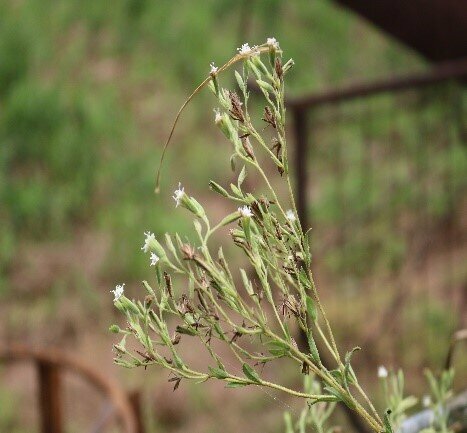 |
|||
| 432. Striga angustifolia (D.Don) Family: OROBANCHACEAE Flowering & Fruiting: August-November Ecology: Occasional, among grasses on lateritic plateau. Description: Erect herbs. Stem angled, scabrid. Leaves linear-lanceolate, green, scabrid. Calyx tube 15-ribbed, campanulate. Corolla white, tube siender, pubescent. Capsule ellipsoid, shorter than fruiting calyx. Medicinal Uses: Striga angustifolia has a wide range of medicinal uses; the pharmacological abortificient effect, dermatosis, diabetes, leprosy ulcer, pneumonia and jaundice remedy, trypanocidal effects, antibacterial and anti-plasmoidal activities have been approved. IUCN Status: |
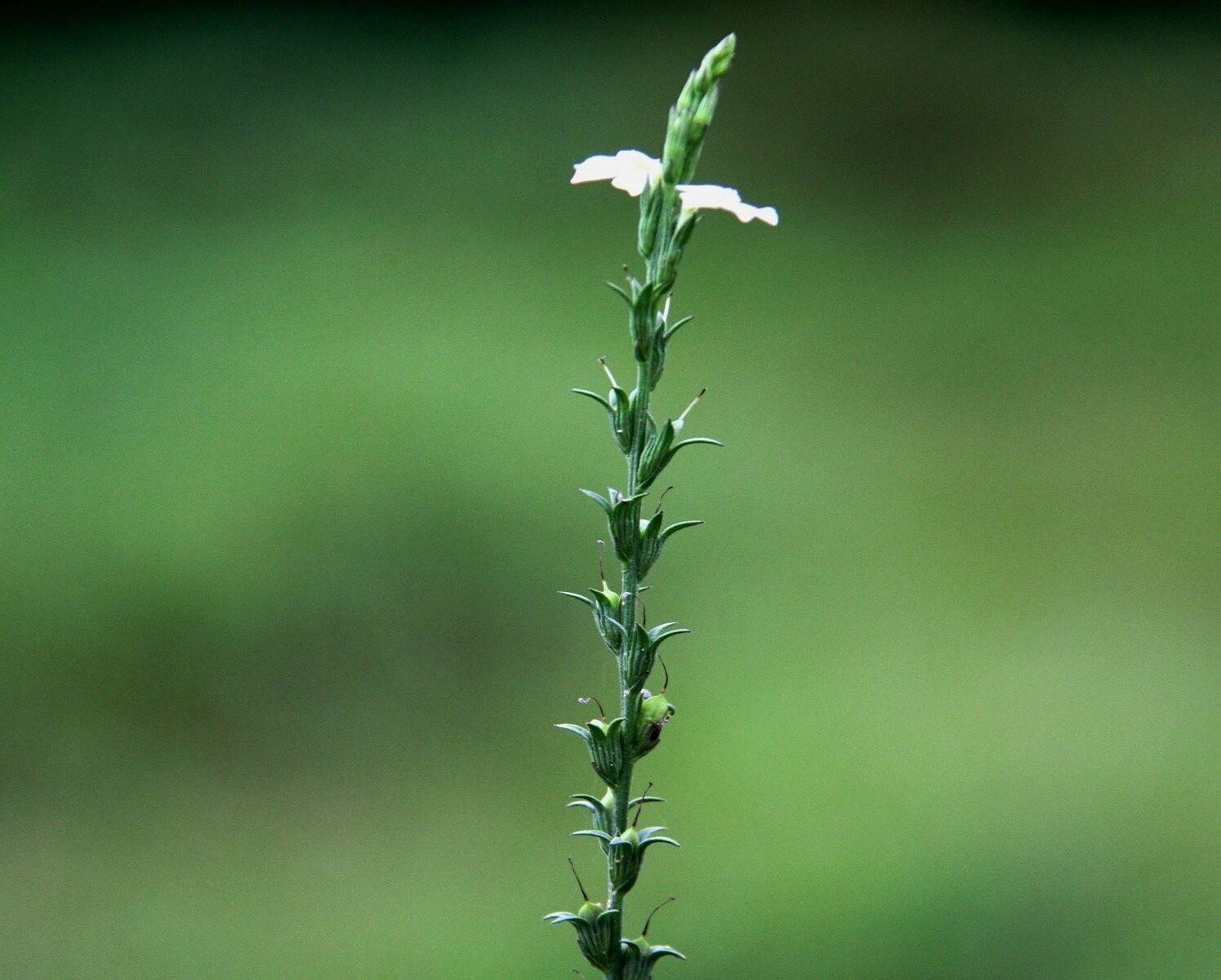 |
|||
| 433. Strychnos potatorum Linn. Family: LOGANIACEAE Flowering & Fruiting: April-May & November-February. Ecology: Occasional, on hill slopes near stream. Description: Deciduous trees with blackish cracked bark. Leaves opposite, elliptic or ovate, acute at both ends. Flowers white, in dense glabrous cymes. Corolla campanulate, fragrant. Fruit globose, pulpy. Medicinal Uses: In traditional system of medicine, the seeds of Strychnos potatorum Linn. (family: Loganiaceae) are used in the treatment of gonorrhea, leukorrhea leukeorrhea, gastropathy, bronchitis, chronic diarrhea, dysentery, renal and vesicle calculi, diabetes, conjunctivitis, scleritis, ulcers and other eye disease. IUCN Status: |
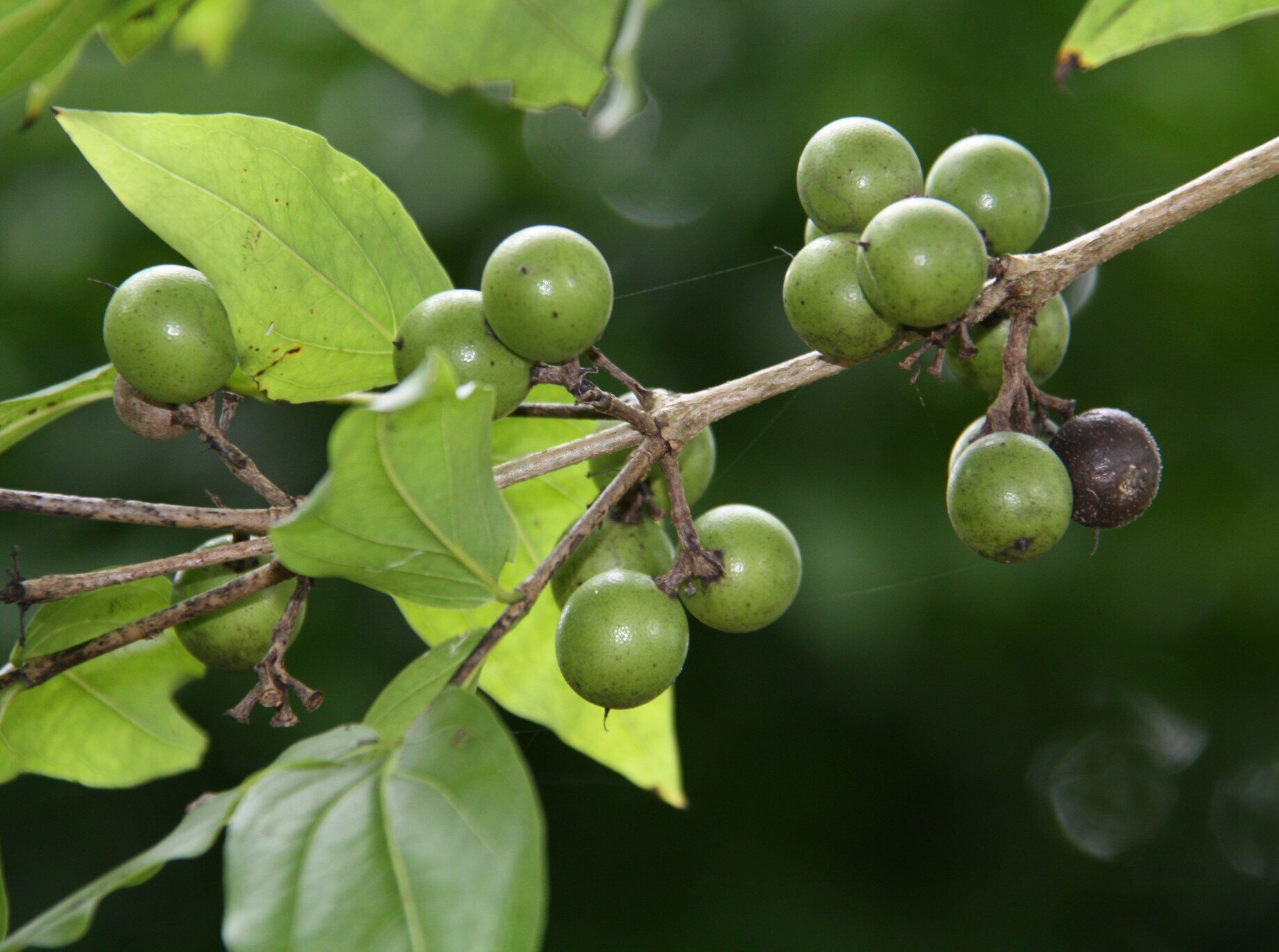 |
|||
| 434. Suregada multiflora Family: EUPHORBIACEAE Flowering & Fruiting: September-February Ecology: Abundant on moist slopes in damp forests. Description: Small trees, twigs marked by stipular scars, buds resinous. Leaves elliptic-oblong, base cuneate, somewhat serrate, shining. Flowers in contracted cymes. Males yellow, fragrant, sepals reflexed, st amens many. Females: stigmas lobed. Fruits 3-grooved. Medicinal Uses: It grows widely throughout tropical and subtropical areas especially in Asia and Africa. This plant has been reported to possess different medicinal applications like skin infection and lymphatic disorders, treatment of hepatic and gum diseases, and treatment of inflammatory-related diseases. IUCN Status: |
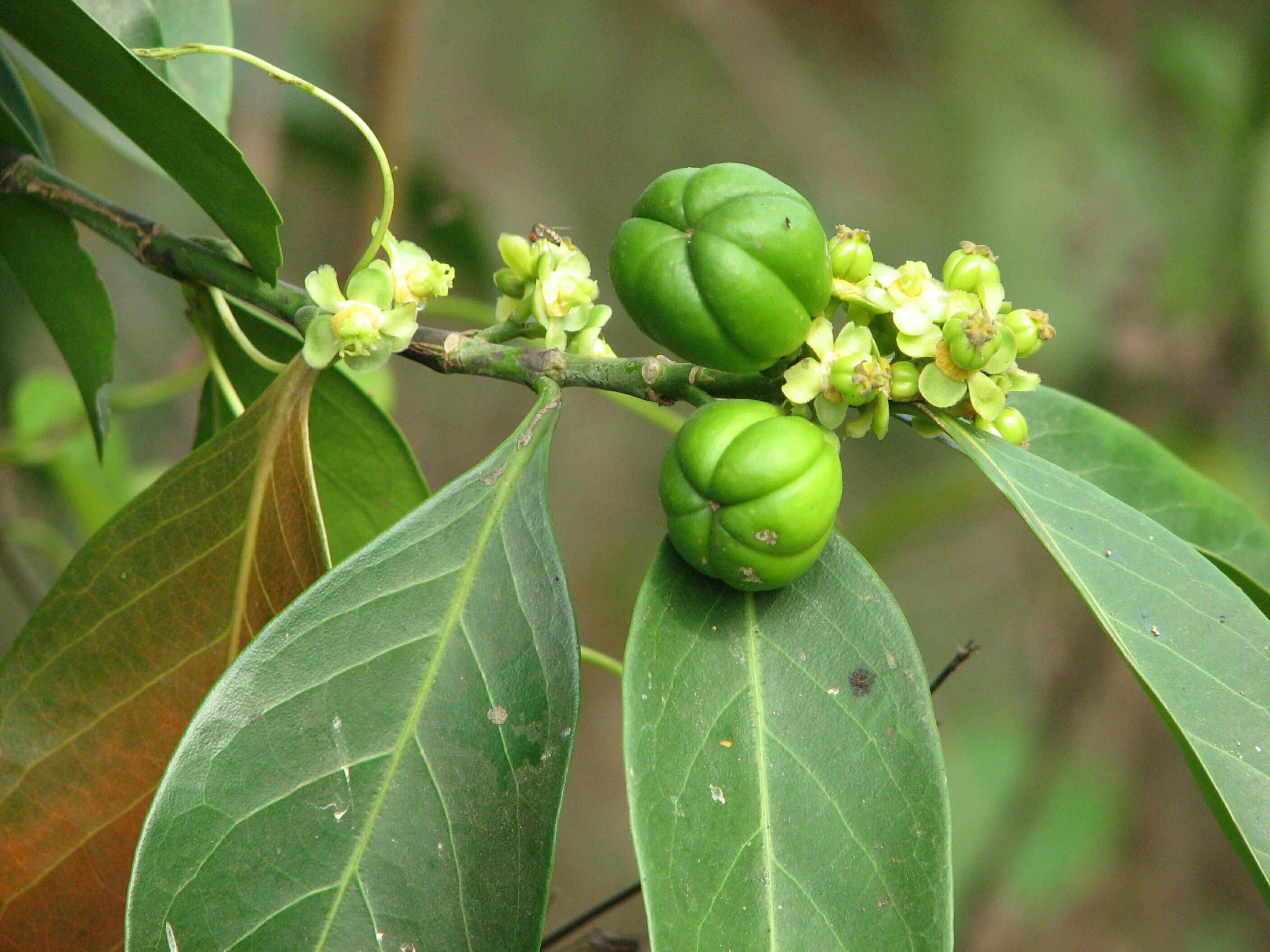 |
|||
| 435. Symphorema involucratum Roxb. Family: LAMIACEAE Flowering & Fruiting: March-June Ecology: Common in dry rocky habitats Description: Leaves ovate or rhomboidly-elliptic, less tomentose beneath, more acute. Flowers white, in capitate cymes. Calyx tubular. Fruit 1- seeded. IUCN Status: |
 |
|||
| 436. Synedrella nodiflora (Linn.) Family: COMPOSITAE Flowering & Fruiting: August – January Ecology: Common in marshy localities in forests. Description: Apressed pubescent annuals. Leaves ovate, 3-nerved, acute, serrate, dentate, appressed pilose. Capitula radiate. Florets flat, lanceolate. Ray achenes oblanceolate, blackish, 2-winged. Puppus awned, puberulous. Medicinal Uses: The plant Synedrella nodiflora (L) Gaertn is traditionally used by some Ghanaian communities to treat epilepsy. To determine if this use has merit, we studied the anticonvulsant and other neuropharmacological effects of a hydro-ethanolic extract of the whole plant using murine models. IUCN Status: |
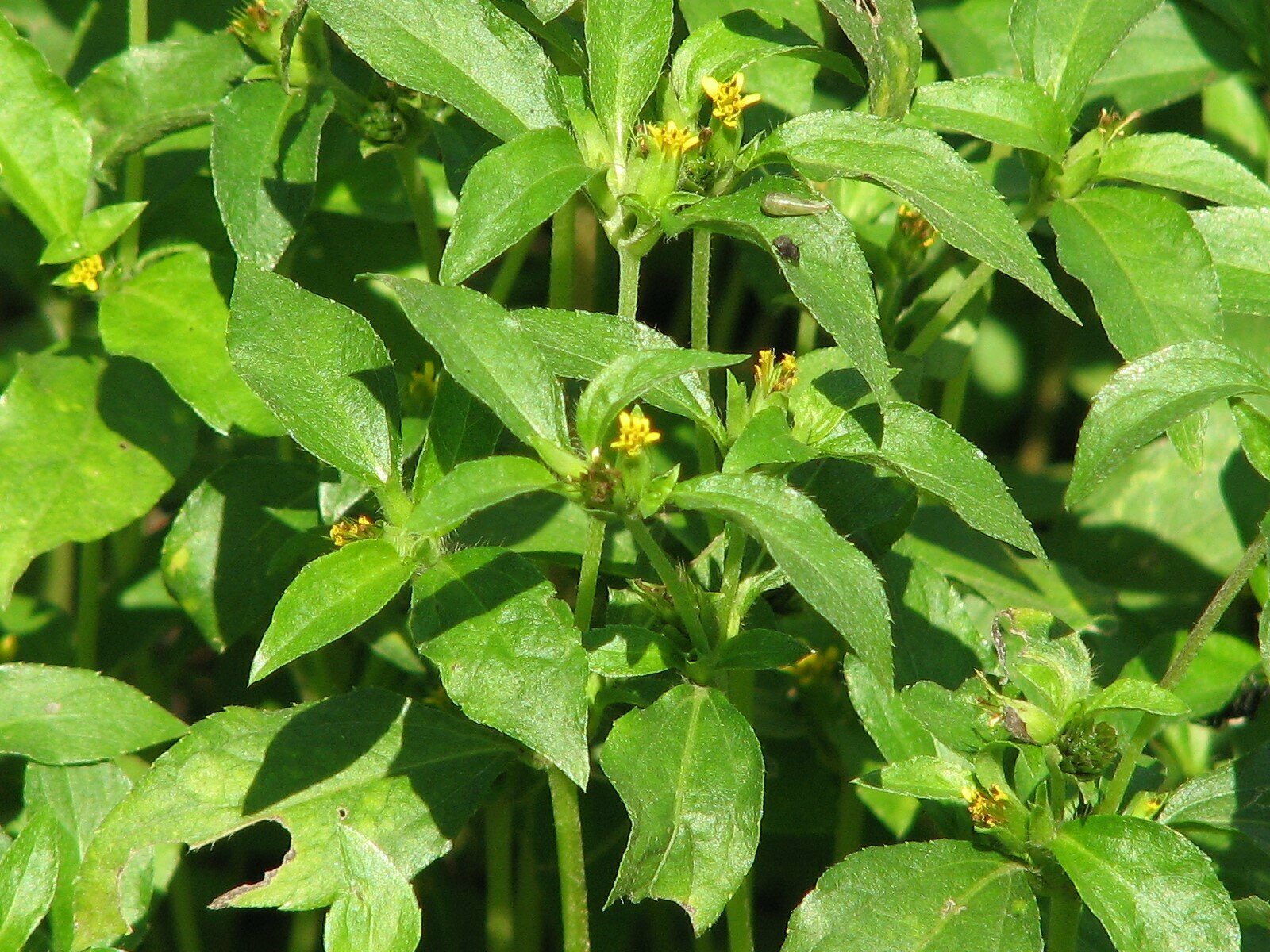 |
|||
| 437. Syzigium cumini L. Family: MYRTACEAE Local Name: Jamun Description: Bark greyish brown, with large flakes, smooth higher up. Slash aromatic. Leaves with many close parallel veins, crushed leaves smells aromatic, Flowers and fruits produced in bunches on leafless part of branches. It is considered to be sacred to Krishna and is often planted near temples. The tree is widely cultivated in the tropics and subtropics for its edible fruit. The fruits and the seeds (for medicinal purposes) are sold in local markets. It is also planted for shade, ornament, windbreaks, and hedges. Medicinal Uses: Tender leaves are squeezed with the soft leaves of mango, tubers of Cyperus (Motha) and milk of goat and given to infants in the treatment of dysentery. Fruits juice is given in the treatment of bleeding piles. Ripe fruit juice is given with salt to dissolve the hairs when accidently goes into stomach. Seeds reduce blood sugar levels and are useful in the treatment of diabetes. The bark is used as a gargle to strengthen gums, treat mouth ulcers etc. IUCN Status: |
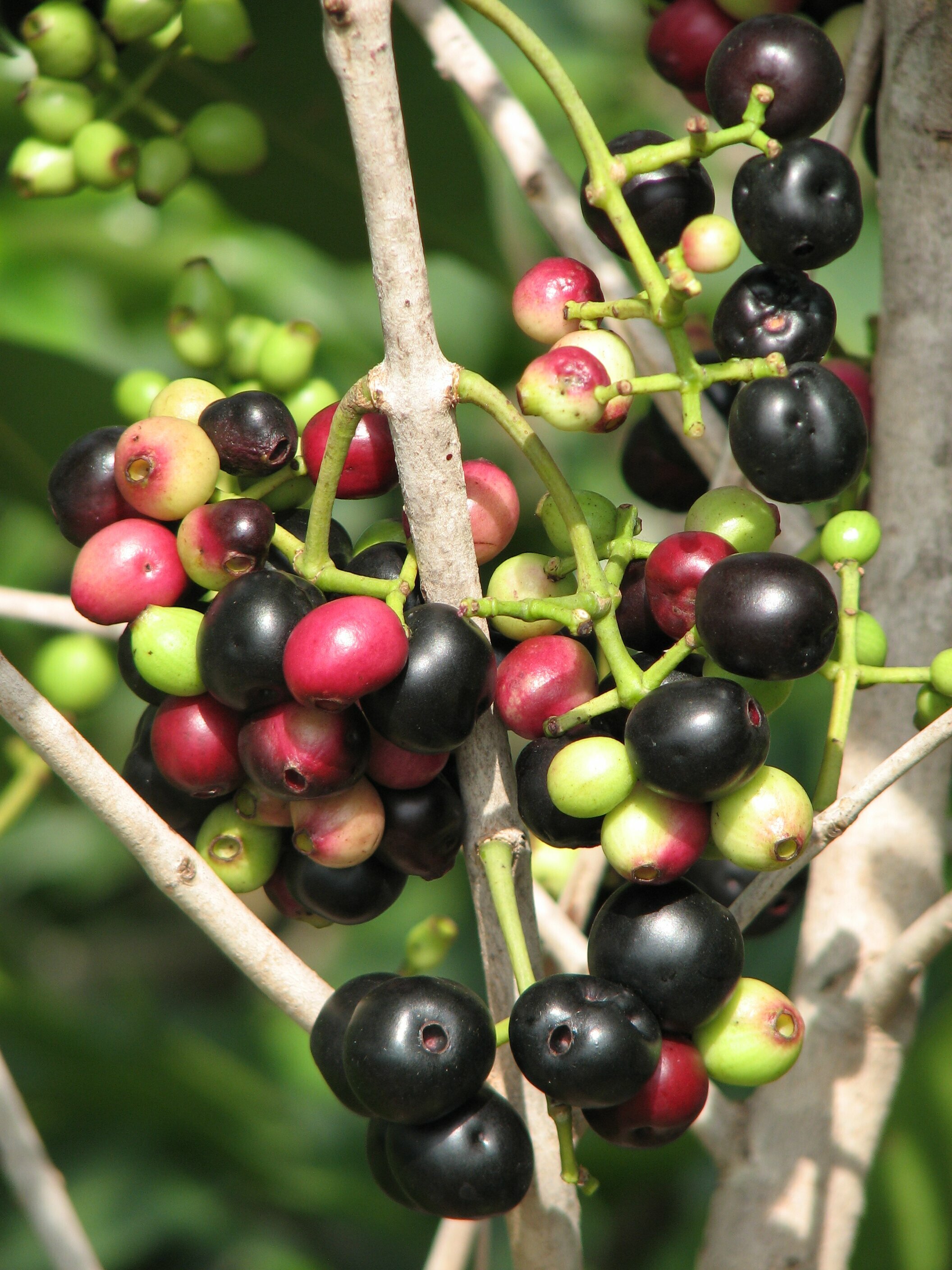 |
|||
| 438. Tamarindus indica L. Family: CESALPINIACEAE Local Name: Tentuli, Imli Description: A moderate-sized to large evergreen tree, upto 24 meter in height and 7 meter in girth. Bark: horizontally and longitudinally fissured, dark-grey or brownish. Leaves: alternate, paripinnate, upto 15cm long, leflets generally 10-20 pairs, sub-sessile, oblong. Medicinal Uses: The bark is astringent and tonic and its ash may be given internally as a digestive. Incorporated into lotions or poultices, the bark may be used to relives sores, ulcers, boils and rashes. It may also be administered as a decoction against asthma and amenorrhea and as a febrifuge. Young leaves may be used in fomentation for rheumatism, applied to sores and wounds, or administered as a poultice for inflammation of joints to reduce swelling and relieve pain. Leave decoction is used for the treatment of throat infection, cough, fever, and even intestinal worms. The leaves and flowers are used to make a sweetened tea that is drunk by children as a remedy for measles and as a malaria remedy. A syrup made from the ripe fruit is drunk in order to keep the digestive organs in good condition, and also as a remedy for coughs and chest colds. IUCN Status: |
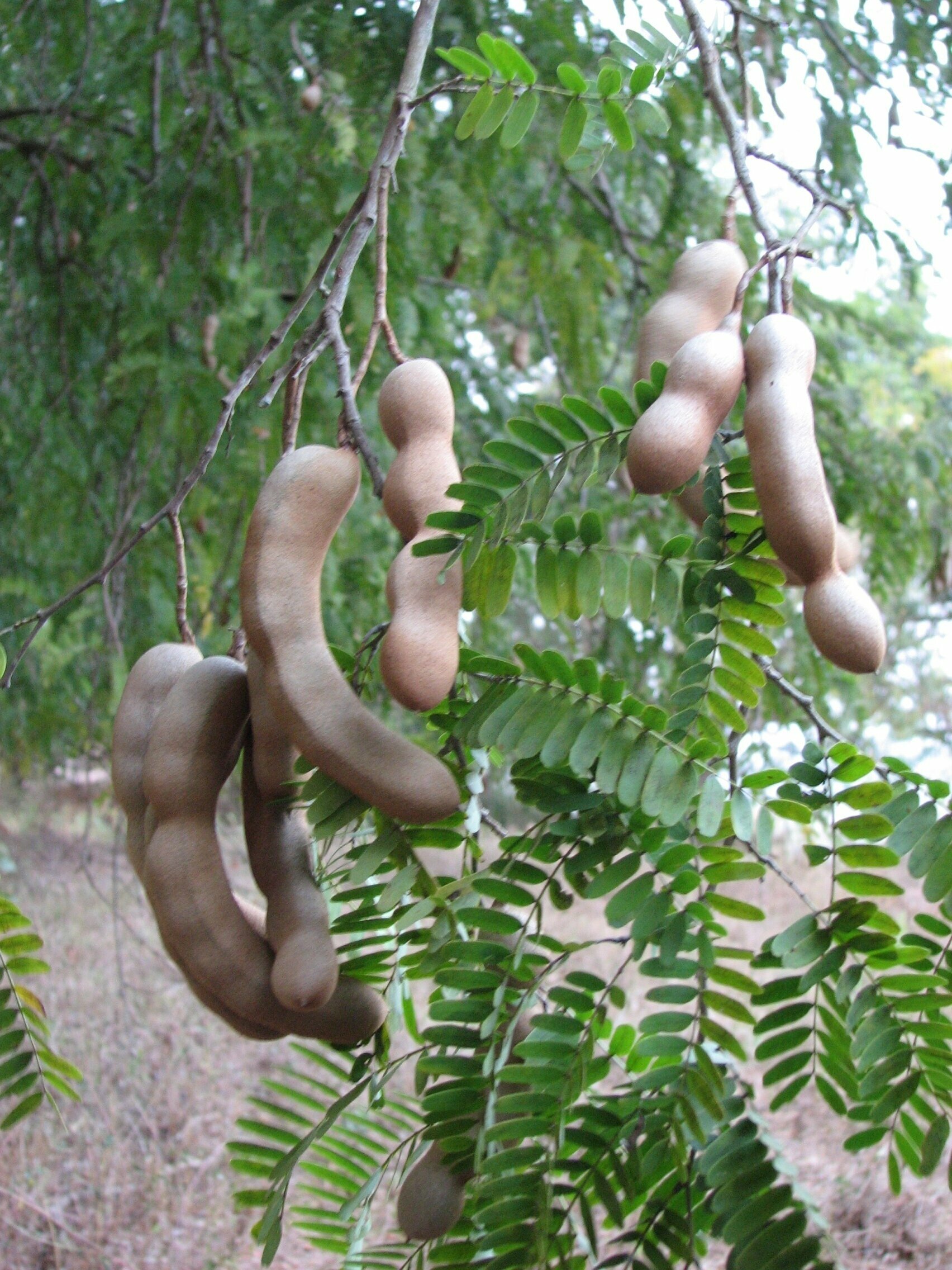 |
|||
| 439. Tamilnadia ulginosa (Retz.) Family: RUBIACEAE Local Name: Thelko Description: Deciduous trees, to 7 m high, bark reddish-brown; branchlets 4 angled, terminating with one or two pair of sharp thorns. Leaves simple, opposite, decussate; stipule interpetiolar, 3-5 x 5-7 mm, broadly triangular, acuminate; petiole 5-10 mm, stout, glabrous; lamina 5-18 x 2-8 cm, obovate, oblanceolate or obovate-oblong, base cuneate or attenuate, apex obtuse or round, margin entire, glabrous above and pubescent and glaucous beneath; lateral nerves 5-10 pairs, pinnate, prominent beneath; intercostae reticulate, slender; domatia present. Flowers bisexual, white, 5 cm across, solitary, at the end of branchlets, dimorphic with large and sessile, small and stalked; calyx tube 1-1.2 x 0.3-0.4 cm, turbinate, silky pubescent at throat, lobes 5, suborbicular; corolla tube short, lobes 5, large, spreading, orbicular, hairy at mouth, imbricate; stamens 5; anthers linear; ovary 2-celled, inferior, ovules many; style stout; stigma thick, 2 lobed. Fruit a berry, 4-5 x 2.5-3.5 cm, ovoid or ellipsoid, smooth, yellow; seeds smooth, compressed. IUCN Status: |
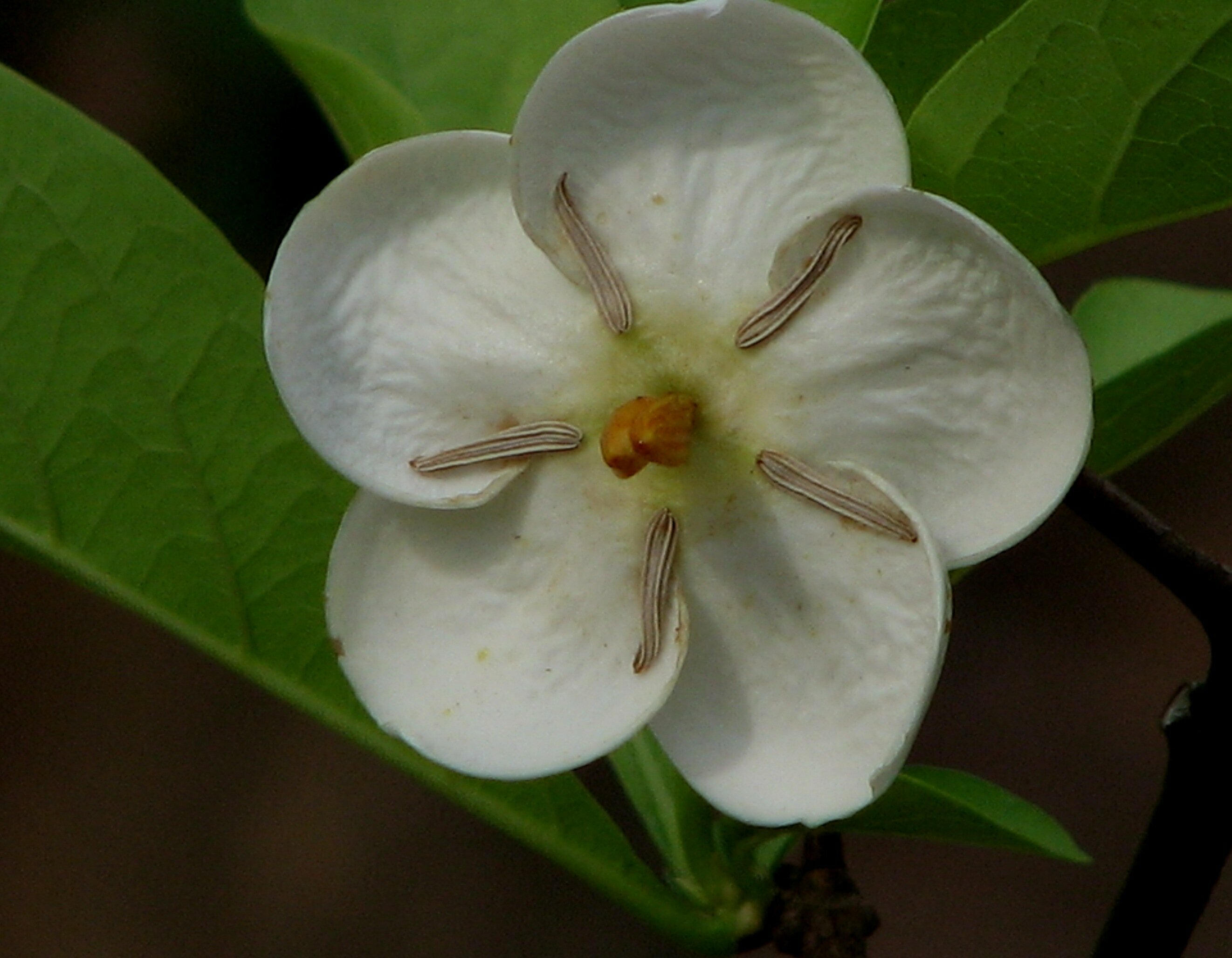 |
|||
| 440. Tarenna asiatica (Linn.) Family: RUBIACEAE Flowering & Fruiting: November–January & February–June Ecology: Common in scrub forests. Description: Shrubs. Leaves glossy, oblanceolate-oblong, abruptly acute or acuminate. Flowers white, fragrant, in 3-chotomous corymbose cymes. Stigma grooved. Berry black, globose. Medicinal Uses: It shows antimicrobial, antifungal and antibacterial properties. The leaves decoction is used to treat skin diseases, injuries. The leaves paste is applied for healing wounds. The crushed fruits are applied to boils to promote suppuration. IUCN Status: |
 |
|||
| 441. Tectona grandis Linn. Family: VERBENACEAE Flowering & Fruiting: June-August & November-January Ecology: Planted along road sides & forest edges. Description: Large trees. Branches 4-channeled. Leaves large, opposite, Mipt ic or obovate, scabrid above, stellate tomentose beneath, Flowers suite, in terminal brachiate panicles. Calyx large, inflated. Stamens inserted. Drupe hairy, spongy. Medicinal Uses: It is acrid, cooling, laxative, sedative to gravid uterus and useful in treatment of piles, leucoderma and dysentery. Flowers are acrid, bitter and dry and useful in bronchitis, biliousness, urinary discharges etc. IUCN Status: |
 |
|||
| 442. Tephrosia purpurea (Linn.) Family: FABACEAE Flowering & Fruiting: July-October & October-January Ecology: Quite common in waste places and fallow lands during rainy season. Medicinal Uses: Tephrosia purpurea is also used traditionally as folk medicine. According to Ayurveda, the plant is anthelmintic, alexiteric, restorative, and antipyretic. It is used in the treatment of leprosy, ulcers, asthma, and tumors, as well as diseases of the liver, spleen, heart, and blood. The dried plant is deobstruent, diuretic and useful in treating bronchitis, bilious febrile attacks and obstructions of the liver, spleen and kidneys. It is also recommended as a blood purifier, in the treatment of boils and pimples and is considered a cordial treatment. A decoction of the fruit is given as a treatment against intestinal worms. A fruit extract is used to relieve bodily pains and inflammatory problems. The roots are bitter and anthelmintic. IUCN Status: |
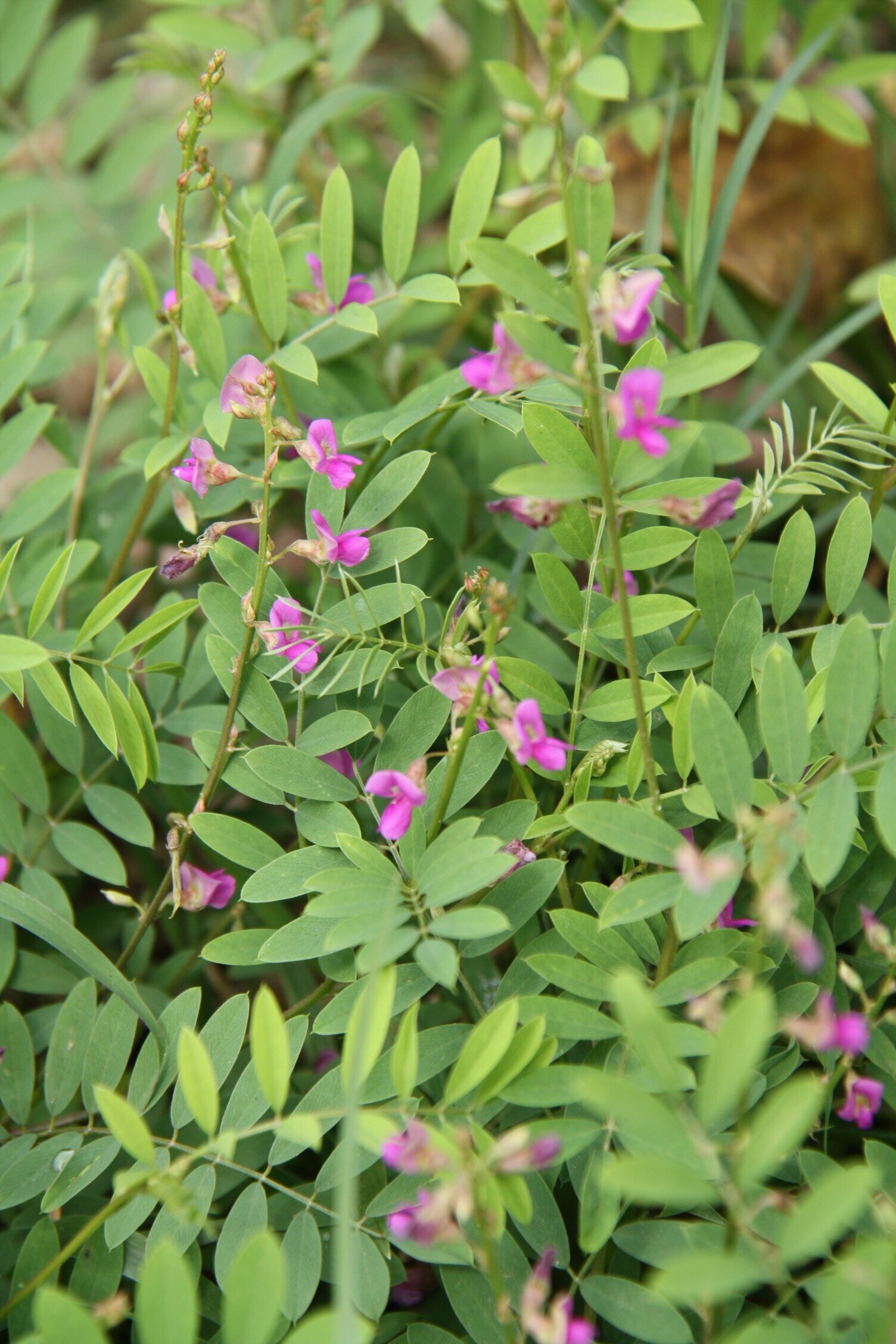 |
|||
| 443. Tephrosia villosa (Linn.) Family: FABACEAE Flowering & Fruiting: September-December. Ecology: Common in grass lands on hill plateau. Description: Erect, tomentose undershrubs. Leaflets obovate, obtuse or retuse. Calyx villous. Corolla pinkish-white. Pod wooly tomentose, 6 8 seeded. Medicinal Uses: Tephrosia purpurea is also used traditionally as folk medicine. According to Ayurveda, the plant is anthelmintic, alexiteric, restorative, and antipyretic. It is used in the treatment of leprosy, ulcers, asthma, and tumors, as well as diseases of the liver, spleen, heart, and blood. IUCN Status: |
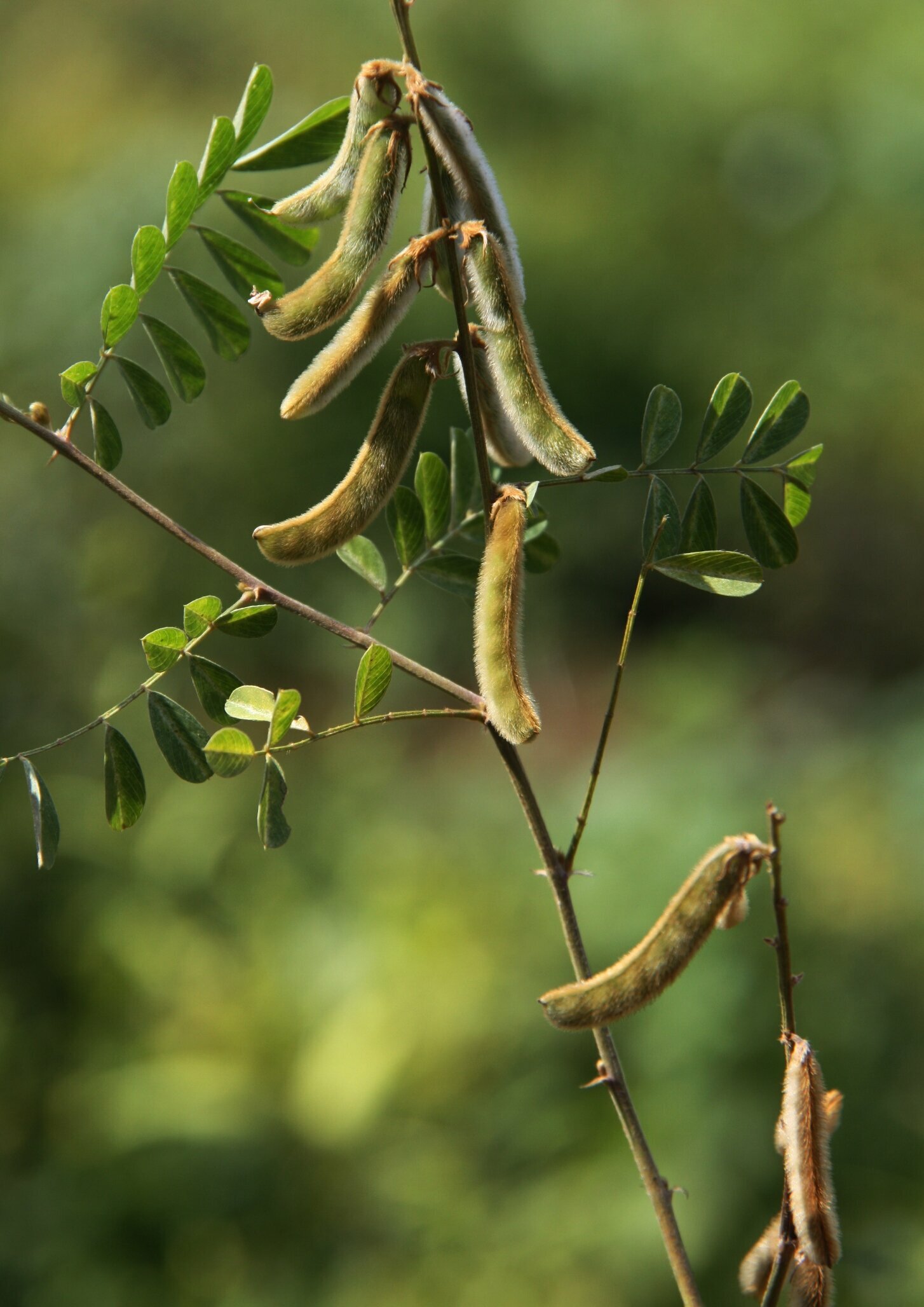 |
|||
| 444. Terminalia arjuna Family: COMBRETACEAE Flowering & Fruiting: May-July & March-April Ecology: Common, along streams in moist-deciduous forests. Description: Tall, suhdeciduous trees; bark ashy-white. Leaves alternate to subopposite, broadly lanceolate, glabrous except the nerves. Flowers creamy, foetid. Hypanthium campanulate, densely wooly inside. Drupe winged, deeply pyriform. Medicinal Uses: In traditional Ayurvedic medicine, Terminalia arjuna has been used to balance the three “humors”: kapha, pitta, and vata. It has also been used for asthma, bile duct disorders, scorpion stings, and poisonings. The bark of Terminalia arjuna has been used in India for more than 3000 years, primarily as a heart remedy. IUCN Status: |
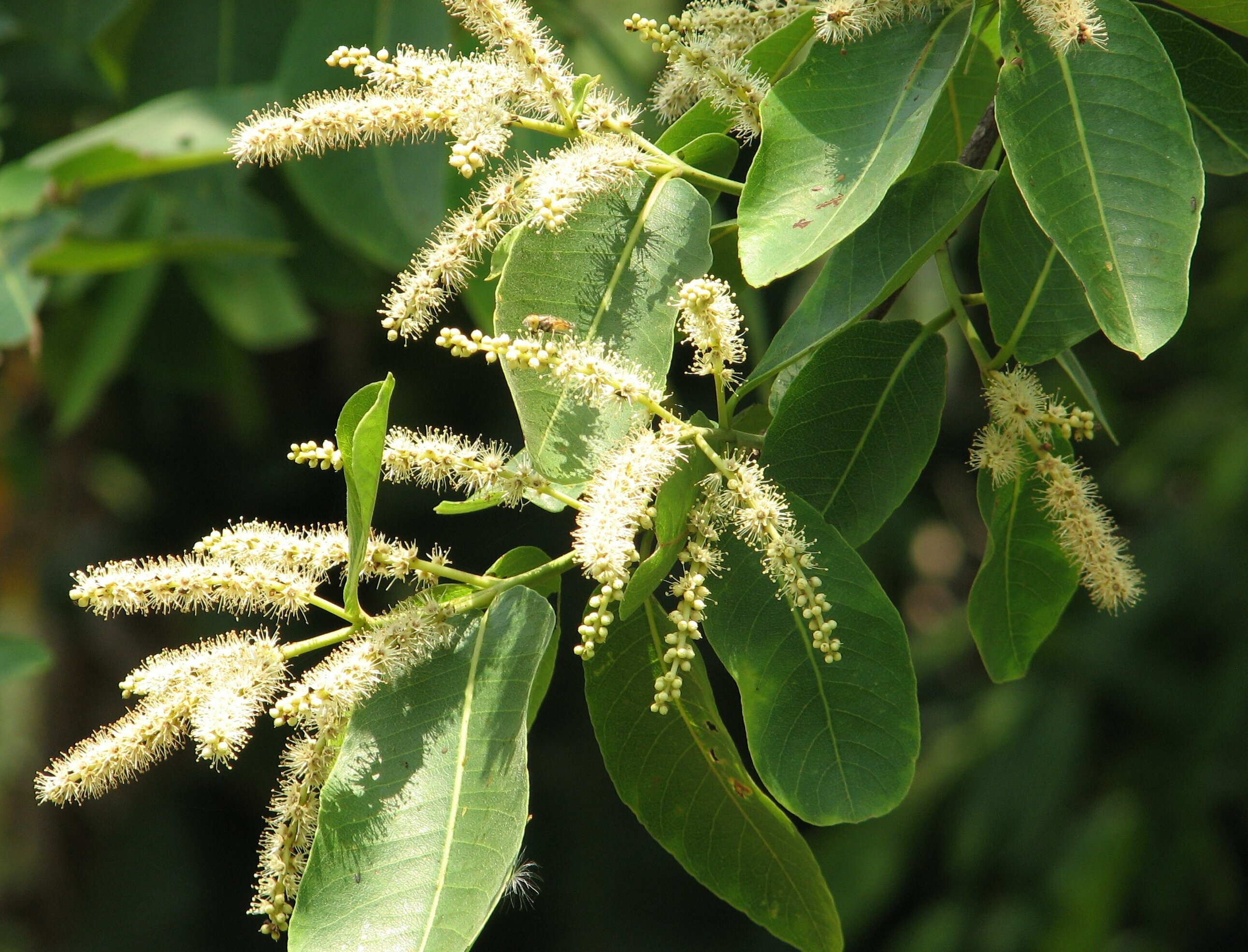 |
|||
| 445. Terminalia alata Heyne Family: COMBRETACEAE Flowering & Fruiting: April-June & February-March Ecology: Quite gregarious in dry-deciduous forests. Description: Leaves opposite, elliptic-lanceolate, acute, truncate cordate, pubescent beneath; glands at leaf base subsessile. Spike branched. Fruits elliptic, often apiculate, wings-5, thick. Medicinal Uses: The plant has been known to possess various pharmacological activities like antifungal, antioxidant, antihyperglycaemic, antidiarrhoeal, antileucorrheal etc. The bark of the plant is astringent& useful in ulcers, vata, fractures, haemorrhages, bronchitis, diarrhoea etc. IUCN Status: |
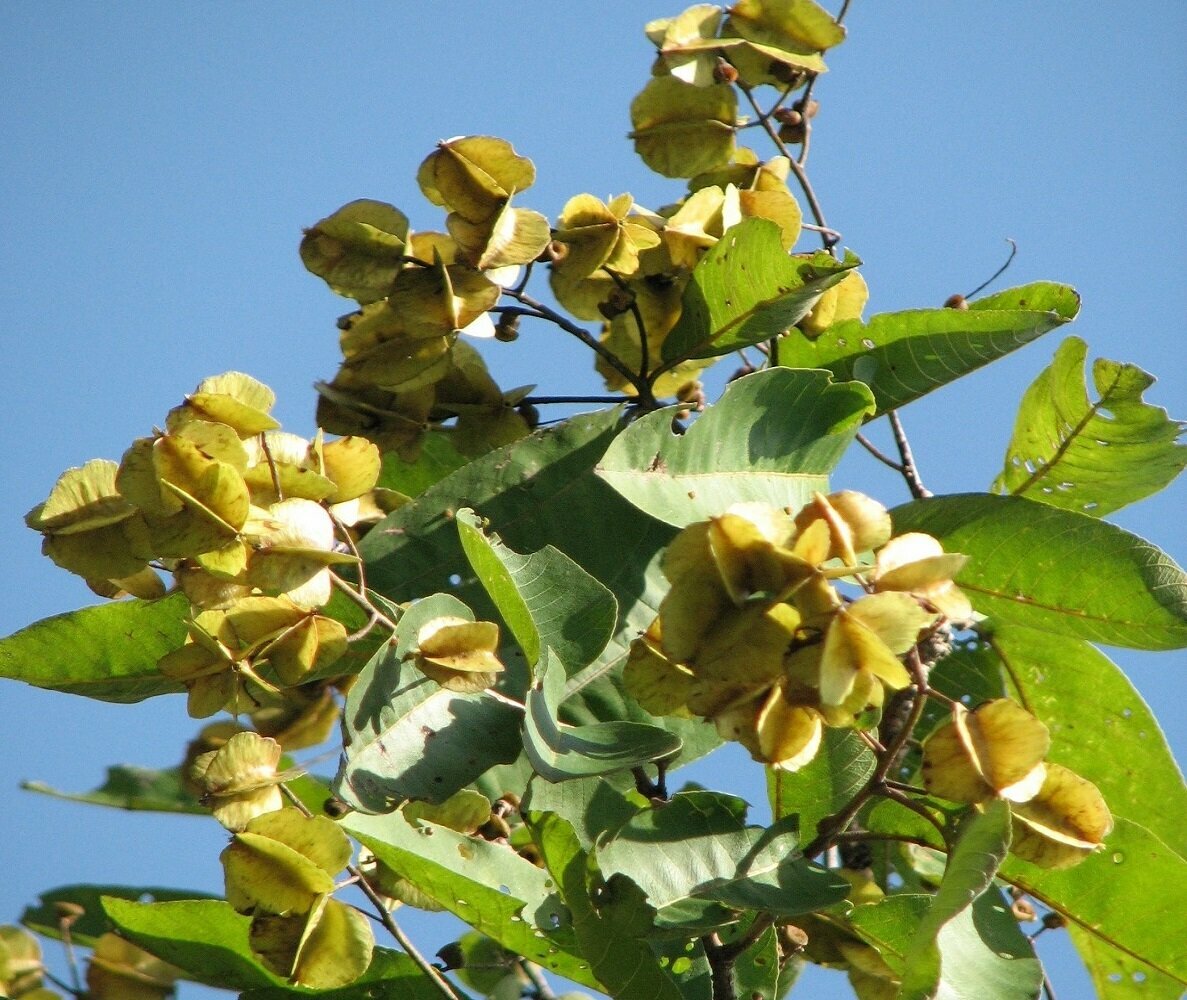 |
|||
| 446. Terminalia bellirica (Gaertn.) Family: COMBRETACEAE Local name: Bahada Flowering & Fruiting: March-May & December-February. Ecology: Abundant on foot hills & slopes. Medicinal Uses: Terminalia bellerica is used to protect the liver and to treat respiratory conditions, including respiratory tract infections, cough, and sore throat. Terminalia chebula is used for dysentery. The fruit contains anthraquinones and tannins. It is anthelmintic, astringent (especially when ripe), digestive, tonic and laxative (especially when unripe). The fruit is used internally principally in the treatment of digestive and respiratory problems. In Indian herbal medicine the ripe fruit is used in cases of diarrhoea and indigestion, whilst the unripe fruit is used as a laxative in cases of chronic constipation IUCN Status: |
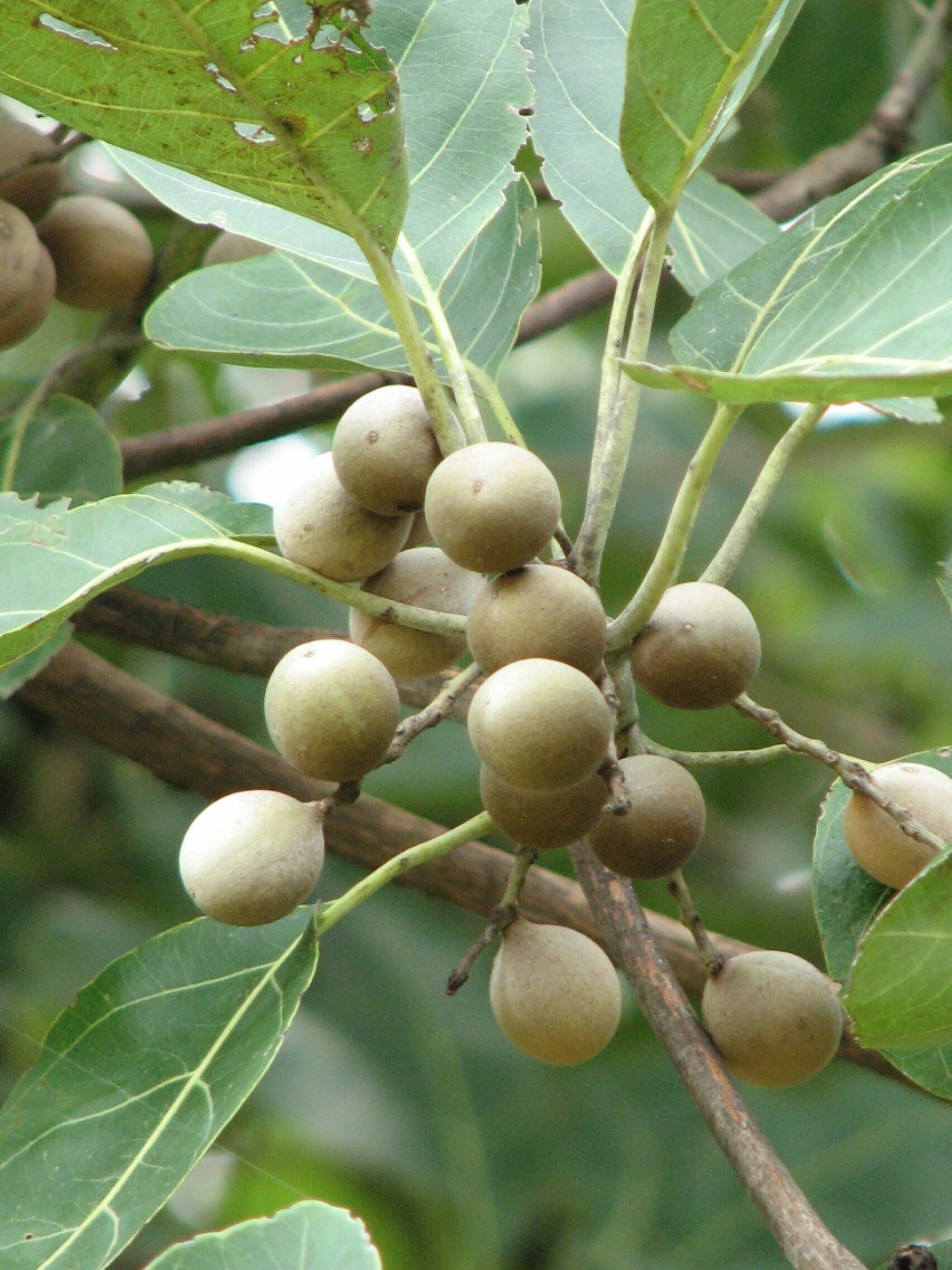 |
|||
| 447. Terminalia chebula Retz. Family: COMBRETACEAE Local name: Harida Flowering & Fruiting: March-May & November-January Ecology: Common in dry deciduous forests at lower slopes. Description: Young branches rusty tomentose. Leaves alternate to sub opposite, ovate or elliptic-ovate, dense pubescent; glands sessile at apex of pet iole. Flowers greenish-yellow or white, foetid, apetalous. Fruit woody, pyriform. Medicinal Uses: Terminalia bellerica is used to protect the liver and to treat respiratory conditions, including respiratory tract infections, cough, and sore throat. Terminalia chebula is used for dysentery. Terminalia bellerica and Terminalia chebula are used as a lotion for sore eyes. IUCN Status: |
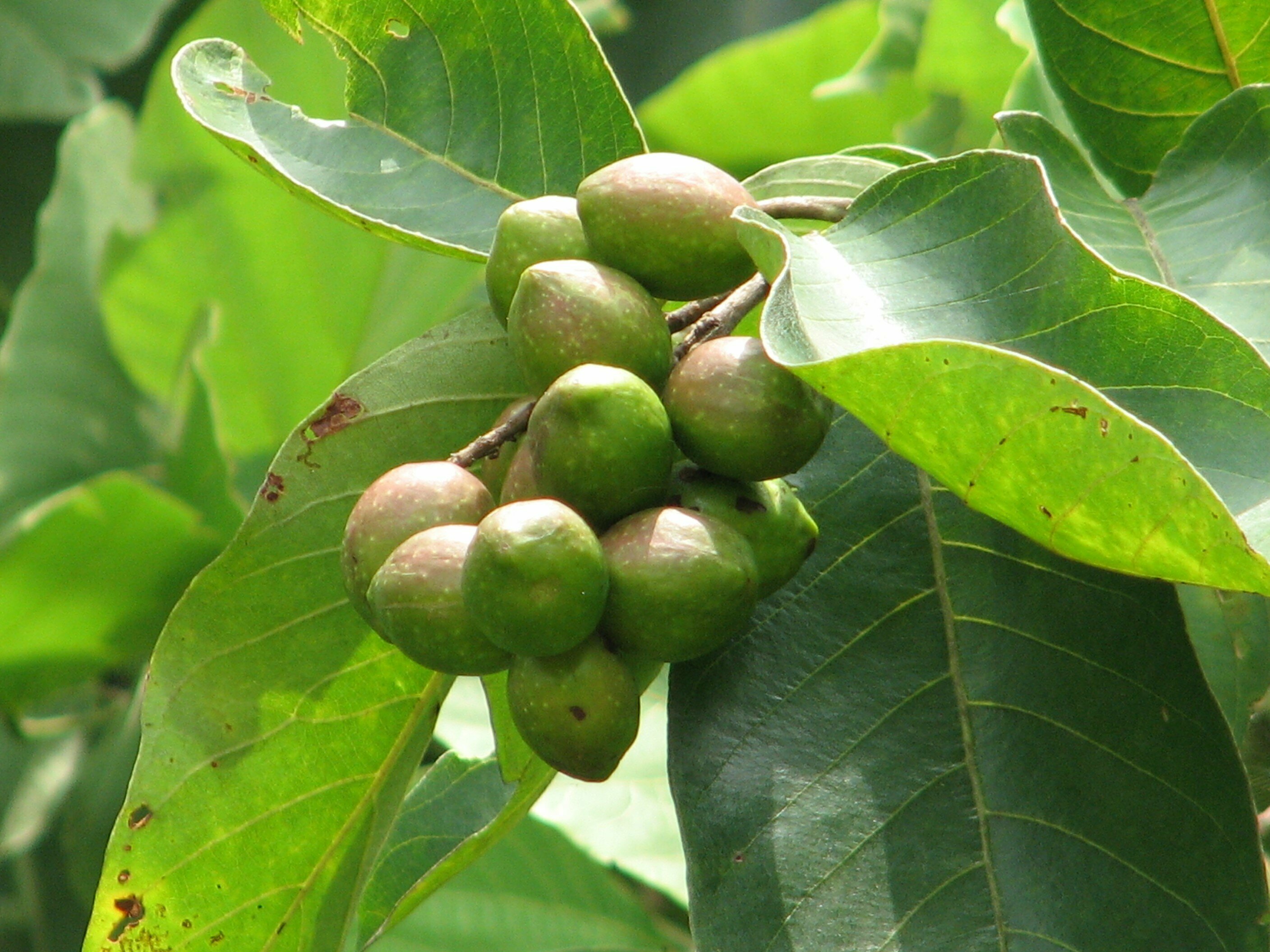 |
|||
| 448. Thunbergia fragrans Roxb. Family: ACANTHACEAE Flowering & Fruiting: November-March. Ecology: Frequent, twining on bushes along streams under shade. Description: Slender twiners. Young leaves, pedicels, bracteoles, calyx pubescent. Leaves ovate or oblong, toothed, base cordate or hastate. Flowers white, solitary or paired. Calyx-teeth 14-20, lanceolate or subulate. Capsules grey-puberulous. IUCN Status: |
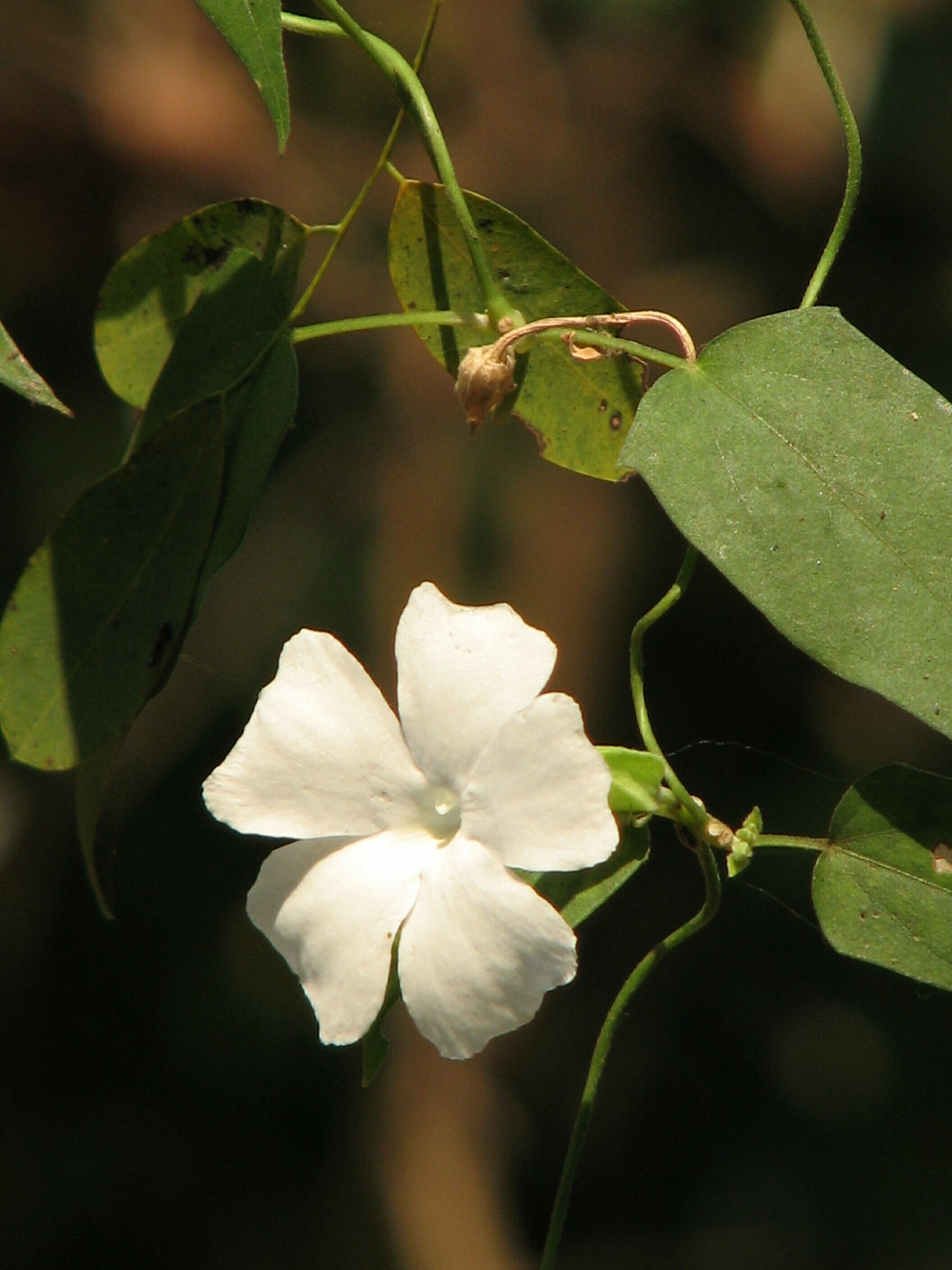 |
|||
| 449. Tiliacora acuminata Lam. Hook. F. & Thoms Family: MENISPERMACEA Flowering & Fruiting: April – June & July – September Ecology: Very common in scrub forest. Description: Dioecious climbers. Leaves ovate lanceolate acuminate, base rounded. Flowers sessile, yellow, in villous axillary penicles. Sepals in 2 series. Male flowers dehiscing vertically. Drupe ovoid, stalked, turning black when ripe; endocarp ribbed, grooved. Medicinal uses: The ethnomedicinal uses of this plant include its use as an antidote for snake bite. The leaf or root paste is applied on the bitten area soon after bite. Juice from macerated leaves is applied to cuts in folks. IUCN Status: |
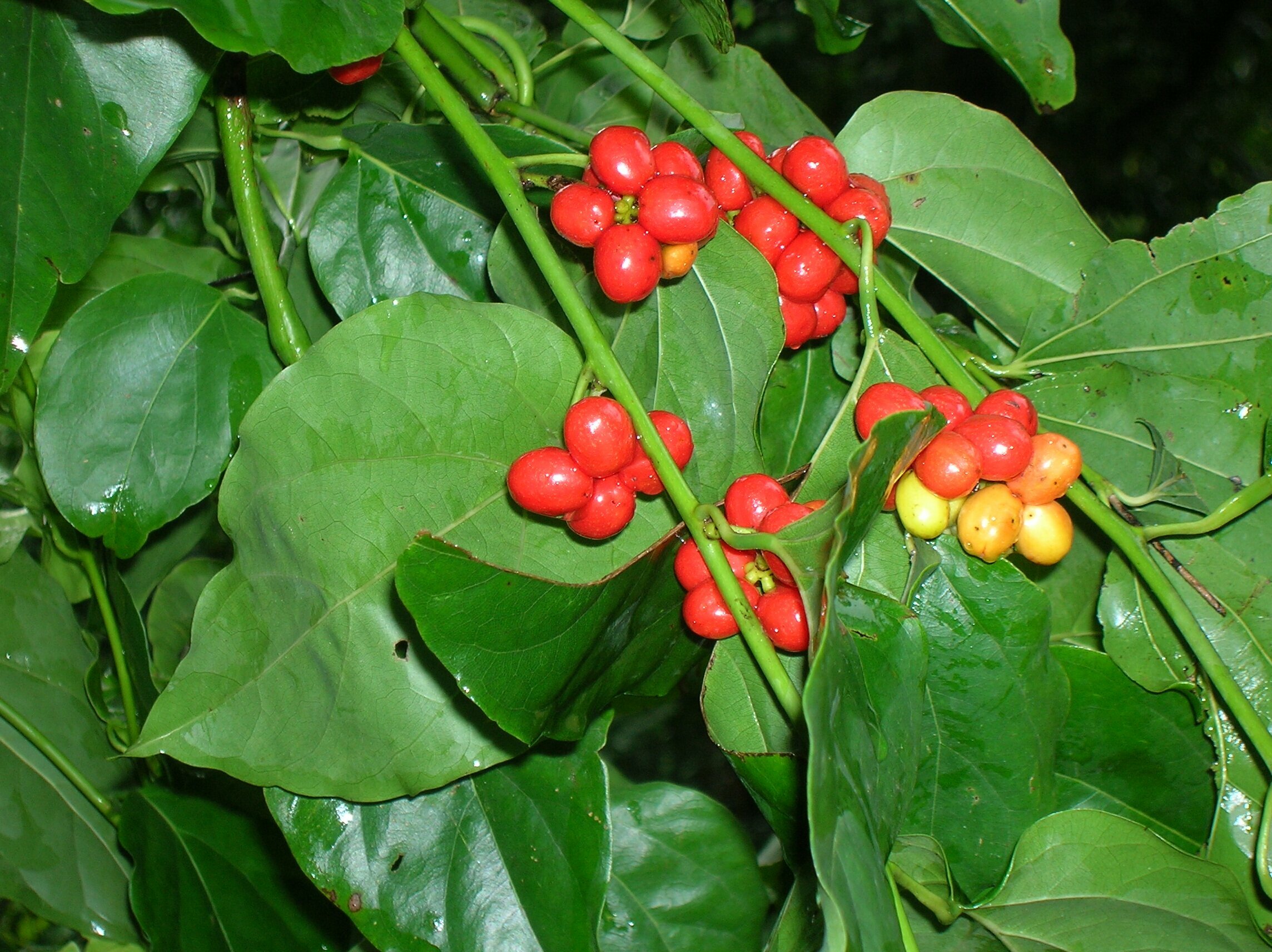 |
|||
| 450. Turnera ulmifolia Linn. Family: TURNERACEAE Flowering & Fruiting: December-January. Ecology: Occasional, in thickets near foot hills. Description: Undershrubs. Stem pubescent. Leaves alternate, broadly lanceolate, 2 glands at base, pubescent. Flowers yellow, axillary, solitary. Capsule subglobose, pubescent. Medicinal uses: Turnera ulmifolia is used to treat gastrointestinal problems (constipation,ndiarrhea), colds and flu, and circulatory problems (heart palpitations), infant care (gripe), ob/gyn issues (menstrual cramps), and dermatological issues. The leaves are used for treating hair loss and thrush. A paste is made from the leaves along with the mustard oil. The resultant is applied externally on the waist daily at night for the treatment of lumbago. IUCN Status: |
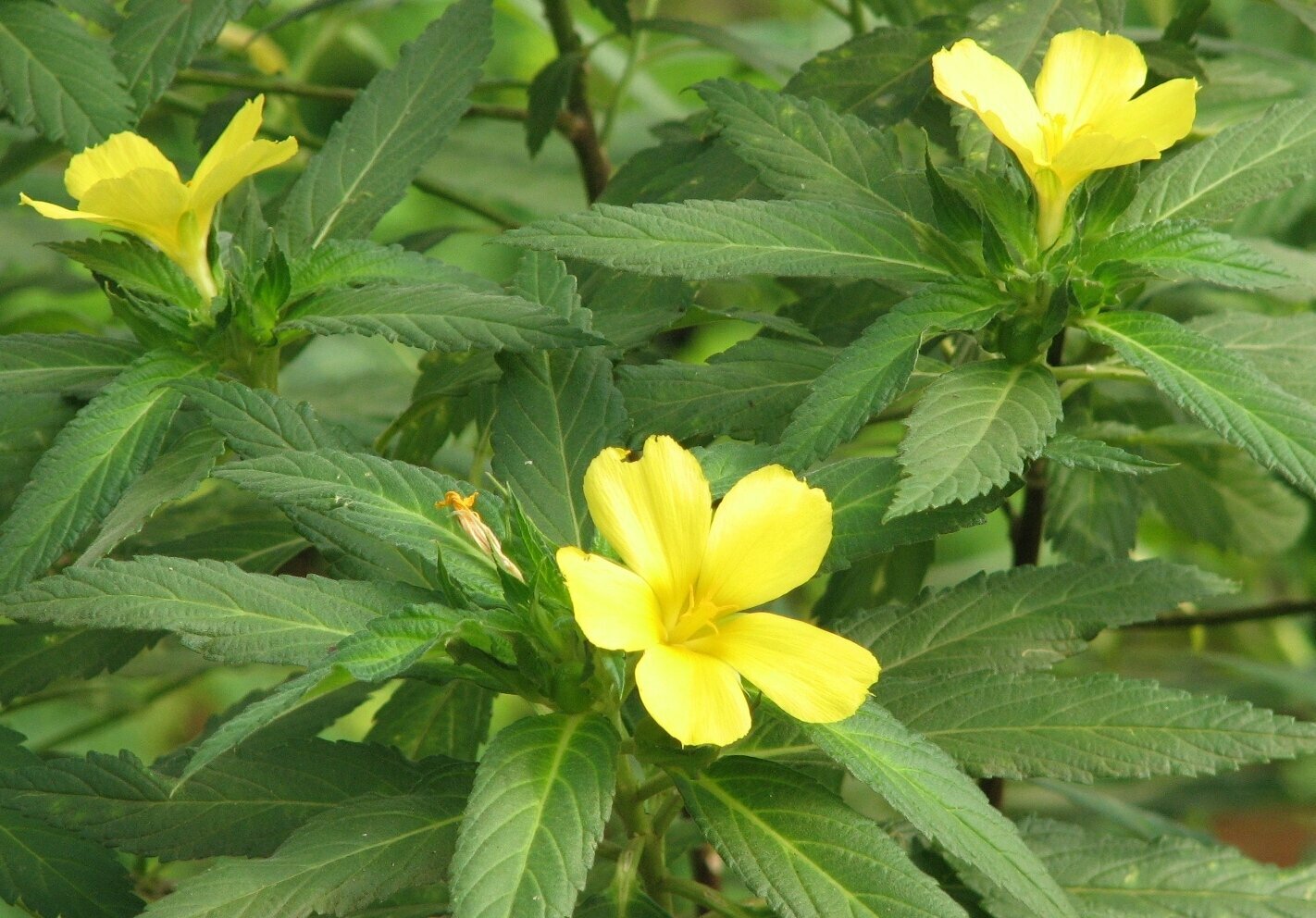 |
|||
| 451. Tinospora cordifolia Willd. Hook. F. & thoms. Family: MENISPERMACEAE Local name: Guluchi Flowering & Fruiting: May – August & September – November Ecology: Common in forests of foot hills near waer course Description: Dioecious climbers. Pld stem grey, crocky, sending sown pwndulous fleshy roots. Leaves deeply cordate, ovate, apiculate. Flowers yellow in drooping axillary panicled cyme. Anthers brusting obliquely in male flowers. Staminodes clavate, carpels 3 in female flowers. Drupe globose, scarlet red when ripe. Medicinal uses: The plant is used for diabetes, high cholesterol, allergic rhinitis, upset stomach, gout, lymphoma and other cancers, rheumatoid arthritis, hepatitis, peptic ulcer disease, fever, gonorrhea, syphilis, and to boost the immune system. IUCN Status: |
 |
|||
| 452. Tonningia axillaris (Linn.) Family: COMMELINACEAE Flowering & Fruiting: August-December Ecology: Gregarious in marshy places and dilapidated temple walls. Description: Sub-succulent, creeping herbs; branches erect, spreading. Leaves sheathing, linear, acuminate, tapering. Flowers bright-blue, in short axillary clusters. Anthers yellow, oblong. Capsule acute, 6- lobed. IUCN Status: |
 |
|||
| 453. Tragia involucrata Family: EUPHORBIACEAE Flowering & Fruiting: December-March. Ecology: Abundant, climbing on bushes. Description: Stout herbs, branches twinina, villous with scattered pungent sua hairs. Leaves ovate-oblong, elliptic or rhomboid, base merrate, acuminate, hairy and setose. Flowers in teatre spicate racemes. Female sepals hirsut Capsule hirsute. Seeds globose, purple black, strophiolate. Medicinal Uses: Involucrata leaf has been traditionally used to treat inflammation, wounds, eczema, scabies and skin infections. It has also been found to be effective in treating pain and bronchitis (Kirtikar and Basu, 1987). The T. involucrata root has been traditionally used for the treatment of high fever. IUCN Status: |
 |
|||
| 454. Trema orientalis (Linn.) Family: CANNABACEAE Flowering & fruiting: March-June. Ecology: Fairly abundant in moist forests. Description: Small trees, young shoots white pubescent. Leaves ovate lanceolate, base obliquely subcordate, serrate, triplinerved, acuminate, canescent beneath. Flowers dioecious, axillary, cymose. Tepals greenish. Stigma ciliate. Drupe ellipsoid. Medicinal Uses: The leaves and the bark are used to treat coughs, sore throats, asthma, bronchitis, gonorrhea, yellow fever, toothache, and as an antidote to general poisoning. A bark infusion is reportedly drunk to control dysentery and a leaf decoction is used to deworm dogs. IUCN Status: |
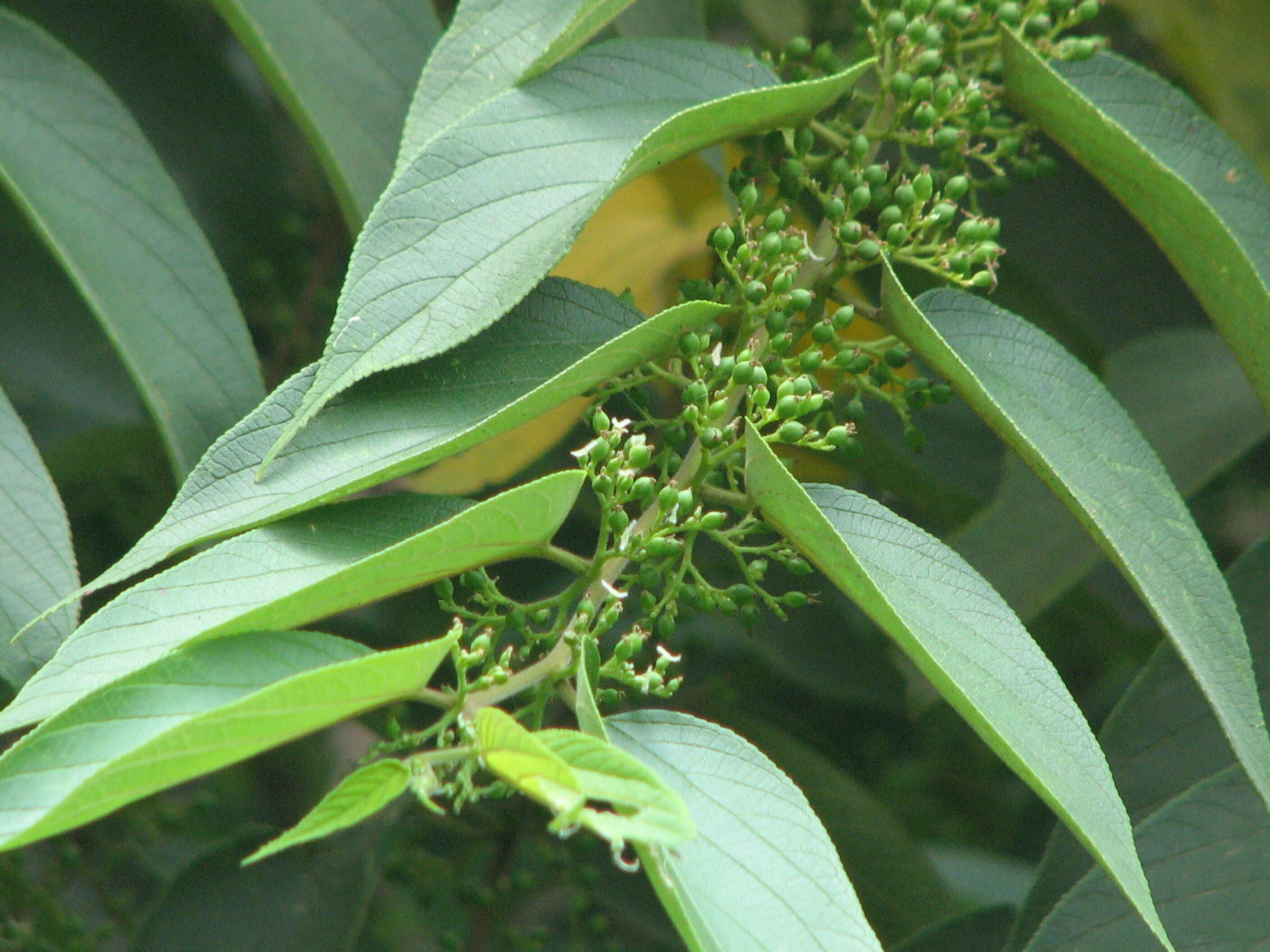 |
|||
| 455. Trichosanthes tricuspidate Lour. Family: CUCURBITACEAE Local name: Ban Turuda, Ban Chuda, Mahakal Description: Climbers; stems robust, branched, angular-striate, grooved, glabrous; branches sulcate. Leaves simple, alternate, spiral; petioles ca. 3-10 cm long; lamina ca. 5-25 x 6-17 cm, palmately 3-5-lobed, suborbicular, cordate at base, acuminate at apex, margin denticulate; tendrils 2-3-fid. Inflorescences in racemes; Flowers 5-10; Male flower: peduncles ca. 15-30 cm long; bracts villous; calyx tube ca. 4.5 cm long, attenuated; corolla 5-lobed, papillose; staminal filaments ca. 0.1-0.2 cm long; Female flowers axillary, solitary; bracts fimbriate. Medicinal Uses: Fruit extract is sniffed for removing all filthy mucous from the nose. Plants are collected by witch doctor (Guni/Trantik) for performing tantra-mantra. IUCN Status: |
 |
|||
| 456. Tridax procumbens L. Family: ASTERACEAE Local name: Bisalya Karani Flowering & Fruiting: Throughout the year Ecology: Found along paths, roadsides and in the crevices of walls and rocks. Description: It is covered with stiff, erect hairs. The leaves, borne on stalks are simple, opposite, thick, egg-shaped, with deeply toothed margins, and covered in dense hair. Medicinal Uses: Plant extract is applied on fresh cut to quick check of bleeding and also for wound healing purposes.Useful in jaundice, bronchial catarrh, diarrhoea, dysentery, inflammation, ulcers, anal fistula, and hemorrhoids. It promotes hair growth. Leaf extract cures liver disorders. IUCN Status: |
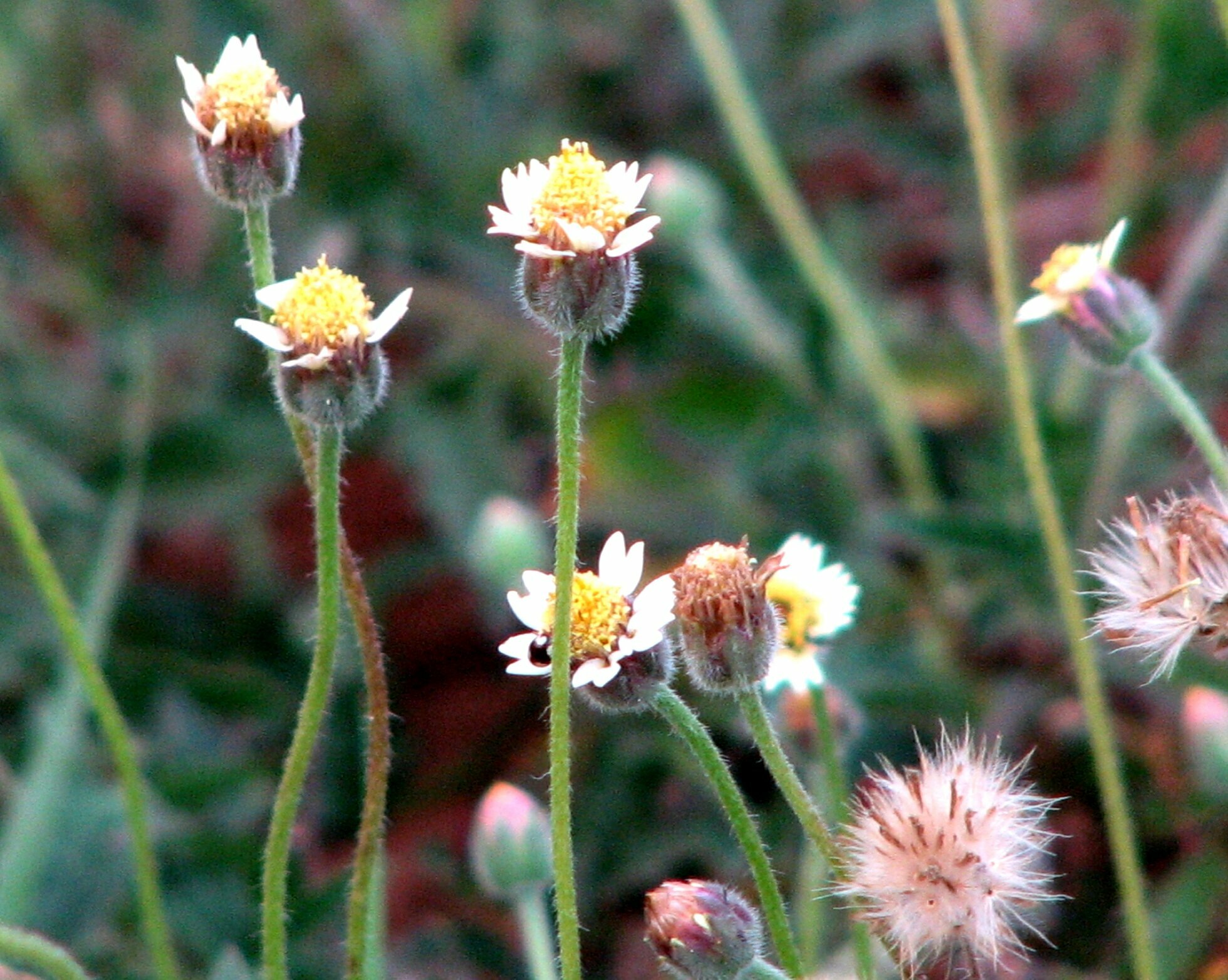 |
|||
| 457. Typhonium trilobatum (Linn.) Family: ARECACEASE Flowering & Fruiting: July-September & September-November Ecology: Very common on moist hill slopes Description: Tuberous herbs. Leaves hastetely3-lobed or sub-3-partite; lobes ovate, entire, acute. Spathe green or red-purple inside; limb broadly ovate, acuminate. Neuter flowers white, curved, twisted; appendage bright red stipitate, muricate. Berries ovoid, 1-2 seeded. Medicinal Uses: A decoction of the tubers is used to treat cough, asthma and nausea, and also to stop vomiting and against headache, gastric ulcers, abscesses and snakebites. IUCN Status: |
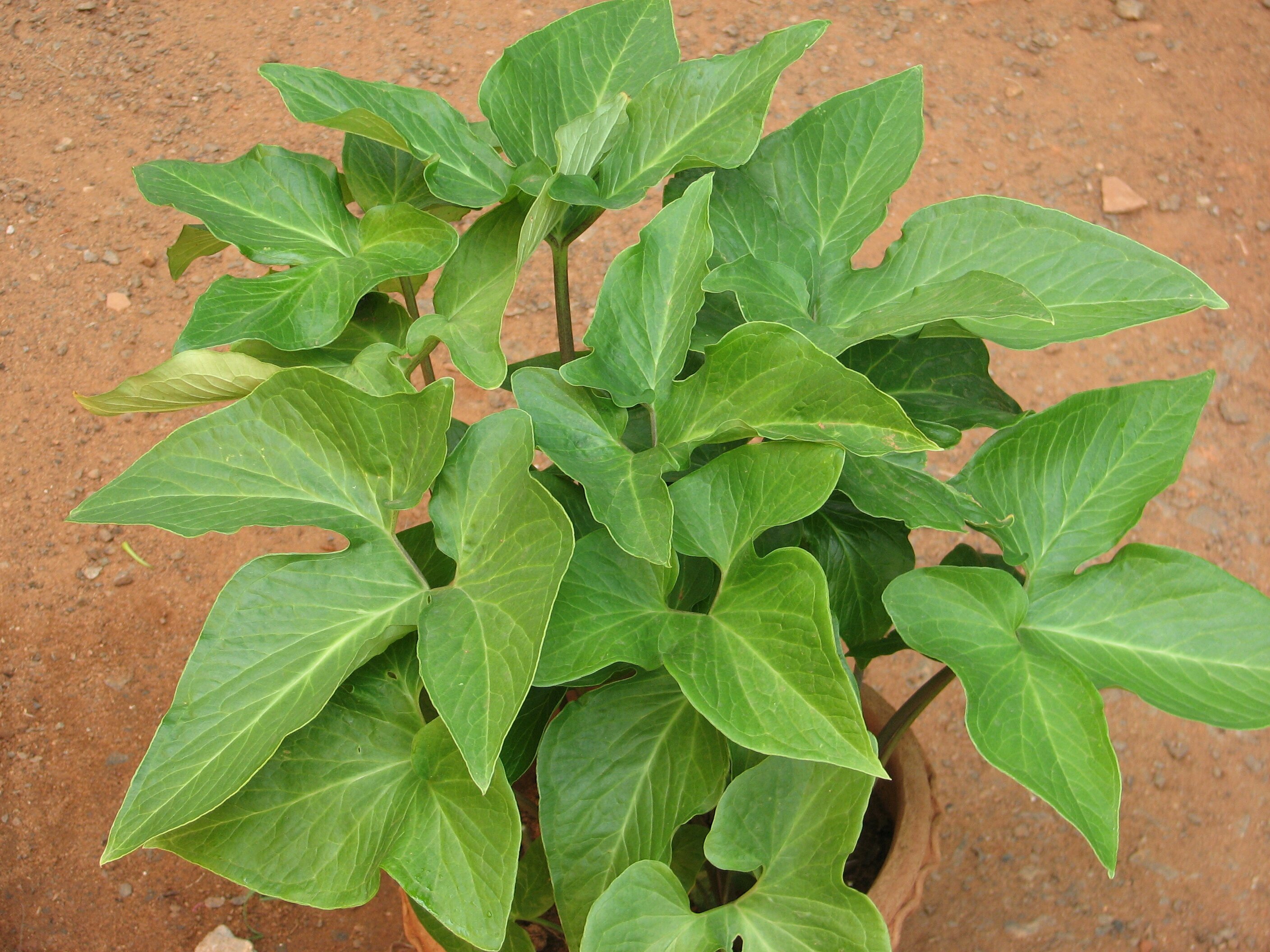 |
|||
| 458. Uraria lagopodoides Family: FABACEAE Local name: Krishna Parni Flowering & Fruiting: November-December. Ecology: Gregarious, in moist waste places and shady localities during monsoon. Description: Hare Foot Uraria is an herb, prostrate or spreading, up to 2 ft tall. Leaves are mostly trifoliolate, rarely 1-foliolate, carried on 1-2 cm long stalk. Central leaflet is nearly round or elliptic to ovate, 2-6 × 1.5-3 cm, gray-yellow velvety on the underside, base rounded or heart-shaped, tip rounded or notched. Medicinal Uses: A decoction of the leaves and roots is used for the treatment of dysentery and diarrhoea. An aqueous extract of the leaves has abortifacient properties. Aqueous and alcoholic extracts of the plants are used to treat intermittent fever and chest inflammation. The whole plant is used medicinally for relieving swelling. IUCN Status: |
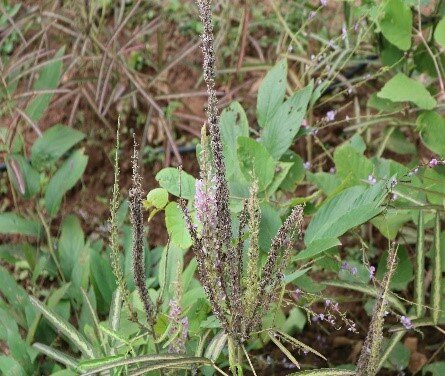 |
|||
| 459. Urochloa panicoides Family: POACEAE Flowering & Fruiting: July-December. Ecology: Gregarious, in moist waste places and shady localities during monsoon. Description: Erect or decumbent annuals, rooting at base, nodes hairy. Leaves large, linear-lanceolate, glabrescent, sheaths hairy. Leaves Spikelets elliptic, acuminate, pubescent, 2-seriate, alternate on 3-quetros rachides. Glumes 4, iv obtuse, articulate at apex. IUCN Status: |
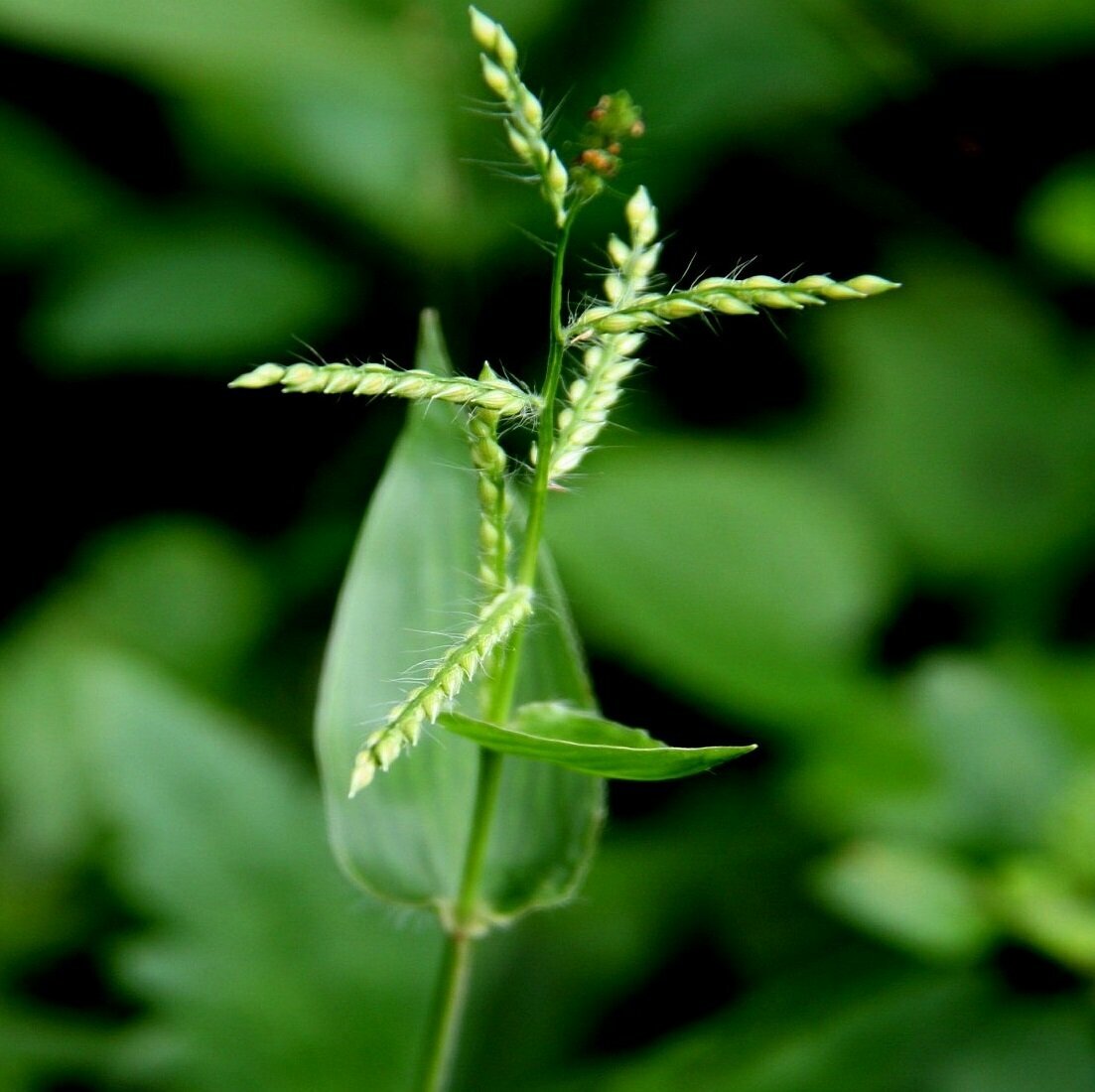 |
|||
| 460. Utricularia stellaris Linn. Family: LENTIBULARIACEAE Flowering & Fruiting: November-February Ecology: Common in ditches and ponds. Description: Leaves numerous, whorled, base auricled, repeatedly divided. Traps with lateral mouth. Scape emergent, floats 5-7. Flowers 5-7, yellow; spur appressed. Capsule globose; seeds 4-6 angled, winged. IUCN Status: |
 |
|||
| 461. Uvaria hamiltonii Hook. F.& Thoms. Family: ANNONACEAE Flowering & Fruiting: May – July & August – Ocotber Ecology: Occasional, along atreams in damp forests. Description: Shoots rusty tomentose. Leaves elliptic olong or ovoate, stellate-tomentose beneath. Sepals brown tomentose outside, pubescent within. Petals subfleshy, tomentose, brick-red, carpels many, pubescent. Fruitlets ovoid. IUCN Status: |
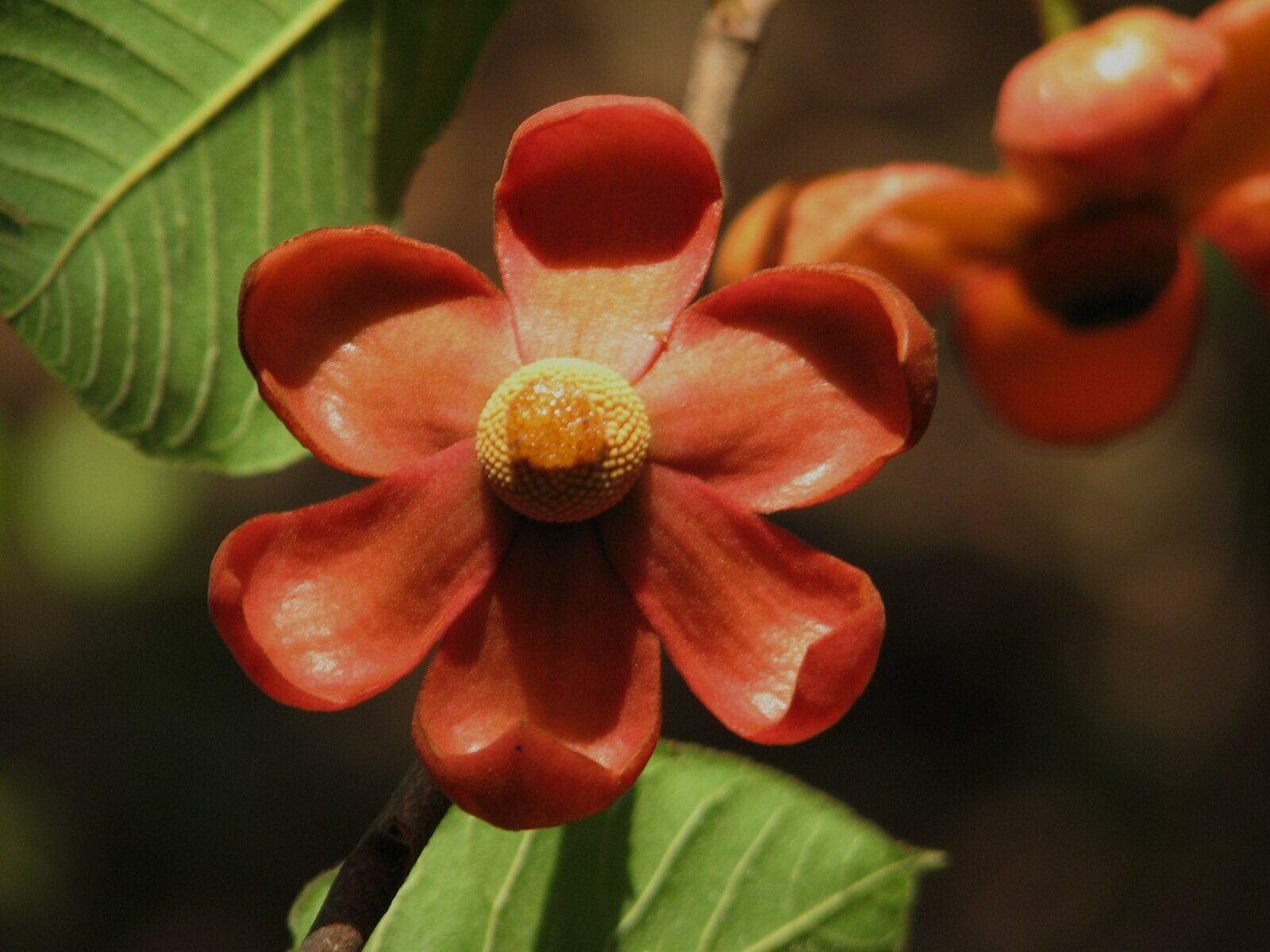 |
|||
| 462. Vanda tessellata (Roxb.) Family: ORCHIDACEAE Local name: Madang, Makari, Rasana Flowering & Fruiting: December-March Ecology: Quite common, epiphytic on Shorea robusta Gaertn, Madhuca longifolia (Linn.) Mac bride and Diospyros melanoxylon Roxb. Medicinal Uses: The plant part is used for the treatment of dyspepsia, bronchitis, inflammations, piles and hiccup. The juice of the leaves is used topically in otitis and a paste of them finds use as a febrifuge. Aerial roots are pasted with mustard oil and applied externally on joint pain, gout till cure. Plant paste is applied externally in rheumatic part of the body. Leaves or flowers are kept inside the amulet (Tabiz) and given by witch doctor to victim to avoid from fear and ghost. IUCN Status: |
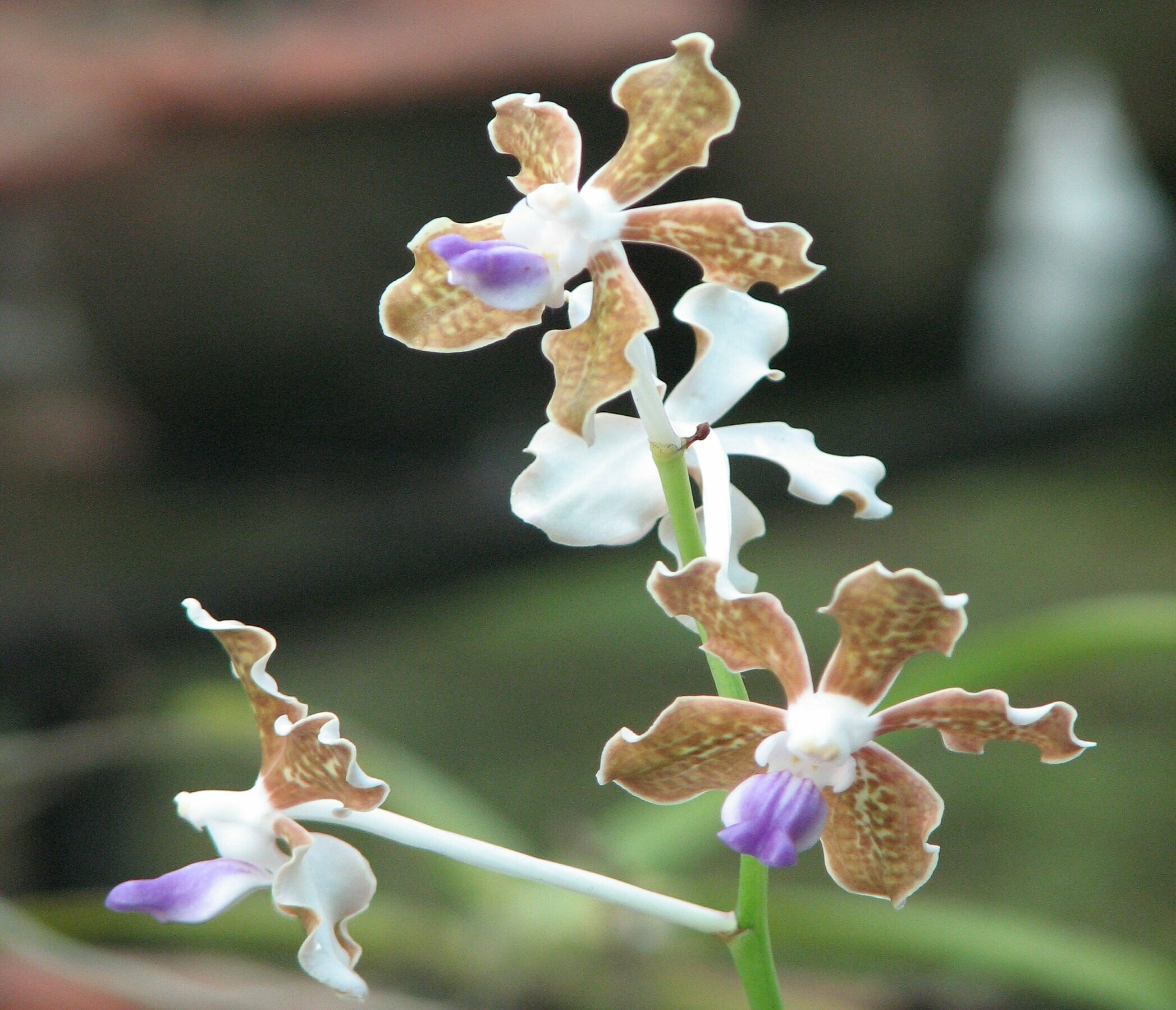 |
|||
| 463. Vernonia cineria (Linn.) Family: COMPOSITAE Local name: Bada pokasungha Flowering & Fruiting: Throughtout the Year Ecology: Very common in waste places, scrub forests. A very variable species. Description: Erect annuals. Stem grooved or serriate, pubescent. Leaves broadly lanceolate, base cuneate, coarsely serrate or crenulate, pubescent along nerves beneath. Heads pale-pruple, in axillary and terminal corymbose panicles. Achenes 2-3 angled, silky hairy. Medicinal Uses: Seeds: Cures diseases caused by roundworms and threadworms, coughs, flatulence, intestinal colic, dysuria, leucoderma, psoriasis and other chronic skin-diseases. The seeds are made into a paste with lime juice and used for destroying pediculi. IUCN Status: |
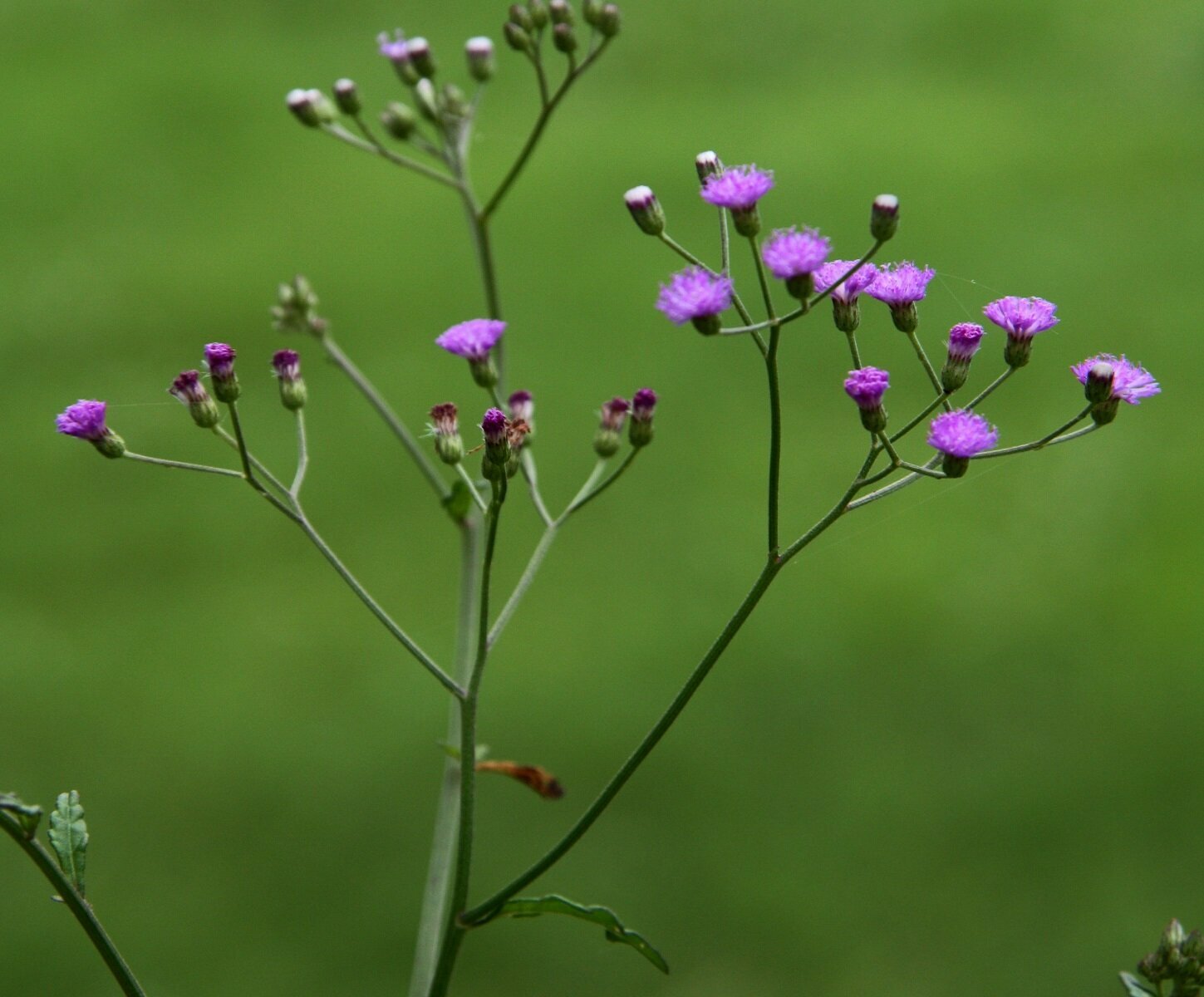 |
|||
| 464. Ventilago denticulata willd. Family: RHAMNACEAE Local name: Bhad-bhadriya Flowering & Fruiting: October-February. Ecology: Common in the forest periphery and ravenous lands. Description: Flowers 5-merous, dirty white in axillary and terminal panicled cyme. Samara pubescent, reticulately veined. Medicinal Uses: The plant is used to treat skin disease, sprains, atonic dyspepsia, mild fever and debility, deafness. Leaves are collected as fodder to goat and cow. Stem bark—powdered and mixed with sesame oil, externally applied to skin diseases and sprains. Root bark—used for atonic dyspepsia, mild fever and debility. Sap—used for the treatment of deafness. IUCN Status: |
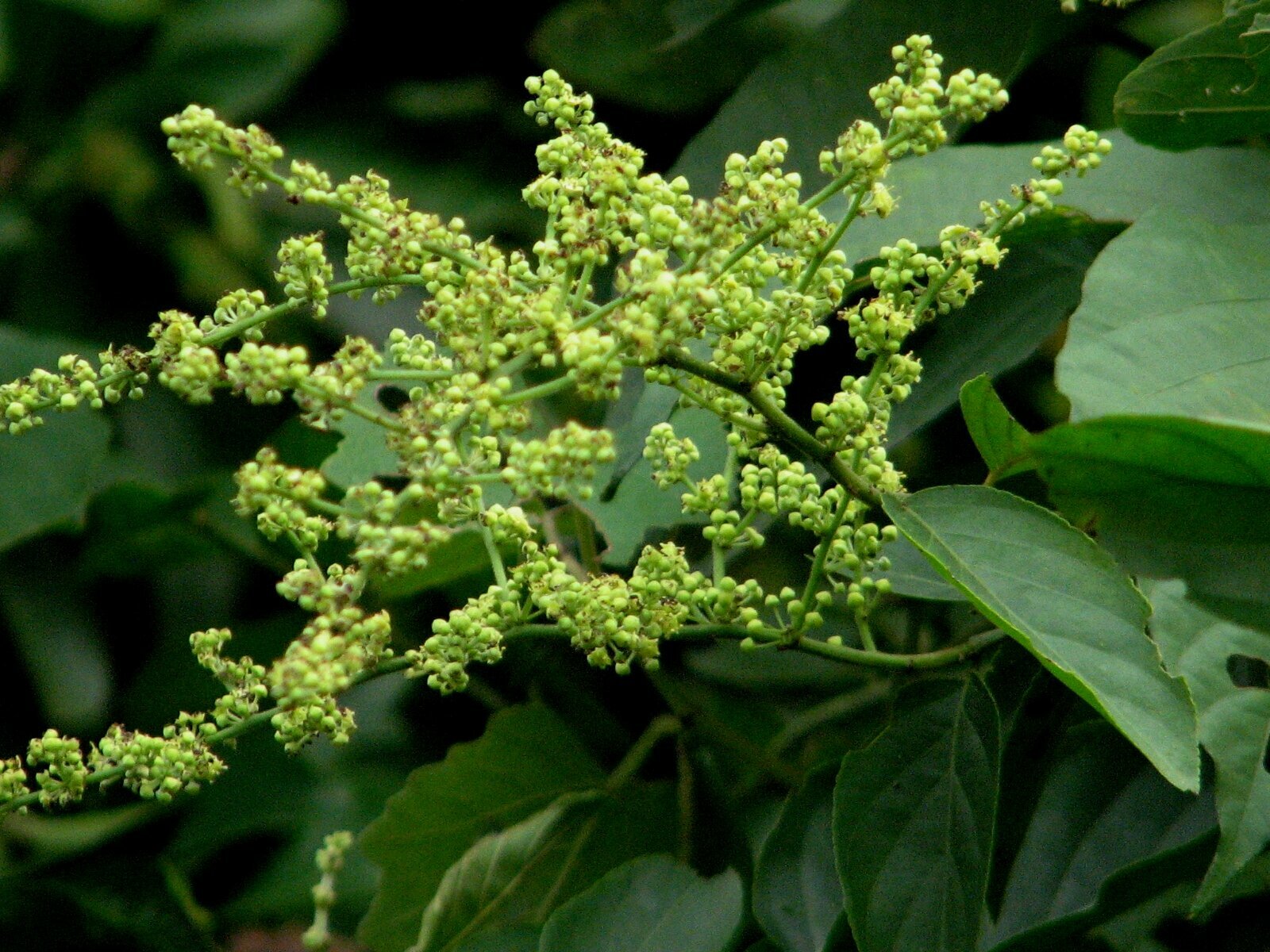 |
|||
| 465. Vetiveria zizanoides (Linn.) Family: POACEAE Flowering & Fruiting: August-November. Ecology: Common in damp grounds and forest glades: occasionally found plateau. Description: Stout, caespitose, rigid often gregarious grass. Leaves closely distichous imbricate at base, suberect, conduplicate below margins setulose-scabrid. Spikelets muricate and muriculate, linear lanceolate, sessile, pedicellate shorter. Glumes 4. Grain oblong, top oblique. Medicinal Uses: It is known as Khas-Khas and is widely used as cooling agent, tonic and blood purifier. It is used to treat many skin disorders and is known to have calming effect on the nervous system. Other medicinal uses of Khas Khas include ringworm, indigestion and loss of appetite IUCN Status: |
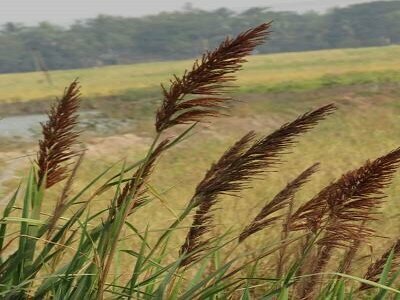 |
|||
| 466. Viscum monoicum Family: SANTALACEAE Flowering & Fruiting: November-January. Ecology: Occasional, parasitic on Madhuca longifolia, Diospyros melanoxylon and Schleichera oleosa. Description: Tufted, pendulous shrubs. Stem compressed at the ends. ‘Leaves narrowly elliptic or lanceolate, acute, falcate. Flowers greenish yellow, few at the nodes between two bracts. Berry oblong, green, shortly stipitate. Medicinal Uses: The plant Viscum articulatum is used as an aphrodisiac, and also as a febrifuge, its paste is applied to cuts. V. Monoicum is a powerful narcotic and is poisonous to animals. The leaves of plants parasitising Strychnos nux-vomica possess poisonous properties, more or less similar to those of the host tree. IUCN Status: |
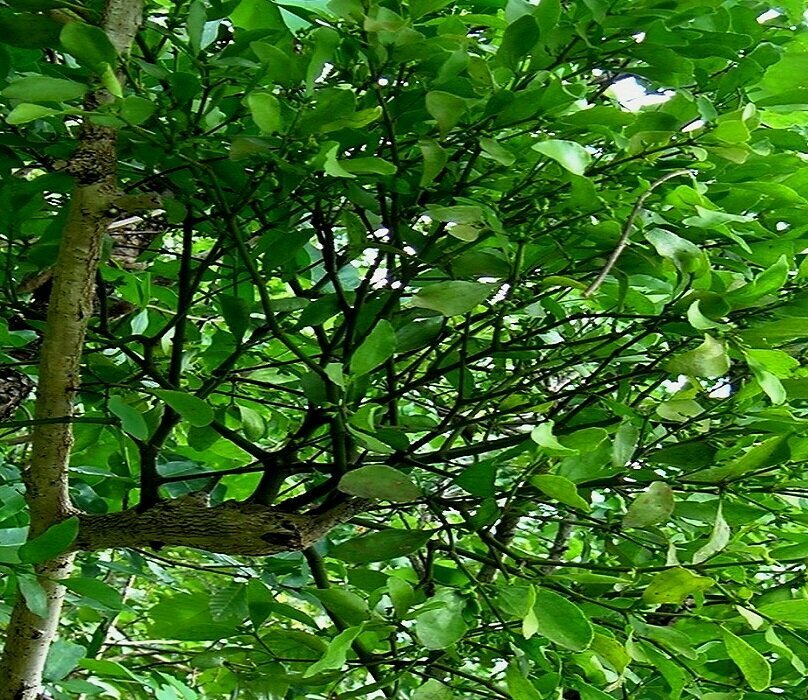 |
|||
| 467. Viscum articulatum Burm.f. Family: LORANTHACEAE Local Name: Mandirika jhad Flowering & Fruiting: December – January Description: It is a semiparasitic shrub which grows up to 20–90 cm tall. It is much‐branched, evergreen and slender; branches are flat, opposite, dichotomous or verticillate; internodes are terete or flattened with successive internodes at a right angle to each other. The leaves are visible only in the very young internodes as small bracts below the flowers. The flowers are very minute, stalkless, and in stalkless, 3-flowered spikes. There are two or several spikes at a joint. The fruit is stalkless, nearly spherical, about 3 mm in diameter, white and shining when ripe. Medicinal Uses: Leafless Mistletoe is used as a cure for fever. Paste is applied to cuts. Whole plant is ground with water and the paste is applied externally on the part affected by gout IUCN Status: |
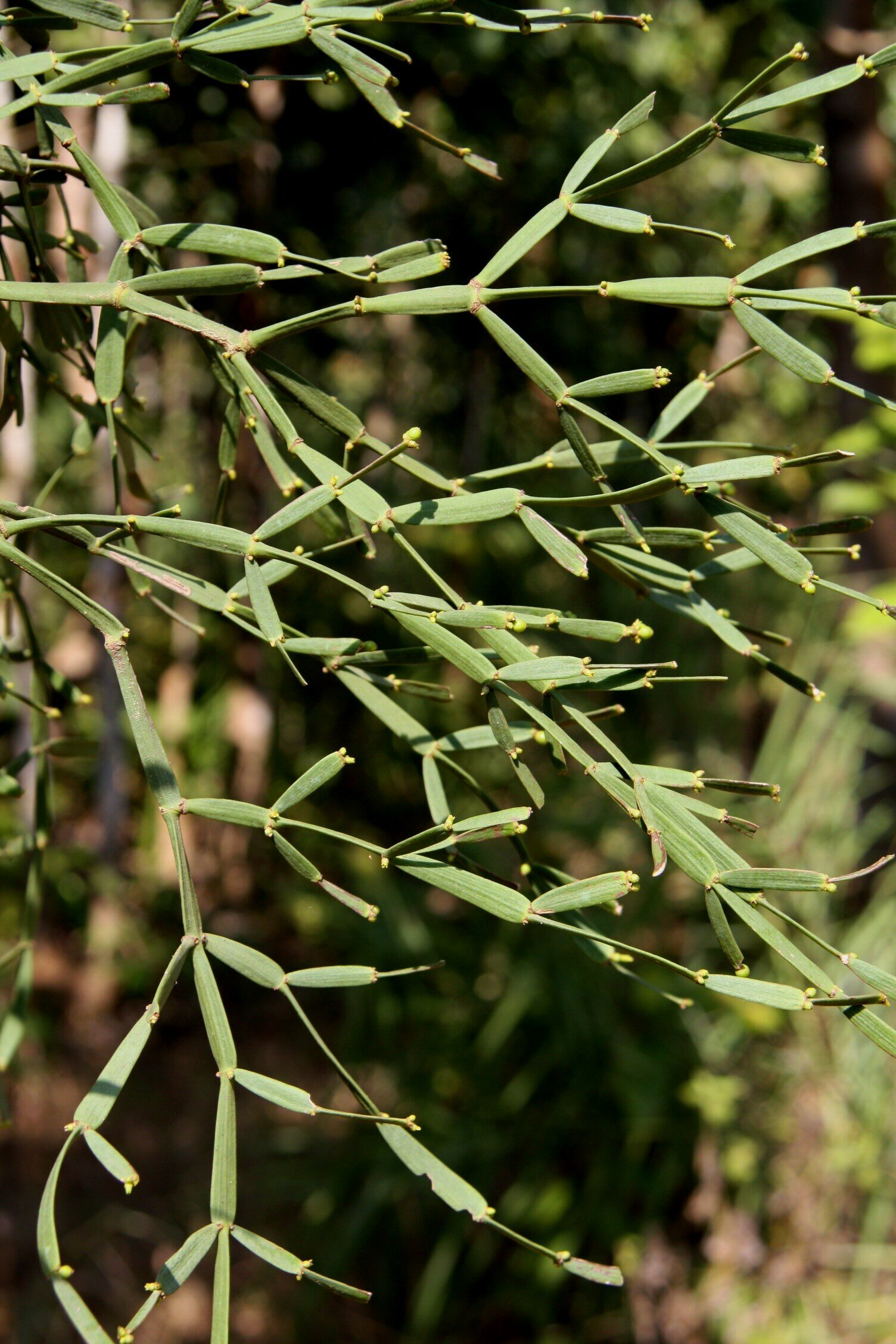 |
|||
| 468. Vitex negundo L. Family: VERBENACEAE Local Name: Baigunia, Sinduri Flowering & Fruiting: July – August Ecology: Found in scrub-jungles and road-sides in the warmer area. Medicinal Uses: The juice of the leaves is used for removing foetid discharges and worms from ulcers, whilst an oil prepared with the leaf juice is applied to sinuses and scrofulous sores. The leaves are stuffed into pillows, which are then used to relieve headache. The leaves are harvested in early summer and used fresh or dried. A decoction of the stems is used in the treatment of burns and scalds. The dried fruit is vermifuge. The fruit is also used in the treatment of angina, colds, coughs, rheumatic difficulties. The fresh berries are pounded to a pulp and used in the form of a tincture for the relief of paralysis, pains in the limbs, weakness. The root is expectorant, febrifuge and tonic. It is used in the treatment of colds and rheumatic ailments. The root is harvested in late summer and autumn, and dried for later use. The plant is said to be a malarial preventative. The roots are ground with honey and put in an earthen vessel. IUCN Status: |
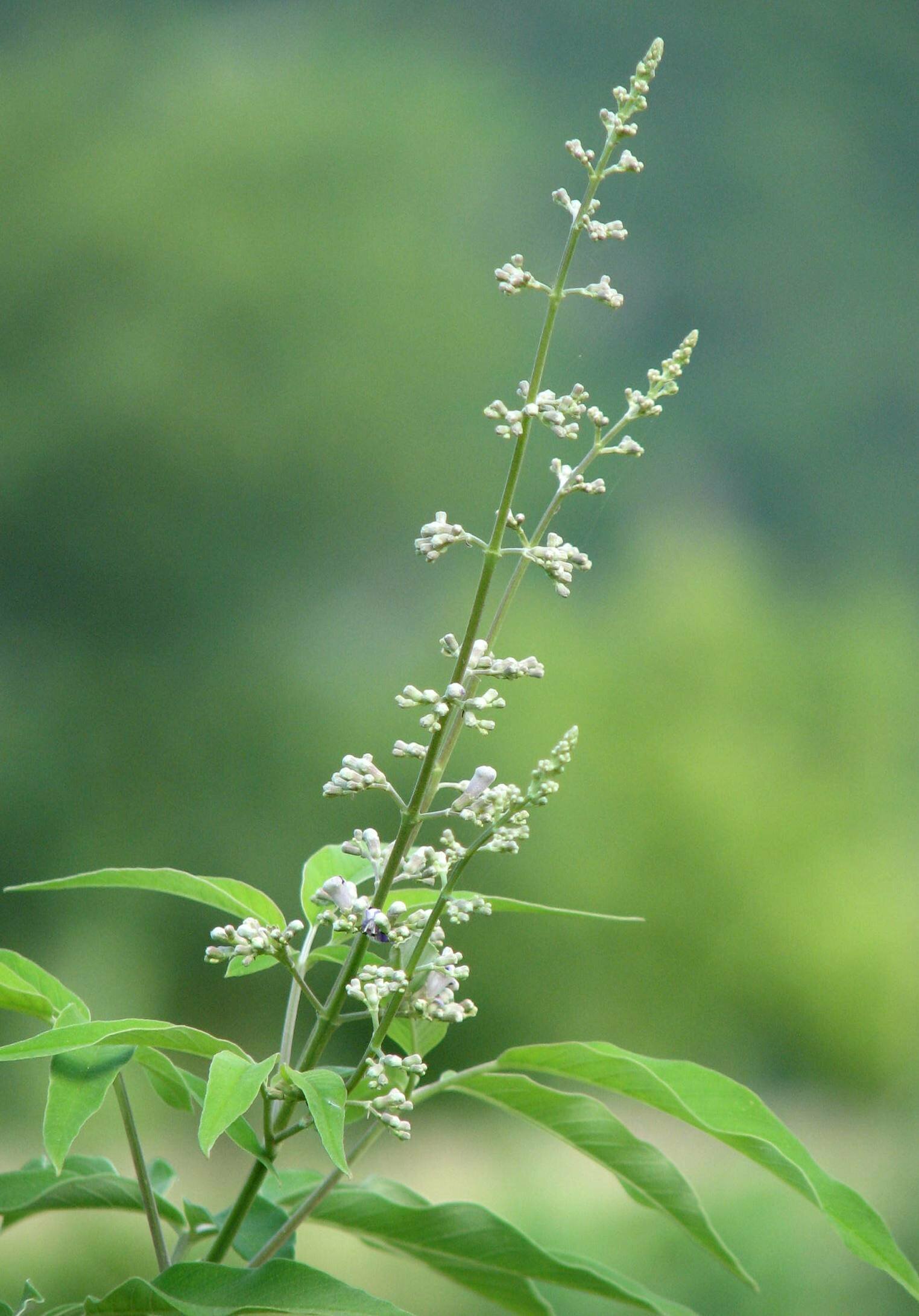 |
|||
| 469. Waltheria indica Linn. Family: MALVACEAE Flowering & Fruiting: July-November Ecology: Scrub forest and wastelands. An early coloniser in scrubed ground. Medicinal Uses: The plant (part not specified) is antisiphylitic and febrifuge. A decoction of various plant parts is taken as a treatment for fever and syphilis. It is applied externally on skin eruptions and wounds. A decoction of the leafy stems is taken to relieve fevers, coughs, colds, bladder ailments, vaginal infections, ypertension, ulcers and as a remedy for haemoptysis. A decoction of the root is given as an antidiarrhoeal and general tonic to children. It is also used as a cough medicine and for healing wounds. A general screening of the plant revealed the presence of some general flavonoids and caffeic acid. IUCN Status: |
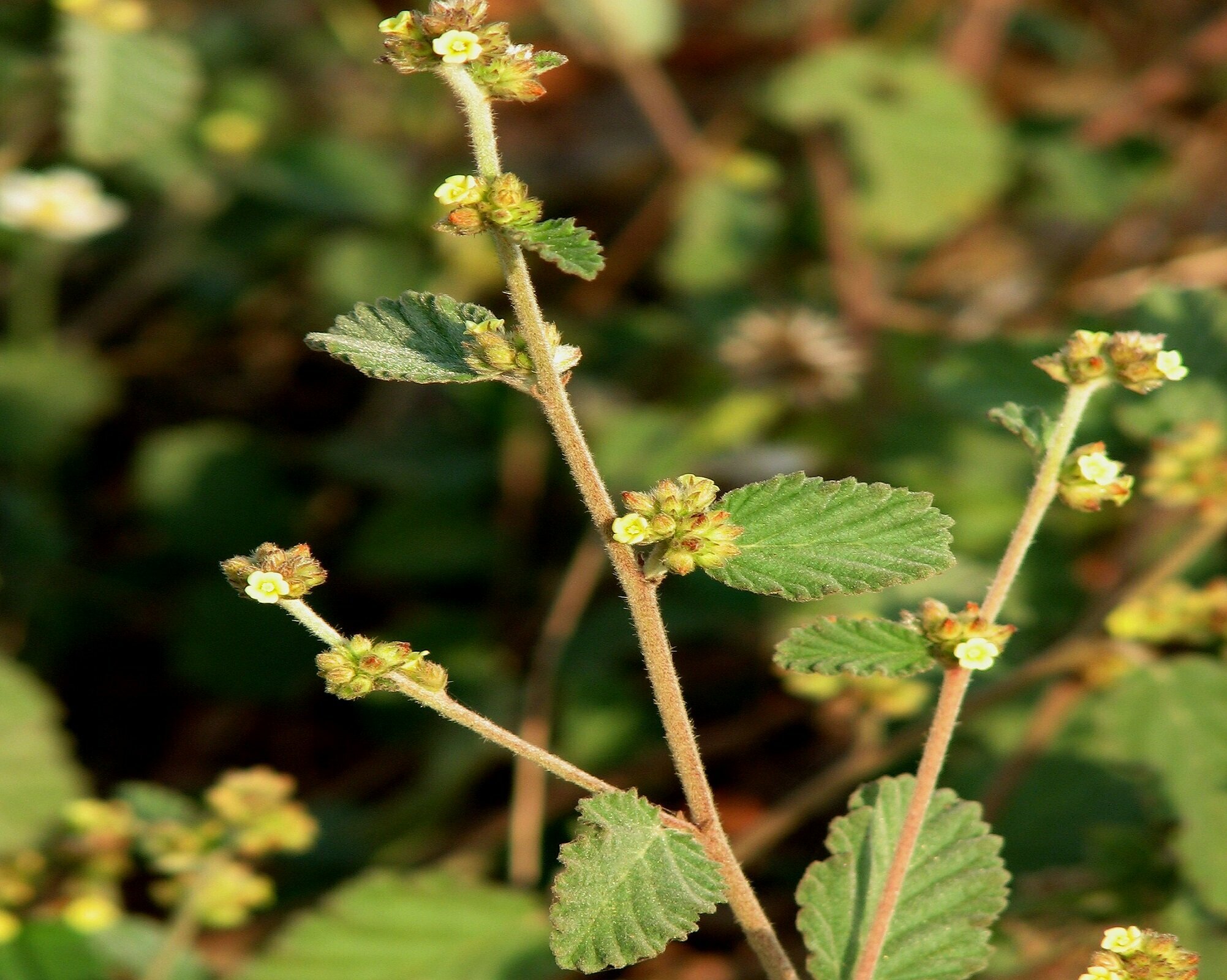 |
|||
| 470. Wedelia chinensis (Osbeck) Merr. Family: ASTERACEAE Local Name: Bhringraj Flowering & Fruiting: Throughout the year Ecology: Found on open waste places at sea level. Description: Herbs, procumbent or ascending, rooting at the lower nodes; stems reddish, glabrous. Leaves spathulate-oblanceolate, acute, trinerved, attenuate margins flat or slightly inrolled, entire or feebly serrate, 2-6 x 0.5-1.5 cm, shortly appressed hairy on both the surfaces, subpetiolate. Heads yellow, solitary on terminal peduncles, 5-7 mm across; peduncles 3-7 cm long. Achenes dark brown, 4-5 x 2-3 mm, rugulose, glabrous; those of ray florets triquetrous; those of disc florets compressed. Pappus a minute, irregularly margined, withered cup at maturity. Medicinal Uses: Plant paste is applied to blackening grey hairs. IUCN Status: |
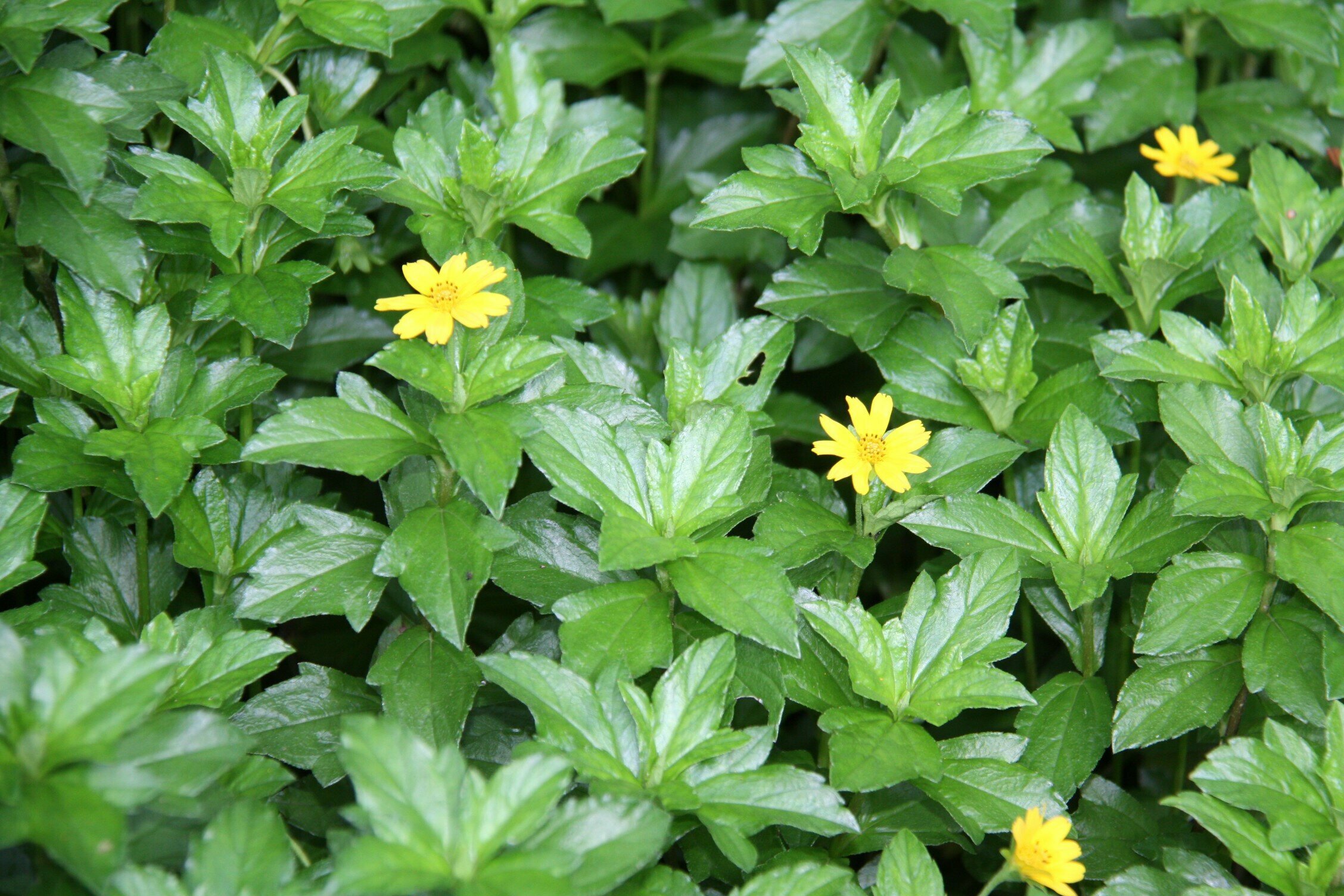 |
|||
| 471. Woodfordia Fruticosa L. Family: LYTHRACEAE Local Name: Dhatki Flowering & Fruiting: February-April & April-June. Ecology: Plants are frost tolerant. Requires a sunny position. Succeeds in any well-drained soil. Medicinal Uses: Dried flowers are powdered with dried zinger, black pepper, black salt (Sendha Namak), leaves of ocimum (Tulsi) and given in the treatment of first stage of cancer. Flowers are used in the treatment of cancerous wound, rheumausm and sperm debility. Flowers are used for an Ayurvedic tonic called Ashokarist. A viscous juice (Atta) is collected from the base of flowers and given with Andrographis paniculate (Bhuin Nimb) to treat boils, blister and old wounds. Flowers are collected and used as dye in the area. 10ml of fresh leaf juice is taken with 200ml sap (toddy) obtained from Phoenix sylvestris in the early morning on empty stomach and at noon for 2-3 days for irregular menstrual. IUCN Status: |
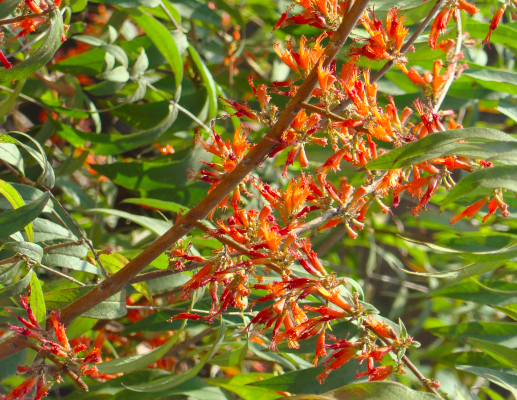 |
|||
| 472. Wrightia arborea (Dennst.) Family: APOCYNACEAE Local Name: Setkure Flowering & Fruiting: March – June & December – February Ecology: Common, in rocky hill slopes and valleys. Description: Small trees; branches tomentose, latex milky. Leaves distichous, elliptic or obovate, acuminate, tomentose beneath. Cymes terminal or subaxillary. Corolla salverform, greenish-orange or pale yellow with deep orange coronal scales. Follicles connate, grooved, pendant, cylindrical. Medicinal Uses: Wrightia arborea (Apocynaceae) has been used in traditional medicine to treat ailments such as menstrual and renal complaints, snake-bites, tooth-ache and diarrhea. IUCN Status: |
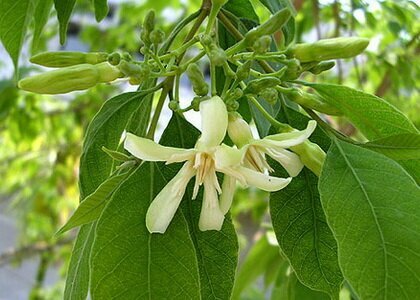 |
|||
| 473. Wrightia tinctoria (Roxb.) Family: APOCYNACEAE Local Name: Setkure Flowering & Fruiting: March – June & December – February Ecology: Common on foot hills, in dense forests. Description: Small trees, with milky juice. Leaves subsessile, elliptic oblong, acuminate. Flowers white. Corona scales segmented. Anthers yellow. Follicles curved, slender, cohering at tip. Medicinal Uses: The bark of the plant is used for treating Diarrhea, Piles and Skin diseases like Ringworm, Leprosy etc. Seeds have Anti Dysenteric, Astringent, Carminative, Depurative, Antihelminthic and Aphrodisiac property. It is used to treat Parasitic worms. Aphrodisiac property stimulates the sexual desire. IUCN Status: |
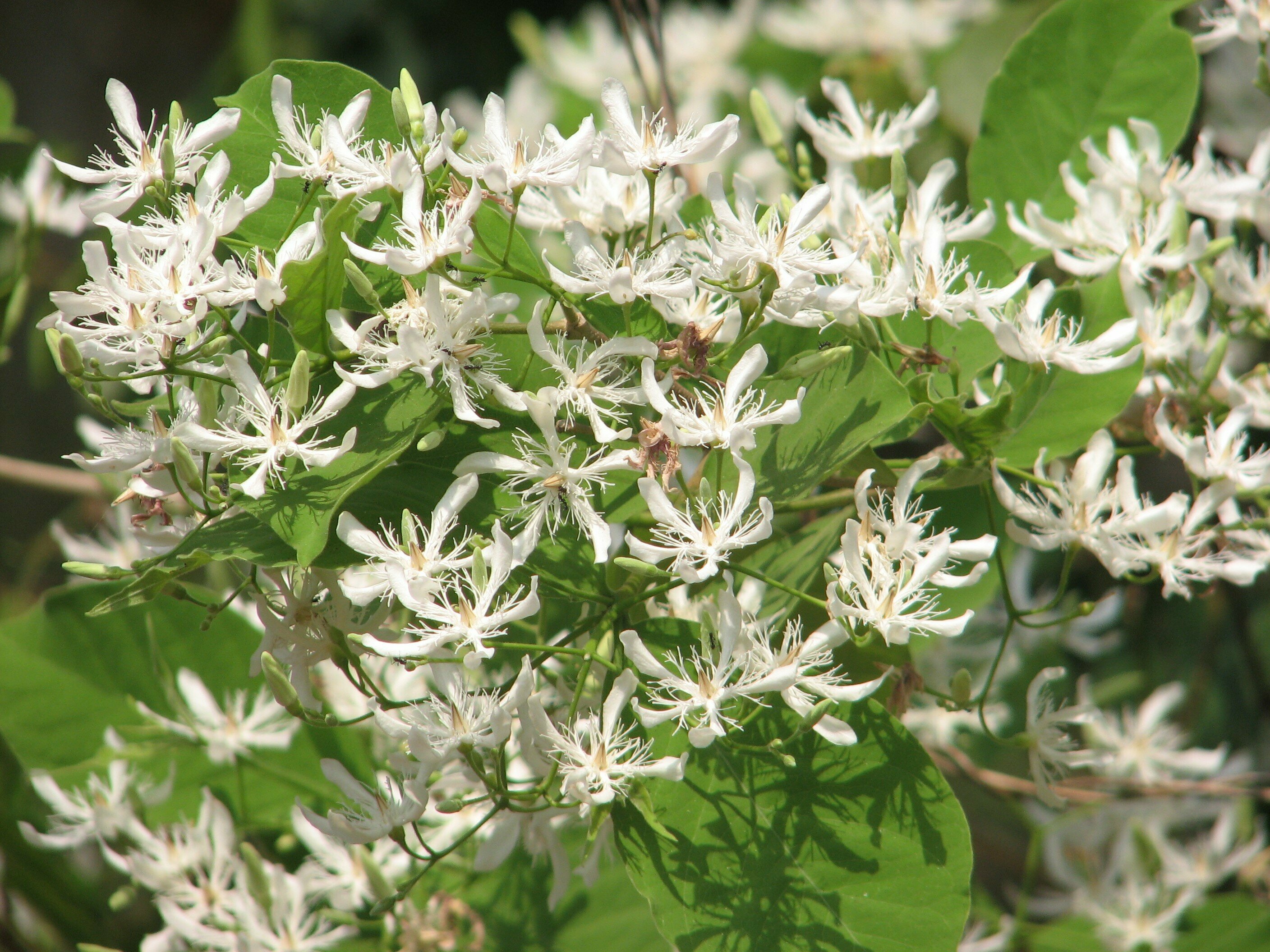 |
|||
| 474. Xanthium indicum Roxb. Family: ASTERACEAE Flowering & fruiting: November – March Description: Erect, hispid annuals. Leaves alternate, long-petioled, broadly- ovate, acute, irregularly lobed, serrate. Male capitula globose paleaceous. Female capitula ovoid, spinose, grandular. Fruit spiny. Rostra thick, divergent, apex hooked. Medicinal Uses: Xanthium strumarium has many medicinal properties like cooling, laxative, fattening, anthelmintic, tonic, digestive, antipyretic, improves appetite, voice, complexion anodyne, Antirheumatic, appetizer, diaphoretic, diuretic, emollient and sedative. IUCN Status: |
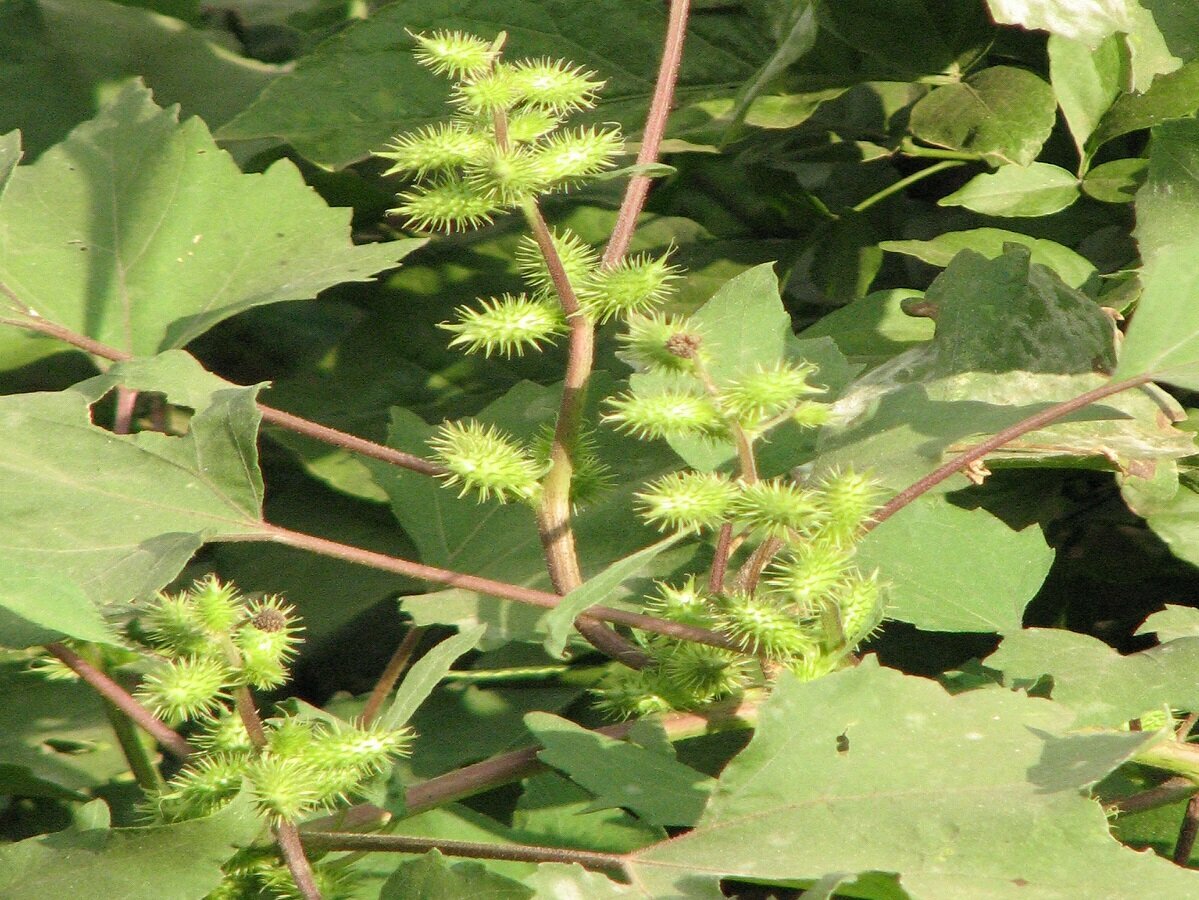 |
|||
| 475. Xanthium strumarium L. Family: ASTERACEAE Local name: Jahtagi, Chapak Natah Description: Xanthium strumarium is a much branched annual herb, growing up to 2 m tall. The erect stems are brownish or reddish-brown, often red-spotted, ribbed and roughly-hairy but without spines. The fruit is an ellipsoid brownish bur, crowned with two stout horns and covered with hooked spines. Medicinal Uses: Seeds are pasted with water and applied on skin diseases. IUCN Status: |
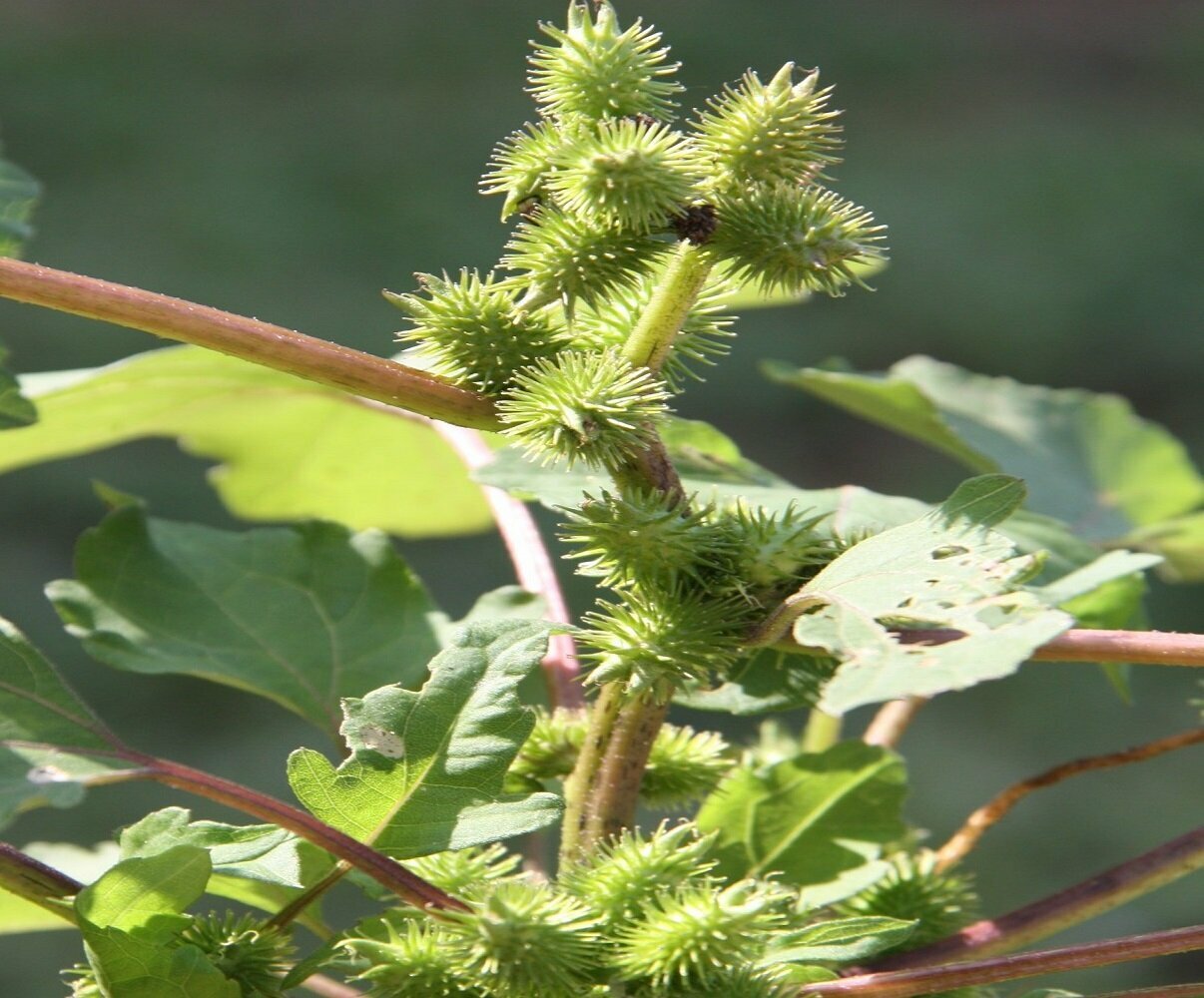 |
|||
| 476. Xantolis tomentosa (Roxb.) Family: SAPOTACEAE Local name: Gada Flowering & Fruiting: April – June & April of year Ecology: Occasional, along streams in damp forests. Description: Evergreen thorny trees with milky juice branchlet brown tomentose. Leaves oblanceolate-clustered. Flowers 5-merous, white, fascicled. Stamens and staminode 5. Berry. IUCN Status: |
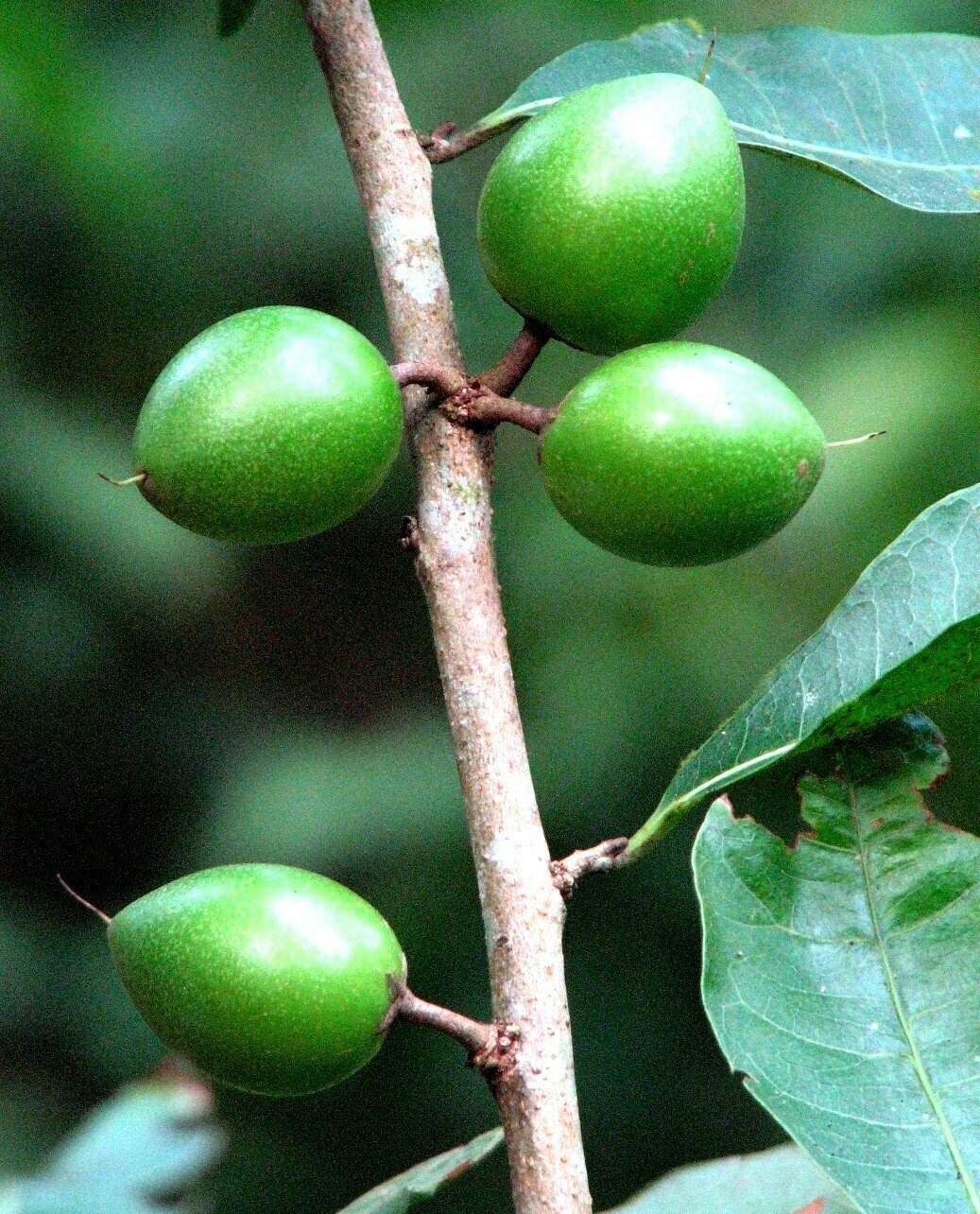 |
|||
| 477. Zingiber zerumbet (Linn.) Family: ZINGIBERACEAE Local name: Gada Flowering & Fruiting: August-September & October-November Ecology: Not common, in moist valleys near stream Description: Leaves elliptic-lanceolate, round, paler beneath, acuminate, ligule rounded. Flowers yellow, tubular-ventricose. Lip wrinkled, many-nerves, mid-lobe emarginate. Connective beaked. Stigma hairy. Medicinal Uses: The rhizome of Z.zerumbet has been widely used as medicinal herb. As medicinal herb it is used to treat many infestations such as treatment of inflammation and pain associated ailments, digestive system related ailments, cough, stomachache, asthma and also as a vermifuge. Also used in leprosy and other skin diseases. IUCN Status: |
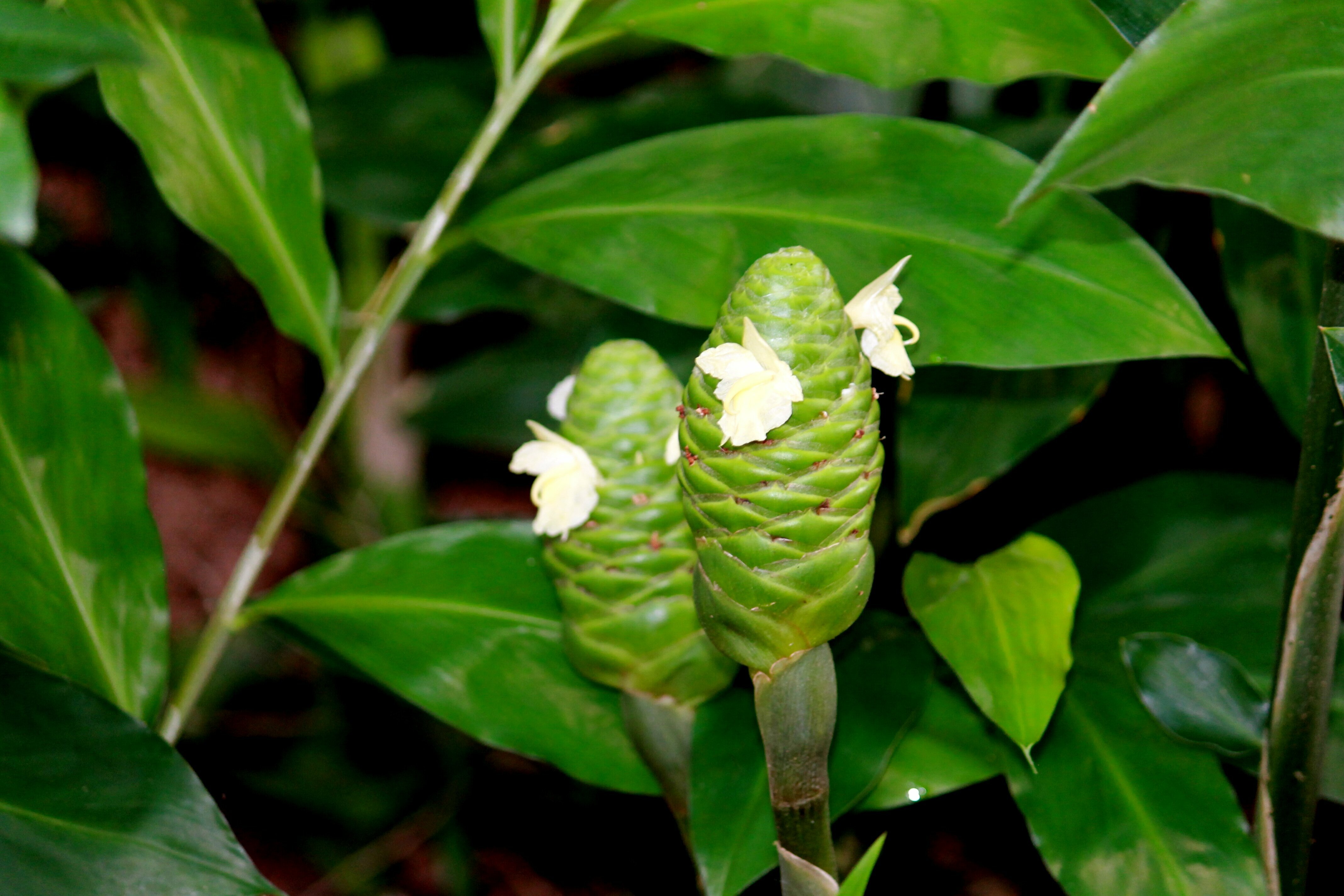 |
|||
| 478. Ziziphus cenopila Linn. Family: RHAMNACEAE Flowering & Fruiting: July-November. Ecology: Common in scrub forests & waste places. Description: Straggling shrubs. leaves distichous, obscurely serrate. Spines curved. Flowers yellowish-white, in villose prduncled forked cyme. Drupe green, reddish brown on ripening. IUCN Status: |
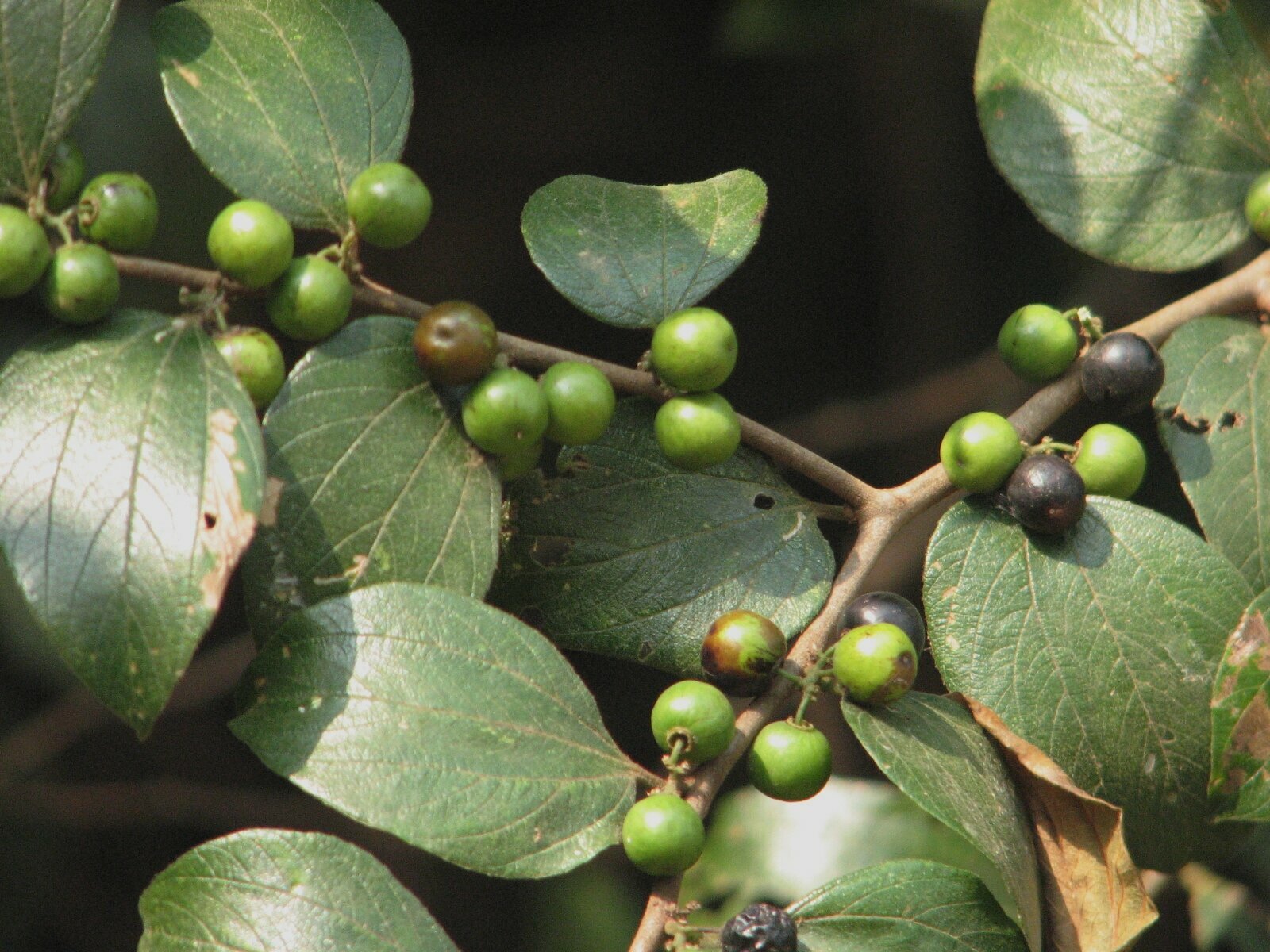 |
|||
| 479. Ziziphus mauritiana Lam. Family: RHAMNACEAE Local name: Barkoli Flowering & Fruiting: November-December. Description: Ziziphus mauritiana is a spiny, evergreen shrub or small tree up to 15 m high, with trunk 40 cm or more in diameter; spreading crown; stipular spines and many drooping branches. It is a fast-growing tree with a medium lifespan, that can quickly reach up to 10–40 ft (3 to 12 m) tall. Medicinal Uses: Leaves/stem bark extract is mixed with turmeric powder and applied on measals, chicken pox. It is also taken with molasses (Gud) orally for the same. IUCN Status: |
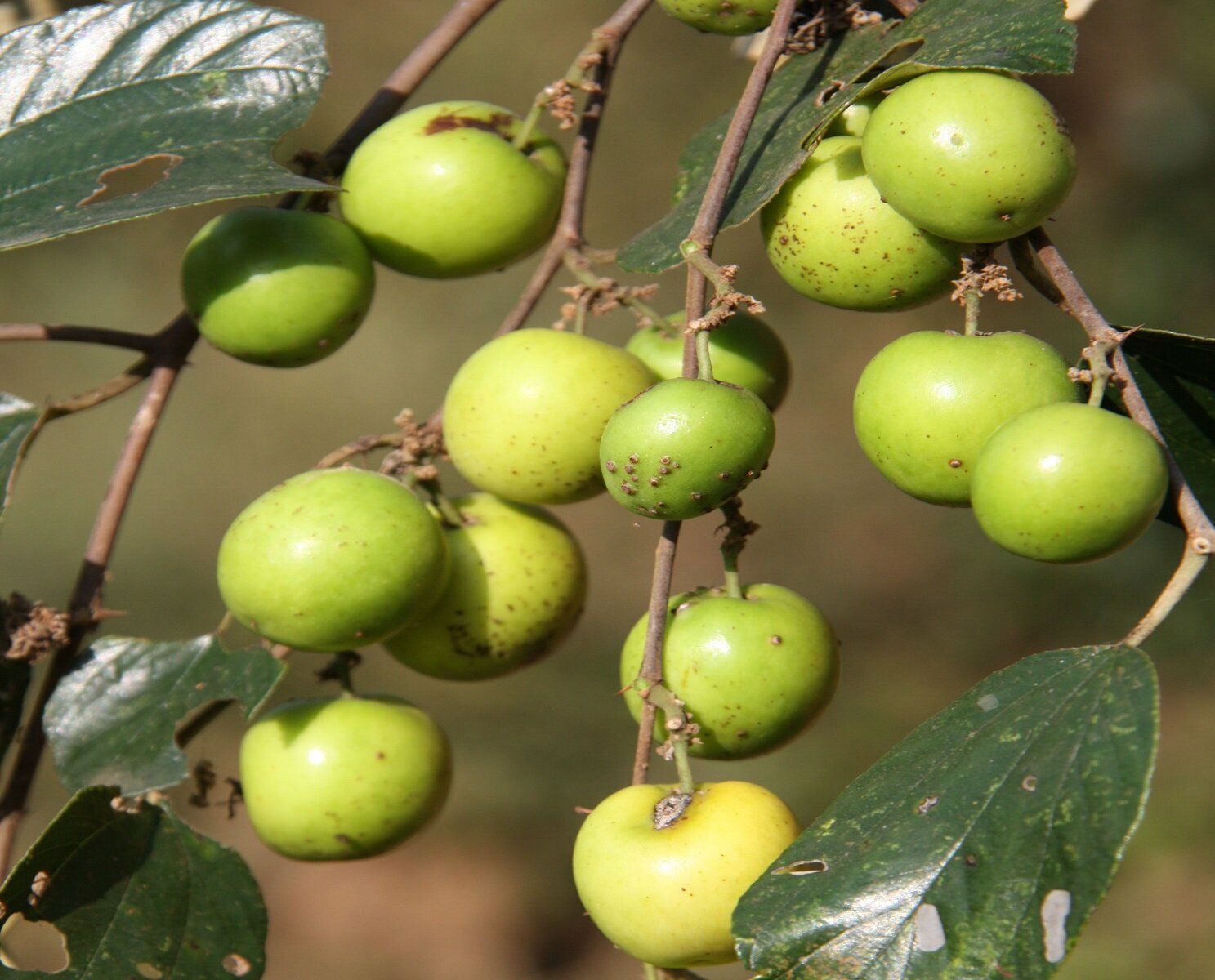 |
|||
| 480. Zornia gibbosa Span. Family: FABACEAE Flowering & Fruiting: August-October & October-January. Ecology: Common in waste places & dry fallow lands. Description: Diffuse, wiry herbs. Leaves digitately 2-foliolate; leaflets lanceolate, acute, gland-dotted beneath; stipules peltate. Flowers yellow, enclosed by a pair of basal, foliaceous gland dotted bracts, in axillary raceme. Calyx 2-lipped, upper 2- and lower 3 lobed. Stamens monadelphous. Pod almost of 3-4 seeded joints, prickles on the pod scabrid. Medicinal Uses: The plant is antiinflammatory and astringent. It is used in the treatment of inflammations and dysentery. The roots are used as a soporific given to children. An alcohol extract of the aerial parts of the plant have been shown to have an effective antiinflammatory activity. IUCN Status: |
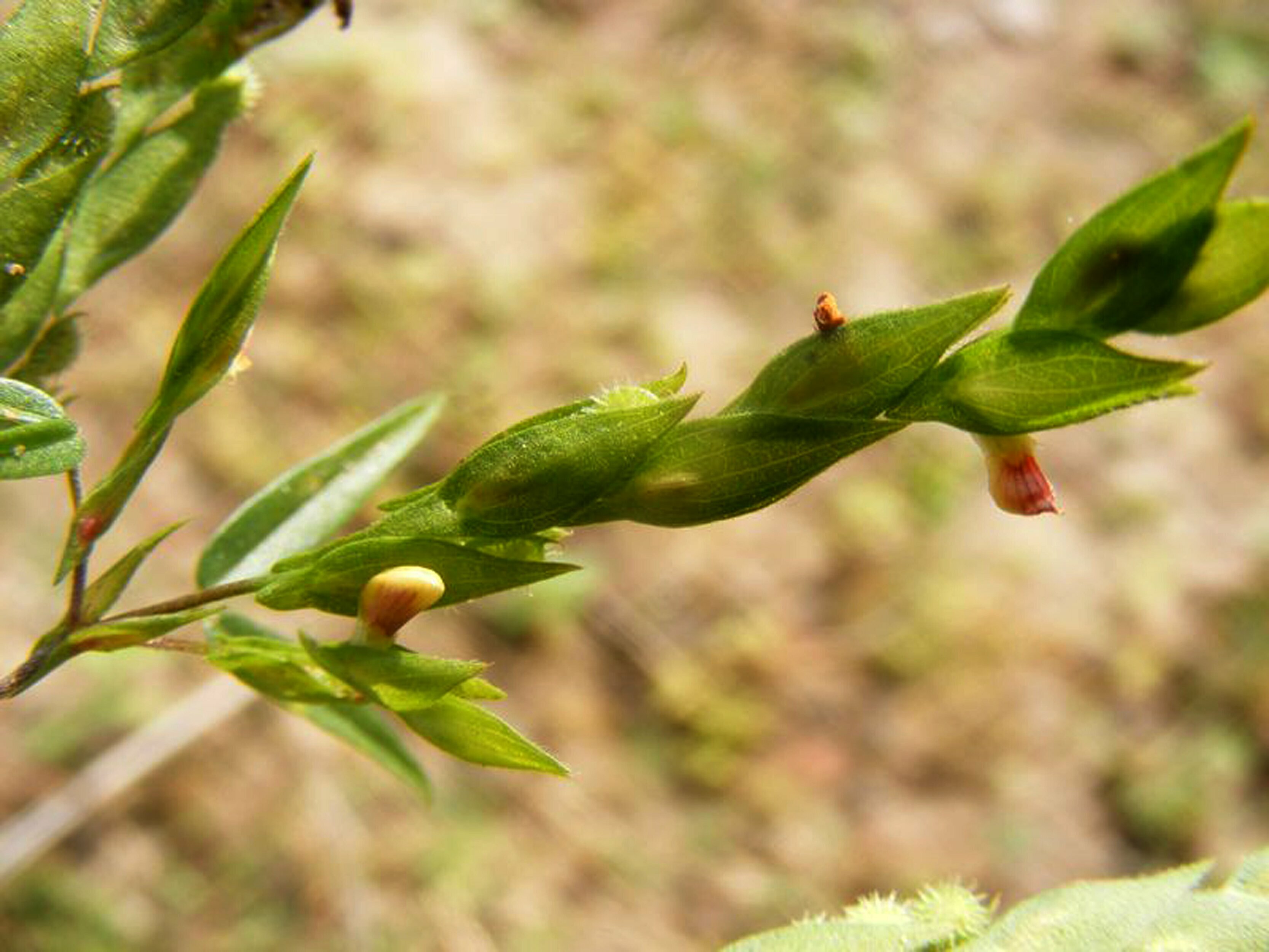 |
|||
| 481. Zizyphus xylopyrus Retz. Family: RHAMNACEAE Flowering & Fruiting: April-June & July-September. Ecology: Common near rocky ravines in damp forests. Description: Leaves elliptic or sub-orbicular, serrate, base oblique, obtuse. Fruits greenish. Drupe globose, hard. Medicinal Uses: This plant is widely used in Turkish folk medicines as a potent sedative. The root bark of this plant is reported to have antinociceptive, anti-convulsant and anti-inflammatory activity. Apart from that the leaf of this plant has been reported to have antidepressant and antioxidant activities. IUCN Status: |
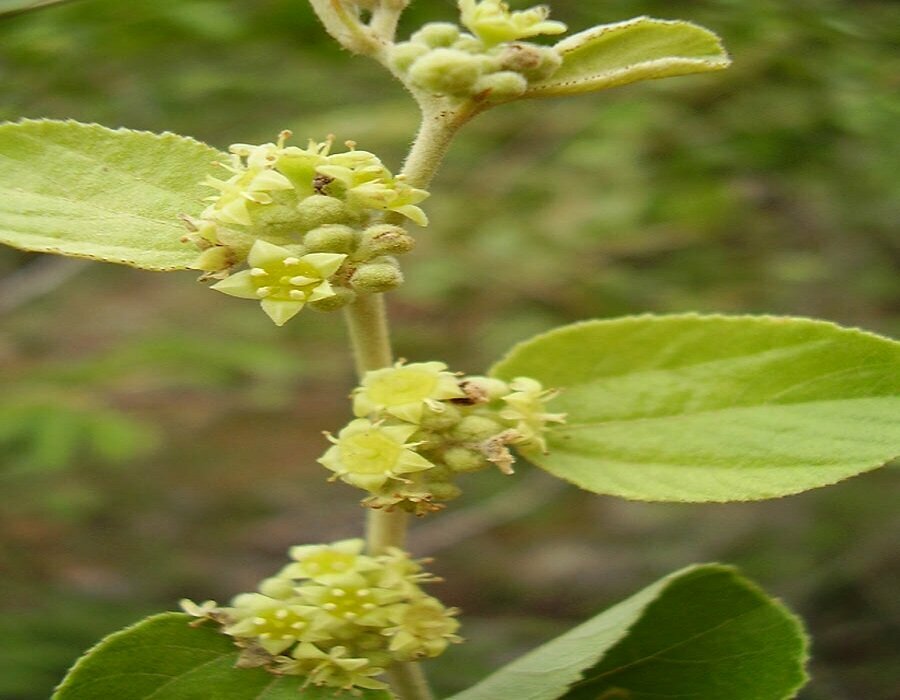 |
|||
